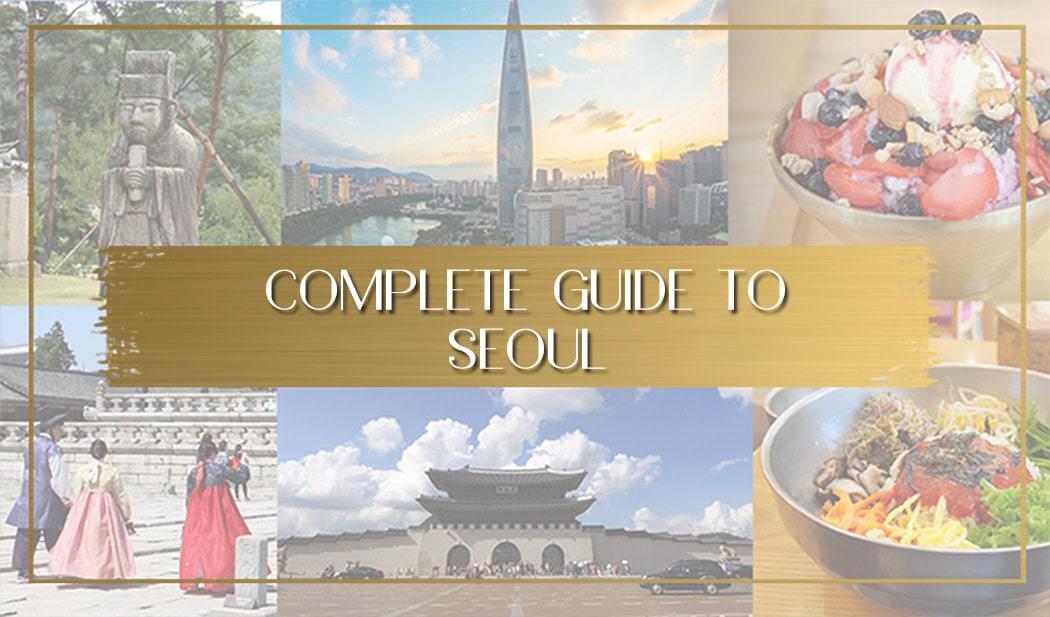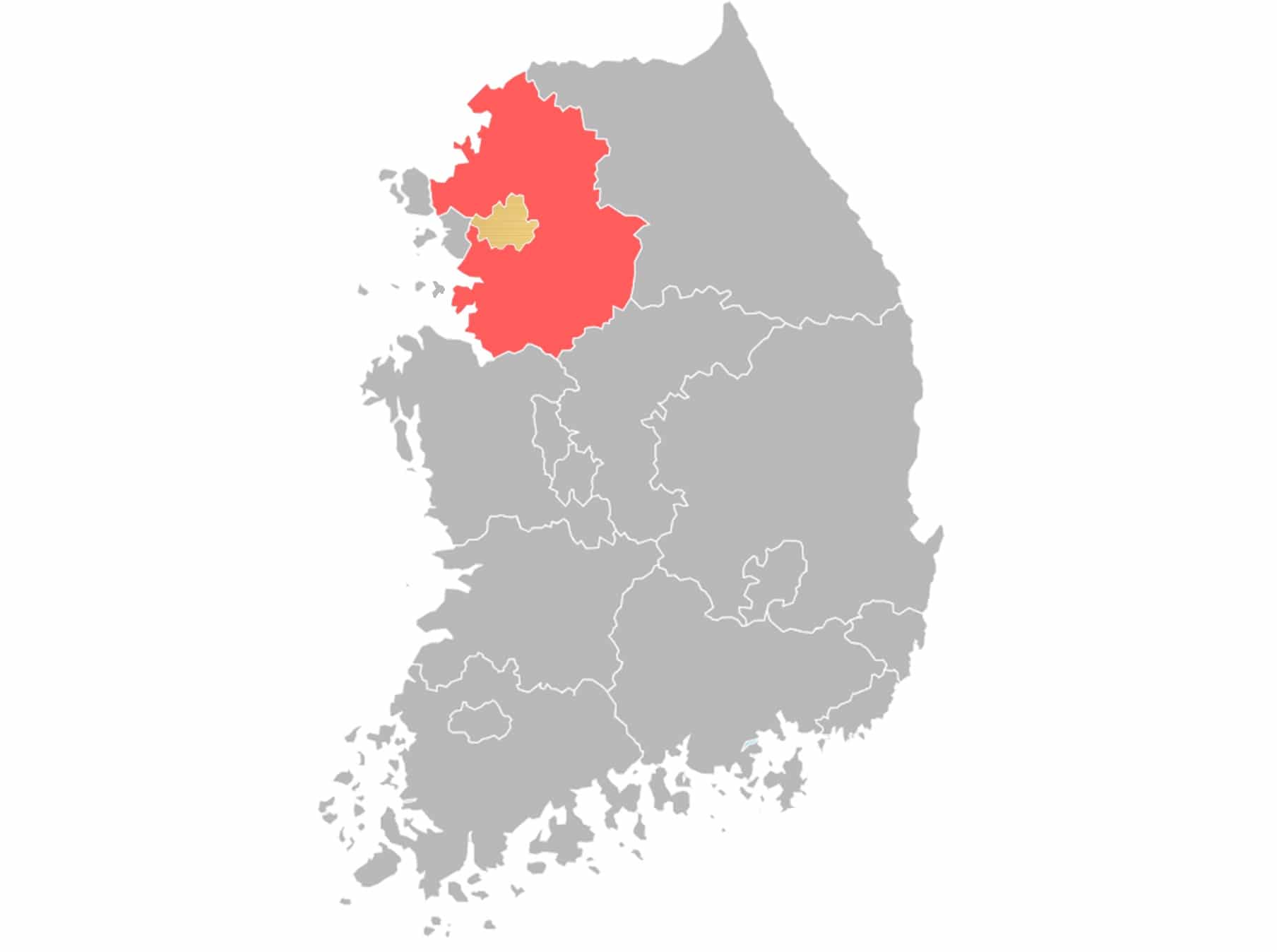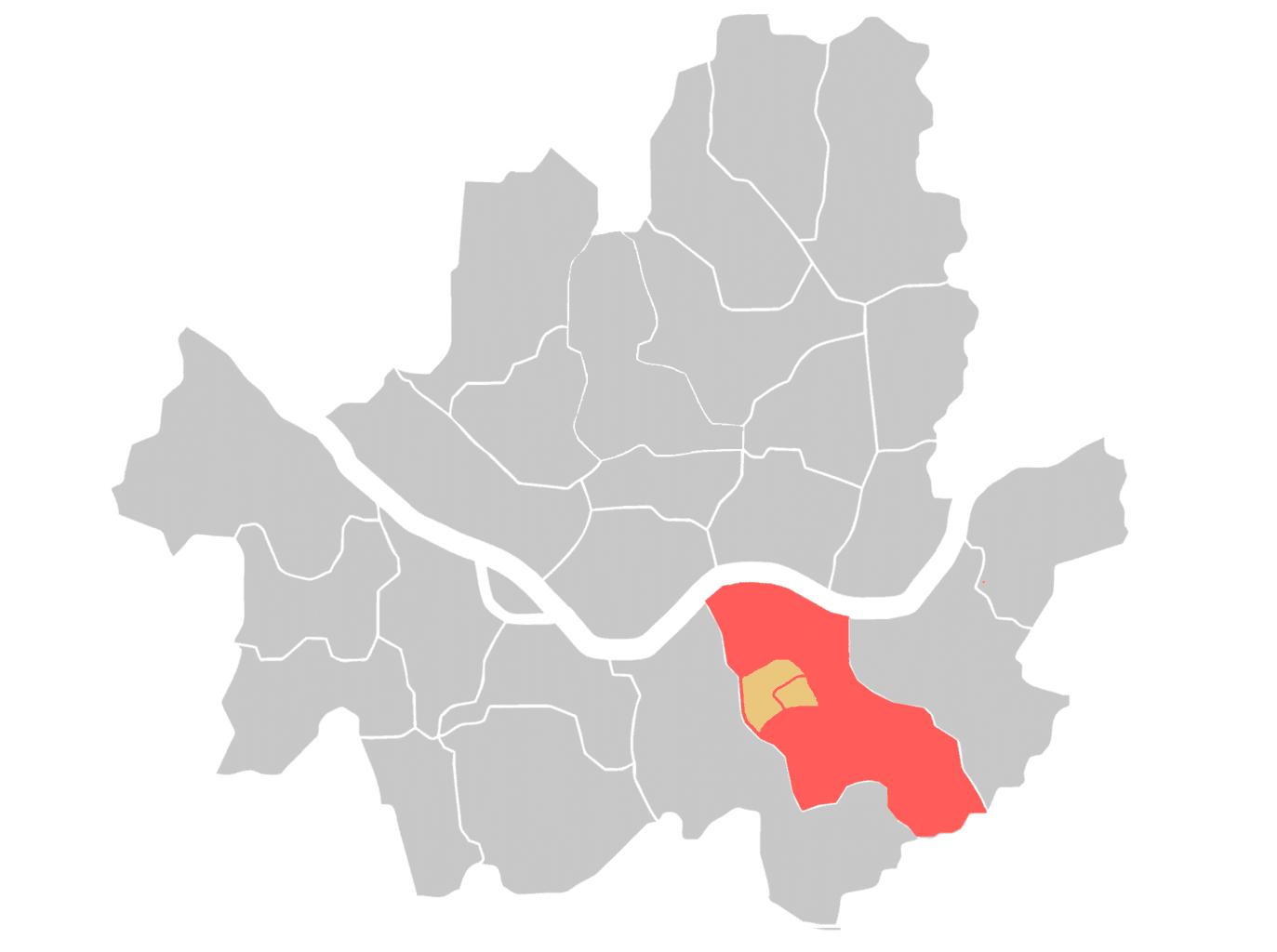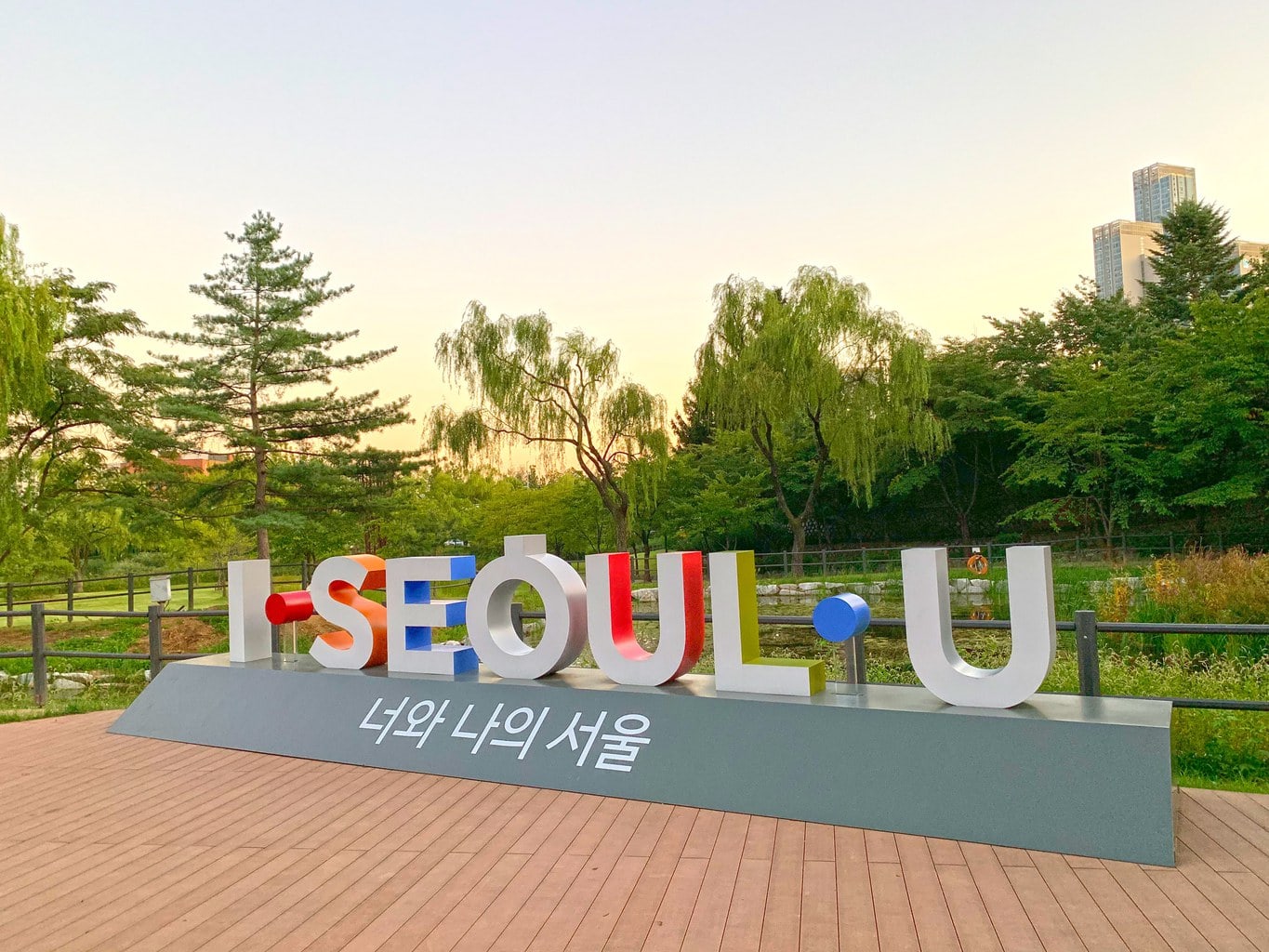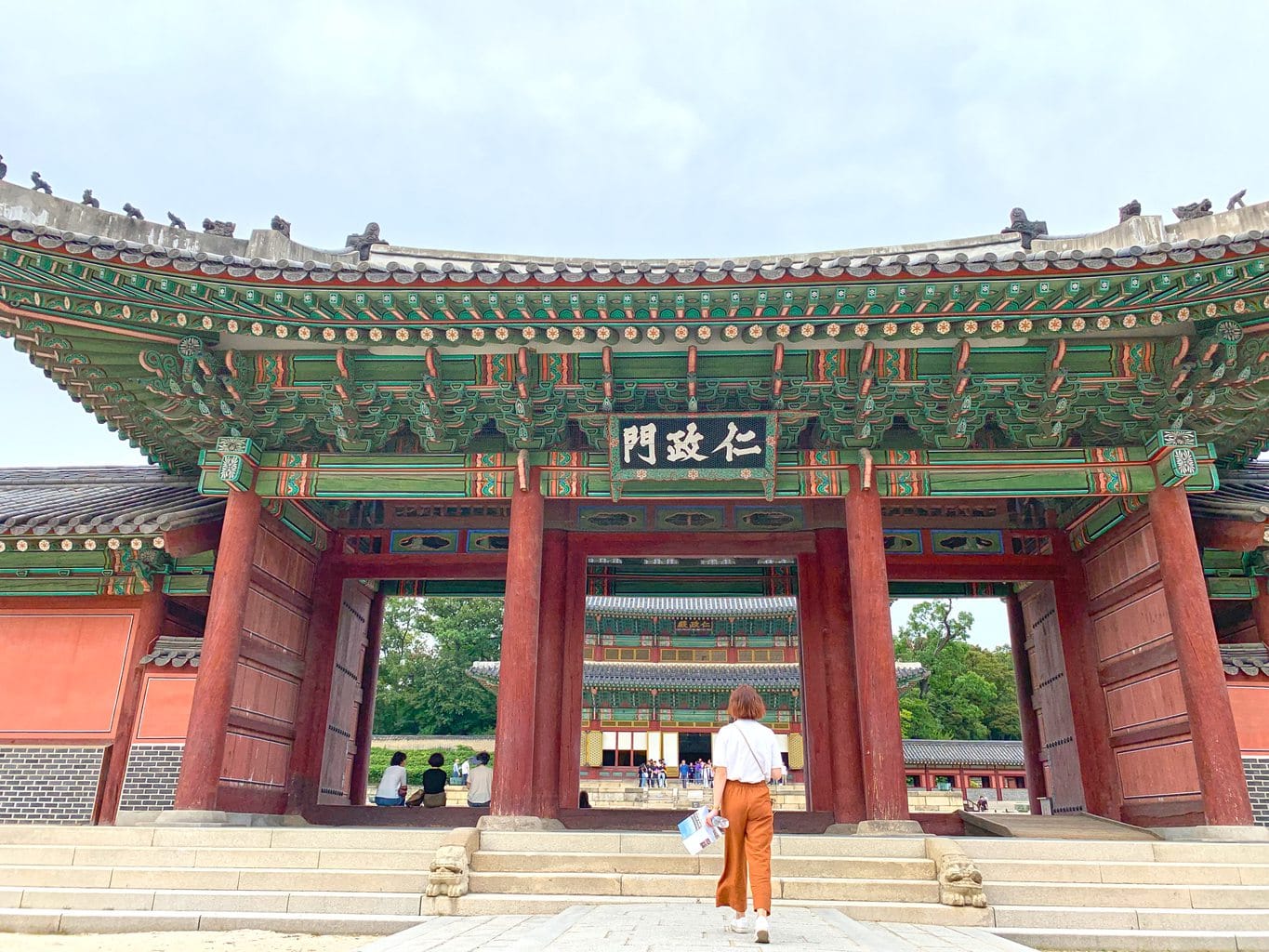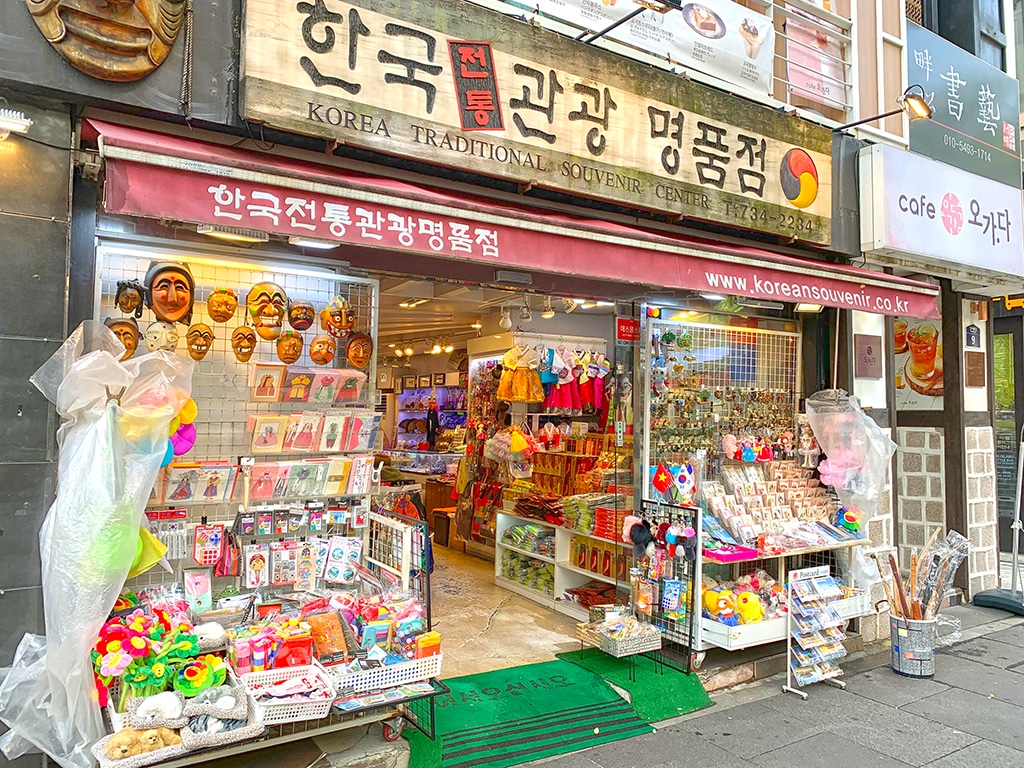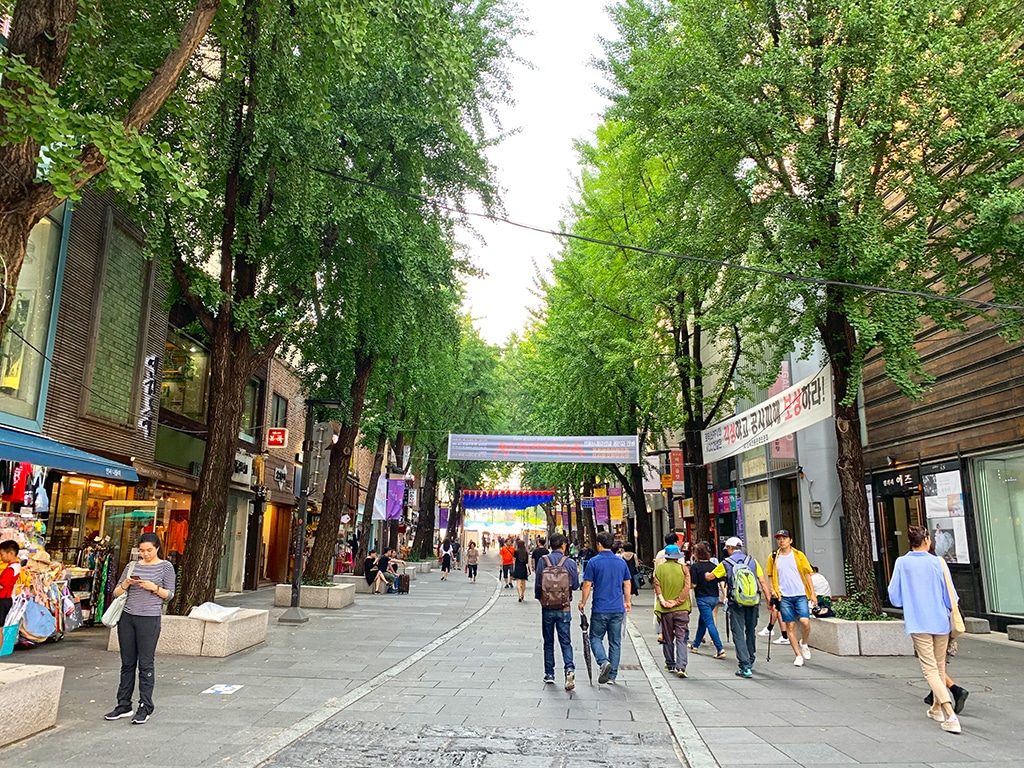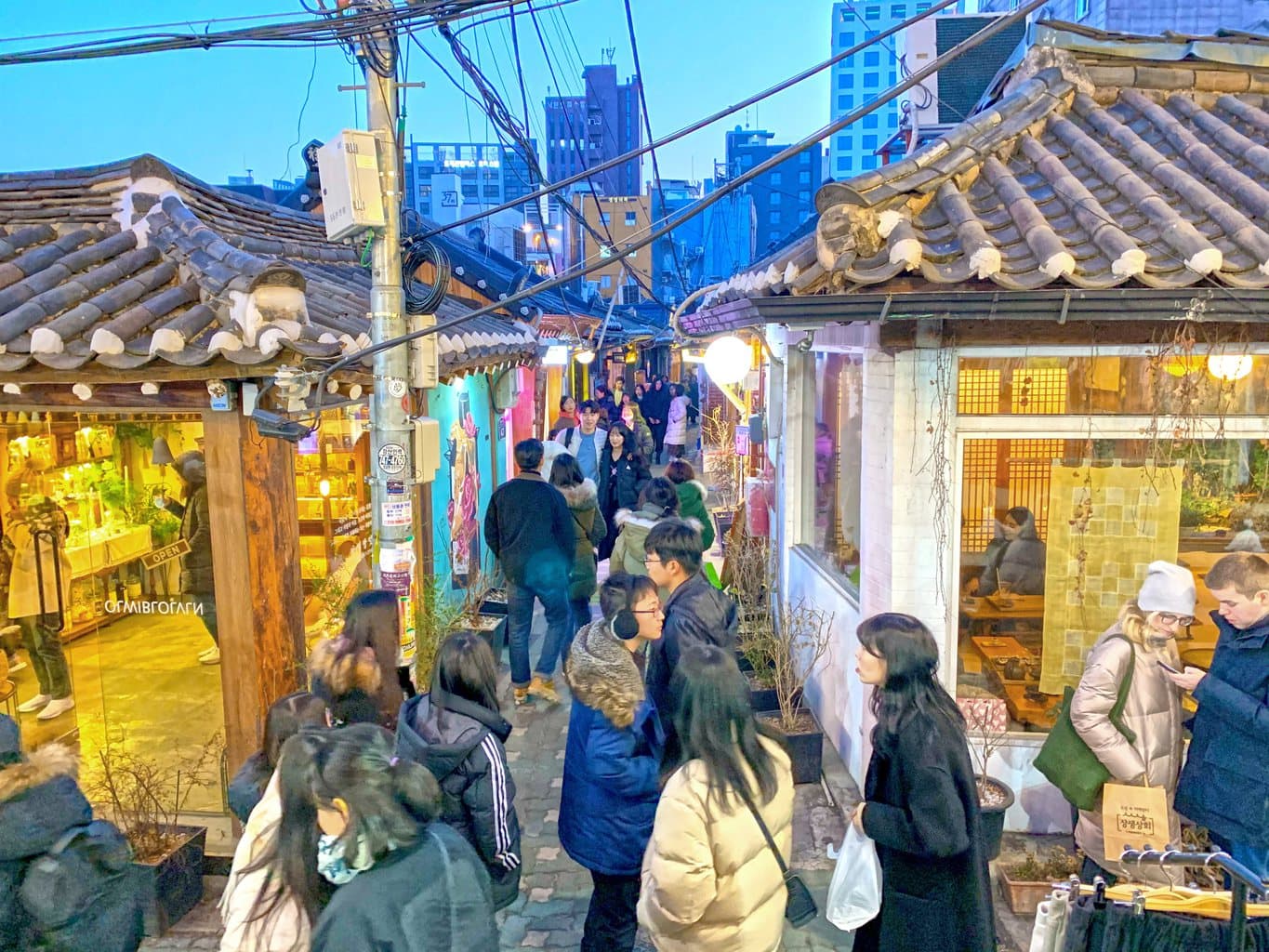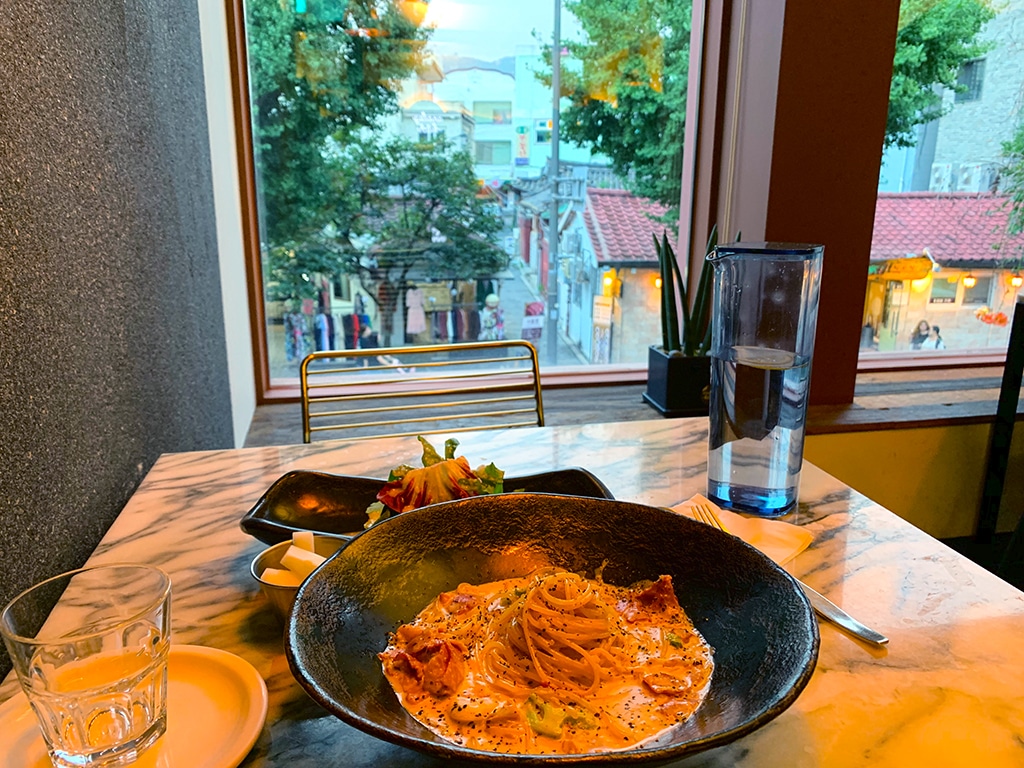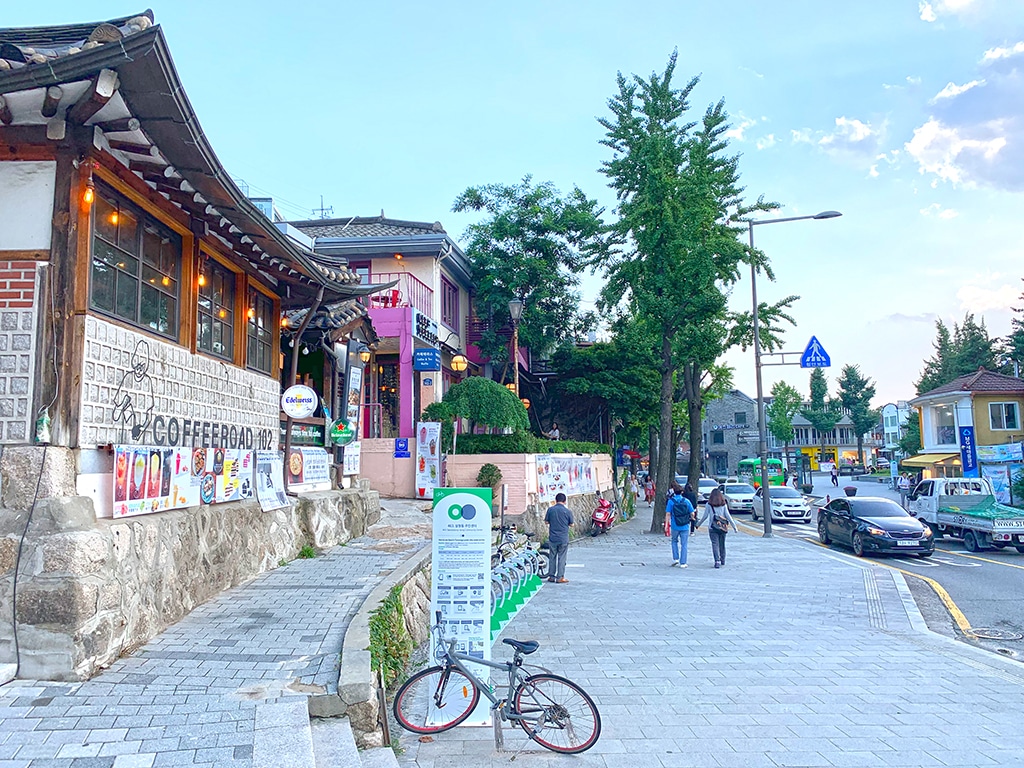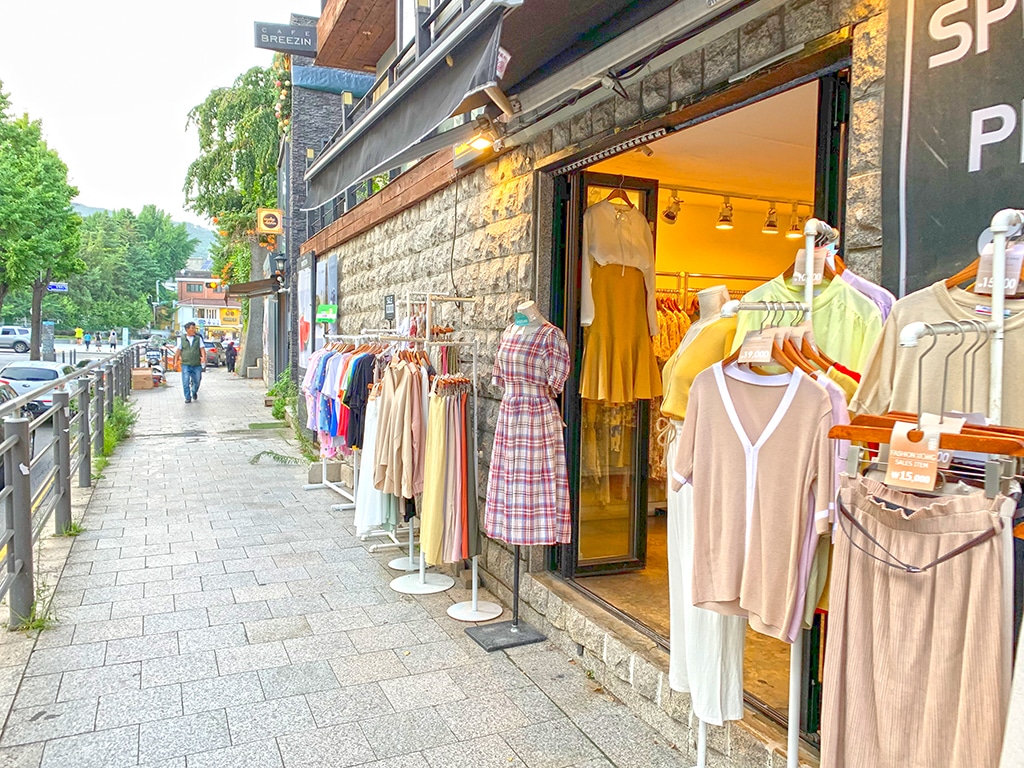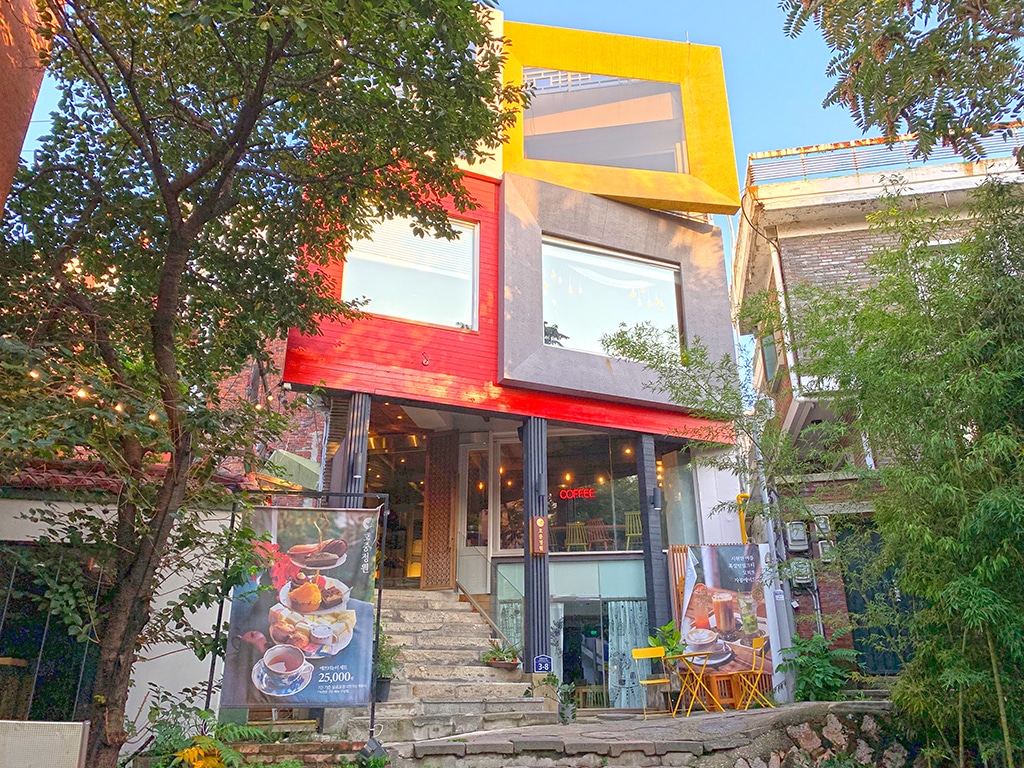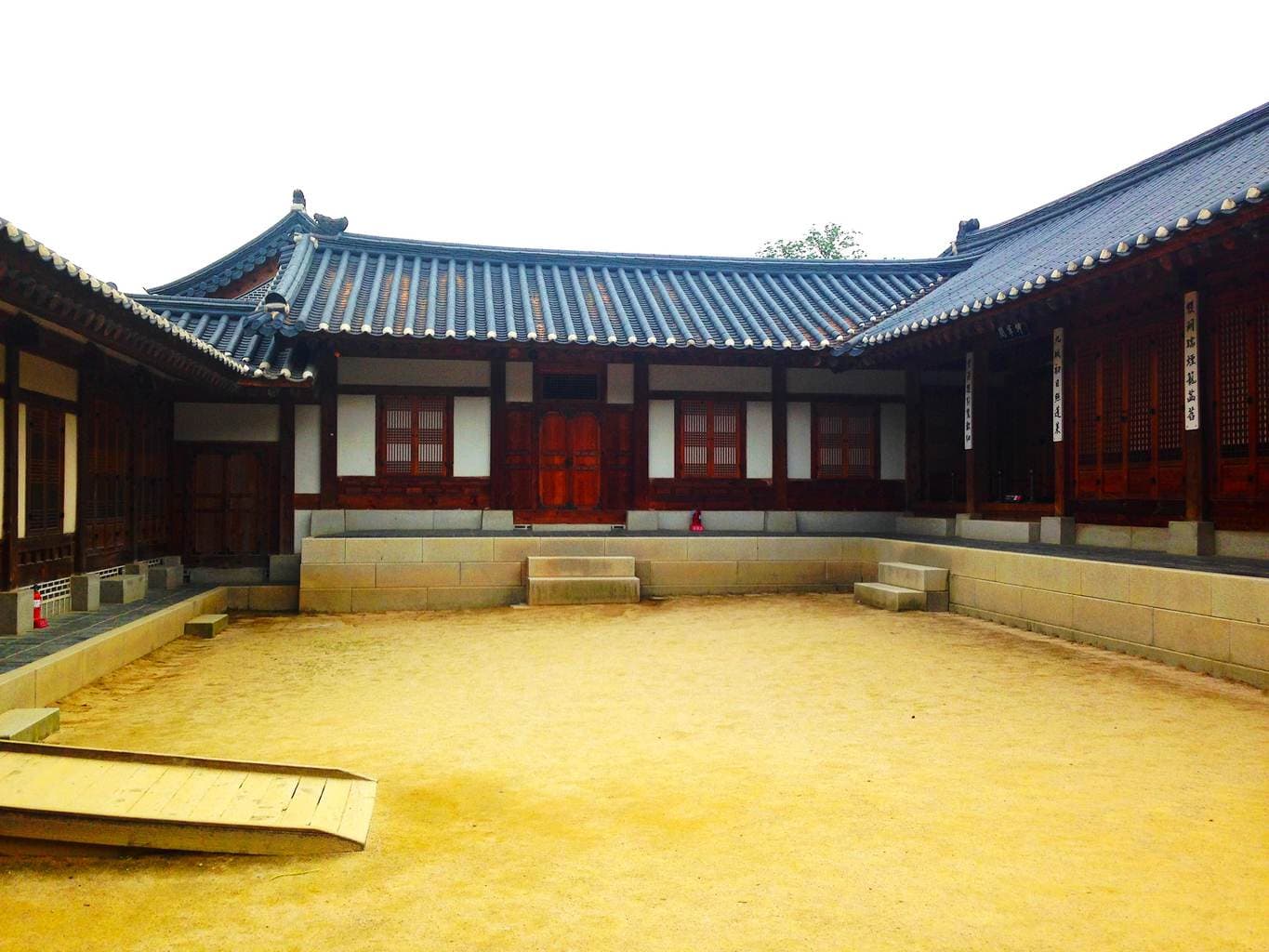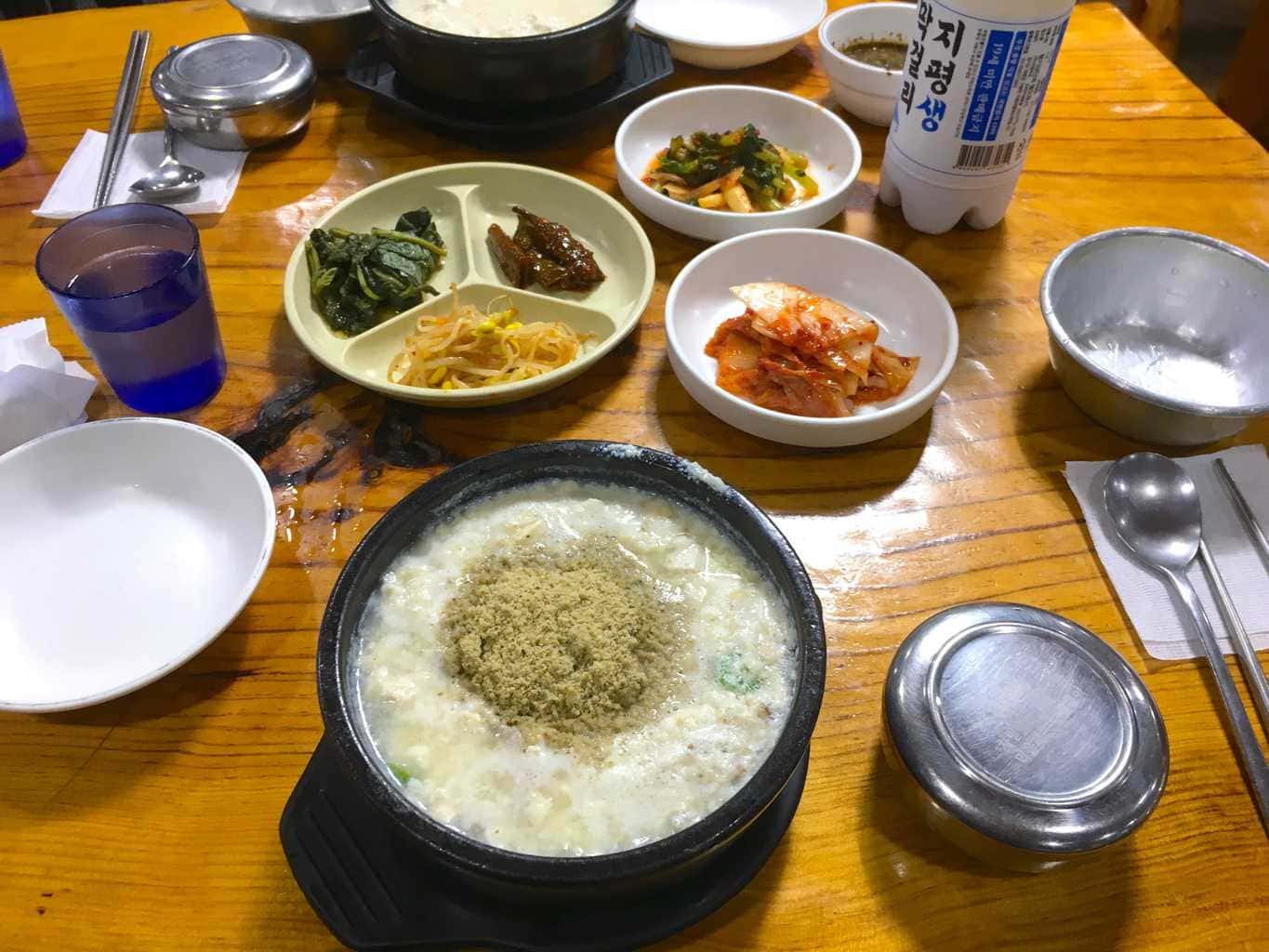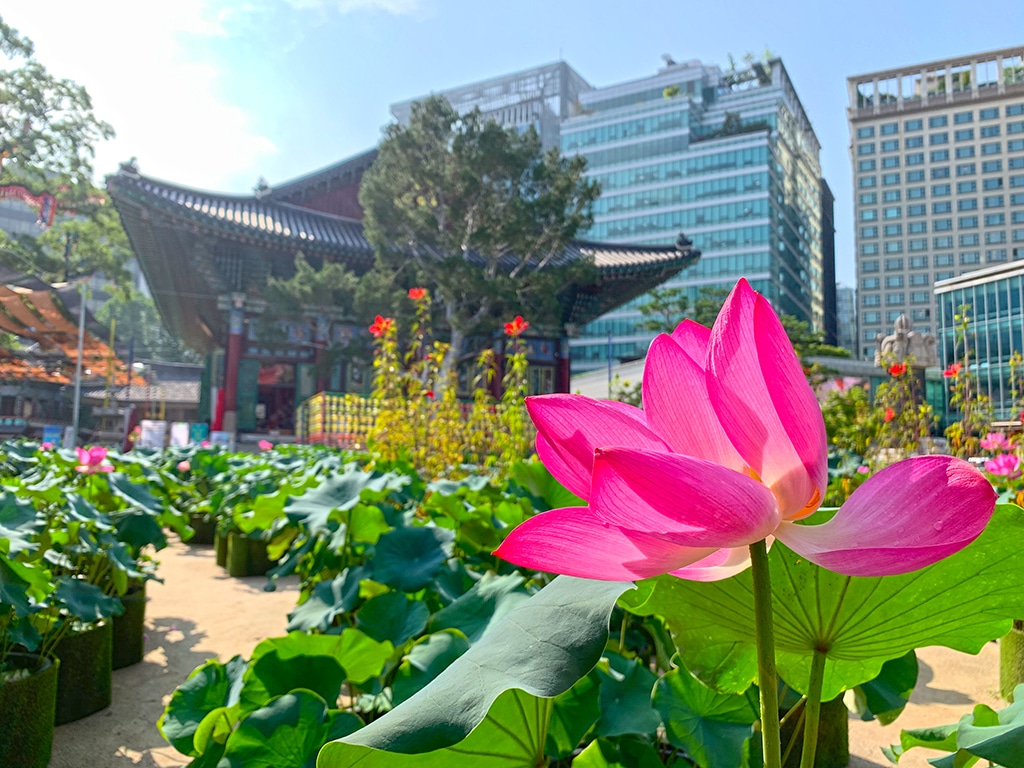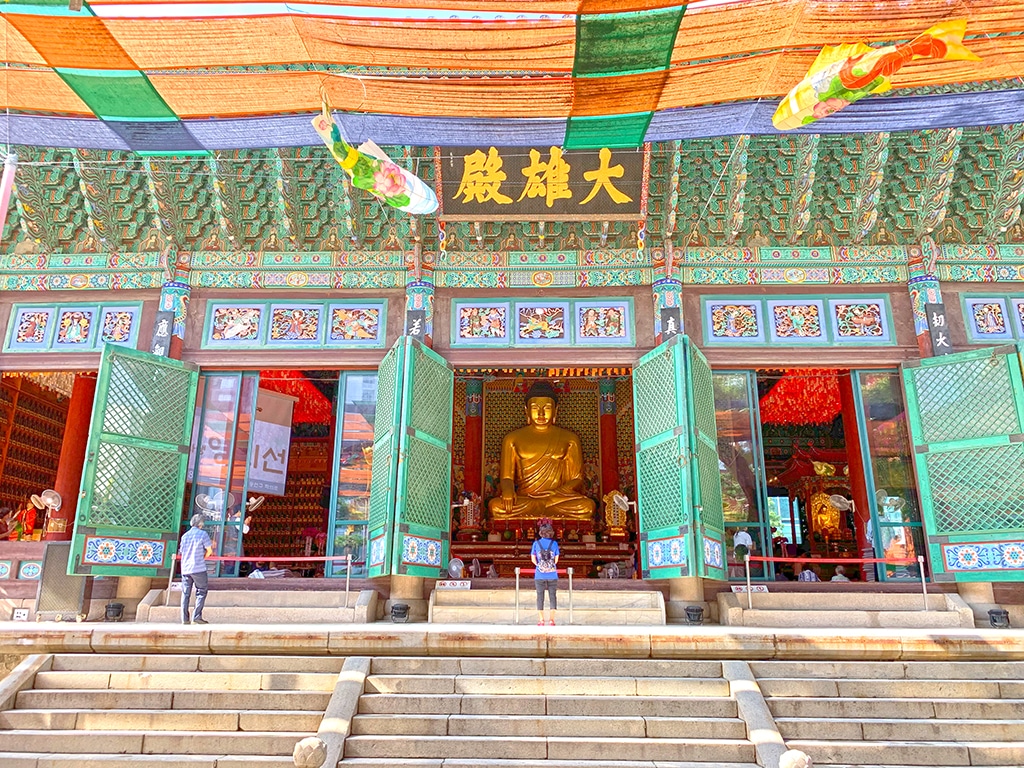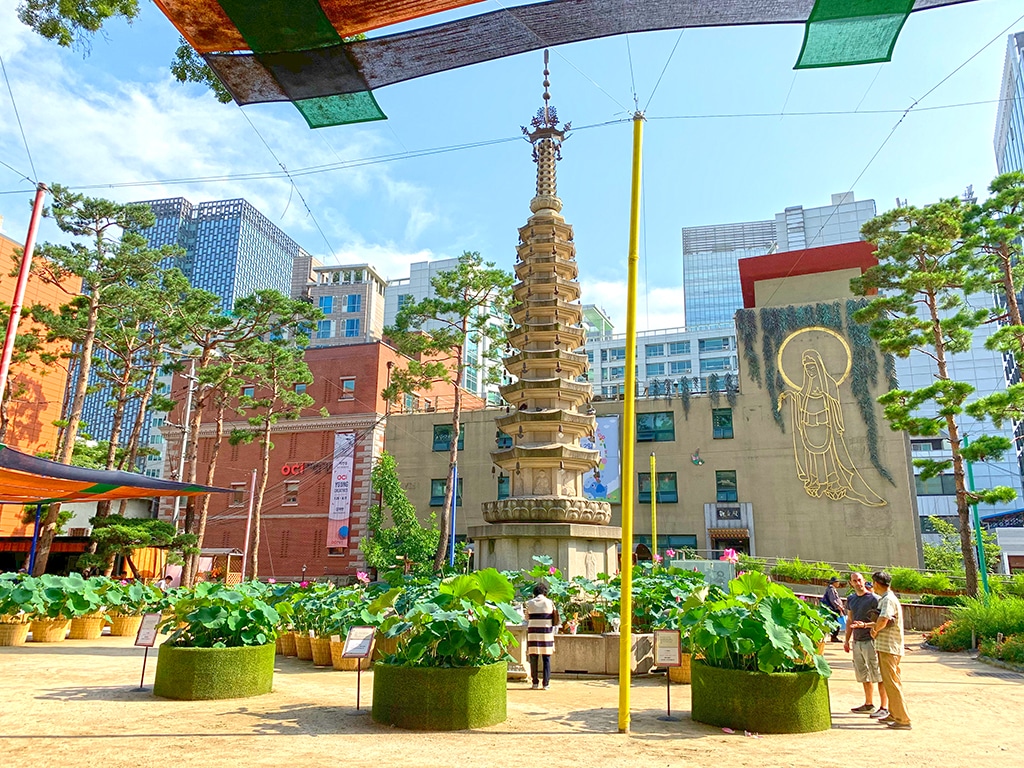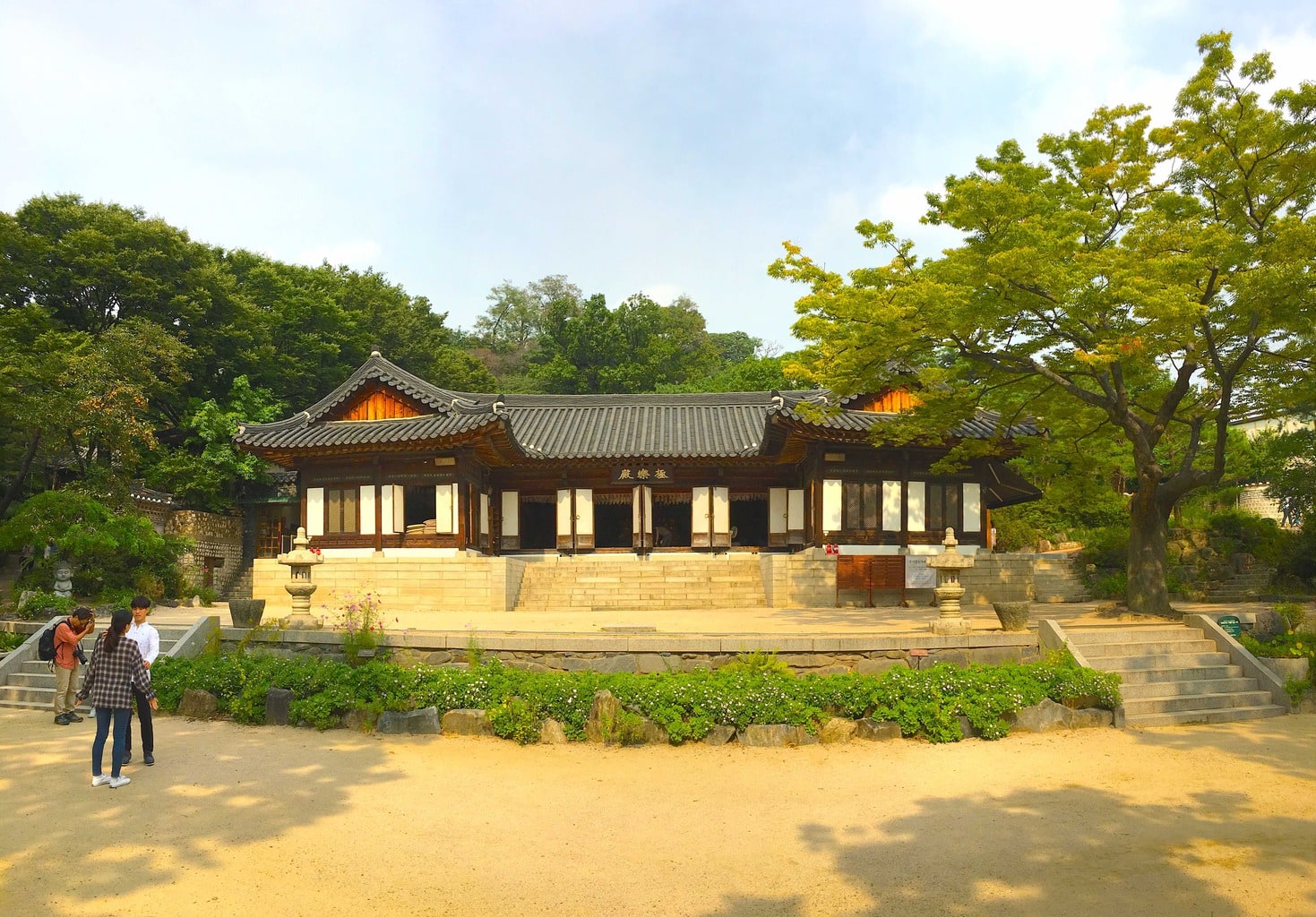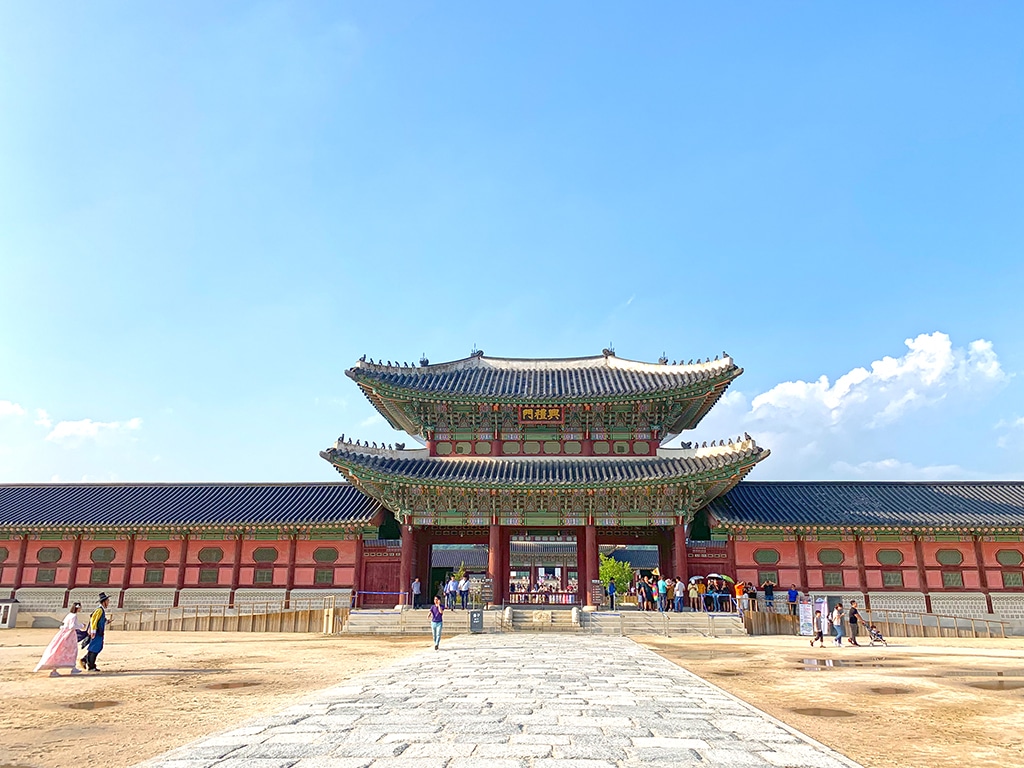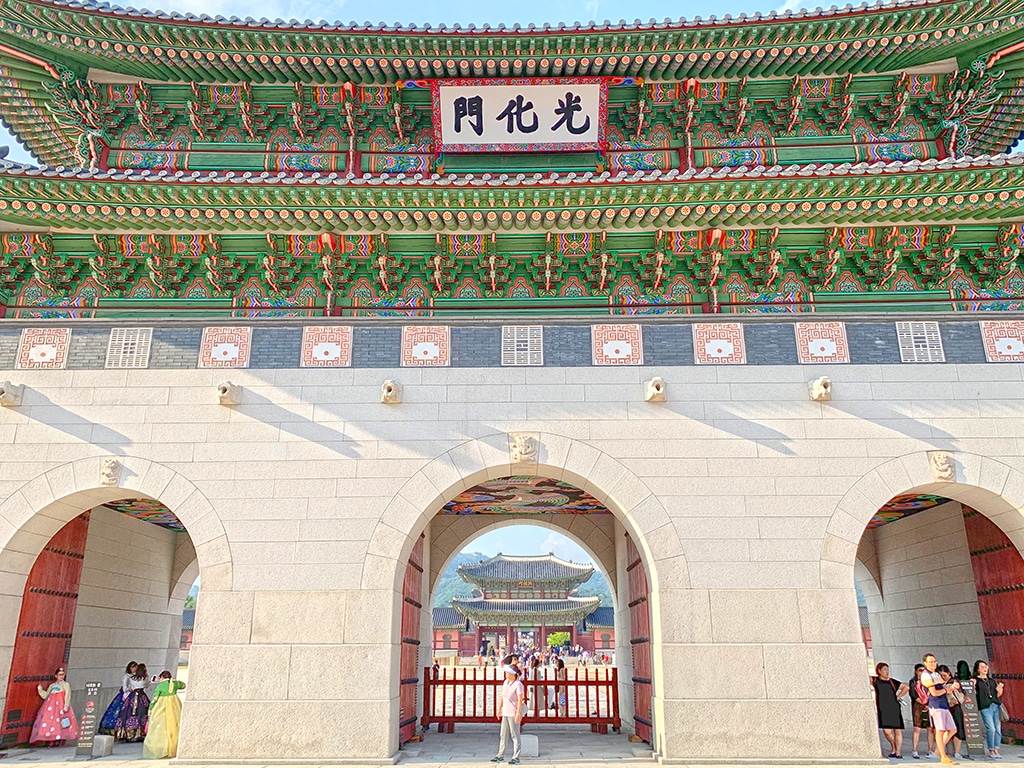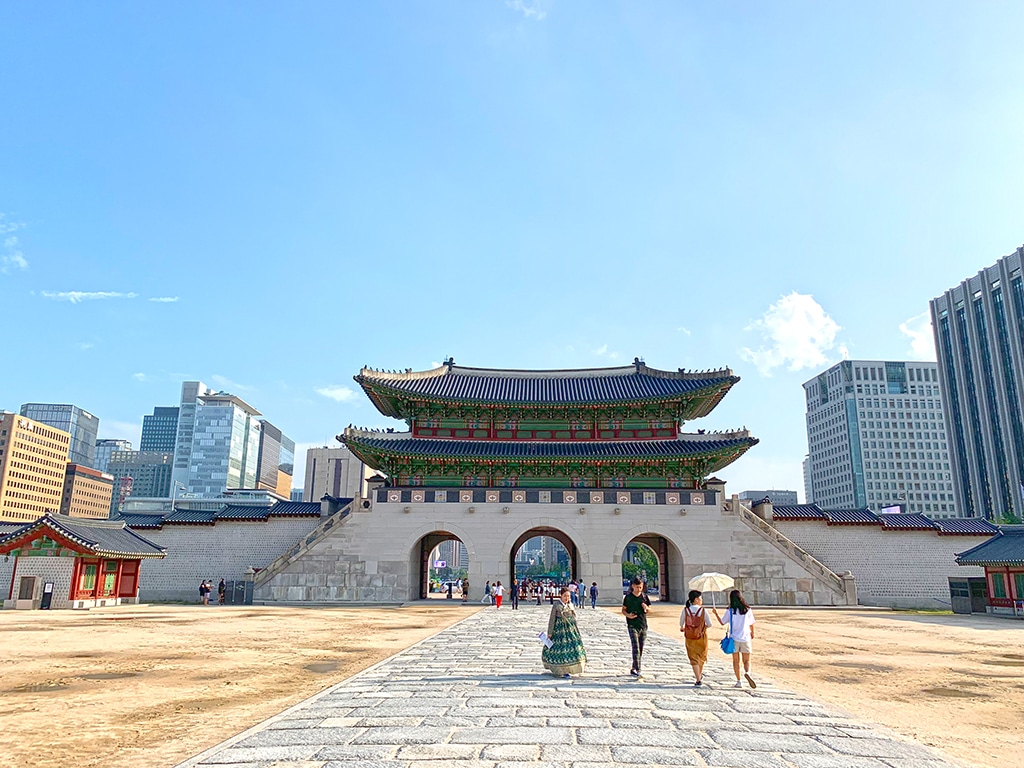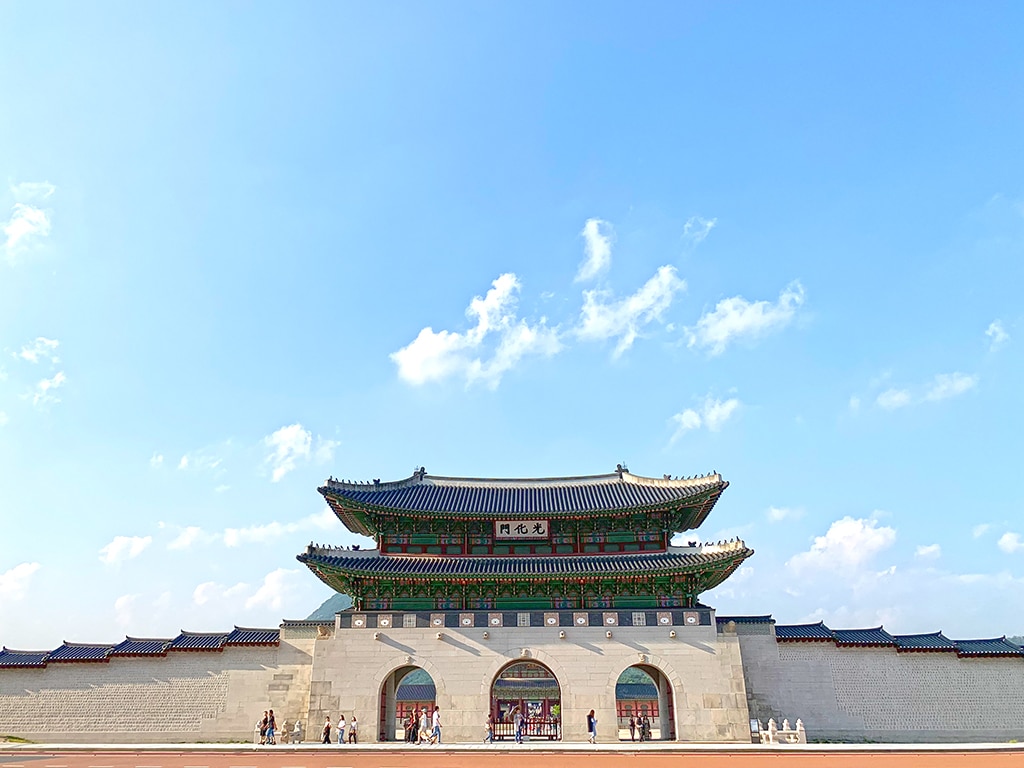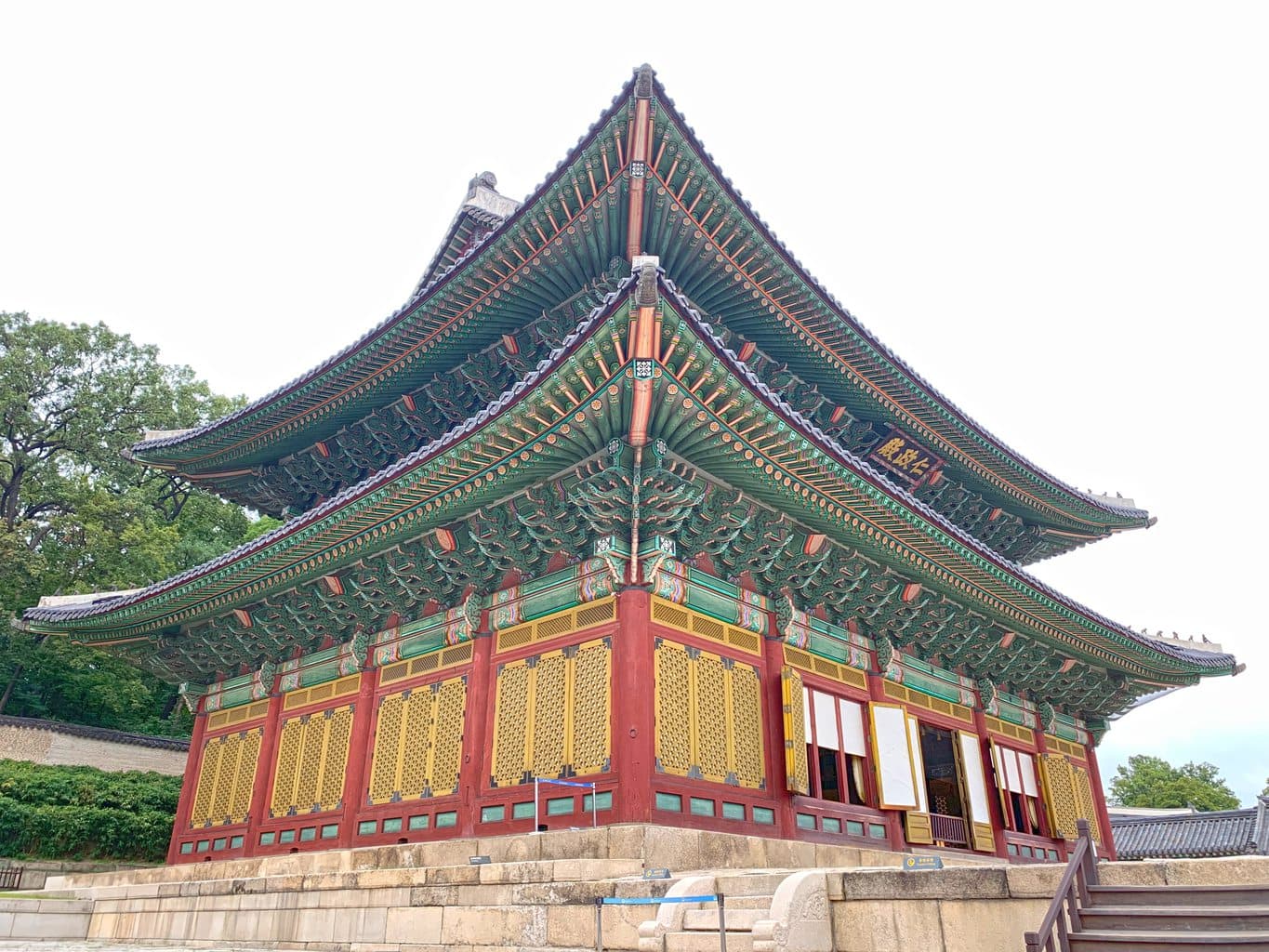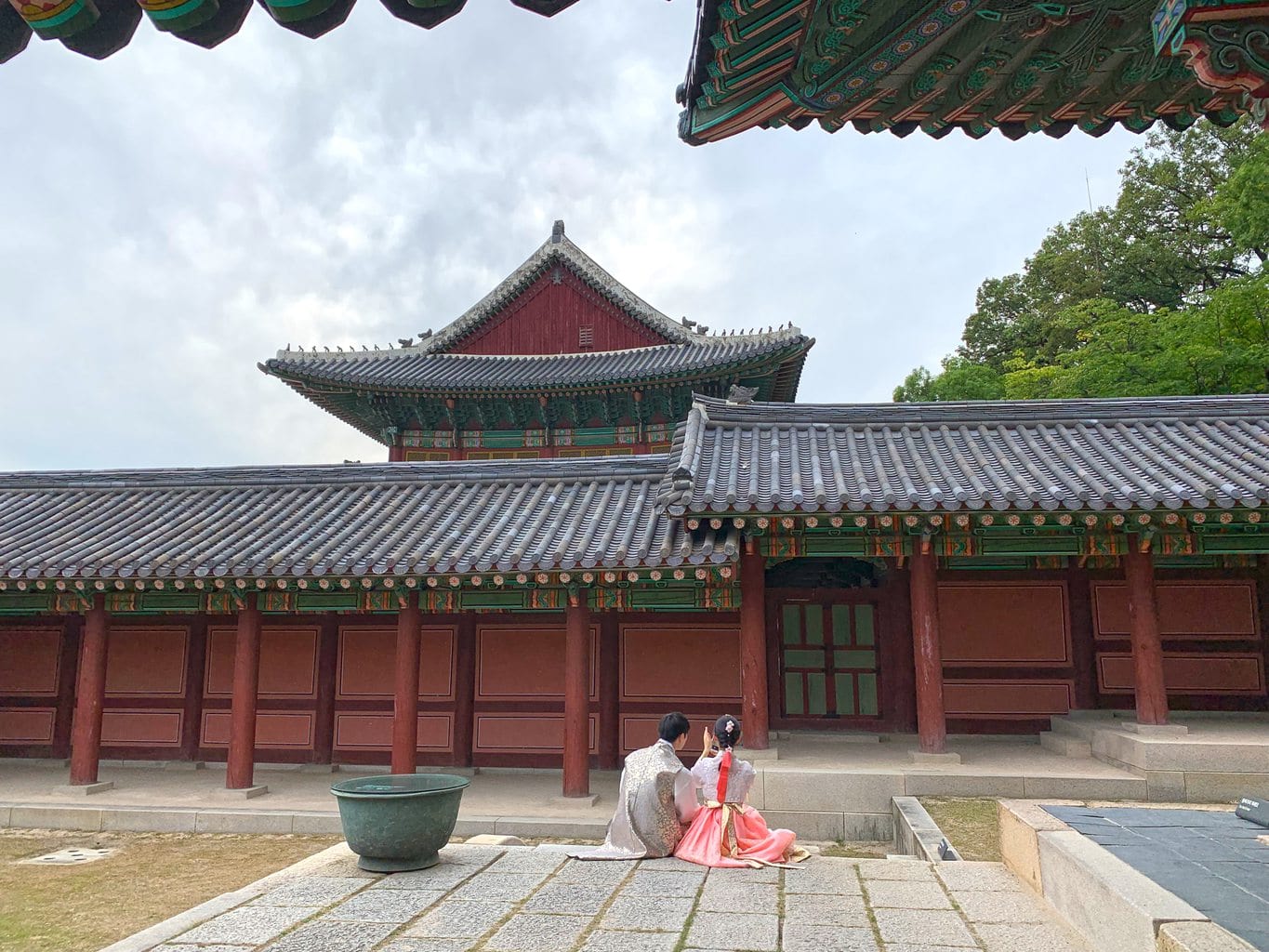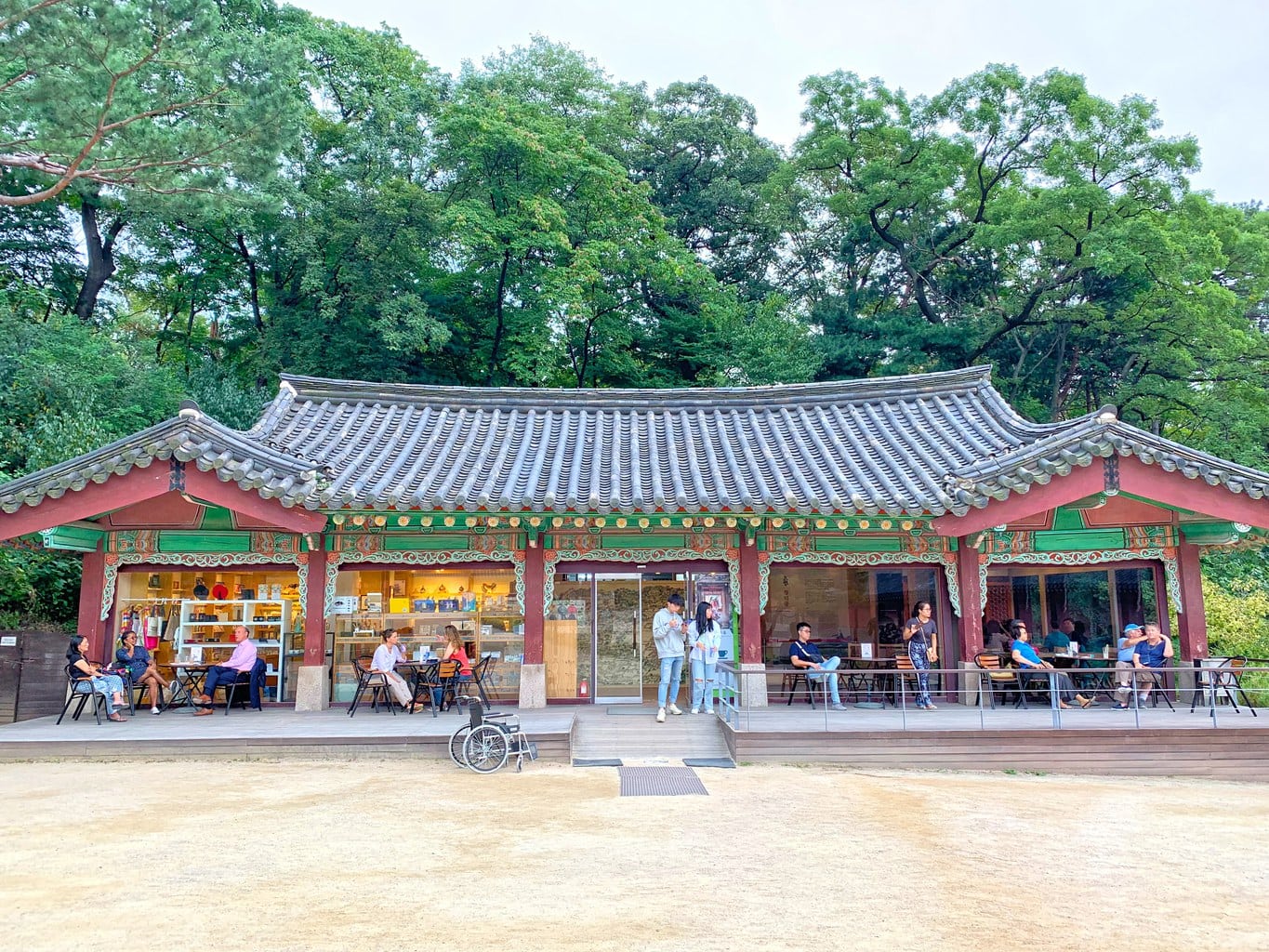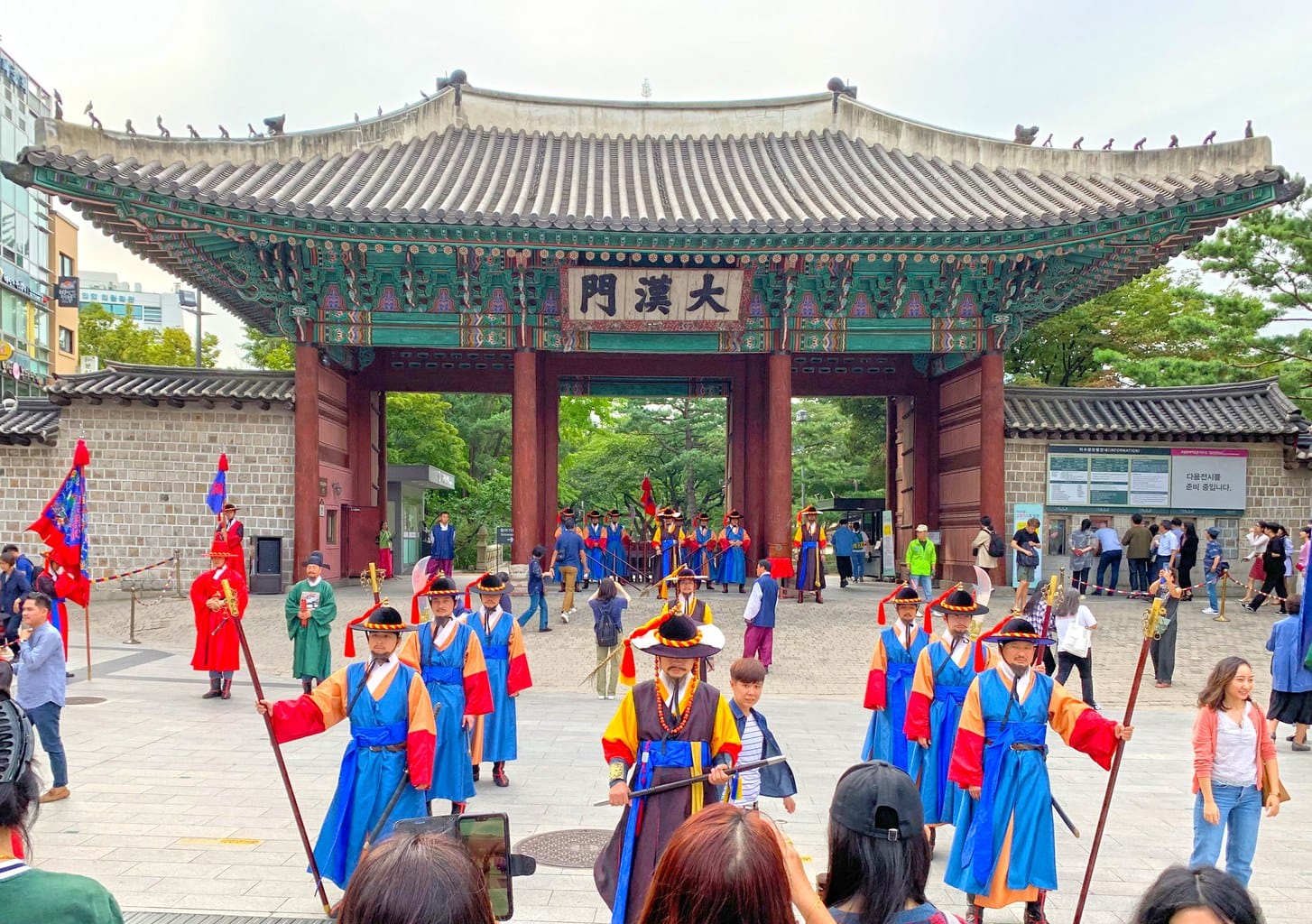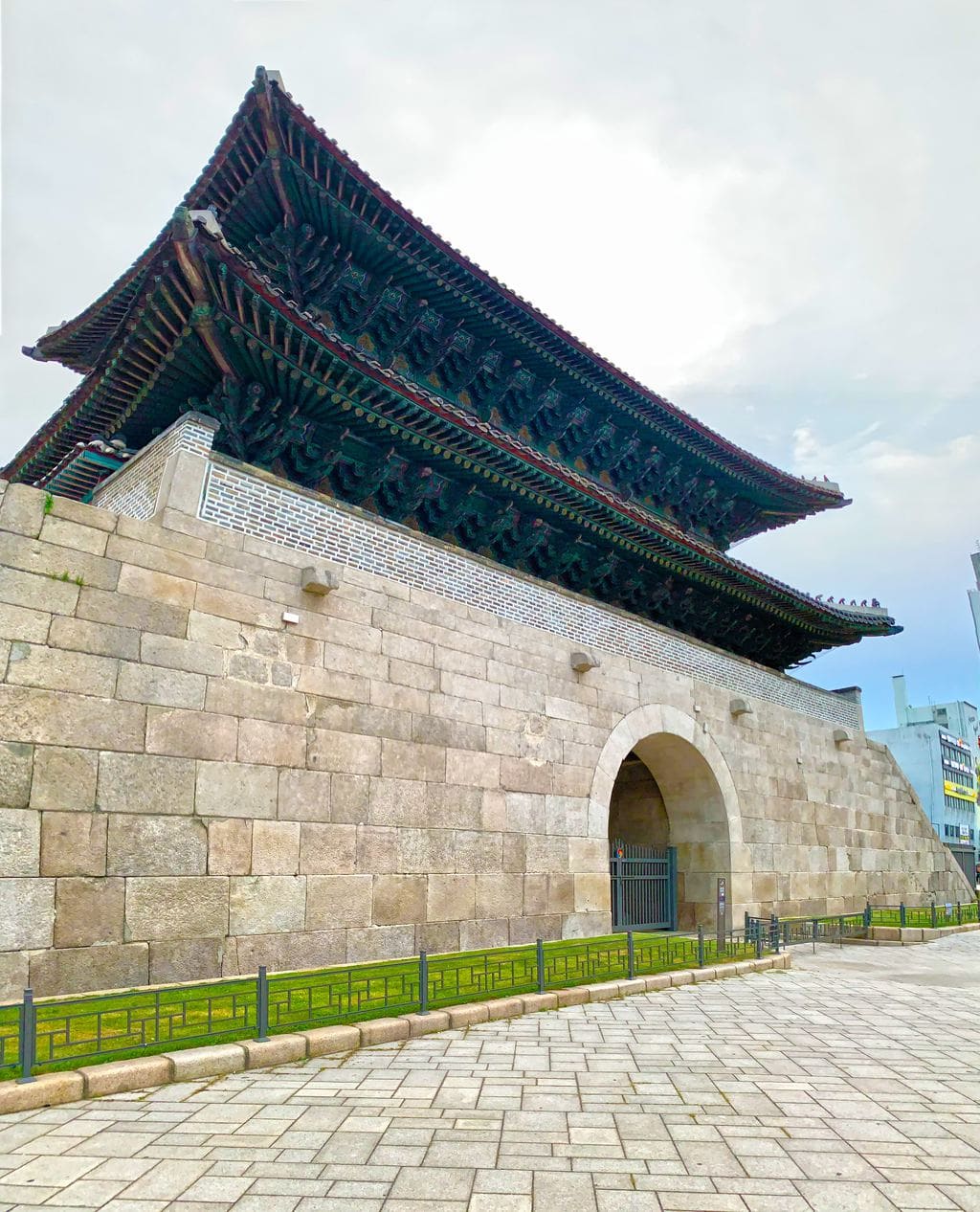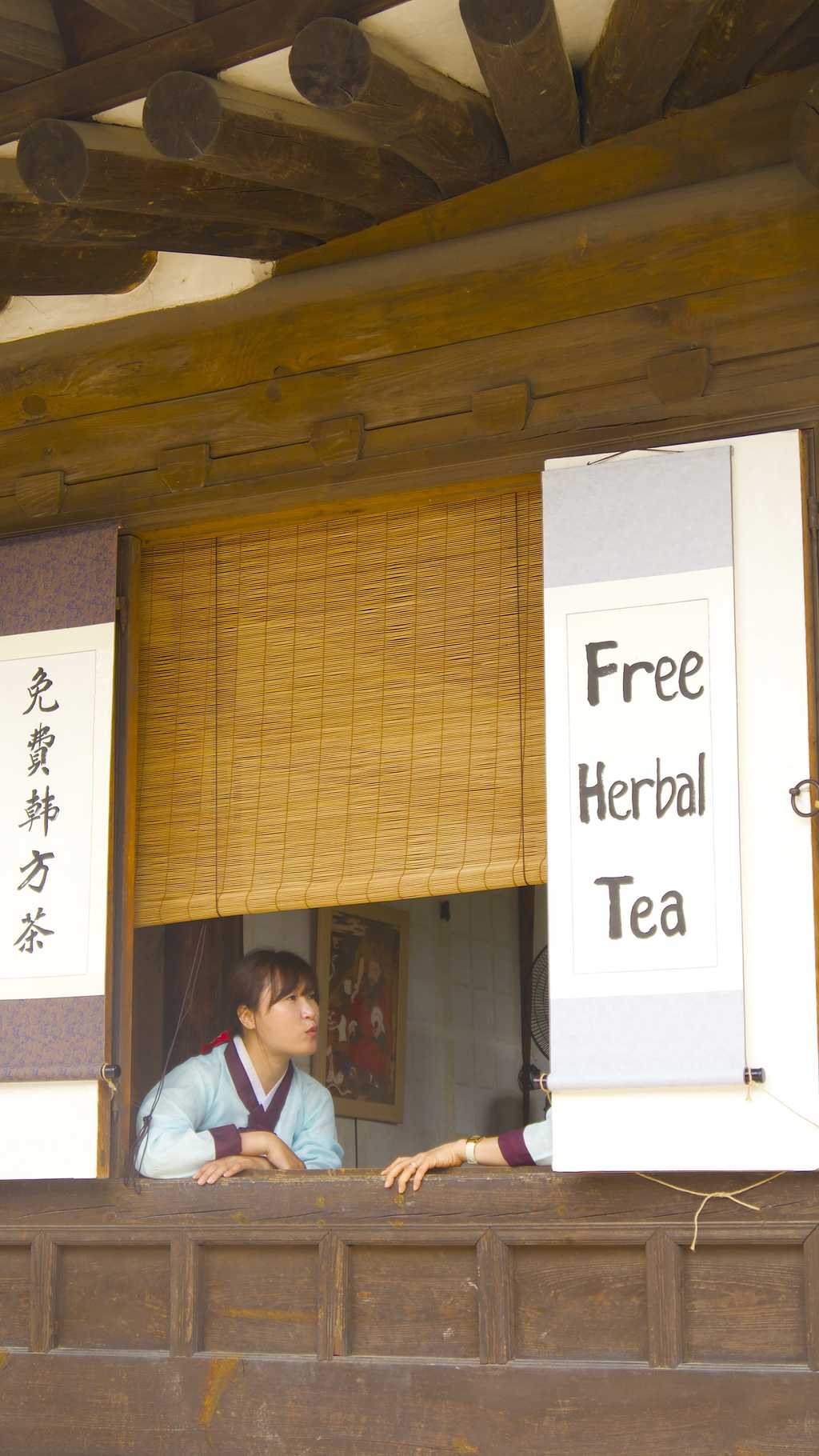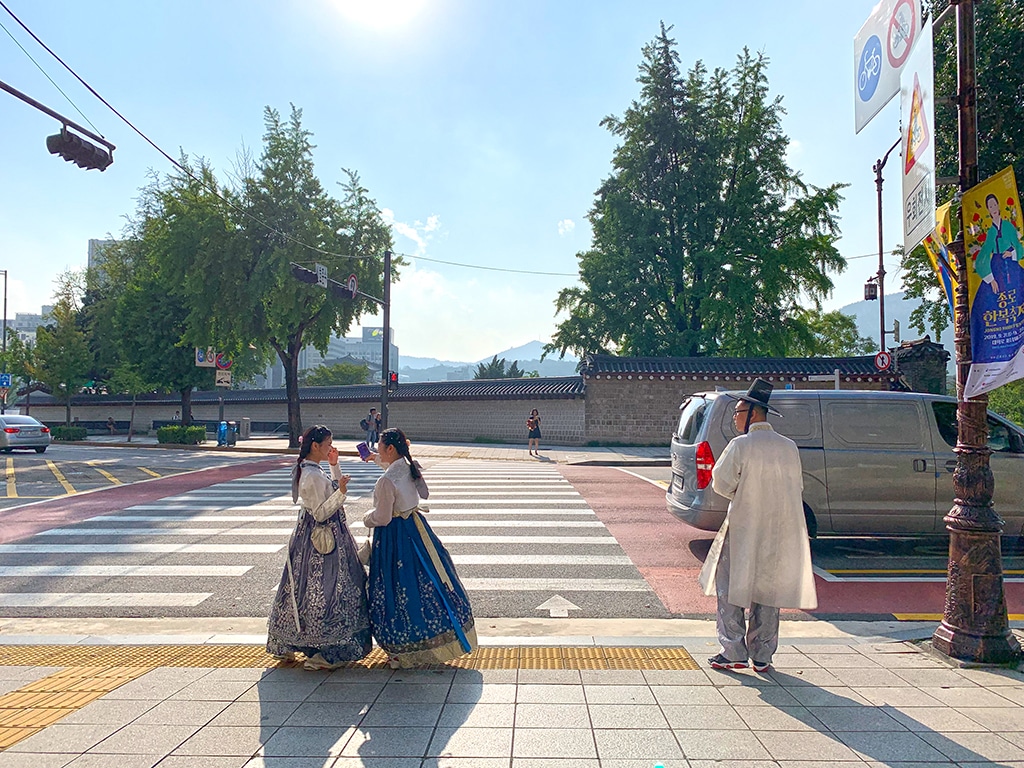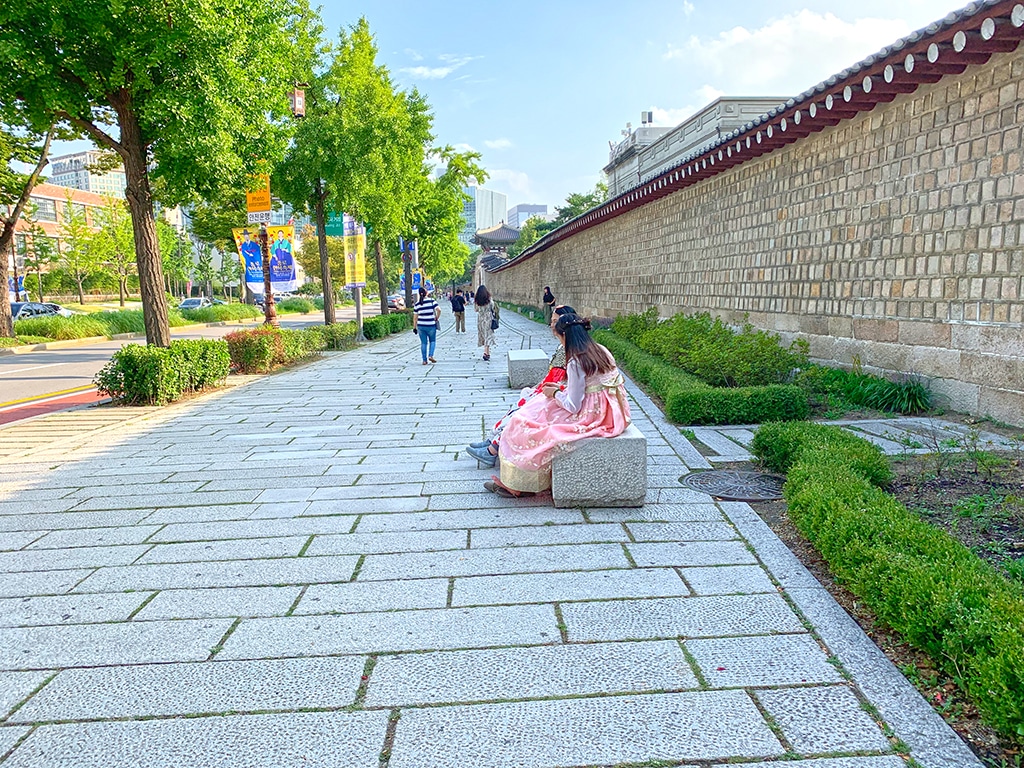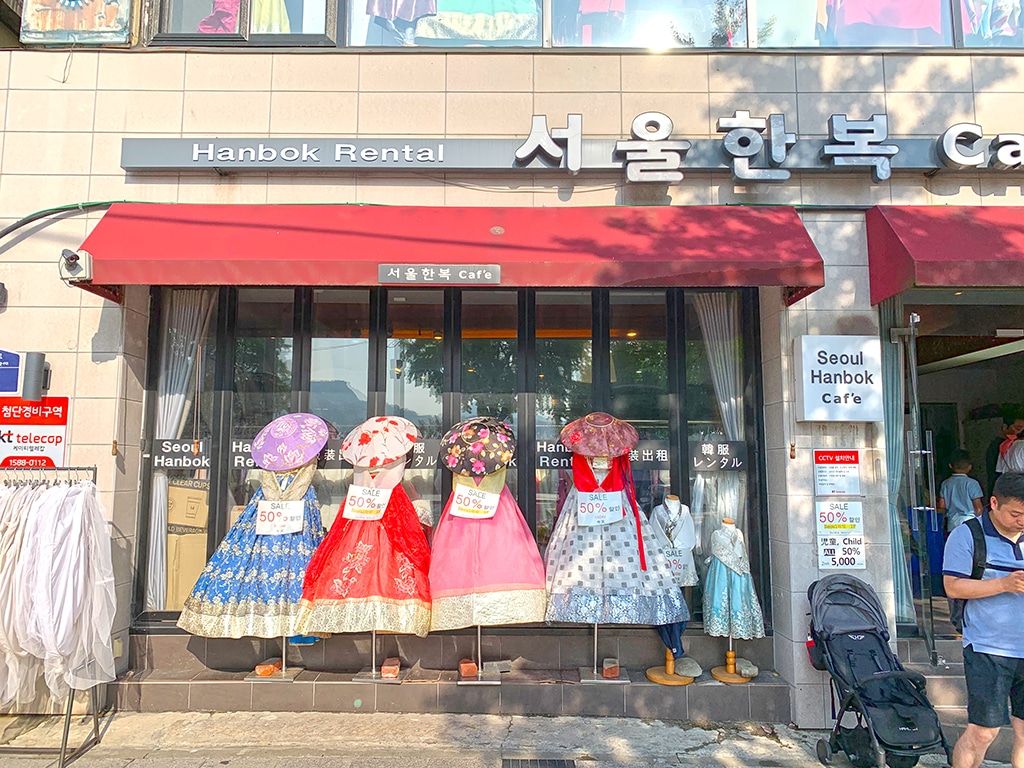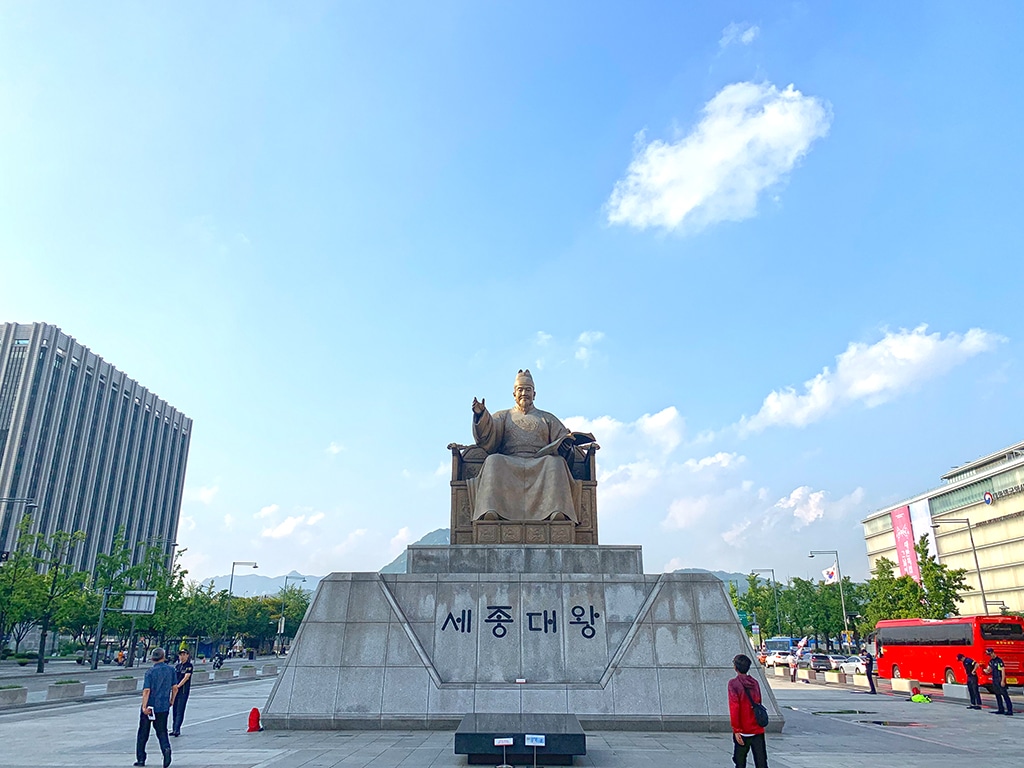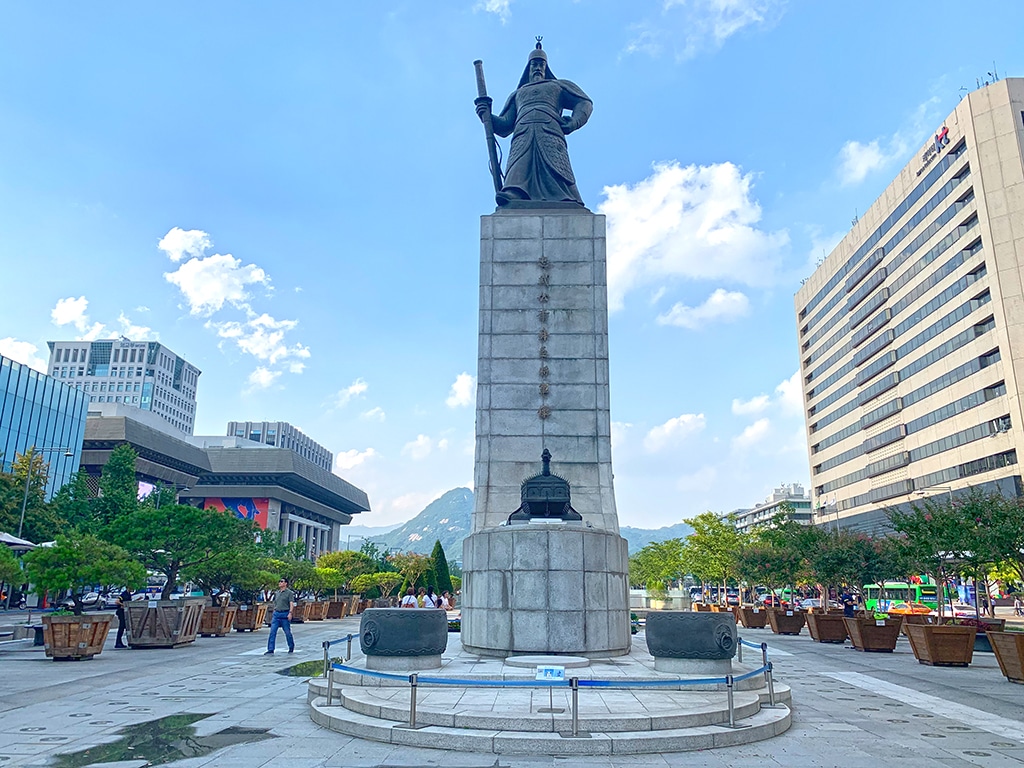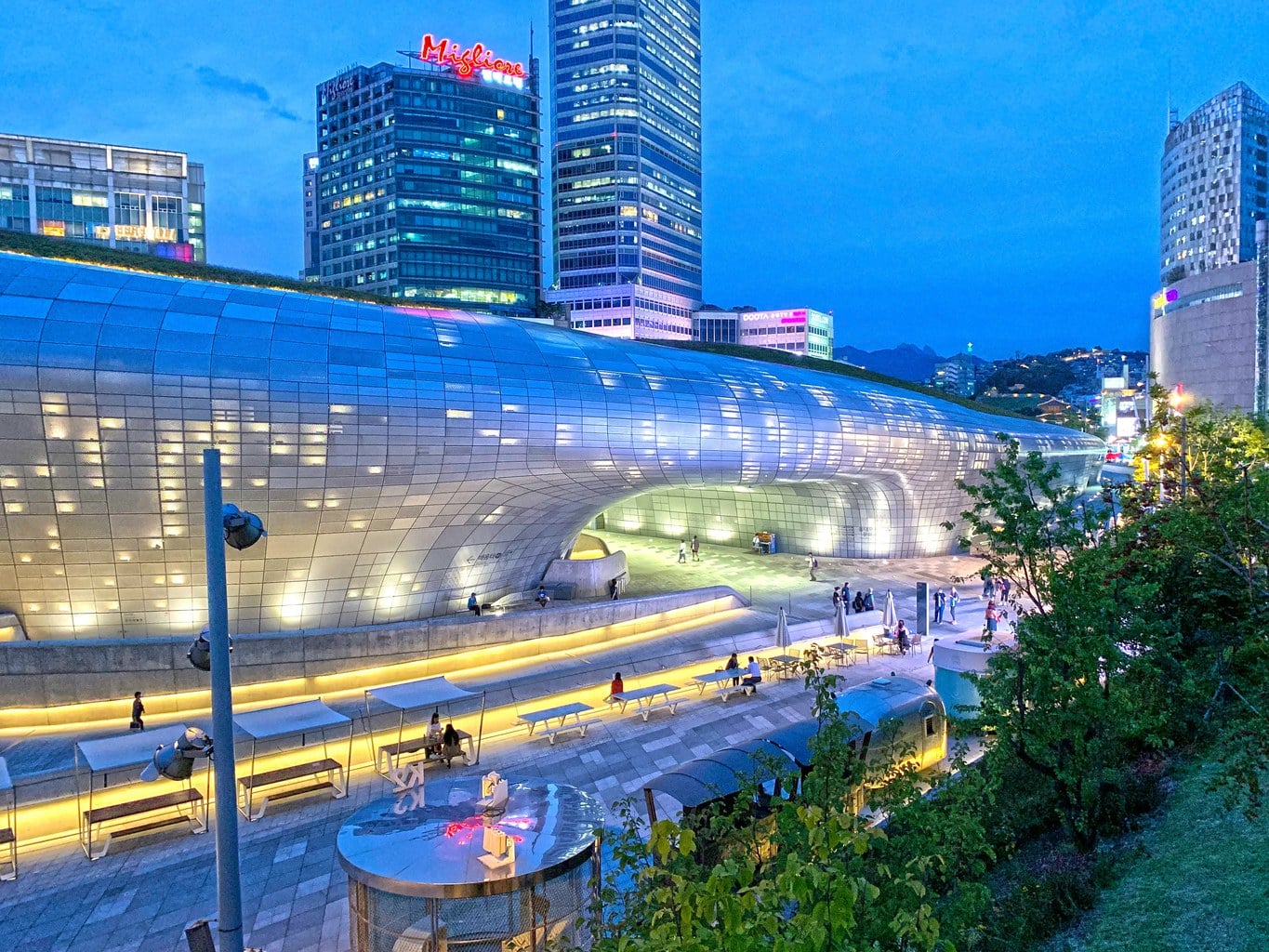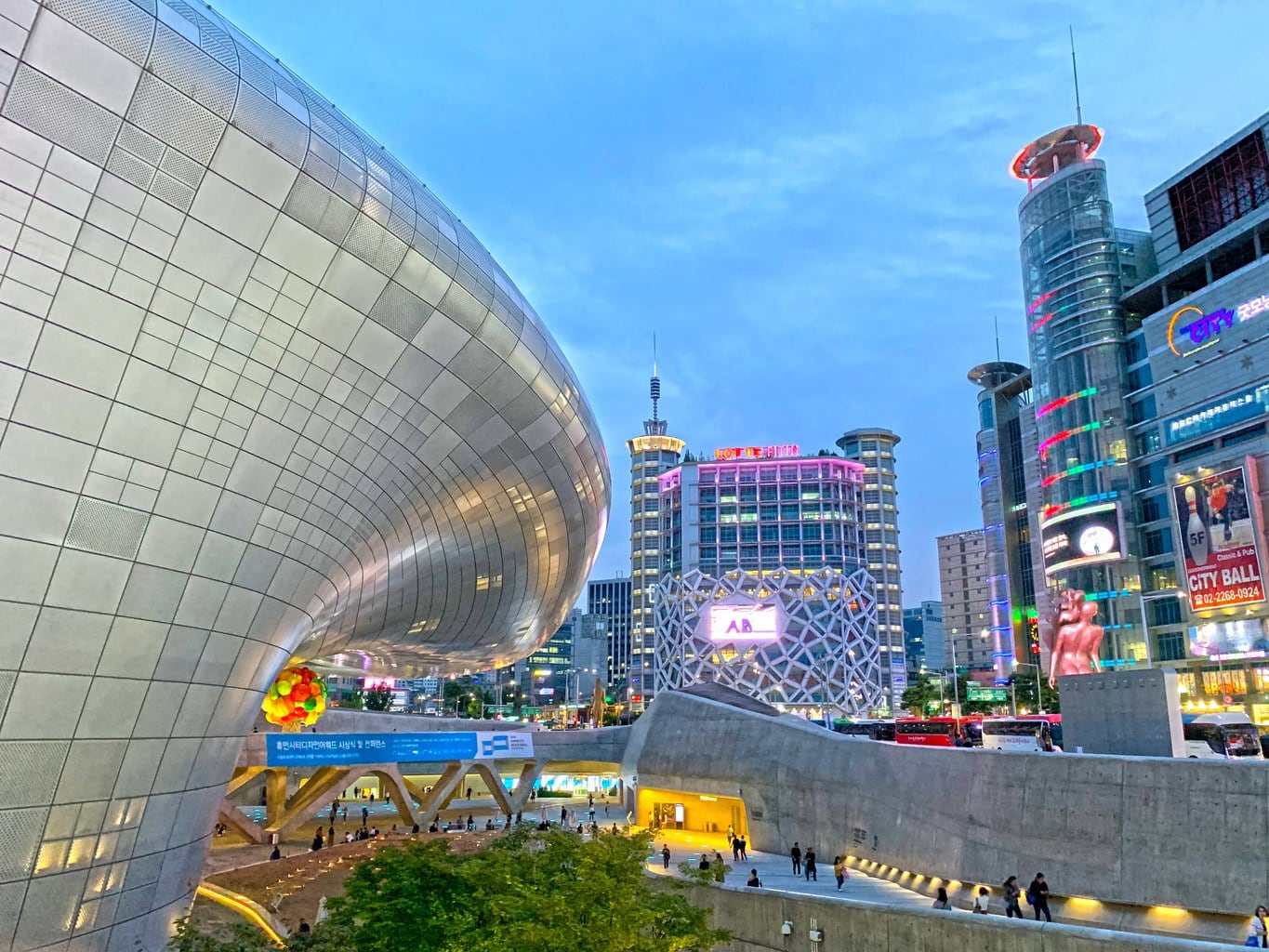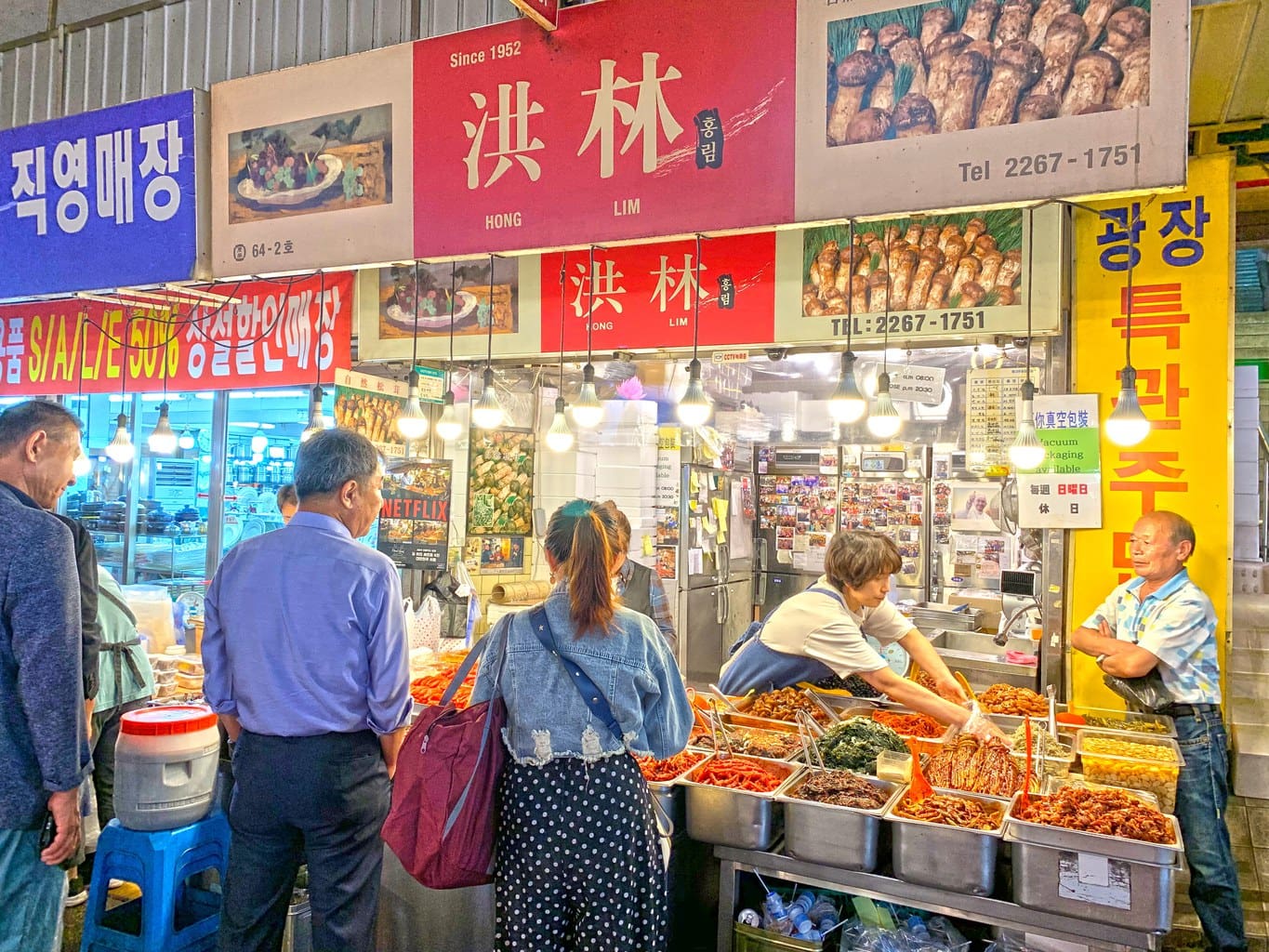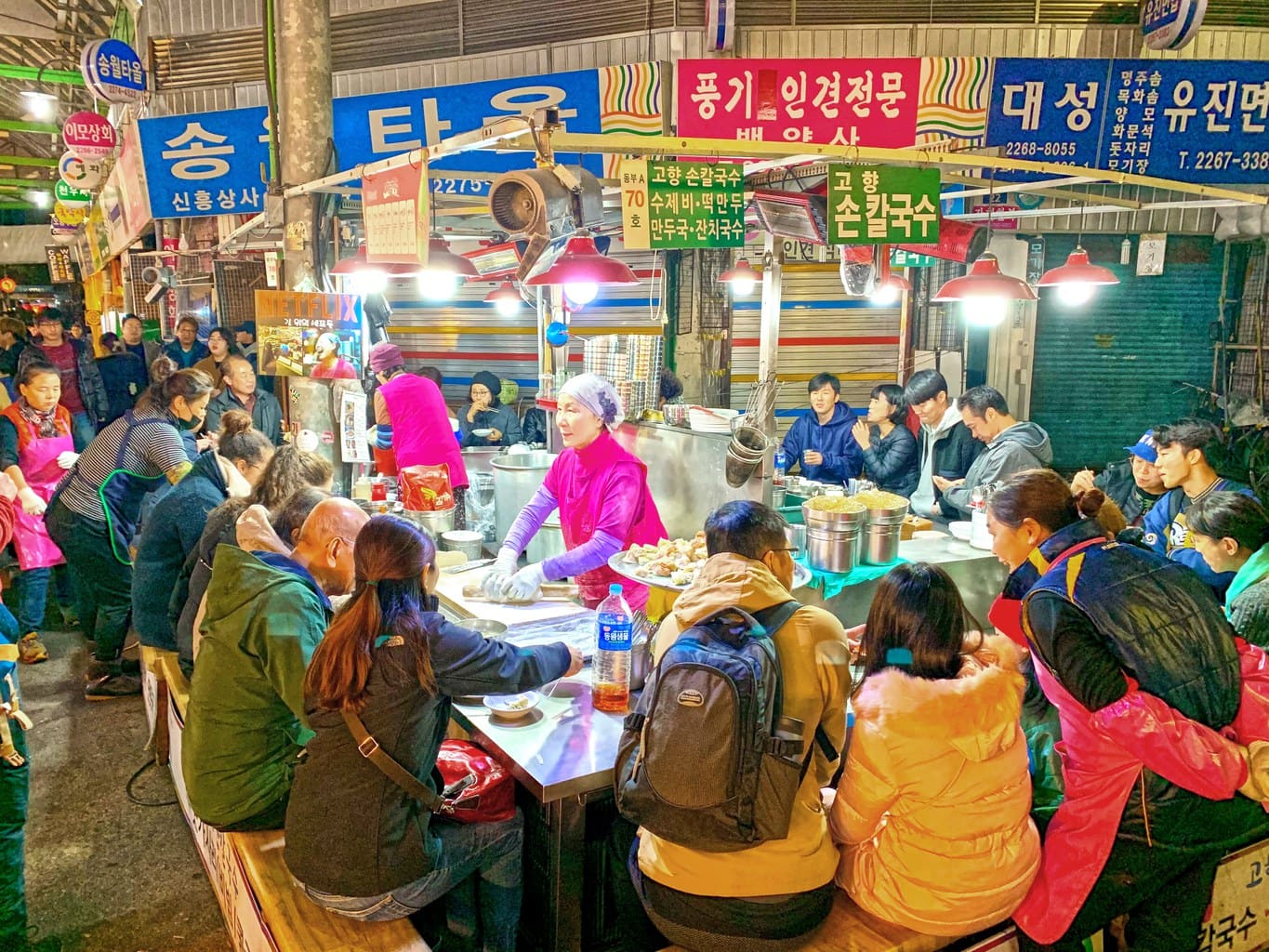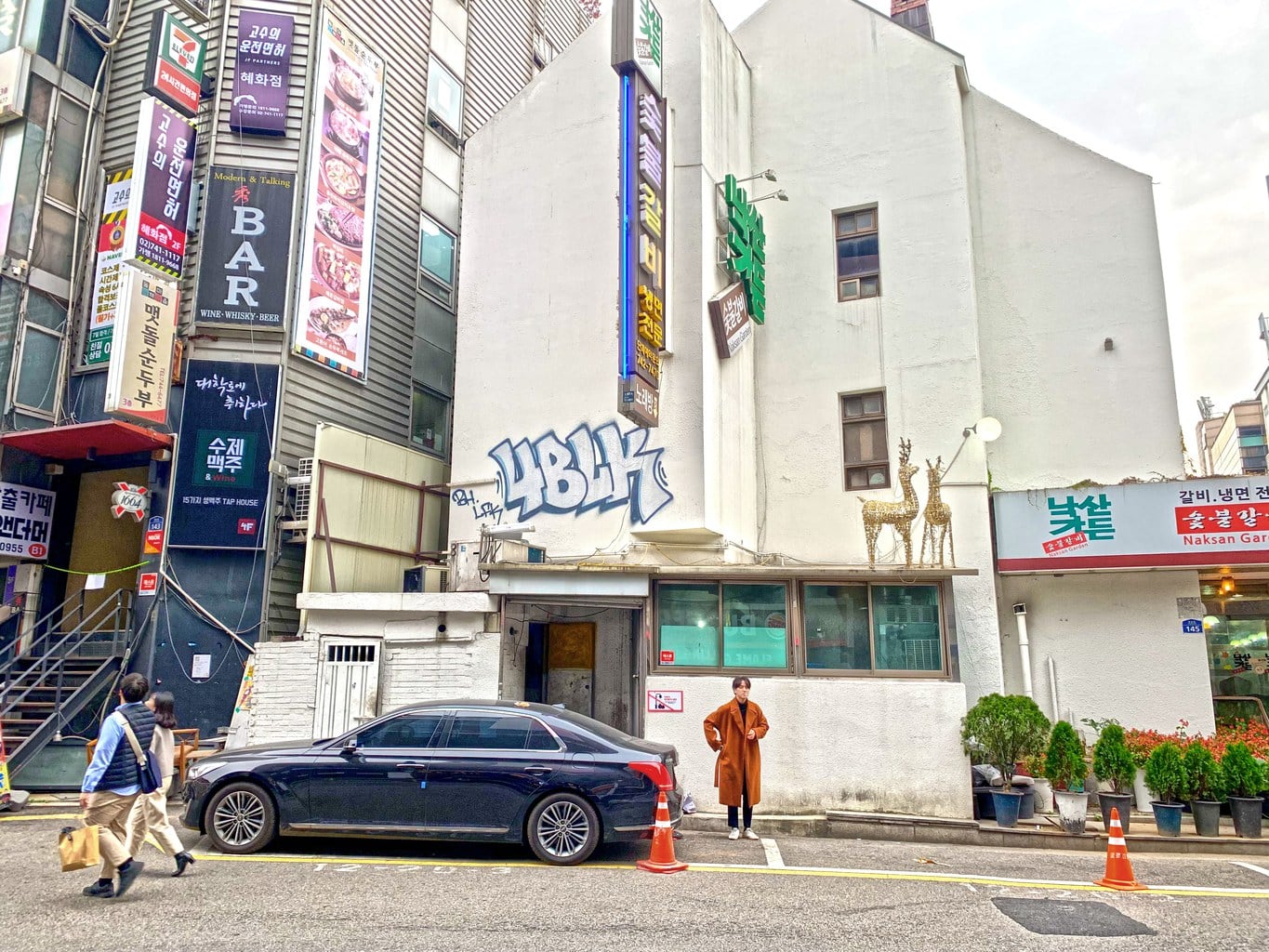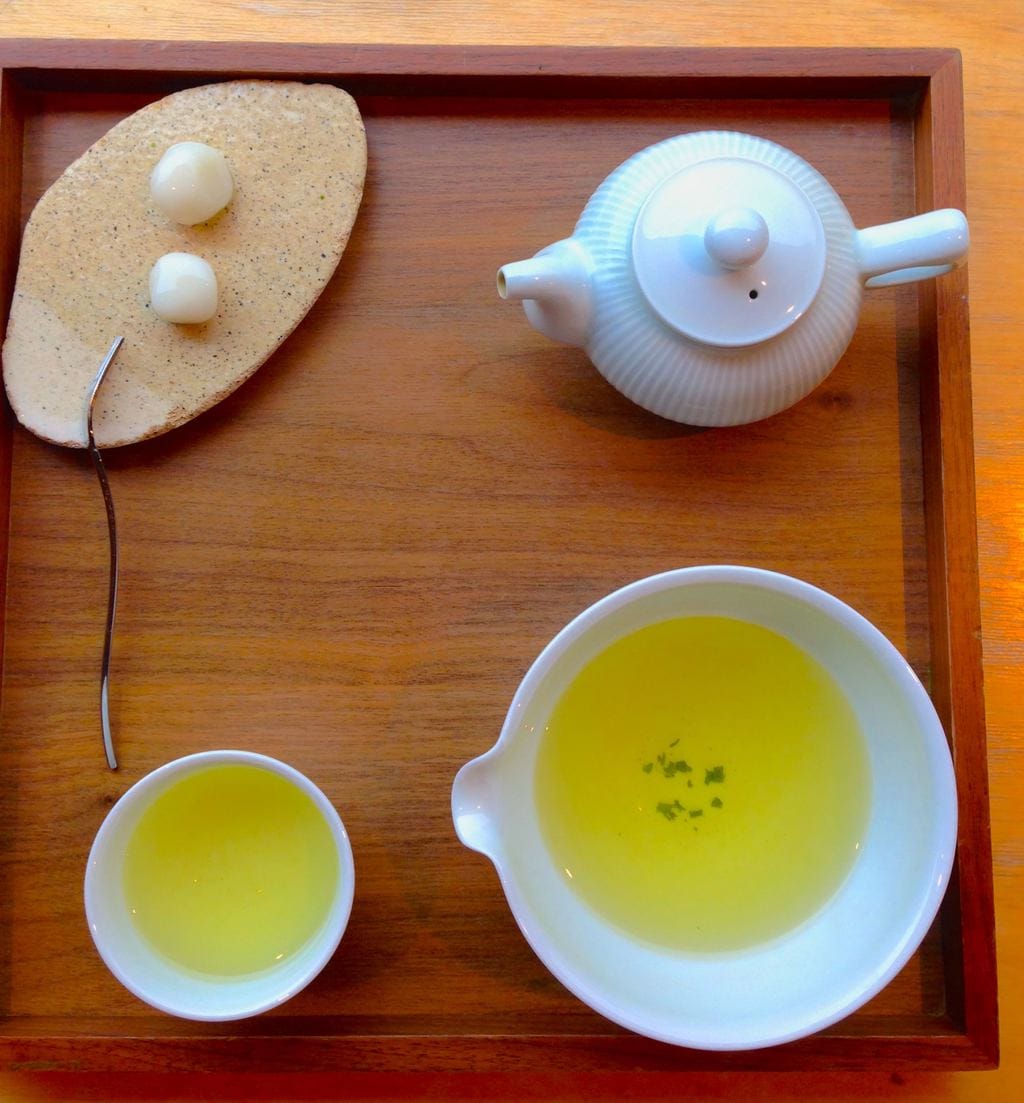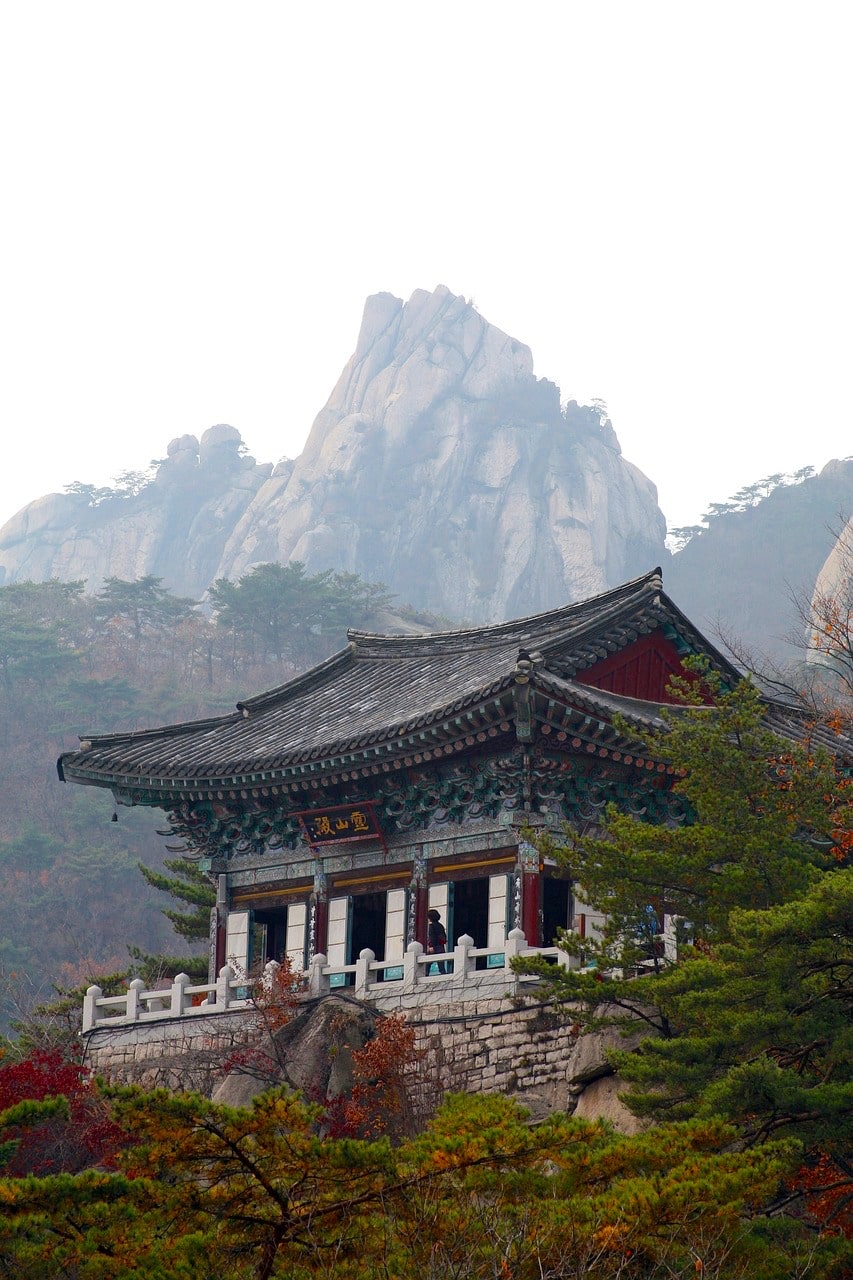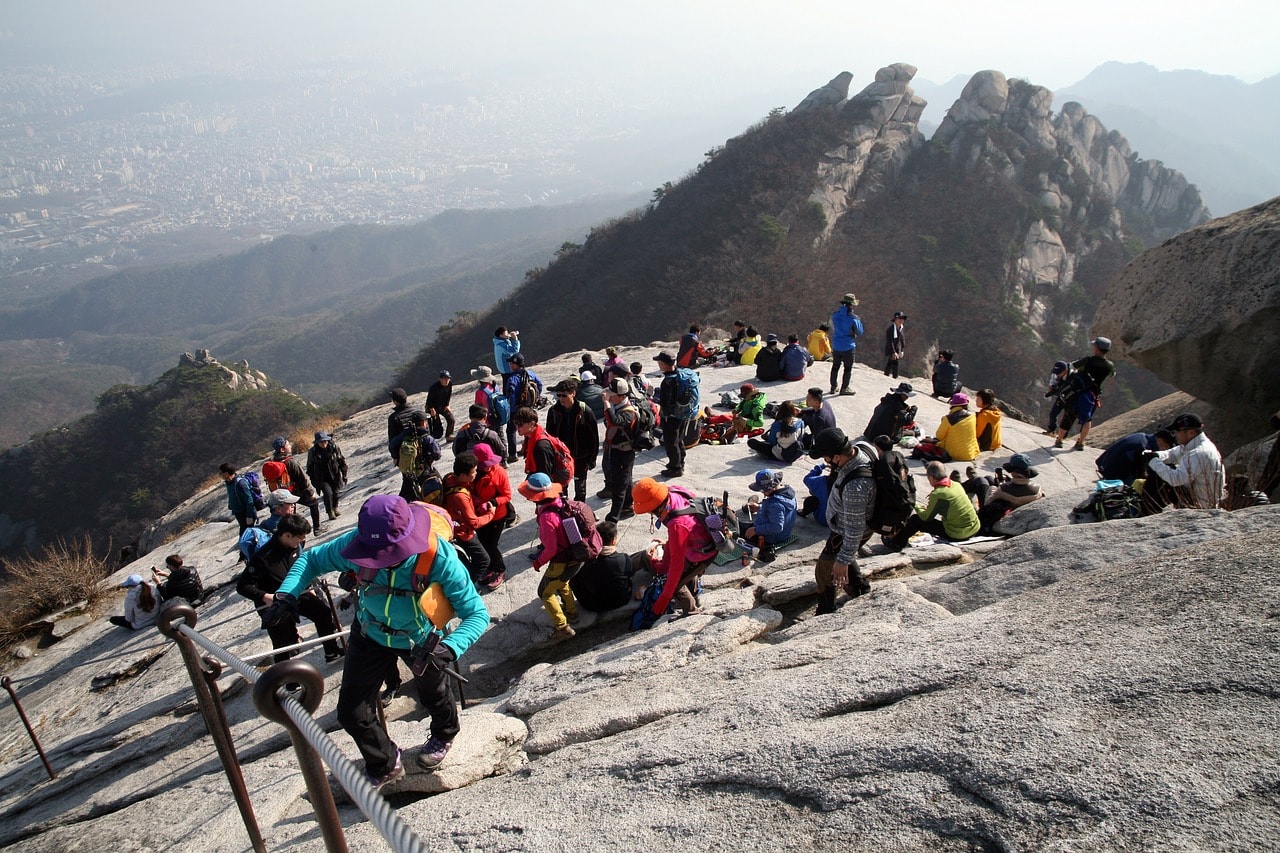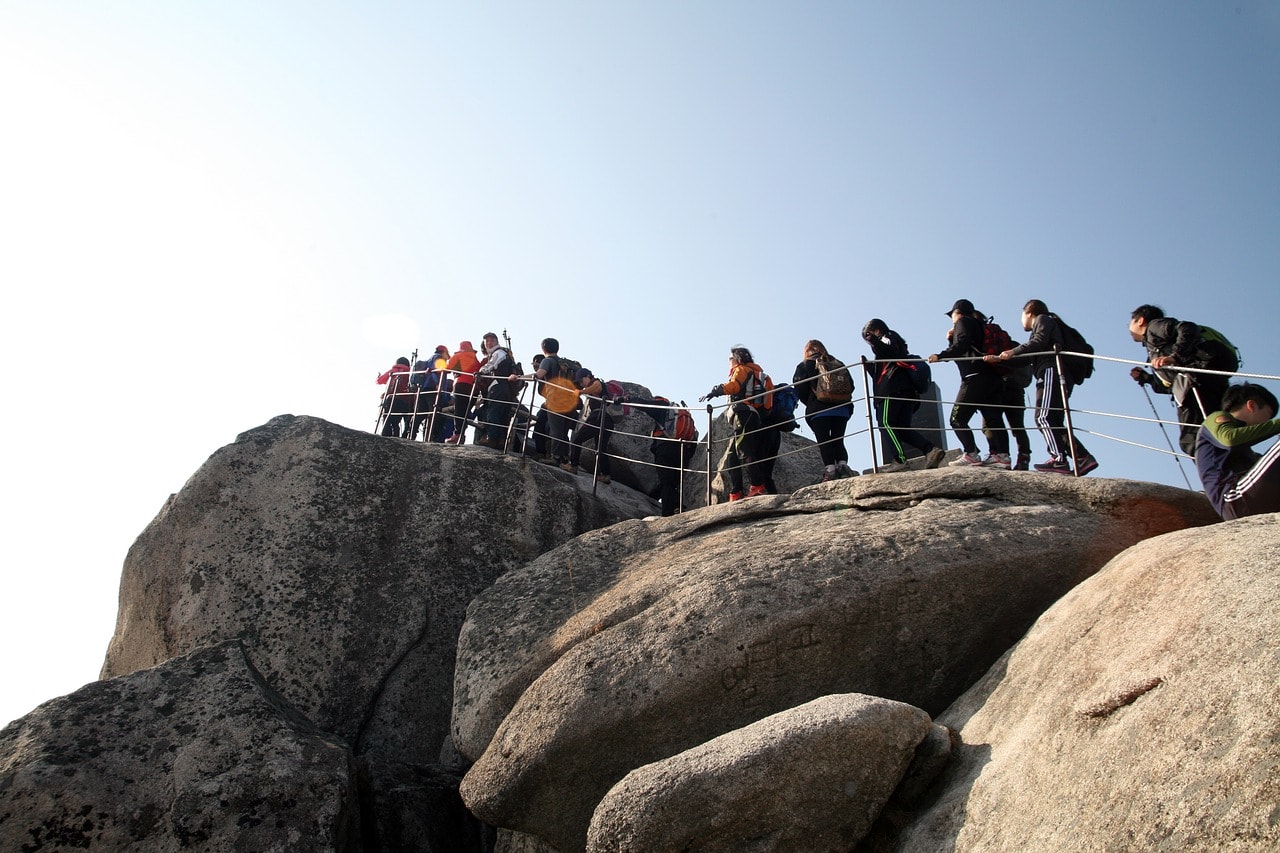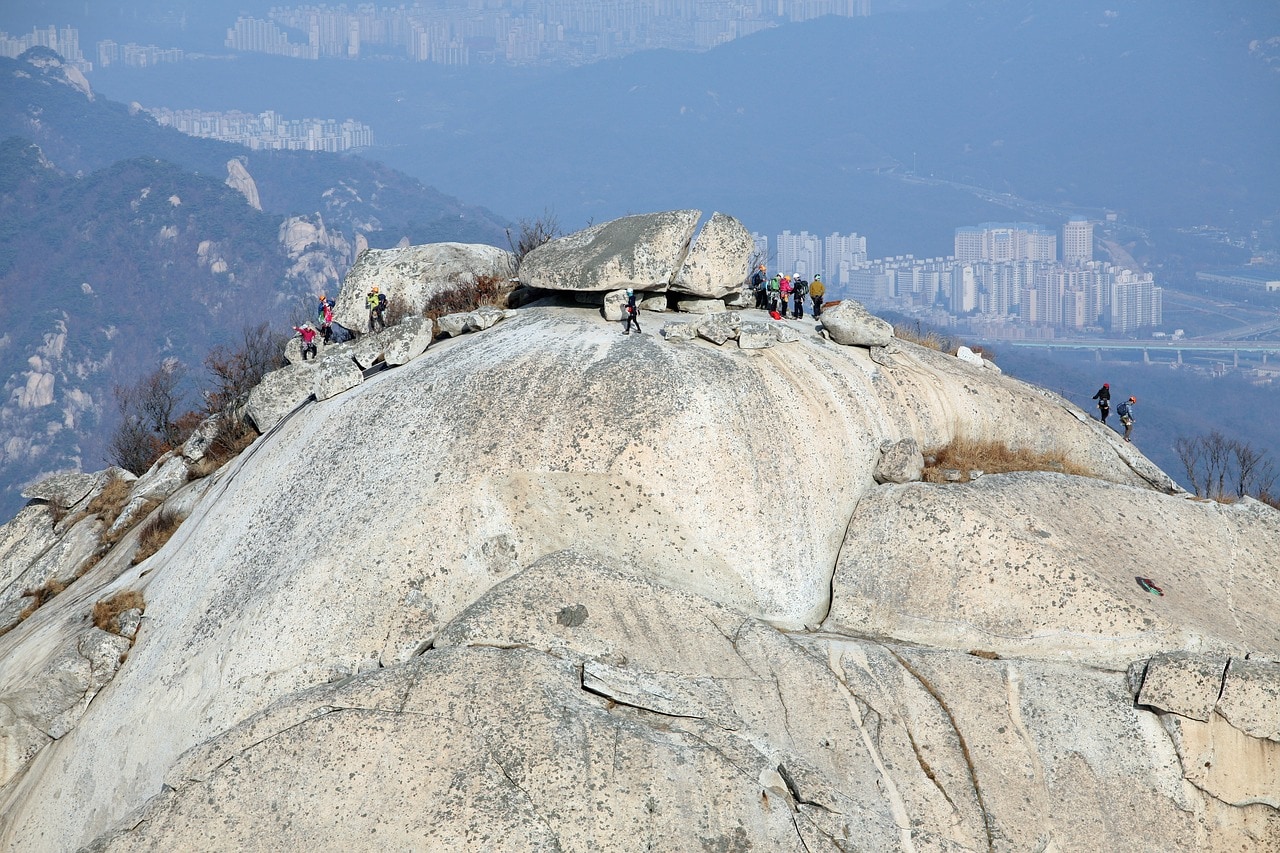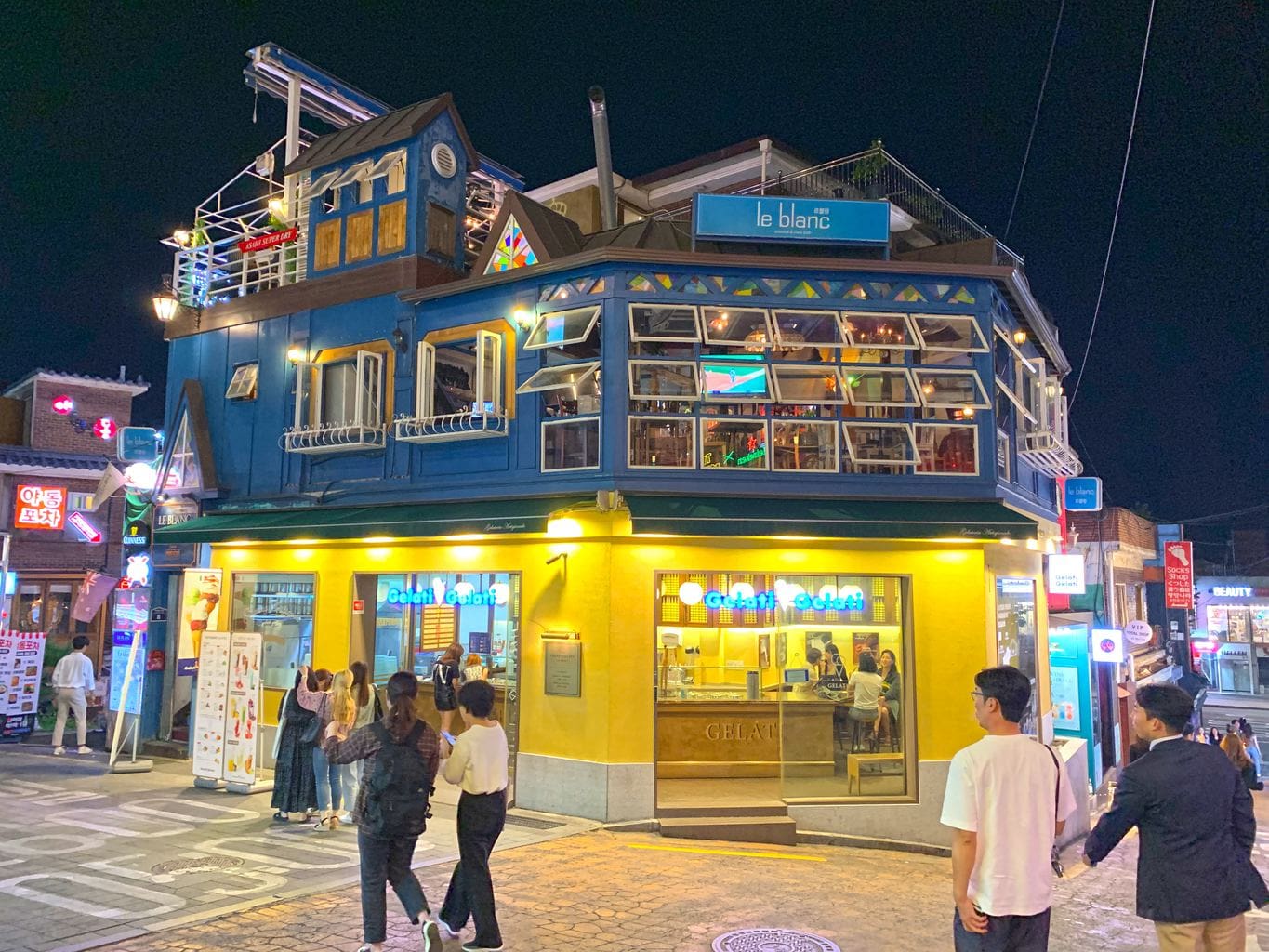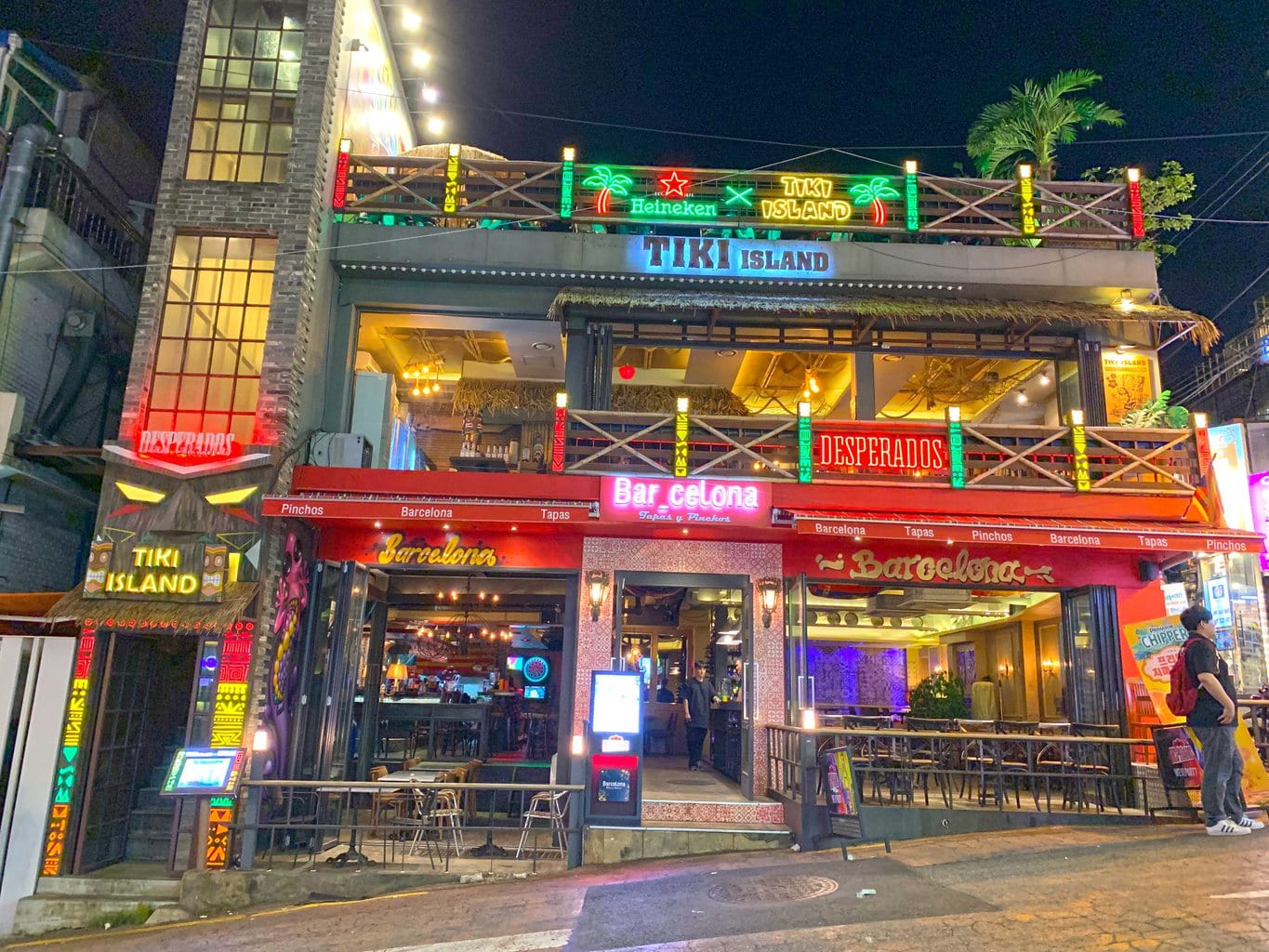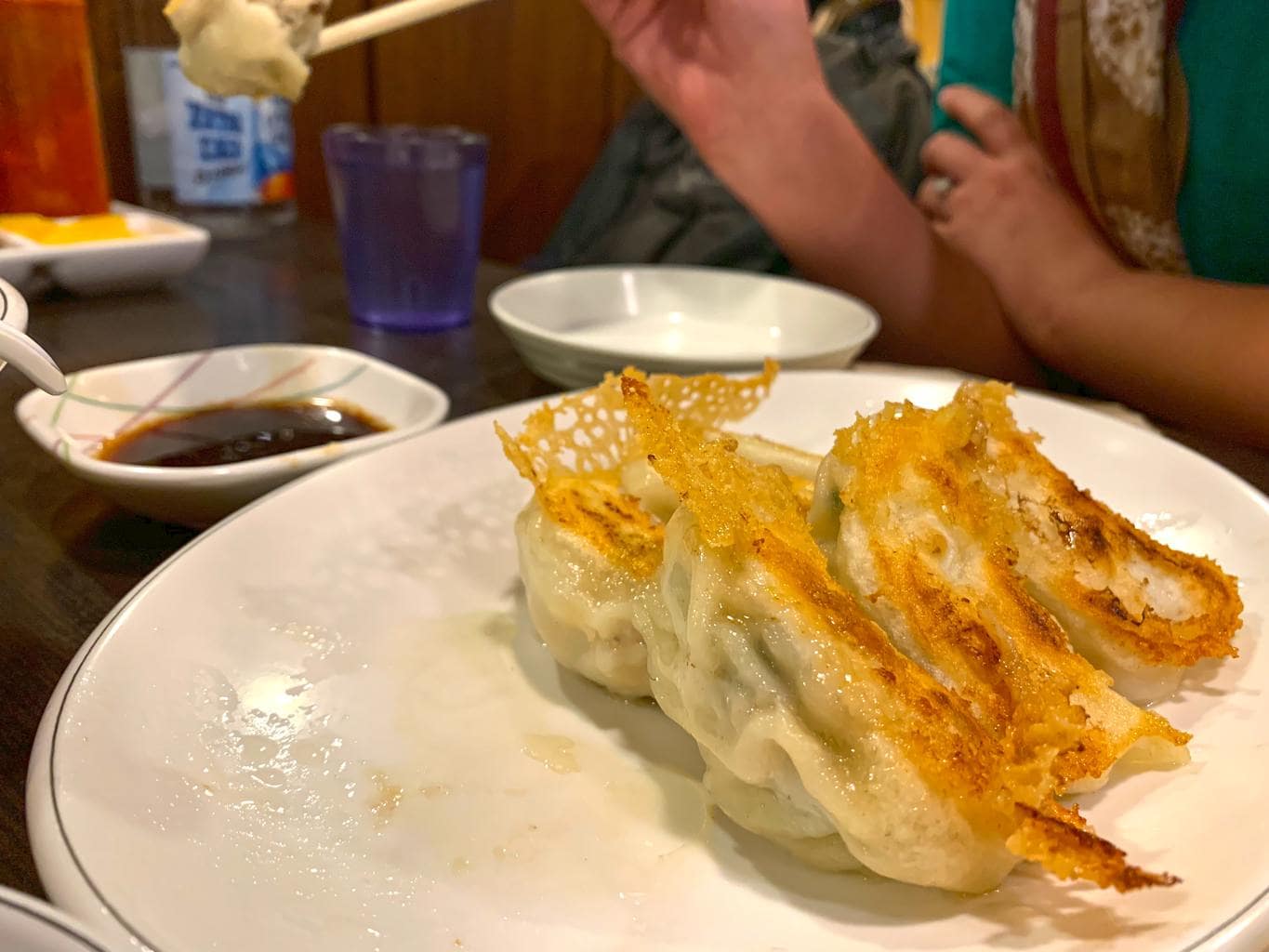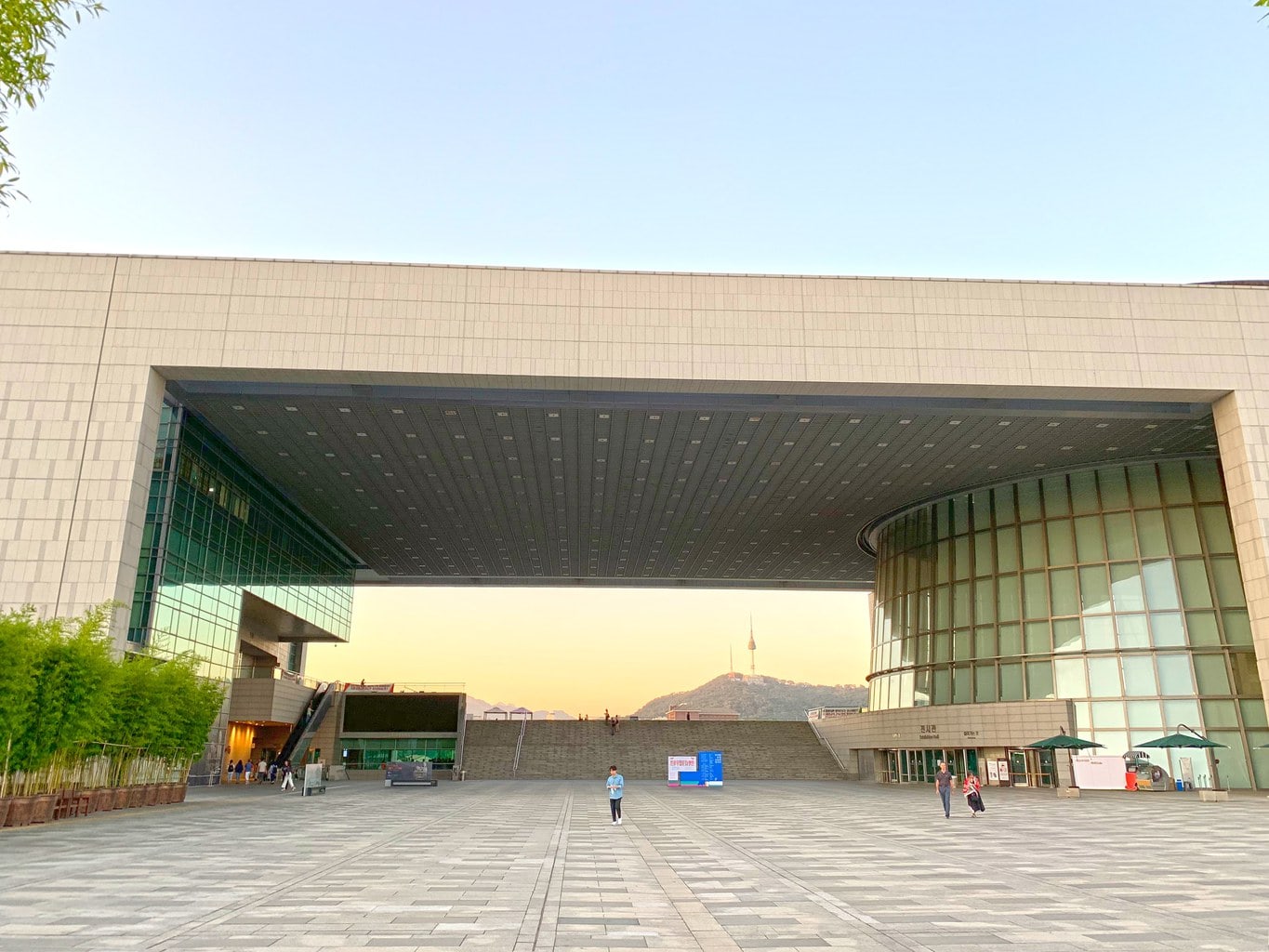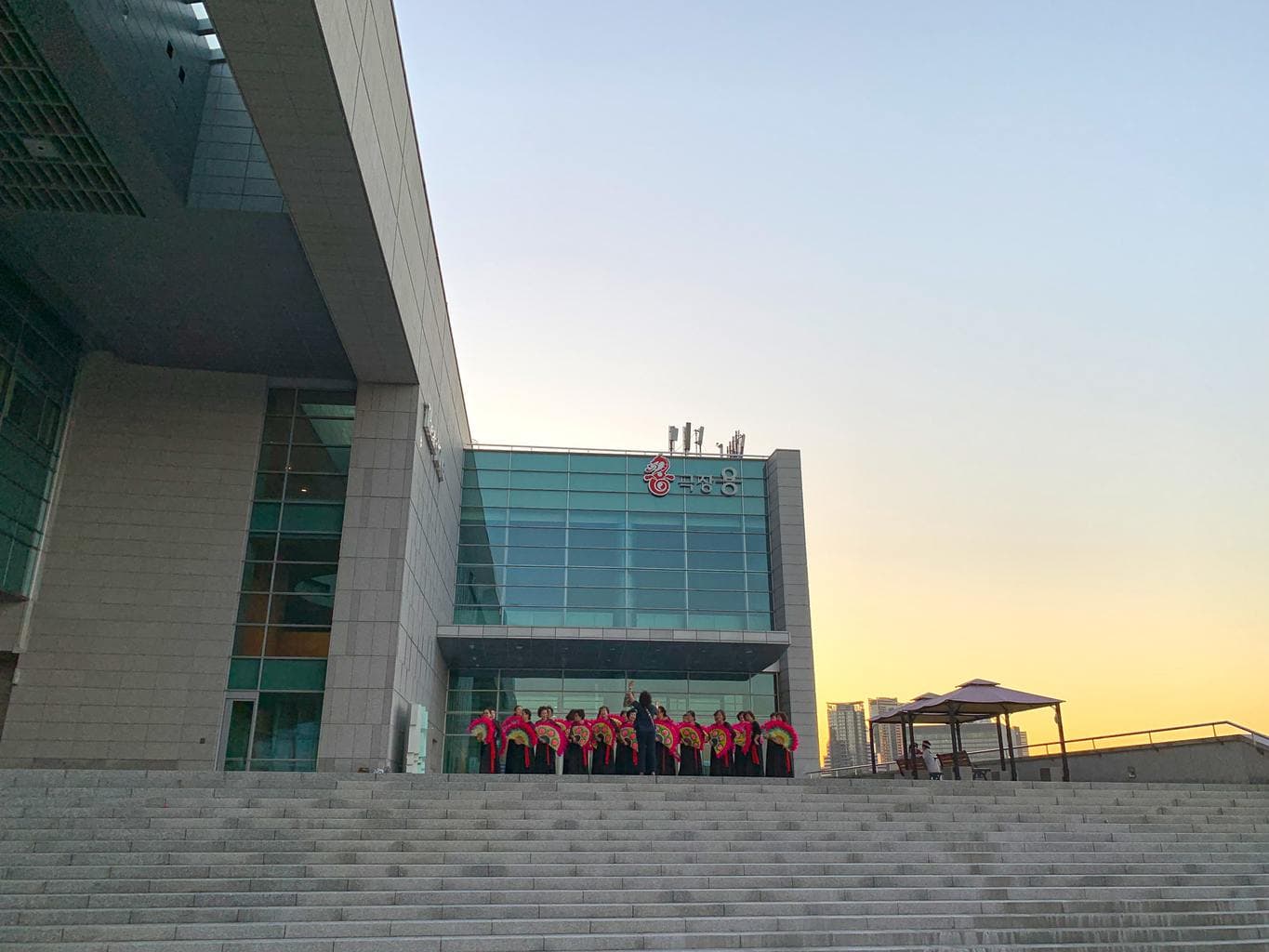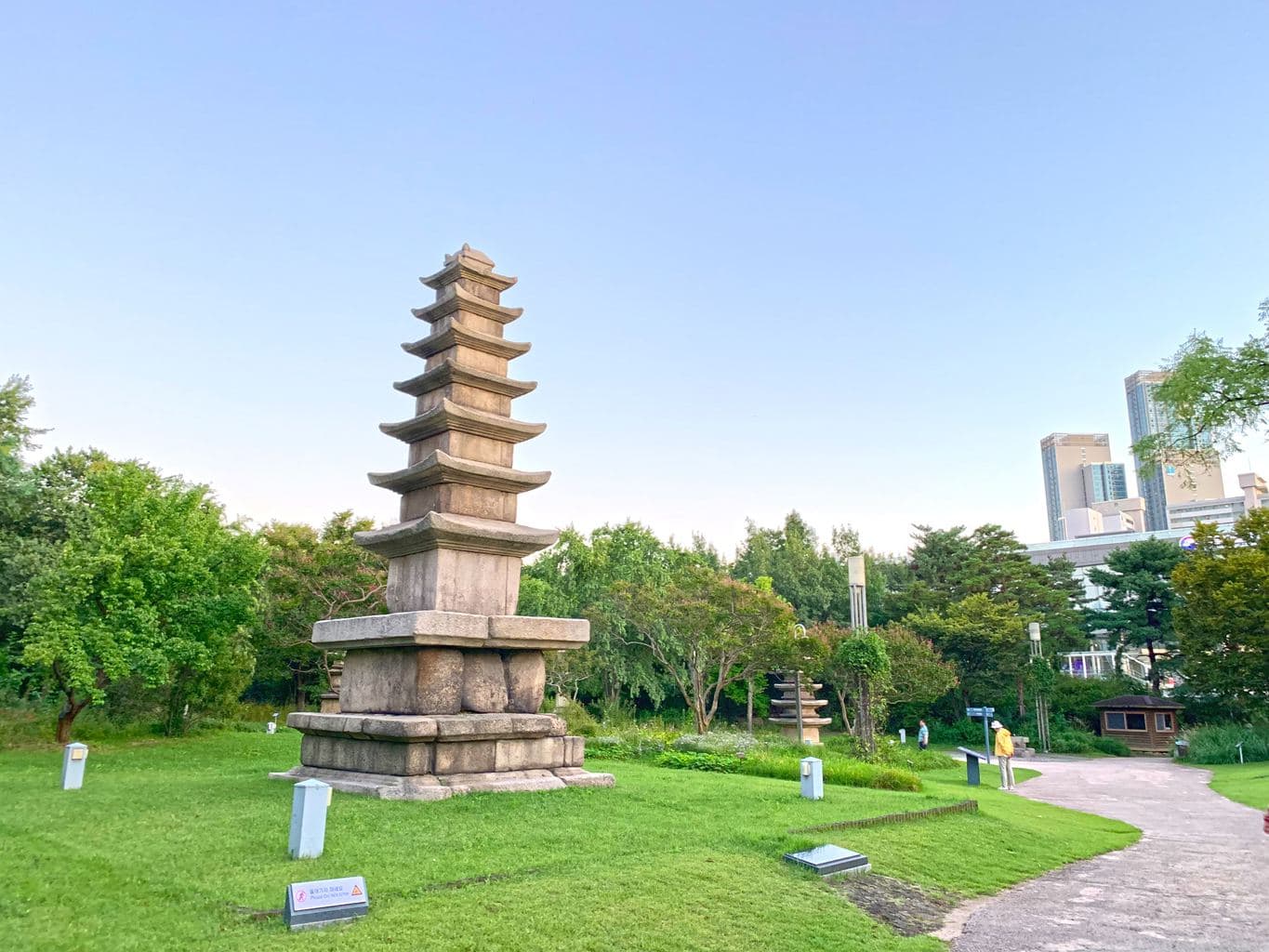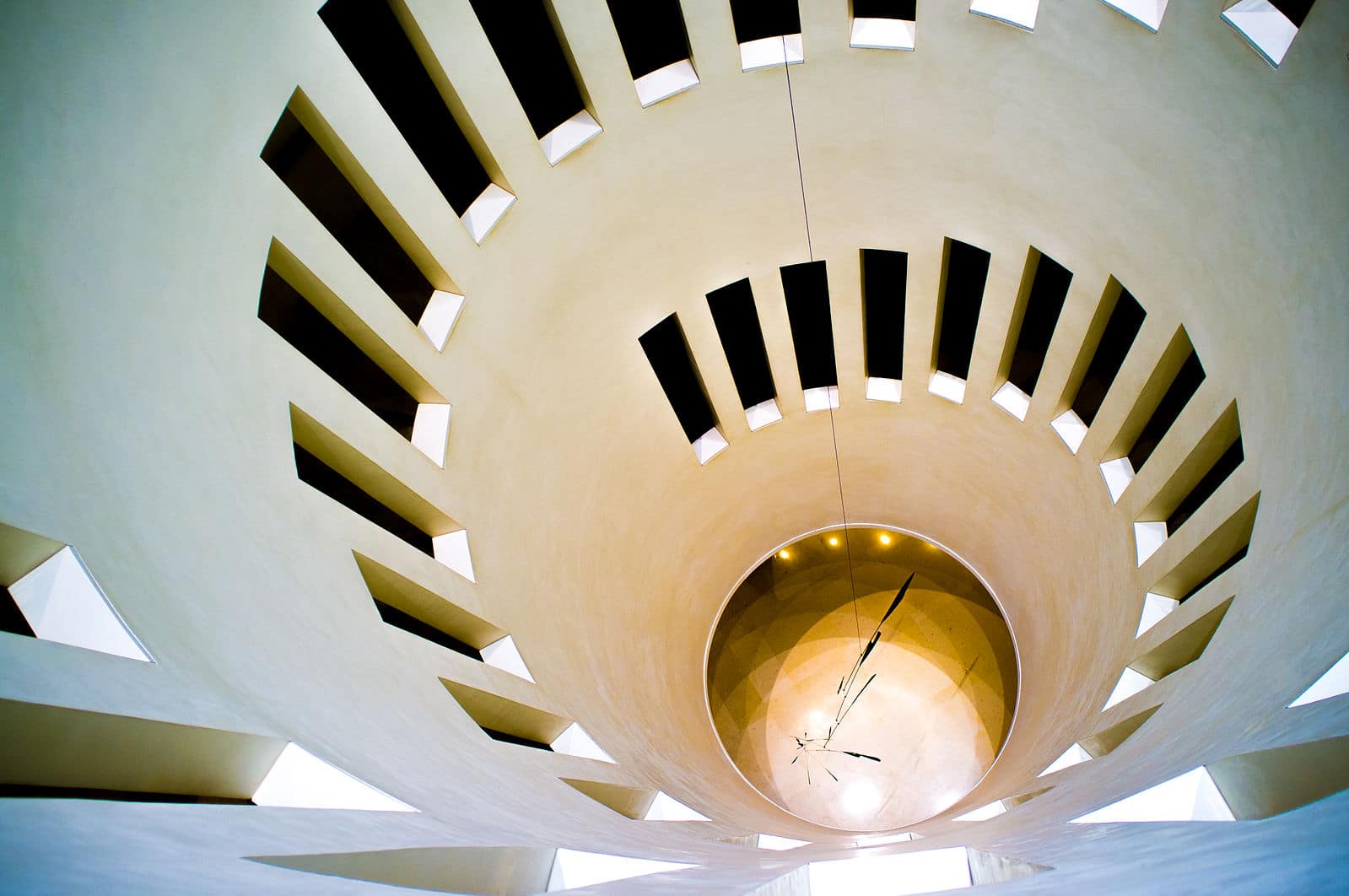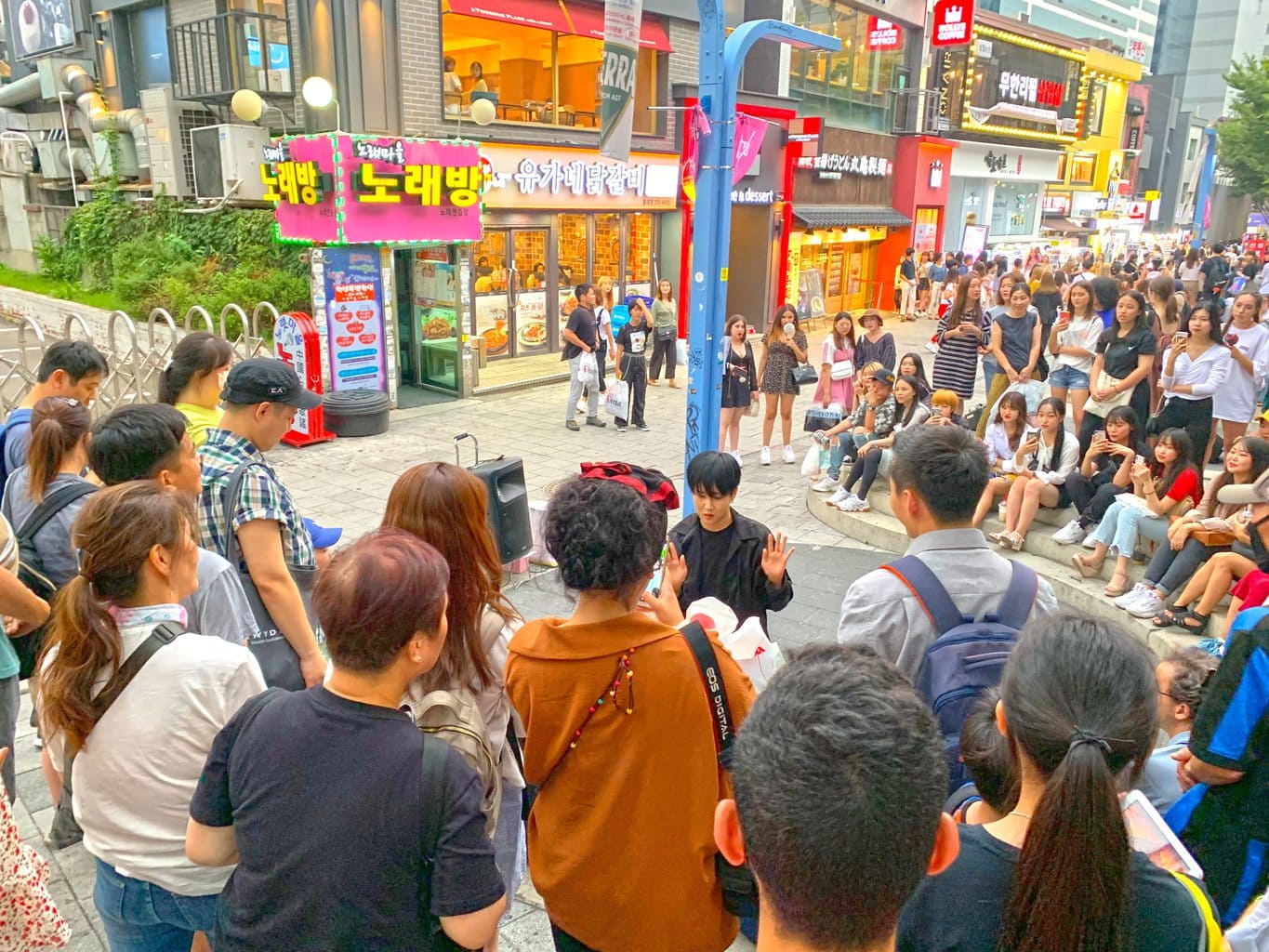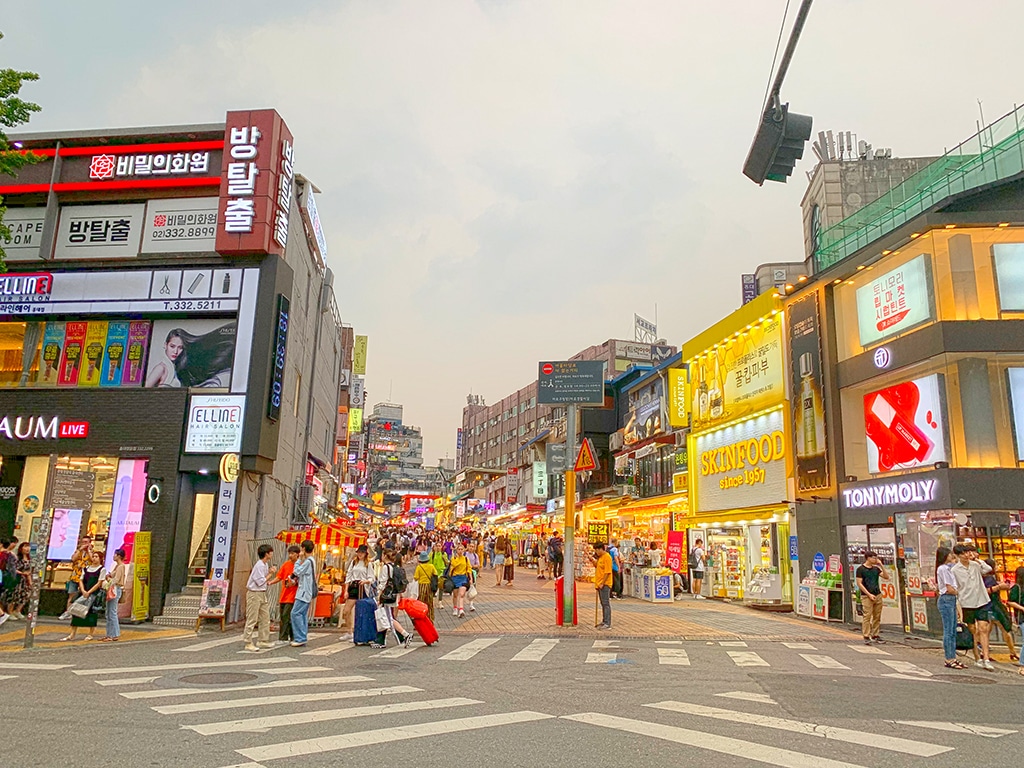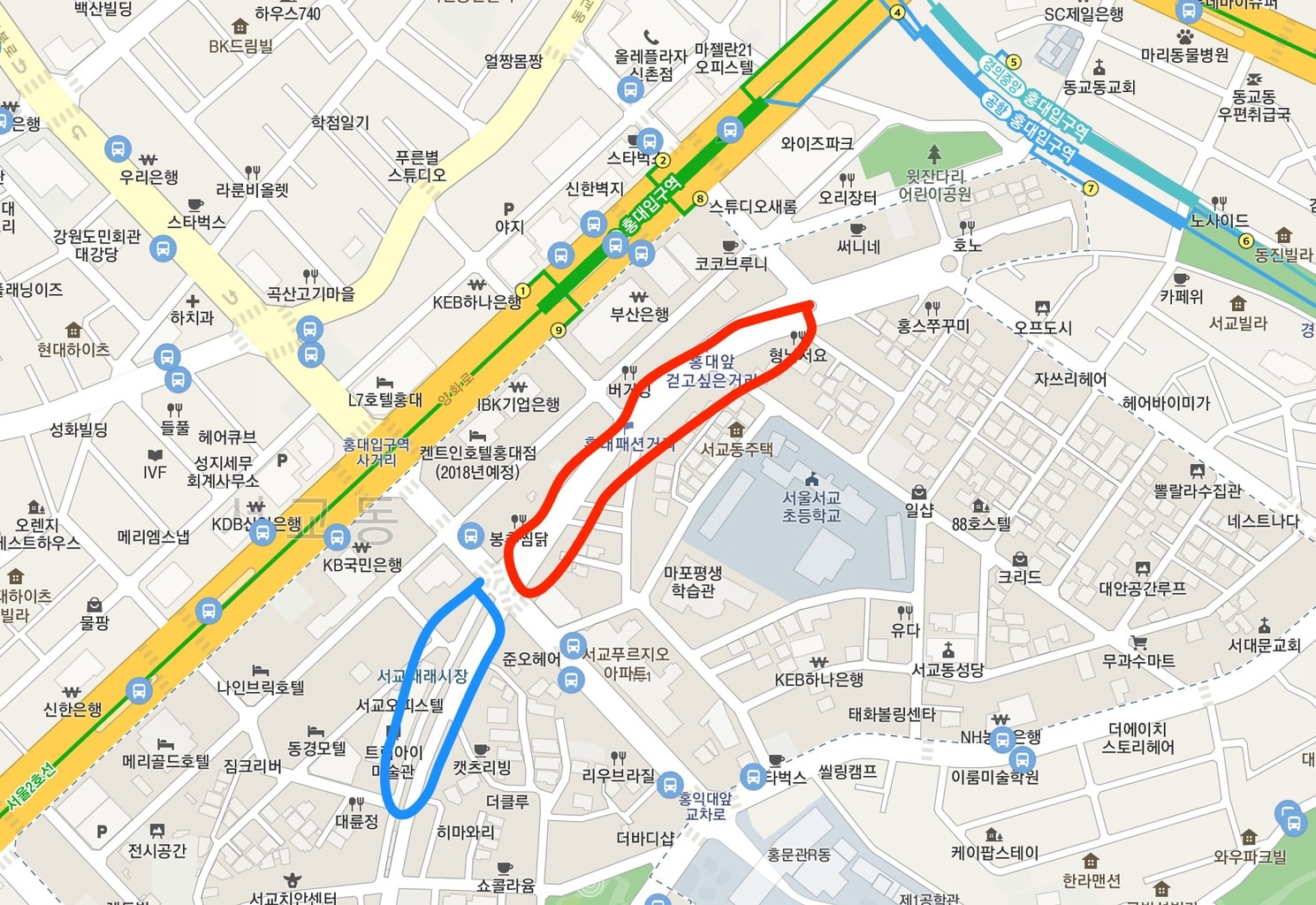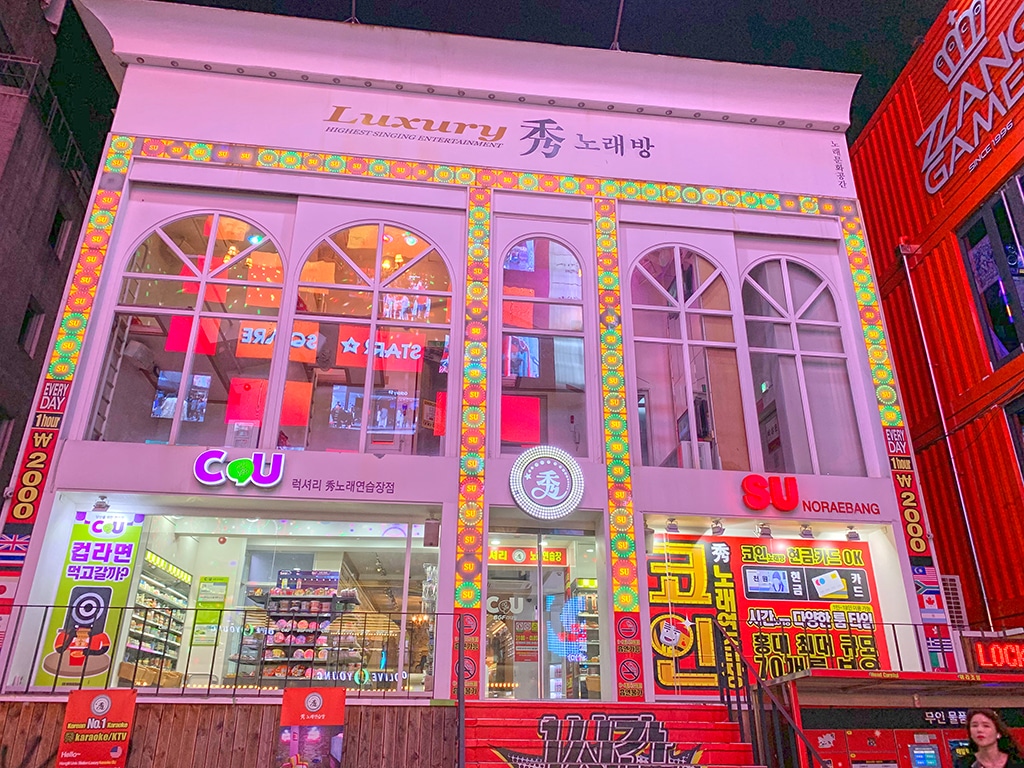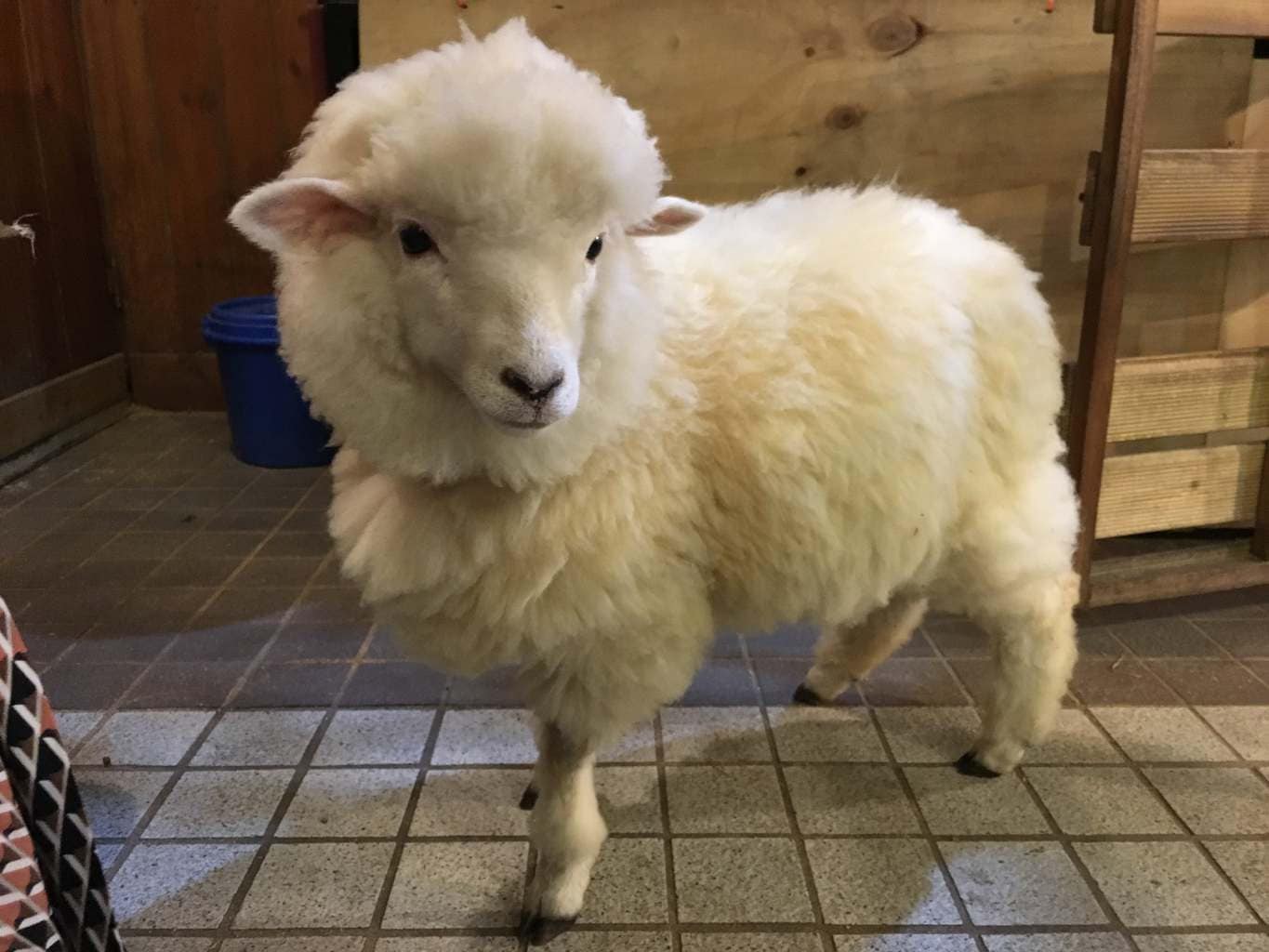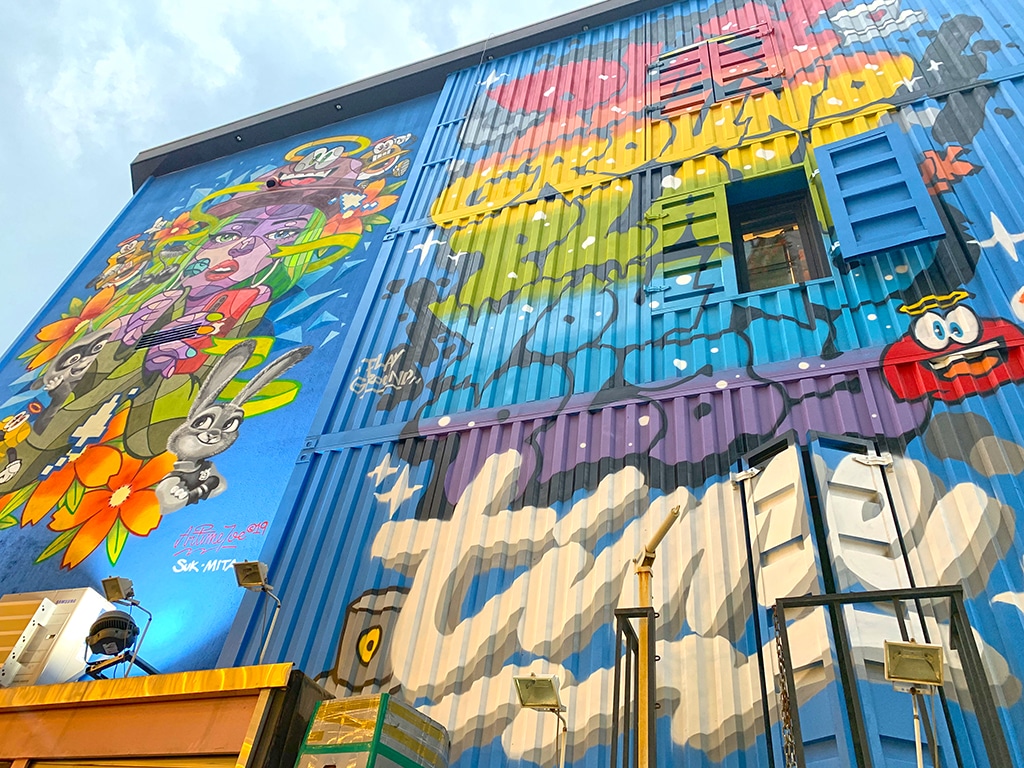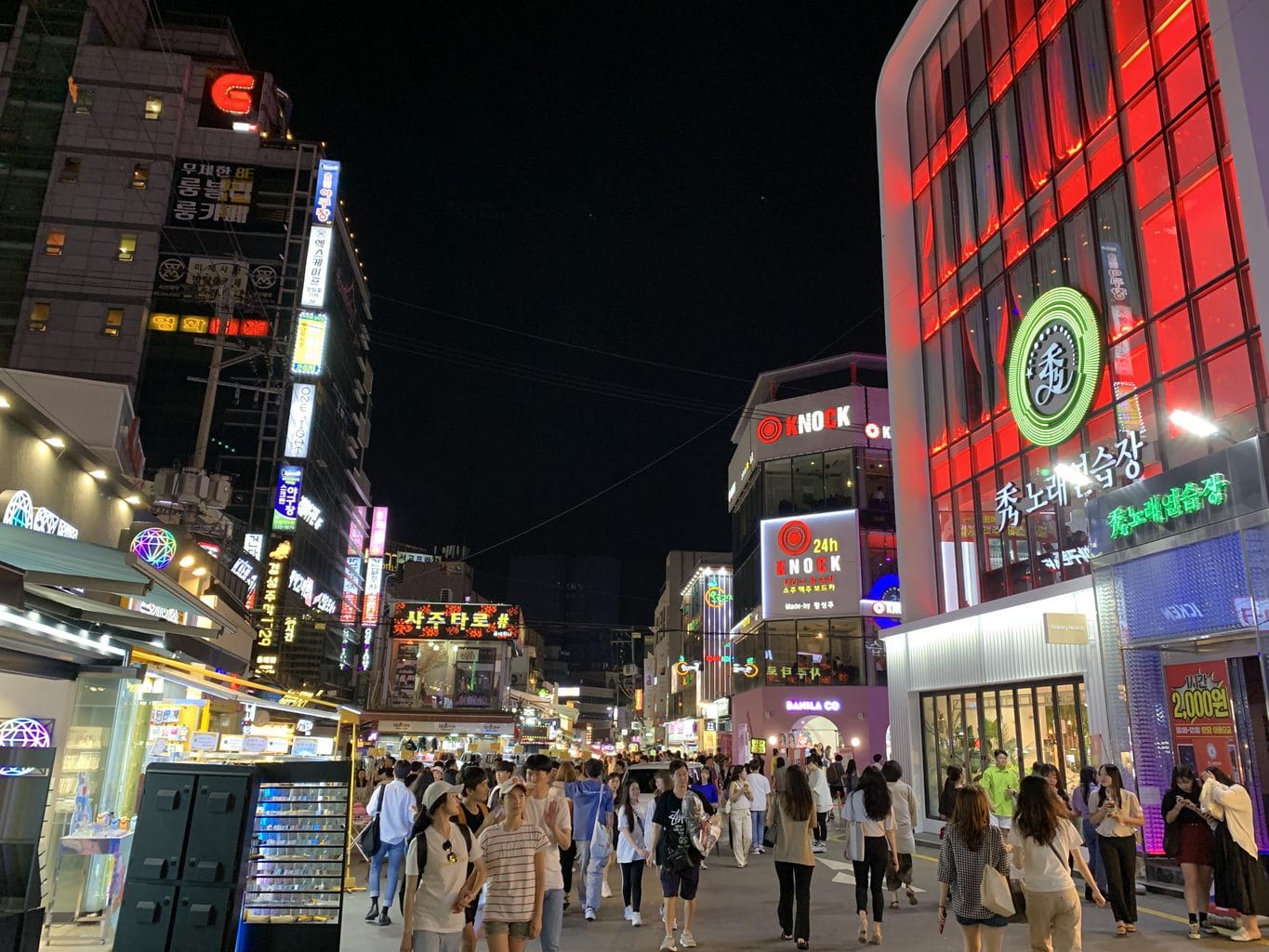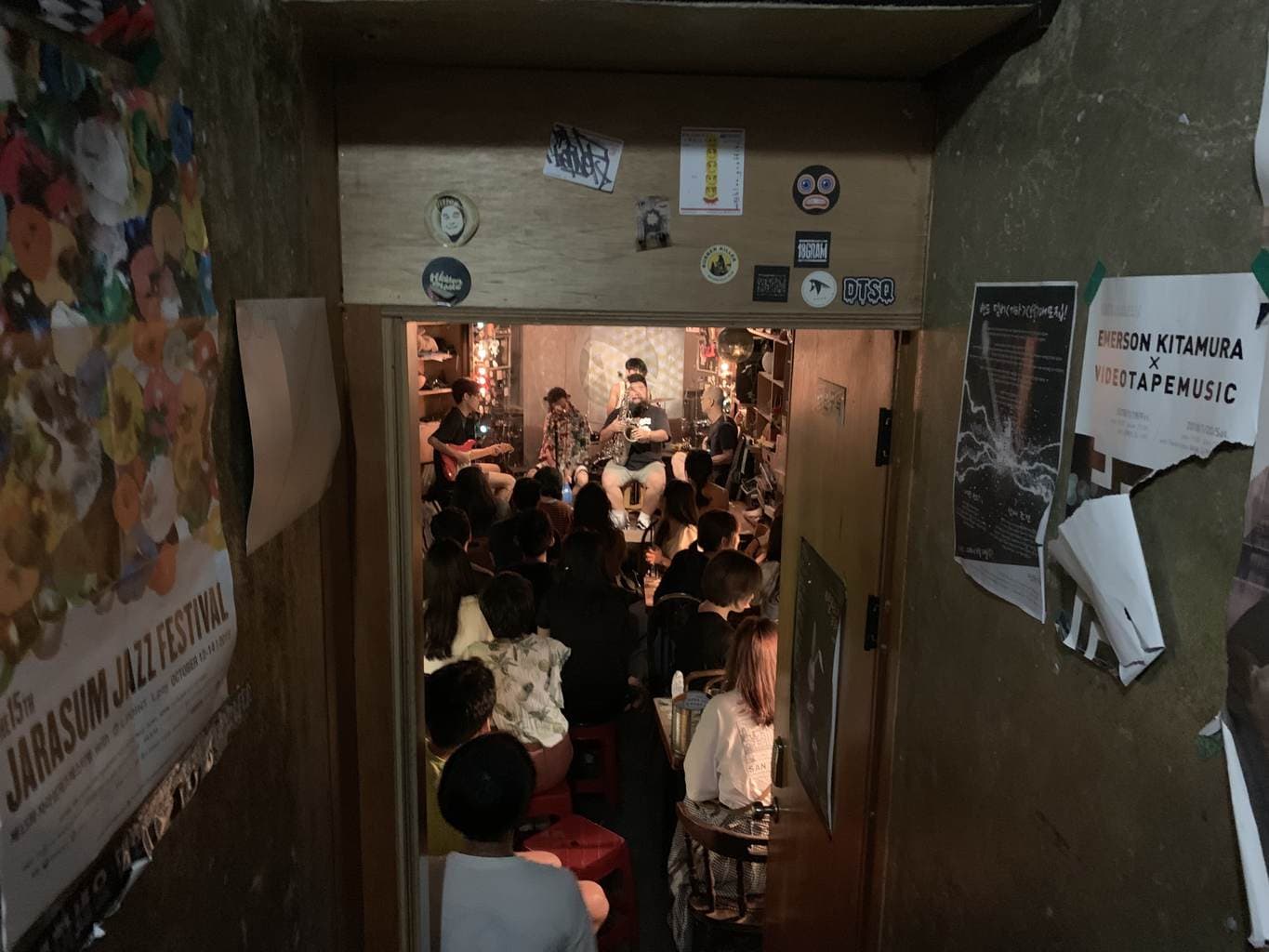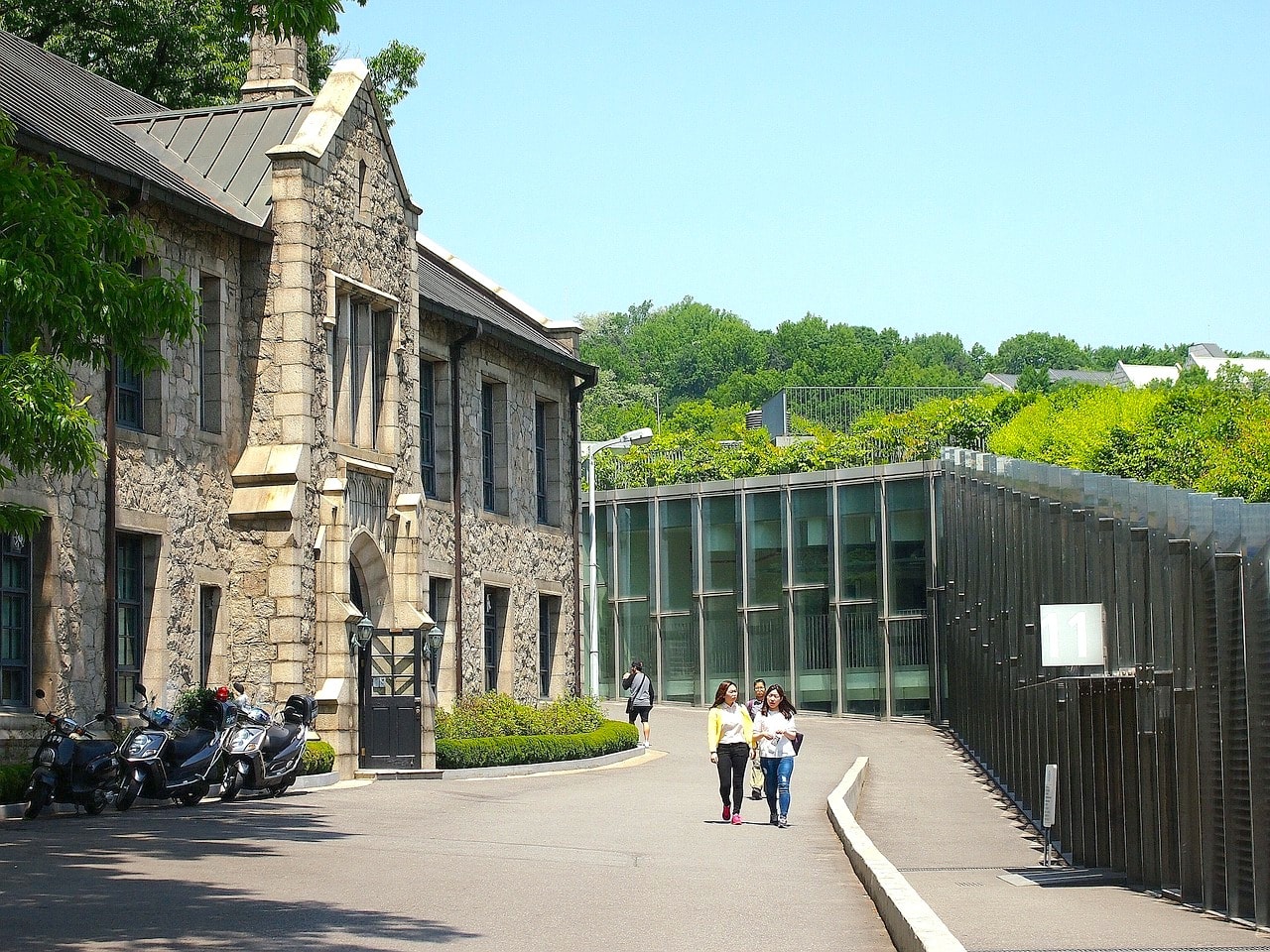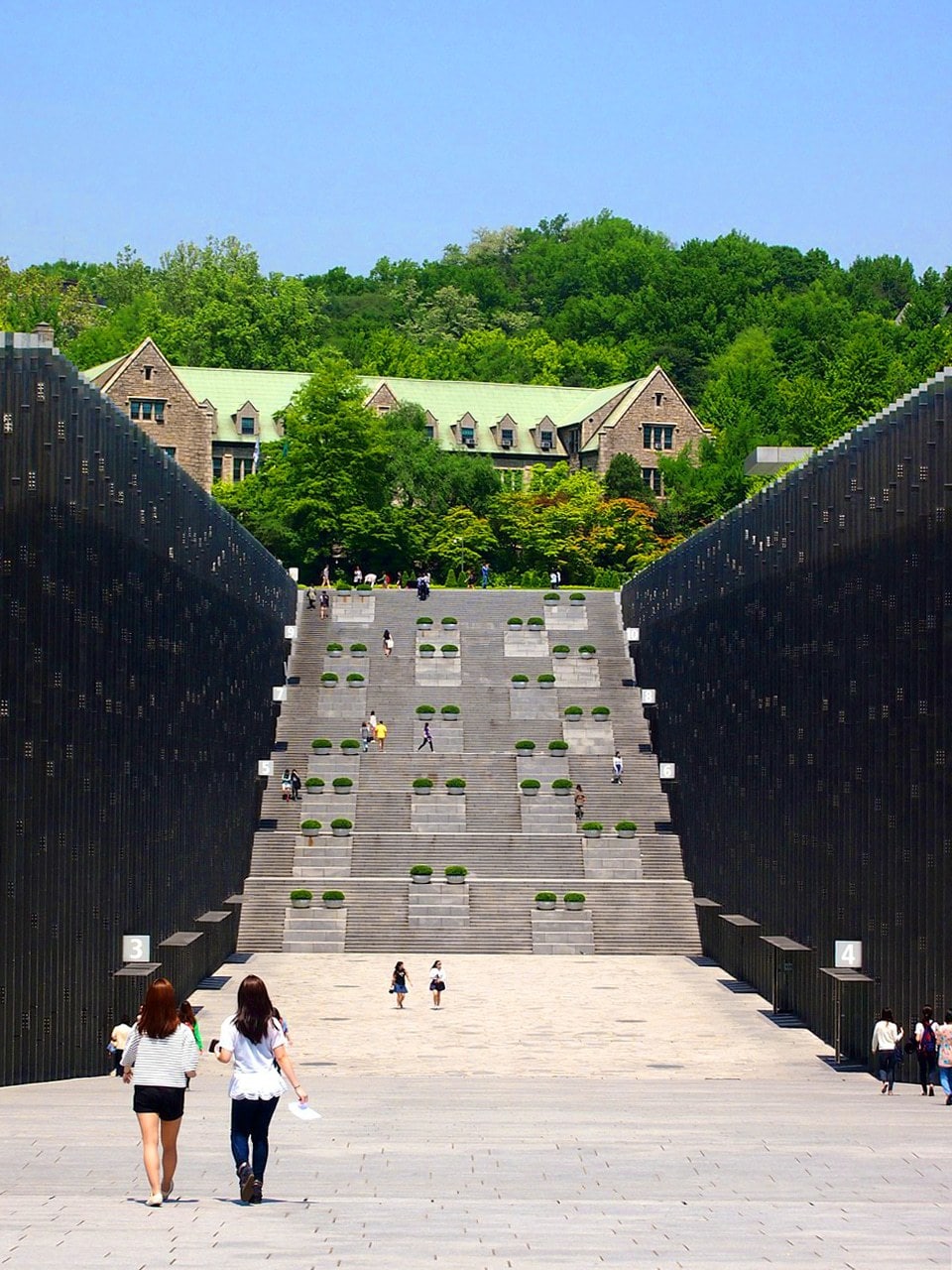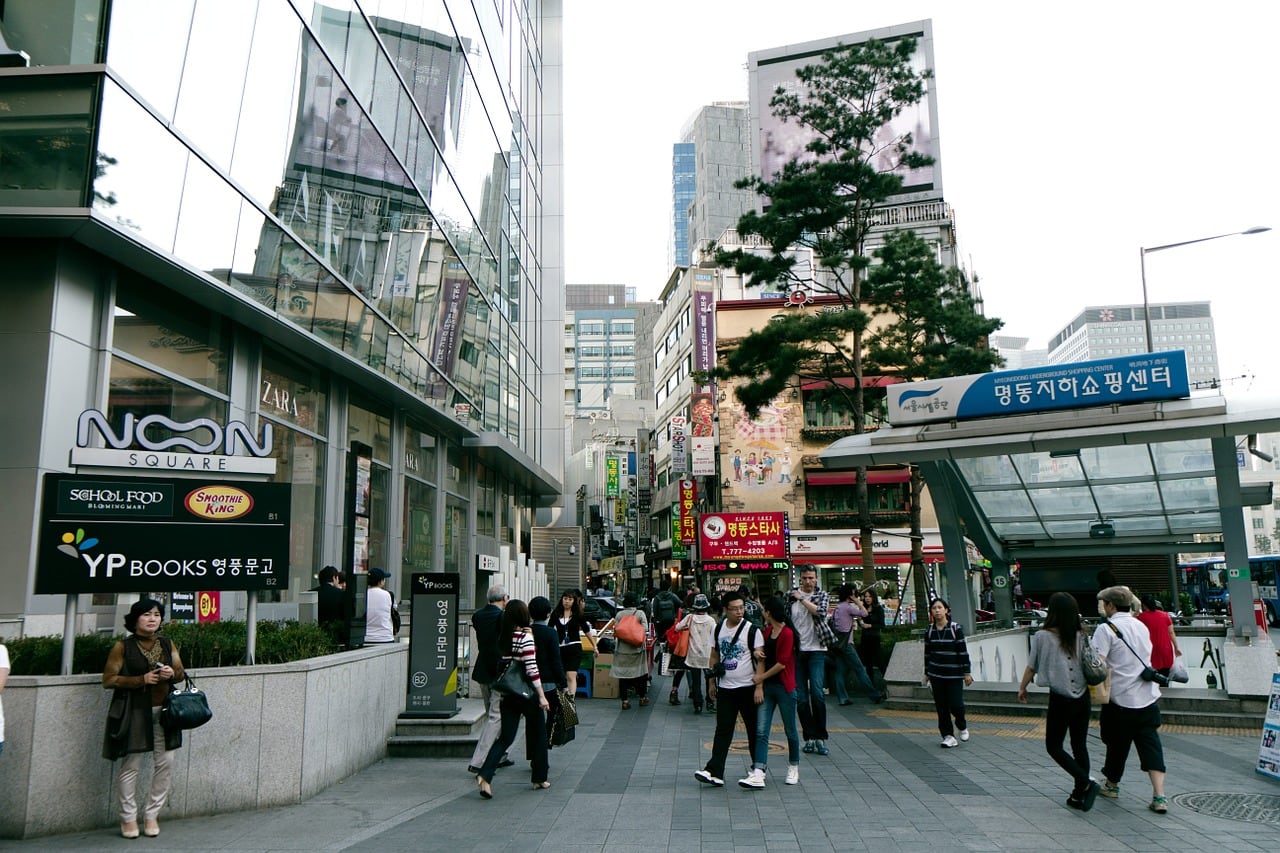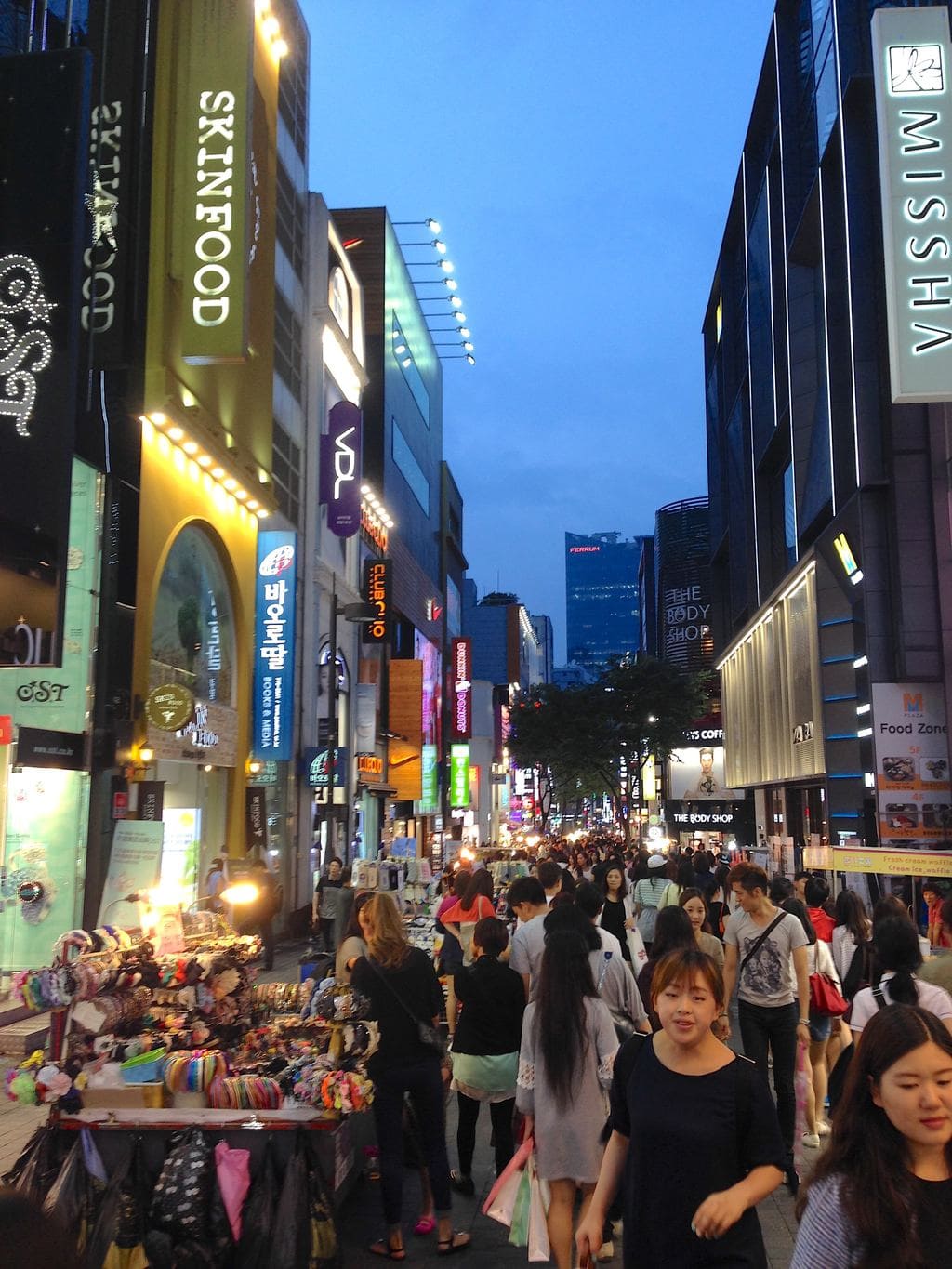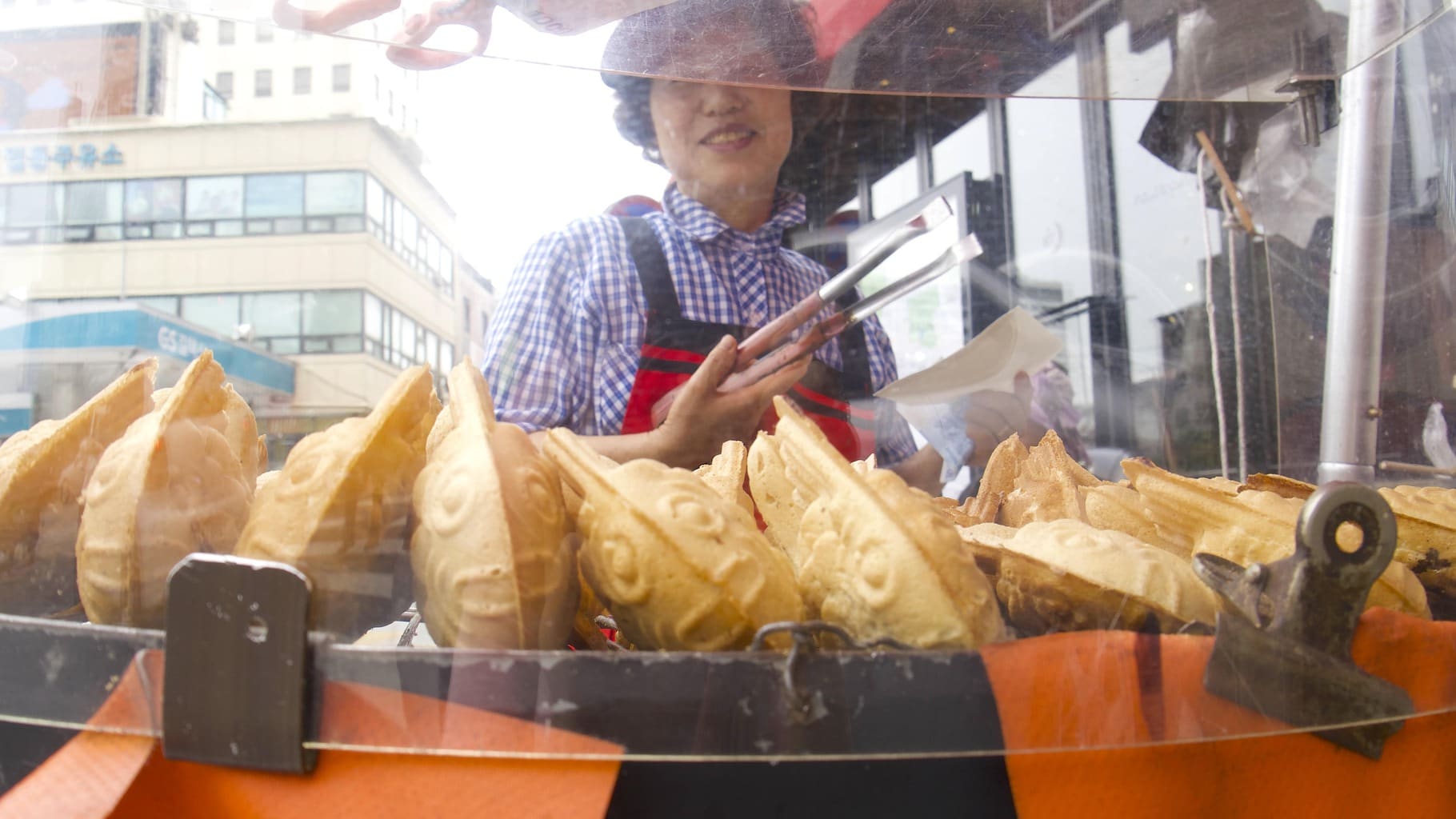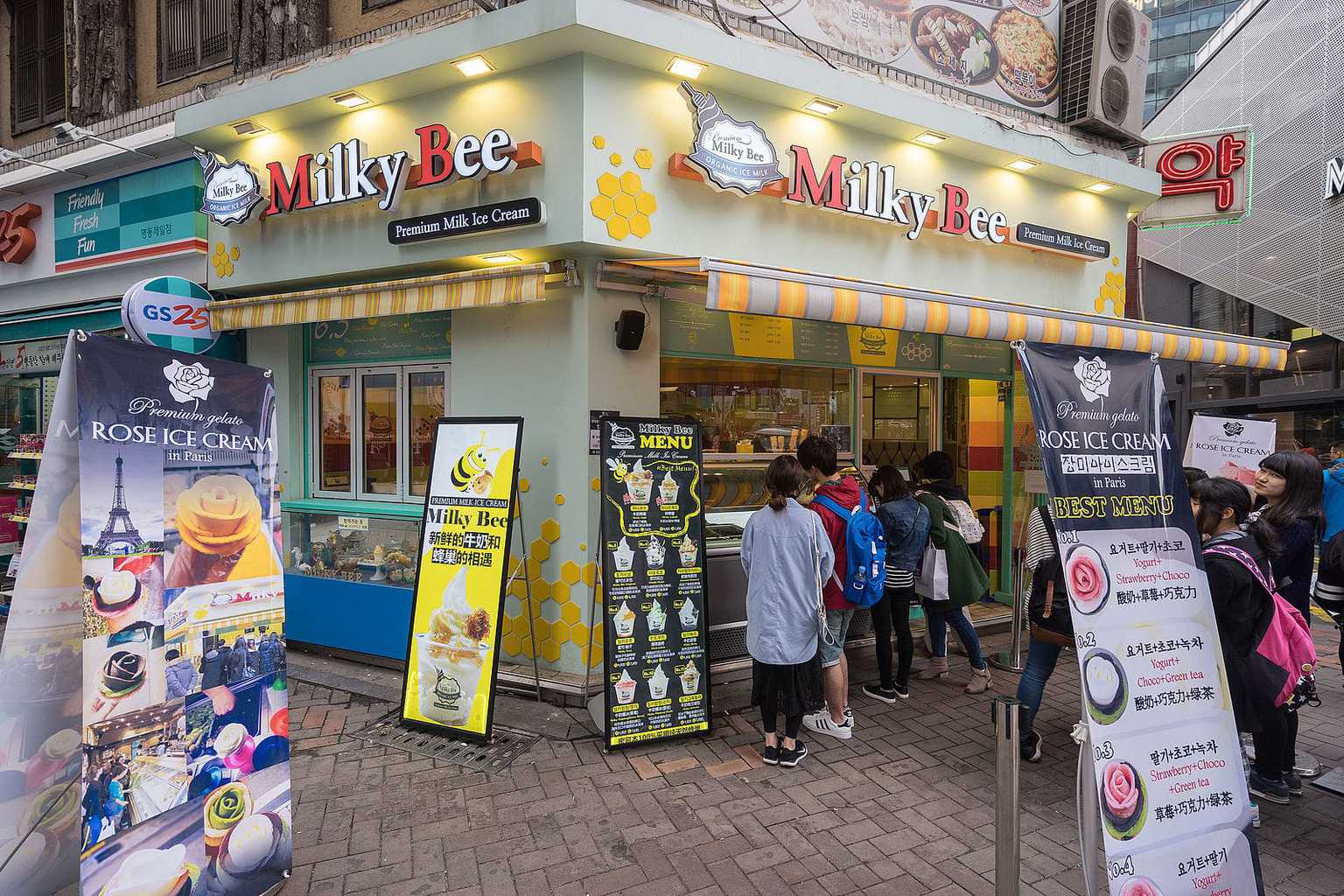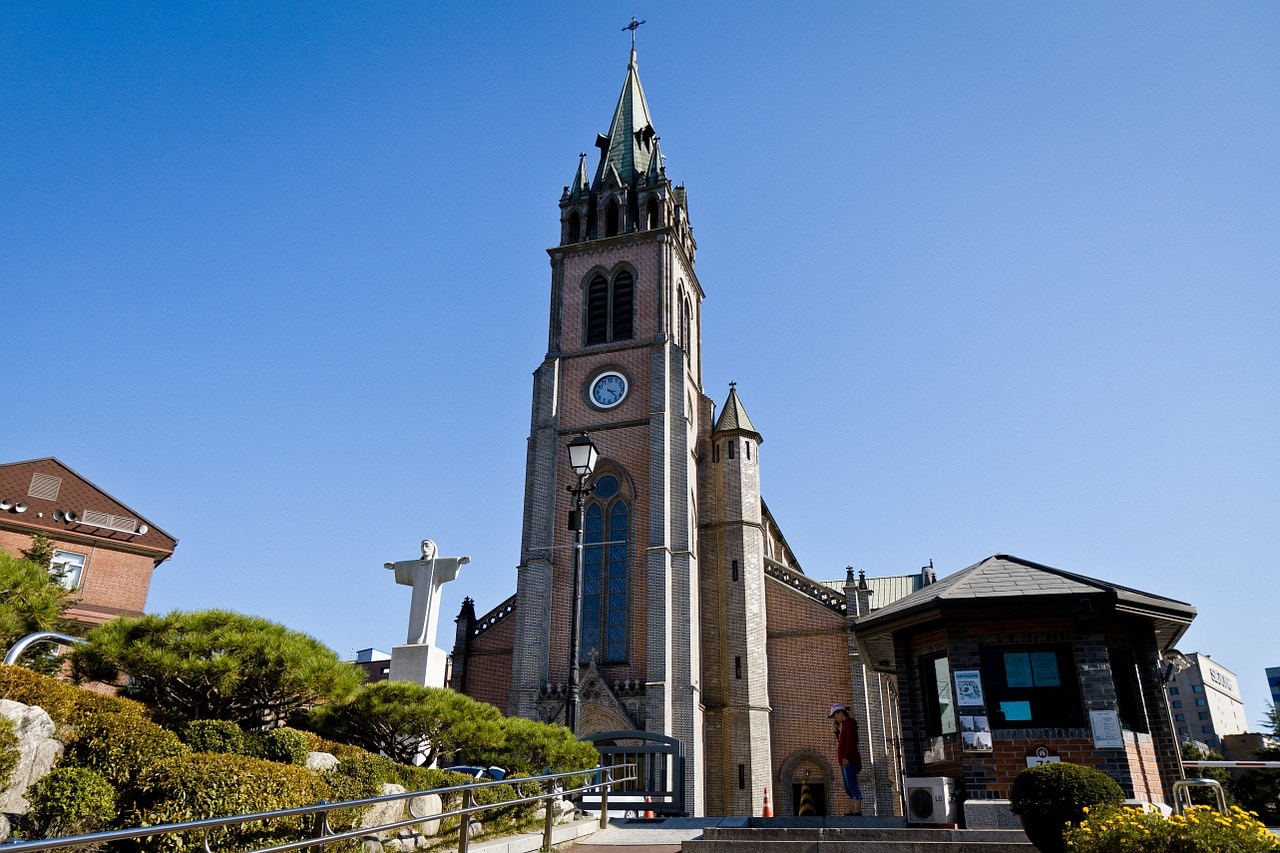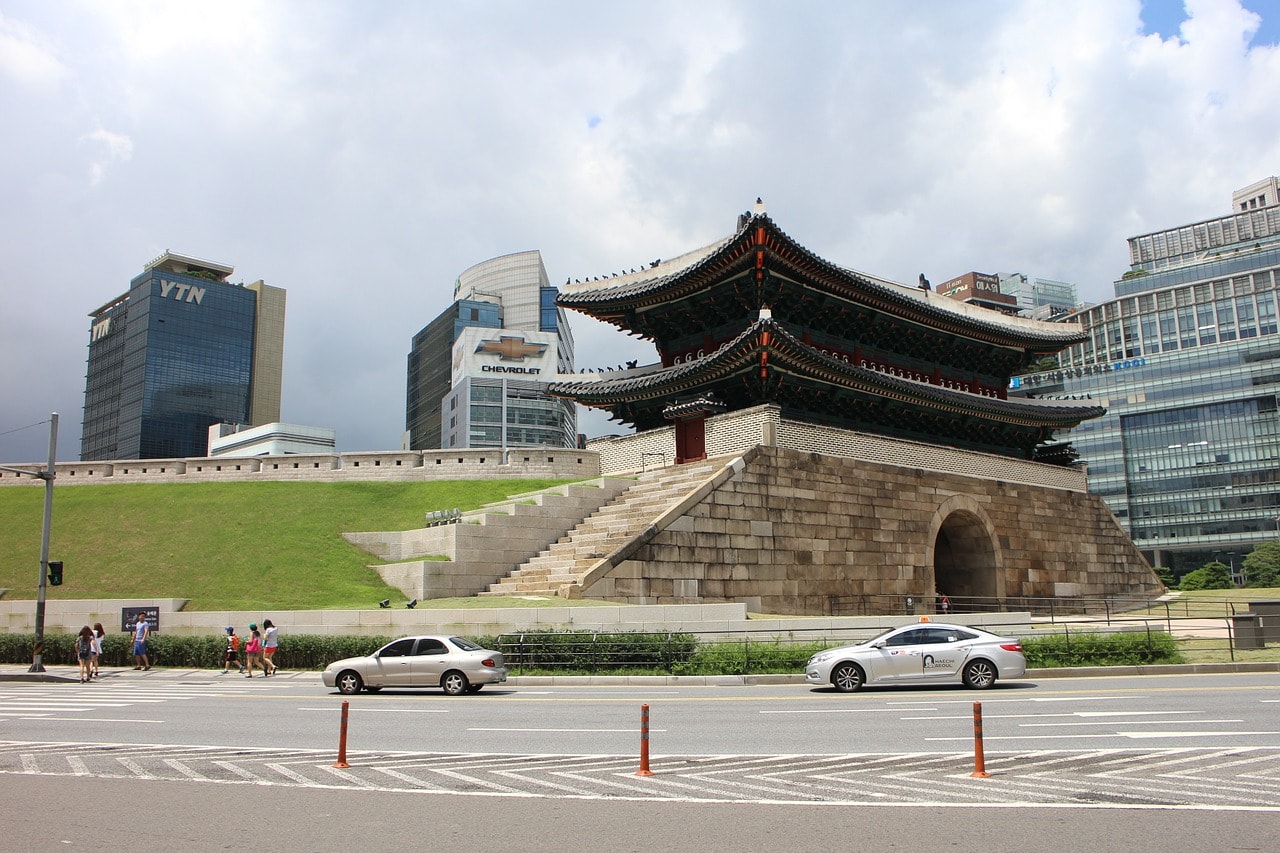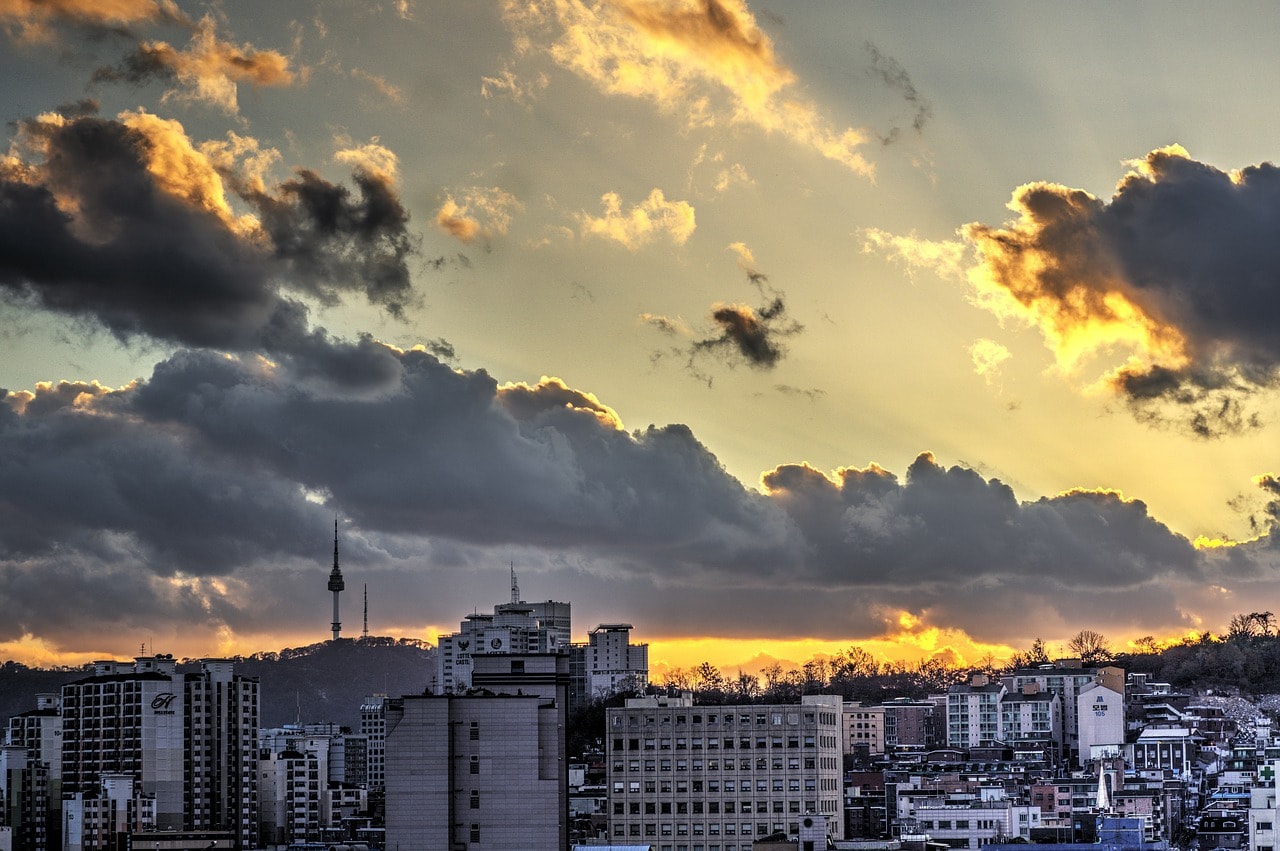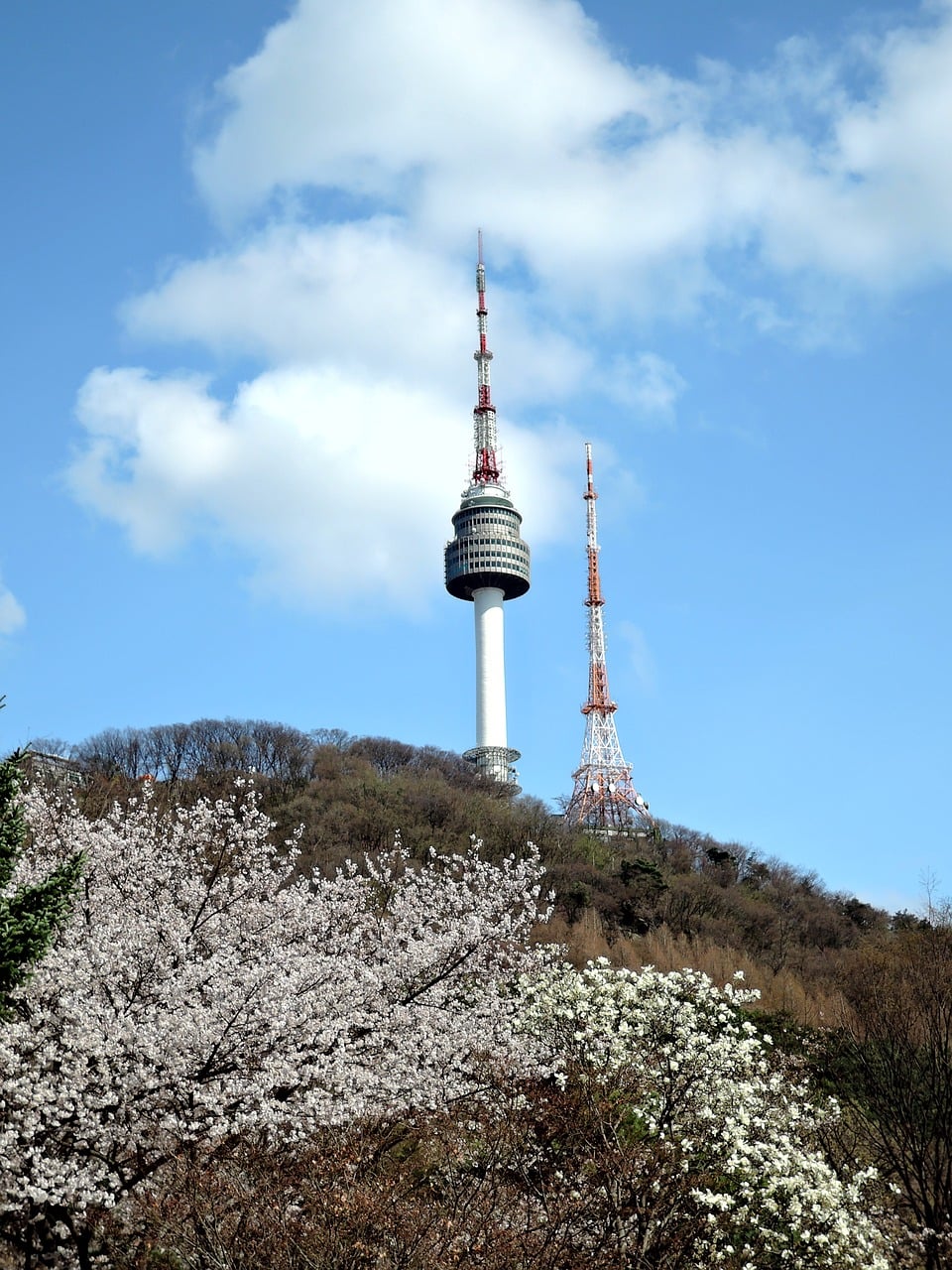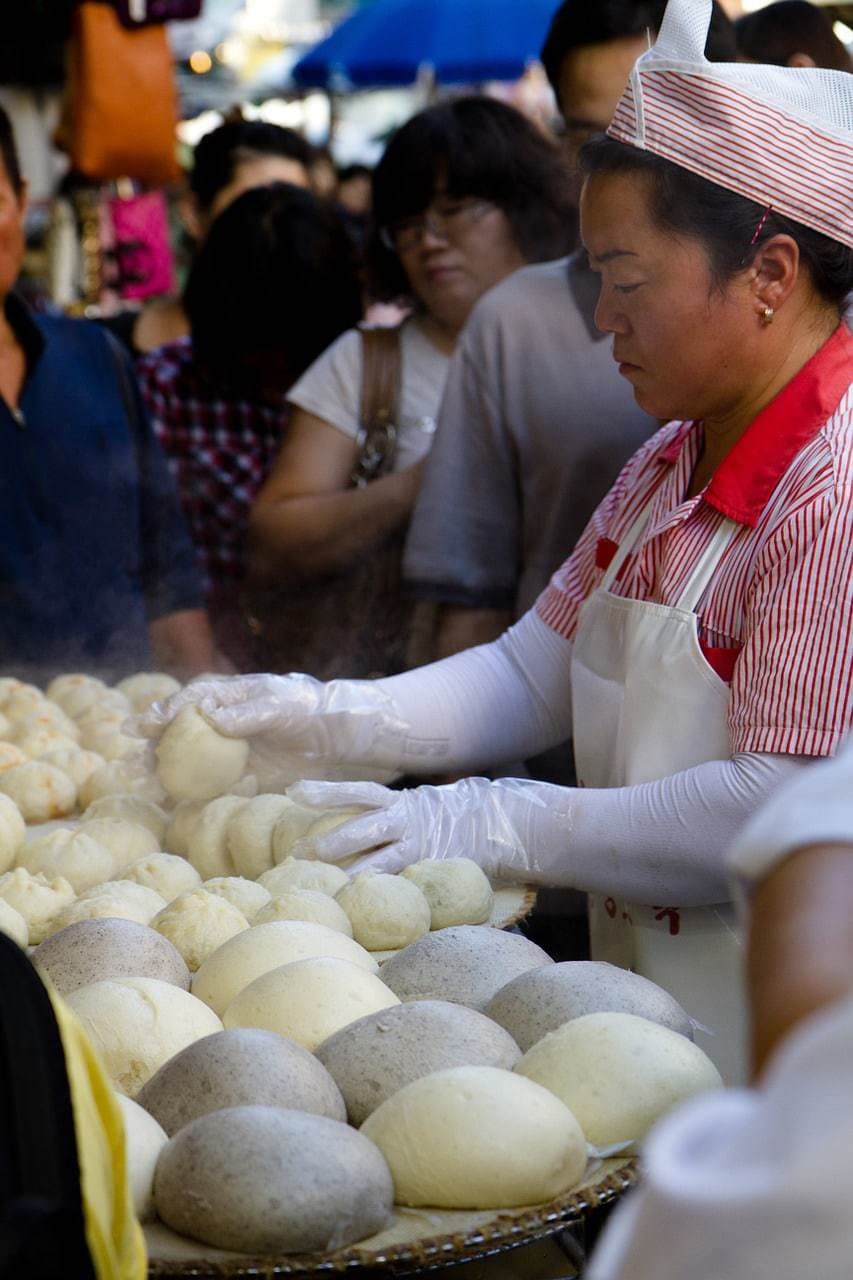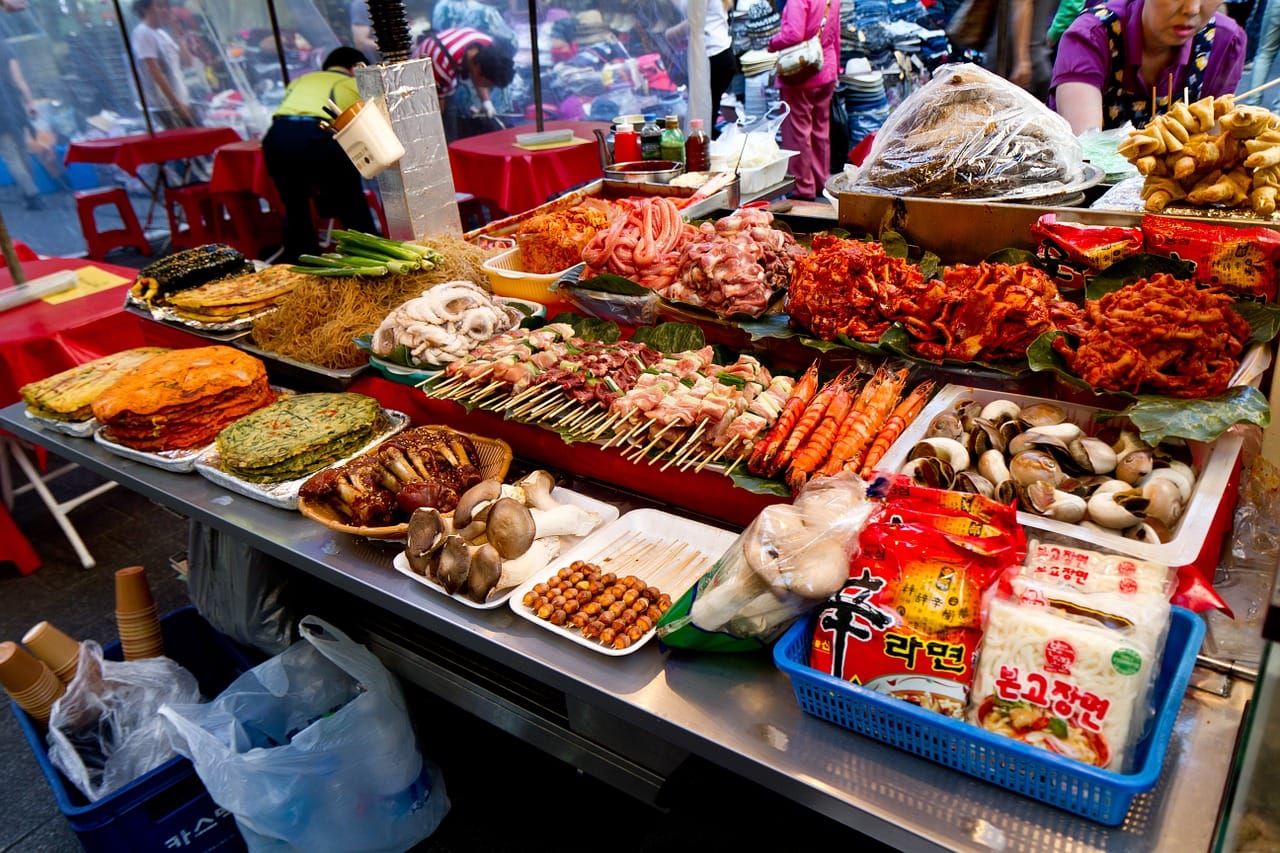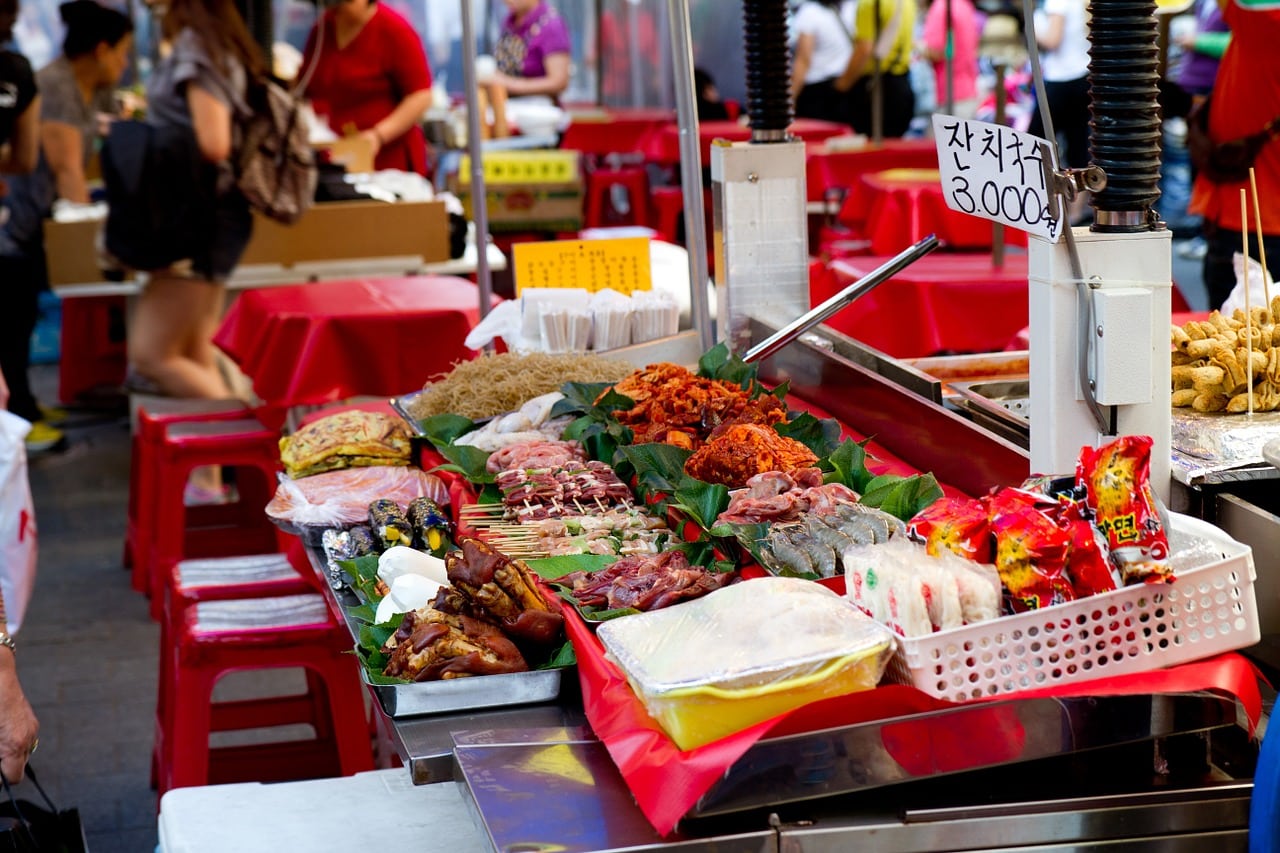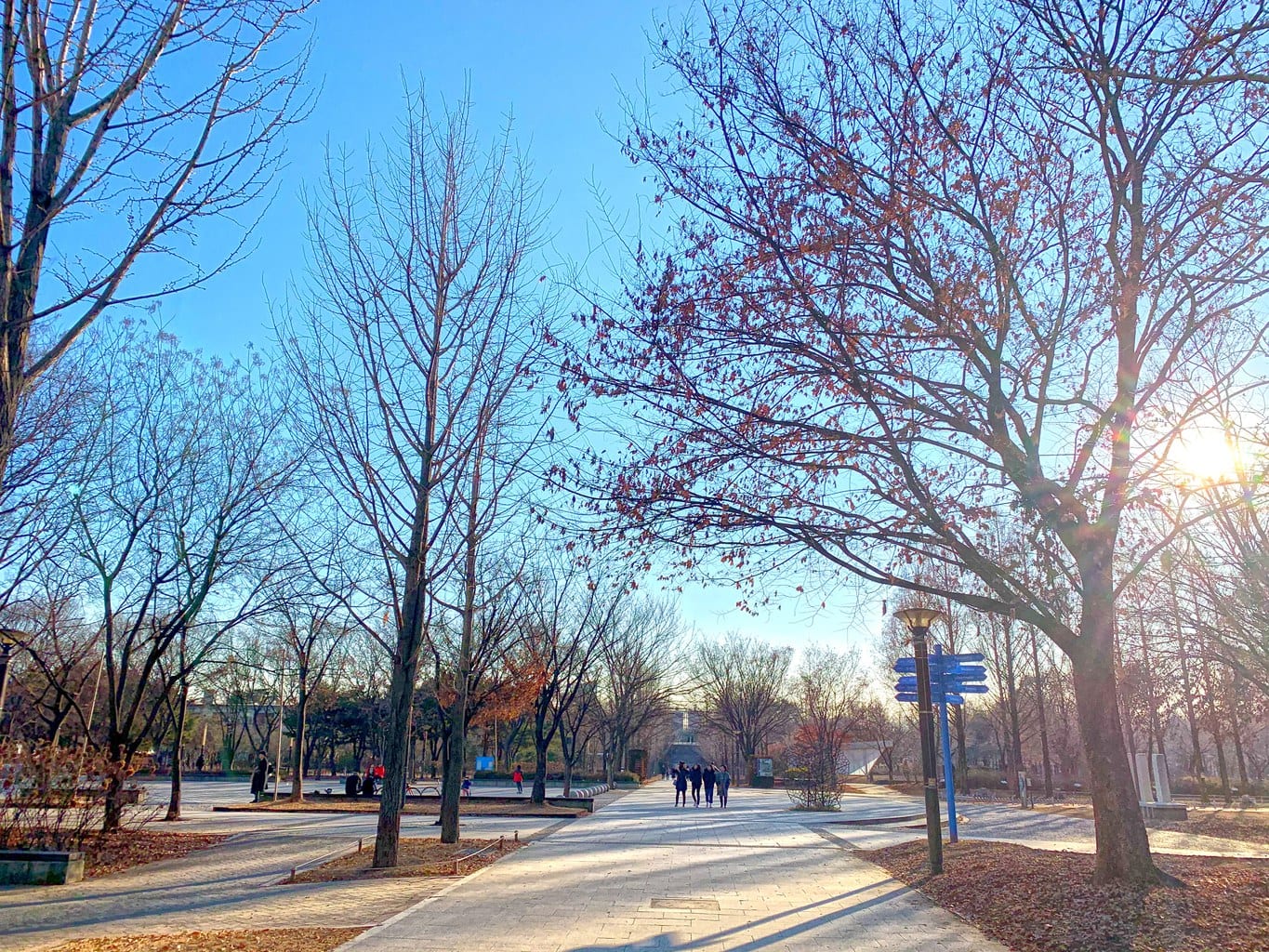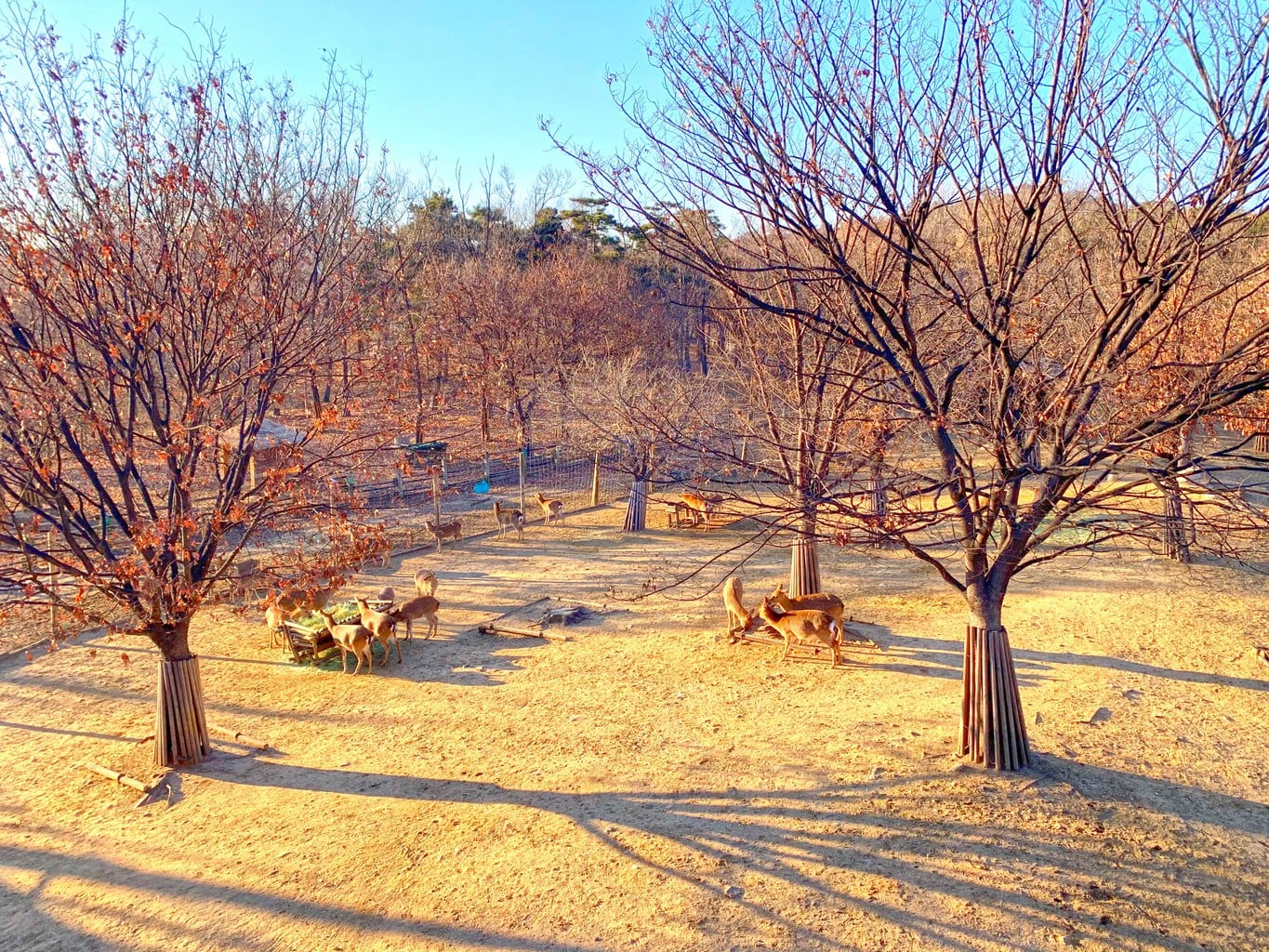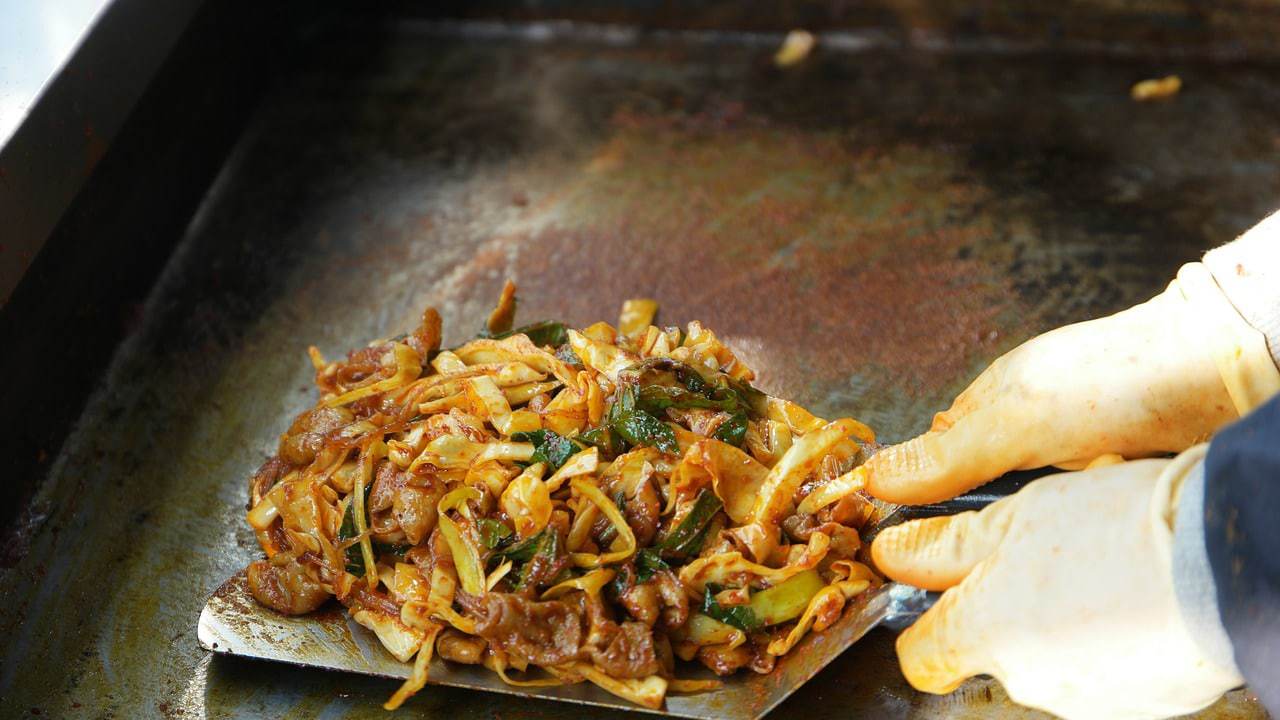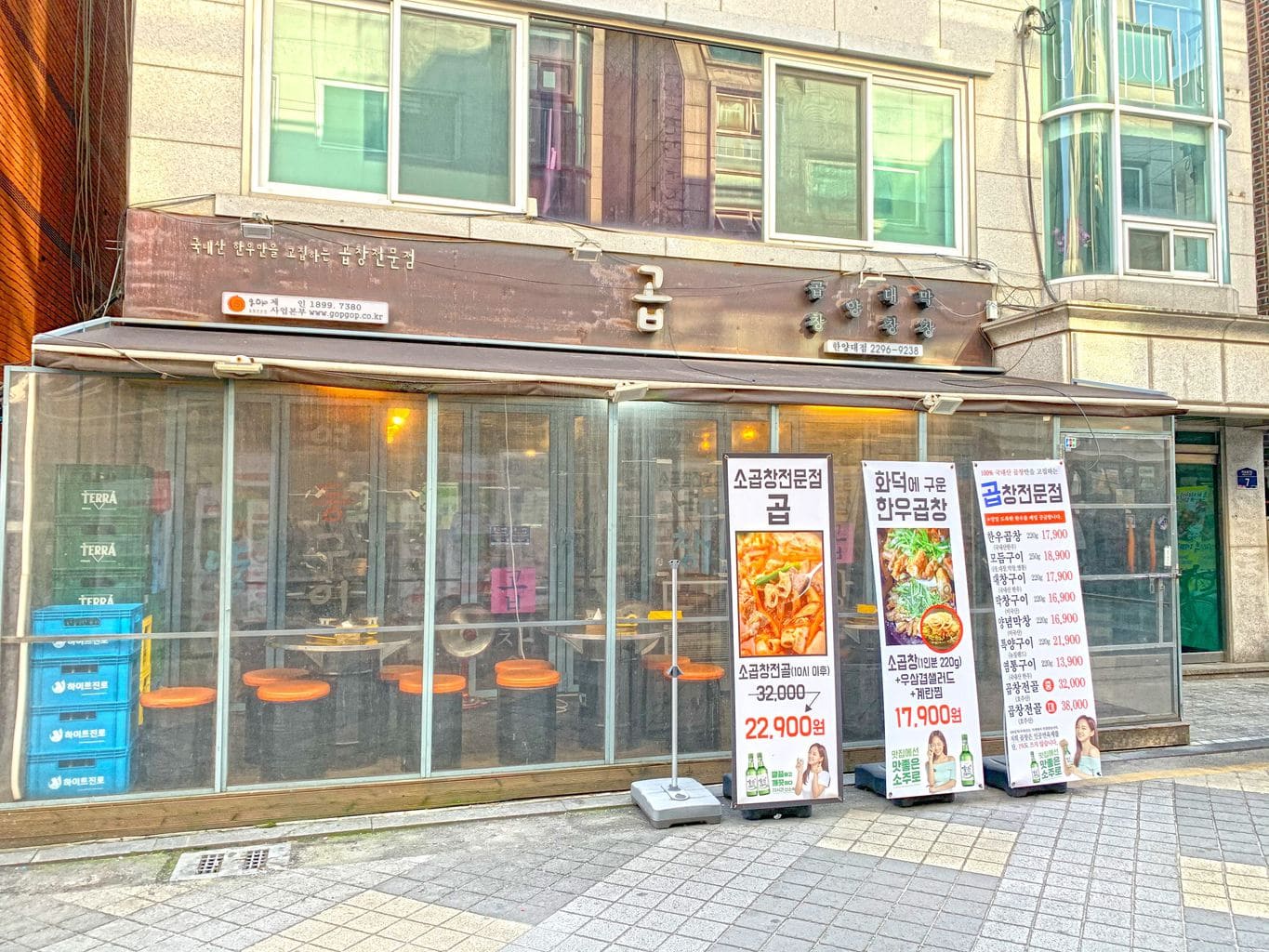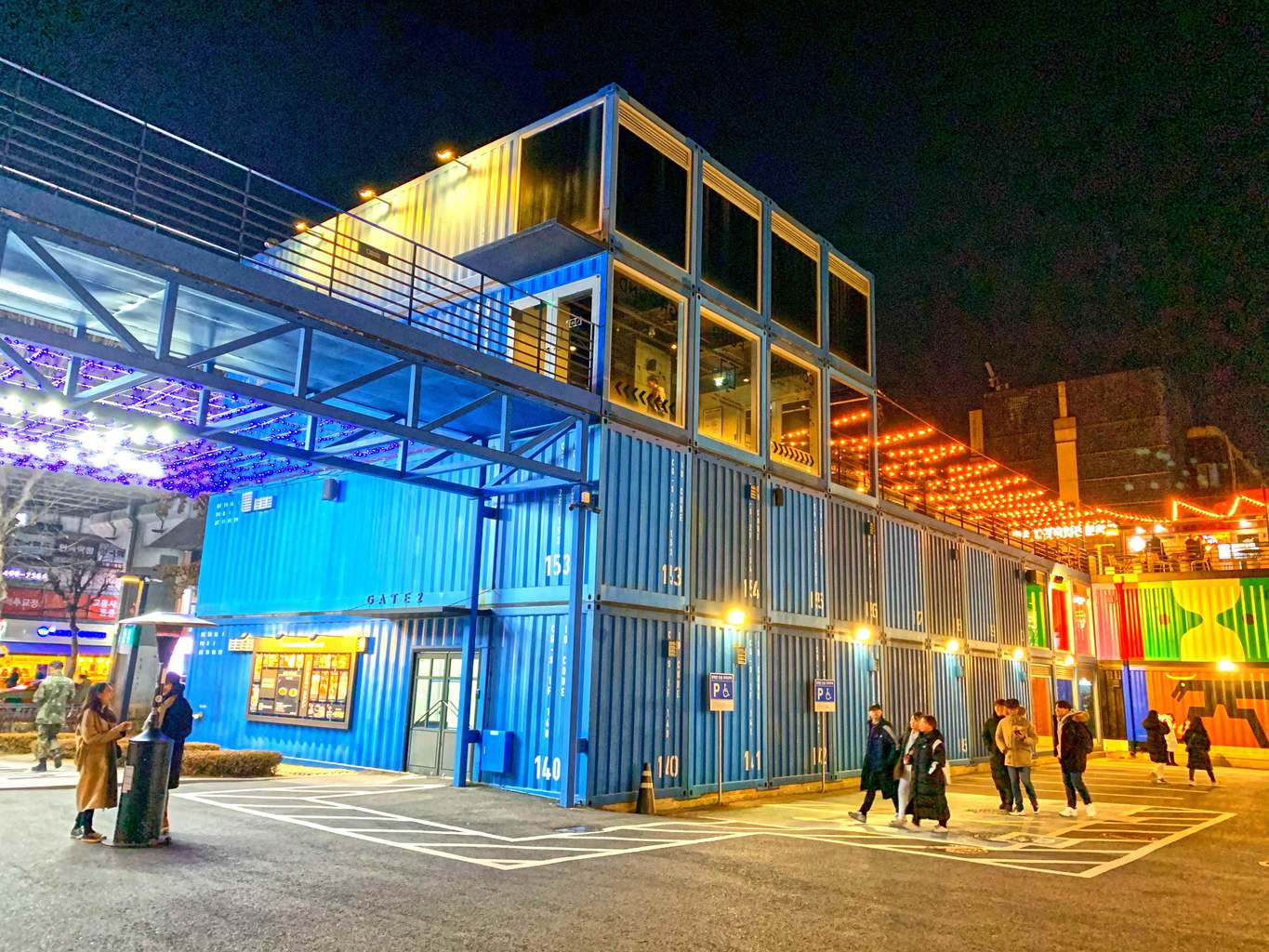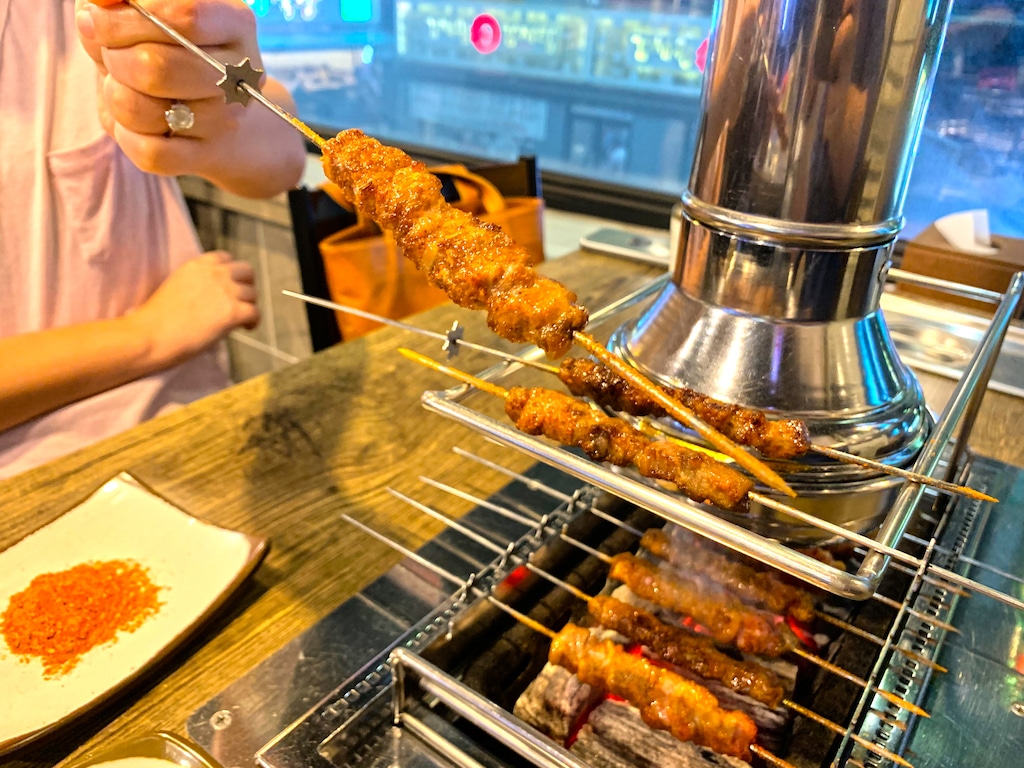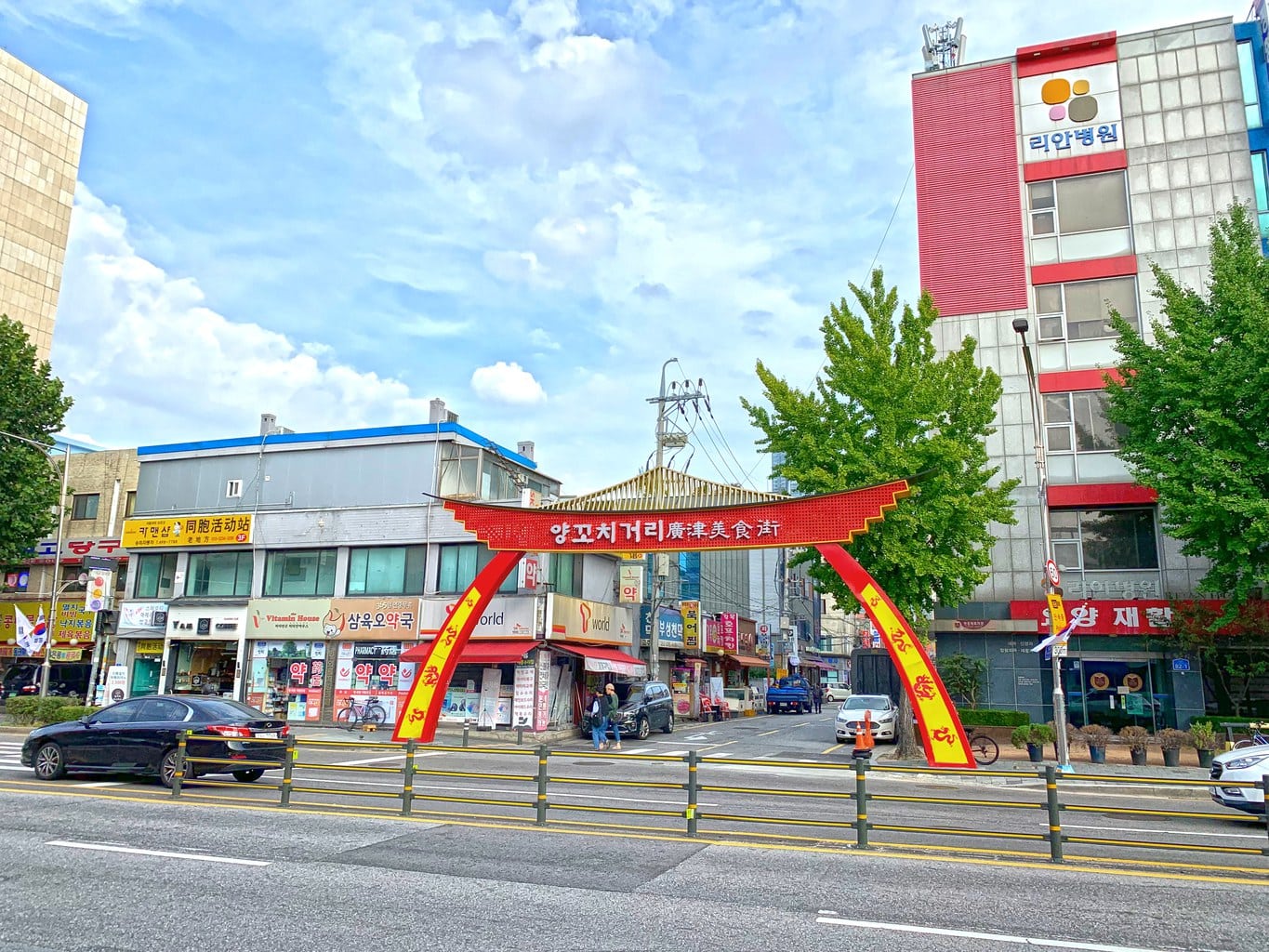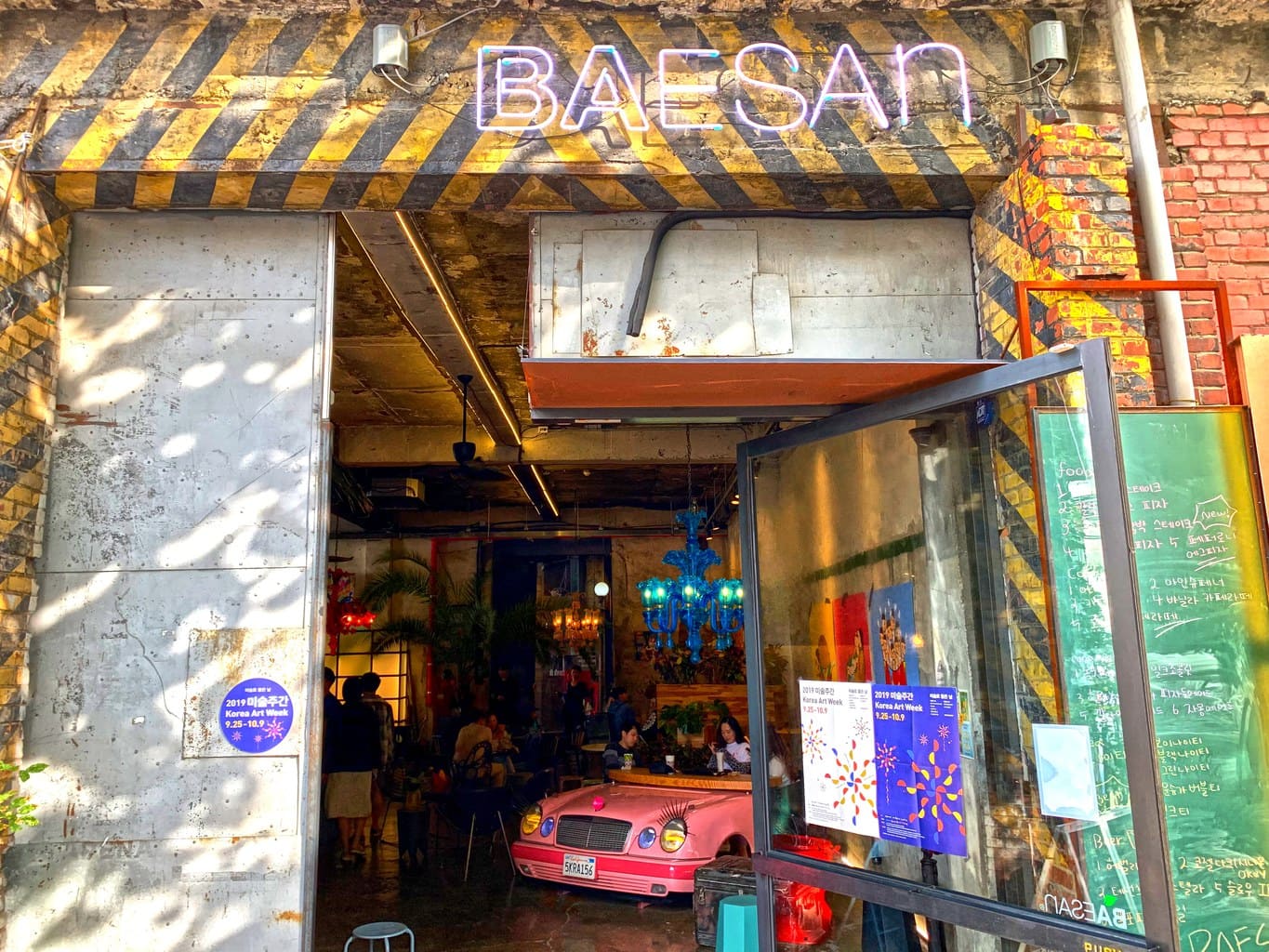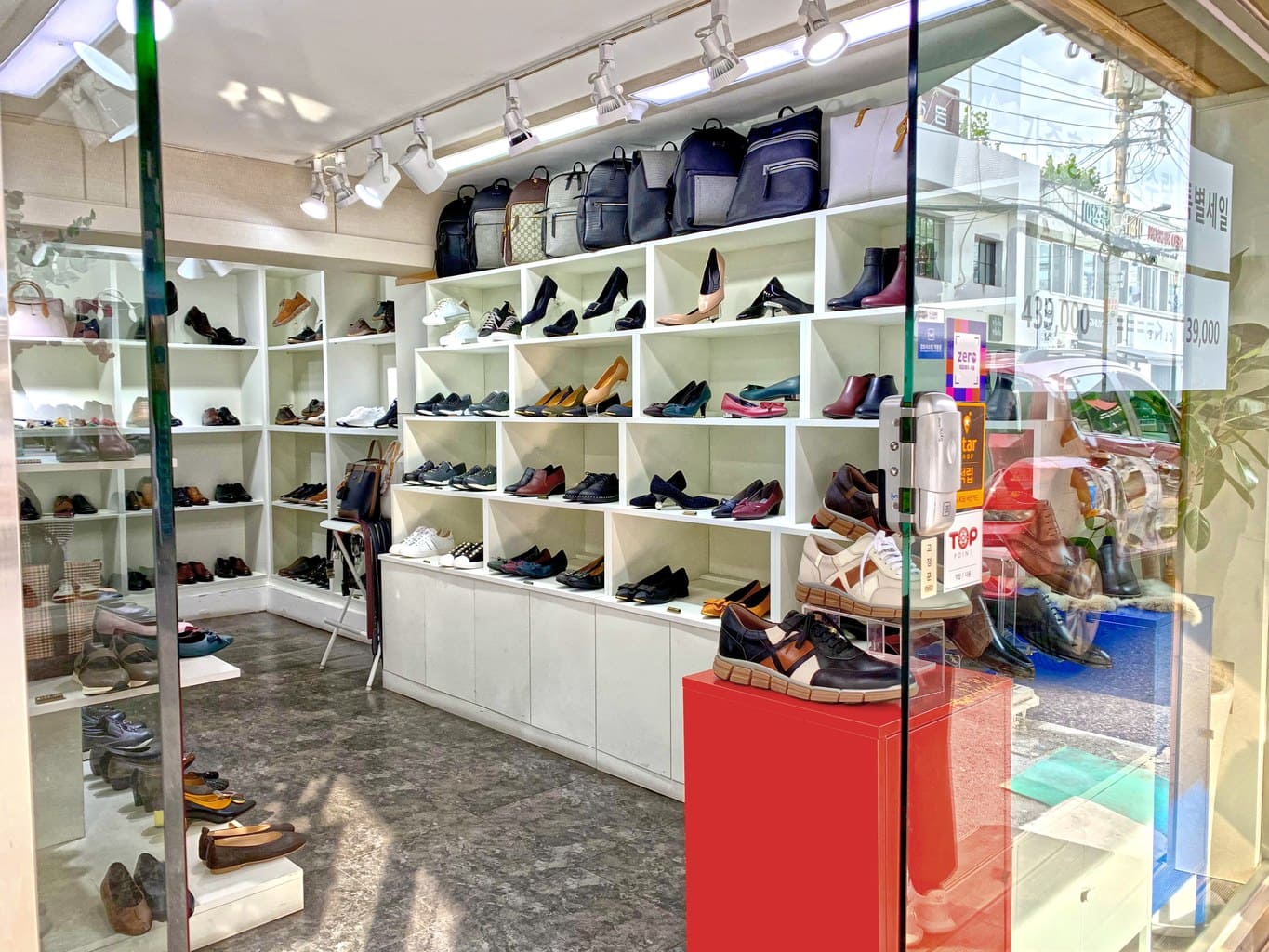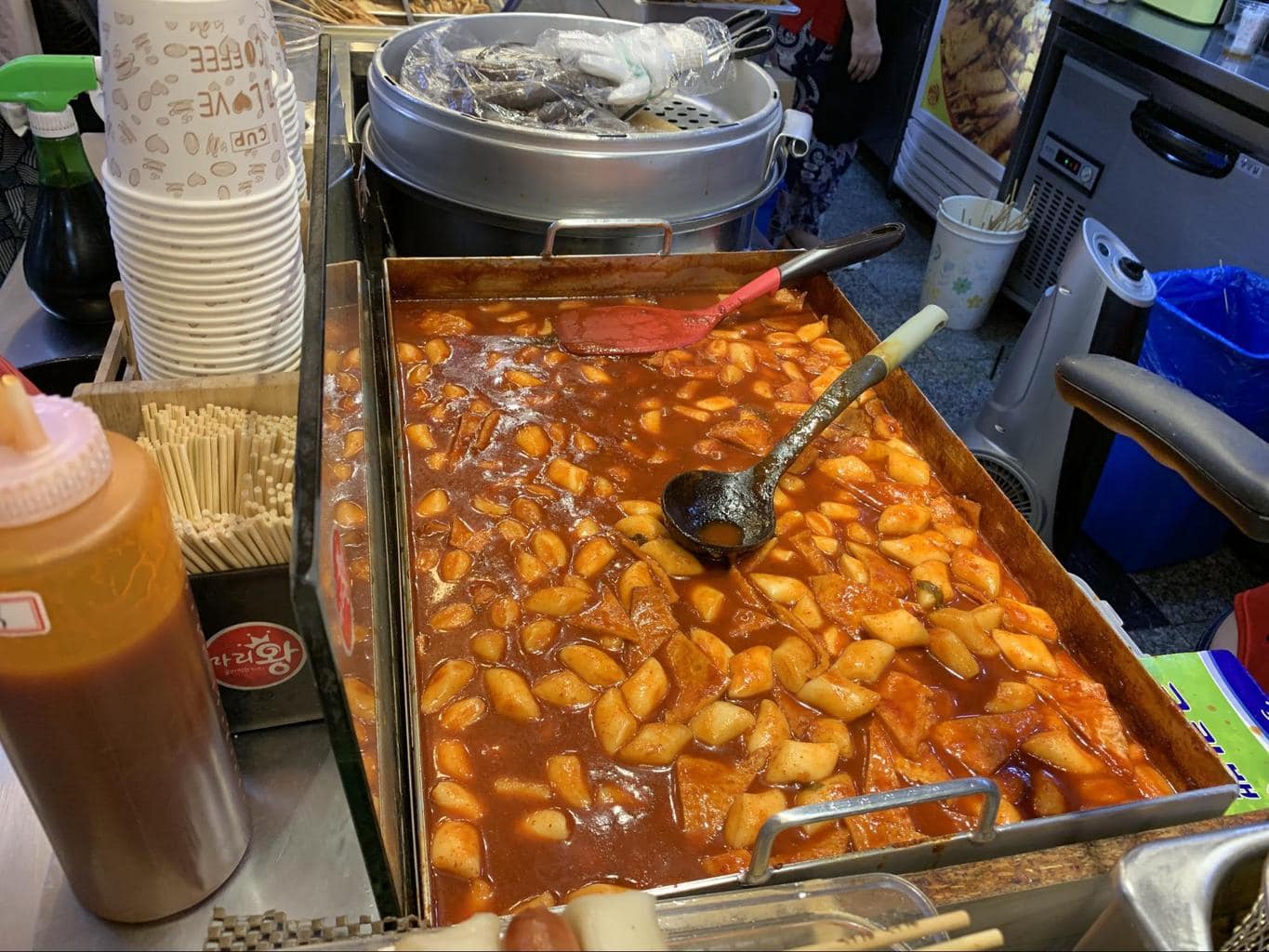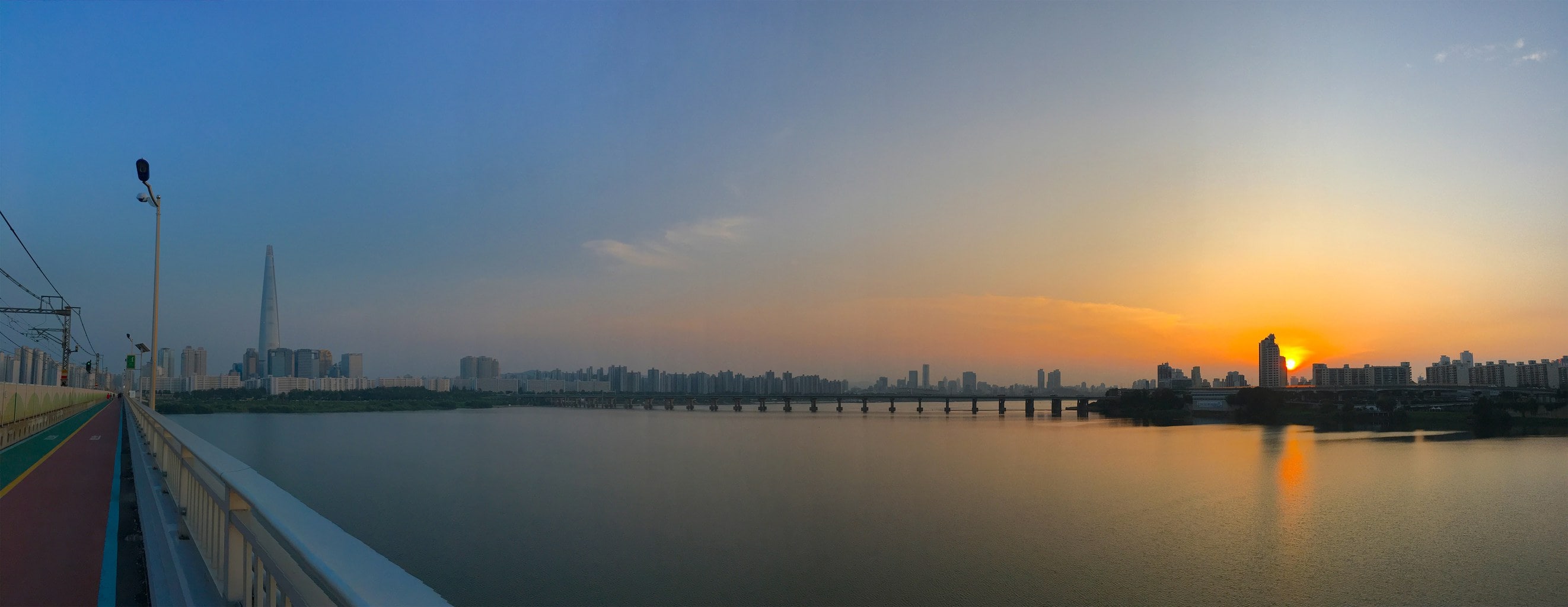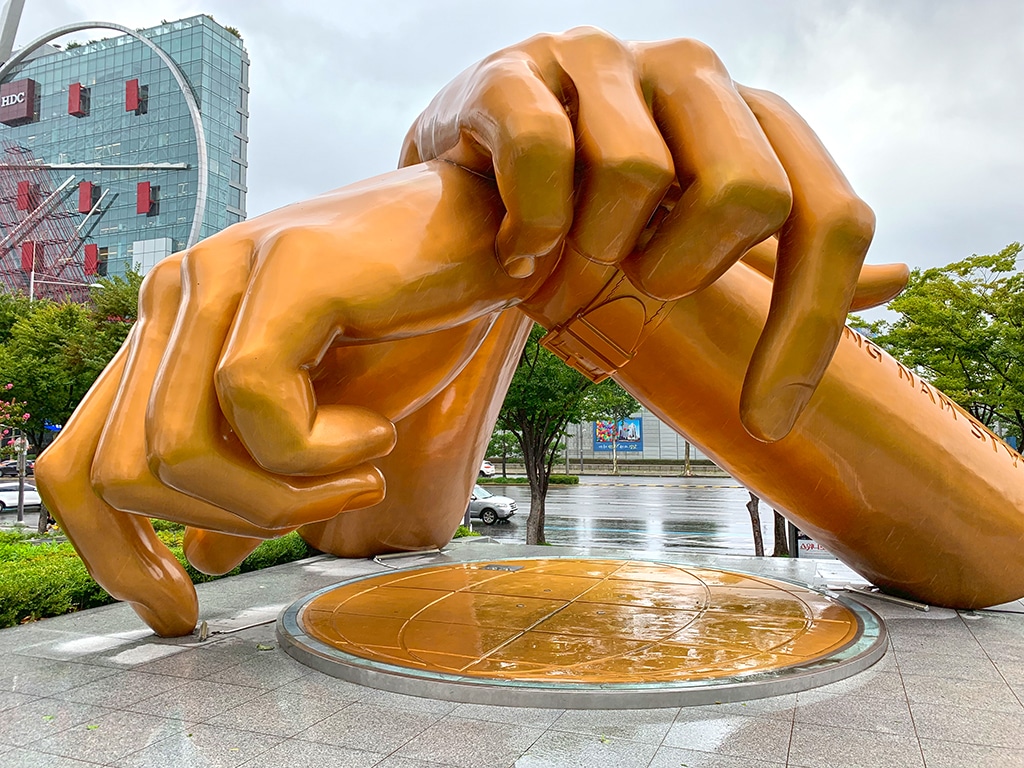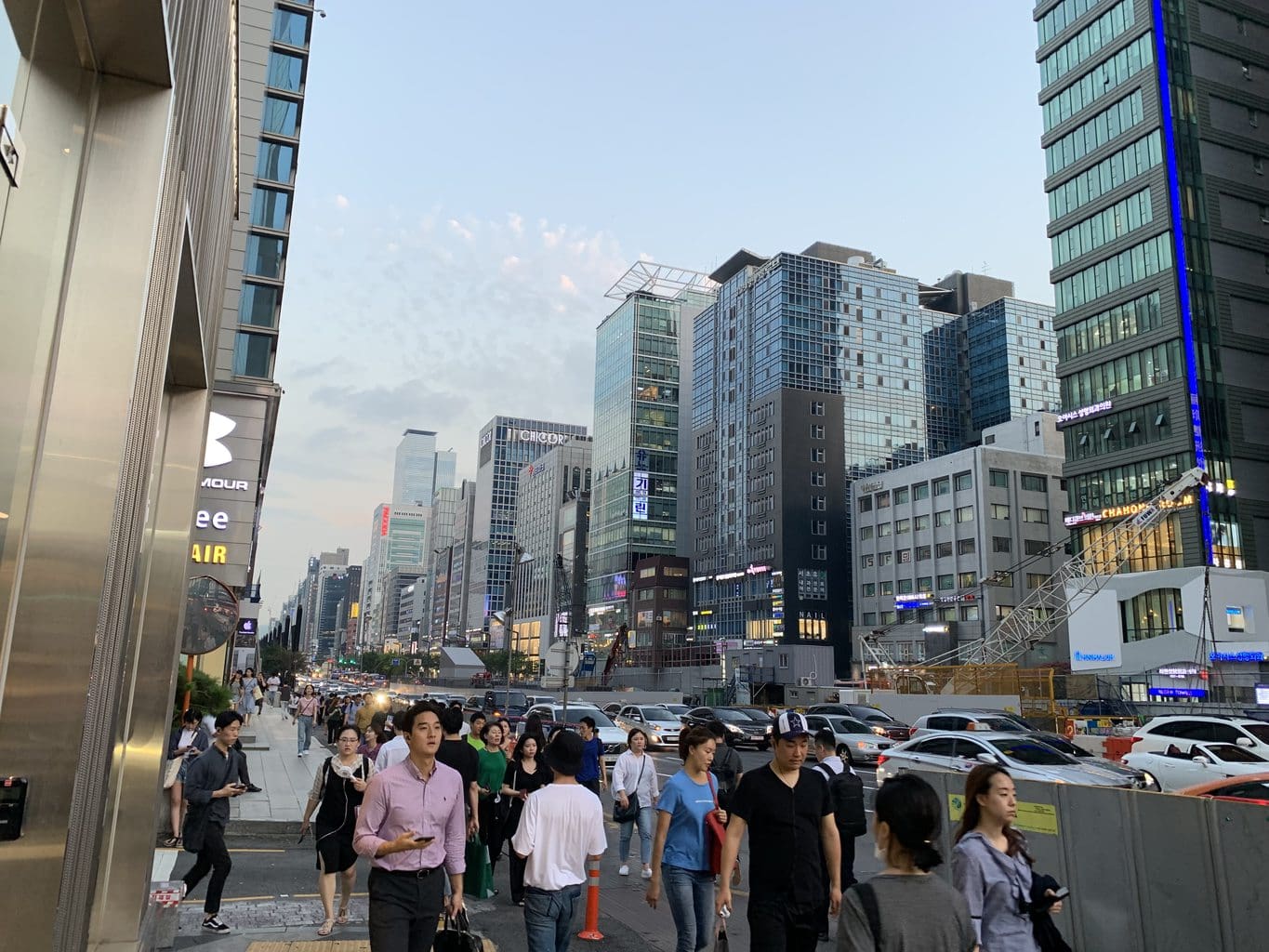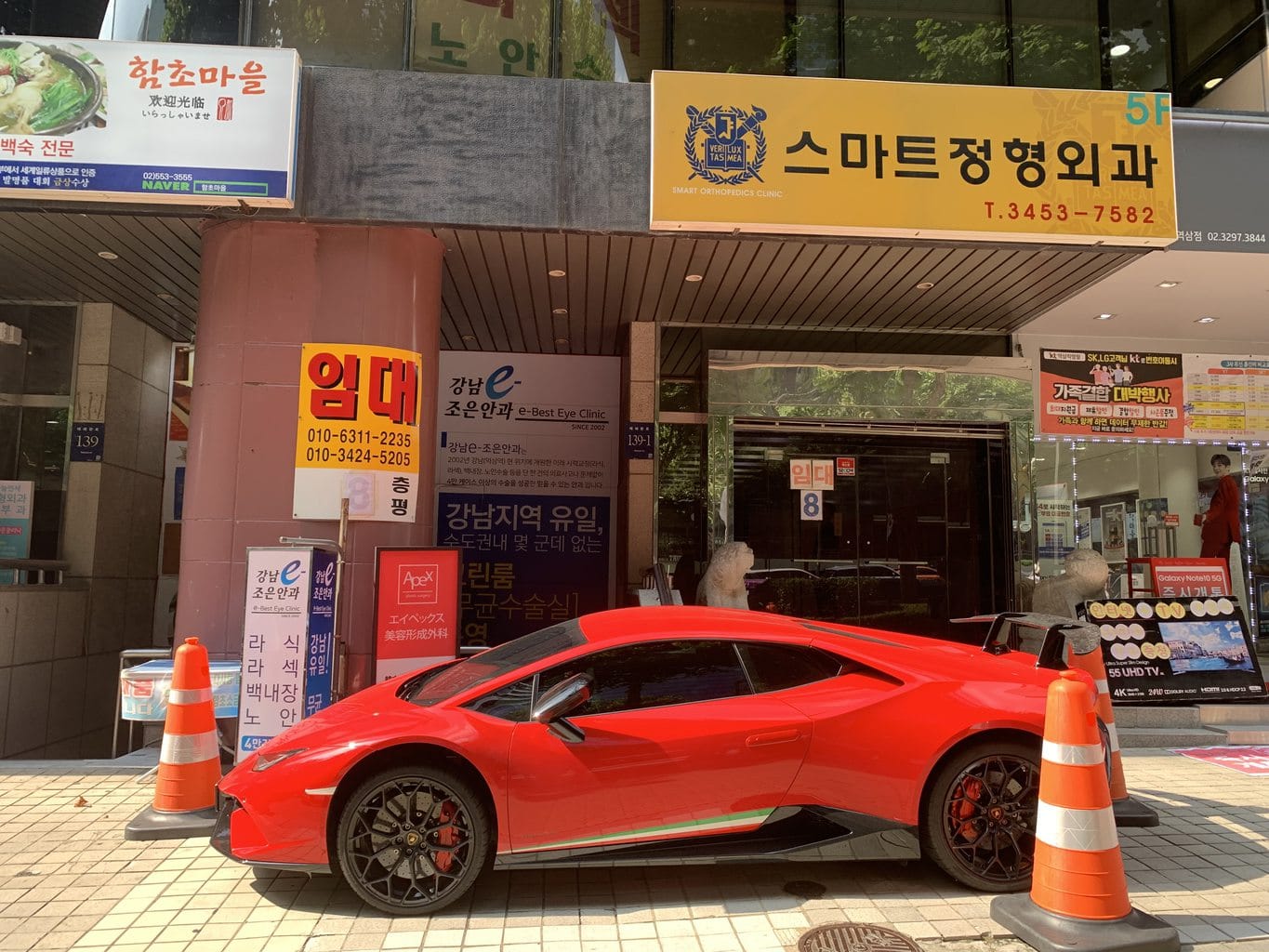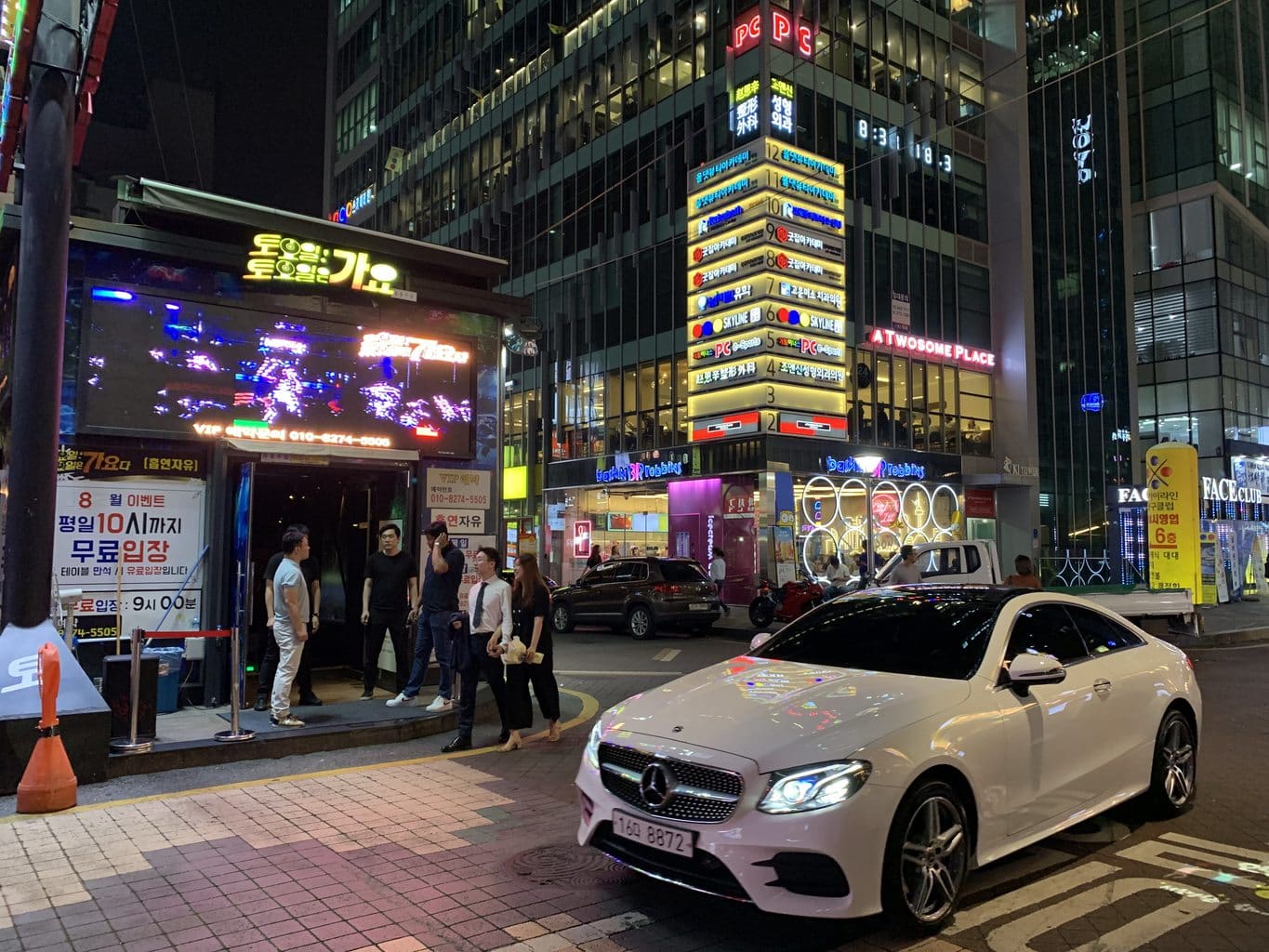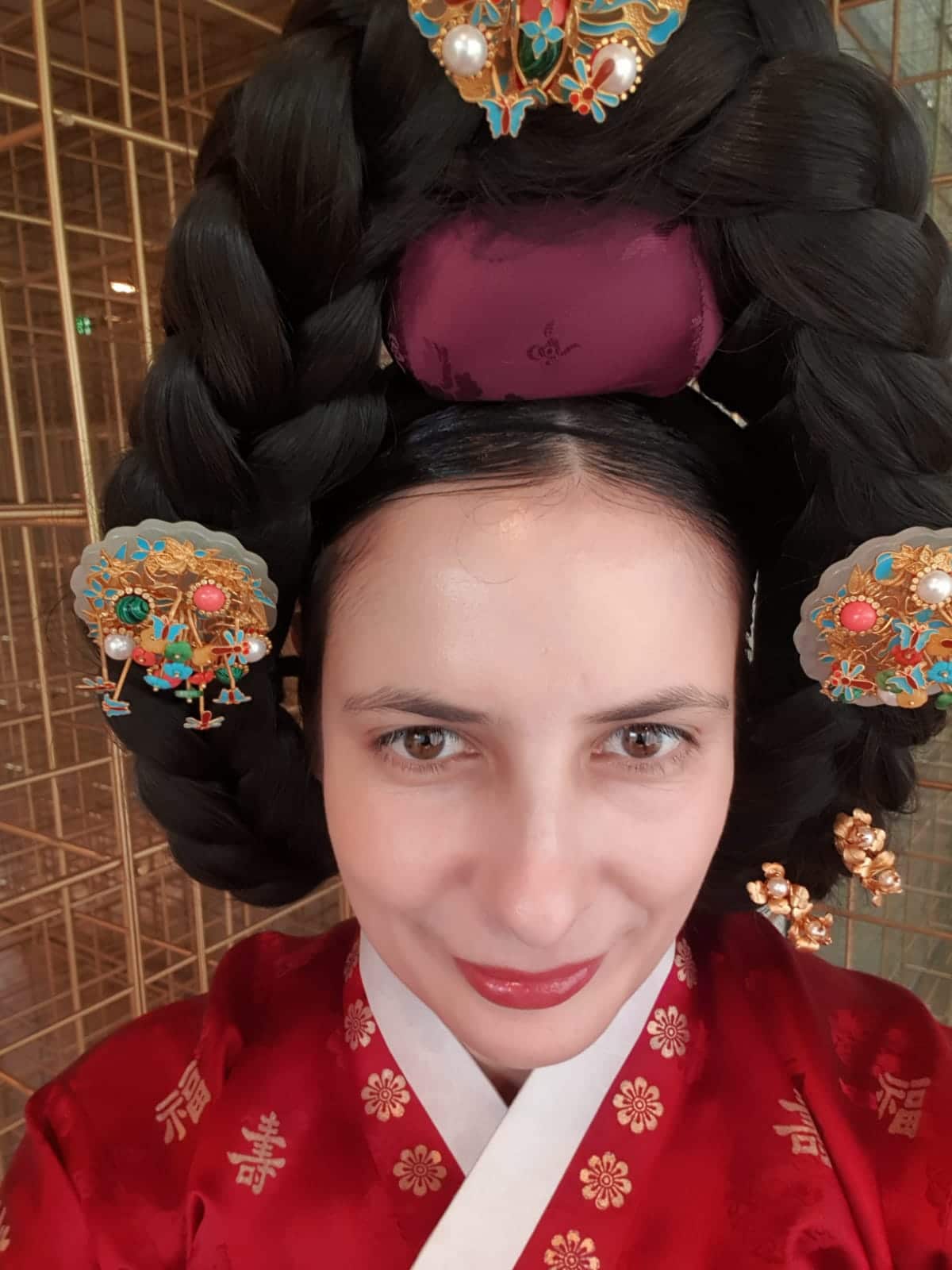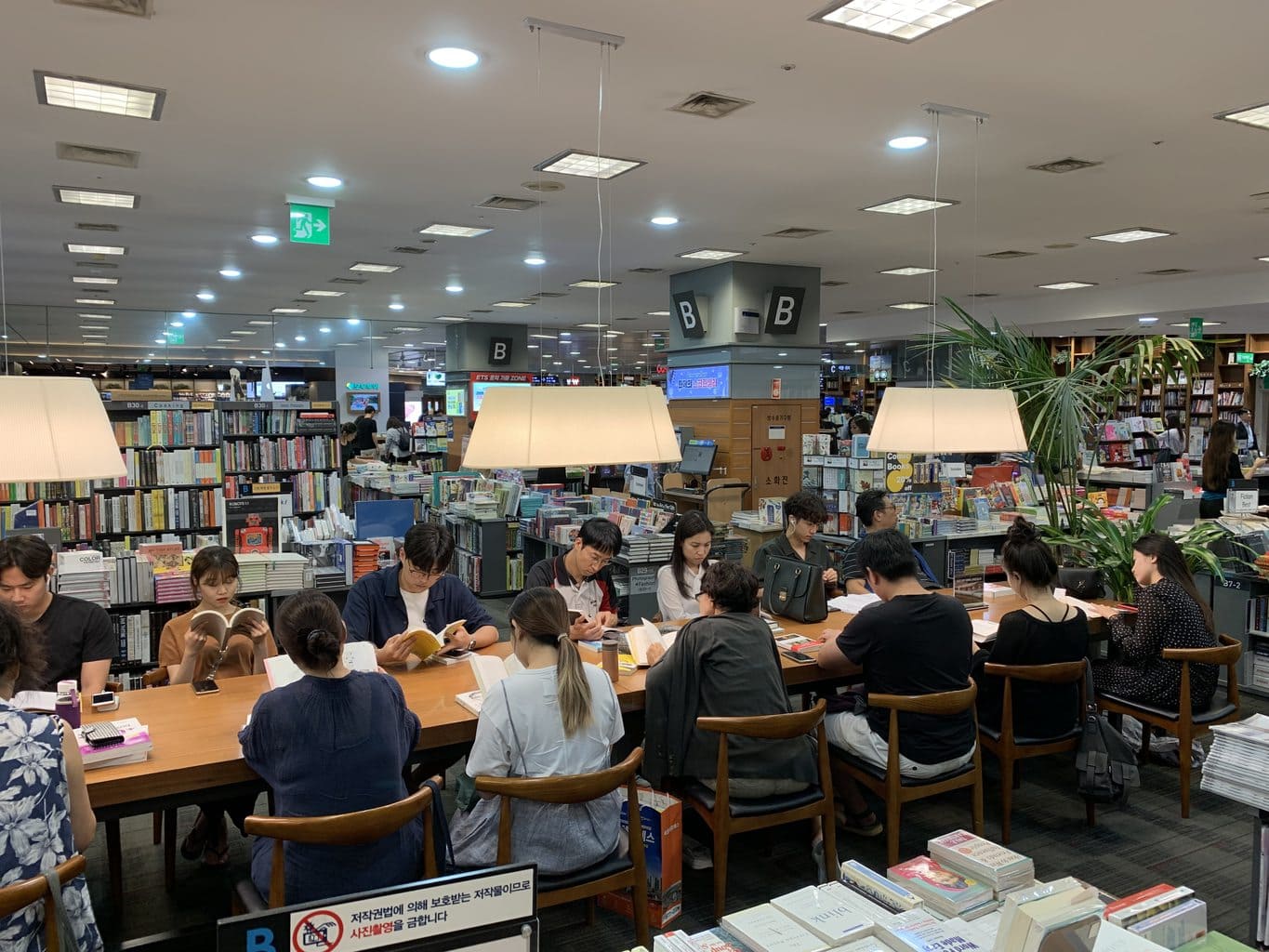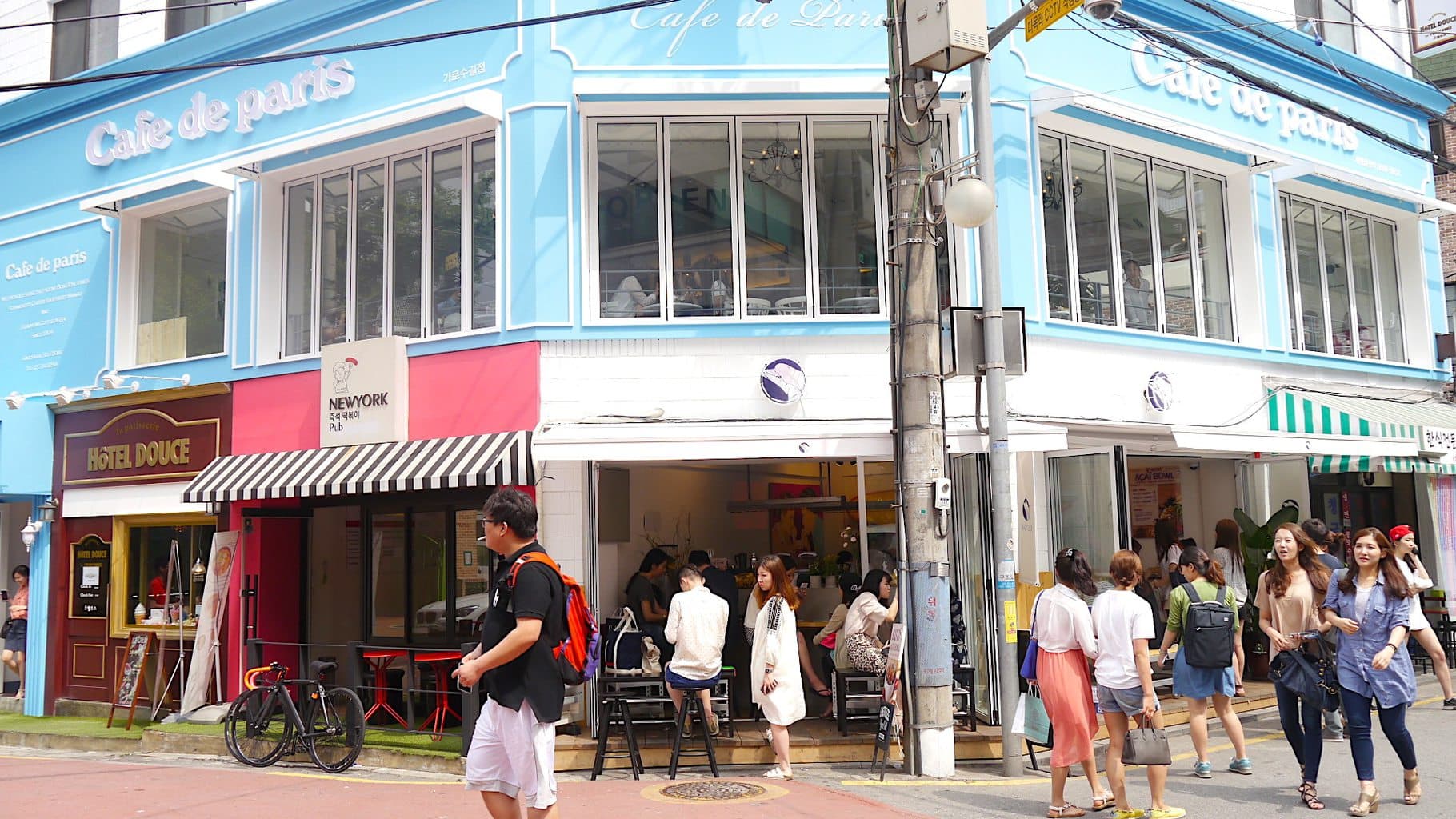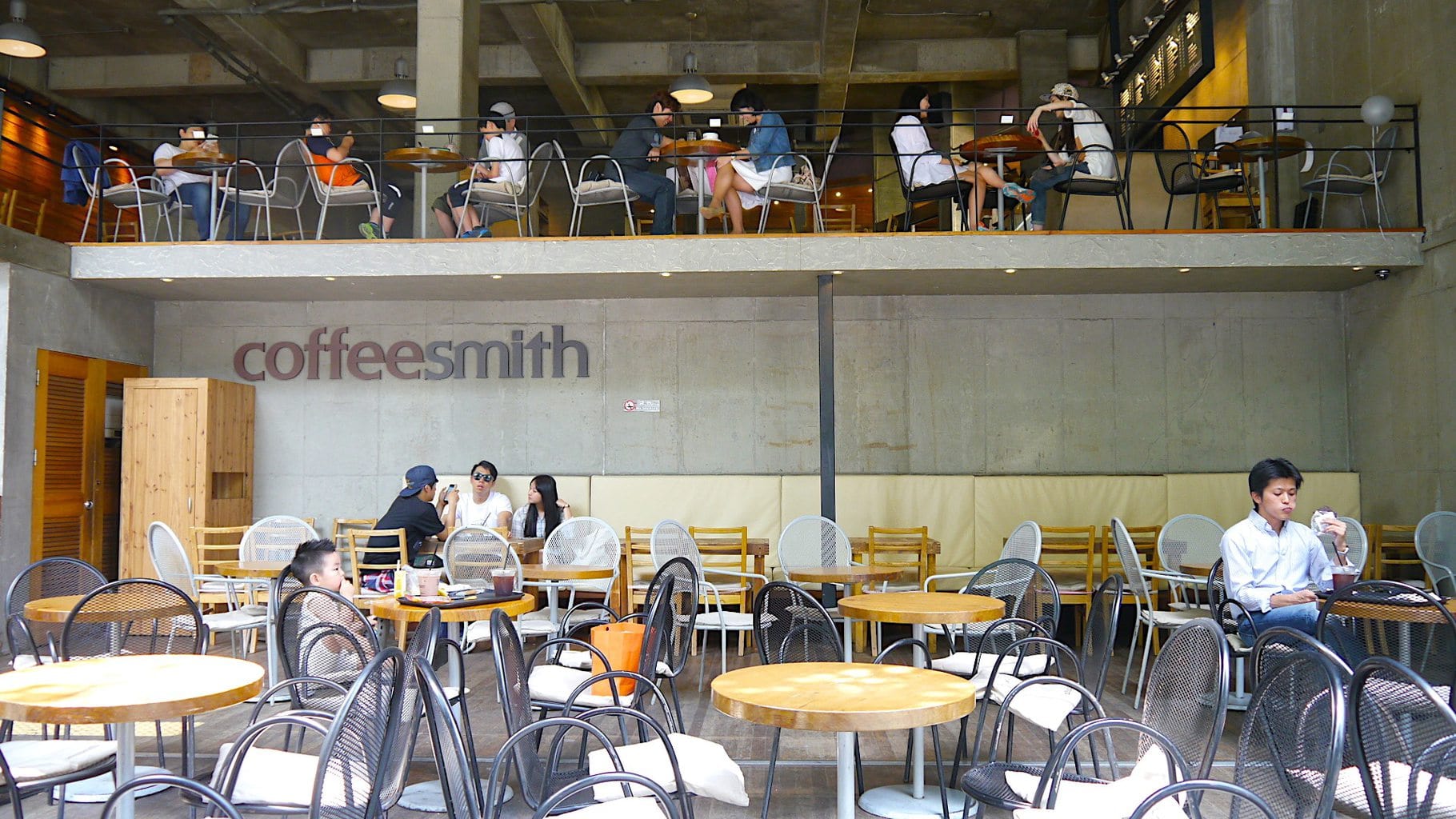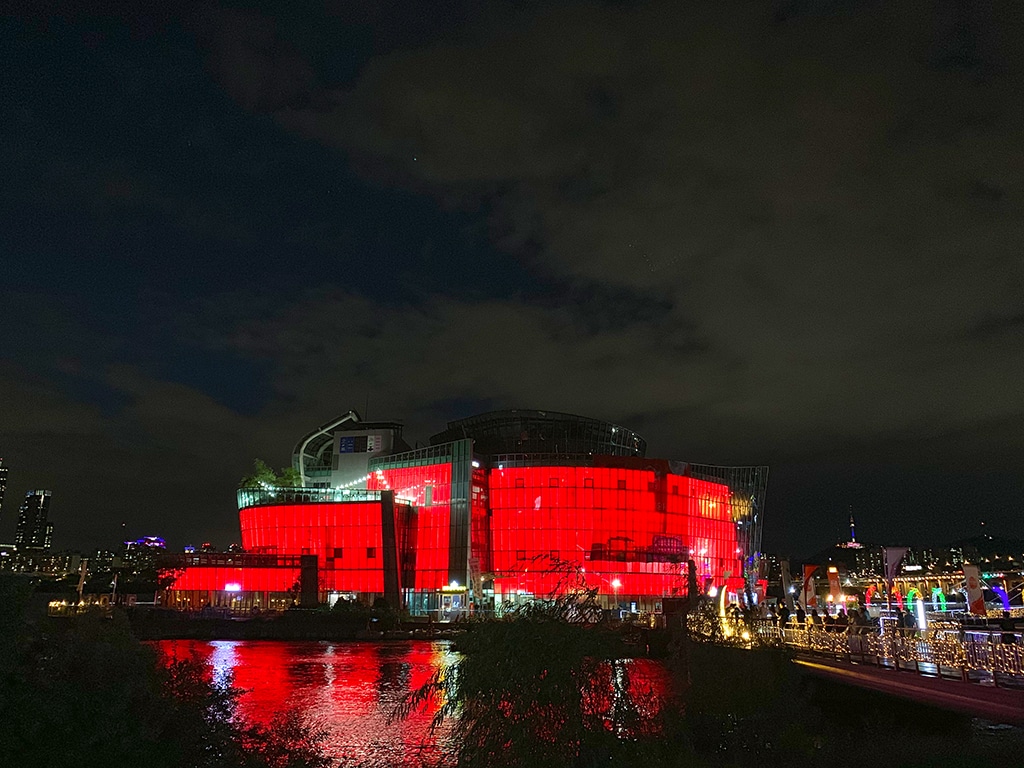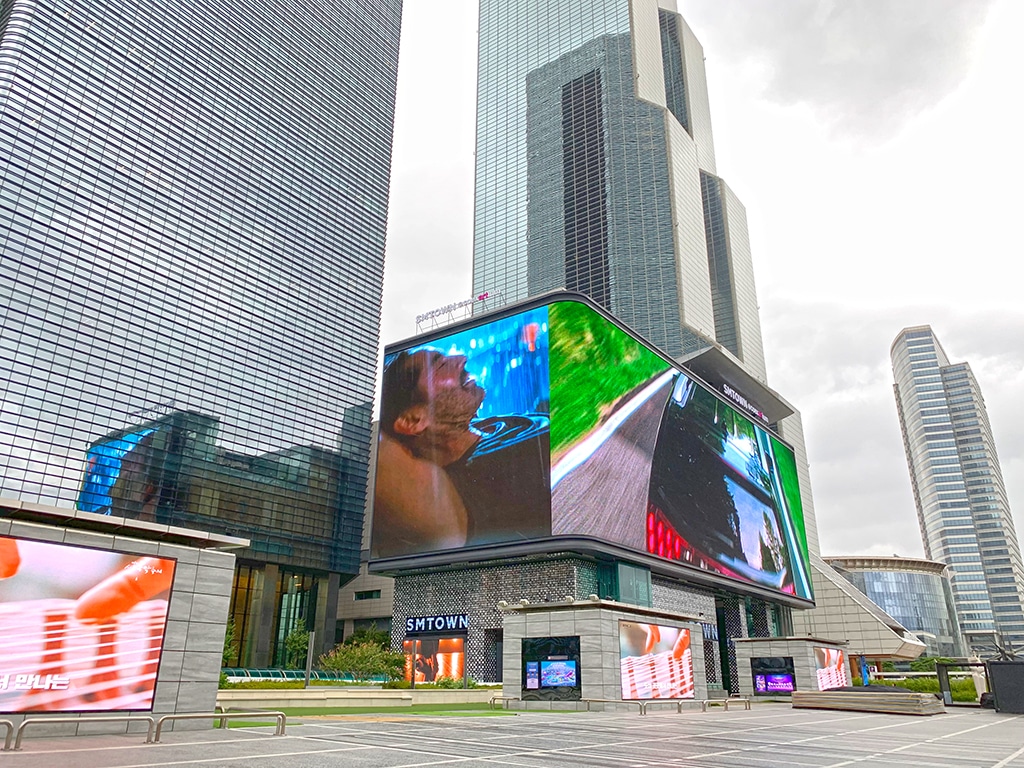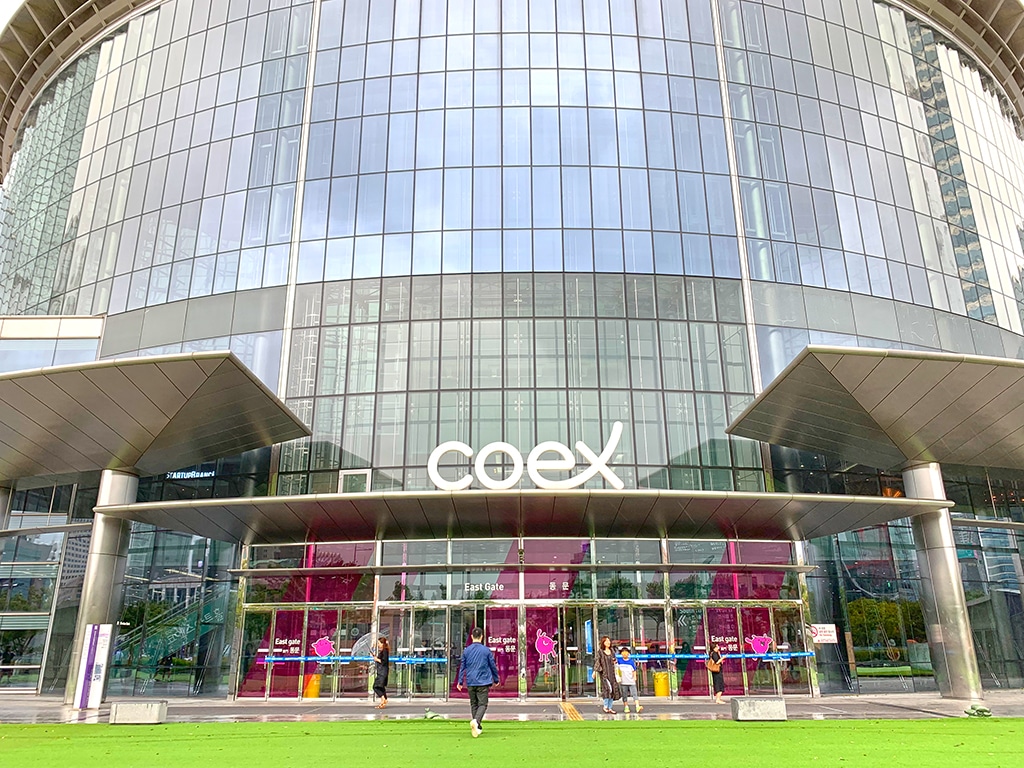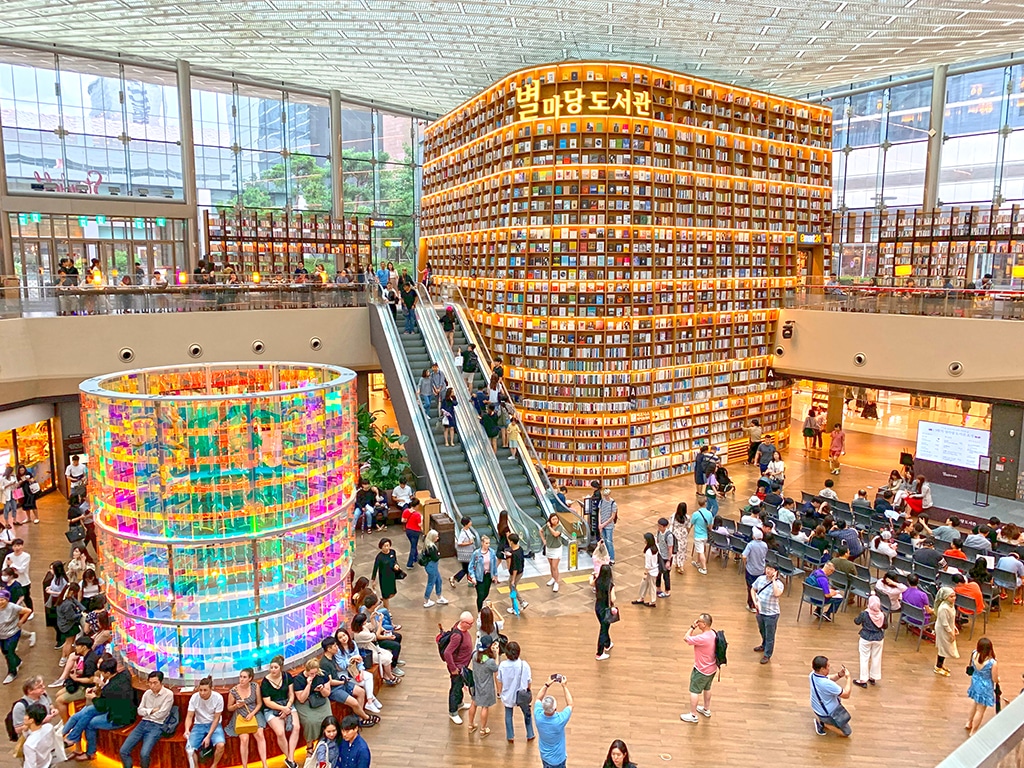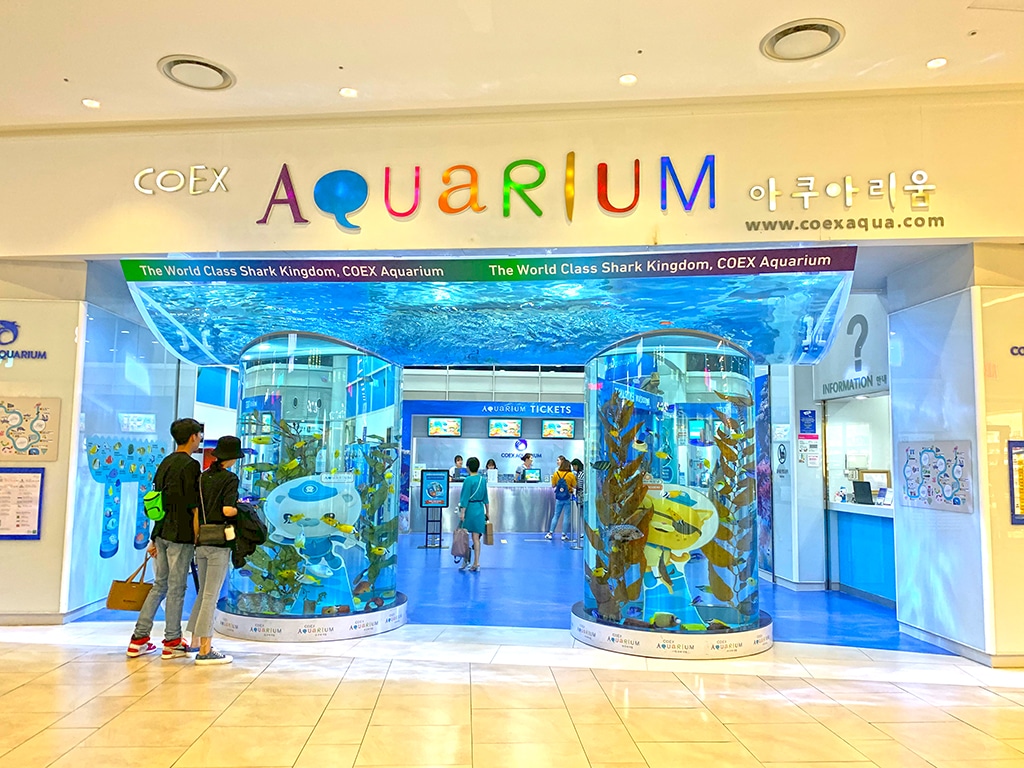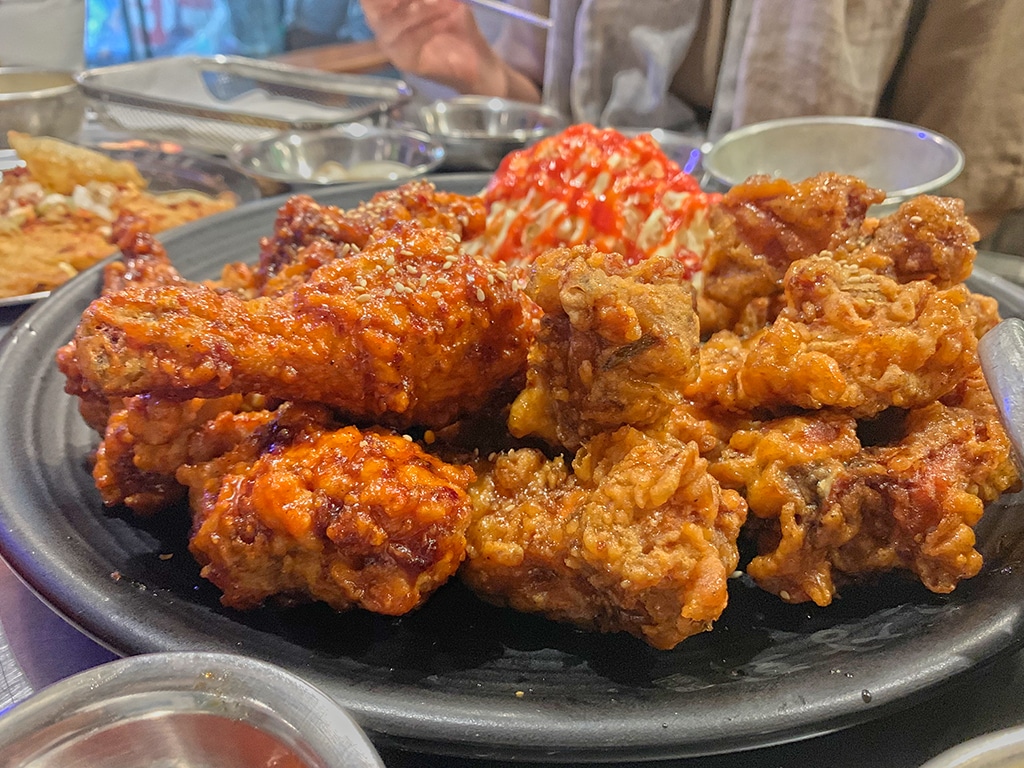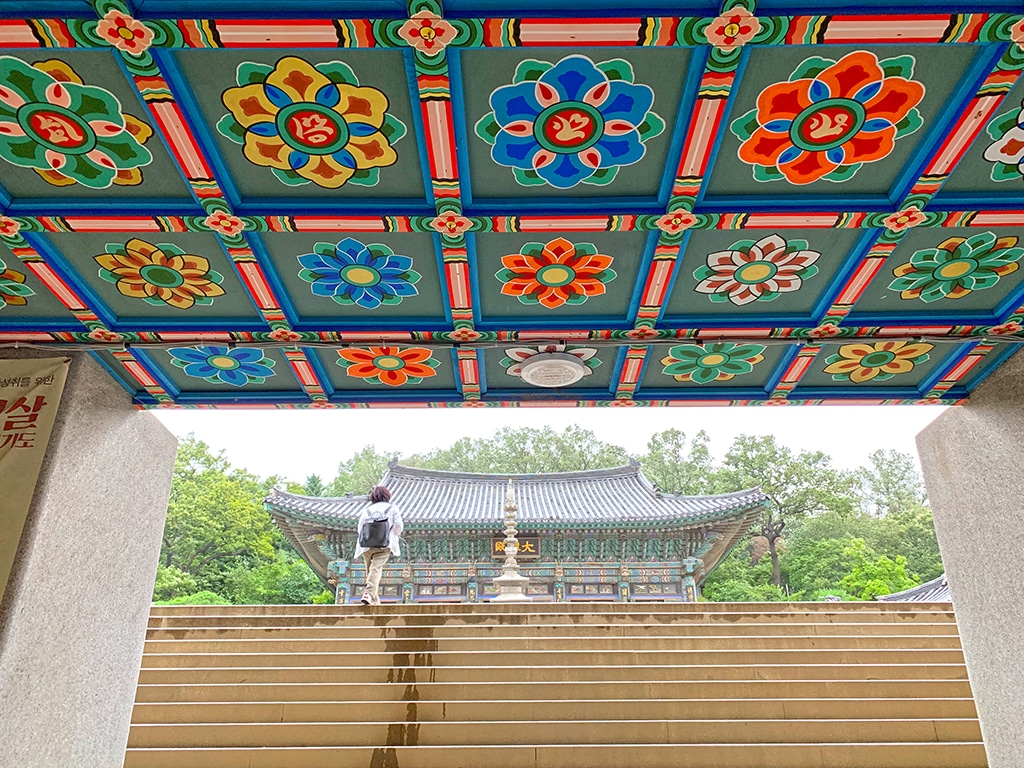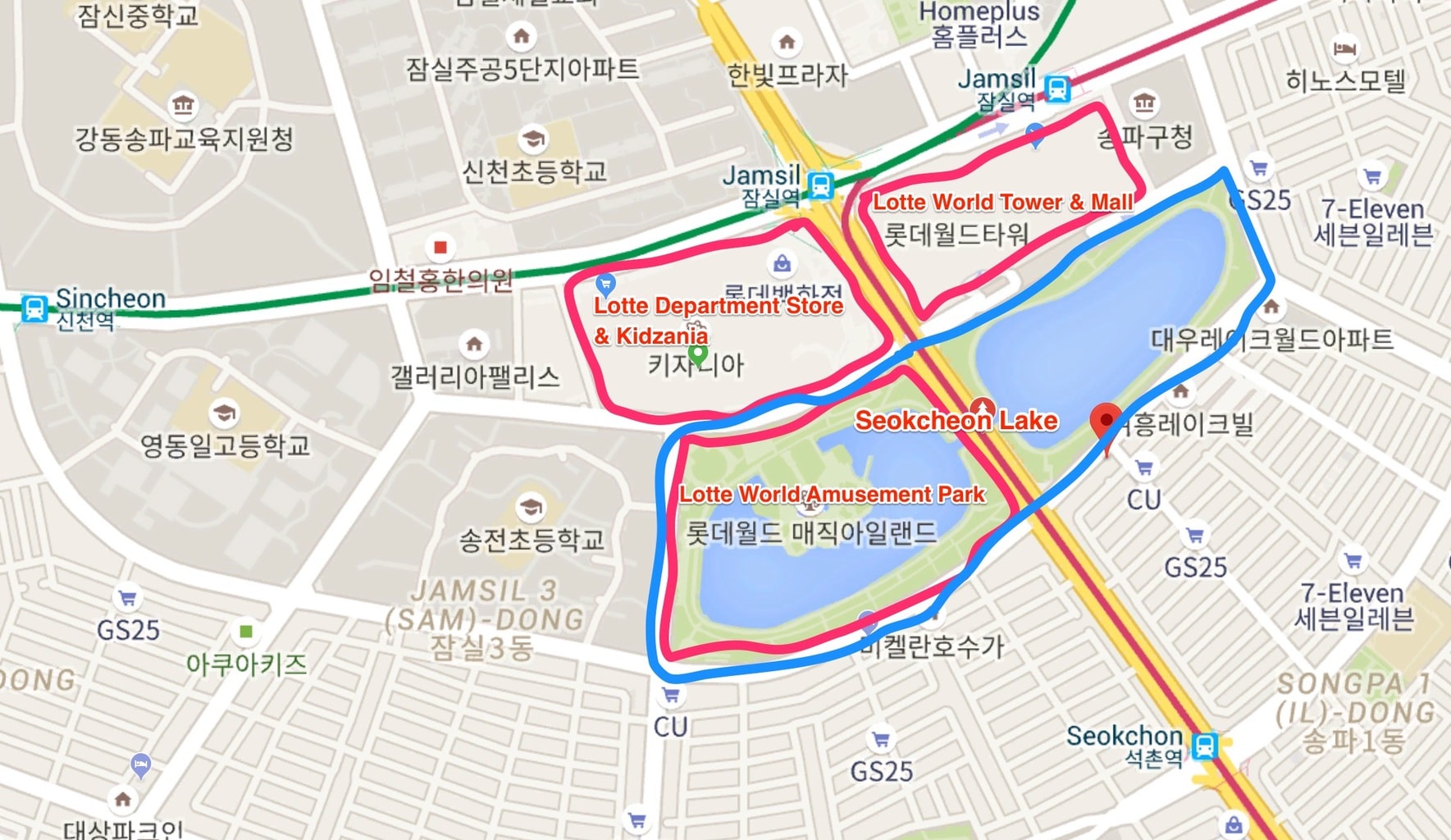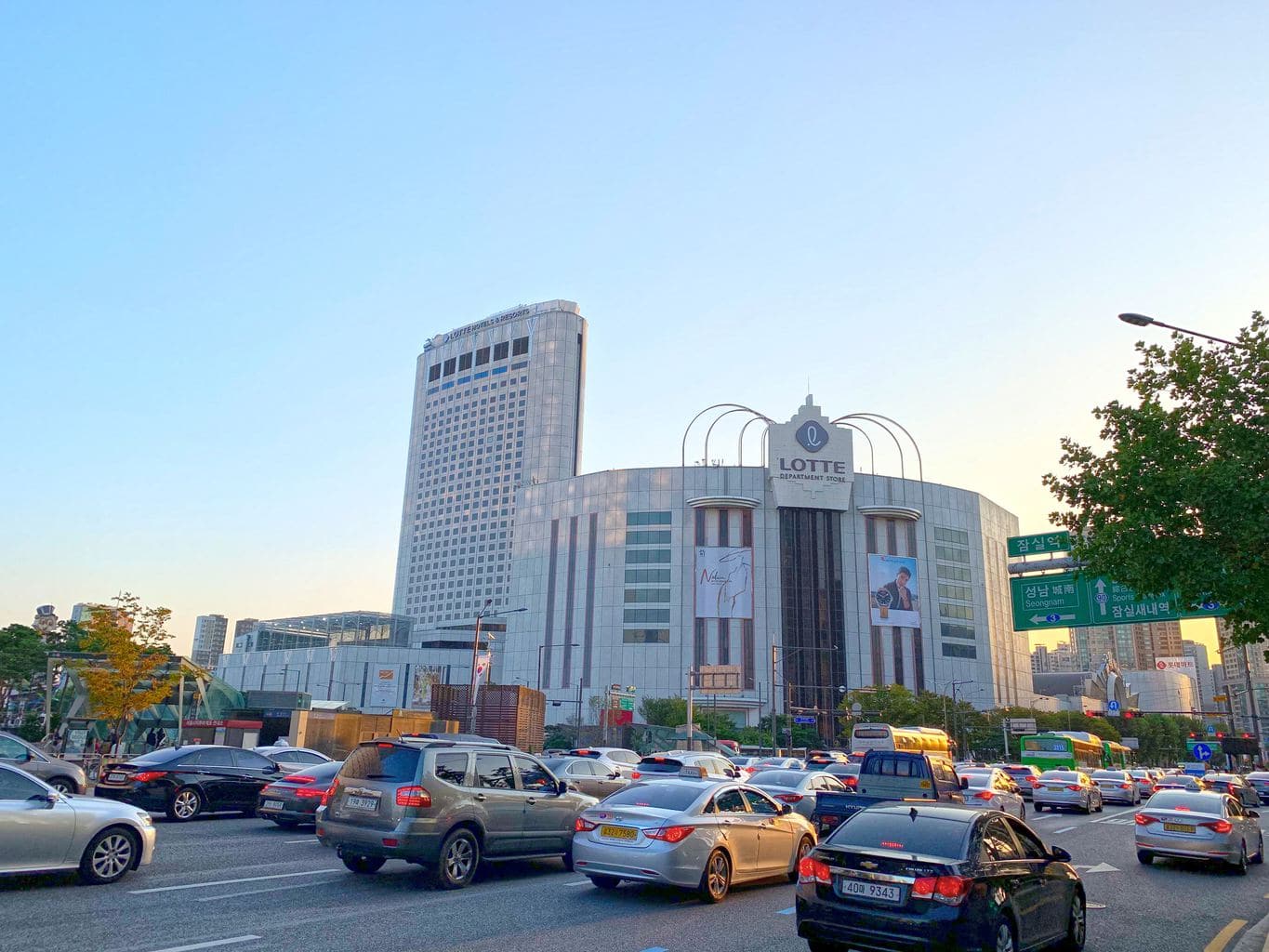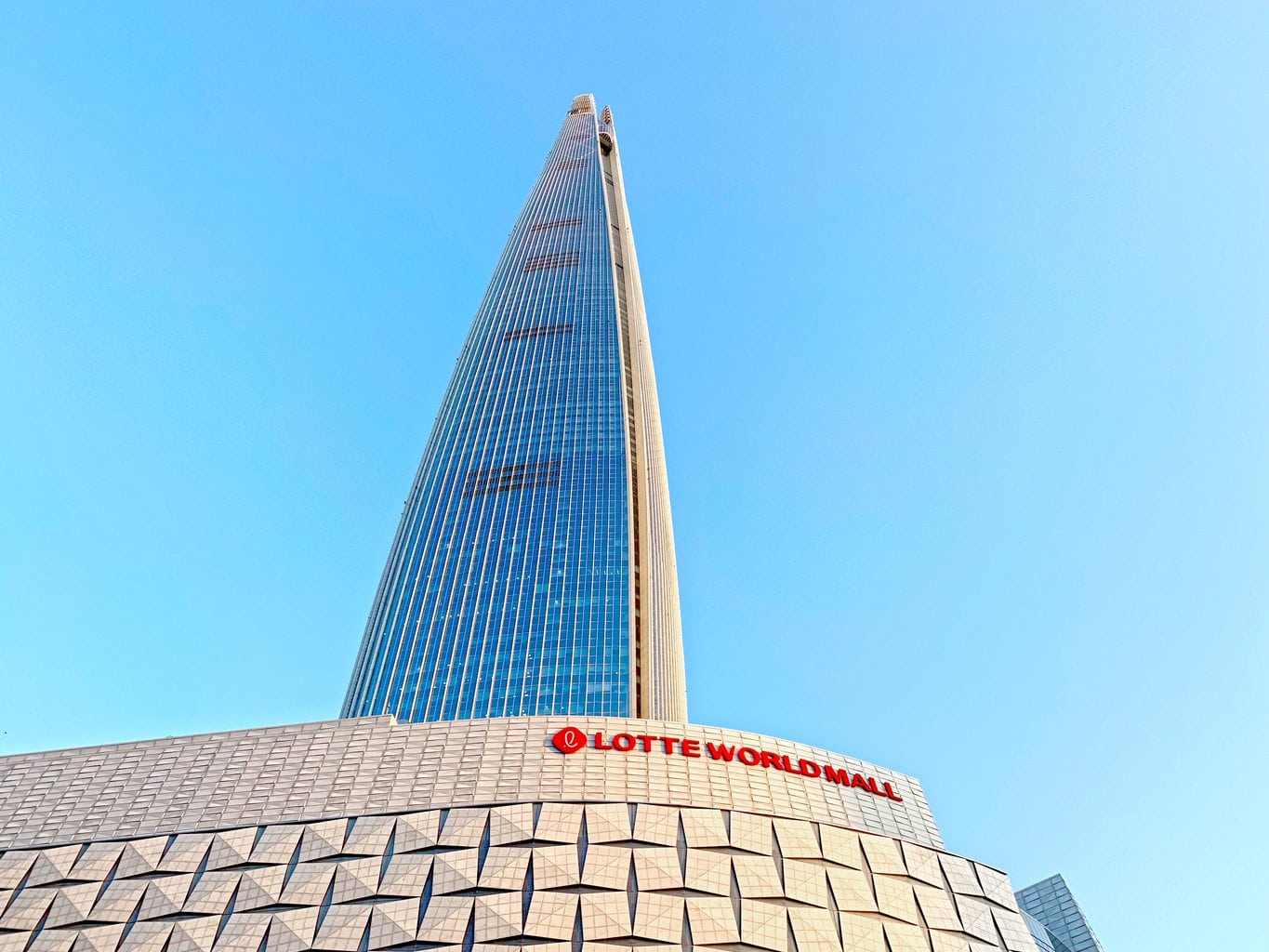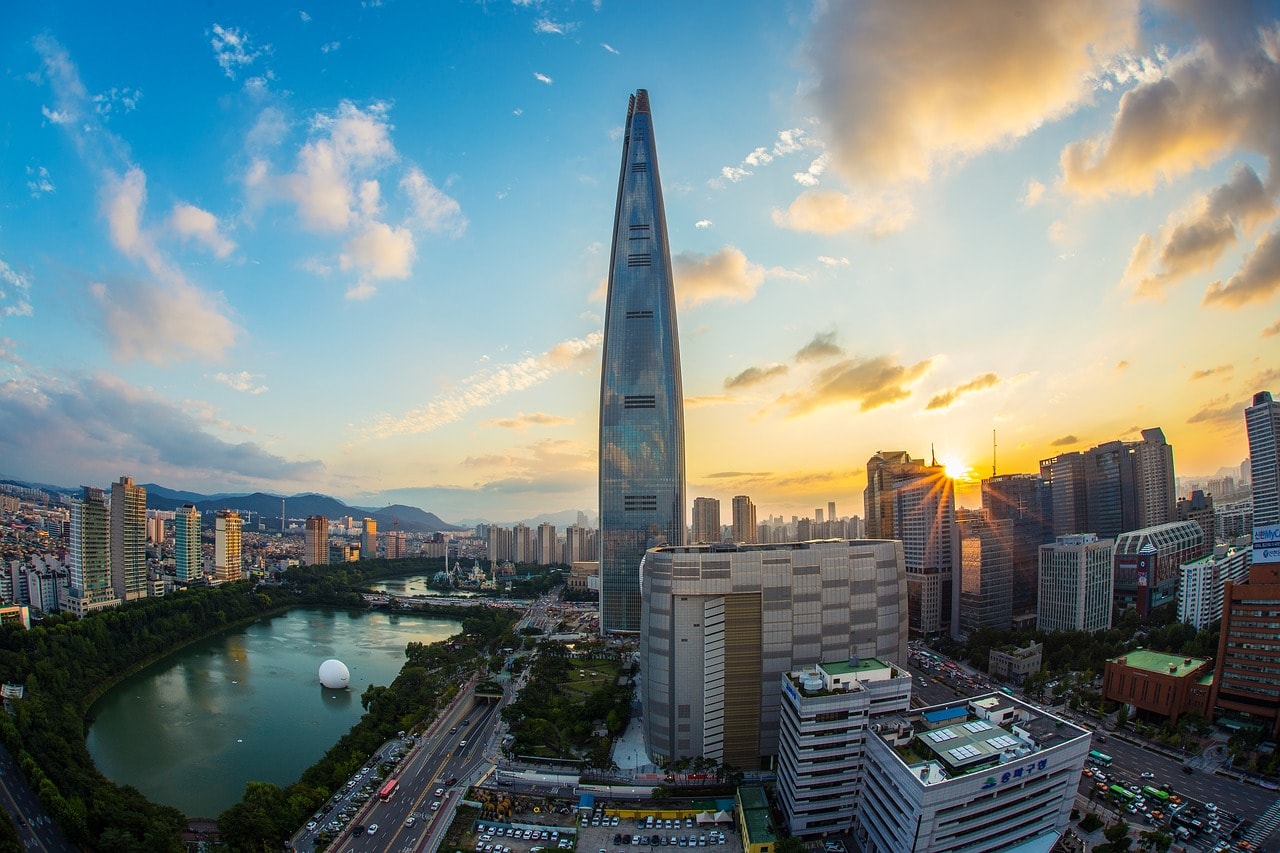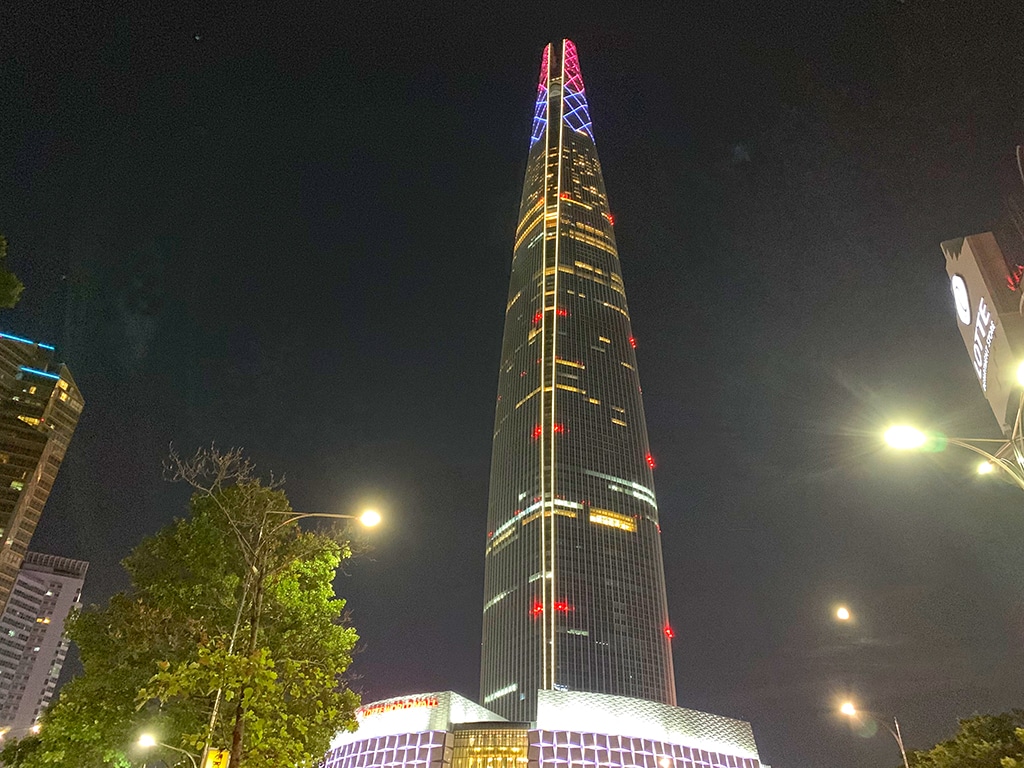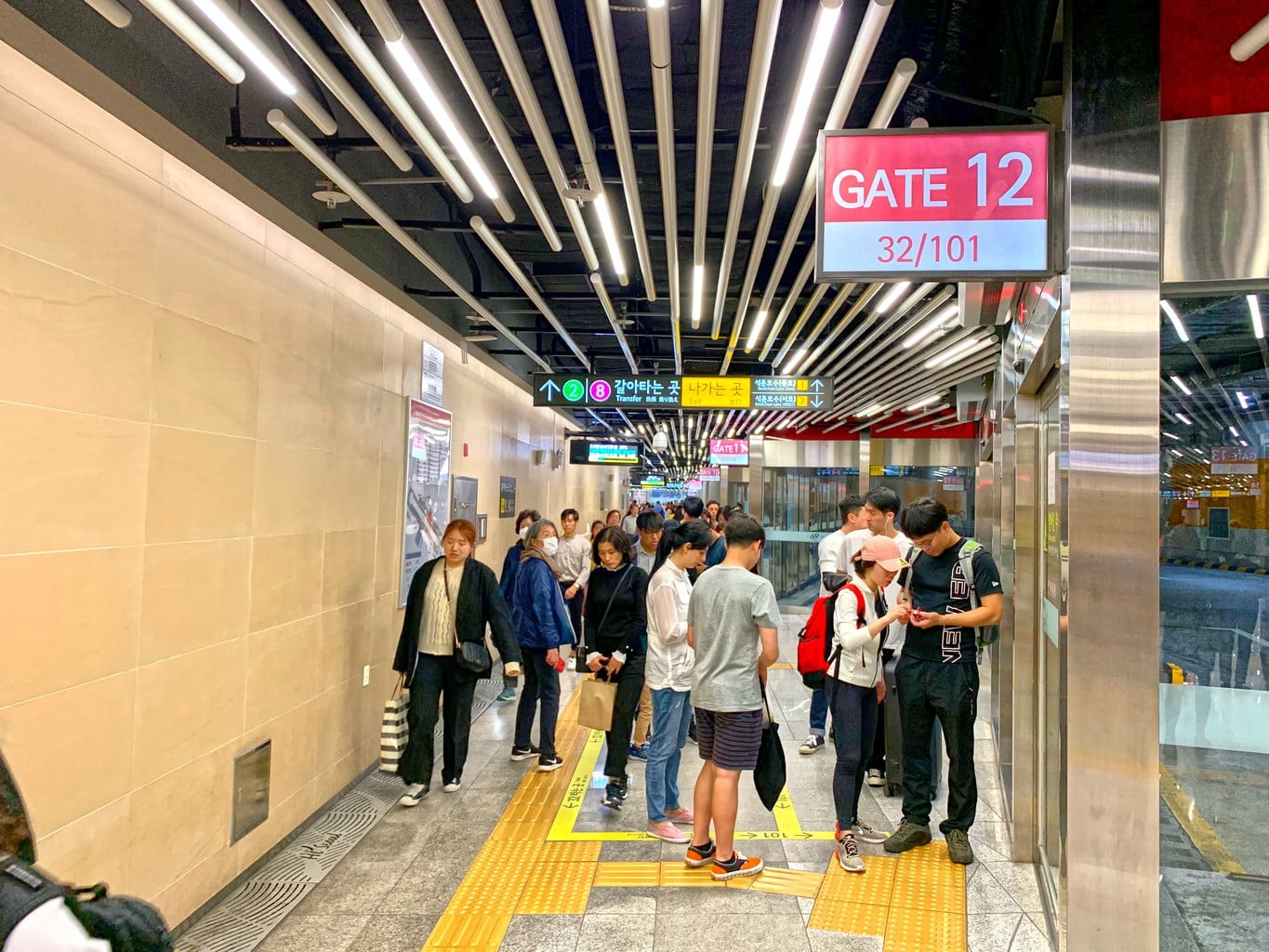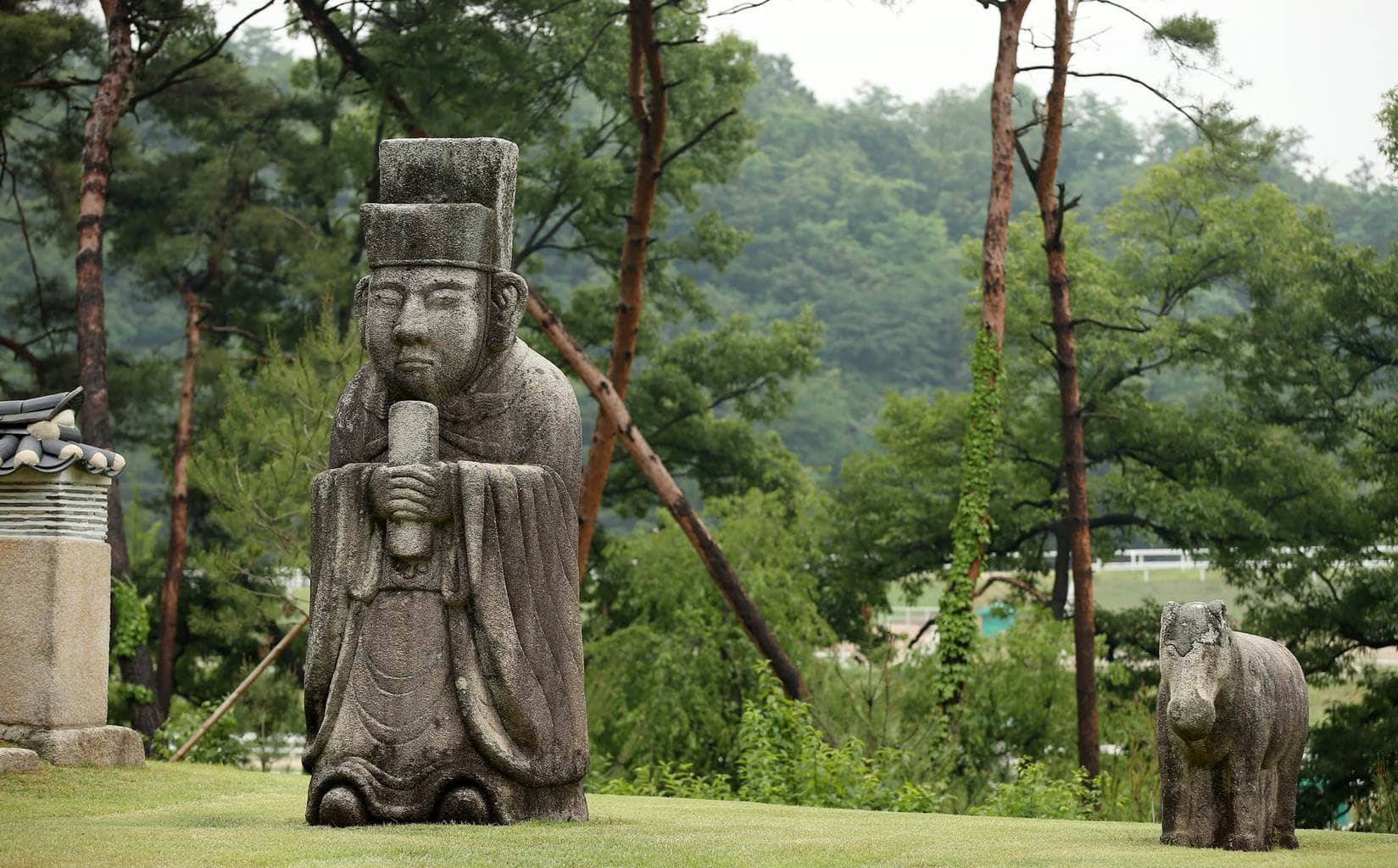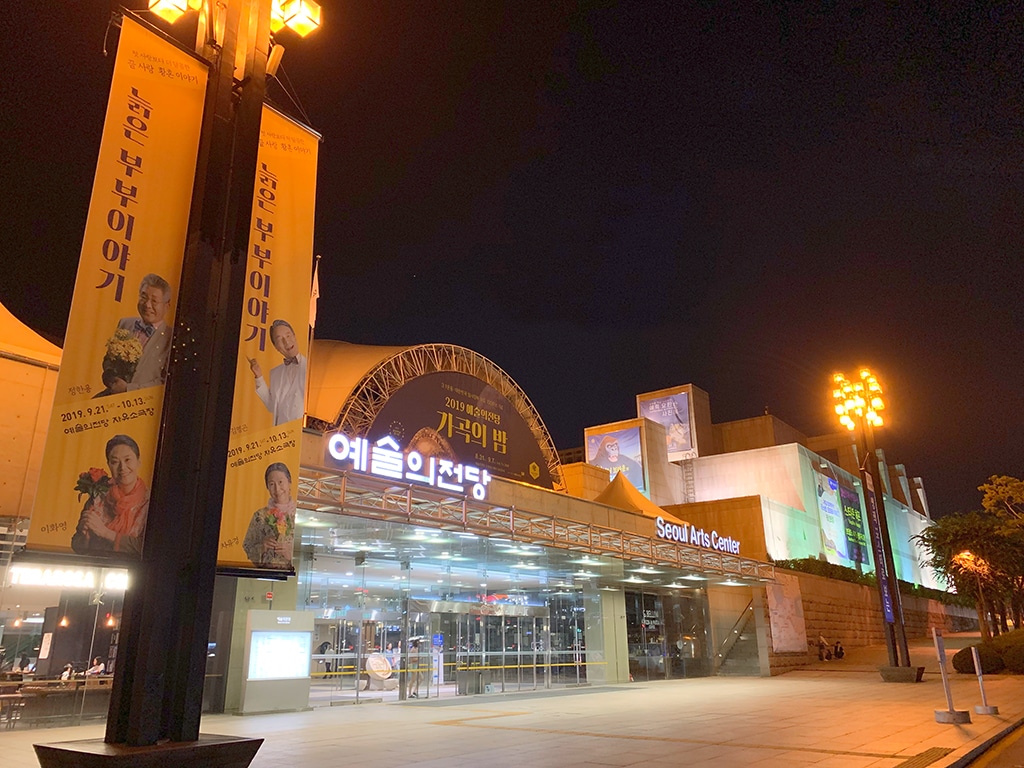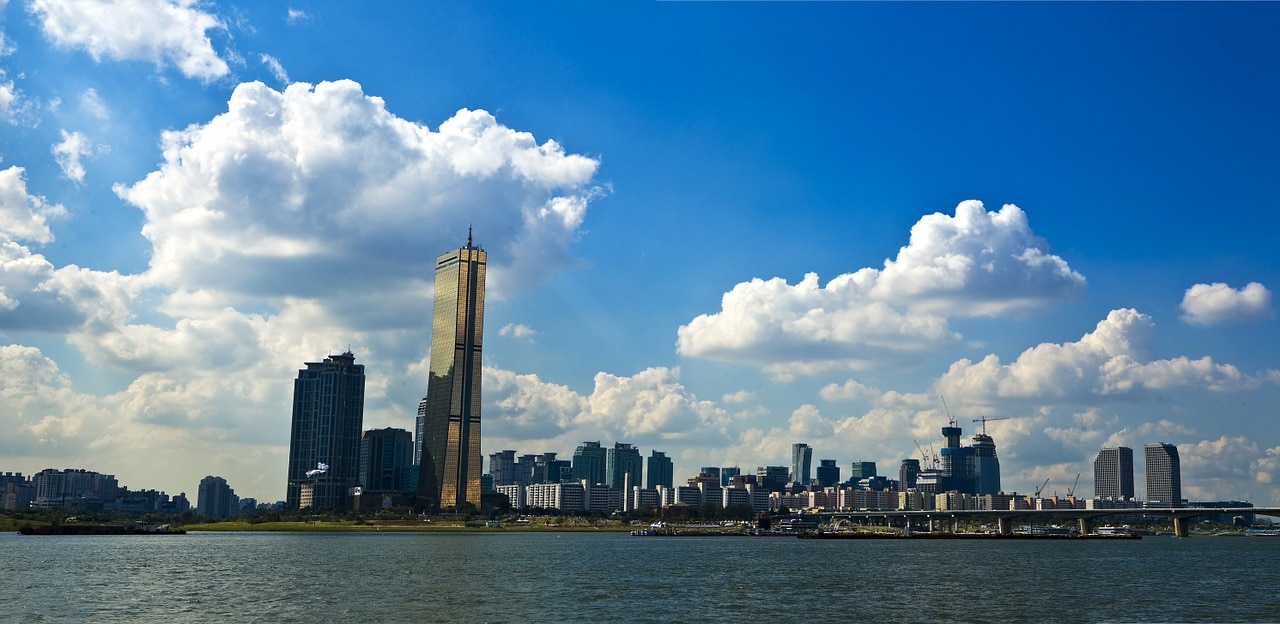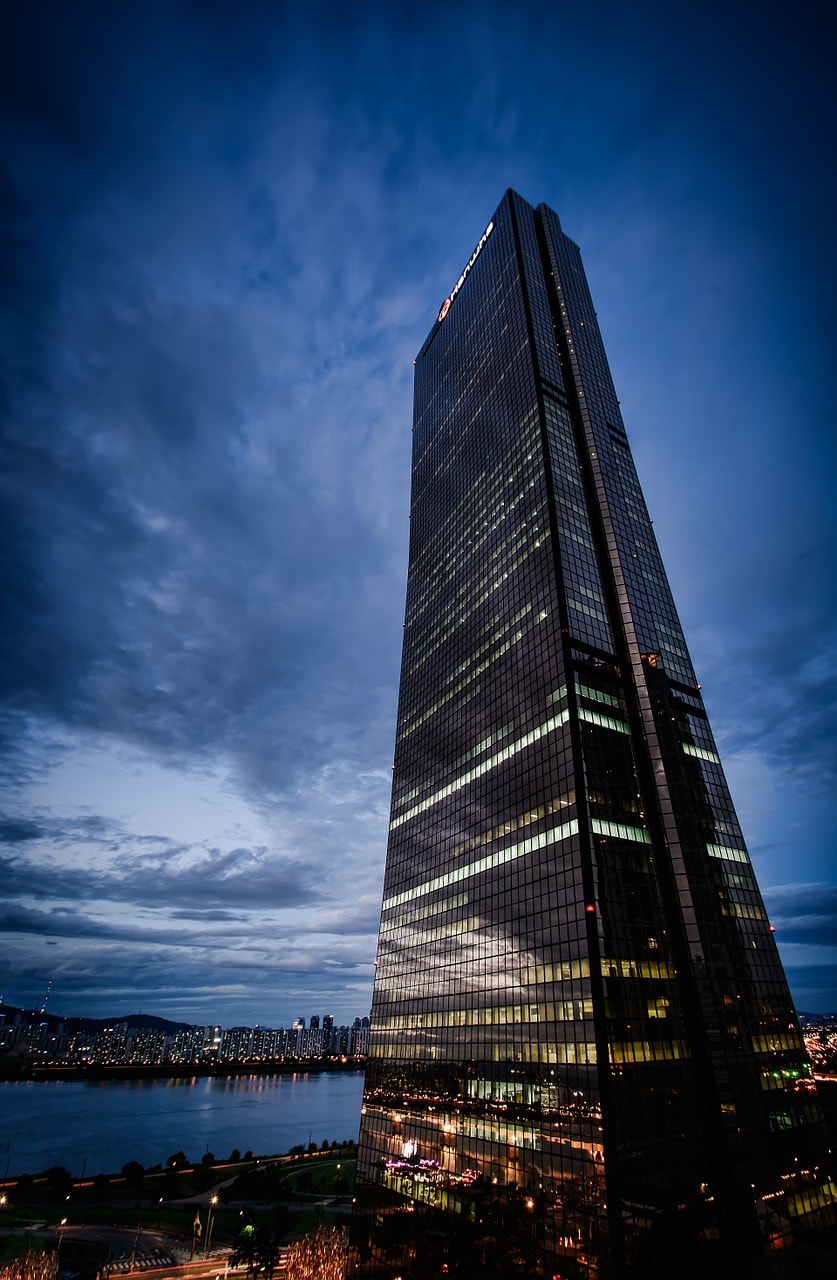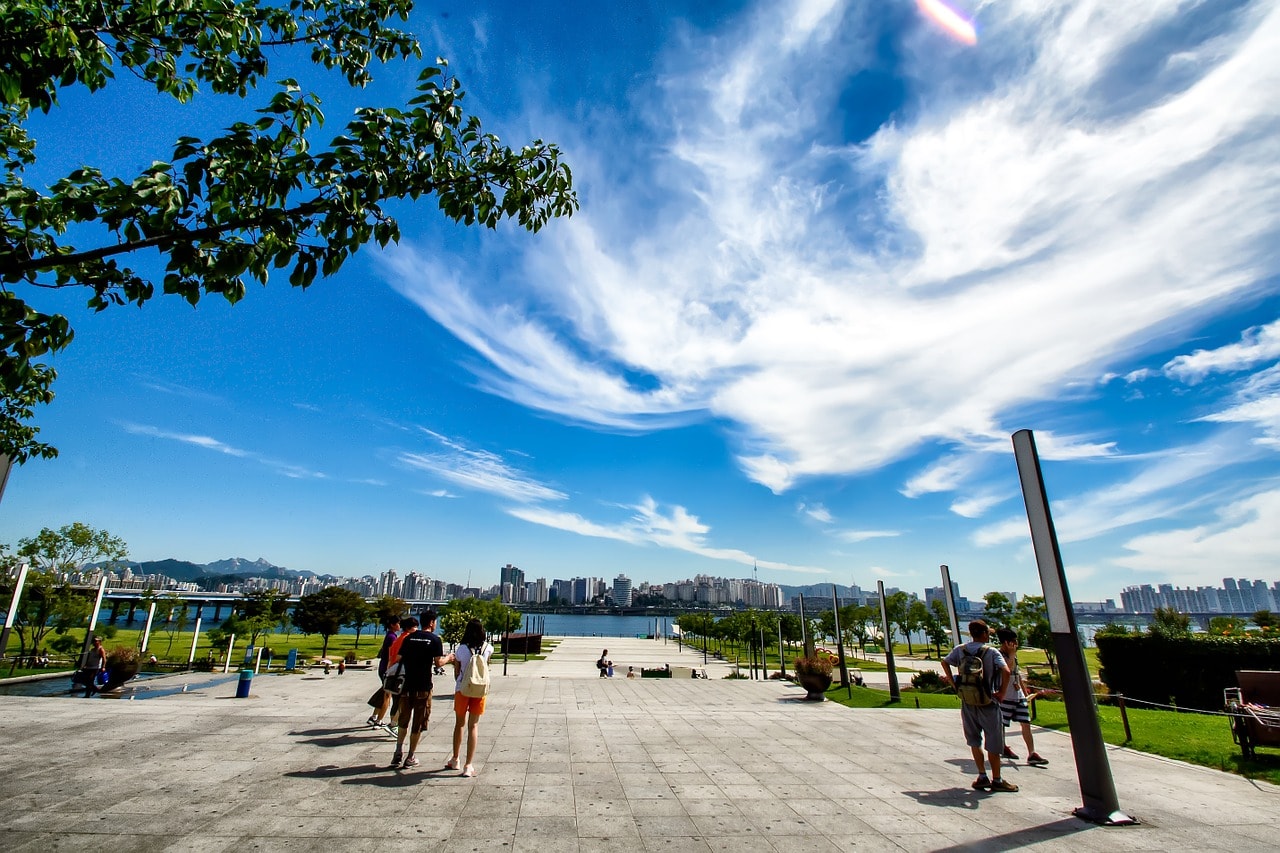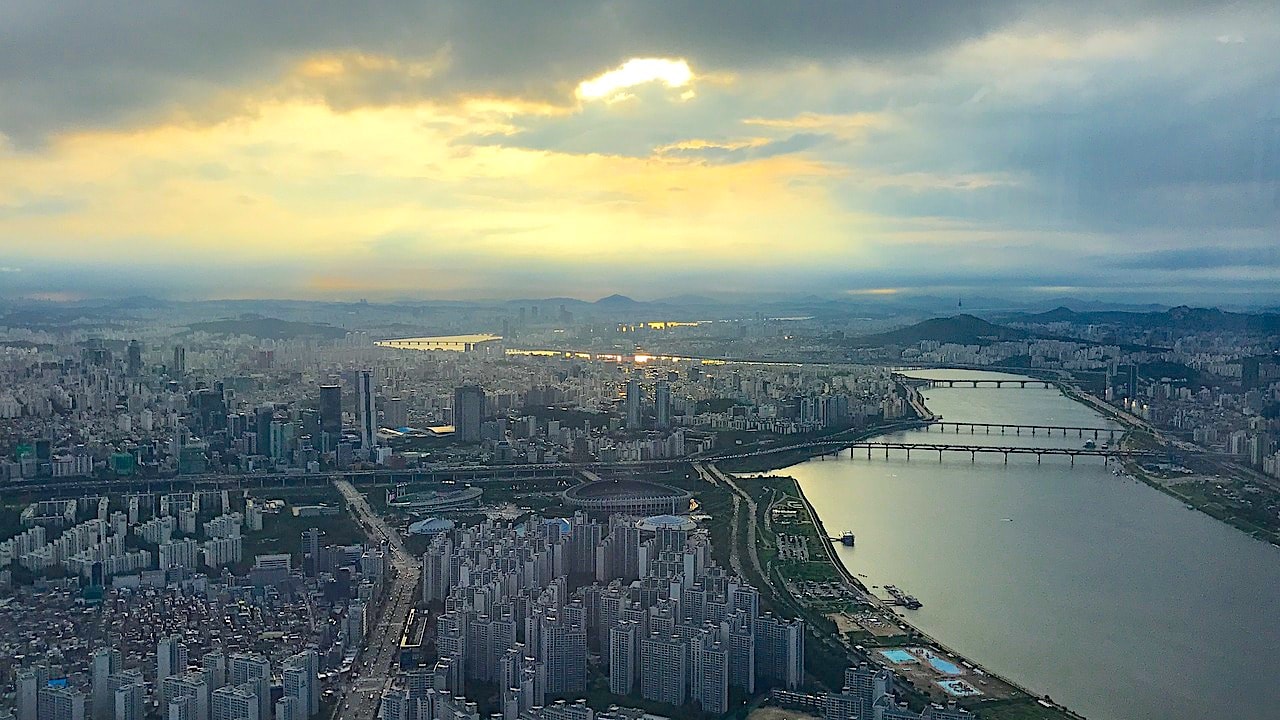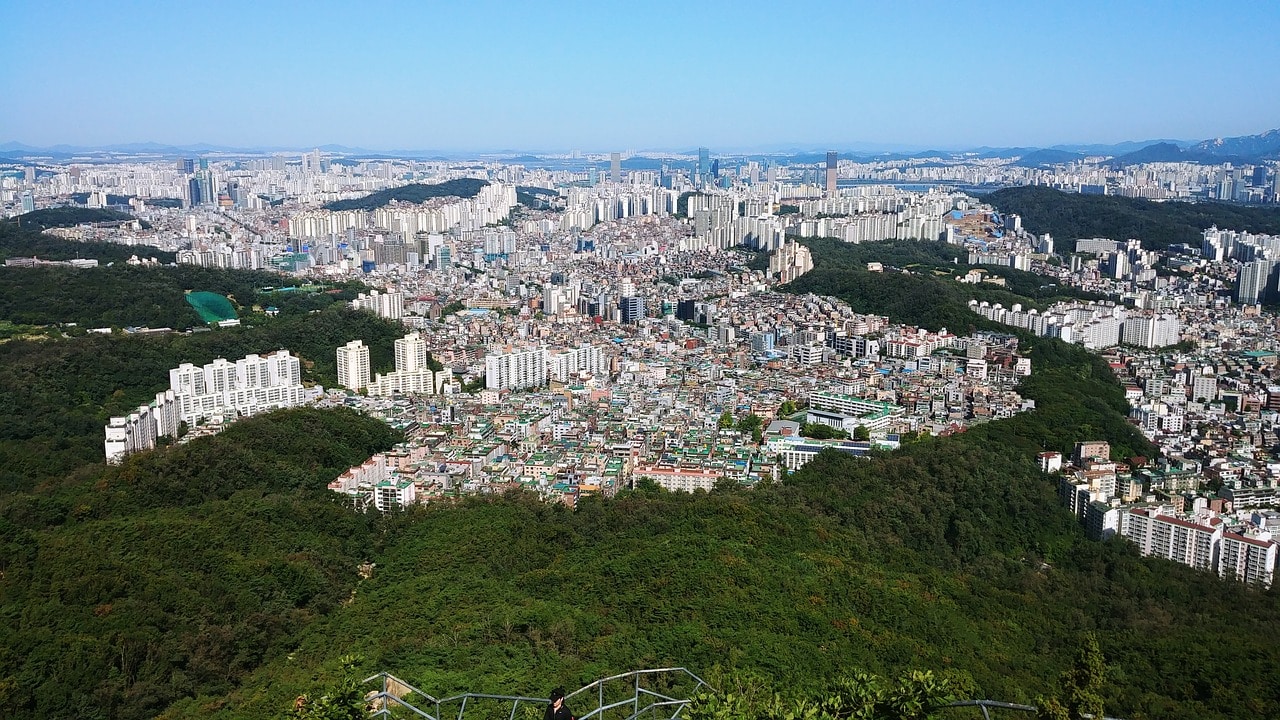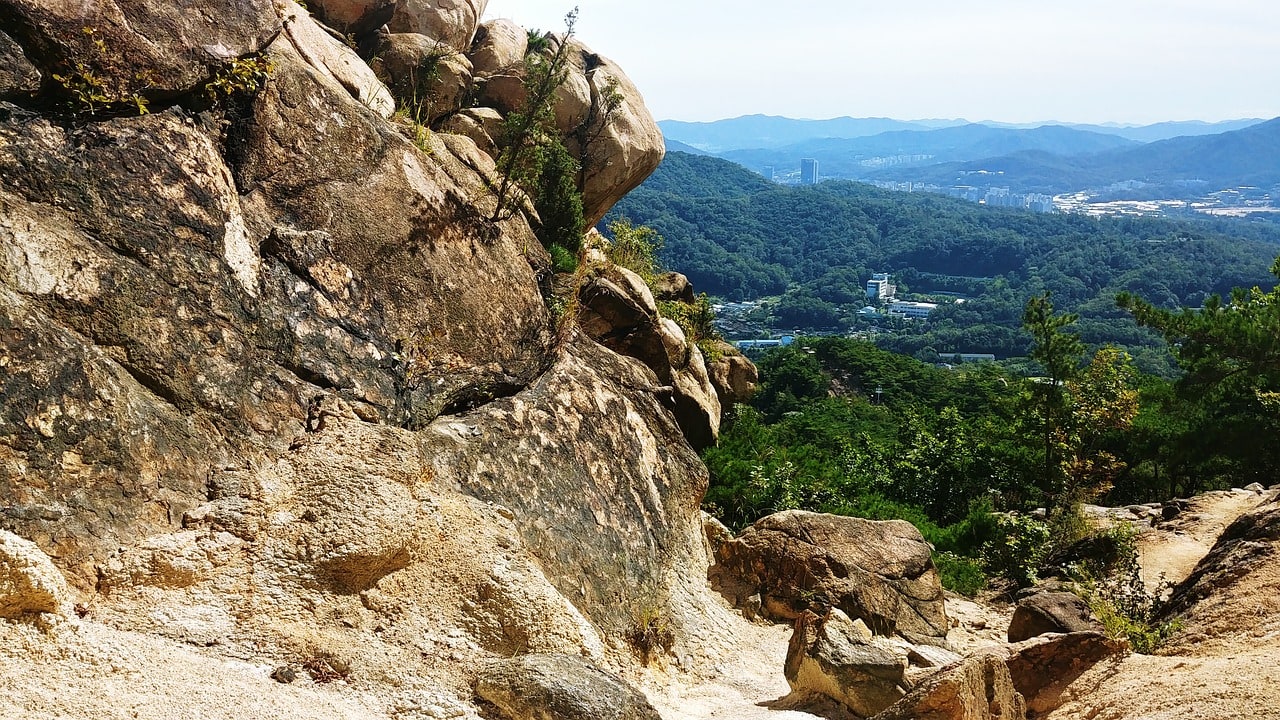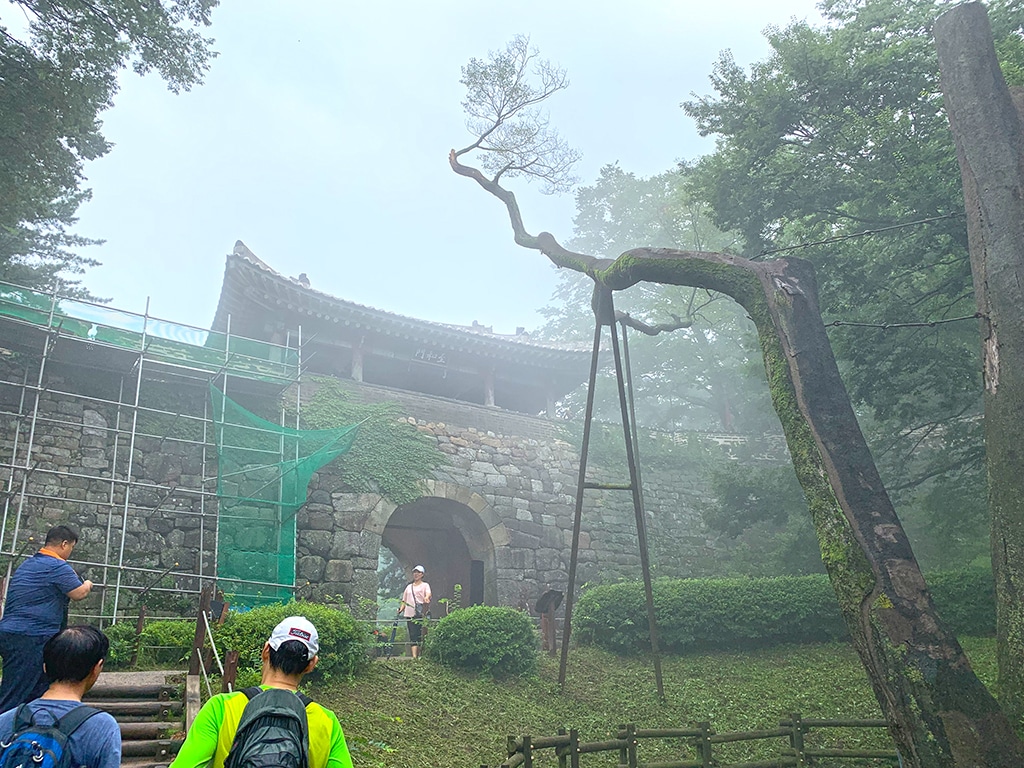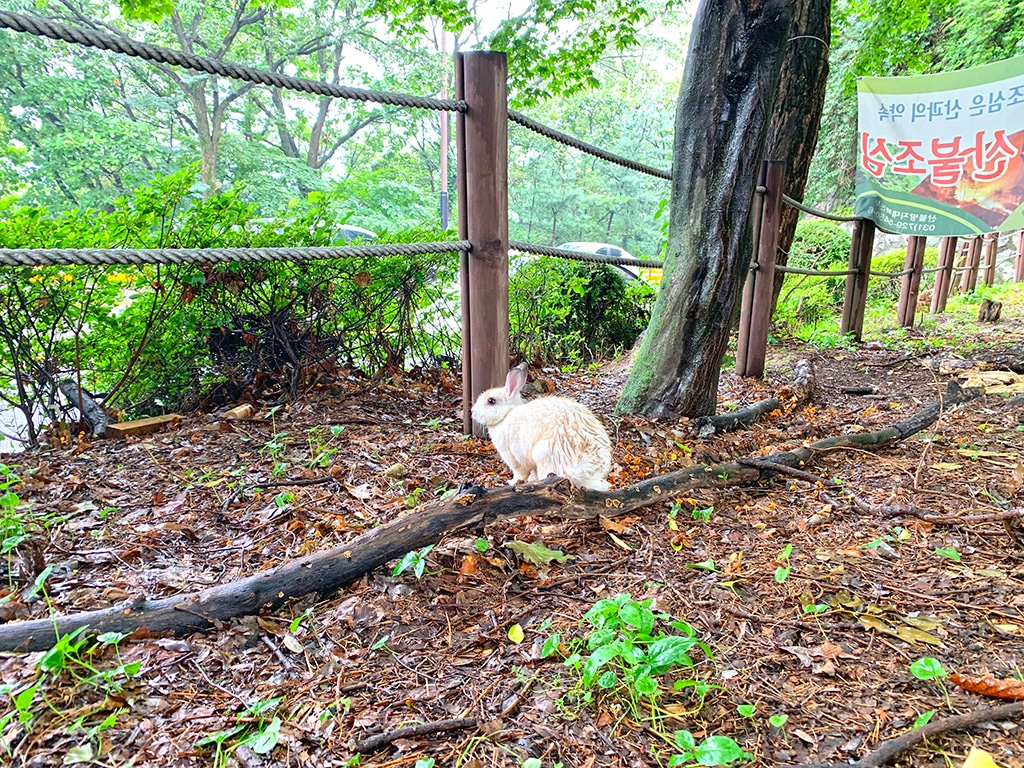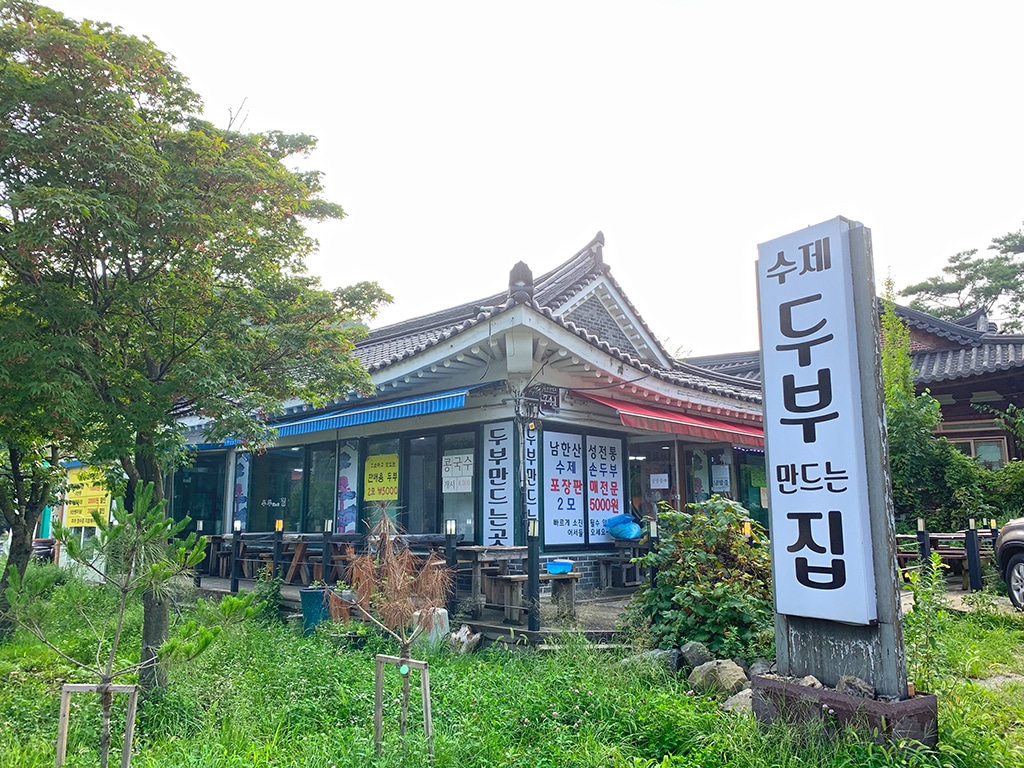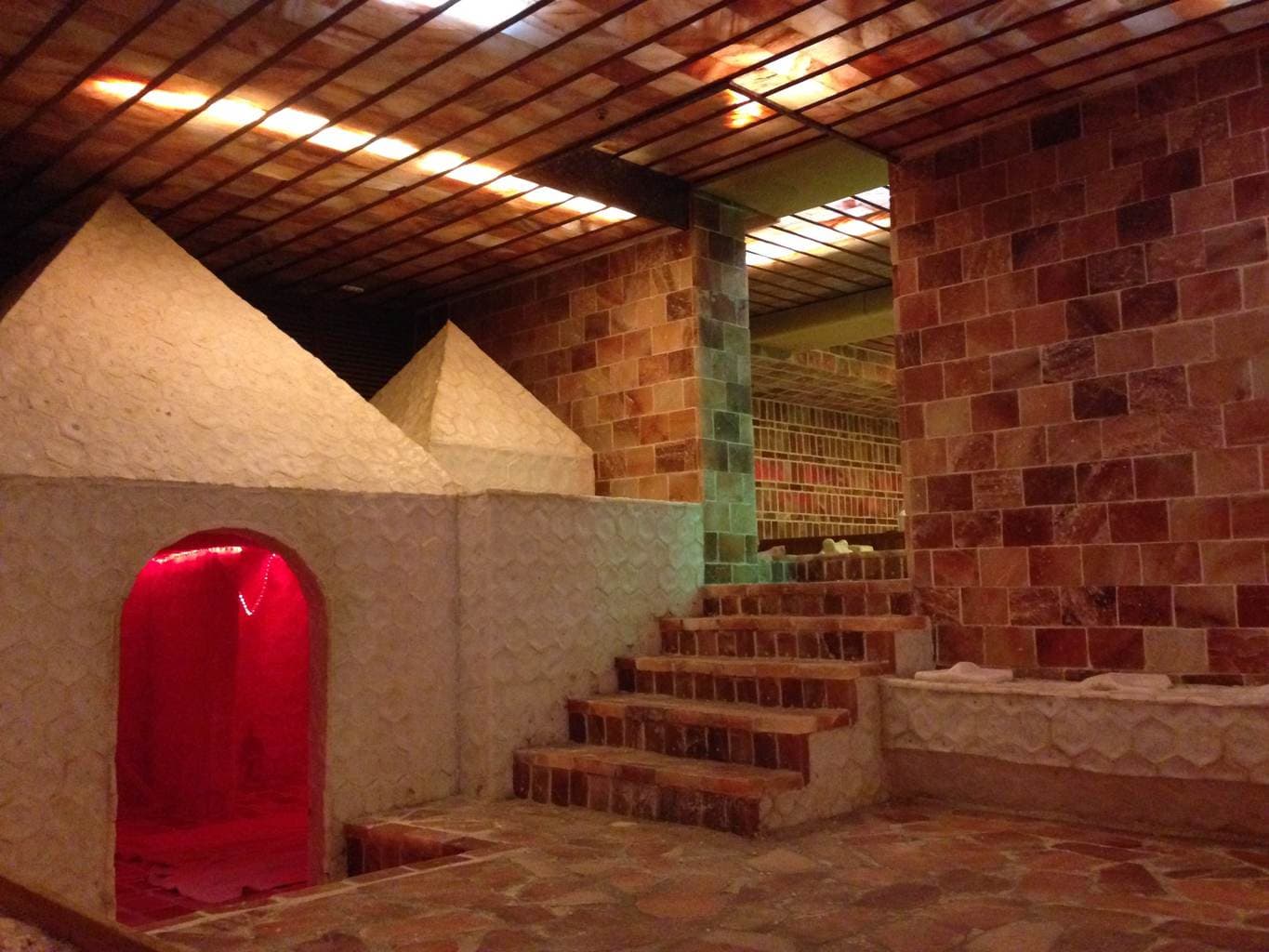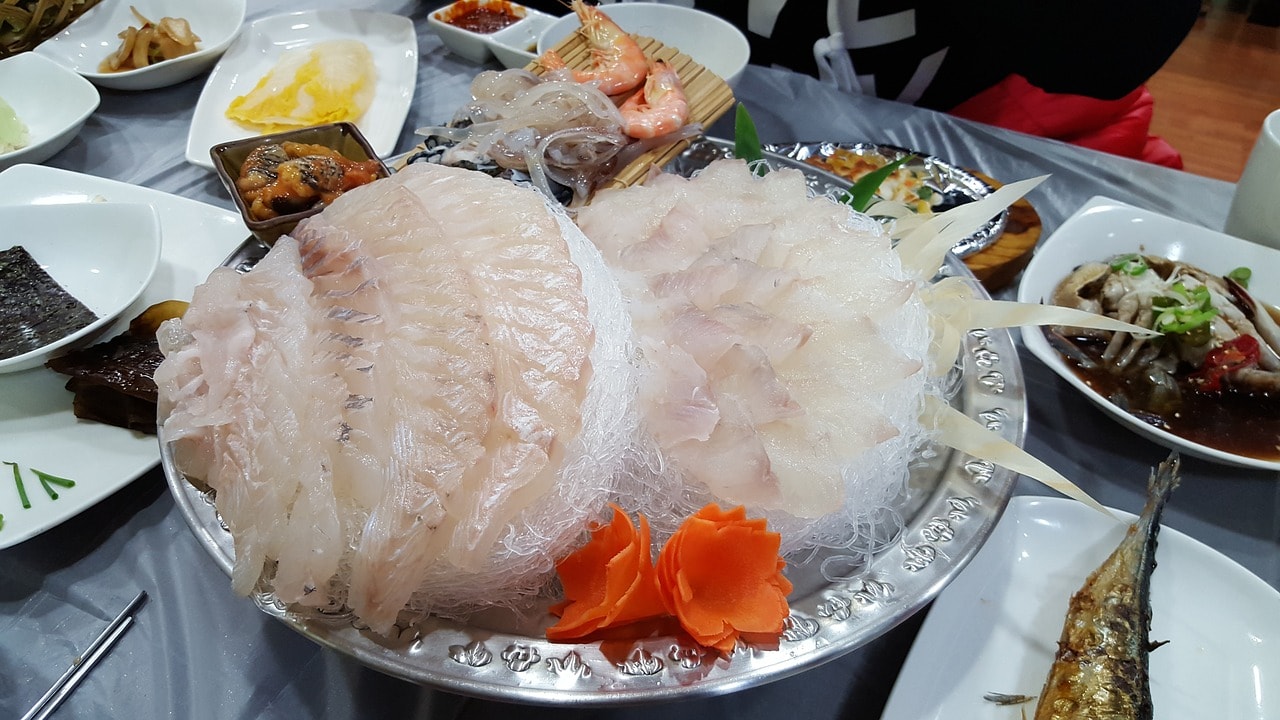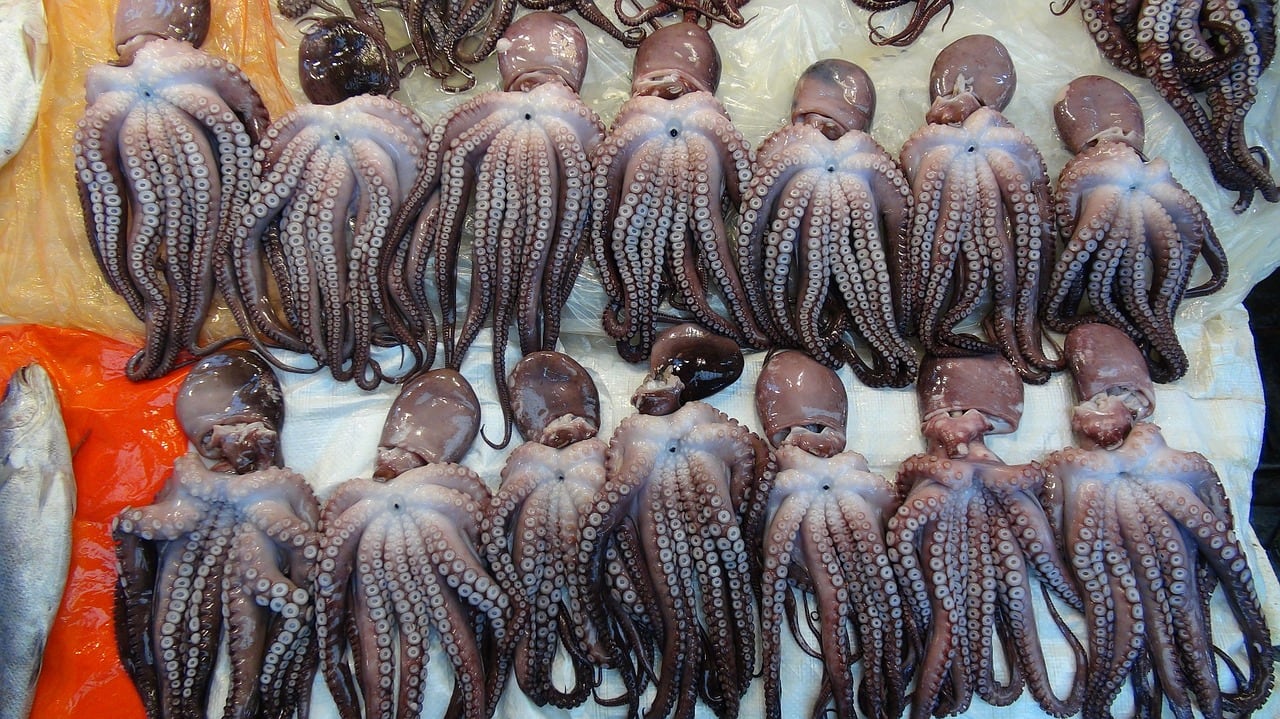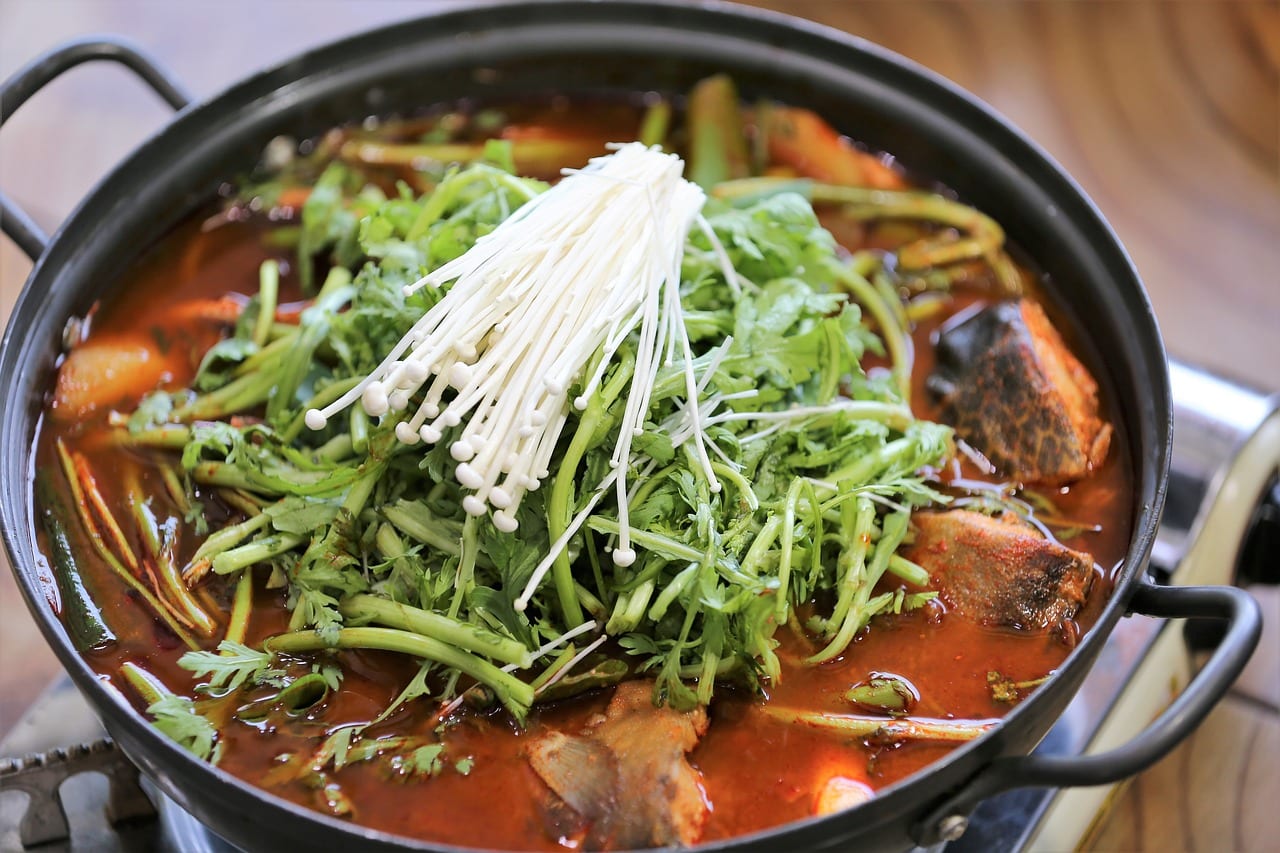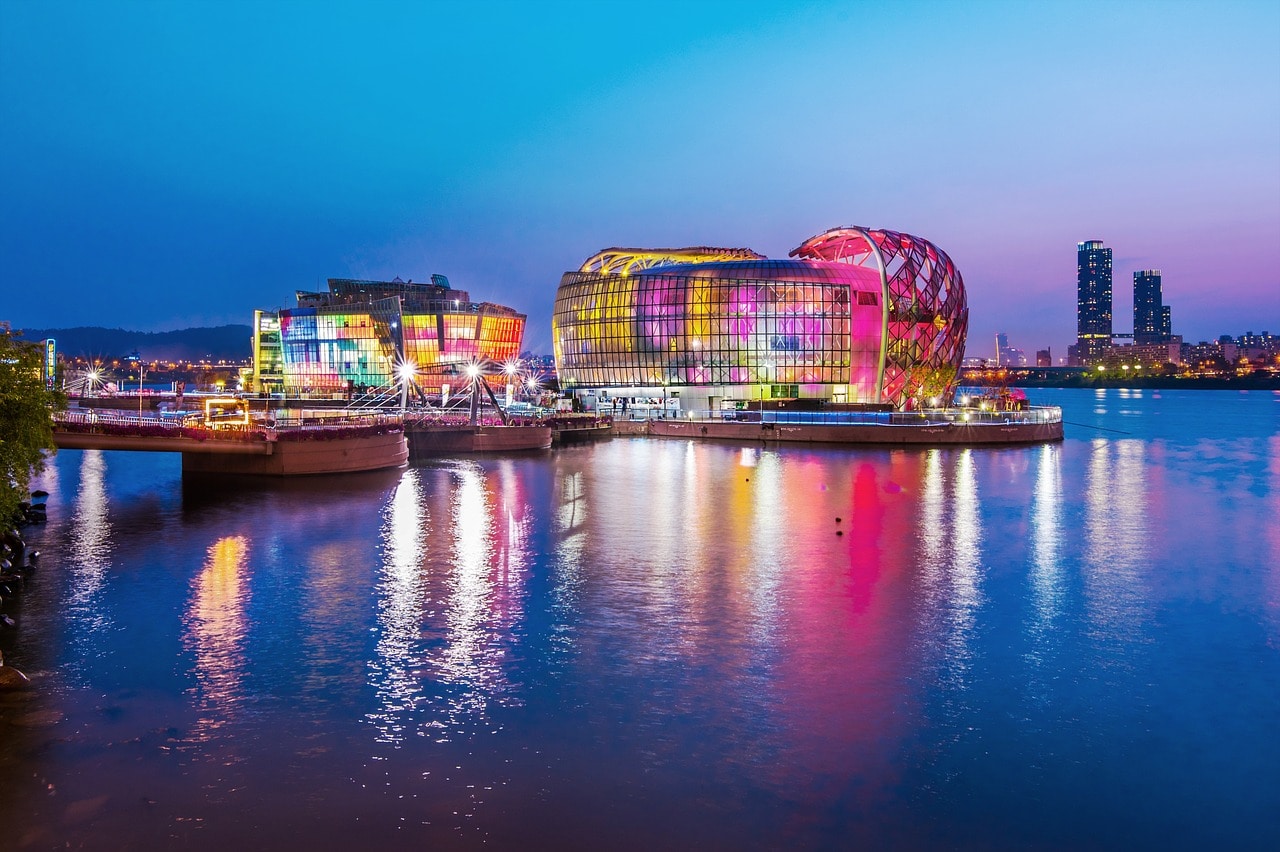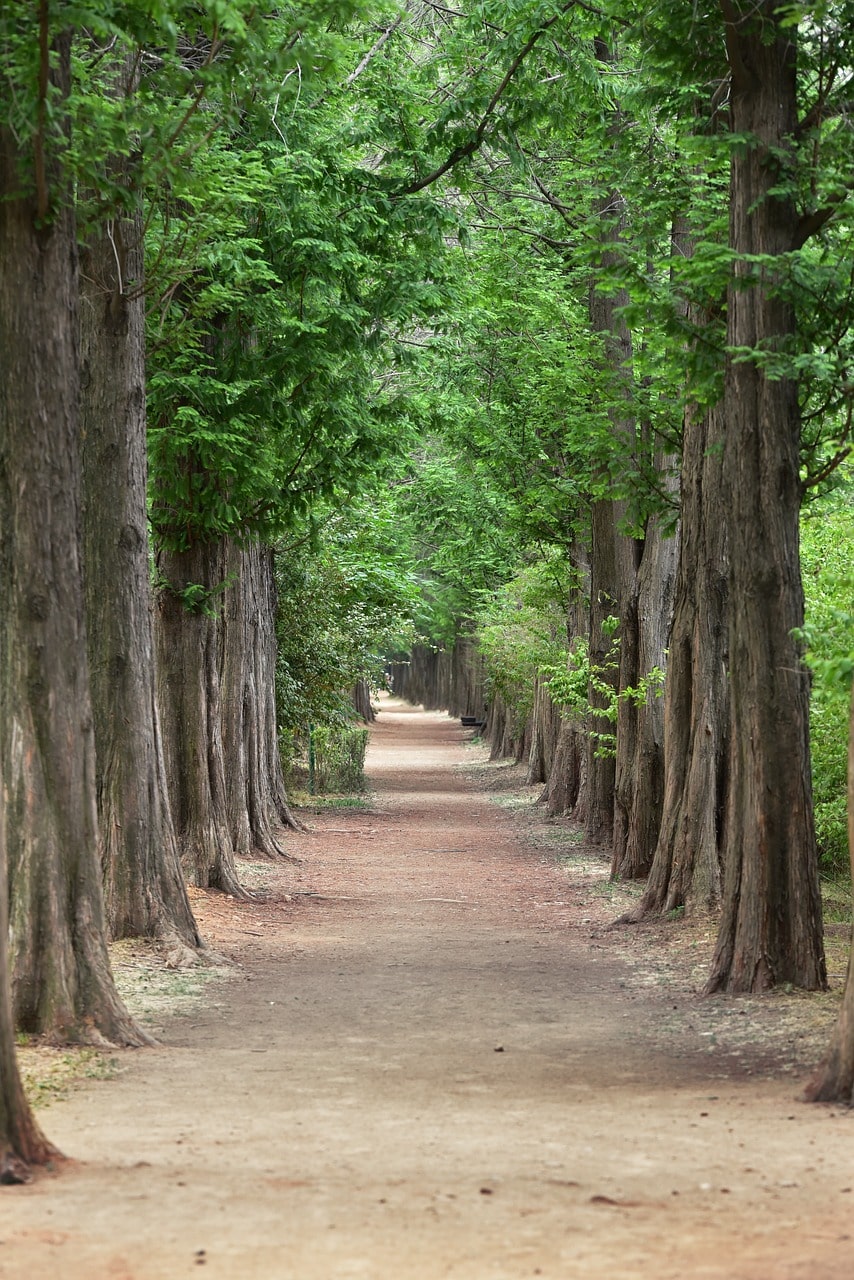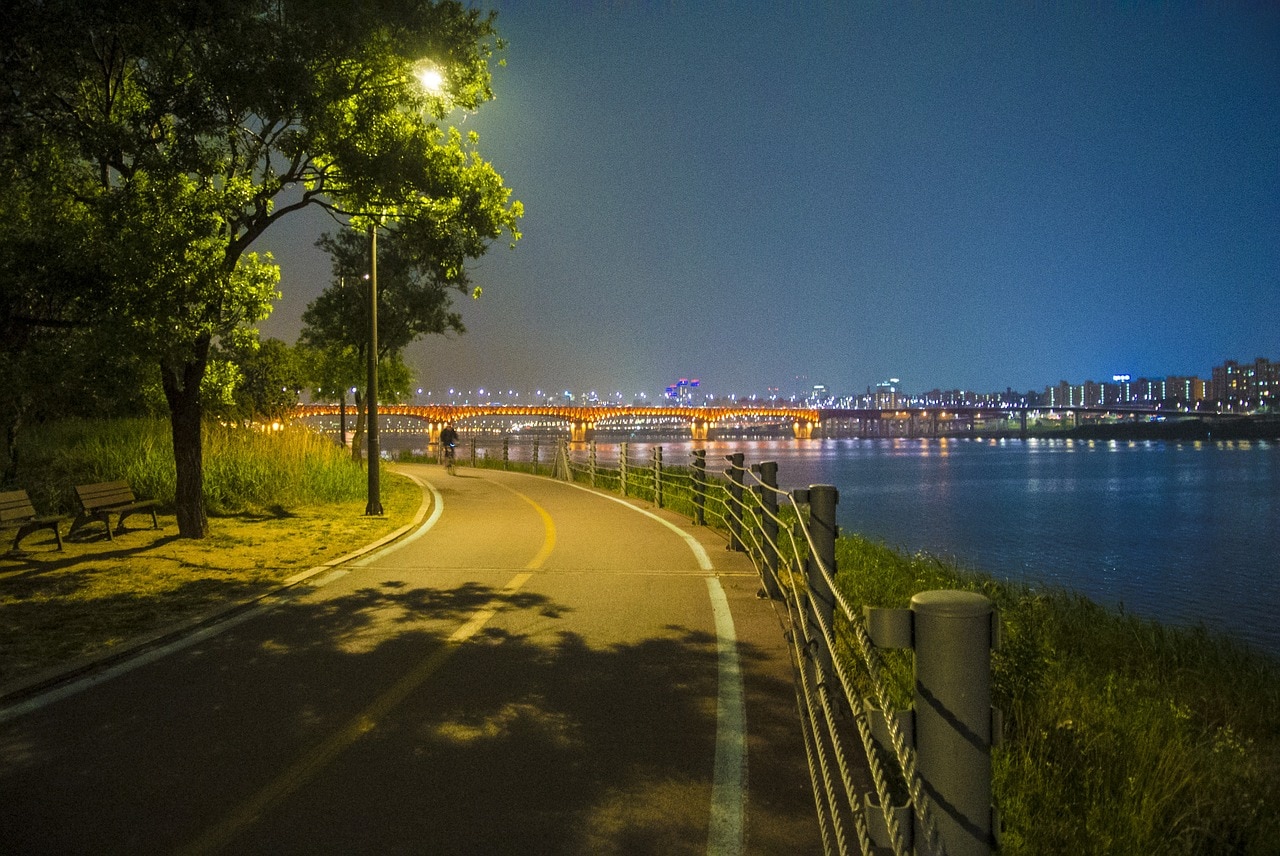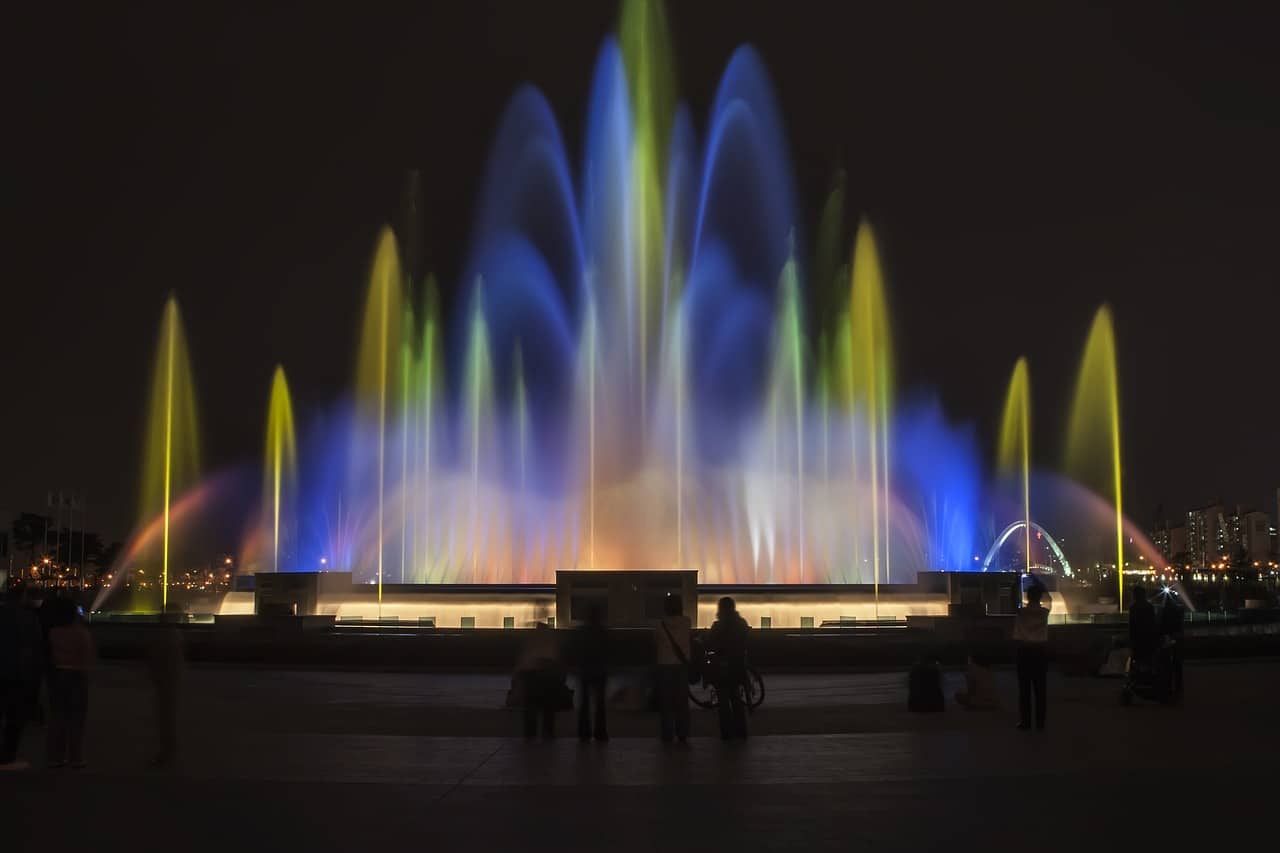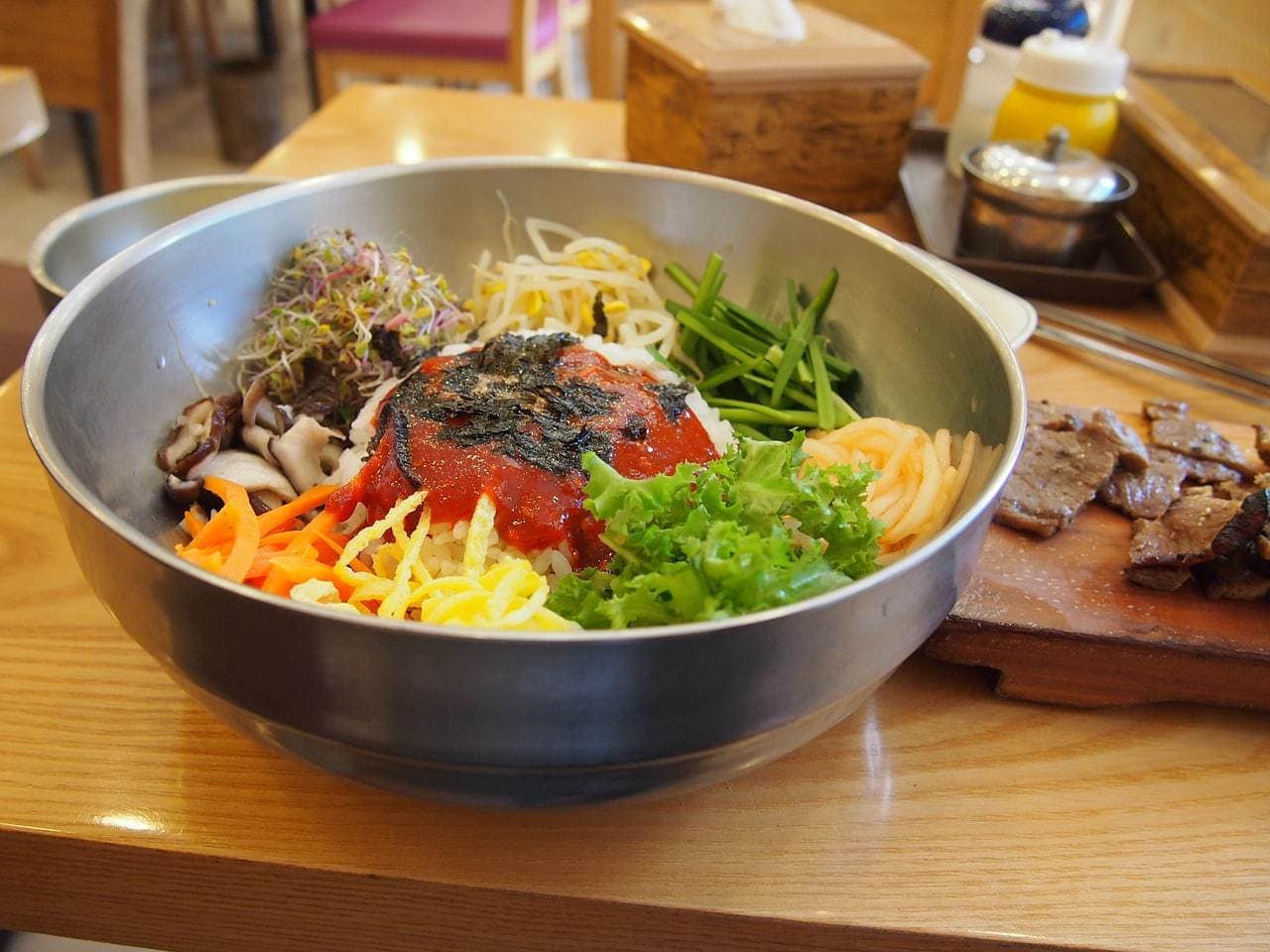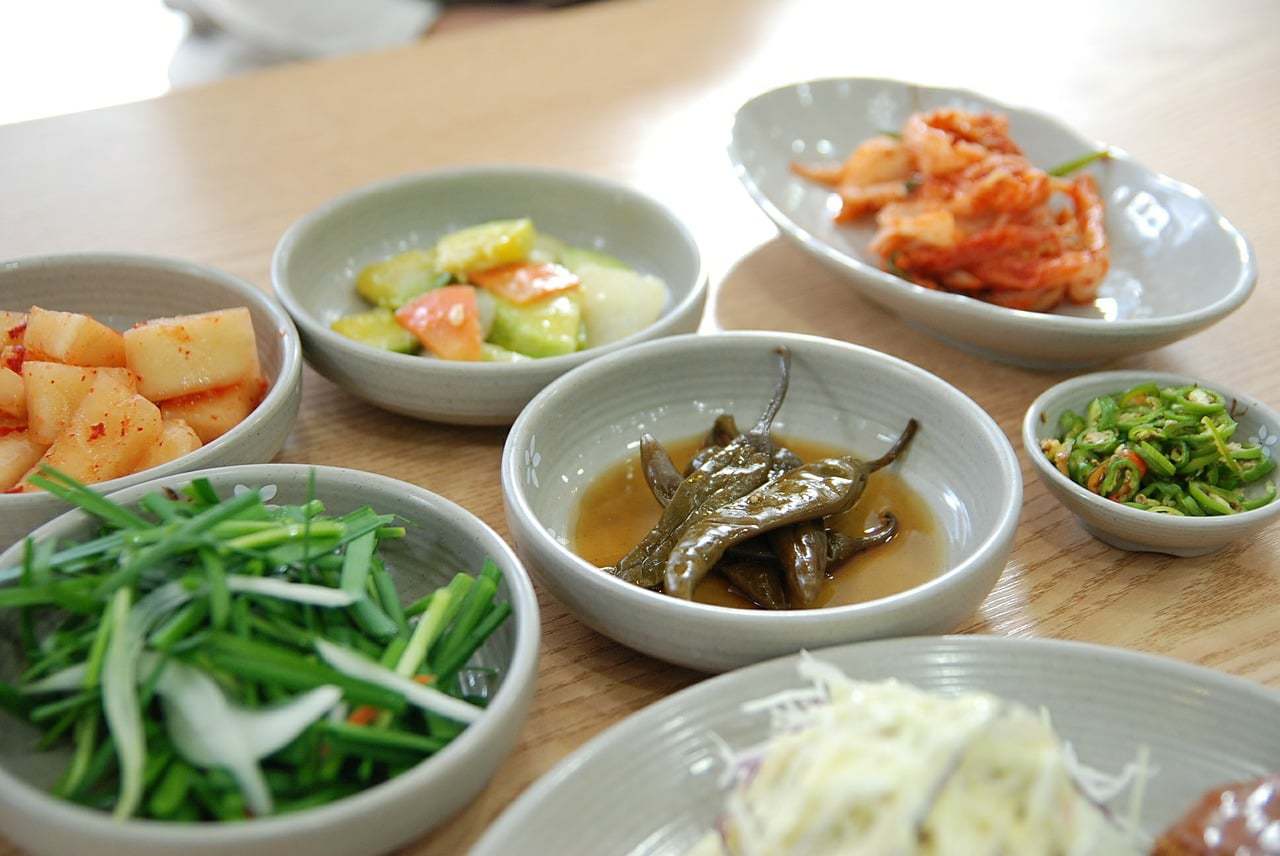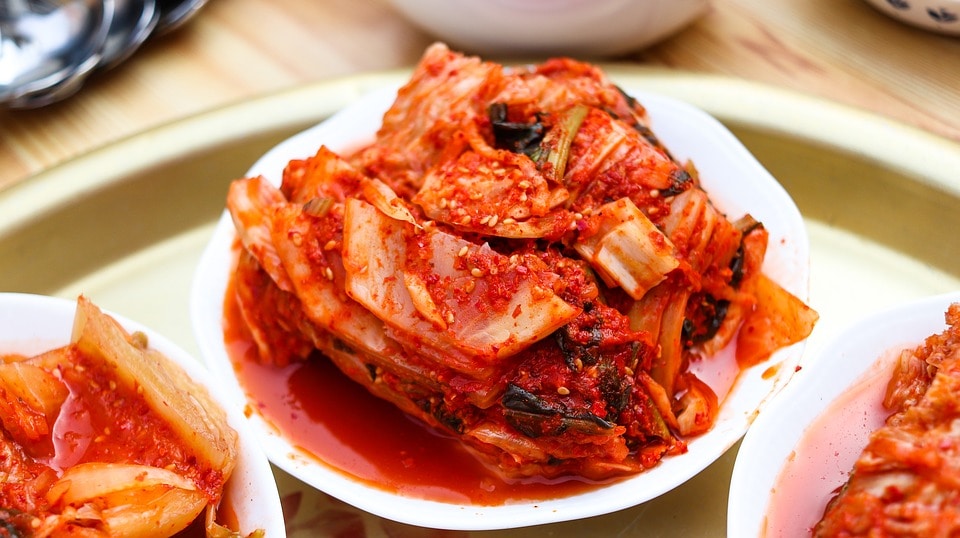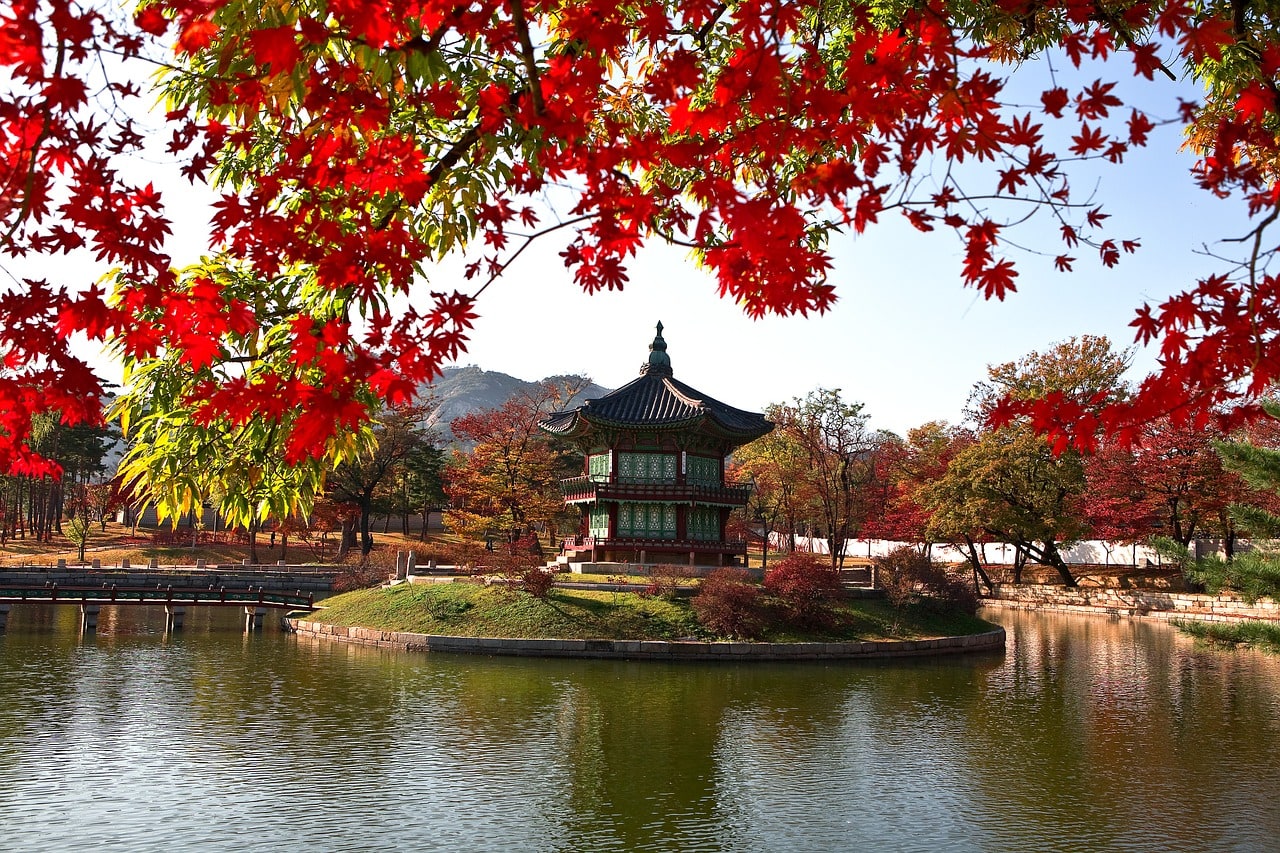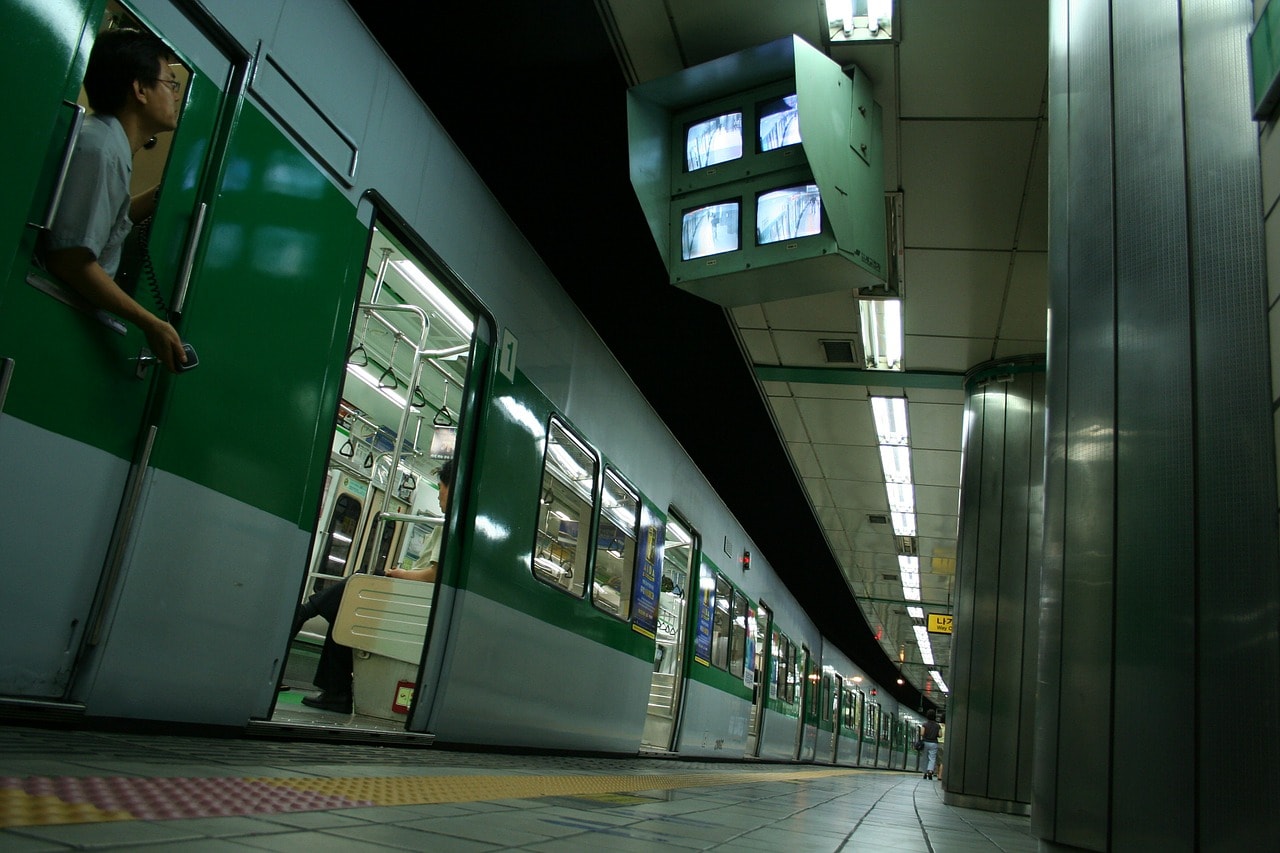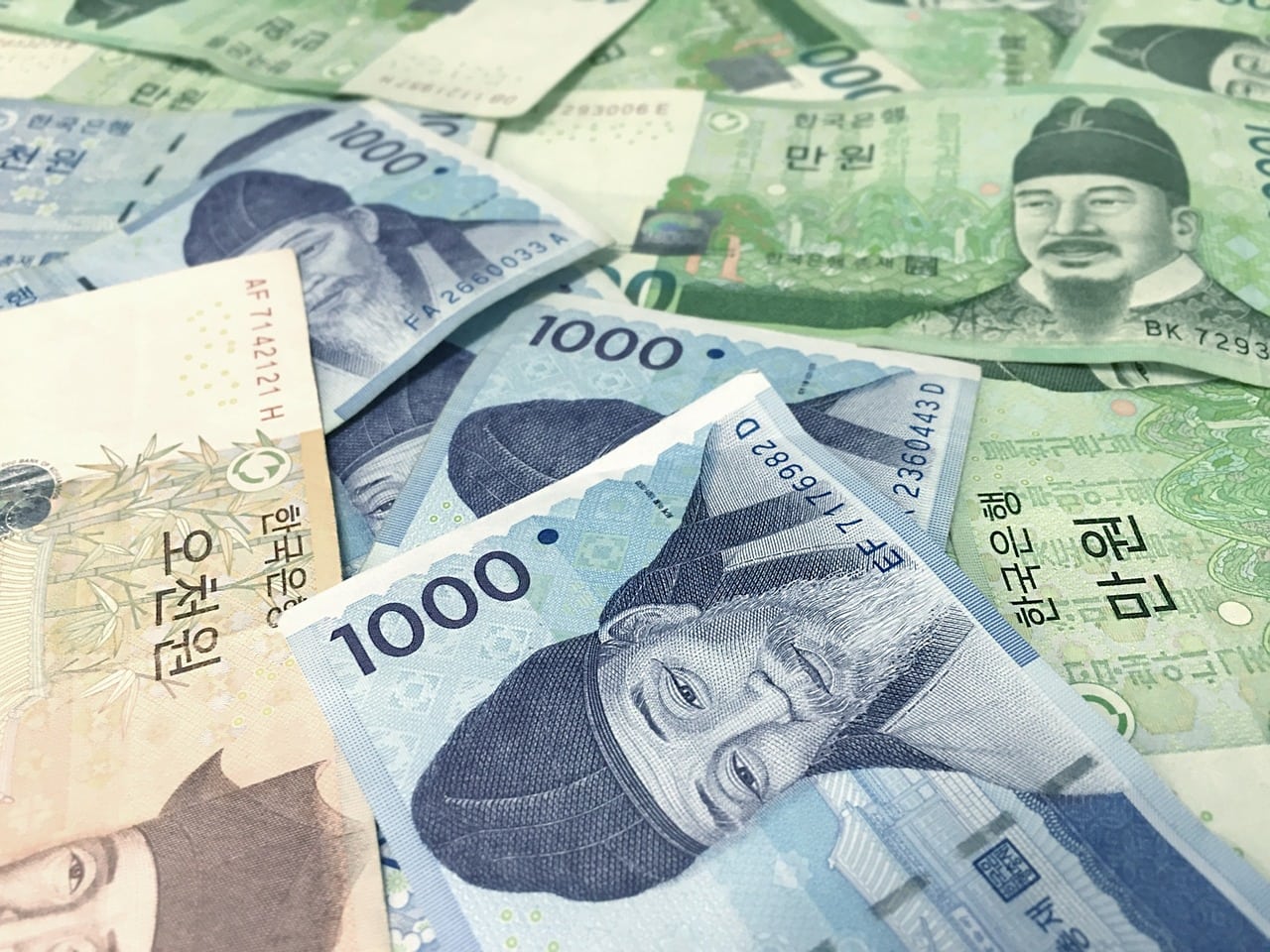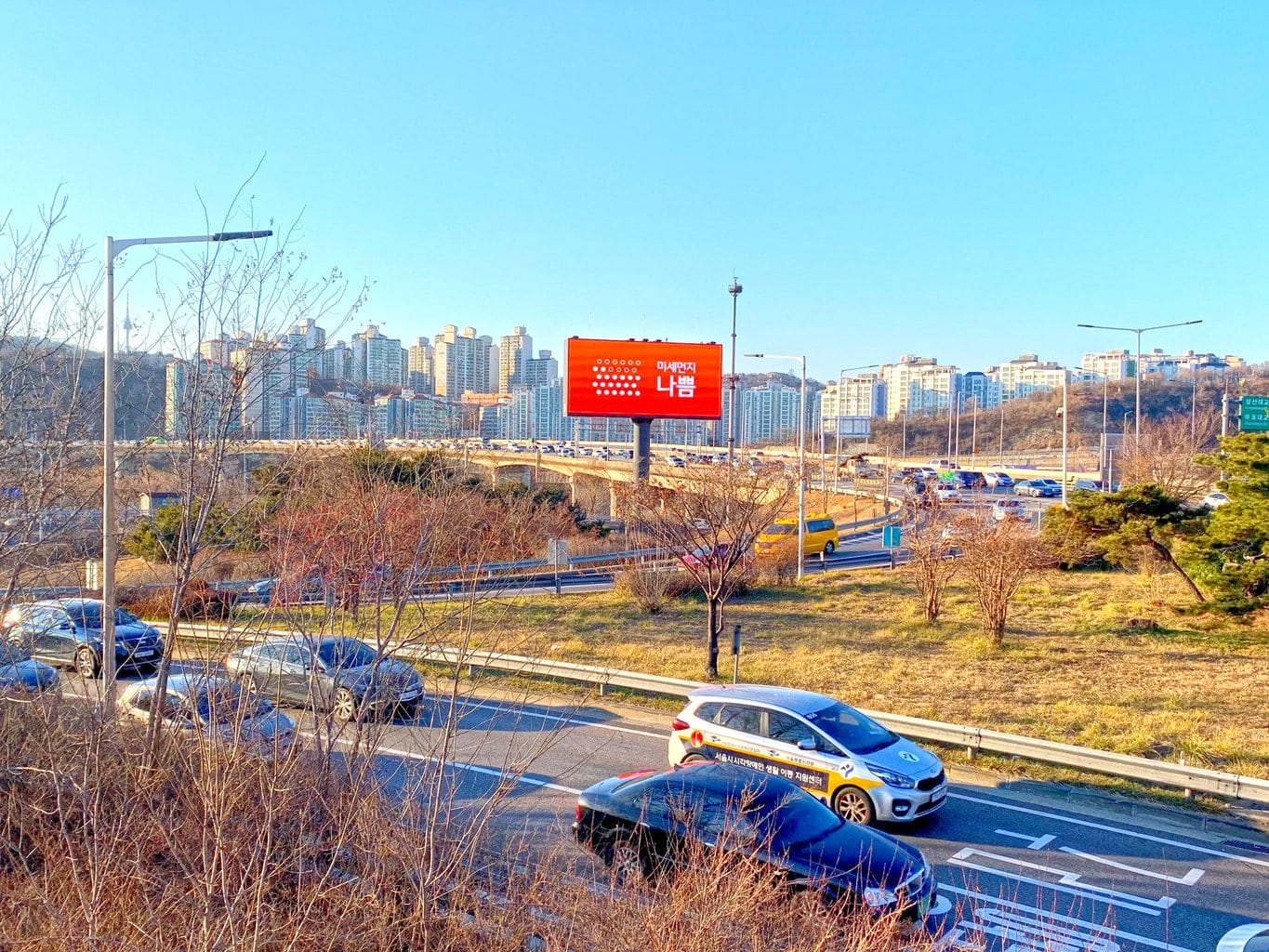This article was written by Once in a Lifetime Journey Content Manager Cal, who is married to a Korean and has been living in Seoul for 5 years. We do our best to keep it always updated, if you find anything that is not correct, let us know.
From the moment you set foot until the time of departure, you will be inundated with things to do in Seoul. Attractions in Seoul cater for all types from the adventurous nature lover to the trendy fashionista to culture geeks and deciding what to do in Seoul is not easy because the city is absolutely packed with unique, cool and interesting things to do.
You can hike a mountain in the morning, visit an ancient temple in the afternoon and dine at a Michelin starred restaurant in the evening. And, of course, you can end the day at any of the ubiquitous 24hr coffee shops before going back to your hotel room. Or just stay at a 24hr jjimjilbang (sauna) if you can’t make it back.
We’ve written another article explaining all the neighbourhoods in Seoul as well as the best places to stay in Seoul. This will get you your bearings so that you are familiar with the geography of the city, as well as the namings of the different districts and what they are famous for. Check out these interesting facts on South Korea too.
After reading that post, this article will give you an insider’s scoop on what to do in Seoul from someone who has been living and working in the city for 5 years and is married to a Korean. If you are curious about what to see in Seoul, this article is full of behind the scenes information, secret tips and tricks only known to the locals, unique things to do in Seoul and tourist attractions for the most exciting vacation whether you’re a family, a solo traveler, a couple or even a digital nomad.
SEOUL DISCOUNTED ONLINE PROMOS – Top Tip: Klook frequently runs promotions and discounts on many Seoul attractions. Check before your trip here.
Neighbourhoods of Seoul
Although I have written a complete guide on the neighbourhoods of Seoul, here is a short intro again to get you acquainted with the city.
Seoul is a massive city and is also one of the most densely populated in the world with over 10mil people living in an area of 605km2 (234 square miles). A lot of Seoul is also mountainous with various green spaces and park spread around the city. So contrary to popular belief, Seoul is quite green, which makes hiking and visiting green spaces some of the top things to in Seoul.
As for geography, the capital city itself is surrounded by Gyeonggi province and Incheon. An interesting fact is that Seoul is known as a “special city” (서울특별시- Seoul tukbyeol si), so it is not in any of the provinces of South Korea and when writing an address, you only put “Seoul”. You can see an image of Seoul in gold and Gyeonggi in red below.
While not official, places to visit in Seoul can be divided into three major areas (for touring purposes):
- North of the Han river or Gangbok
- South of the Han river or Gangnam
- Central Seoul (north), mainly consisting of Jeongno and also above the river
“Gang” in Korean is “river”, so buk and nam mean north and south respectively. The Han river runs through Seoul like a giant smile. In fact, lines 4, 5, and 6 are collectively called “the smile” line as they encompass the river.
Seoul city is further broken down into district (gu) and neighbourhood or ward (dong). For example, Gangnam (in red below) is a district (gu). Gangnam Station is in Yeoksam-dong (in gold below). The grey areas are the rest of Seoul with the Han river dividing north from south.
Want to know where to stay in Seoul? First see what tourist attractions in Seoul are most appealing to you. Best advice – create a list of all your best things to do in Seoul and put them on a map. Then you’ll have a better idea of where you should base yourself.
If you think there aren’t many things to do in Gangnam for you, but prefer to spend more time in Central Seoul, for example, then stay somewhere above the river and in the centre. If you’re traveling for a longer period of time, you can move around and stay at the different areas for an extended period.
It should be stated though that public transportation in Seoul is some of the best in the world. So it is easy to move around by subway, bus or very cheap taxi. However, traffic and distances can be misleading and even though transport is good, if you don’t think about what to do in Seoul first, choosing a convenient location, you may end up spending lots of time getting to and from places. For more on where to base yourself in Seoul, you can read this article.
While there are 25 districts (gu) in Seoul, you will not necessarily need to know their names. The most important thing is to know the subway stops for each of the Seoul tourist attractions you choose. You will find all this information, including some insider and local tips below. Read on to find out what to do in Seoul.
10 Top things to do in Seoul for first time visitors
Here is a quicklist of our top ten picks of things to do in Seoul. Click the links to book your activity or find more options on Klook or Getyourguide!
- Explore the centre of Korean cultural with a tour of the palaces and temples
. Don’t forget to hire your Korean clothing called hanbok! It’s a must and one of the most popular things to do in Seoul.
- Admire Gyeongbokgung, the largest of the palaces, with a personal photographer
to capture all the best moments.
- Shop at all day and night at 24 hour Dongdaemun and then continue Myeongdong where you can also relax and have a Mud Spa Experience
.
- Explore some of the best markets, particularly an historical look at Namdaemun Market
or visit Gwangjang Market
at night to visit the Netflix-famous street food stalls.
- Go by yourself or hire a hire a personal tour guide to scale Seoul’s most beautifull mountain in Bukhansan National Park.
- Not a hiker? Then take the cable car up to N Seoul Tower
for panoramic views of the sprawling city below.
- Take a cruise along the Hangang River
to see Seoul from a different angle on the wonderful Eland River Cruise.
- Take your kids or partner to Lotte World Theme Park
before going way up to the newly constructed Lotte World Seoul Sky Towery.
- See what all the fuss is about in Gangnam with a visit to the largest underground mall in the world COEX with this all access pass
and live your Hallyu dreams at SM TOWN.
- Pop into vibey Hongdae for all sorts of activities like VR experiences
, getting a Korean stylist
, having a Korean-style photoshoot
, having a relaxing footbath
or munching on Korean BBQ
.
Best things to do in Jongno, North Seoul (with map)
This is the tourist hotspot and Seoul sightseeing centre. If you’re only able to travel Seoul for one day, this should be your one and only stop to witness the highest concentration of the best things to do in Seoul.
Jongno is the cultural, historical and political center of the capital city containing everything from the Blue House (the president’s house), the centre of Seon (Korean Zen) Buddhism at Jogyesa Temple and the internationally renowned palace Gyeongbokgung, apart from a multitude of other sites, museums and Hallyu tourist attractions. Here are the best activities to do in Jongno.
Collect all your cultural souvenirs from Insadong
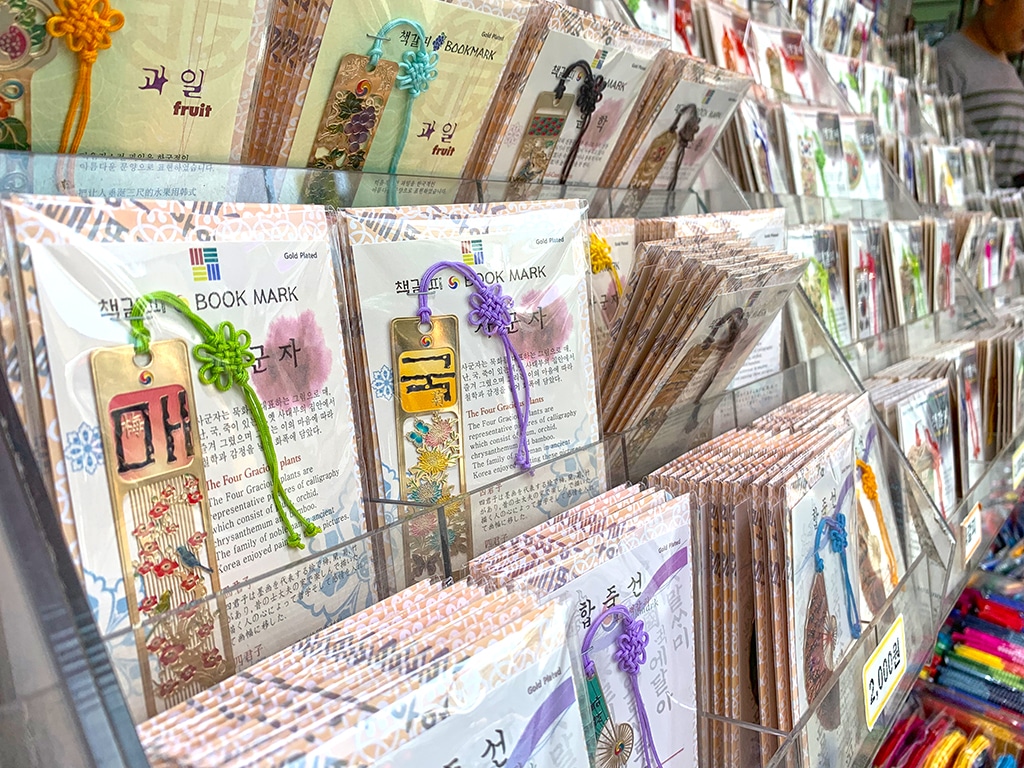
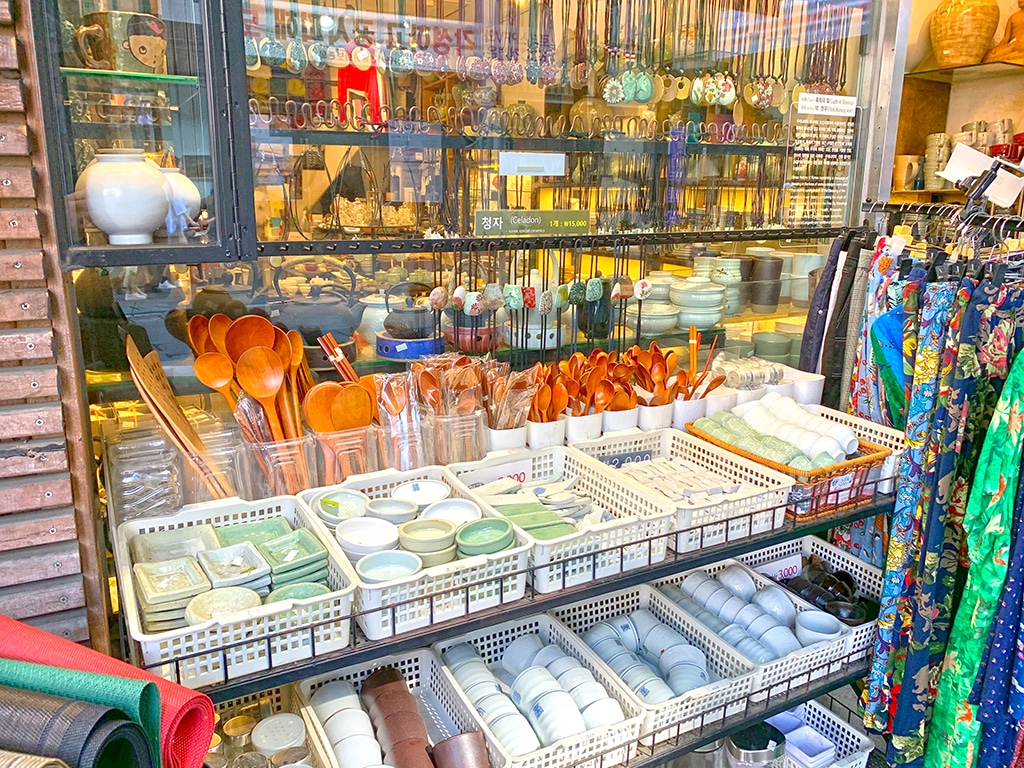
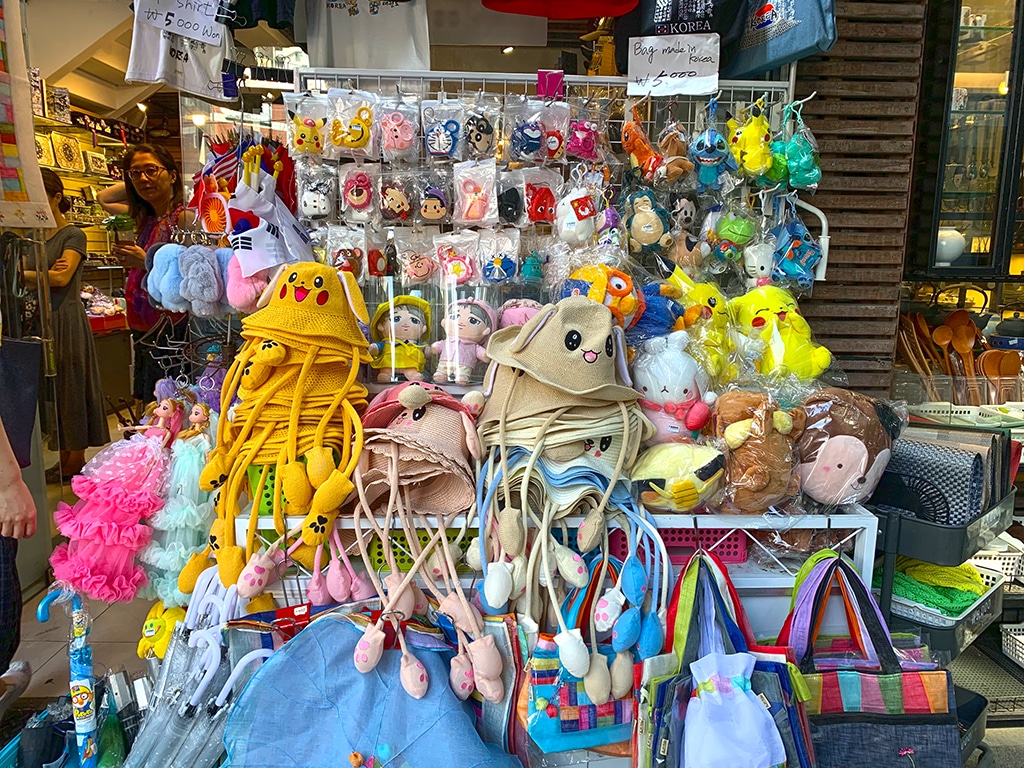
Whenever my friends ask me about the top Seoul places to visit, I always recommend the Jongno area. It’s a bustling business district where skyscrapers meet ancient temples. Start your Jongno journey along Insadong street.
This is the famous outdoor shopping street in Seoul that is home to a plethora of souvenirs and cultural artefacts to take home for yourself and your loved ones, so it is one of the best places to see in Seoul for tourists.
While Insadong is officially an area, when people talk about it, they are usually referring to one street. This street extends for roughly 500m from Anguk Station exit 6 in the north to Jongno-3 ga station in the south. You will find tourists walking around in Hanbok, merchants selling cultural trinkets and souvenirs, tea houses, coffee shops and street food.
The most popular snack in Insadong is Ta-Rae (Dragon Beard Candy), a simple candy that is similar to taffy. The stalls here are known for the lively, and usually very good looking, vendors. You can also try the rock hard yeot candy or the sweet flour-based and deep fried hoddukk.
Other things to eat in Insadong include kimbap (the Korean version of sushi, minus the raw fish and filled with tuna, meat and veg), mandu (dumplings), twigim (tempura battered vegetables), ddukkbokki (spicy rice cake), or skewered meats.
Apart from the main street, there are also restaurants, tea houses, galleries and a tiered shopping plaza called Ssamzie Market selling locally produced crafts.
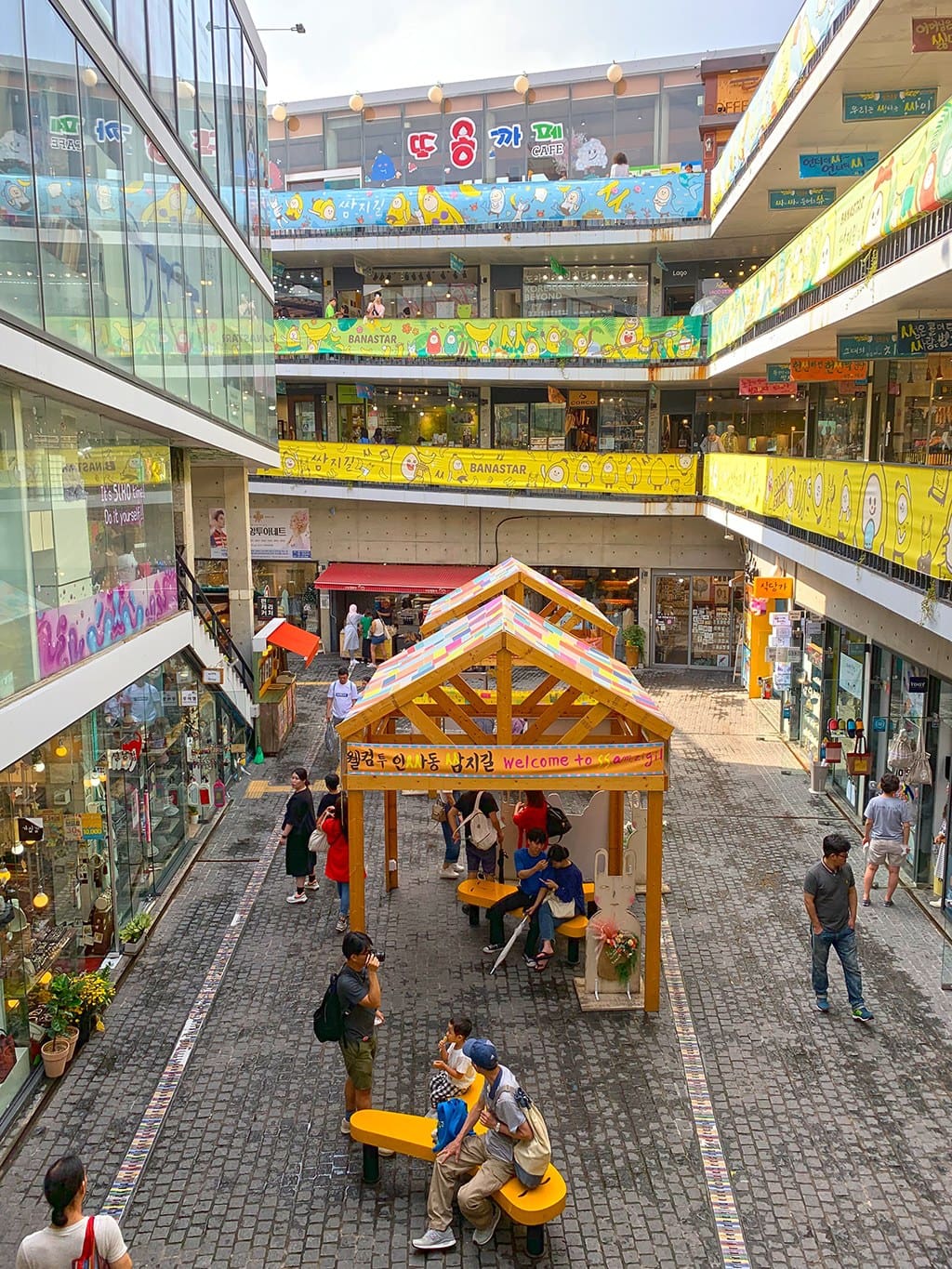
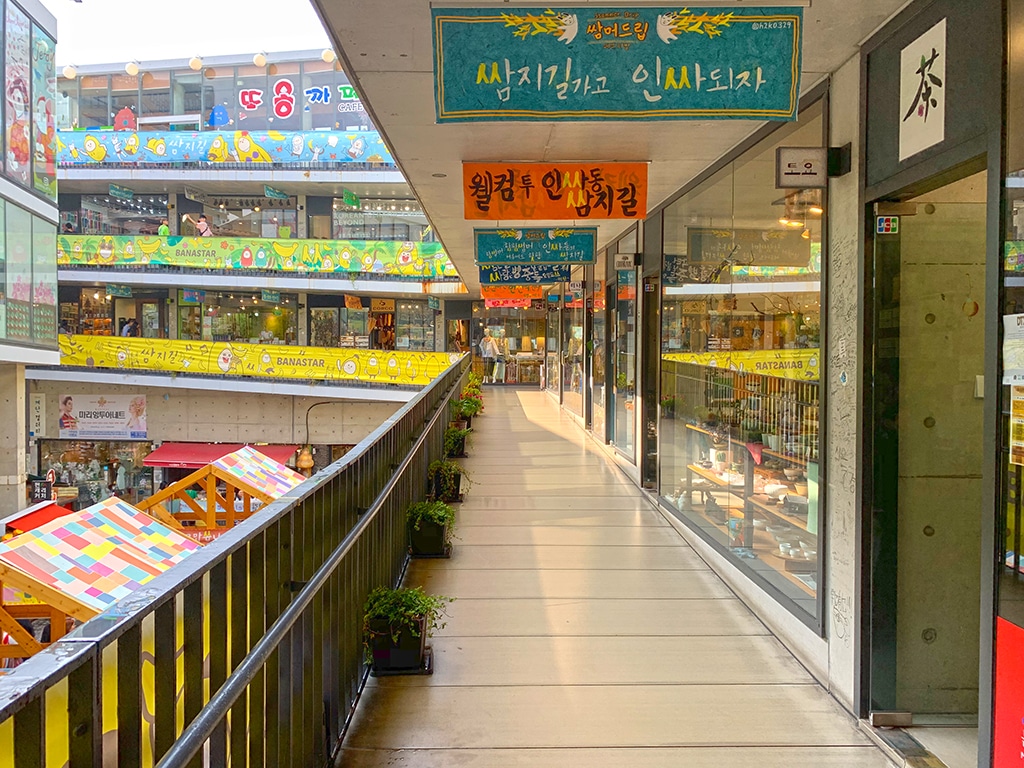
If you’re a musician, don’t miss Nagwon Musical Instrument Arcade where you can find just about anything to do with music in this multi-storied shopping complex. Here are extensive directions on how to get there. It is at the south entrance to Insadong.
Go restaurant hopping in Ikseondong
Another very trendy foodie destination near Insadong is Ikseondong where popular eateries, bars and cafes can be found among ancient Hanok houses. There are also various boutique and vintage clothing stores and a general bohemian vibe.
Go during the day for shopping and a coffee or at night for dinner, bar hopping and a hip atmosphere. This is one of Seoul’s hidden gems but is gaining in popularity. The streets are tiny and it can get very congested, so those who can’t handle tight spaces should explore Ikseondong away from rush hours around lunch and dinner times.
Learn about Korea’s history & culture at Jongmyo Shrine
Close by Insadong is one of the UNESCO-listed sites and most popular Seoul attractions for history buffs, Jongmyo Shrine. Learn about ancient customs, from memorial services to traditional music at this important site. It is definitely suited more for culture vultures than those looking for impressive architectural Seoul tourist attractions.
Note that you can only explore the site by yourself on Saturdays. All other days of the week, you will need to take part in the guided tour. English tours are at 10am, 12pm, 2pm and 4pm. It is closed on Tuesdays.
How to get to Insadong. Anguk Station (안국역) line 3 (orange), exit 6. After a few 100m take a left OR Jongno 3(sam)-ga (종로3가역) lines 1 (dark blue), 3 (orange), and 5 (purple) exit 1 – after Tapgol Park cross the road and take a right, then take the slip to the left.
How to get to Ikseondong. Anguk Station (안국역) line 3 (orange), exit 4 will get you to the north entrance near Unhyeongung Royal Residence OR Jongno 3(sam)-ga (종로3가역) lines 1, 3, 5 (dark blue, orange, purple) exit 6 will get you to the south exit near pojangmacha street.
How to get to Jongmyo Shrine. Jongno-3 ga (종로3가역) lines 1, 3, and 5 (dark blue, orange, purple), station exit 11. The exit is about a 5min walk from this exit.
Feel the romance at Samcheongdong
One of the best things to do in Seoul is to simply take it all in and do as locals do, which usually features food.
When you reach the top of Insadong street, with Anguk Station to your right, cross the busy intersection until you reach the grey stone wall. If you follow this narrow road, passing the school on your left, you’ll reach Samcheongdong.
The walk along the path is especially beautiful in spring as it’s lined with Seoul’s most beautiful cherry blossom trees. But it doesn’t really matter which season you come in, the walls make for a gorgeous Instagrammable backdrop.
Samcheongdong is quite a romantic area if you’re with your partner. There are coffee shops, brickface boutique stores and dessert cafes mostly selling waffles and Korean shaved ice (빙수, bingsu) most popular with red bean paste (팥빙수, patbingsu).
Patbingsu is a really delicious dessert made with shaved ice at the bottom and all kinds of sweet toppings from red bean to matcha to fresh fruit and chewy tteok (rice cake). Some of the cafes have rooftop terraces, which are recommended. Turn left when you reach the top of the path mentioned above for the main area (passing the flagship Kiehl’s store and walking straight).
When you reach the end of this road, you will come to another intersection. If you turn right, you will reach all the waffle cafes, Blue House and Samcheong Park. If you veer to the left, you’ll get to the National Museum of Modern and Contemporary Art (MMCA), Gyeongbokgung Palace and Gwanghwamun with the famed statue of King Sejong the Great, the inventor of the Korean alphabet system or Hangeul.
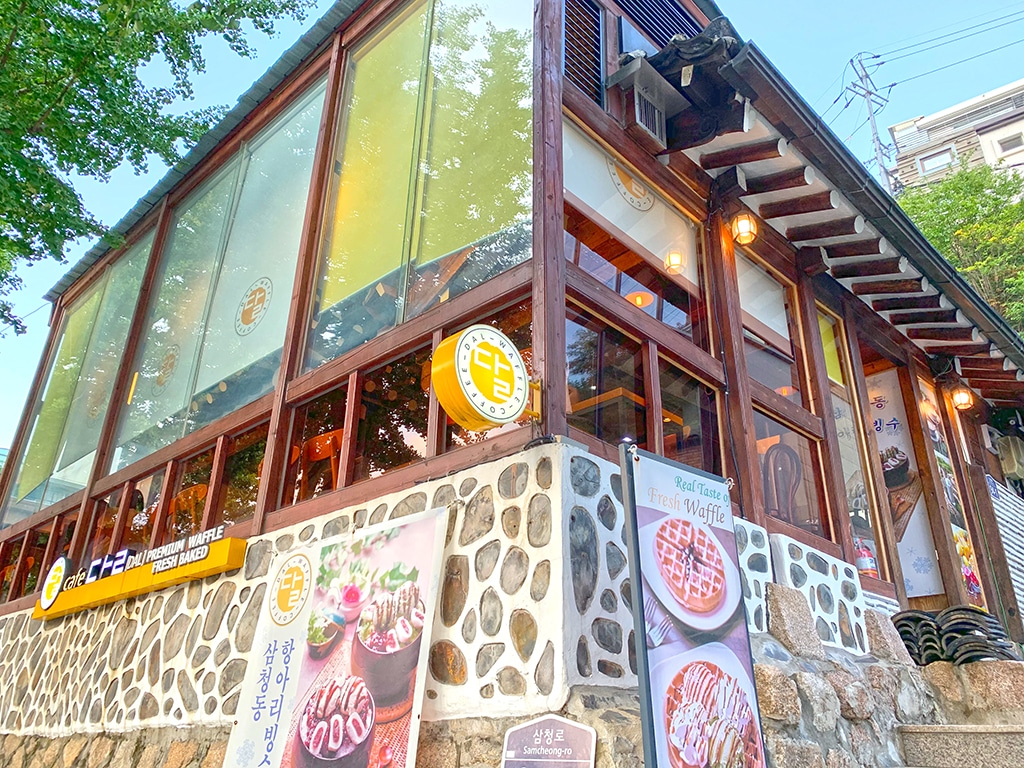
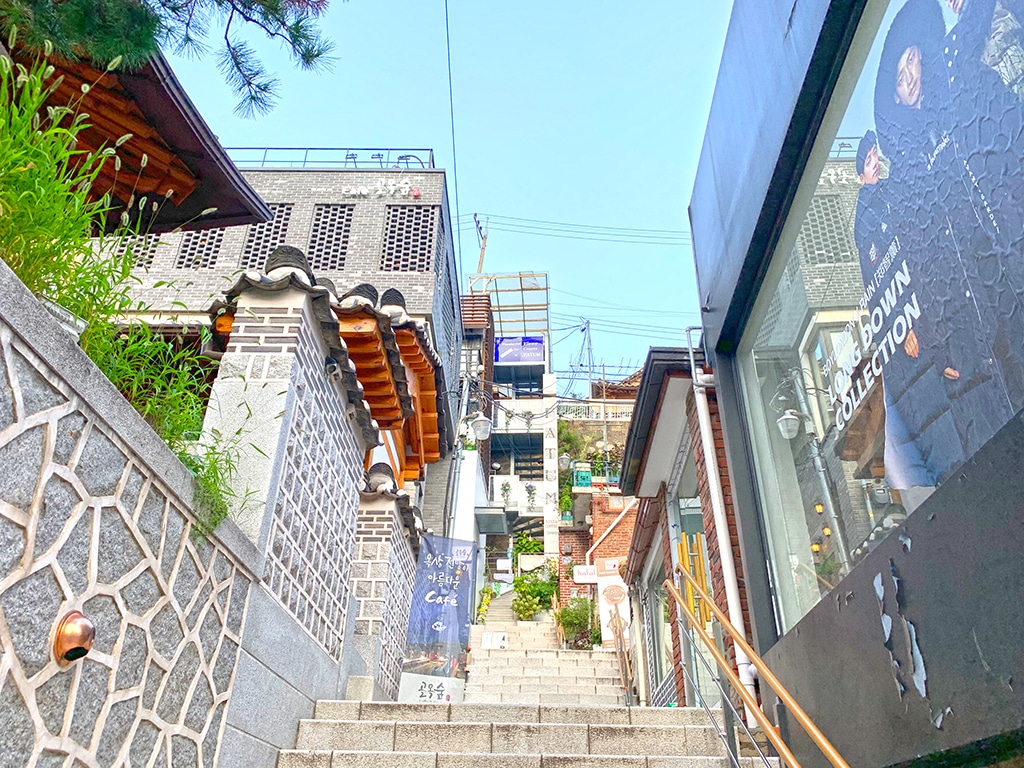
En route to the Blue House, don’t be shy to take an alleyway up the stairs to find some true dining gems. If you climb the steps all the way to the top, there is a gorgeous panoramic view of the Jongno area. There are also several busy waffle houses and coffee shops with rooftop access.
While the cafes are constantly changing ownership and being renovated, it’s difficult to mention one. A favorite at the time of publication is Cafe Breezin. They serve good coffee, amazing waffles and have a rooftop terrace as well as indoor seating, although they have been known to lack in service.
Don’t go to the usual chainstores like Starbucks or The Coffee Bean if you want an authentic experience. Rather traverse through the labyrinthian backstreets to find a diamond in the rough. Parents with baby buggies can also enjoy the more authentic places along the main street (Samcheong-ro).
Explore Buamdong an under-the-radar hip town
Trying to find an under-the-radar area in Seoul can become a game of sorts. There are so few areas in Seoul that are not packed to the brim with people 24/7 so finding one of these spots seems like a real win.
Buamdong is one of those places. Even though it’s just above Jongno, it’s only reachable by bus, which is really inconvenient in super efficient Seoul. So why would you want to visit Buamdong? For the eccentric cafes (there are no chains like Starbucks, which is weird for Seoul), big open spaces, a focus on the arts and a general lack of crowds. It’s basically the countryside without stepping foot outside of Seoul.
Nestled at the foot of Bukhansan, Buamdong offers picturesque views, hidden galleries, and artisanal bakeries and craft stores. When you get off the bus (see directions below) follow your feet, eyes and nose and stop at any one of the quaint stores you fancy. The best thing to do here is just to stroll around.
Below are some of the best places to visit. You will notice that we have not linked to most of them as they don’t have any websites or social media. Now you can start to get the feeling of the area.
Some standout eateries include Scoff British-owned bakery, Boobing Bingsu Jib that looks like a toy shop and serves patbingsu, eccentric Italian fare at Art For Life, and of course Sanmotoonge of Coffee Prince Kdrama fame. This is a gorgeous, if slightly touristy, cafe with a panoramic view of the city below.
There are also other delicious eats like Jaha Son Mandu (dumplings), Gyeyeolsa Chicken for one of the most famous fried chicken restos in Seoul, Buamdong Way Chicken as the newcomer, and Tify (This is For You or 티파이) for coffee, beer or pasta.
And of course, there are some super chill cafes like Club Espresso (their coffee is legit), 1MM Life Studio Cafe and Coffee SomA.
If you’re looking for some great art, try Eunang Tree Near the Well (우물가 으낭나무) for hand-crafted goods, Space 291 which focuses on photography, Whanki Museum housing abstract Korean artist Whanki Kim’s artwork and Seoul Museum for everything from traditional to contemporary, Korean to foreign art. Your ticket to Seoul Museum will include entry into Seokpajeong a majestic complex of gardens in a former royal villa of the Joseon Dynasty.
There’s also Zaha Museum perched up high and showcasing experimental works from young Korean artists and industrial looking Yoon Dong Ju Literature Museum that is a gallery that celebrates the work of the late poet Yoon Dong Ju.
Top tip: If you really want to explore this area without the crowds, it’s suggested that you visit between Tues-Fri from 9am-6pm. Many of the stores and galleries are closed on Mondays and the crowds could ruin the vibe on weekends.
How to get to Buamdong: Take the subway to Gyeongbokgung Station (경복궁역) line 3 (orange line) exit 3 and walk straight for around 100m. At the second bus stop (not the shuttle bus stop) take the green bus (#1020 or #7022) for six stops (about 10 mins). You will land at Buam-dong Community Service Center, which is announced in Korean and English.
Witness global contemporary Art at MMCA
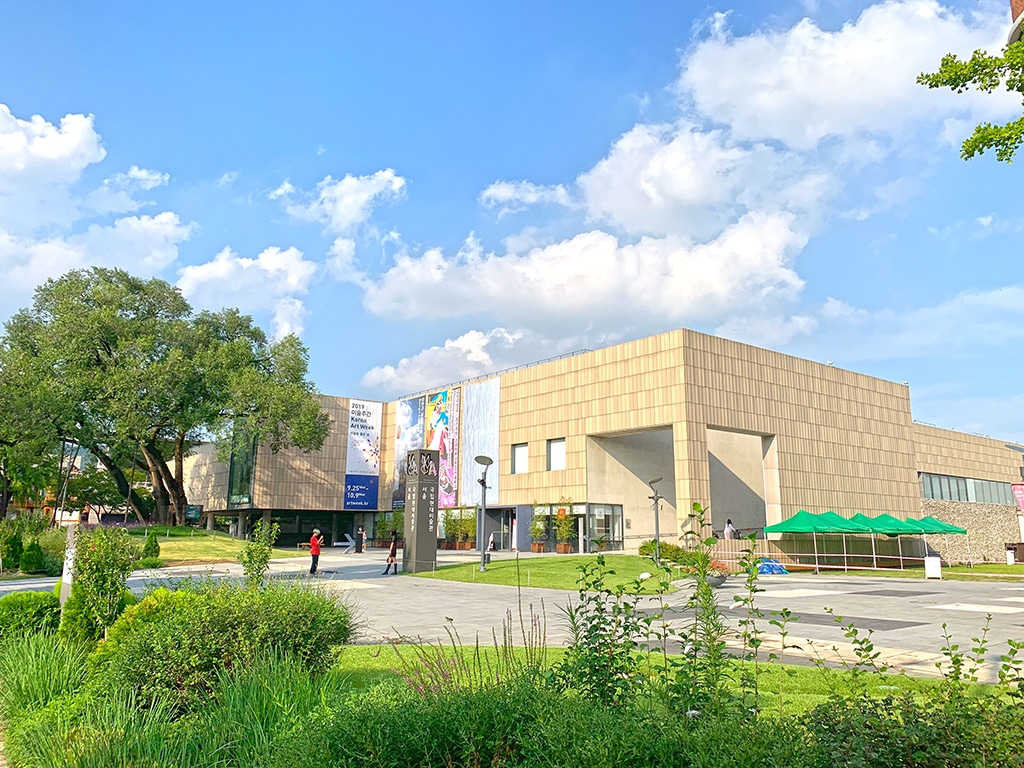
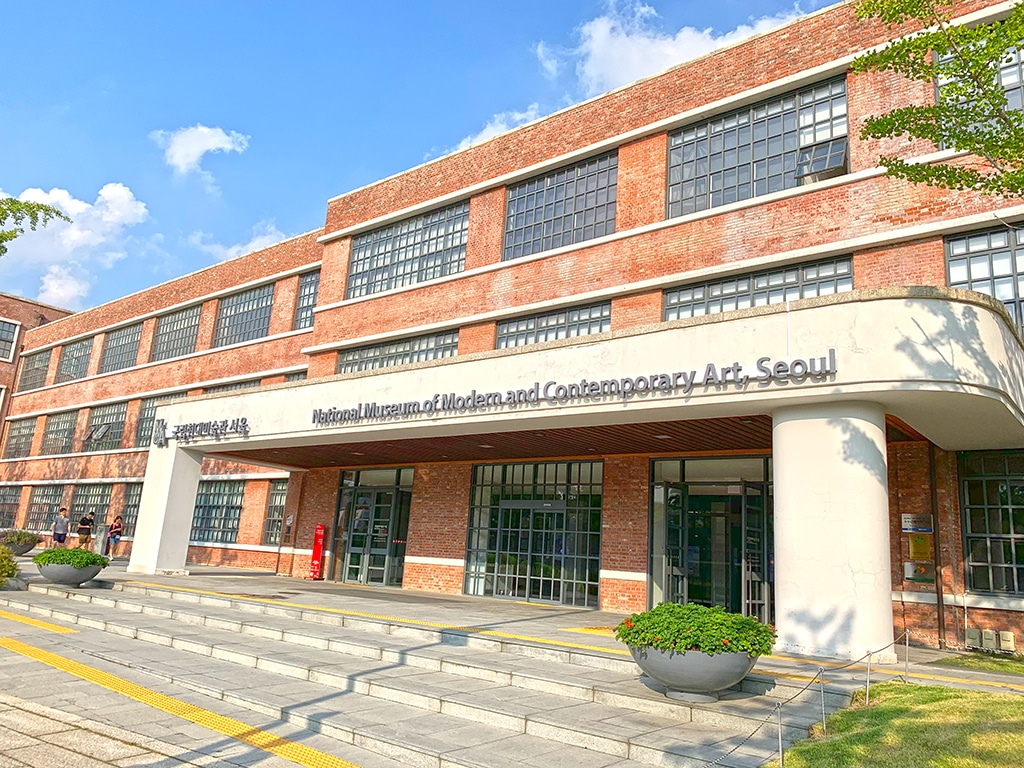
Directly to the east of Gyeongbokgung Palace lies the monolithic National Museum of Modern and Contemporary Art (MMCA), one of the best places to see in Seoul. Lying in what was formerly the Defence Security Command, the fairly recent Seoul branch of the MMCA opened its doors in 2013.
The style of the building uses the traditional Korean concept of madang, which is a large communal courtyard where people can come together and socialise so it is an interesting place to visit in Seoul even if you don’t go in. There are various exhibitions to look at that are constantly changing. Entrance fee is around $4 with free admission between 6-9pm.
Book your discounted tickets online before visiting here.
Check out the traditional Hanok houses in Bukchon Village
Although Samcheong-dong consists of restored traditional houses, the most popular place in Seoul to snap a picture of these beautiful houses (Hanok) is in Bukchon Village. You can explore on your own or take while wearing Hanbok which is the best way to experience this part of Seoul. You can hire Hanbok for either 4 or 24hrs here. There are even workshops and homestays available, where you can stay the night in Hanok.
Please remember that while this is one of the most visited places in Seoul and an Instagrammer’s dream, it is actually a residential area, which real people living their daily lives in some of the houses. So be aware of noise levels, particularly in the evening.
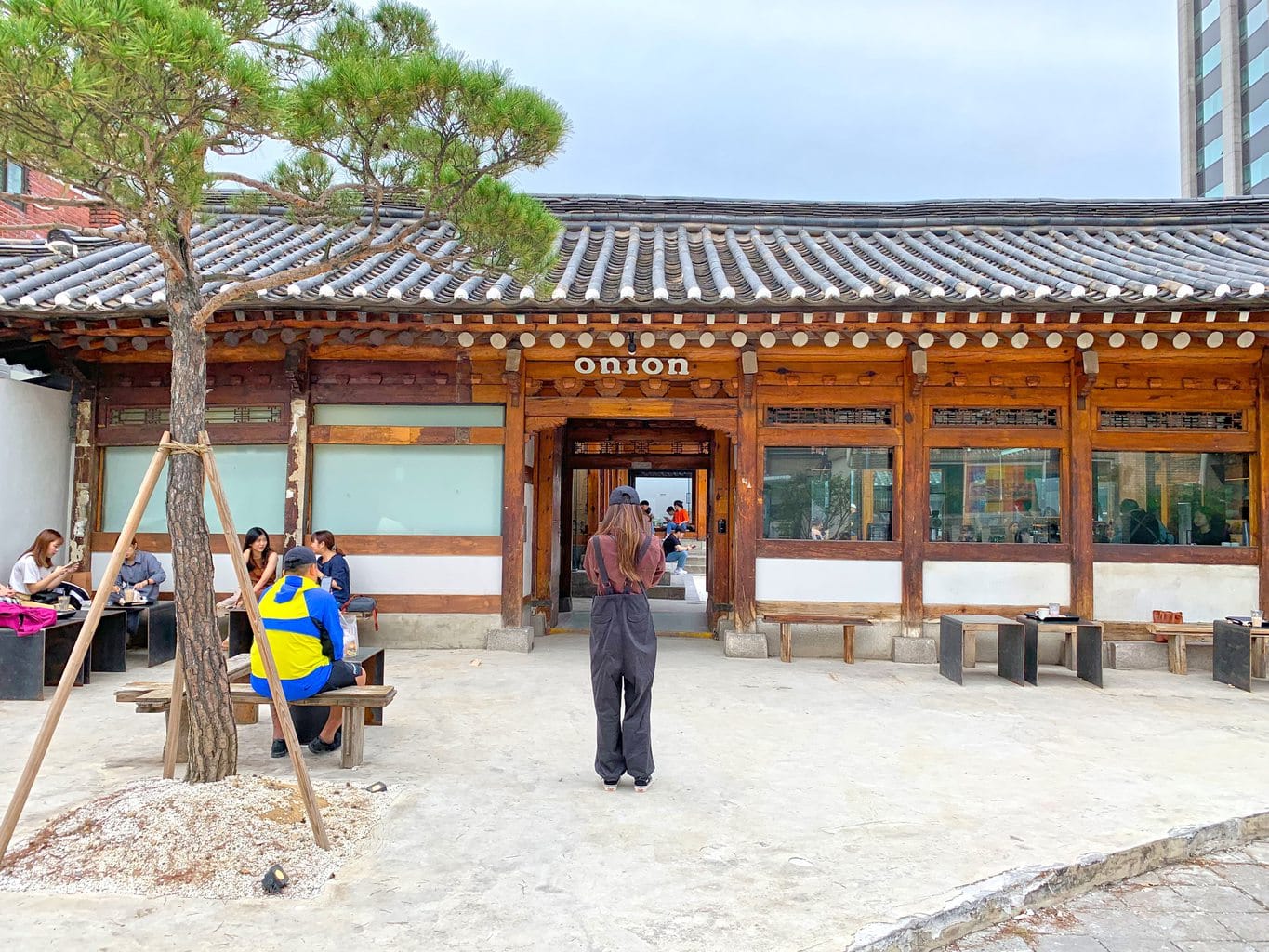
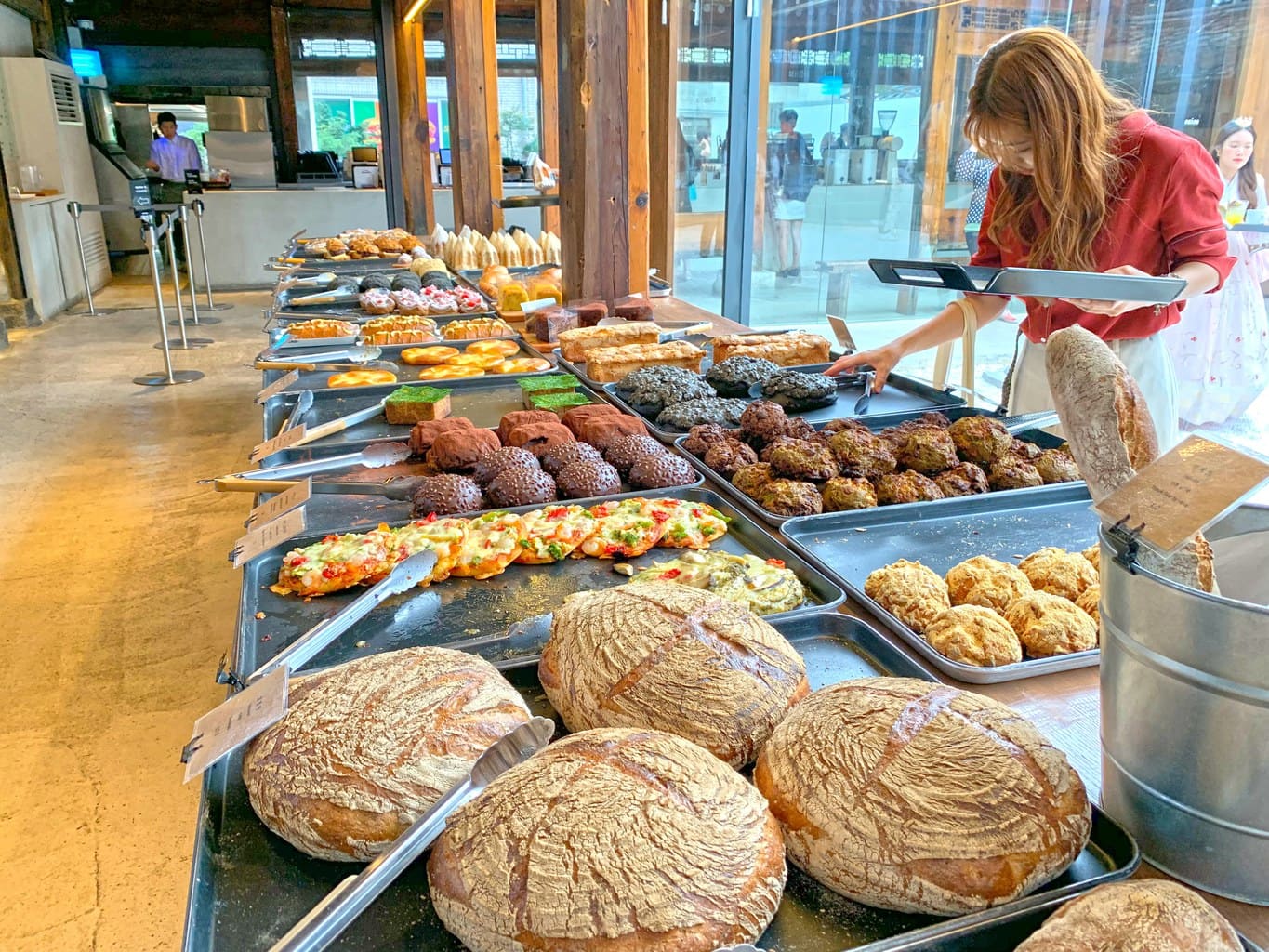
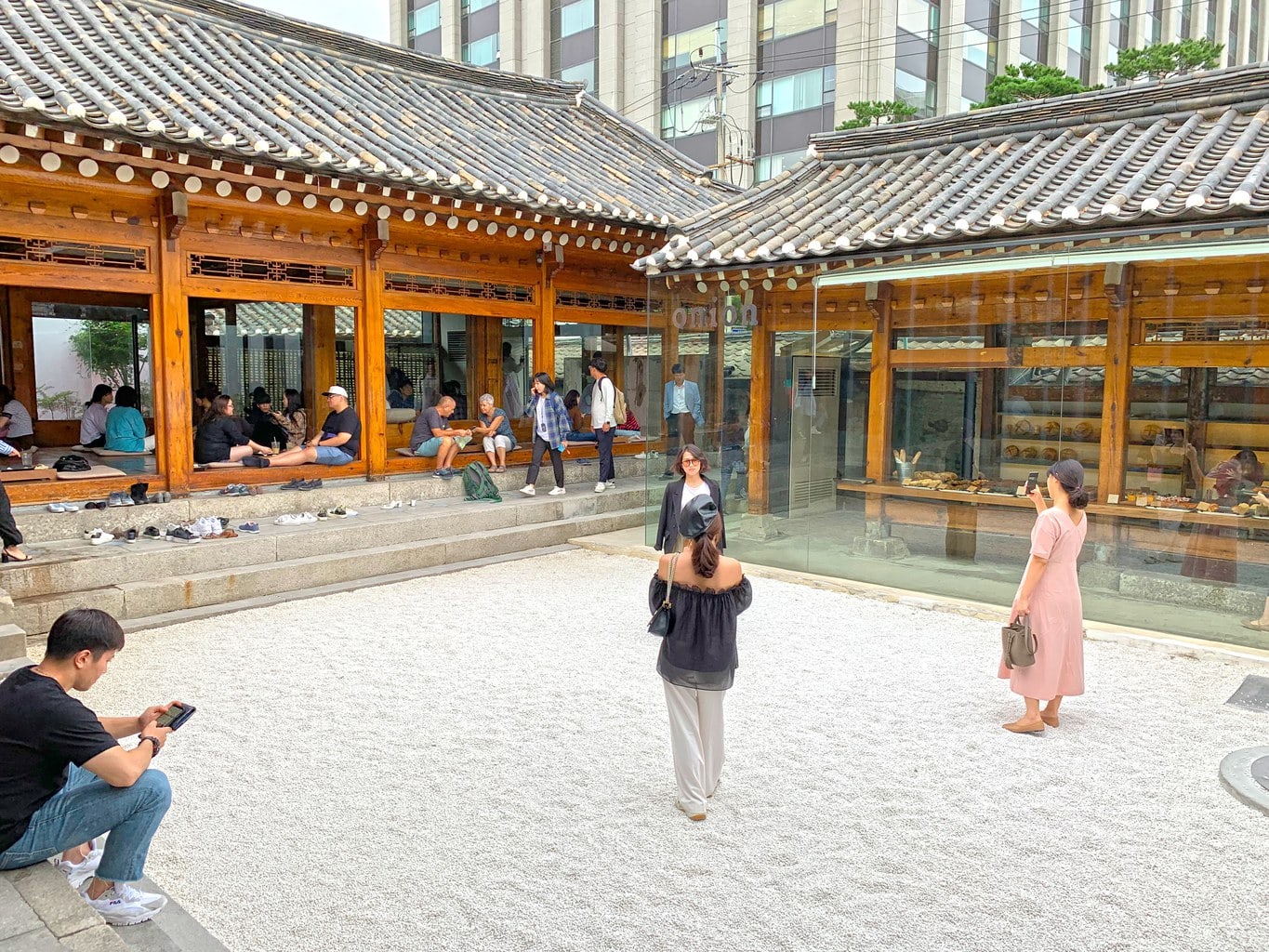
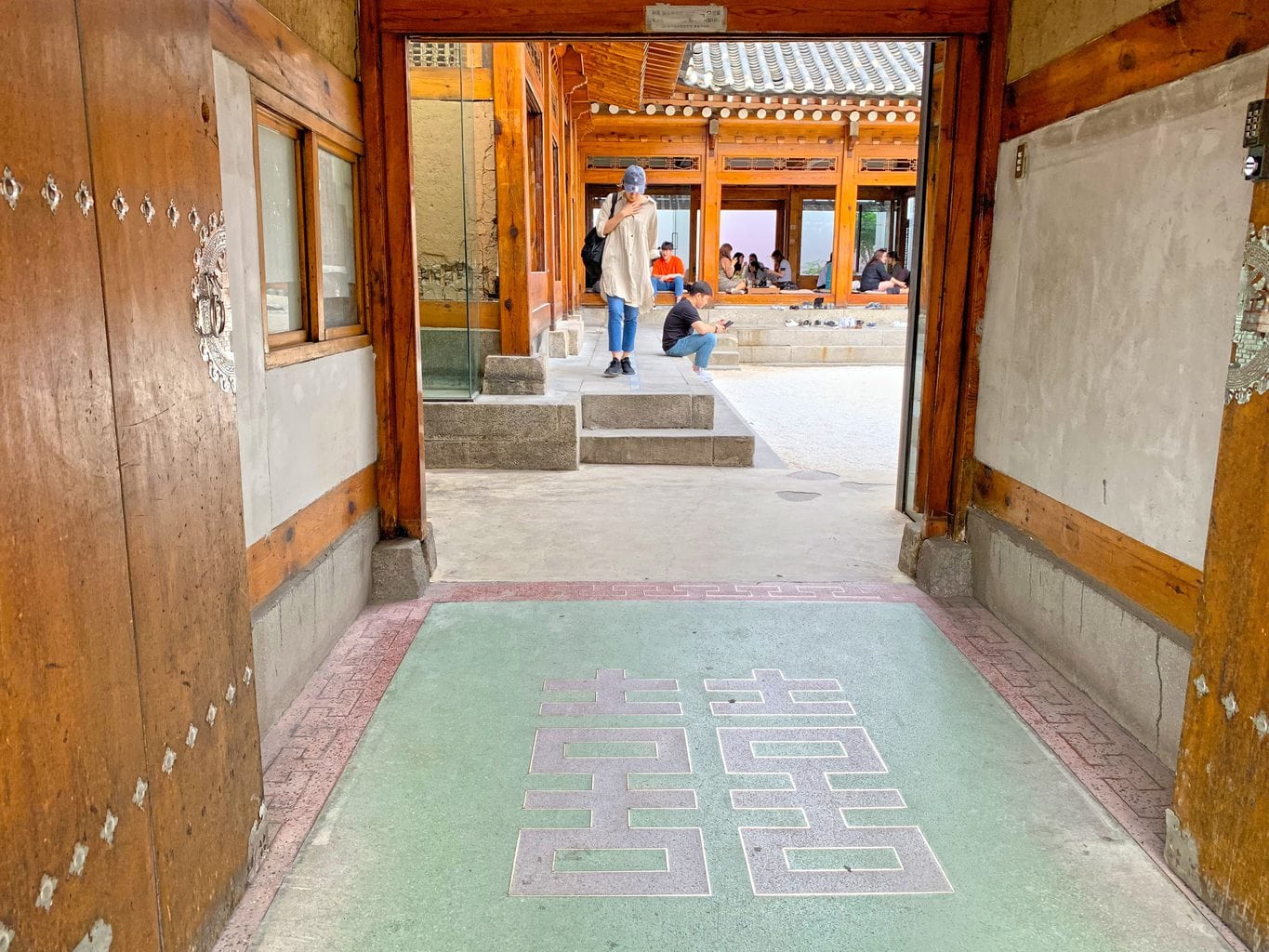
Hint: There is a flourish of hanok houses opening around the city. It’s a trend that will hopefully grow over time and is in stark contrast to the glitzy malls and flashy hotels. If you want some more great images of hanok, but in a trendier and more modern setting, head to nearby Cafe Onion, the Anguk branch of the gentrified Seongsu coffee shop and bakery. It’s in walking distance from Anguk station line 3 (orange) exit 3. Or head to J. Hidden House near exit 10 of Dongdaemun Station line 1 & 4 (dark & light blue). Your IG feed will thank you.
How to get to Bukcheon. Anguk Station (안국역) line 3 (orange), exit 1 or 2 – Go straight for about 300m to arrive at Bukchon Hanok Village; Bus. Get off at Bukchon Hanok Village Bus Stop – Maeul Bus Jongno 2.
Taste authentic traditional food at Socheon
While Bukchon is absolutely beautiful and a must-see attraction in Seoul, I would also recommend a brief visit to the west side of Gyeongbokgung called Socheon (서촌). Buk is east and so is west, cheon means village – so these are the west and east villages of Gyeongbokgung.
Socheon is similar to Samcheongdong and Bukchon, but caters more to a local audience than tourists. It is therefore grittier and has loads more character so it is a more authentic place to visit in Seoul. The street food is fantastic, the dingy restaurants are some of the best in Seoul and the artisanal coffee produced in this area is fabulous.
Foodie tip: If you want authentic traditional Korean food, I would highly recommend visiting Socheon. The entire street is lined with some of the best tasting food in Seoul. My favourite restaurant is Chebudong Janchijip (서촌 체부동잔치집). It is a total dive, with no website or Facebook page and only a picture menu (some in English).
I love traditional food from yesteryear and often surprise my Korean friends with these tastes as they are not the average Korean foods. So if you’d like to experience something a little different in Seoul I would suggest the following:
- Perilla seed kalguksu (들깨칼국수 – Deulkeh kalguksu) – handmade, knife-cut wheat flour noodles served in a large bowl with broth
- Sujebi (수제비) – hand-pulled dough soup
- Jeon (파전) – Korean savoury pancakes made with wheat or rice flour and other ingredients. The three most popular are kimchi jeon (김치전), pajeon (파전 – spring onion jeon) and haemul pajeon (해물파전 – seafood spring onion jeon)
- Memil-buchimgae (메밀전병 – mehmil jeonbyeong) – buckwheat pancakes
There are other things on the menu, so come hungry and hopefully with some friends so you can try a little bit of everything. See my map for directions.
How to get to Socheon. Gyeongbokgung Station (경복궁역) line 3 (orange) exit 2. Take the first road to the left.
Feel zen-like at the heart of Korean Buddhism at Jogyesa Temple
Within the centre of the bustling metropolis is a peaceful oasis and the heart of Seon (Zen) Buddhism in Korea. While it’s not the quietest temple in Seoul, it most definitely is one of the most accessible and must-see Seoul attractions.
Jogyesa is the head temple of the Jogye order and is therefore quite a busy one. Not only is it constantly bustling with visitors as it is one of the most popular Seoul tourist attractions, but it also holds ceremonies, lectures and other Buddhist events.
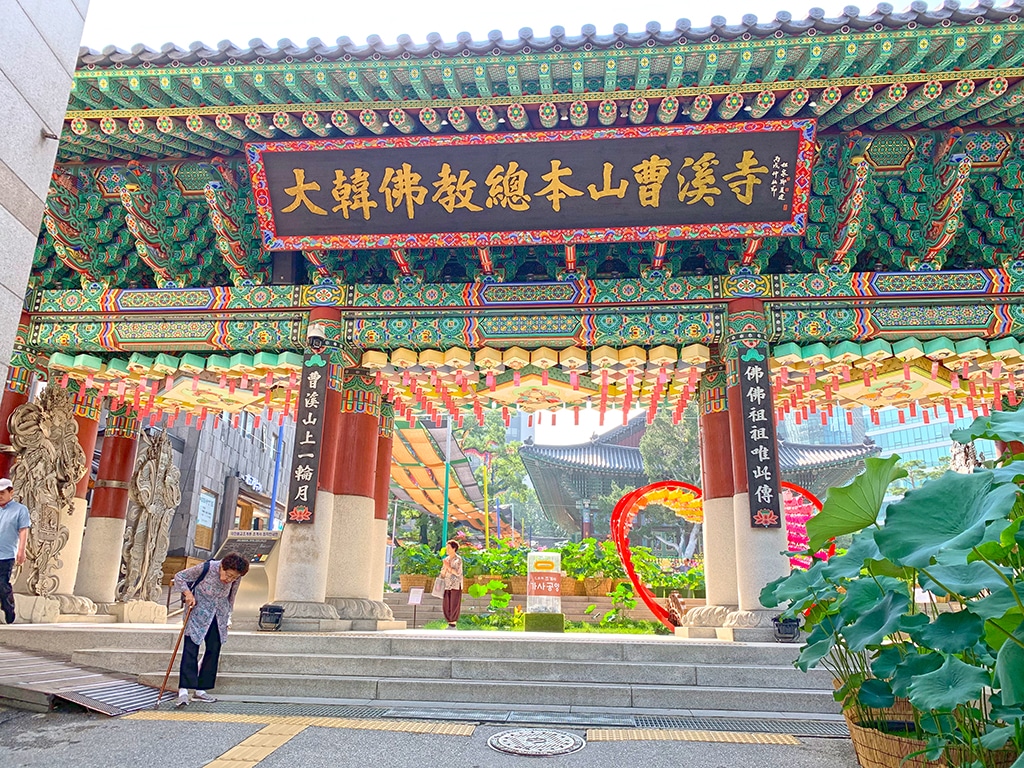
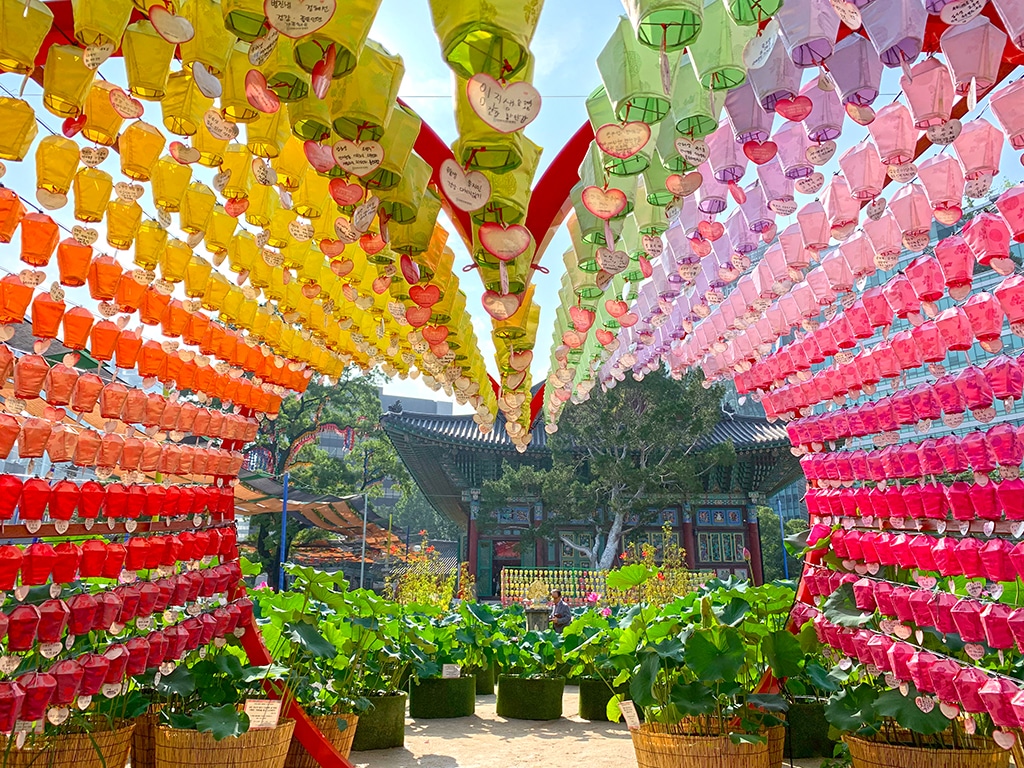
The area just outside the temple is a shopping mecca for Buddhists. You can purchase statues of Buddha, monk clothing, Buddhist rosaries and trinkets of all kinds. This is one of the best things to see in Seoul for the spiritual traveler. Find out more about Jogyesa Temple here.
If you are a history buff and want a knowledgable guided tour of Seoul, we would recommend this full day tour from Klook. An extremely knowledgable guide will take you to several places from the Blue House and Gyeongbokgung to Jogyesa and the National Folk Museum. There is no better way to learn the intricacies of such a rich culture.
How to get to Jogyesa – Anguk Station (안국역) line 3 (orange) exit 6. And walk for about 140m. Turn left at Ujeongguk-ro, just past Insadong-gil. Walk another 190m. The temple will be on your right.
OR Jonggak Station (종각역) line 1 (dark blue) exit 2. Walk straight for 350m until you reach the temple on your left. On the way be sure to look up at Jongno Tower, it’s quite a unique building!
Meditate at Gilsangsa Temple
Here is one of my best Seoul tips for those looking for some peace and solace. While Jogyesa Temple is beautiful and important, for those interested in Seon (Zen) who would like have a quieter temple experience, I would also recommend a trip up to Gilsangsa Temple.
It is only a little further north, but seems miles away from the city. The story behind this temple is also quite interesting, as it used to house a high-class restaurant (actually a gisaeng similar to Japanese geisha or courtesan) before being transformed into a working temple.
The owner of the restaurant donated the land and buildings to Venerable Beopjeong, a famous Korean monk who started a community called Malgo Hyanggiropge or “clean and fragrant” and believed in Non-Possession (무소유 – musoyu). It is so quiet and surrounded by nature and hermitages.
There is also a meditation hall, where the public are allowed to meditate at any time of the day. You can walk about 20mins to the temple, but I would highly suggest taking the city bus as the hill is quite steep. Learn more about the temple on their website here.
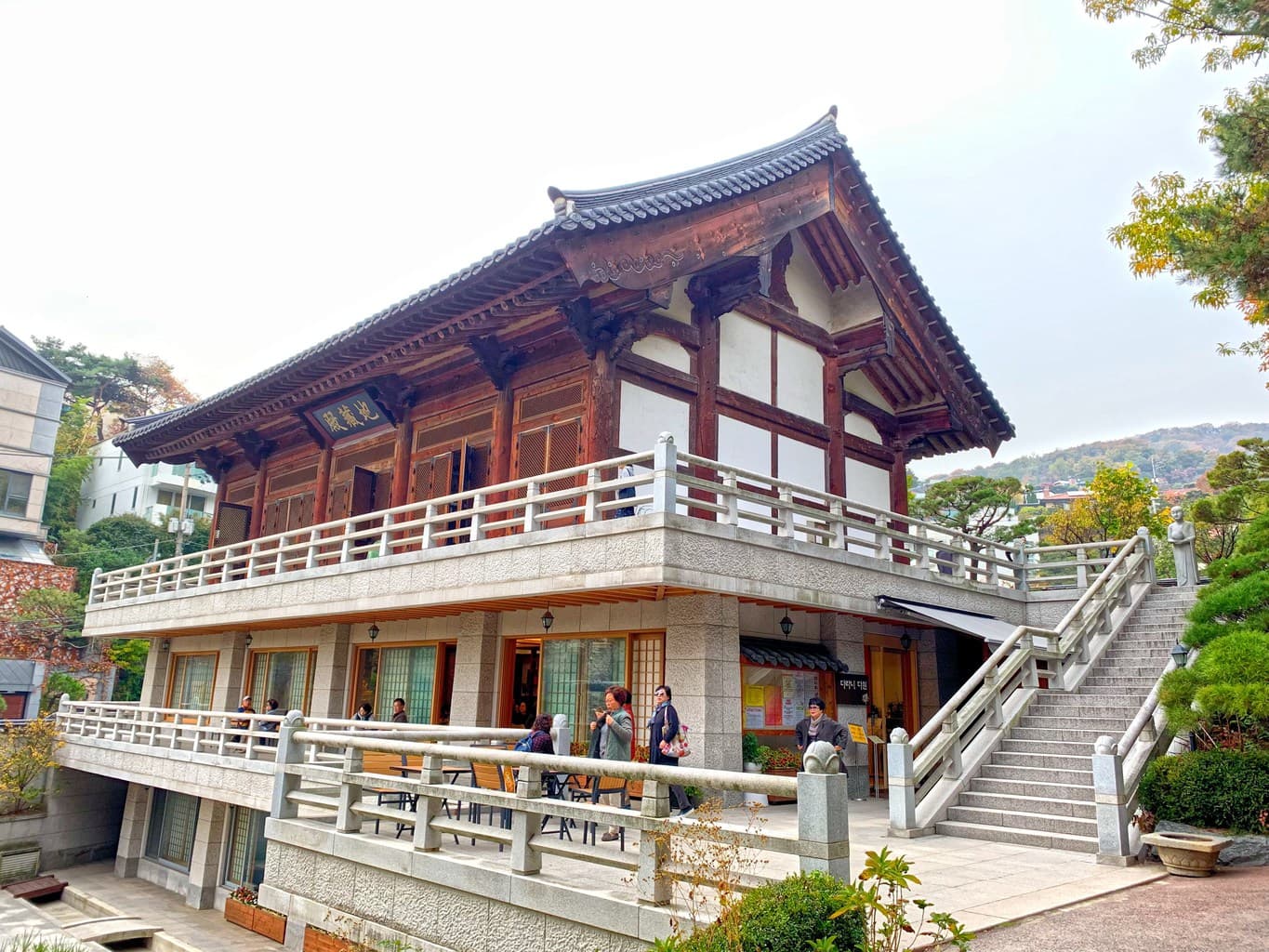
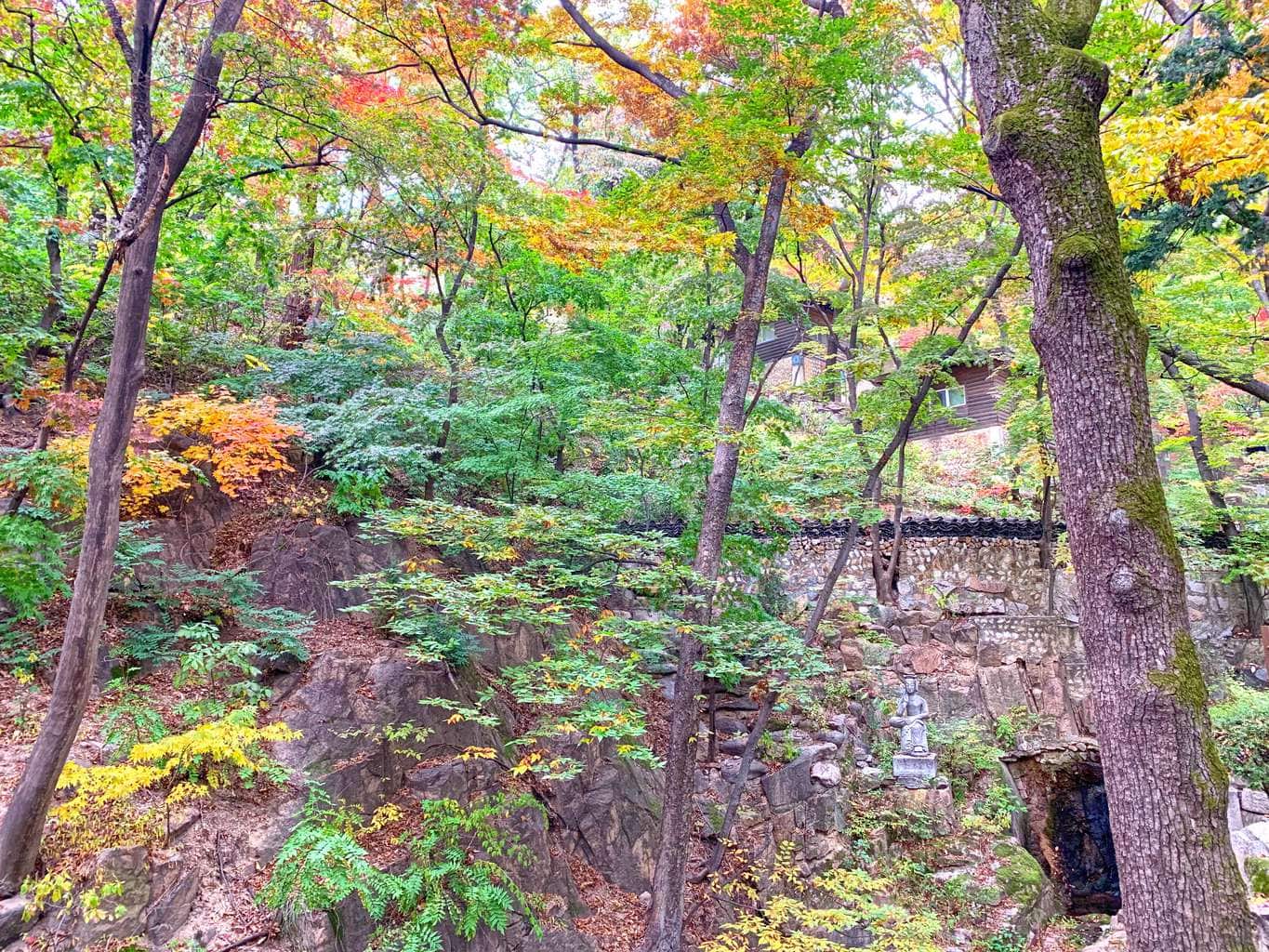
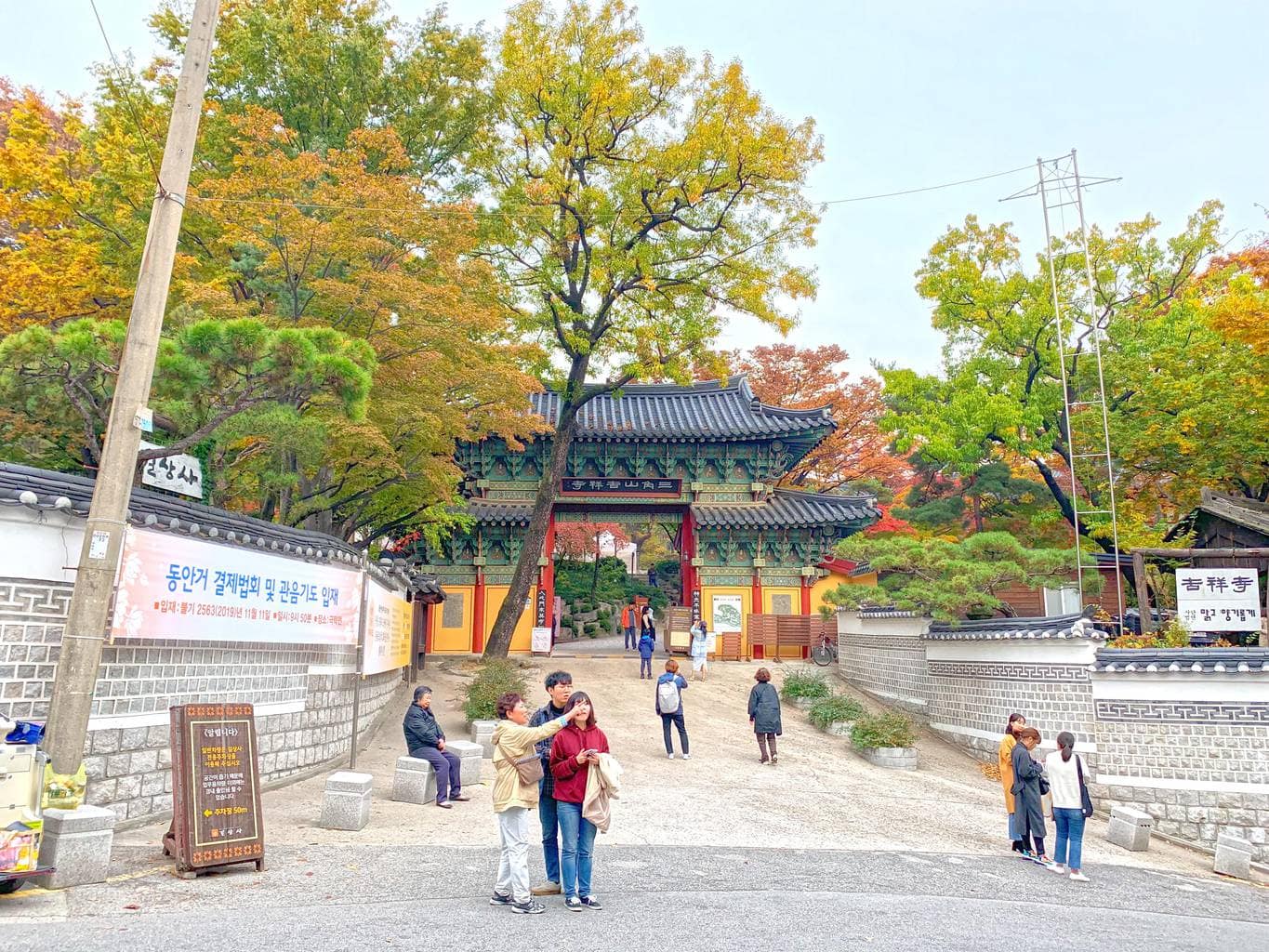
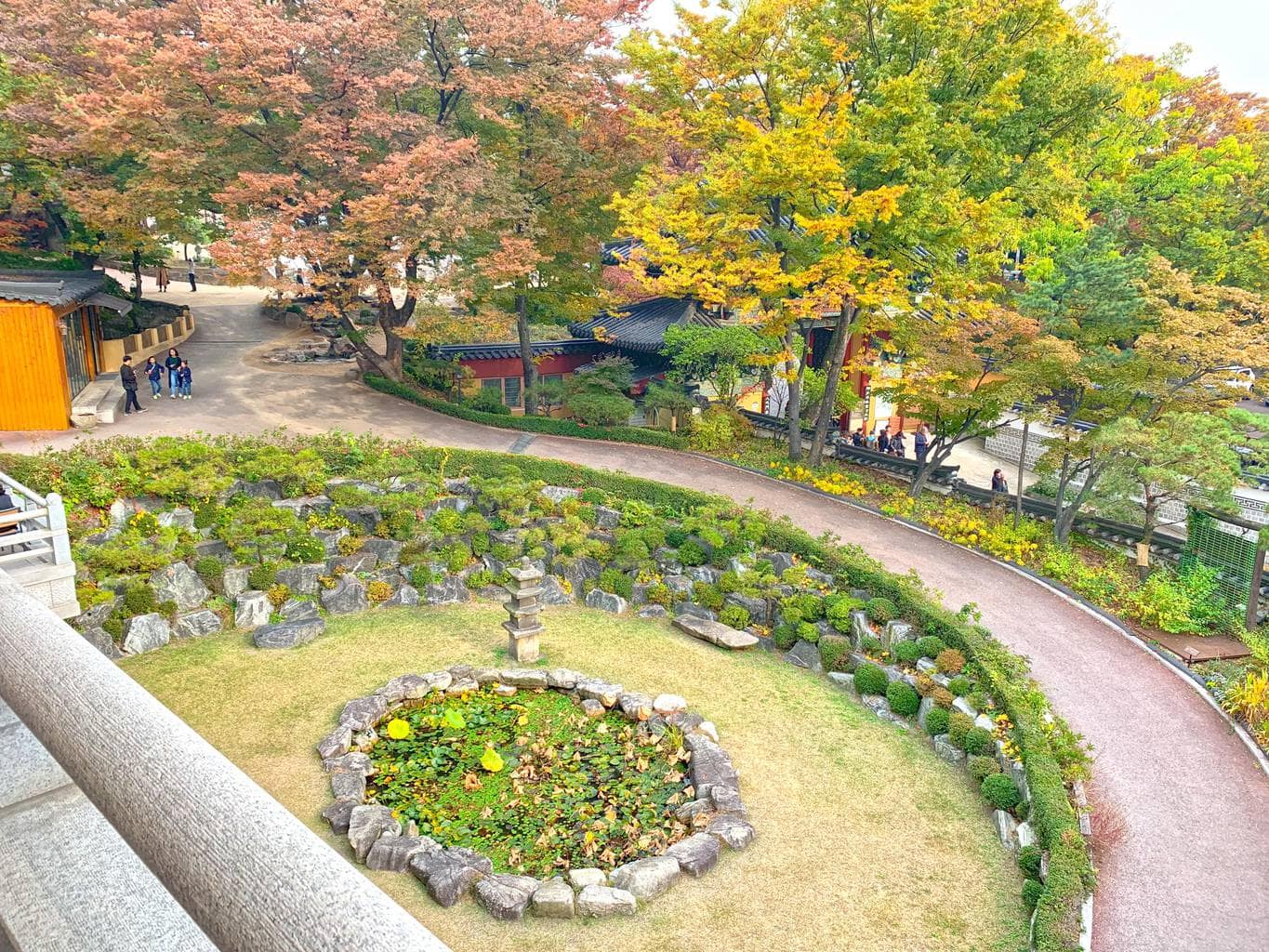
How to get to Gilsangsa: From Hansung University station (한성대입구역) line 4 (light blue line) take exit 6 and walk about 50m to Dongwon Mart, not the regular bus stop. Then hop on the village bus (maeul bus) called Seongbuk 02 to the temple. You could also take bus 1111 or 2112, get off at the second stop, turn right at the first light and continue walking for around 10 mins.
Explore Korea’s main Royal Palace Gyeongbokgung
This is the star of the show and one of the most visited tourist attractions in Seoul. Gyeongbokgung Palace was the main royal palace of the Joseon Dynasty and if you ask any local what to do in Seoul they will most likely suggest you not miss the palace and museum, they are beautiful.
Originally built in 1395 and restored again between 1852-1919 after being almost destroyed by fire, the palace is a stunning testament to ancient Korean culture and architecture. There are two museums within the complex, The National Palace Museum of Korea is closer to Socheon and the National Folk Museum is closer to Bukchon.
Other standouts at the complex include the changing of the guards at the main Gwanghwamun entrance, which consist of the tallest soldiers hand-picked from the military. The performance is one of the most authentic and unique things to see in Seoul.
When last we checked the times were 10am and 2pm, and the Gate Guard Duty Performance at 11am and 1pm. Please double check the official times here so that you are not disappointed. There is also audio commentary and a free guided tour at 11am, 1,30pm and 3,30pm.
The complex is the top attraction in Seoul, beautiful all year long and you can easily spend half the day exploring the expansive grounds. It is highly Instagrammable, so make sure you bring your portable charger for your phone!
How to get to Gyeongbokgung. Gyeongbokgung Station (경복궁역) line 3 (orange) exit 5 – you will end up inside the complex OR Anguk Station (안국역) line 3 (orange), exit 1 and walk for a few 100m until you reach the south or east gates.
See a 600-year old palace at Changdeokgung
While everyone knows about Gyeongbokgung, so few tourists know that there are actually 5 royals palaces in total and are all worth visiting for different reasons. The second most famous palace is Changdeokgung which was constructed in 1405.
Legend has it that King Taejong (3rd king of the Joseon dynasty) build this secondary palace as he stated that Gyeongbokgung’s topography wasn’t auspicious enough. Yet many scholars believe that he built it because he actually assassinated his brothers at Gyeongbokgung and didn’t want to rule from the same area.
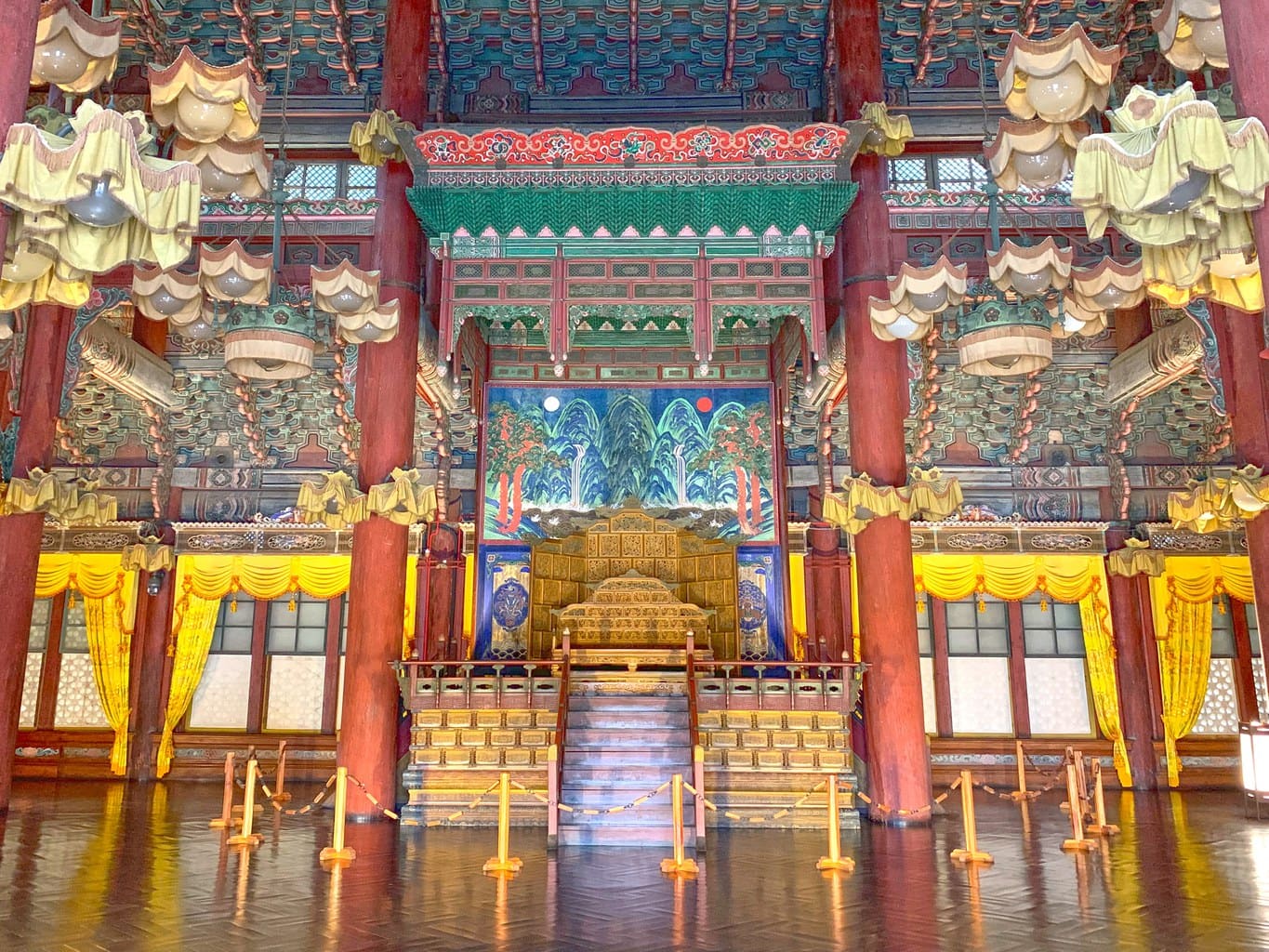
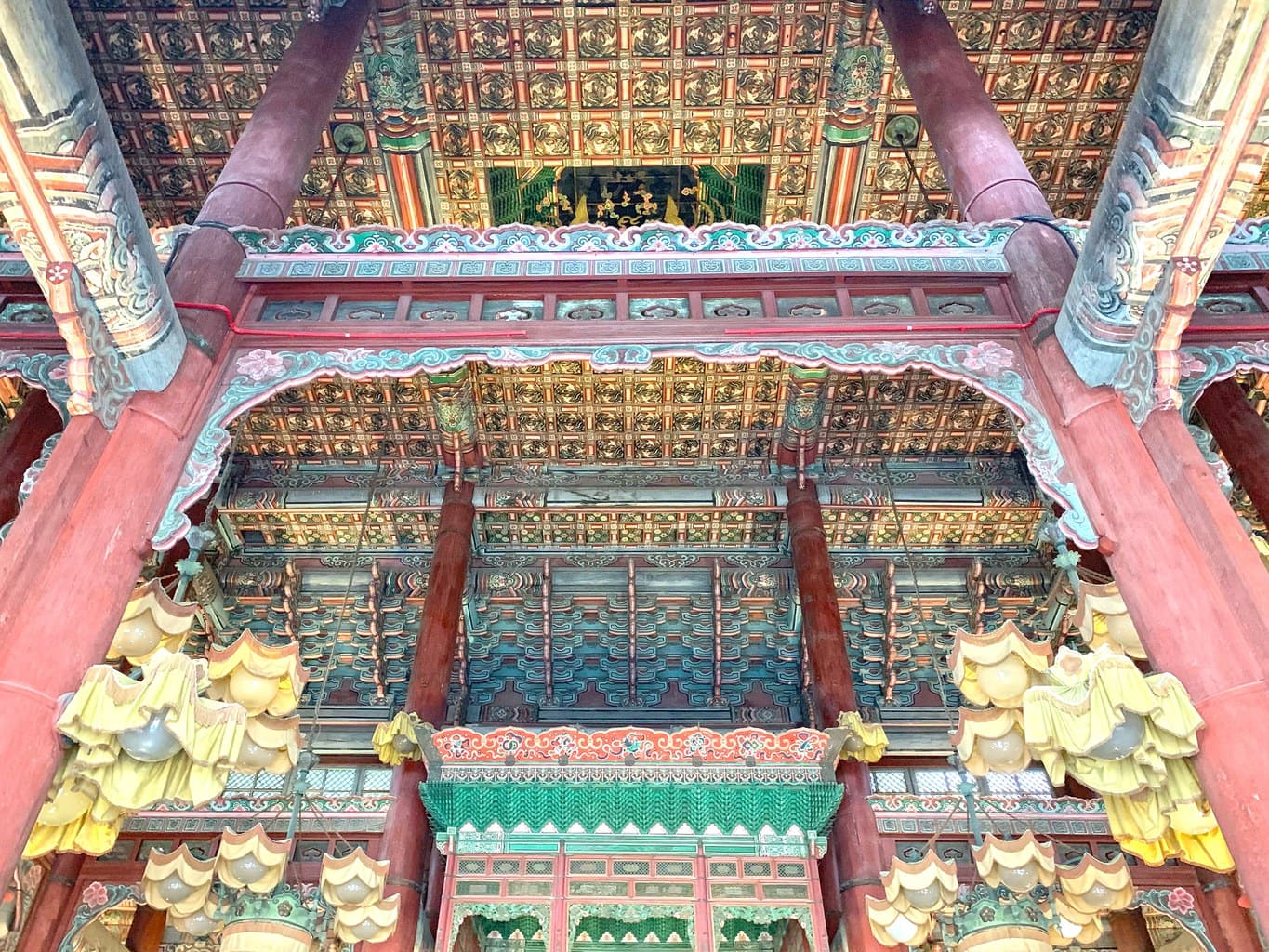
The stand out feature of UNESCO-listed Changdeokgung is that it was built around nature, leaving man-made constructions to a minimum. So the palace flows seamlessly with nature. The best time to visit is during Autumn as it is one of the best places to see the change of leaves in the country. It is also the most well maintained of the palaces, so you can expect exquisite beauty.
The main area that can only be visited by booking a tour is the Secret Garden (Huwon) which was used back in the day for everything from farming to extravagant banquets. Witness the Buyongji, which is the name of the beautiful pond in the middle of the Garden. Book ahead to avoid disappointment as tickets are limited and can be sold out easily. The English tours are at 11:30, 1:30 and 3:30.
Entrance into Changdeokgung is only ₩3,000 for palace and an additional ₩5,000 for Huwon. And remember you can enter most of the palaces for free if you’re wearing hanbok (traditional Korean clothing), so why not rent the beautiful clothing just outside Changdeokgung here.
Changdeokgung is located within the same grounds as Changgyeonggung Palace and so these can be visited together in one go. The two together were called Donggwol (the East Palace). Both are closed on Mondays.
See a botanical garden within Changgyeonggung Palace
If you’ve been to Seoul Grand Park in Gwacheon, just south of Seoul, you’d know that there is a zoo and botanical garden. But what you might not know is that these were first located in the center of Seoul at Changgyeonggung Palace.
While there are many pavilions, shrines, halls and gates, just like the other palaces, Changgyeongung is most famous for its botanical garden known as Daeonsil or the Great Greenhouse. This is an enclosed botanical garden that was built in 1909 with a beautiful royal roof motif. If it looks familiar, it’s because it was designed after the Crystal Palace in London.
There is an additional ₩1,000 entrance fee. Changgyeonggung Palace is actually located within the same grounds as Changdeokgung and so these can be visited together in one go. The two together were called Donggwol (the East Palace). Both are closed on Mondays.
How to get to Changdeokgung and Changgyeonggung: Anguk Station (안국역) line 3 (orange), exit 3 and walk straight for about 5-10mins. There are clearly marked signs all over.
Witness the changing of the Royal Guards at Deoksugung
For a mix of traditional and contemporary, the best palace to visit is Deoksugung. Unlike the other palaces, which sit in sparse open spaces or surrounded by nature, Deoksugung’s surroundings are City Hall, Seoul Plaza and a few theaters.
From the time it became an official royal residence in 1611 until 1907, it was called Gyeongungung Palace. Yet the name changed to “palace of virtuous longevity” or Deoksugung in honor of Emperor Gojong who established the Great Han Empire.
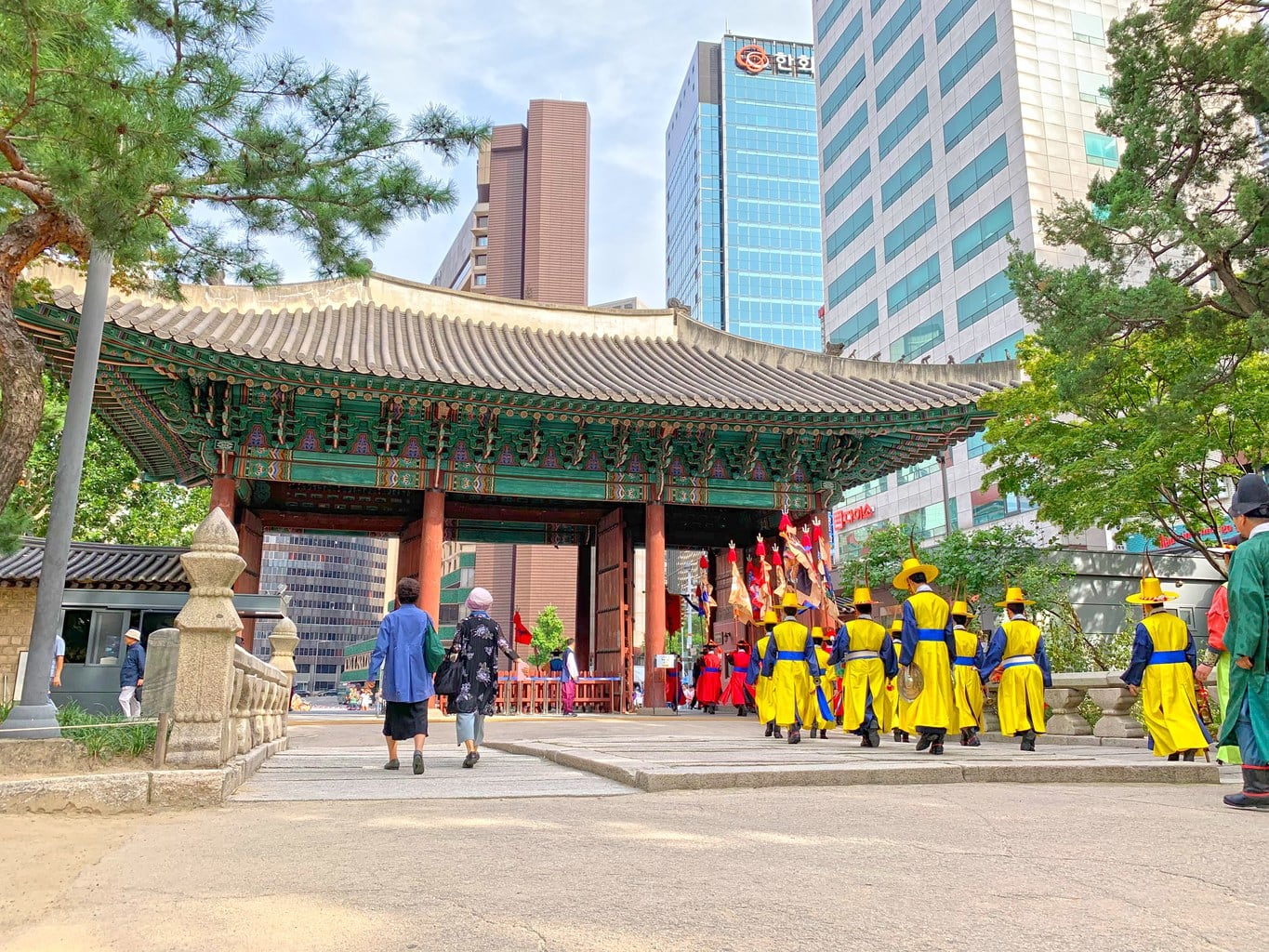
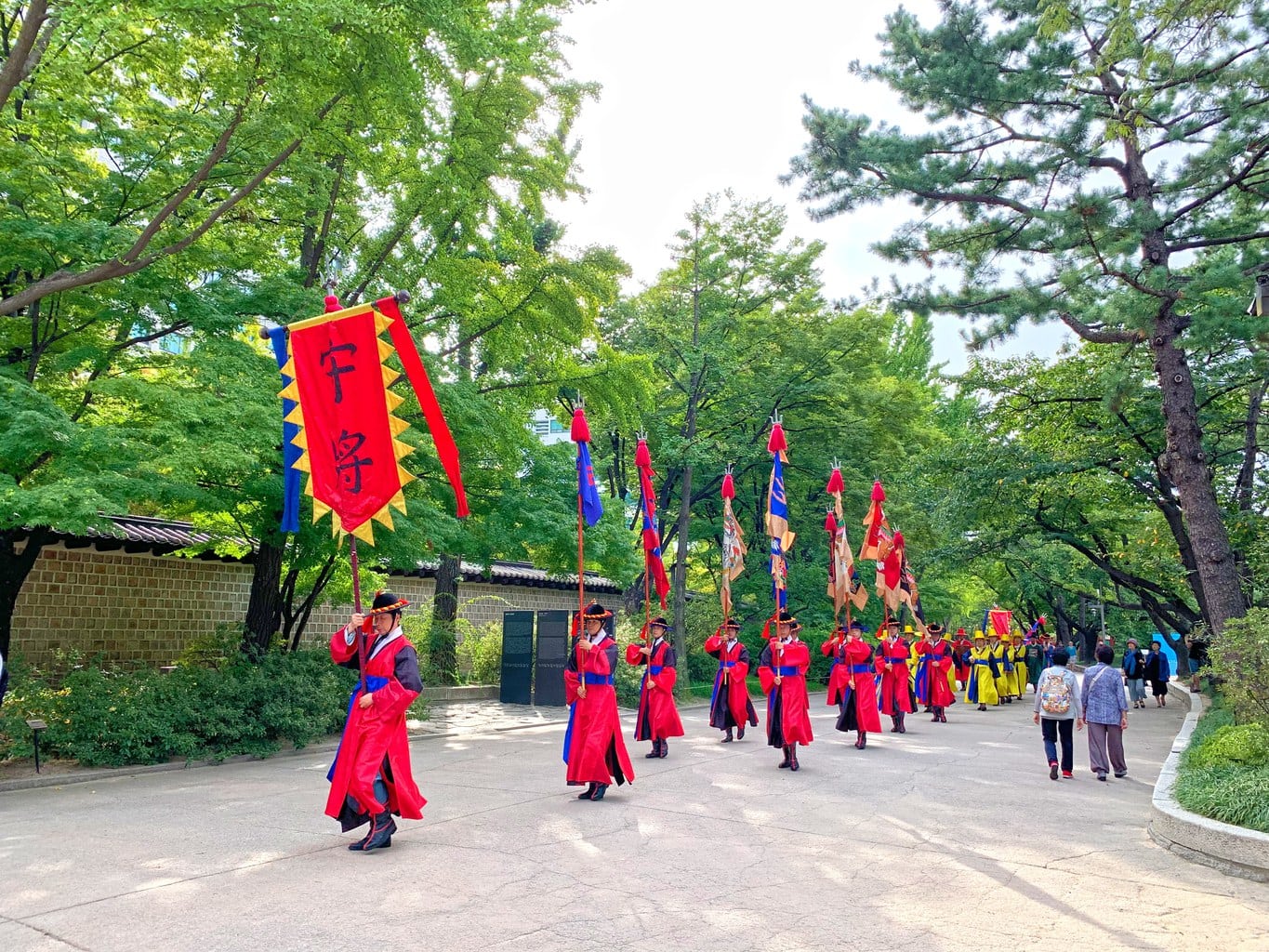
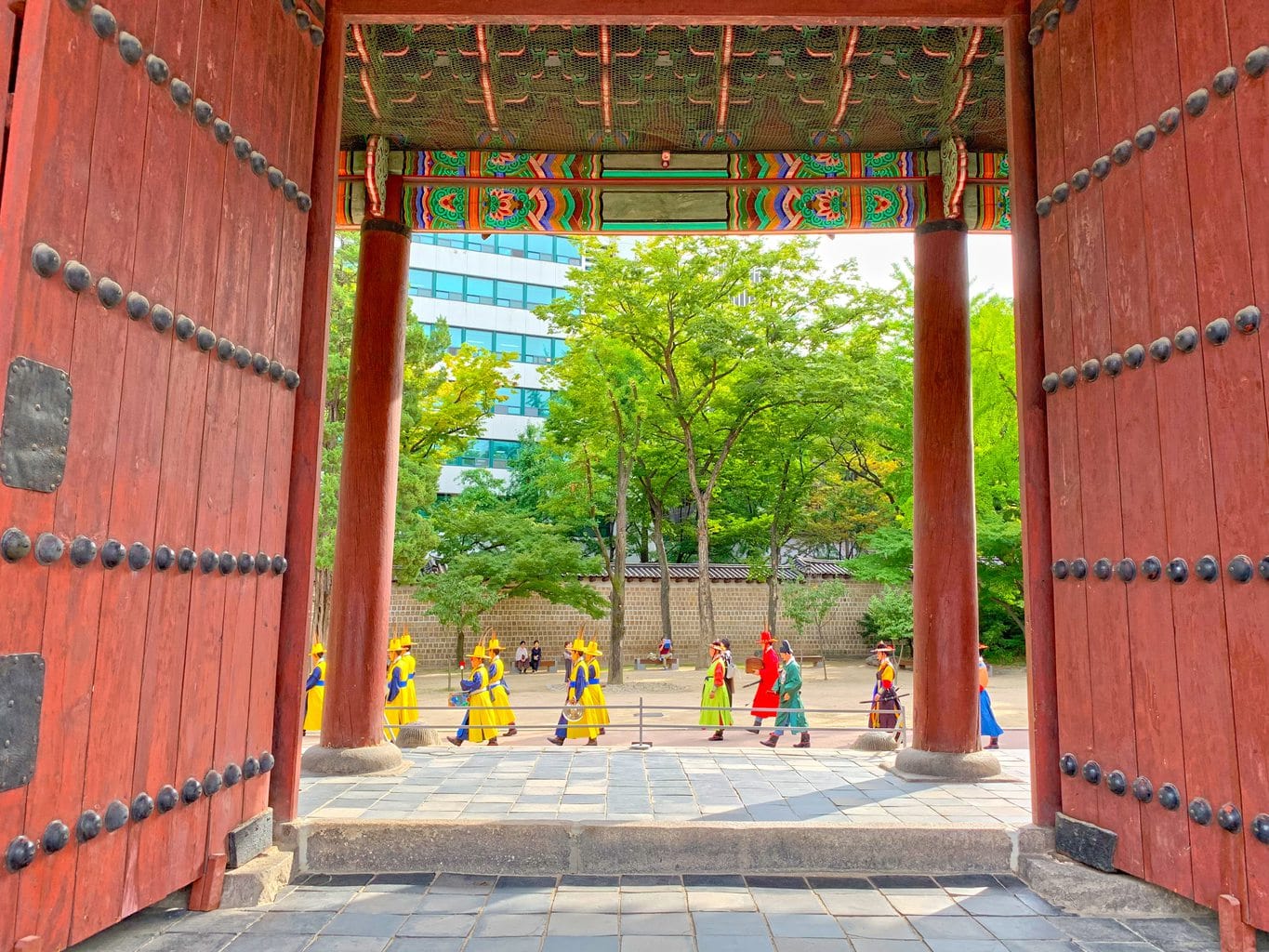
Don’t be set back by the skyscrapers and western franchise eateries that surround the beautiful stone wall, as there is so much to explore inside that will take you back to the days of old.
Junghwajeon Hall is particularly beautiful with elaborate interiors such as the pair of dragons floating over the canopy above the king’s throne. There is even a Neoclassical western style building within the grounds called Seokjojeon Hall that was built in 1910 and is clad in Ionic columns.
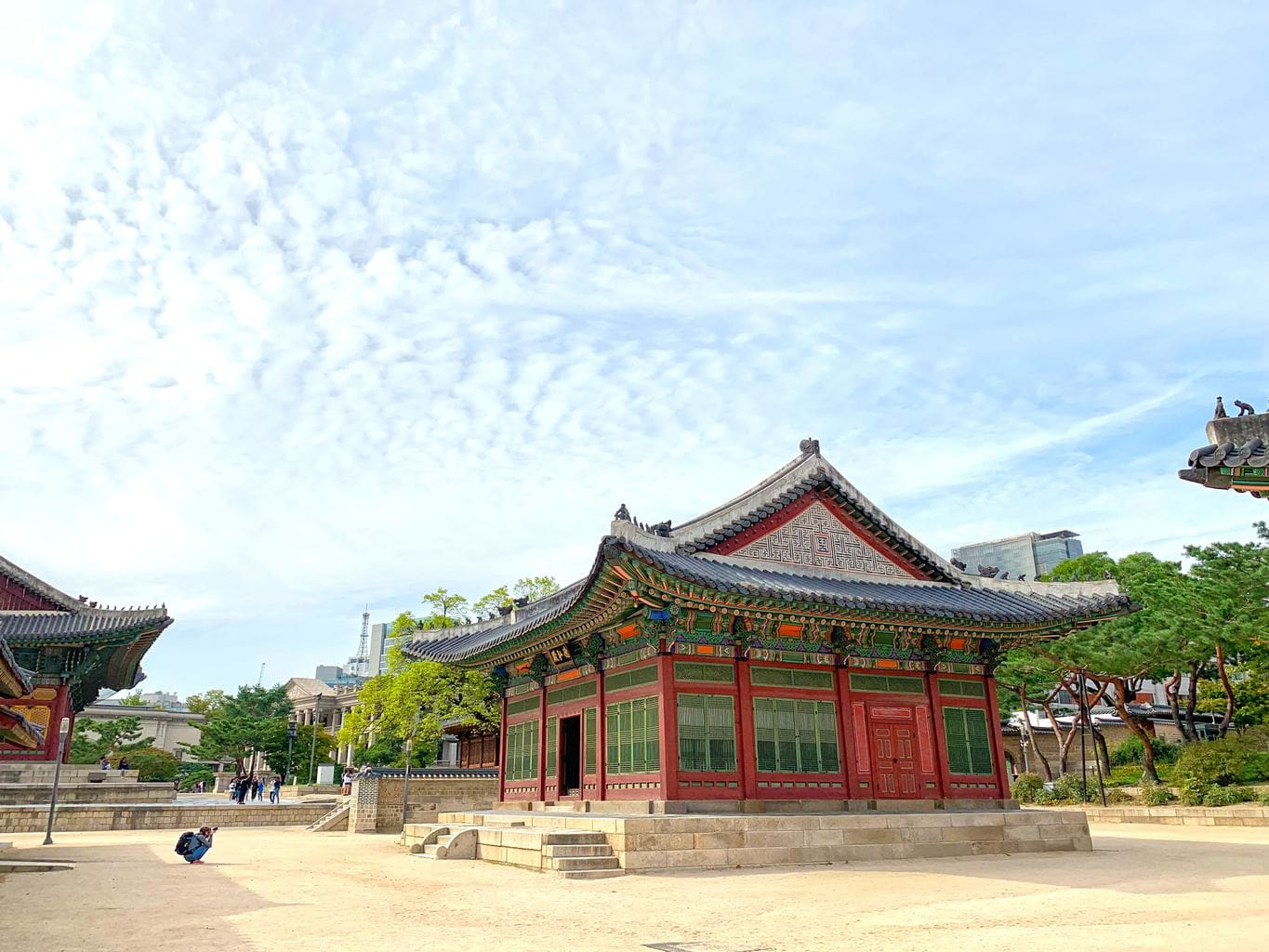
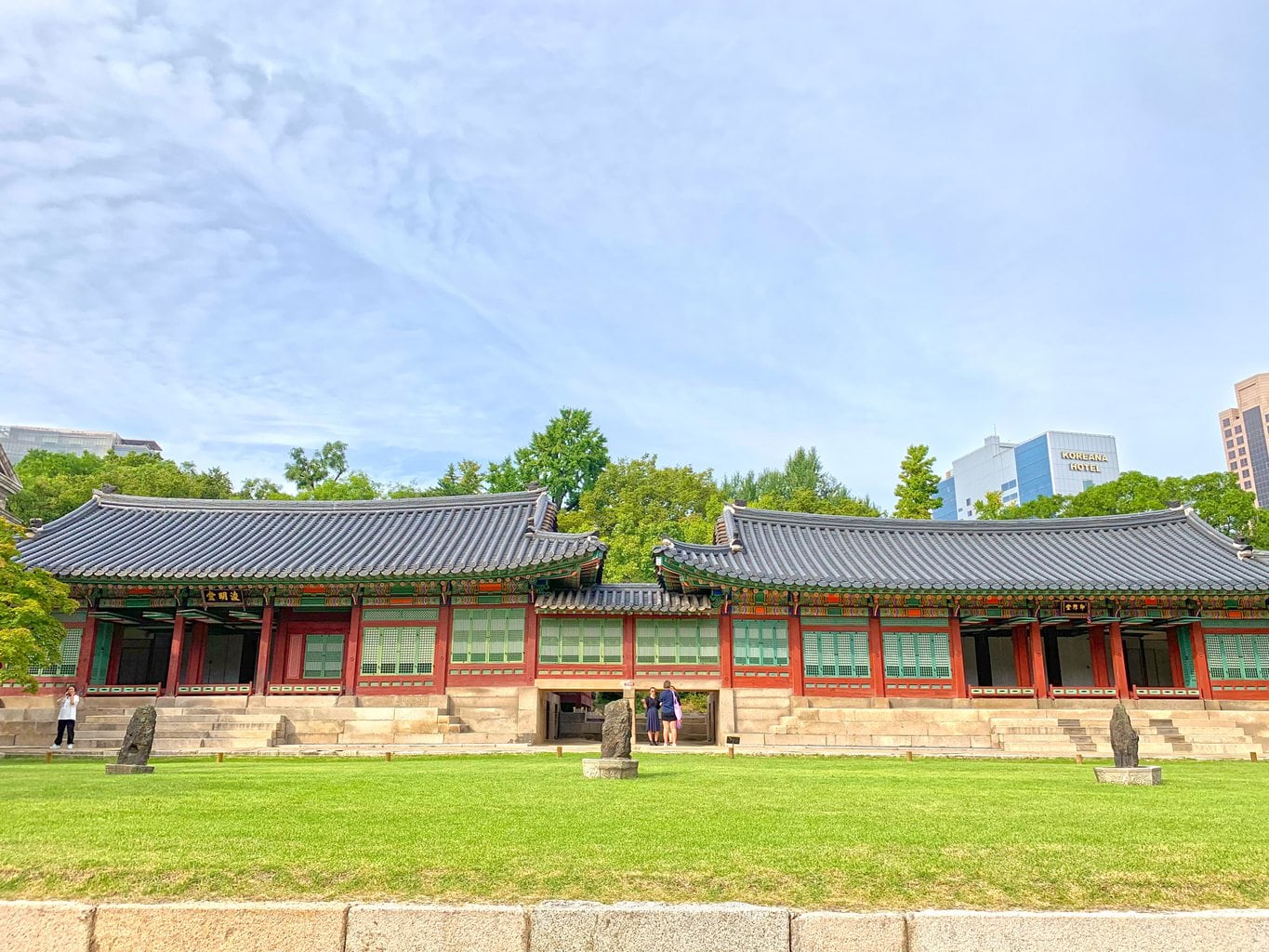
But what Deoksugung is most well-known for is its changing of the Royal Guards Ceremony which is based on the historical records of the opening and closing ceremonies of the royal palace and the city gates. Times of the ceremony is at 11am, 2pm, and 3:30pm respectively.
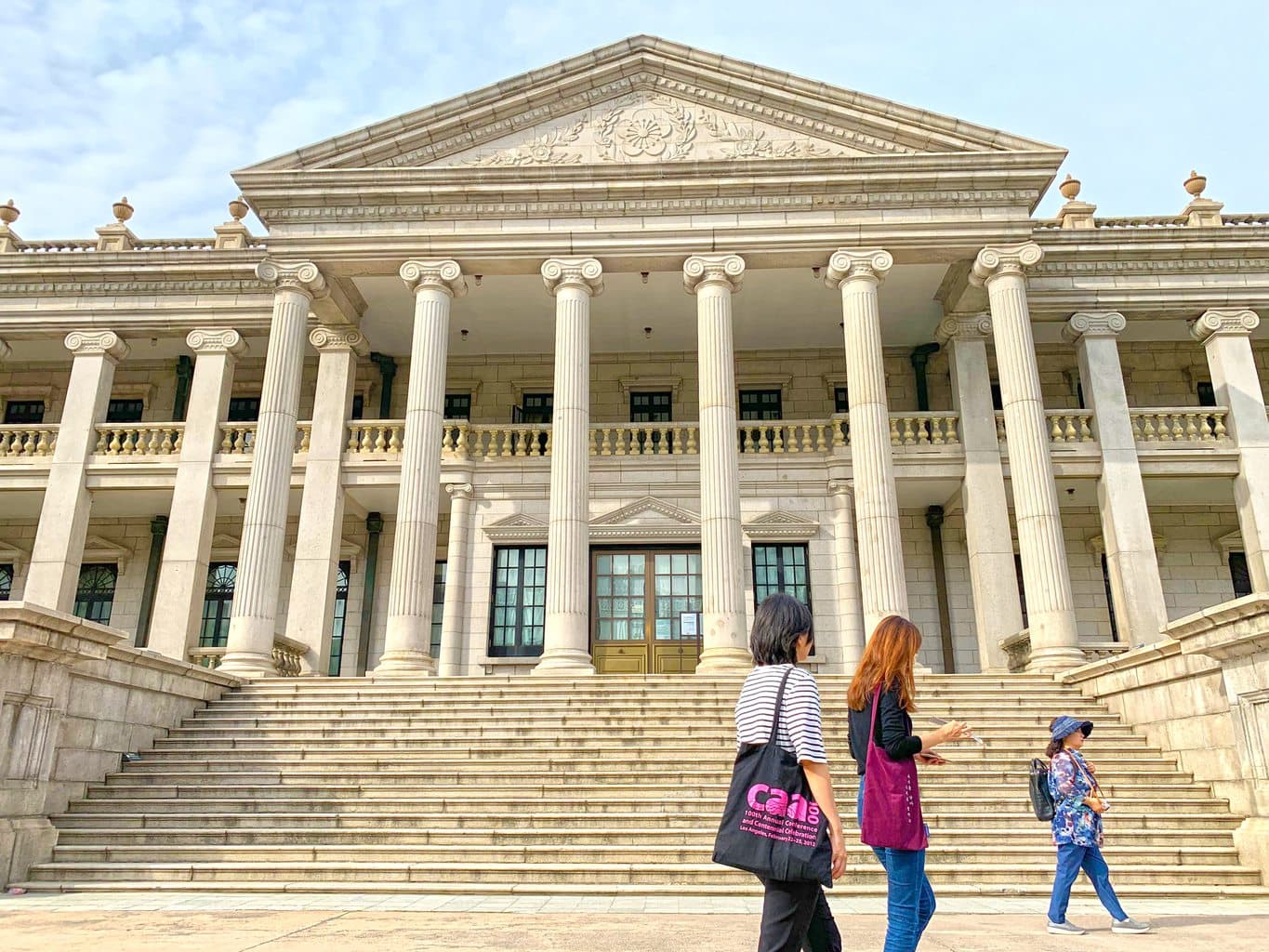
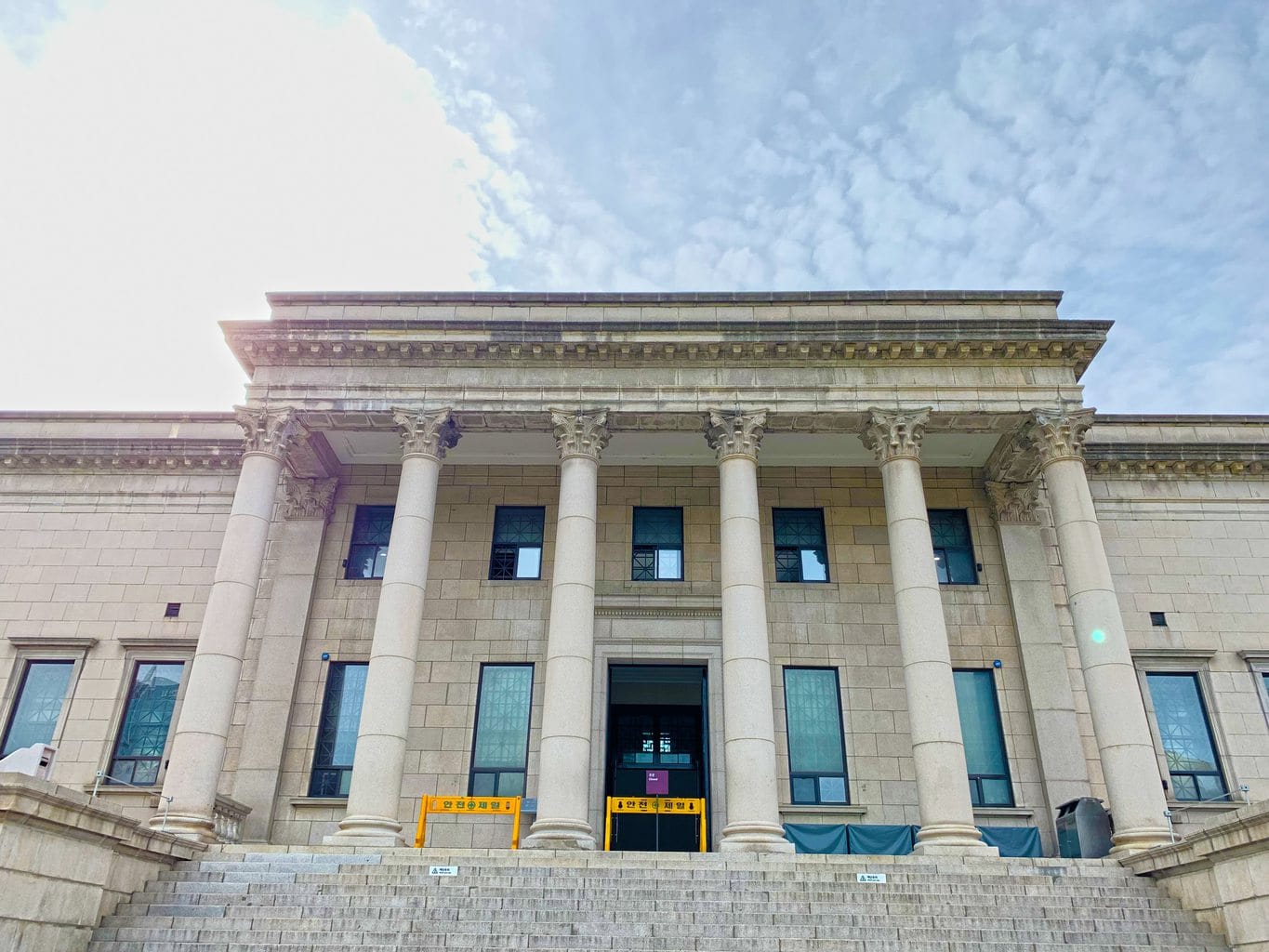
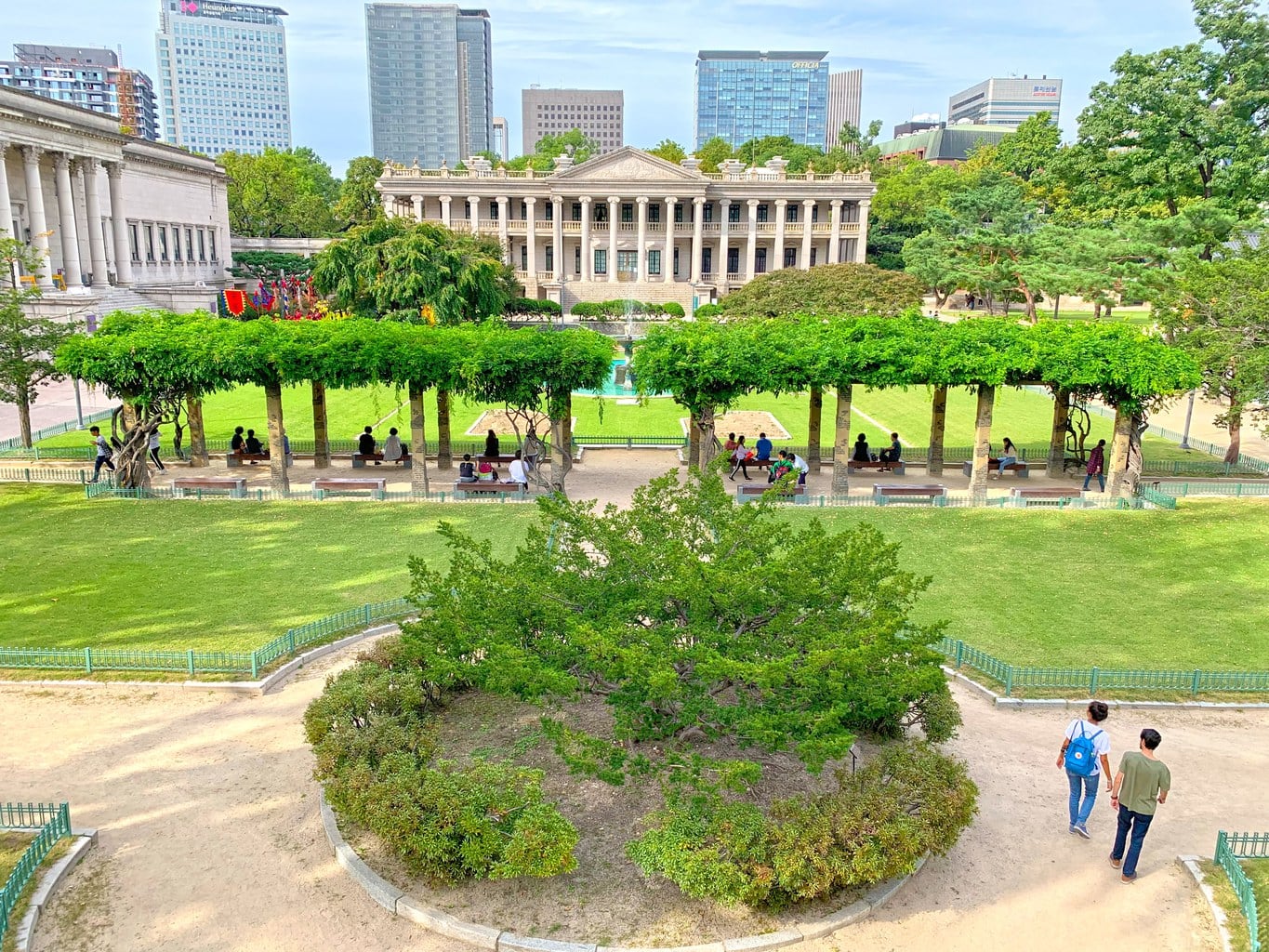
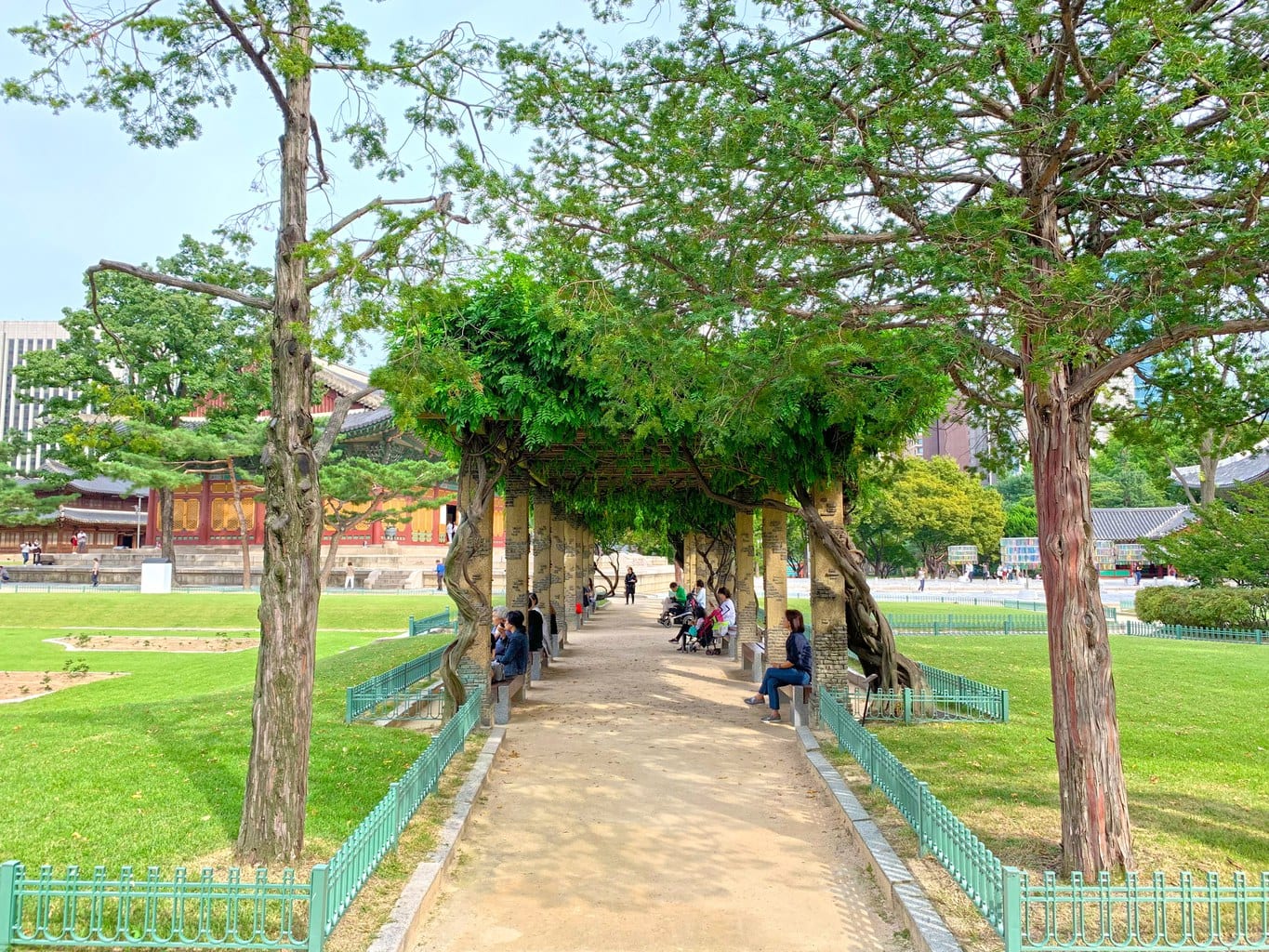
Tip: City Hall is a very active place with many peaceful protests occurring right outside, so the changing of the Royal Guards may be cancelled if there is a particularly large gathering. It is also closed on Mondays.
How to get to Deoksugung: City Hall Station lines 1 (dark blue) and 2 (green), exit 1, 2 or 3.
Explore the lesser visited Gyeonghuigung Palace
Out of all the Royal Palaces in central Seoul, this is probably the least visited and therefore the best if you want to snap some shots of the beautiful pavilions without tourists posing in front of it.
The most beautiful structure at this palace is Geumcheongyo Bridge. This is a stone bridge that was built in 1619 during the reign of Gwanghaegun. It crosses Geumcheon Stream and is near the entrance to the Seoul Museum of History.
While is was completely covered during the Japanese occupation, the Seoul government restored it to its former glory in 2001, so you can cross the wide bridge and look at the goblins on the side that ward off evil spirits.
Admission is free and it is closed on Mondays.
How to get to Gyeonghuigung Palace: You can either walk from Gwanghwamun Plaza which is Gwangwhamun Station (광화문역) line 5 (purple) exit 7 (about 5-10mins) or get off at Seodaemun Station (서대문역) line 5 (purple) exit 4 and walk straight for roughly the same amount of time.
Take a shot for IG at Heunginjimun (Dongdaemun Gate)
If you read any of the articles about the most instagrammable places in Seoul, Heunginjimun will most likely be somewhere near the top of the list. So what makes this structure, also known as Dongdaemun Gate so visually appealing? It all starts with the unique design.
Heunginjimun Gate is the only one among Seoul’s 8 gates to have ongseong which is a semi-circular defensive wall that makes it look like it’s surrounded by a castle. The structure was most likely built as the gate is in a lower position than its surroundings.
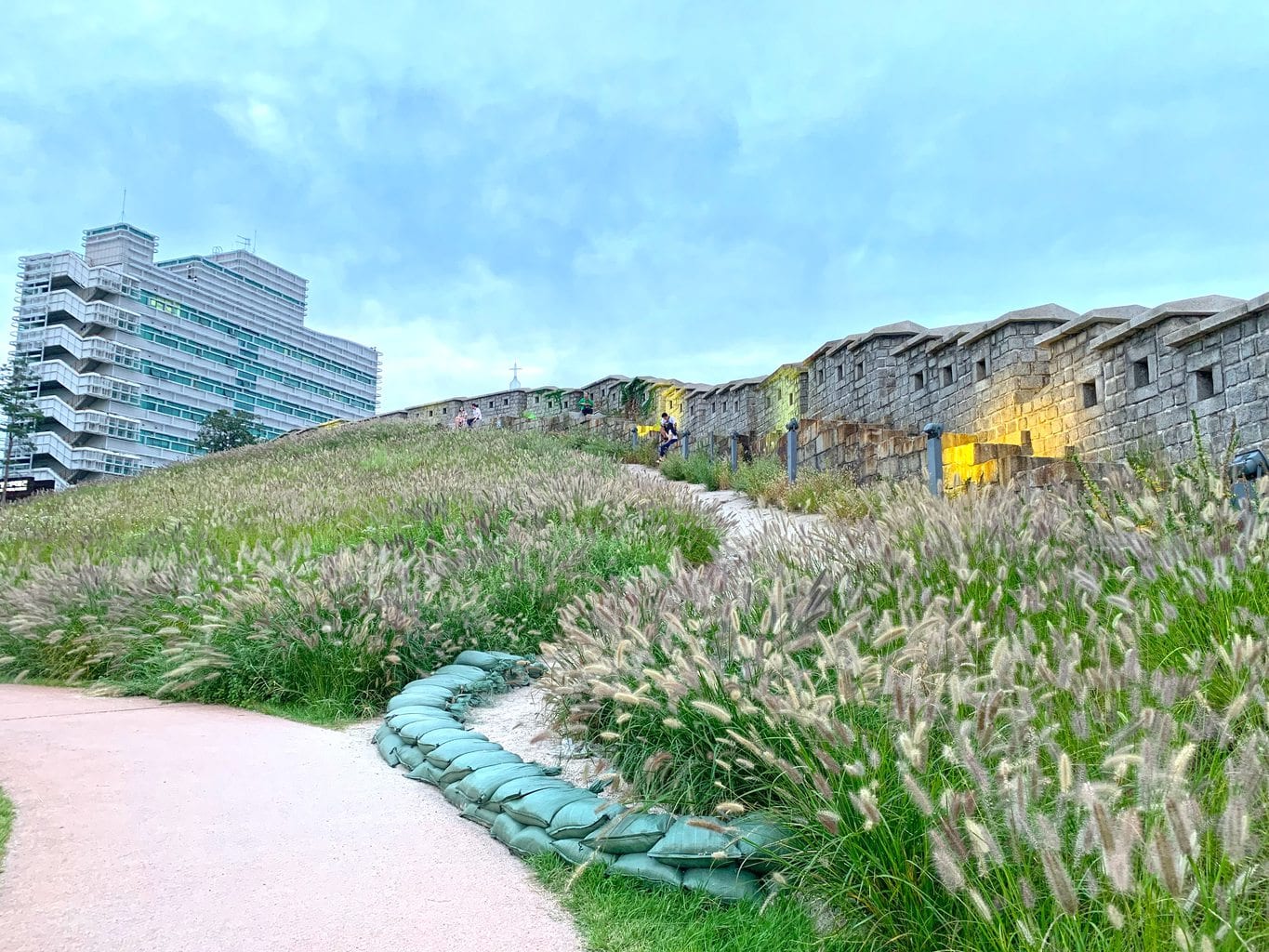
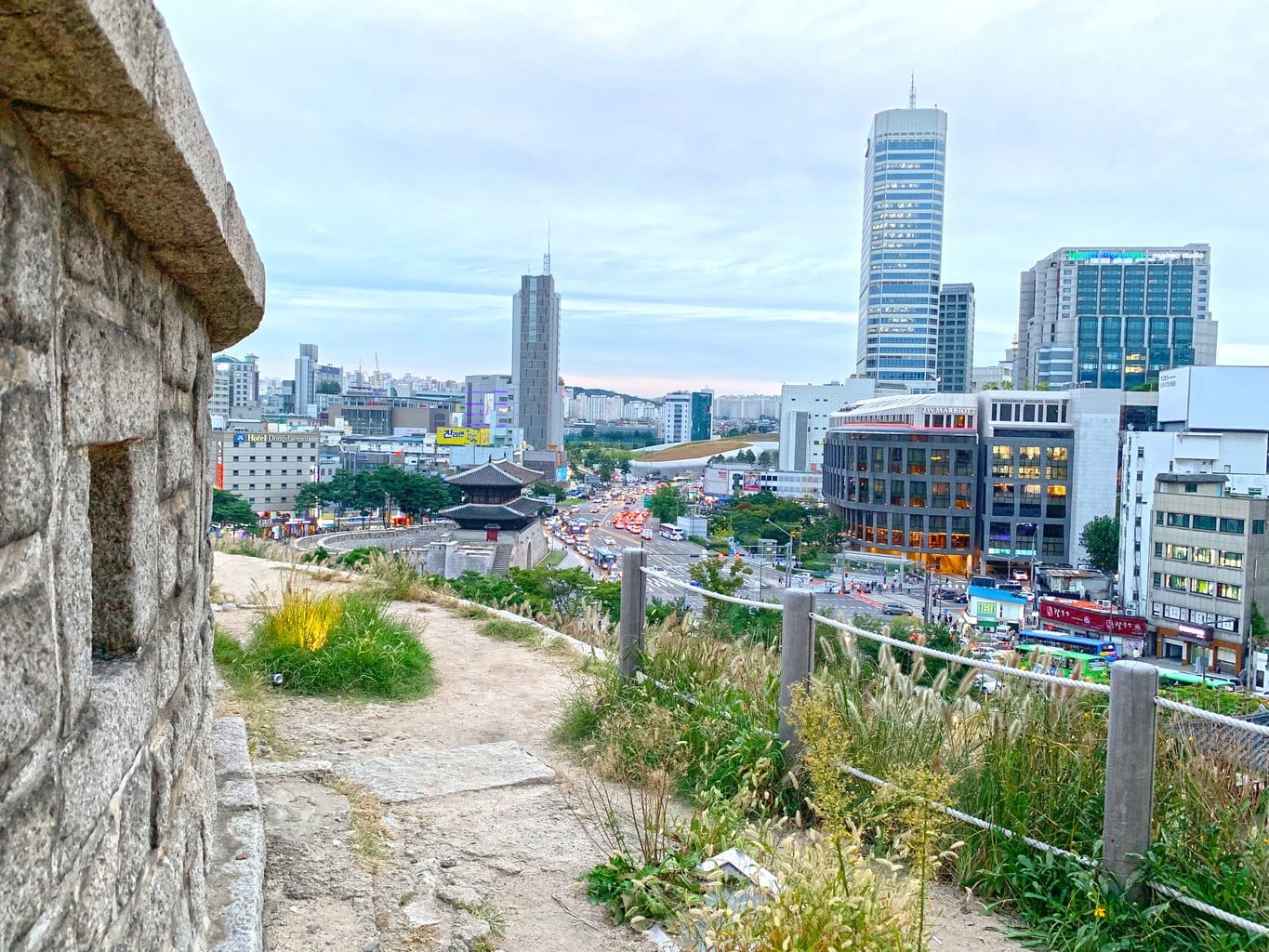
Also, unlike most of the other gates, the entrance doesn’t lead anywhere. It used to be the gate on the east side of the outer wall of Seoul Fortress, but now it sits in the middle of the road and is used as a roundabout for cars driving past. Due to the traffic, the gate is most often visited at night when it is lit up and you can take some amazing images of it with an open aperture.
Heunginjimun Park is directly opposite if you want to explore some greenery in the Dongdaemun area.
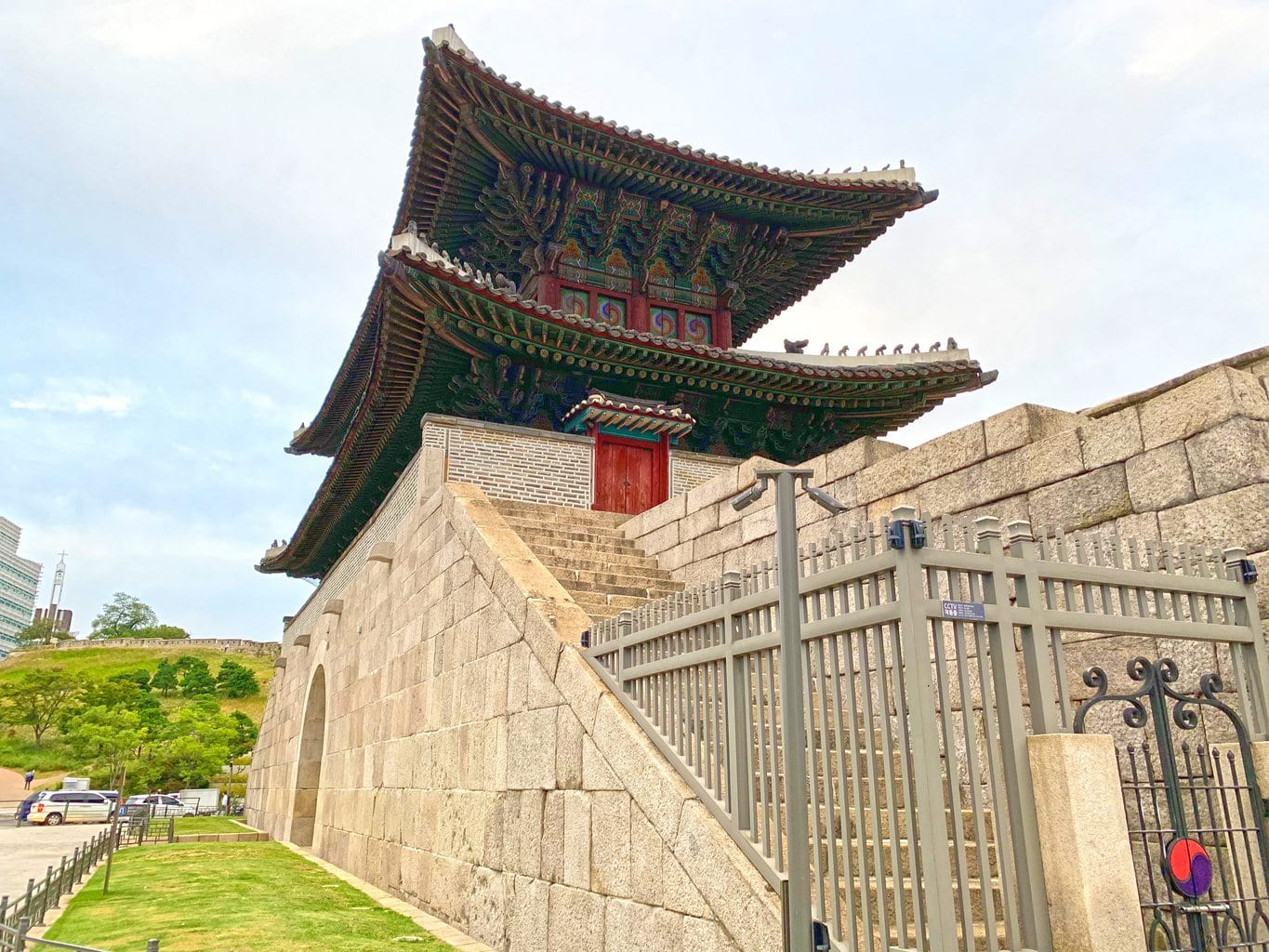
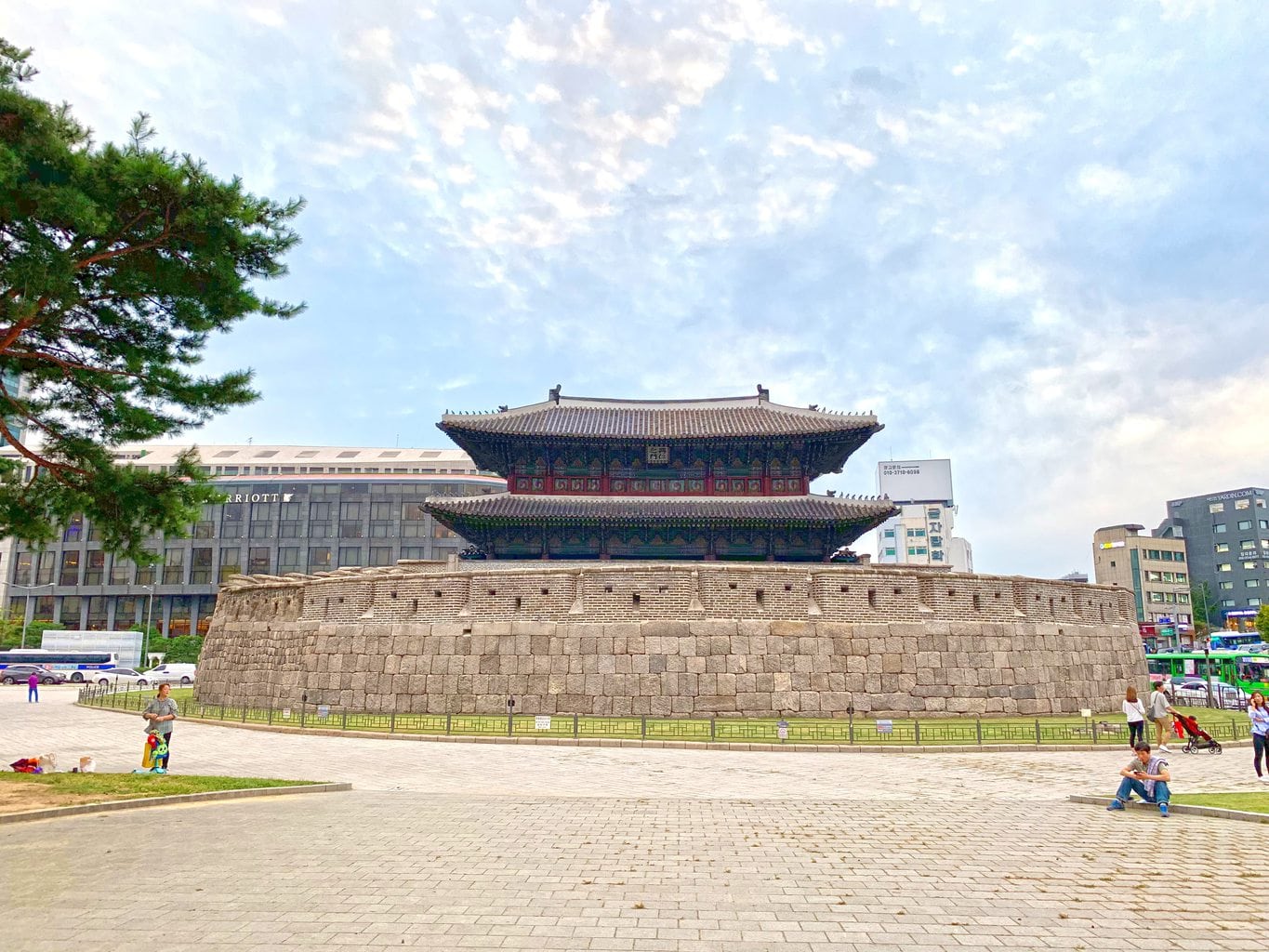
Pro tip: You may arrive at Heunginjimun and wonder how so many people can get the image of the gate from above. Well, this comes at a price and is usually taken from the JW Marriott Dongdaemun Plaza luxury hotel. Either from one of the rooms, the lounge or the roof. Lucky for you, you can visit the swanky rooftop bar The Griffin and buy a cocktail before snapping a shot.
How to get to Heunginjimun: Dongdaemun Station (동대문역) lines 1 (dark blue) or 4 (light blue) exit 6 or 7.
Walk around Jongno in Hanbok (traditional Korean dress)
One of the most unique things to do in Seoul is to dress up in Hanbok (traditional Korean dress) and walk through the streets, especially Insadong, Bukchon and Gyeongbokgung.
There are a total of 5 Grand Palaces in Seoul: Gyeonghuigung (경희궁), Deoksugung (덕수궁), Changgyeonggung (창경궁), Changdeokgung (창덕궁), and Gyeongbokgung (경복궁). Admission to all but Gyeonghuigung is free if you’re wearing Hanbok.
They are spaced out quite far apart though, so you may not get to visit them all in one go. The closest to Gyeongbokgung is Deoksugung, near City Hall.
HOW TO HIRE HANBOK FOR THE DAY
There are many different ways to hire hanbok for the day, but the best and safest bet would be to book online. Klook has many different options including an entire photoshoot where you can choose one of 500 styles from Hanboknam, get your hair styled, and then go on a personalised photoshoot through Gyeongbokgung Palace, Changdeokgung Palace, or Bukchon Hanok Village.
Secret tip: If you purchase a 24-hour Discover Seoul Pass, you get the hanbok from Hanboknam for free. You also get over 30 free experiences and over 20 discounted services. You can purchase your Pass online here.
Admire Korea’s history at Gwanghwamun Plaza
While there are several entrances to Gyeongbokgung, the most famous is the south gate or Gwanghwamun. It is the largest of the gates, and the sprawling open space at the exterior of the compound makes it one of the most Instagrammable places to visit in Seoul.
The area south of the gate and outside of the Gyeongbokgung complex is called Gwanghwamun Square or Plaza.
There are two famous statues in the Plaza, one of King Sejong the Great and another of Admiral Yi Sun-sin. The space is large, clean and aims to be green with fountains and minimal automotive traffic.
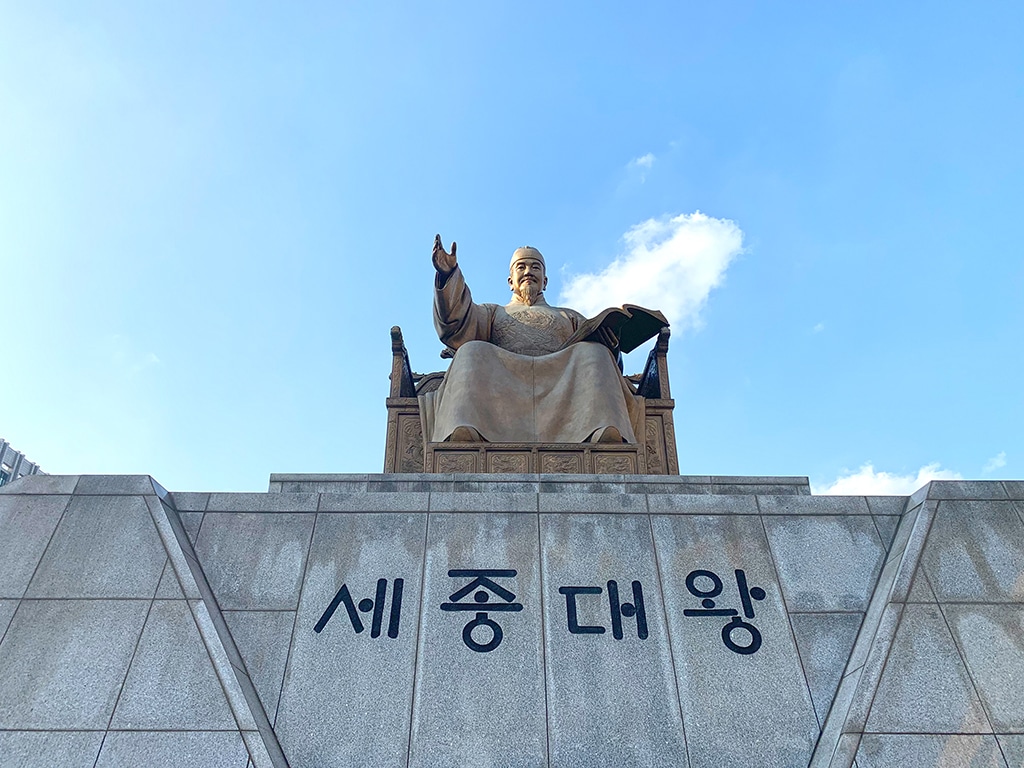
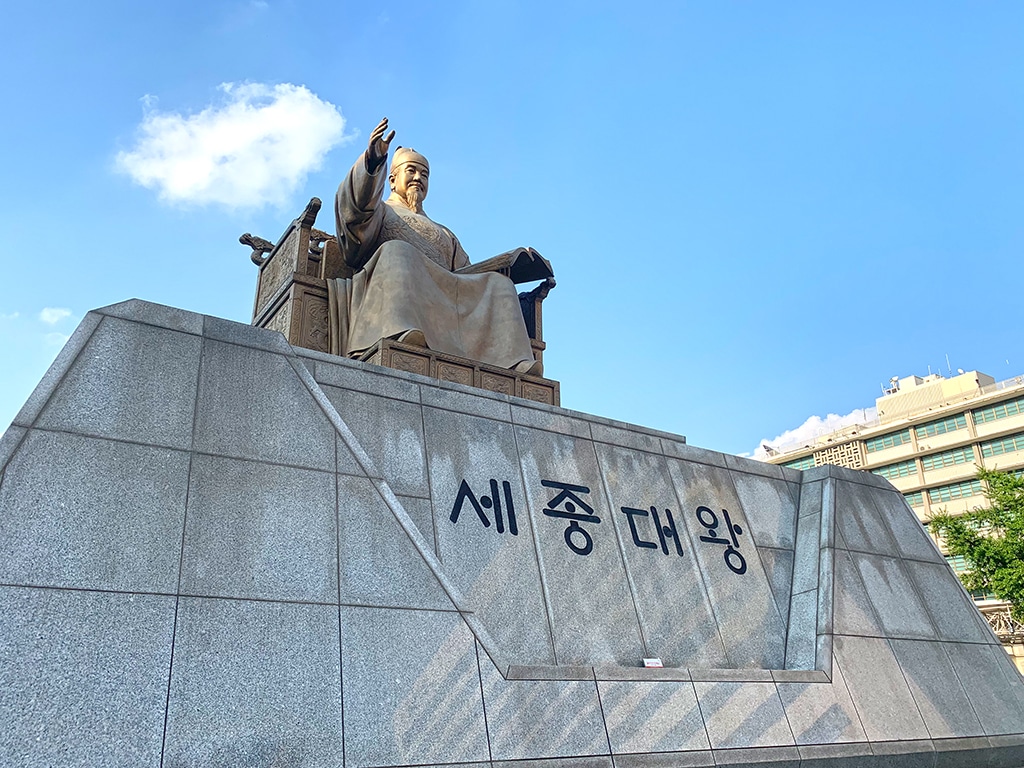
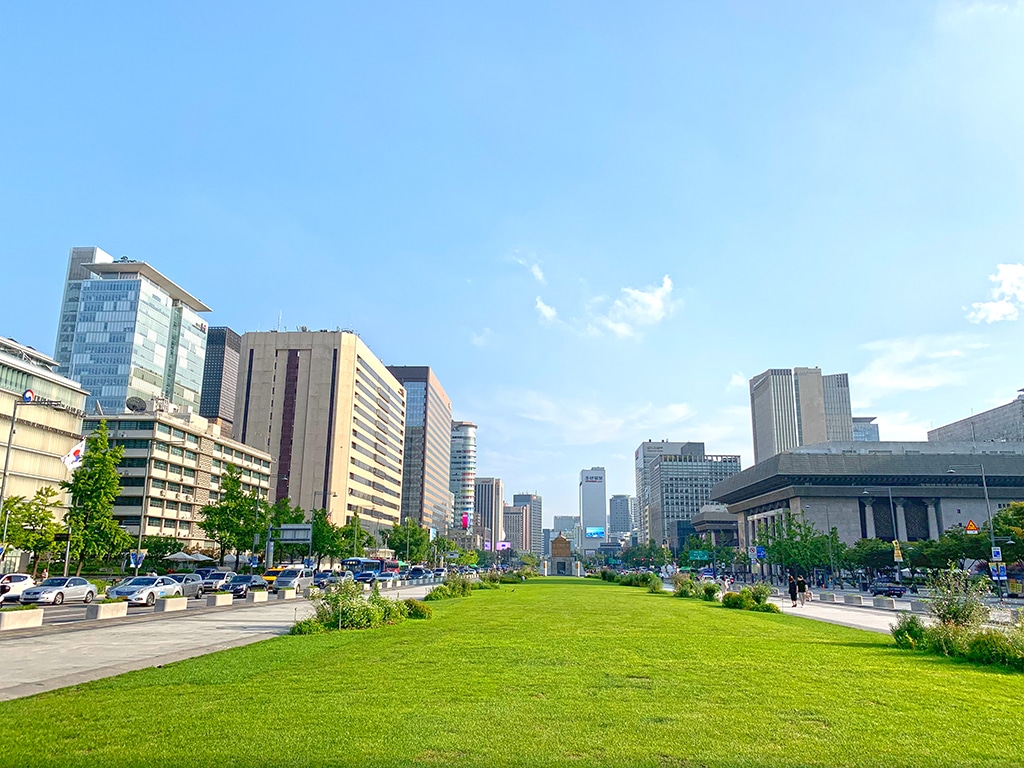
You will also find the largest arts and cultural complex in Seoul, Sejong Center for the Performing Arts, and a very large bookstore with an international selection called Kyobo (the same chain mentioned in the Gangnam section) at exit 4 at Gwanghwamun Station. There are also cafes and restaurants around the area.
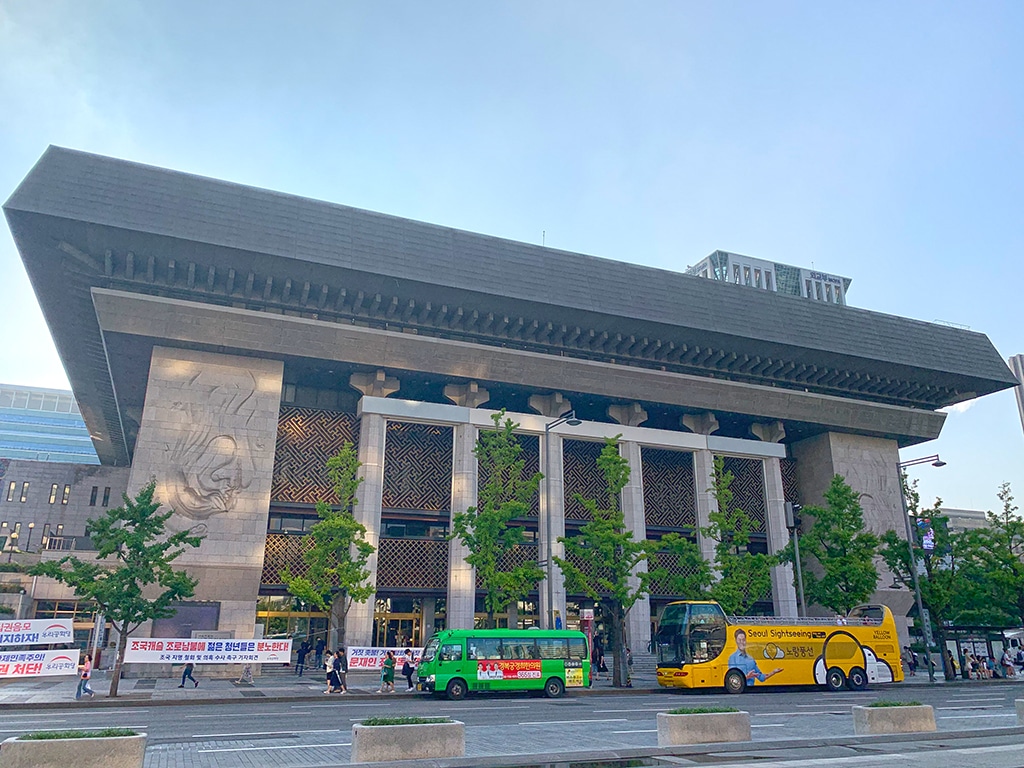
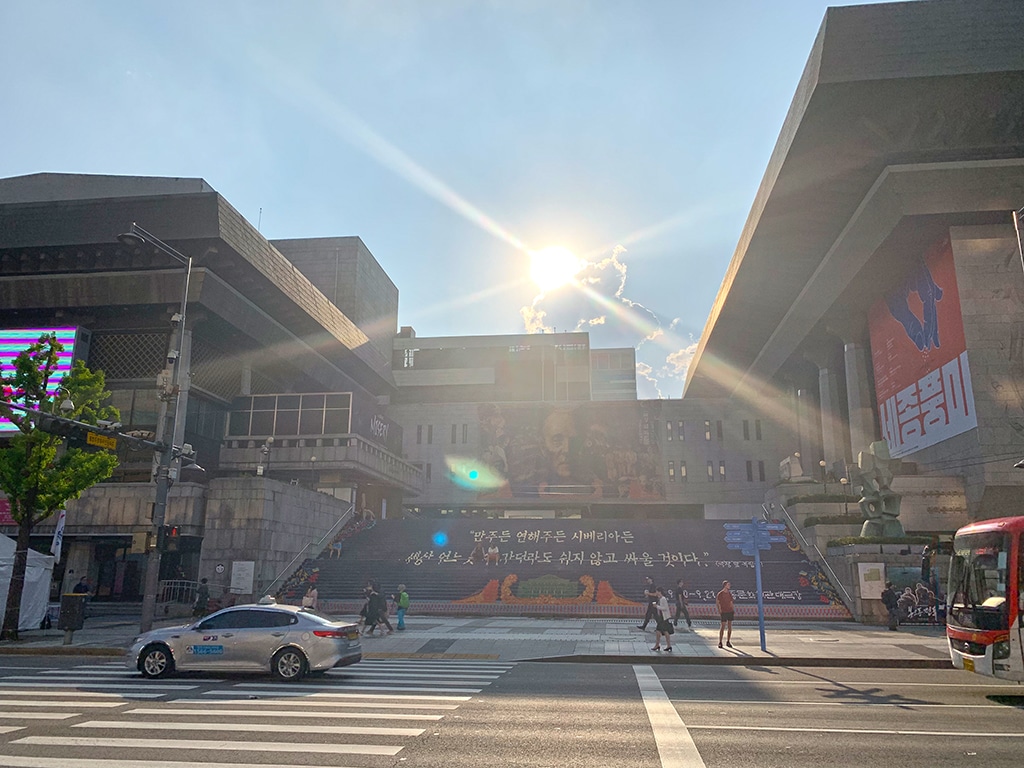
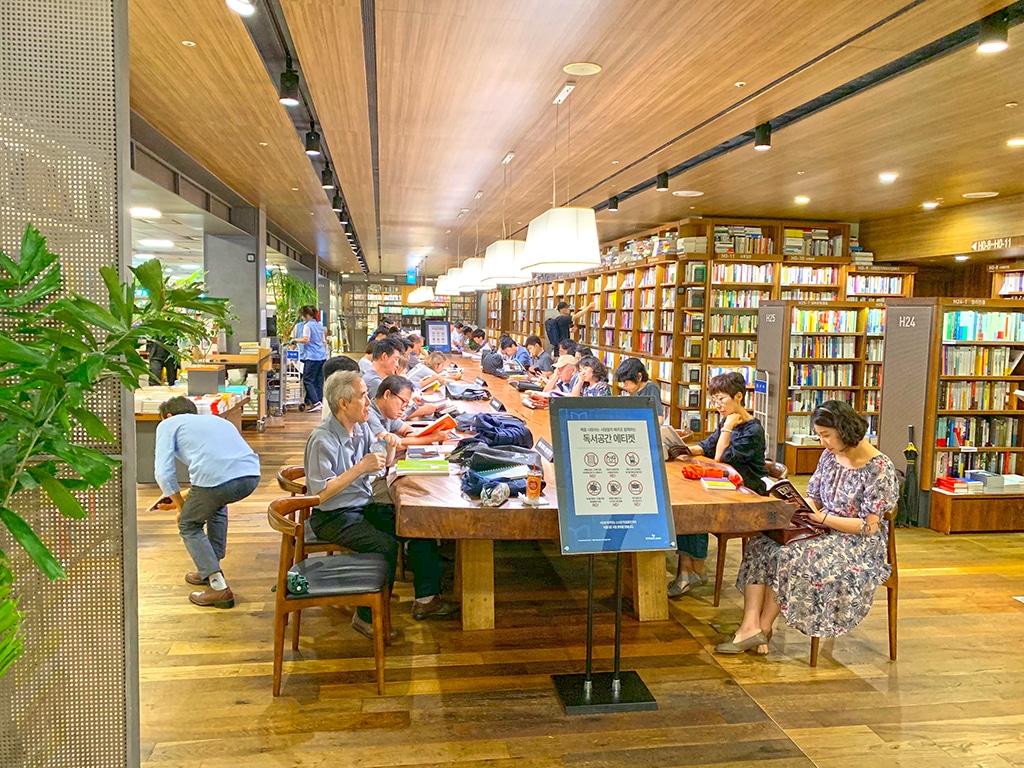
How to get to Gwanghwamun Plaza. Gwanghwamun Station (광화문역) line 5 (purple) exit 9 – exit via Haechi Madang, an underground walkway that connects the station to the Plaza.
Take a stroll along the man-made river in the middle of the city
After visiting Gwanghwamun, you can take a stroll to the Cheonggyecheon (청계천), a 10.9km (6.8mi) stream running through downtown Seoul. It runs from Gwanghwamun Station all the way to Hanyang University Station.
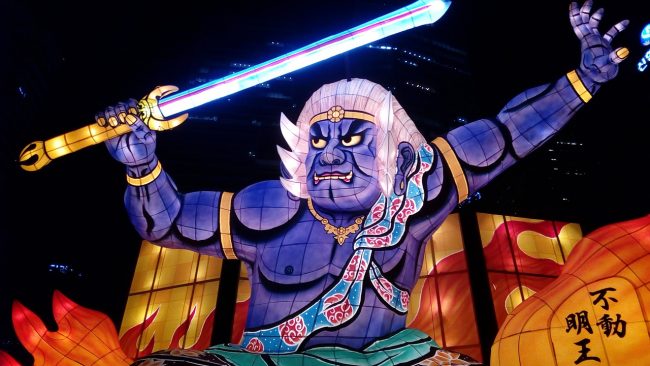
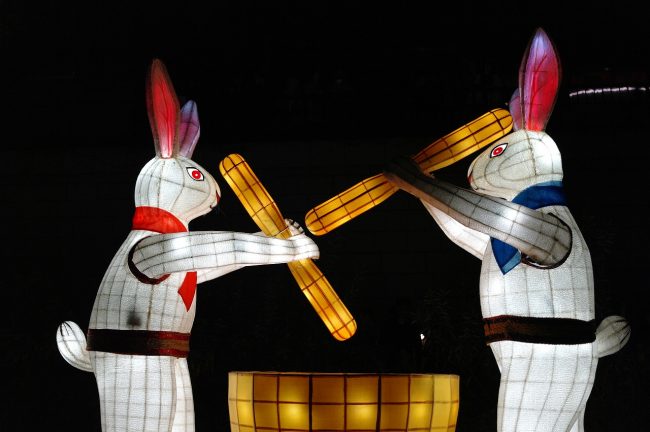
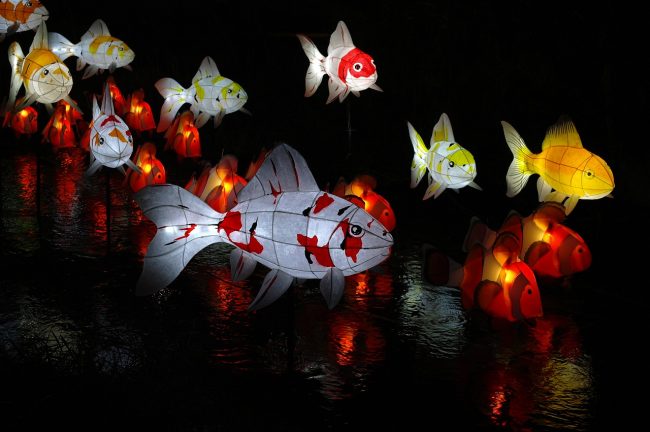
The start, in Gwanghwamun and near City Hall, is the most active and is also where the annual Lantern Festivalbegins. The festival is one of the most beautiful things to see in Seoul.
If you plan on going to Myeongdong, you can walk along the stream until you get to Samil-daero and turn left until you reach the shopping complex. The walk is 30mins for travelers with time on their hands.
Foodie tip: If you get out at exit 4 at Jongak station you are in for a foodie treat. This area caters for the multitudes of salary workers in the area and therefore has a variety of communal and fast food (Korean fast food that is) restaurants. It’s a great place to have Korean BBQ and drink some soju. There are also pubs and clubs with beer pong and the like, and great karaoke rooms to keep you entertained. This is one of the best things to do in Seoul at night on a weekday if you enjoy beer and oily foods.
Most of the biggest language institutes in Korea are also in this area, so you will find local and international teachers mingling with adult students over a beer. One of my favourite places in Seoul to eat is Donburi, which is an institution in the area and has recently been renovated (2018).
The vibe is of an authentic Izakaya with freeflow side dishes (including miso soup and kimchi). Try the salmon sashimi rice bowl (연어덮밥 – yeono topbab) or the mixed gatsudong for an epic treat. The queue gets really big, really quick, so prepare to wait for your meal.
My favourite local coffee shop in Seoul is also in this area at Caffe Themselves, across the road from the eating area and next to the Bibap Theatre (if you want to watch a cooking performance similar to the famous Nanta
in Myeong-dong). Their much awarded coffee is fantastic. Take a slice of cake and go upstairs to chill after all the walking. It’s also a nice place to work for digital nomads or to people watch. Try avoid lunchtime as you will have to wait in a long queue. Takeaway coffees are discounted.
Shop all night long at Dongdaemun
Some of you may be coming to Seoul for one thing: shopping! One of the best places to shop in Korea is Dongdaemun. It is one of Seoul’s top wholesale shopping destinations, which is packed with many wholesale markets which are open all through the night.
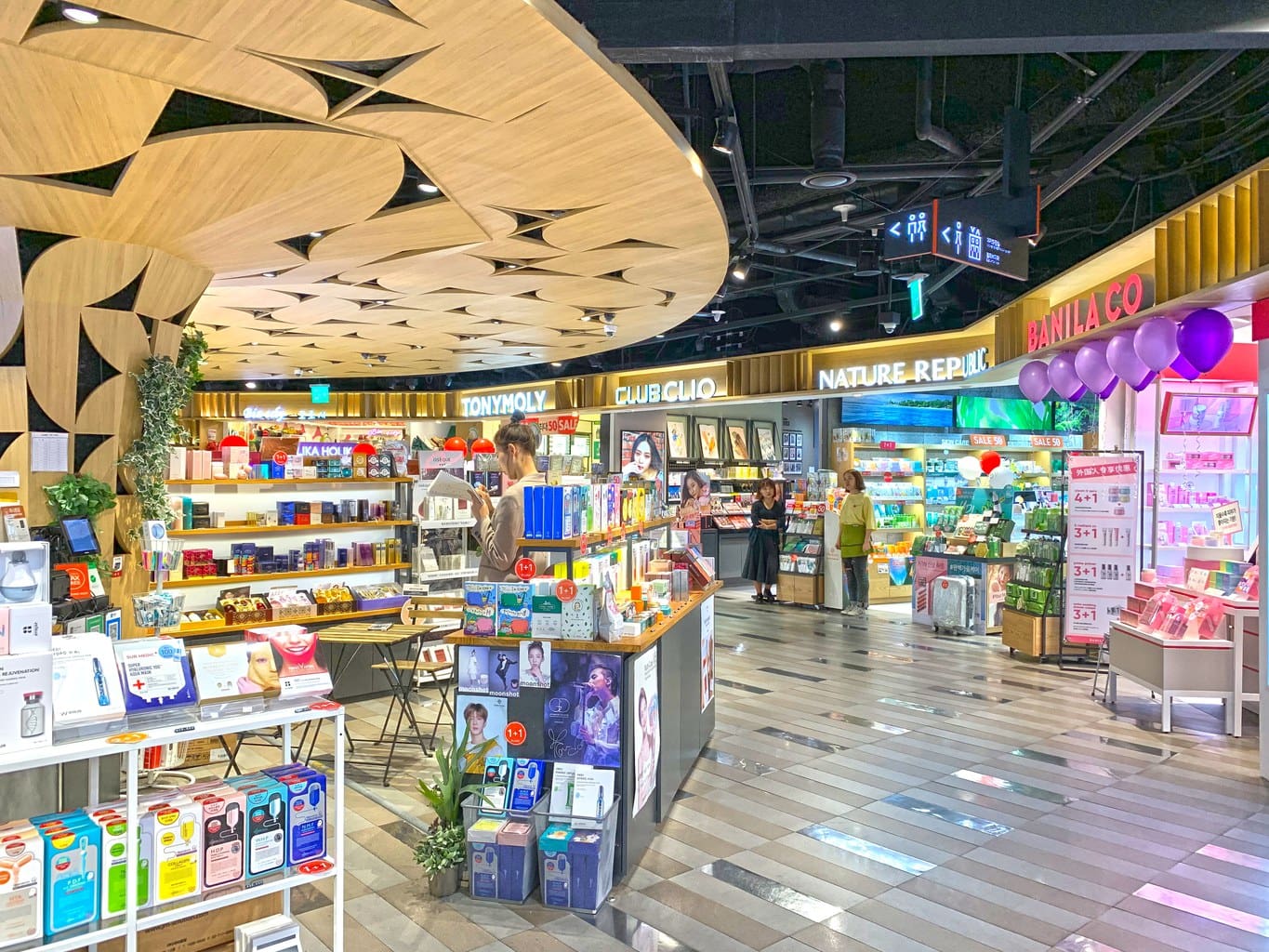
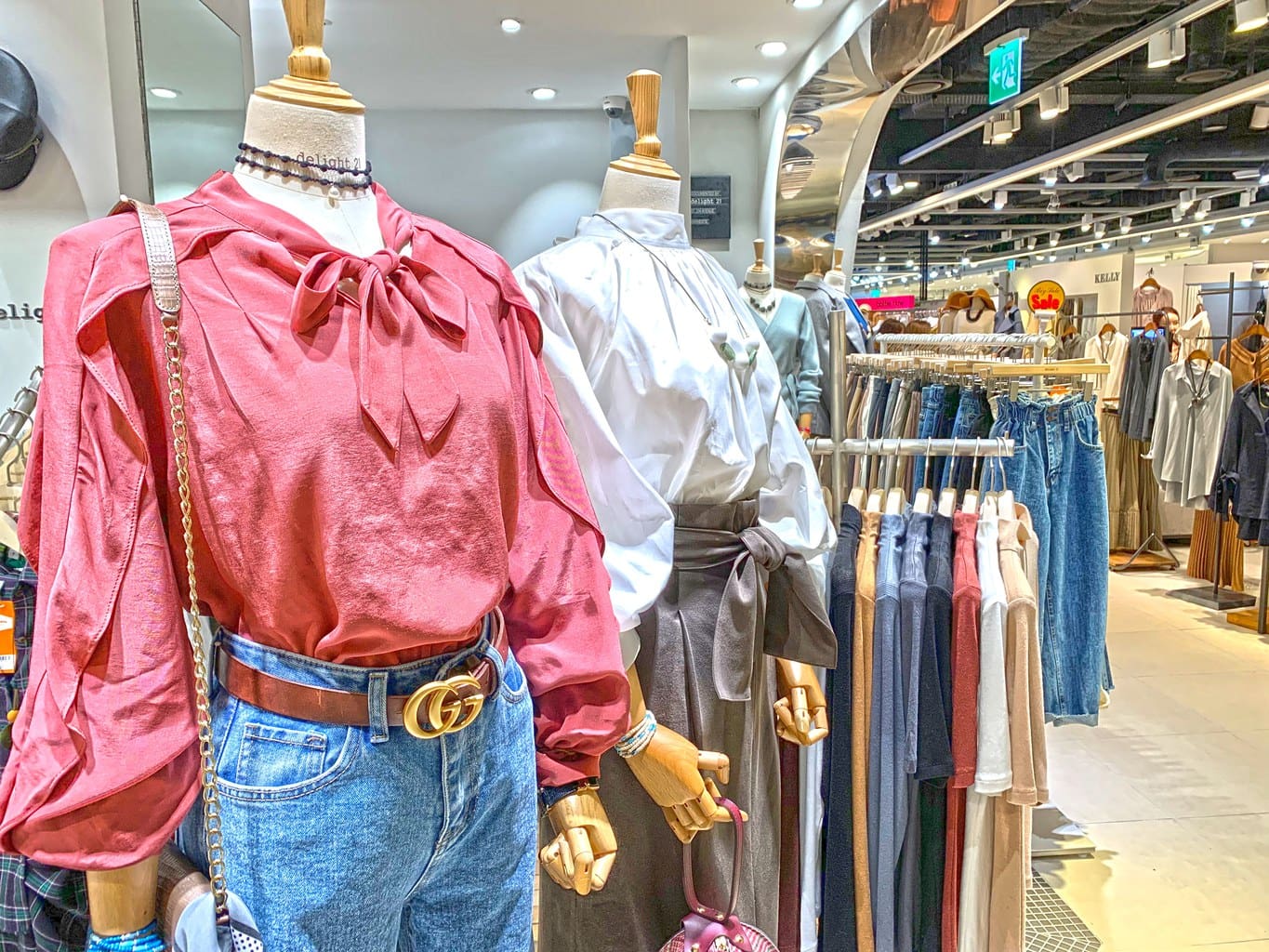
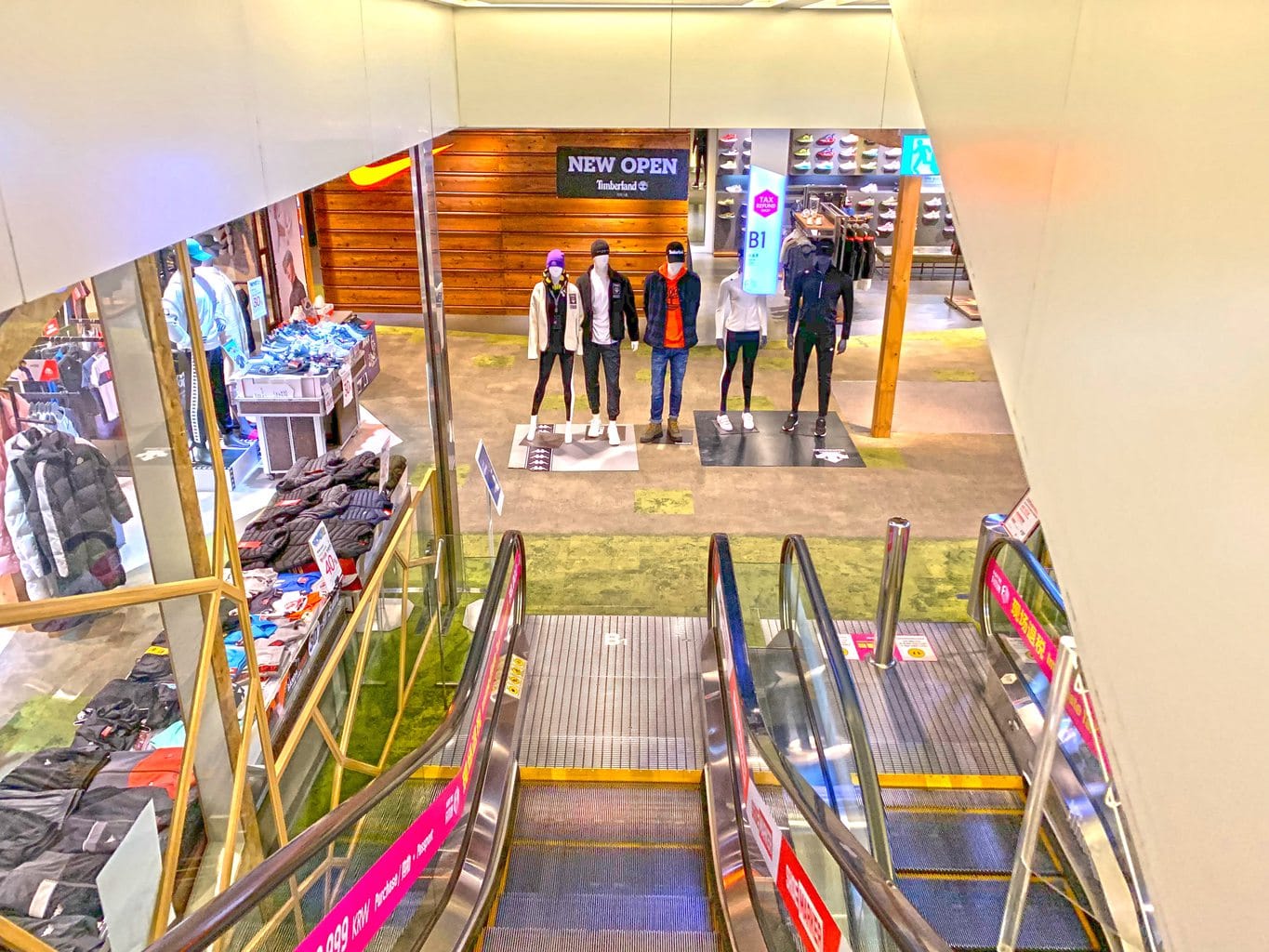
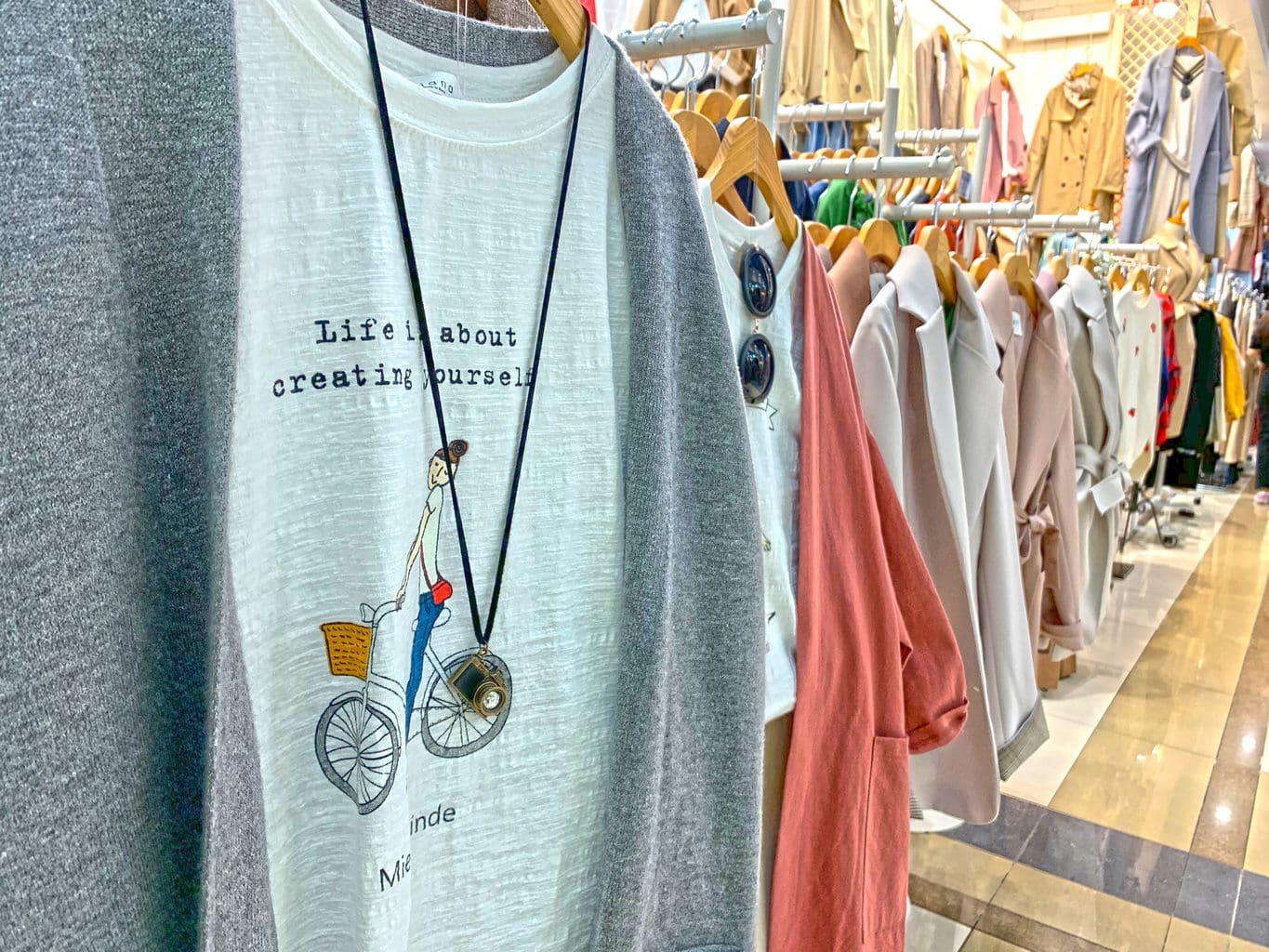
There are several department stores selling locally designed clothing to fill your Kpop wardrobe. No doubt one of the top things to do in Seoul is to wander around this incredible shopping mecca.
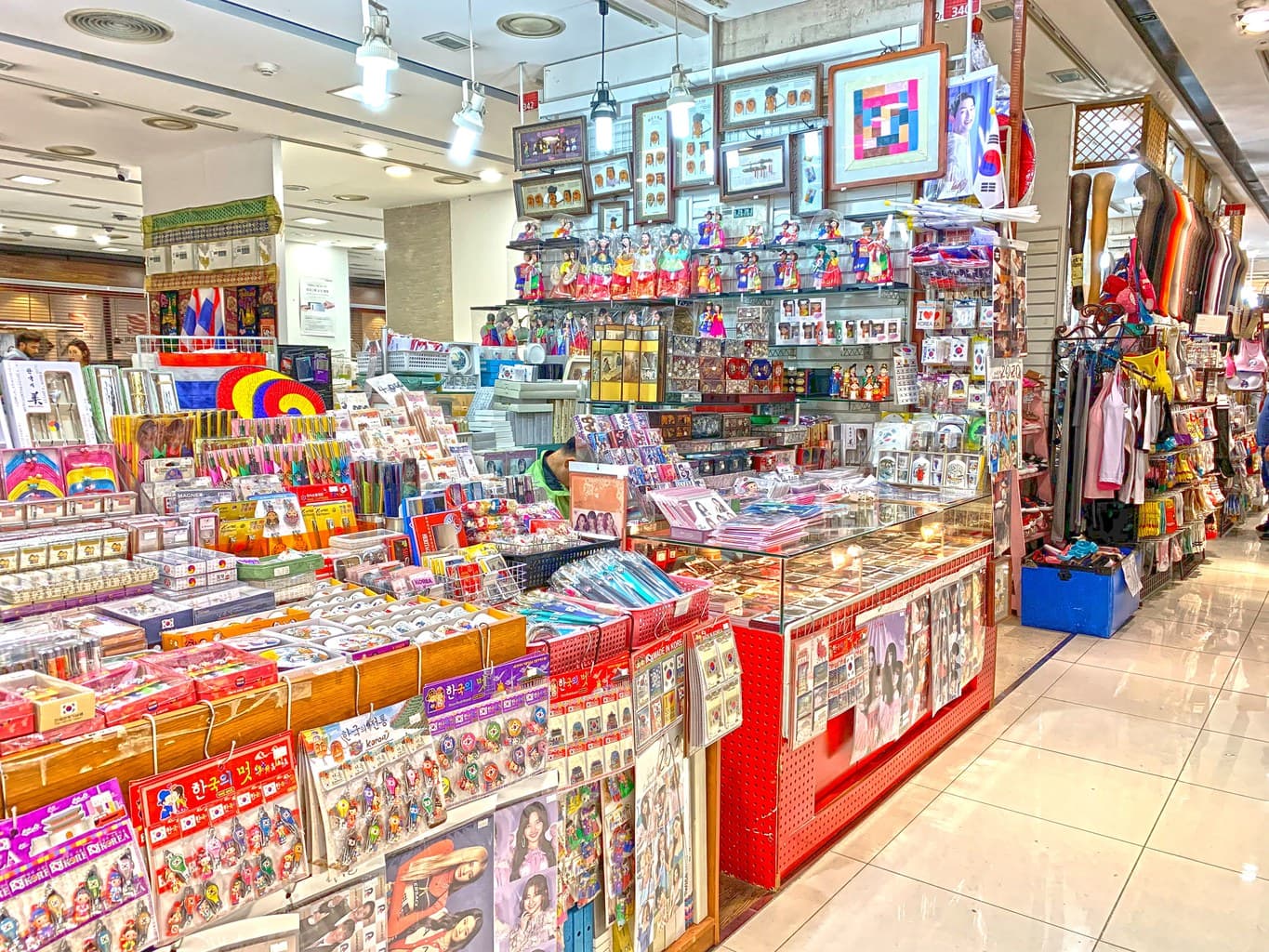
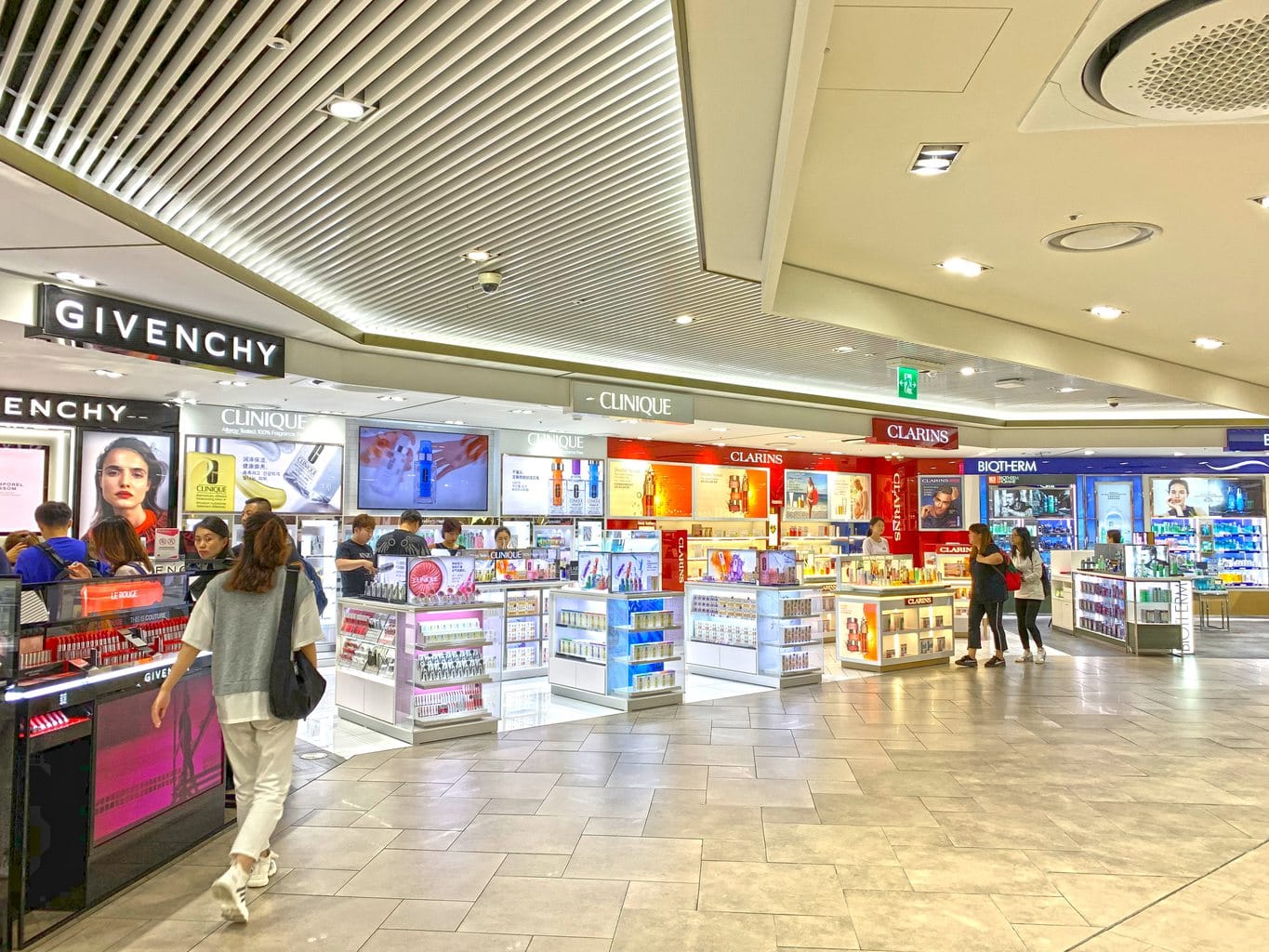
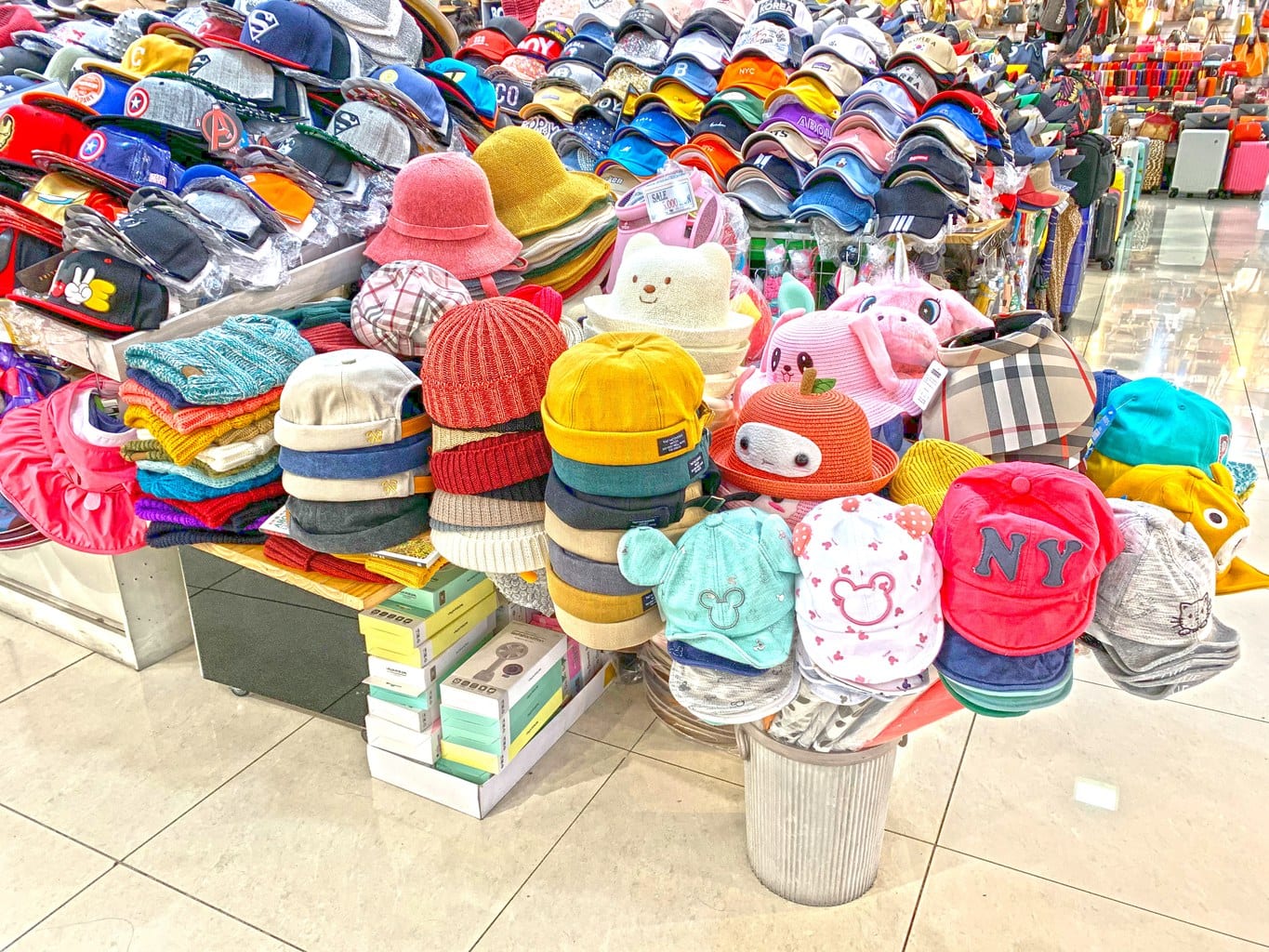
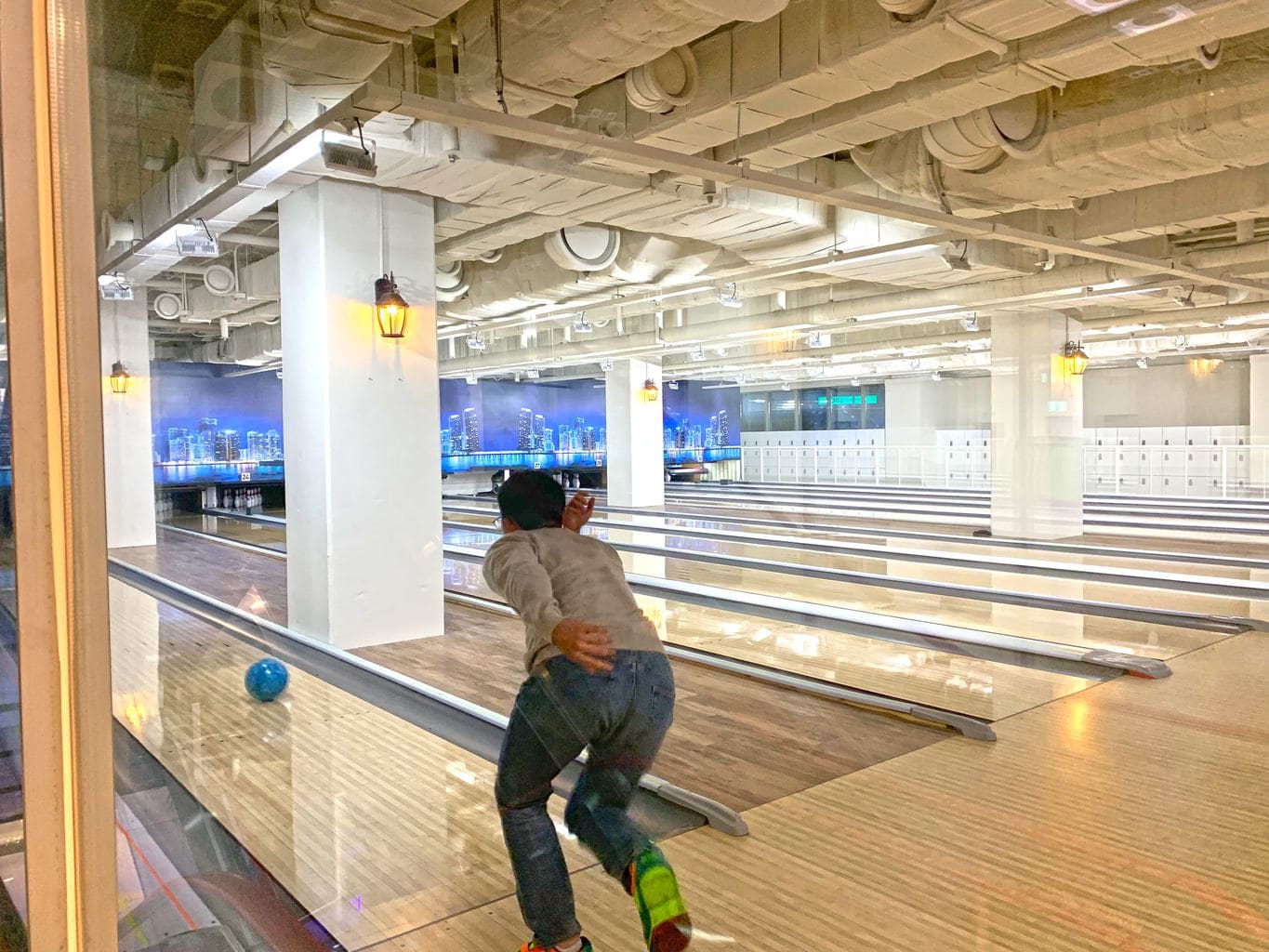
Places to visit in Dongdaemun include Lotte Fitin, Migliore, Doota, Hello APM or any of the otherapM franchises. Bring cash to haggle down the prices (say “kkakka juseyo” to ask for a discount). But Doota and Migliore should be your top picks for retail items.
Admire the Dongdaemun Design Plaza – Korea’s most futuristic landmark
The fairly new Dongdaemun Design Plaza (DDP) is one of the most eccentric buildings in Seoul, an Instagrammers paradise and a can’t miss place to see in Seoul. The building was designed by Zaha Hadid who designed the Morpheus Hotel in Macau and the Heydar Aliyev Center in Azerbaijan.
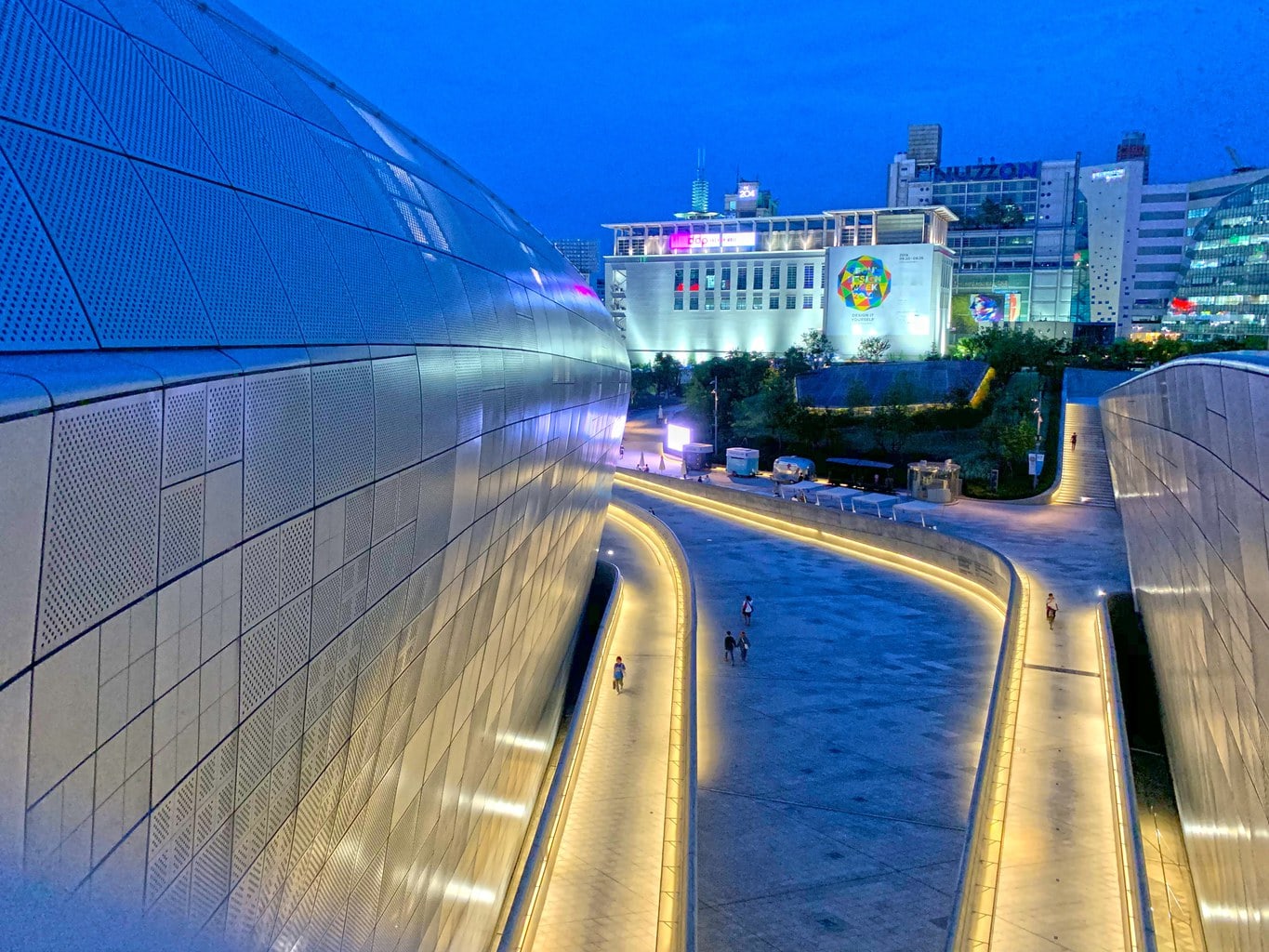
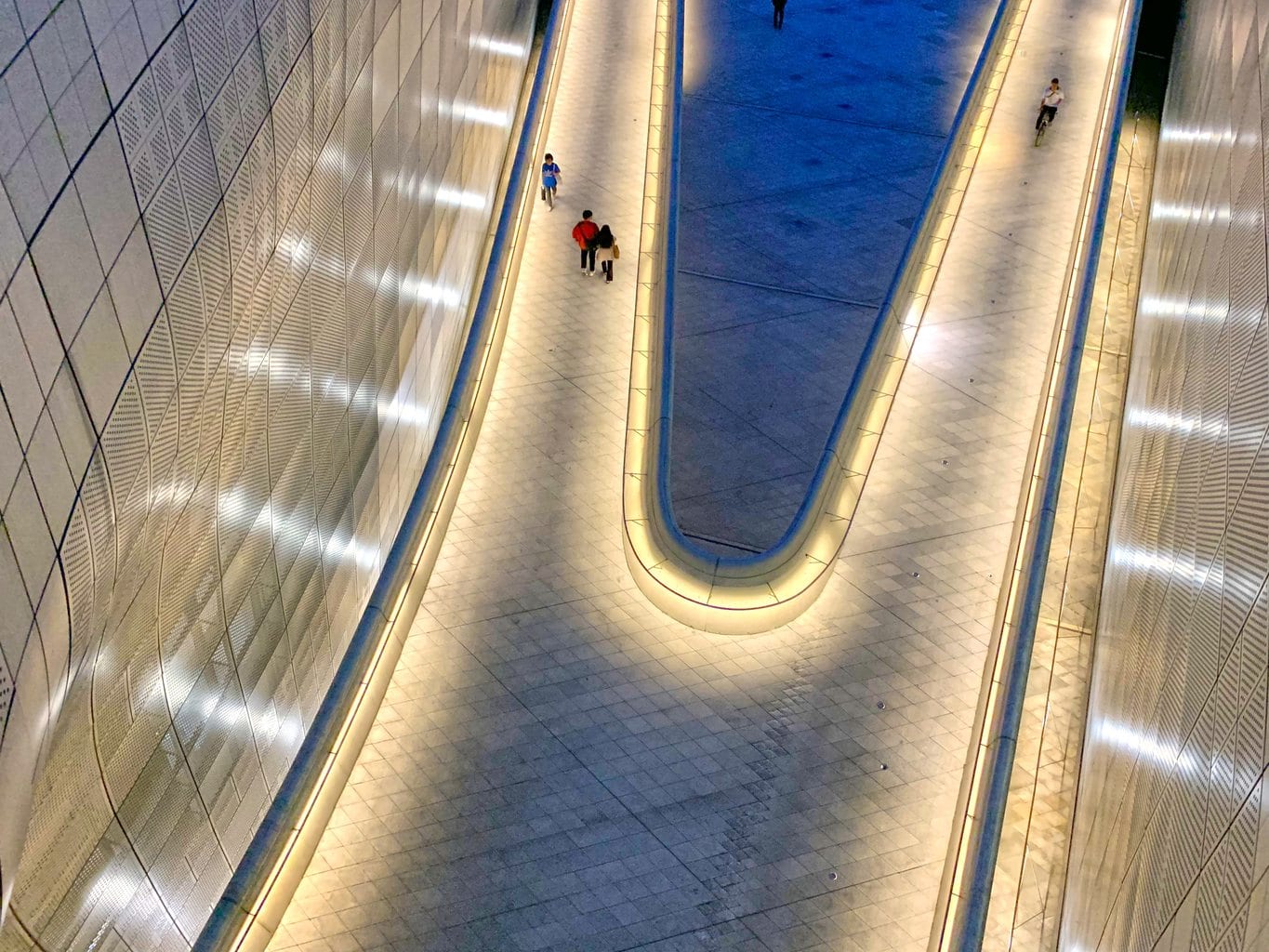
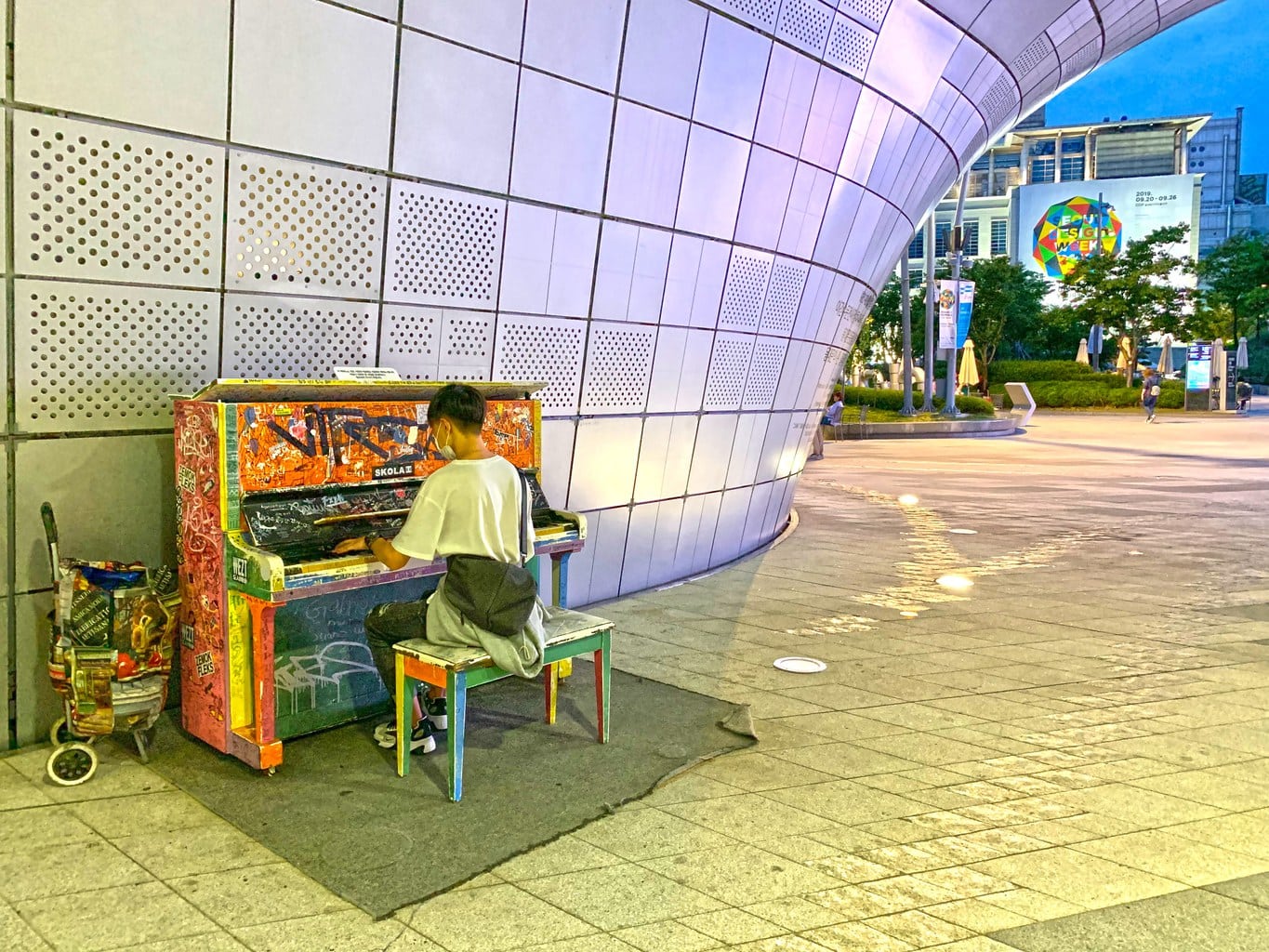
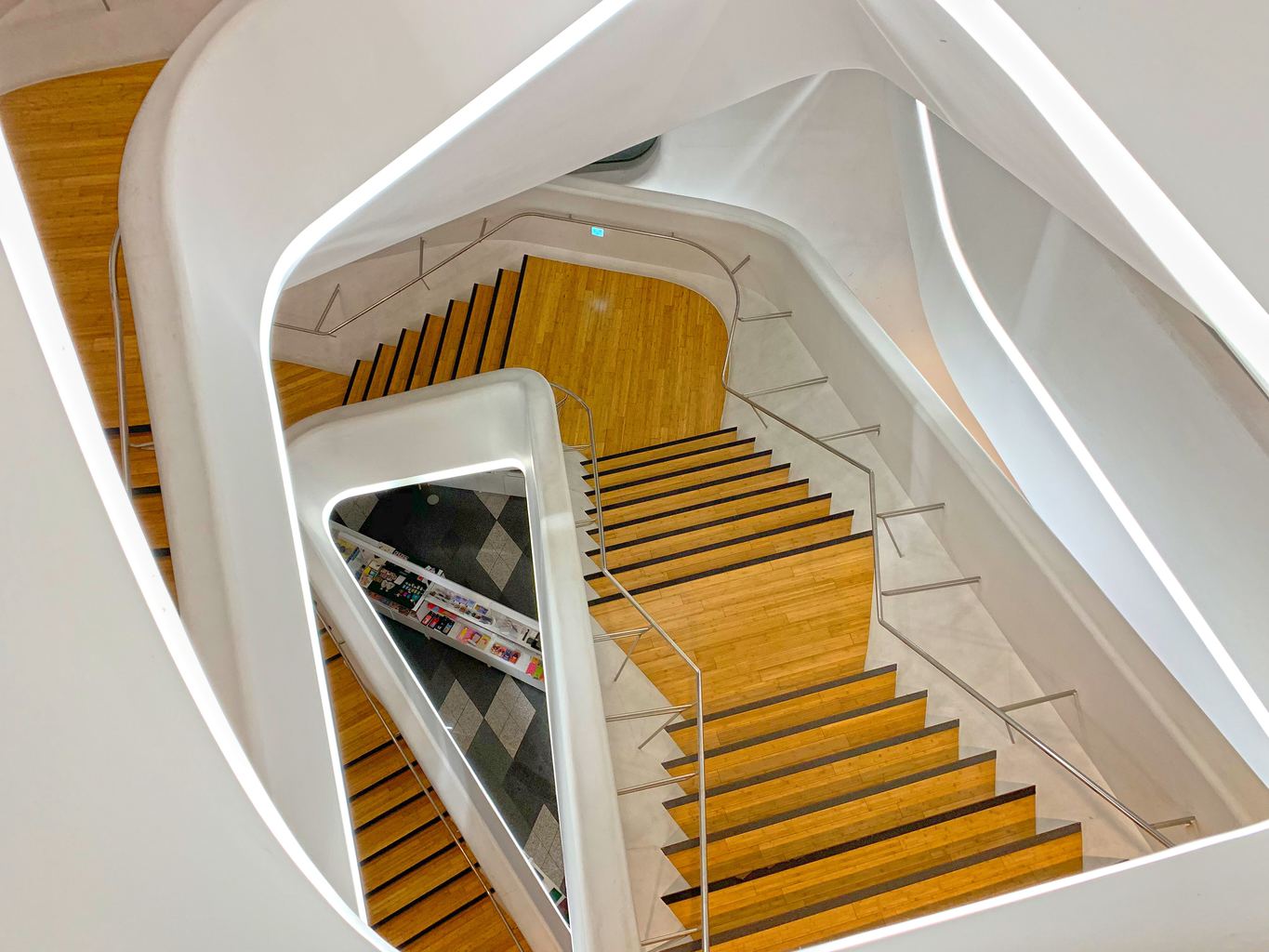
Apart from being a major urban landmark, it is also one of the best attractions in Seoul. The building can also be visited and has a rooftop park, exhibition spaces, parts of the original Seoul fortress, a design museum, the design lab, the academy hall, media center, seminar room, the designers lounge, the design market and more retail stores. This is a tourist attraction in Seoul you cannot miss and it is beautiful day and night.
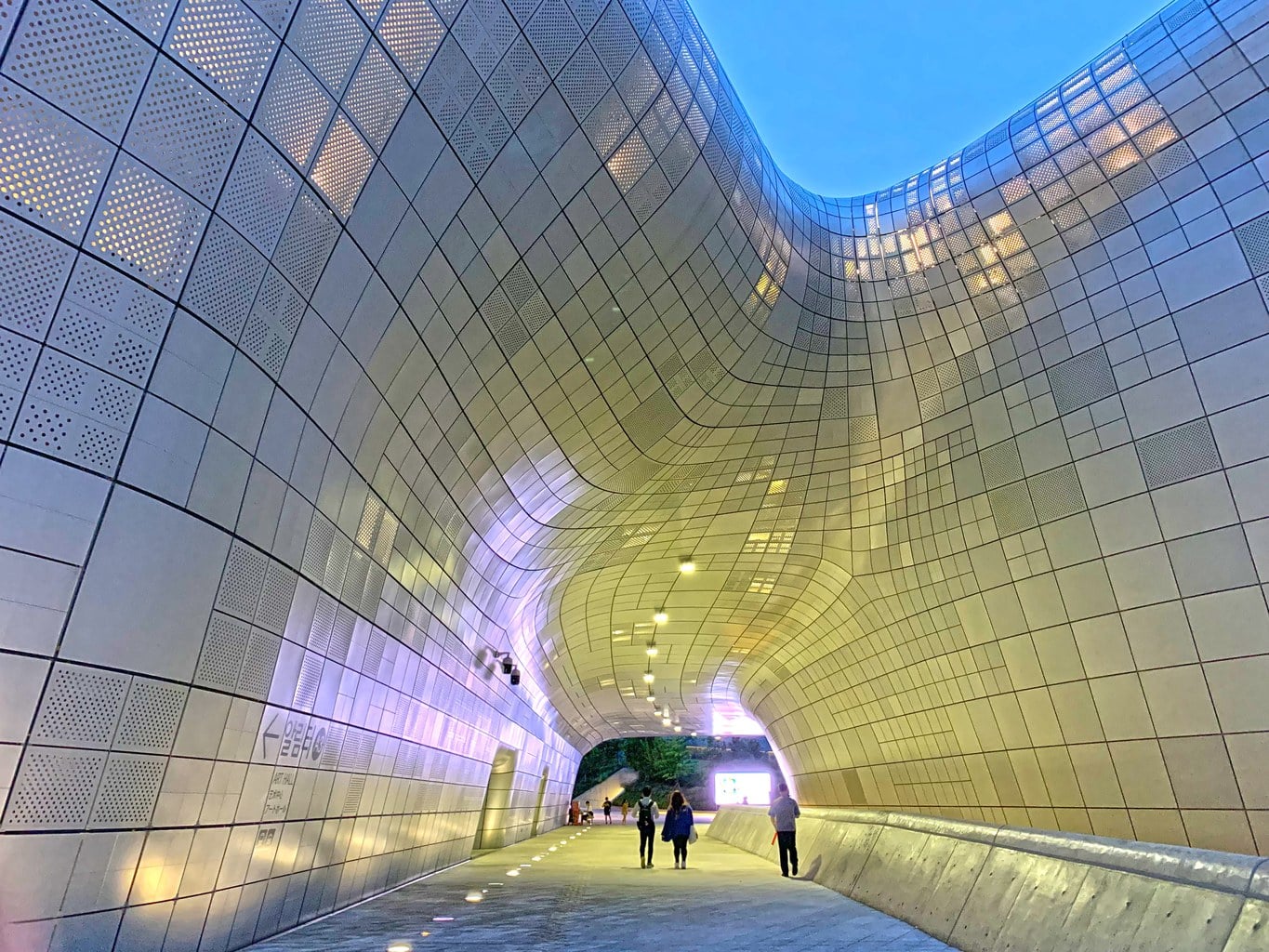
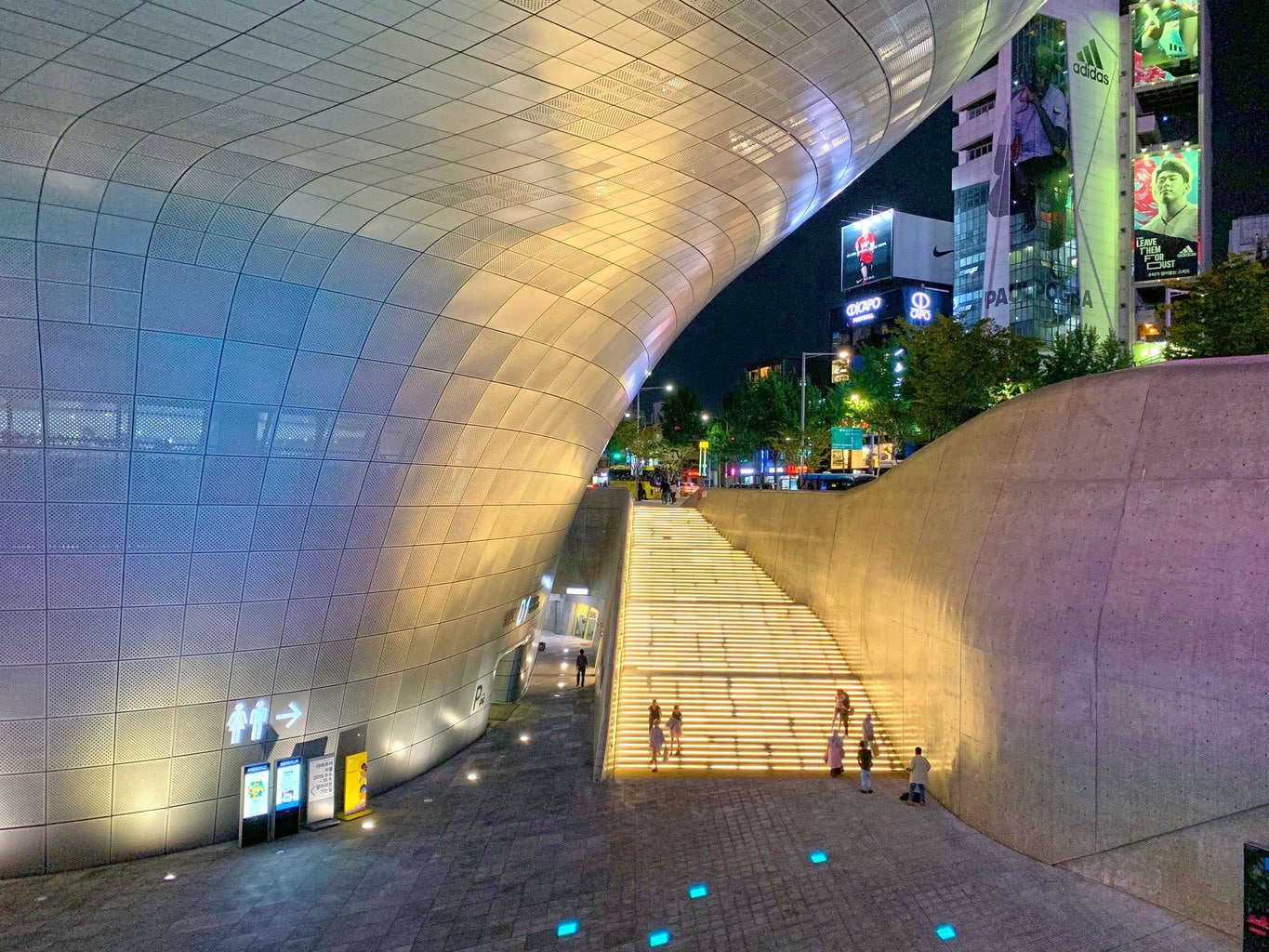
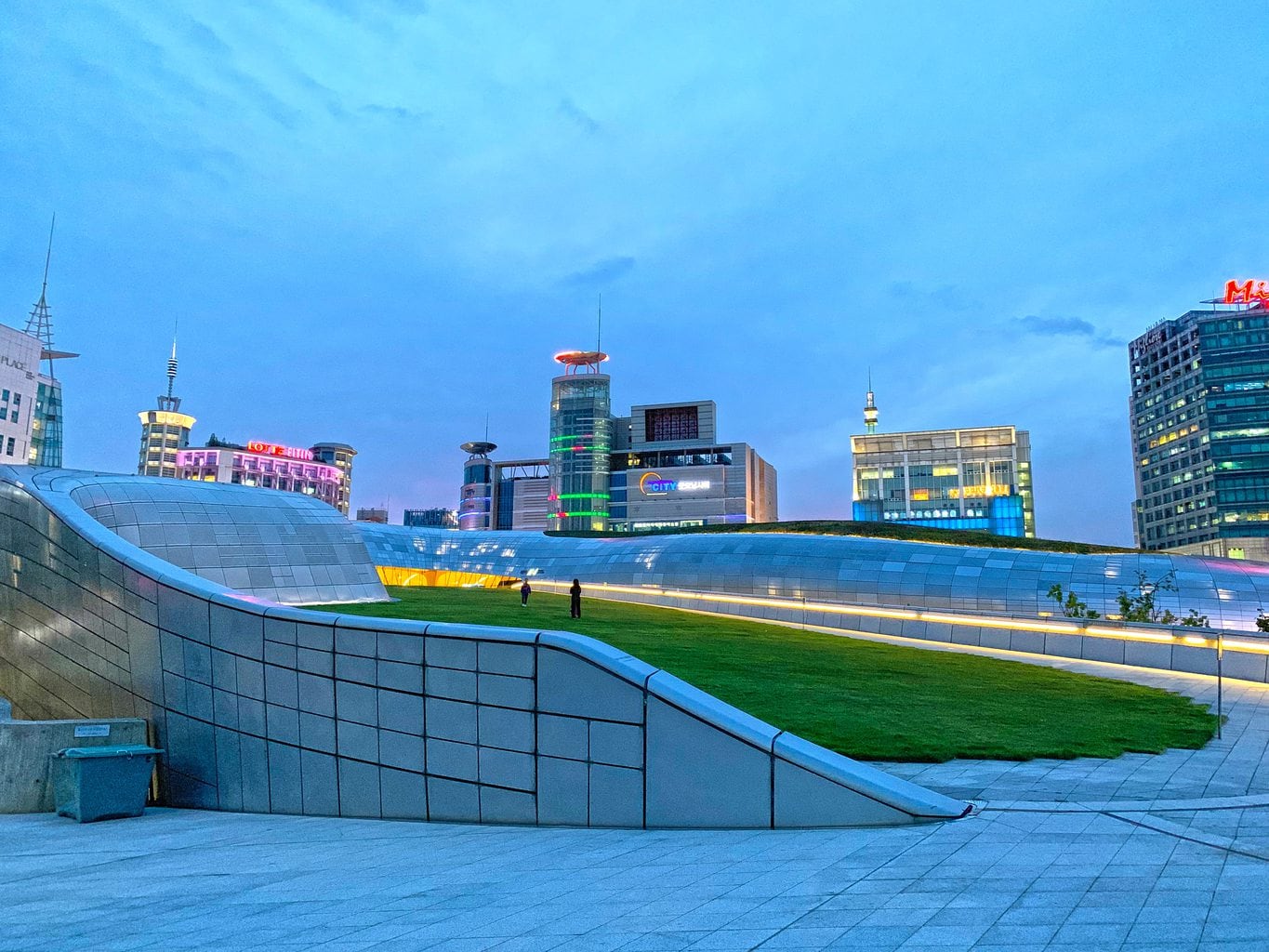
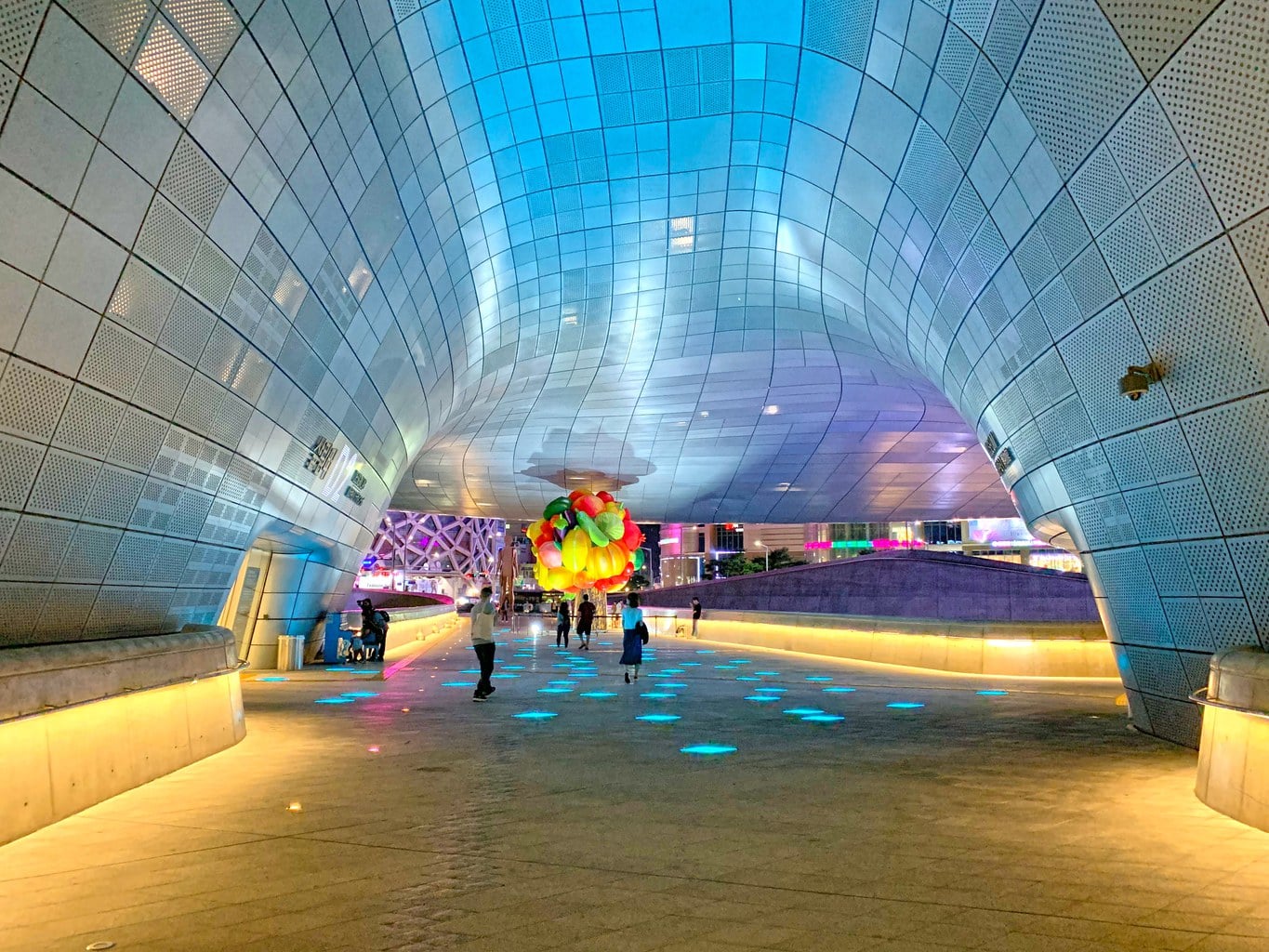
Dongdaemun Design Plaza is also the place where you will exit if you take the subway through Dongdaemun History & Culture Park Station. For more information on DDP, check their website.
Eat all the Korean foods at the Gwangjang Market
For cheap, authentic and delicious street food, head to Gwangjang Market at exit 8 at Jongno-5 ga station. If you like Korean food or are interested in trying it out, this is the place to go. It’s massive, like a small city in the middle of city, so make sure to wear comfy shoes.
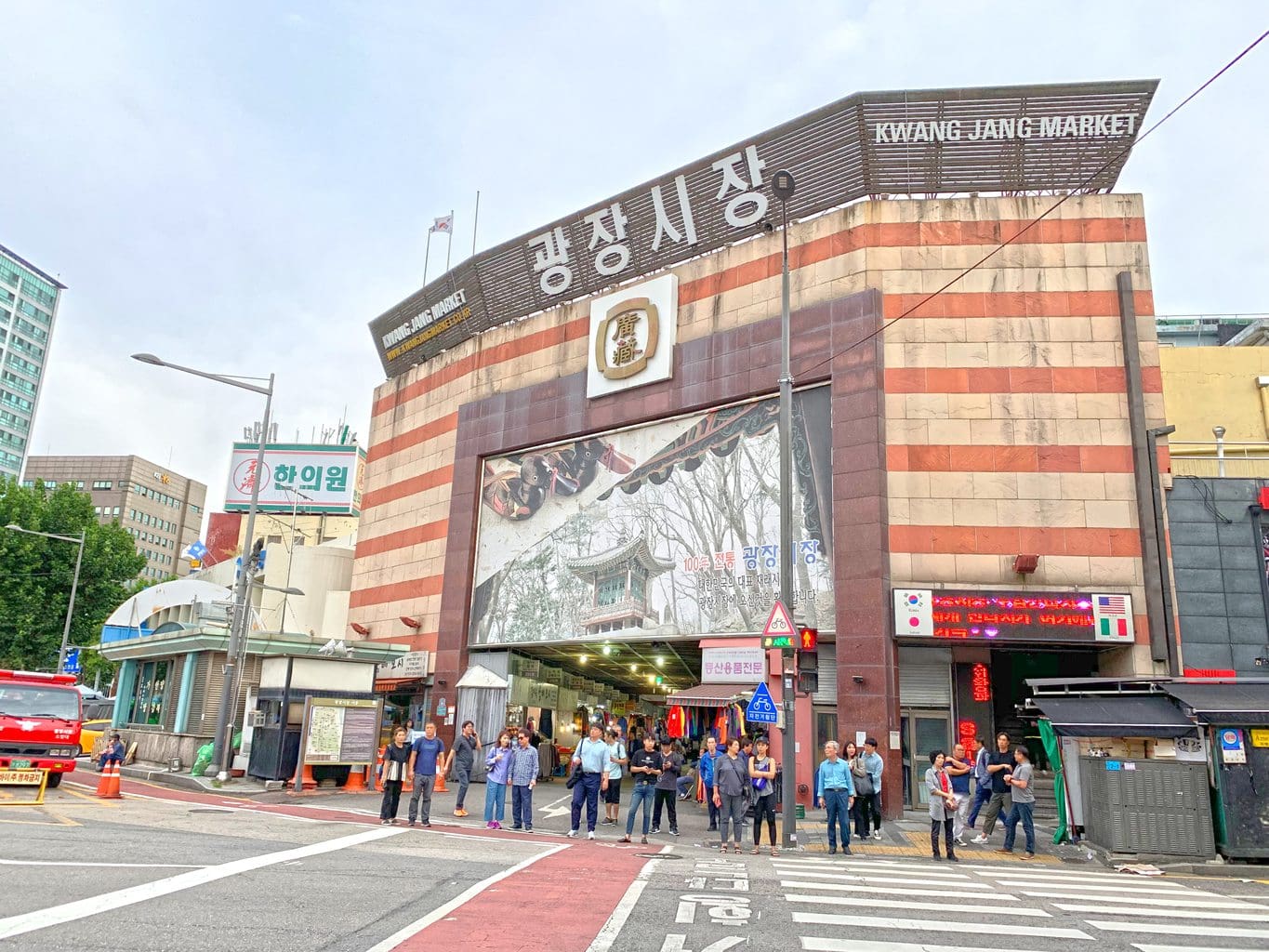
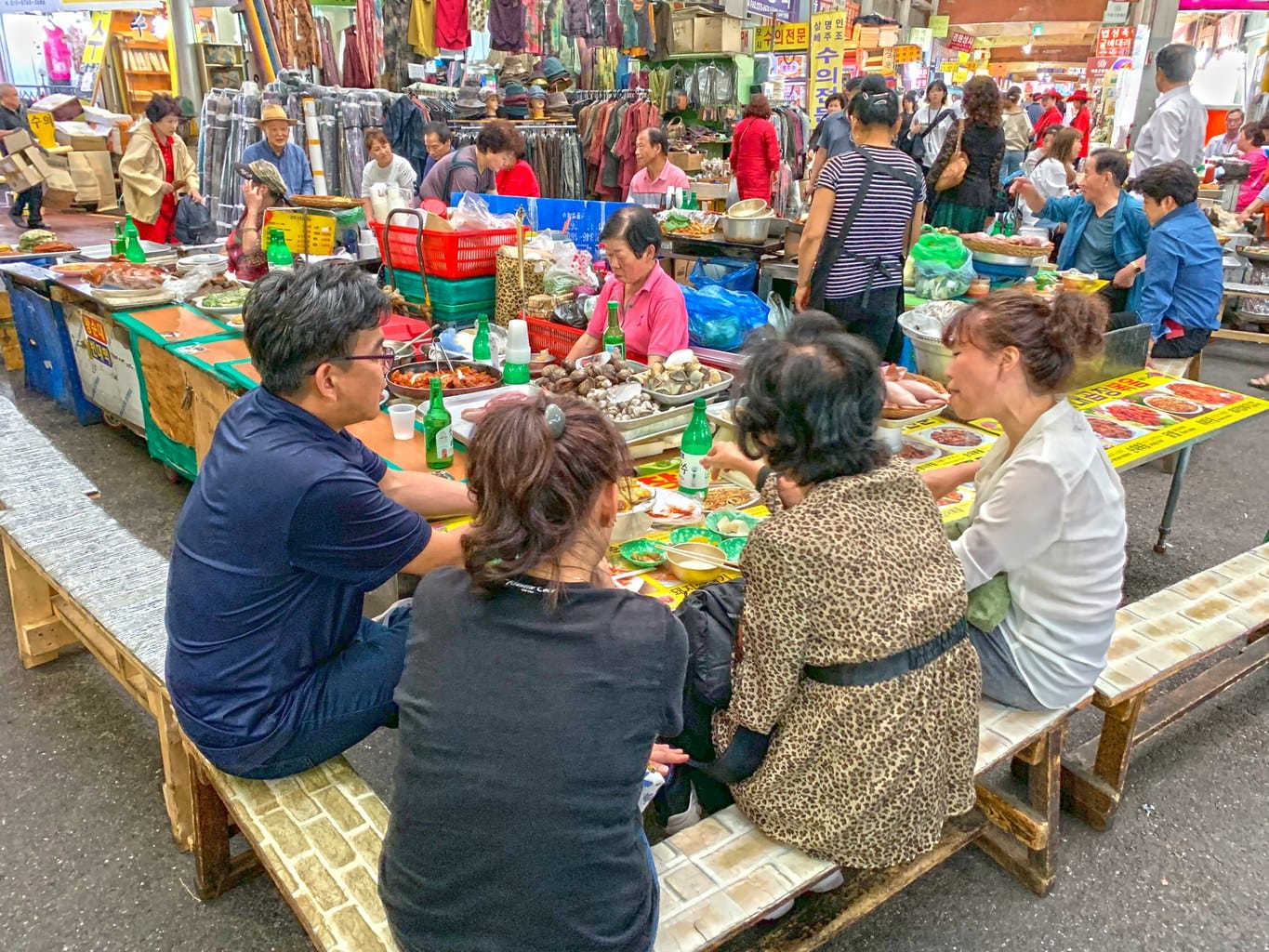
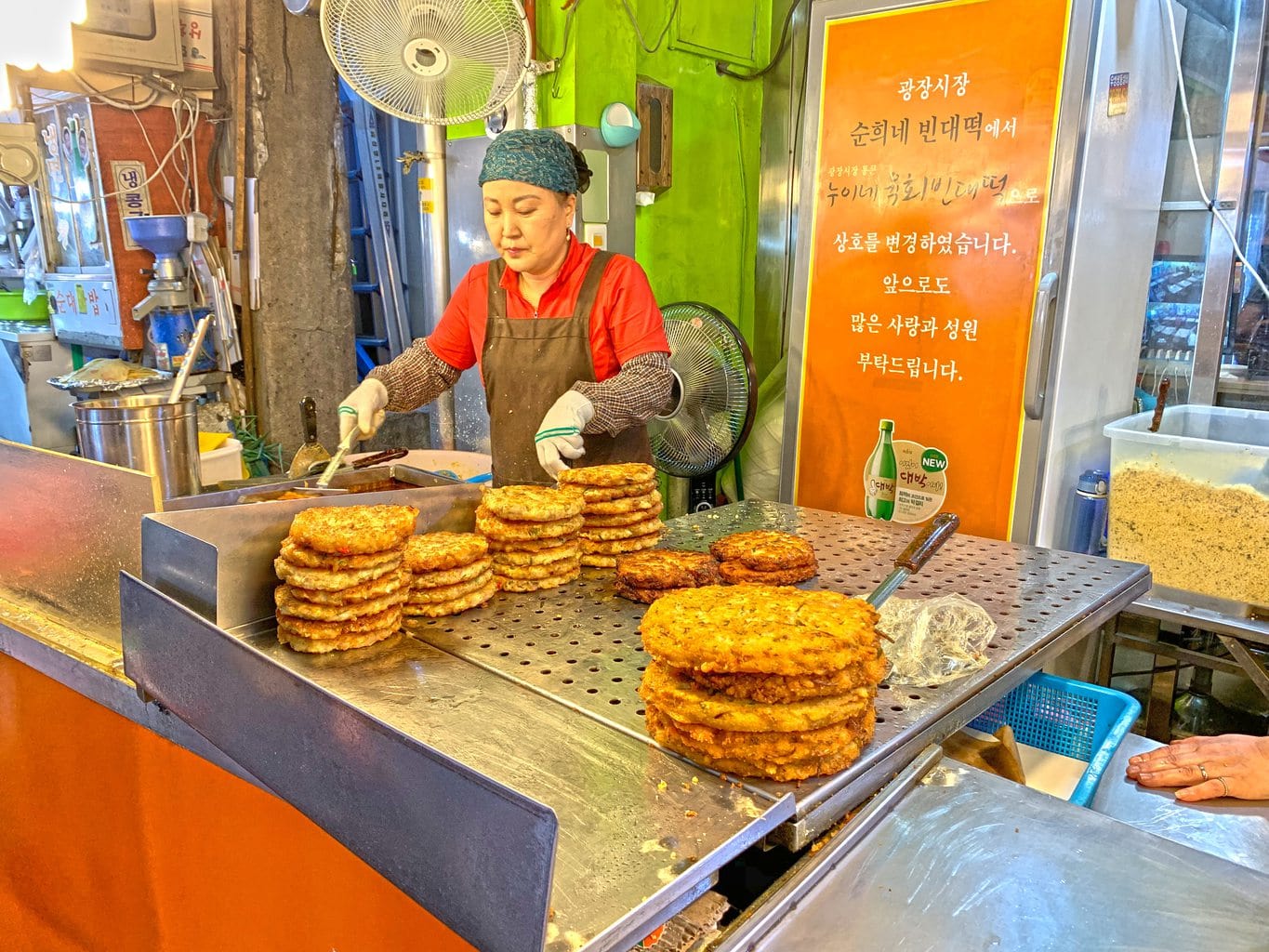
If you have a Netflix account, you may be familiar with Gwangjang as one of its vendors, Yoonsun Cho, was showcased on an episode of Street Food. She’s at food stall #70 and you can try her hand cut noodles or kimchi mandu at around $5 per menu item.
You can try everything here from the ubiquitous kimbap (김밥, Korean style rice roll (try the mayak kimbap)) to delicacies like jokbal (족발, pig’s feet), soondae (순대, blood sausage made of cow’s intestines) and bindaetteok (빈대떡, mung bean pancake). Bring cash and an empty stomach, this should be at the beginning of your list of top things to do in Seoul for foodies.
How to get to Dongdaemun. Dongdaemun History & Culture Park Station (동대문역사문화공원역) lines 2 (green), 4 (light blue), 5 (purple) exit 1 for Dongdaemun Design Plaza, exit 14 for all the major retail stores like Migliore.
Feel artsy along in a theater area Daehangno
When art and creative types asked me what to do in Seoul I always suggest they head to Daehangno. If you love independent theatre, you should try out this area. Similar to Hanyang and Hongdae, Daehangno is a university area with plenty of hipster cafes, restaurants and a general younger, hipper crowd.
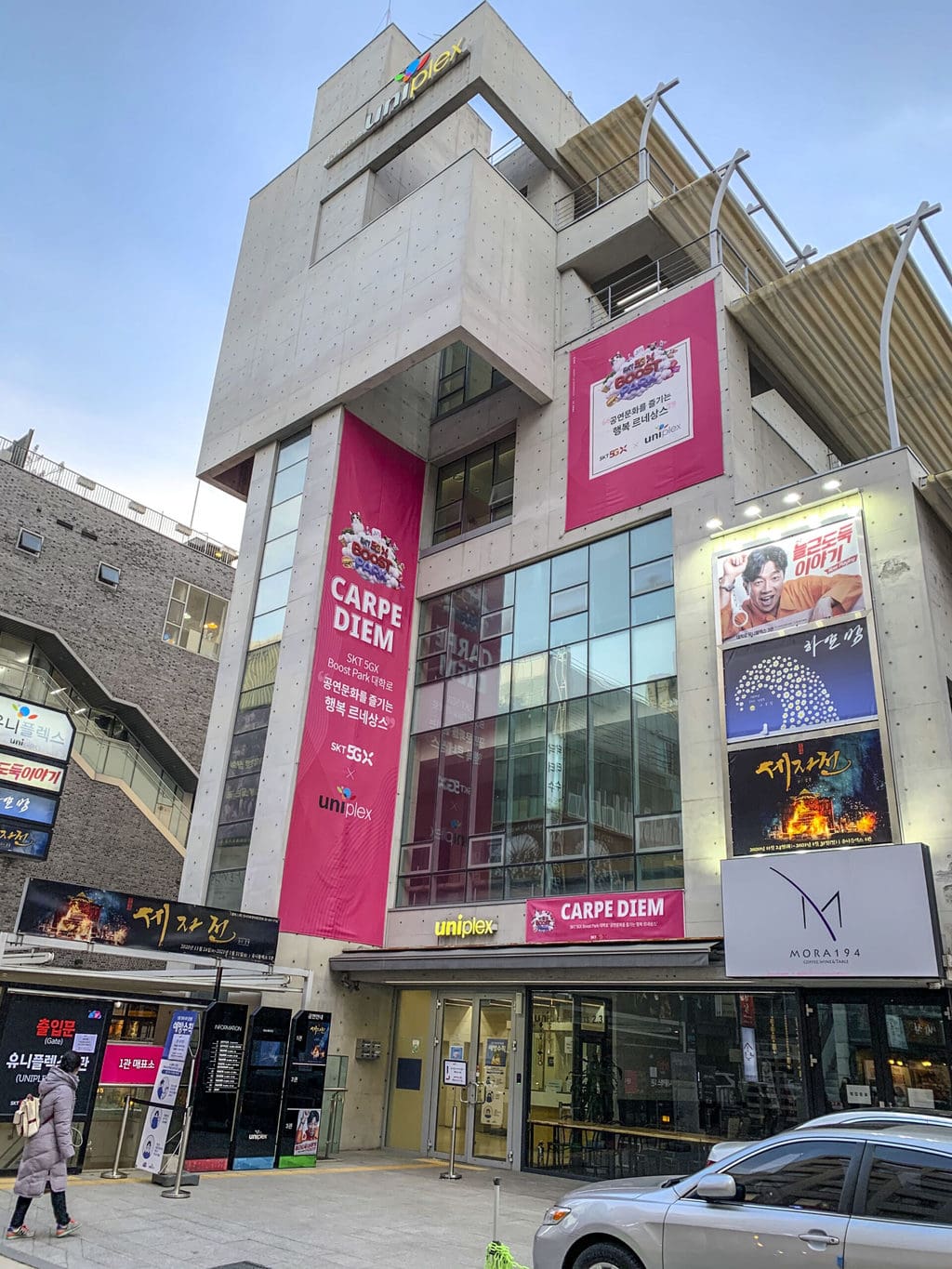
The area around Hyehwa station is filled with amateur theater productions, mostly in Korean of course, but is still a great place to catch a performance. There are also murals everywhere in the area known as Ihwa Mural Village, about a 10min walk from the station so this is one of the best things to do in Seoul for younger travelers, even if you don’t watch a performance.
The area around Hyehwa station at exit 2 known as Marronnier Park is a good place to try out some street food like tteokbokki (spicy rice cake), sundae (blood sausage) or huge waffles stuffed with ice cream. Daehangno is also the perfect place to try the thick, sweet Korean rice wine known as makgeolli.
Visit a real makgeolli house for an authentic experience. My favorite is Cheongseoggol (청석골) which has great pajeon (spring onion pancake) and walnut makgeolli (밤막걸리 – bahm makgeolli). This is a very localised tip with no website or social media. So check our map above for directions.
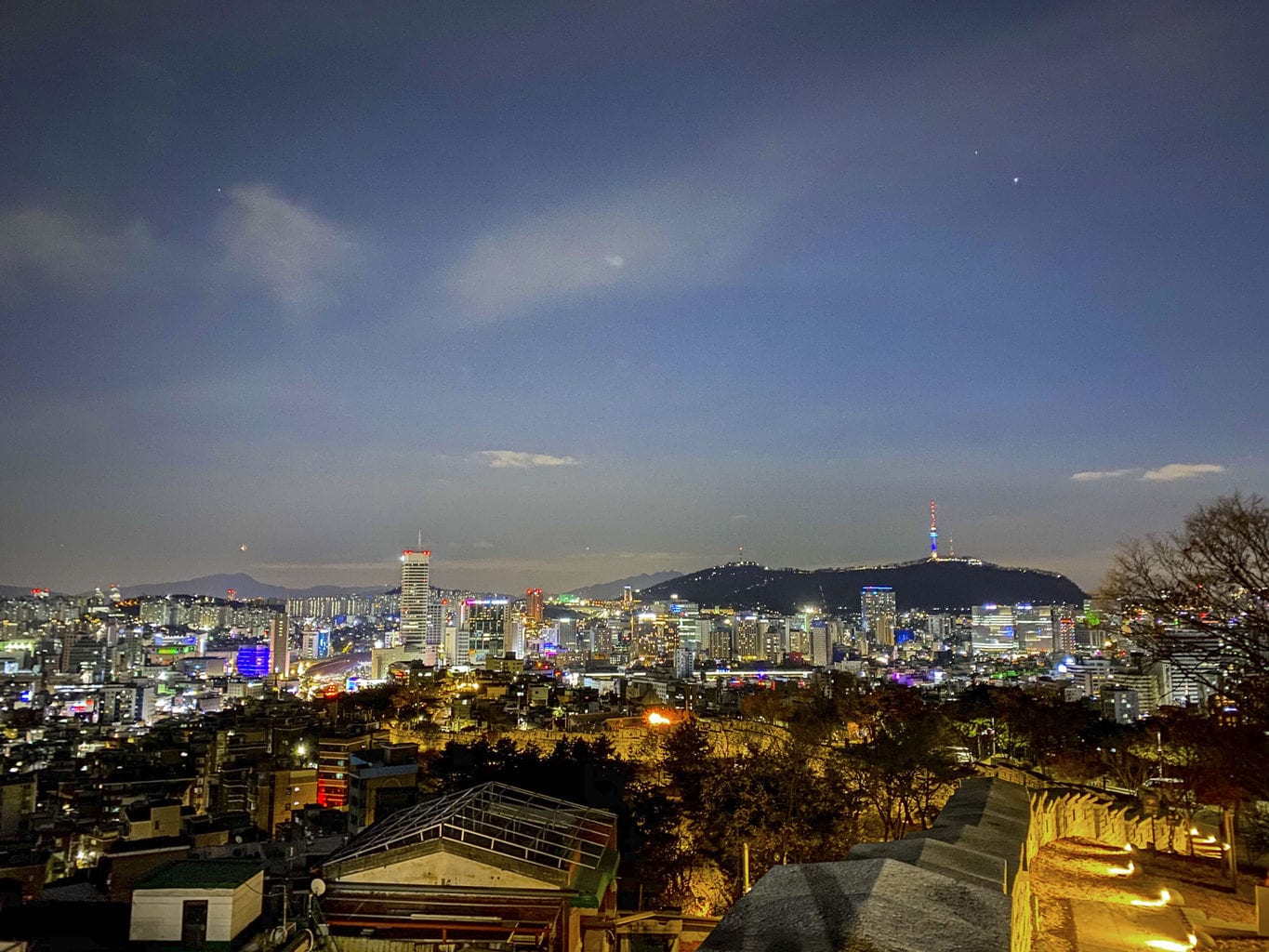
Naksan Park is a nice expansive green space near Daehangno where you can go on a trail walk along the Joseon Dynasty fortress walls, day or night. You can actually walk all the way to Dongdaemun if you really want to. Seniors should take caution as the Park is up a hill which can be driven up, but if you don’t have a car there are many many stairs to the top.
It’s a great place to pictures of downtown Seoul with views of Namsan, Dongdaemun, with Changdeokgung Bukhansan and Jongmyo Shrine on the other side. See the image above for the cityscape views.
How to get to Daehangno. Hyehwa Station (혜화역) line 4 (light blue) exit 2 for Mariner Park, University Street and Ihwa Mural Village.
Partake in a traditional tea ceremony
Can’t decide what to do in Seoul and need a break to think? Why not take it easy and enjoy a cup of traditional tea. Korean tea houses are like mini-temples. The interior is often light, calm and rustically beautiful. The tea itself is delicious, the cups and pots are artisanal and the desserts are scrumptious.
You can even participate in a traditional Korean tea ceremony while wearing hanbok at Korea Tea World. Professor Eunju Seo will guide you in the art, customs and proper etiquette during a tea ceremony. After sipping the aromatic leaves, you will have a soothing green tea foot bath. You can book your experience online here.
Hike Bukhansan, the most famous mountain in Seoul
If you are a hiker, this is the part that you’ll need to save. Literally translated as “big mountain in the north”, Bukhansan most definitely lives up to its name. It is 78.45km wide, lies within 6 different districts and even extends into the next province, Gyeonggi-do.
It is a beautiful intermediate hike, although there are multitudes of paths to take, so beginners would also thrive in the nature (even if you don’t make it to the top). Insubong Peak, the magnificent granite rock, is mesmerising and one of the top attractions in Seoul for hikers scaling Bukhansan. Baegundae Peak is another famous summit.
There are several temples scattered around the mountain that are worth a visit for some meditative solace, from Sangunsa Temple near Bibong Peak, Seungasa Temple on the east Bibong Peak, with rock-carved Buddhas Maaeseokgayeoraejwasang, to Munsusa Temple en route to Musubong Peak. The 8,500m Bukhansanseong fortress wall is also not to be missed.
While it is a large and gorgeous mountain, hiking it is also one of the top things to do in Seoul so it is always full. Bukhansan averages 5 million visitors annually entering the Guinness Book of World Records as the national park with the highest number of visitors per square foot.
Book a guided hike here or see below for a quieter, yet still close alternative.
Insider tip: There are usually people selling fresh makgeolli and snacks like anchovies and fruit at various intervals on all the popular mountains in Korea. Take some cash with you if you’d like to partake in this cultural activity. But be warned, don’t drink too much, makgeolli is fresh and sweet and can seem like juice, but the alcohol can pack quite a punch. Even though it is about 6-8% alcohol content, people tend to drink it fast and in abundance. So please be moderate. There is also exercise equipment at random intervals which is free to use, that is, if you feel like working out in the middle of a hike.
How to get to Bukhansan. For Bukhansan National Park, go to Gireum Station (길음역) line 4 (light blue) exit 3, then take Bus 110B or 143, and get off at the last bus stop.
For Bukhansanseong Fortress, go to Gupabal Station (구파발역) line 3 (orange) exit 1, then take Bus 704 bound for Bukhansanseong Fortress (북한산성). Get off at the Bukhansan Mountain entrance bus stop.
For Dobong Area, go to Mangwolsa Station (망월사역) line 1 (dark blue) exit 3, and walk for 10mins until you reach Dobong Management Office of Bukhansan National Park Dobong Office – address for Google Maps: 229-104, Howon-dong, Uijeongbu Si, Gyeonggi-Do.
Compete in Running man
If you love Korean reality/variety shows, you’ve definitely heard of the super fun Running Man. If not, you should give a watch. Basically, the MCs and (very famous) guests race to complete missions and tasks in an often hilarious way. It’s been running since 2010 and due to the changing guests, it’s always fresh and new. Even BTS have been guests on the show.
So, of course, experiencing the gameshow first hand is a must for both fans and newcomers alike. The Running Man Thematic Experience Center in Insadong allows you to compete against family and friends while you tackle 6 experience zones including the Running Ball, City Pursuit Battle and Maze Battle. You can book your ticket online here.
Understand your digestive system at Poo Poo Land
One of the newest additions and winner of the weirdest things to do in Seoul is to visit Poo Poo land. Yes, you read correct, there is a theme park where you can learn all about your bowel movements. In fact there are three stories to explore! Take a picture with your face in a urinal or dress up like a piece of poop and slide down the intestine slide into “poopoo paradise”. Super strange, but actually quite fun. Book your discounted ticket online here.
Solve puzzles at Alive Museum
There is also the amusing Alive Museum that has 20 contemporary ‘Trick Art’ and 50 parody works of famous pieces of art. This is an immersive experience as you work with friends and family to take on the puzzles, challenges and obstacles at the Dynamic Maze. You can also reserve your tickets at a discounted price here.
Be part of an artwork at L’atalier Museum
L’atelier is an interactive art museum in Dongdaemun where you get to immerse yourself in a real life interactive painting. If you love art and want to learn more about famous paintings like Monet’s Water Lillies – but in a mixed media presentation – now is your chance. Great for art-forward families with free audio guides in English. Book your ticket here.
Things to do in Seoul north of the river (Gangbuk)
The area running along the north of the Han river is made up of several districts and has a few of the best attractions in Seoul.
Northeast of the river you can find Yongsan-gu, made of expat shopping and foodie havensItaewon and Haebangchon. These areas are mostly for expat living. The US Army is based in this area, so Americans will feel at home in Yongsan district.
Yet US expats and military officers are not the only people who hang around this multi-ethnic hotspot, Australians, New Zealanders, South Africans, Canadians as well as Middle Eastern, African and European expats frequent and even live in this area. There’s even a working mosque and Chabad Centre in Yongsan.
Mapo-gu, running along the Han river and bordering Goyang city in Gyeonggi-do, is well-known for its concentration of famous universities. The most well-known is Hongik University (Hongdae) as well as Sogang and Ewha Women’s Universities. The area is frequented by young, hip and artsy university students looking to express their individuality and is a great place to grab a bite to eat or party the night away.
Myeongdong and Namdaemun in the centre are the best places to shop in Seoul beyond Dongdaemun and here you can shop to your heart’s content 24h a day.
Lastly, Gwangjin-gu to the east is a more open and residential area which has less of the frenzy and a few places to see.
Below are all the top things to do in Seoul north of the river, in Gangbuk’s main areas.
Things to do in Itaewon, Hannam & Yongsan
Travelers craving places to visit in Seoul with a diverse mix of people and food will want to visit the Itaewon and Haebongchon areas. The main road consists mostly of clothing shops (with famous American brands like Nike and Adidas) and coffee shops, with a few fast food chains and coffee shops.
There are so many things to do in Itaewon that we couldn’t fit them all in this article. Read on for our list of the best things to do in Itaewon.
Have a trendy brunch
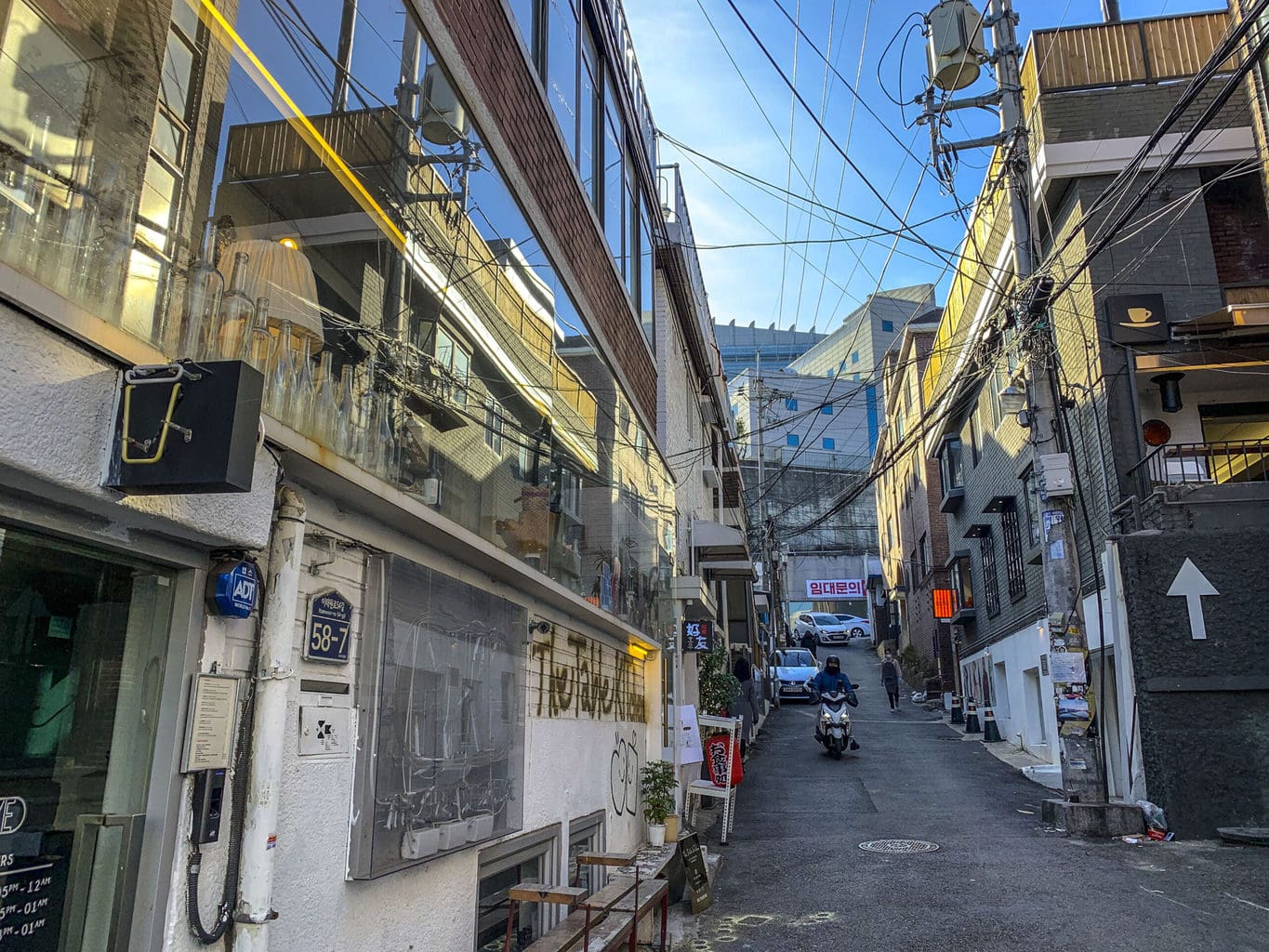
The area just before Itaewon is known as Hannam-dong (which is different from Hannam-si or city in Gyeonggi Province). it’s quite a large area that’s divided by the main road that goes to central Seoul. On the one side you’ll find many foreign embassies, a few nice eateries and the residences of the uber wealthy. Members of BTS and BIGBANG’s G-Dragon call Hannam-dong home.
The other side, close to Hangangjin Station and leading to Itaewon, is packed with coffee shops, trendy brunch places and cutesy boutique stores. You will begin your journey at Blue Bottle Coffee in the NINE ONE HANNAM building complex and then take the walking path behind the buildings where you’ll find cafes and restaurants of all kinds like Underyard (언더야드), One in a Million (원인어밀리언) and La FERME (라페름).
Venture on toward Leeum Museum and you’ll find even more brunch cafes like Summer Lane (써머레인) and Oasis (오아시스 한남점).
Eat with all the foreigners
Take any alley behind the KFC/Hamilton Shopping Centre and you’ll find a foodie’s paradise. While Itaewon is great for foods of all kinds, it’s not suggested to try authentic Korean food here. There are some great Korean restaurants in the area, but it is recommended to get authentic Korean elsewhere.
While some of the pubs here have been going for absolute ages like Scrooge Pub or The Wolfhound and some restaurants have become staples and are mentioned below, the dining culture is tumultuous and the restaurants change along with the trends. This is why we don’t really mention a complete list of places to eat in Itaewon. Your best option is to walk around the area and follow the crowds. Or ask an expat/Korean friend what the most popular eatery is on that day.
A few years back, Mexican-Korean fusion restaurant, Vatos, was introduced in Itaewon. When it first opened, it was so busy that you had to reserve a month in advance. While the crowds have faded, the restaurant is still as popular as ever with franchises opening up all over the city. The theme is “Urban Tacos”, where you can select Mexican classics with a Korean twist, like their famous kimchi carnitas fries or galbi short rib tacos.
You can even test out authentic South African food like lamb potjie (stew) and biltong (beef jerky) at the ever busy Braai Republic. Halal Korean foods are also on offer in Itaewon, the most well-rated being EID. Halal samgaetang (ginseng chicken broth)? Check! Kervan Turkish restaurant and Petra restaurant are also good Halal options. Johnny Dumpling is also a staple Chinese dumpling house that is really popular and has been around for ages.
Go clubbing to EDM music
Itaewon is also known for its bustling and often debaucherous nightlife, especially on weekends so this is one of the best places to visit and things to do in Seoul at night. You’ll find everything from jazz to EDM in Itaewon, definitely some of the best clubs in Seoul.
Dress to impress as you’ll feel like an outcast in backpacking clothes in some of the swankier establishments. Try out Soap, Venue/, Made, Boombar or Cakeshop for your fix of party vibes. They’re all pretty much in walking distance from each other, so you can have a fun night of club hopping until the sun comes up.
Those looking for less of a party atmosphere should head to All That Jazz. First opening its doors in 1976, this jazz institution offers soothing sounds in a relaxed interior for something a little different. You can also order drinks and a bite to eat while you watch the performance. No bookings needed, check out their performance calendar here.
Indulge in coffee and desserts
Koreans know how to whip up great desserts. From the ubiquitous Paris Baguette to the smaller mom-and-pop bakeries and delicatessens, the sweet and savoury treats are always delicious. You can also expect some fantastic dessert cafes in Itaewon to please your sweet tooth.
Check out international franchise with roots in Korea, Softtree Ice Cream for a melt in your mouth ice cream sandwich called “Mother Bread” and made with golden toasted bread and soft ice cream (softserve).
Passion 5 Patisserie is more like a dessert emporium than a bakery. Labeled as a “premium dessert café & gallery”, you’ll definitely find something to guzzle down amid the dessert frenzy and gallery atmosphere.
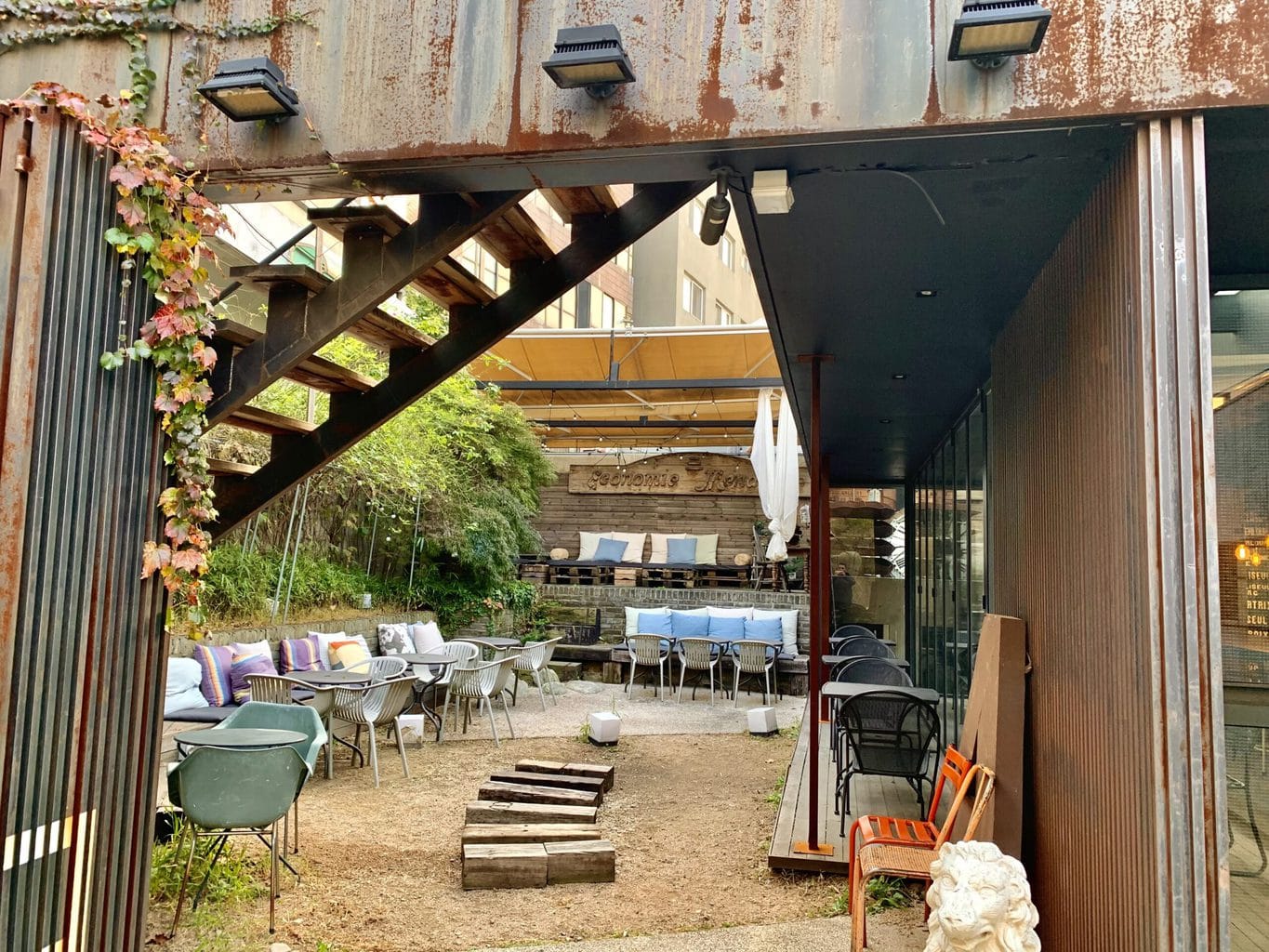
For a quirky yet tranquil setting, climb up to Ando Cafe on the rooftop complete with courtyard.
How to get to Itaewon – Itaewon Station (이태원), line 6 (Brown) – take any exit, but you will most likely be taking exit 1 to get to most of the restaurants up on the hill. You’ll come out at the Hamilton Hotel and shopping Centre.
How to get to Hannam – Hangangjin (한강진역) exit 1 – to get to the Leeum Samsung Art Center. If you go down the hill it is about a 10-15min walk to the main street in Hannam or a 3min bus ride.
Explore Korea’s cultural & military artifacts
The National Museum of Korea is huge, in fact, it’s the largest museum in Korea! But more than its impressive scale, it’s what’s inside that will wow you most. The Museum houses Korean cultural assets from its ancient beginnings right up to the modern era.
You can browse the massive collection of relics (around 15,000) to get a peek into Korea’s tumultuous past, yet beyond the artefacts the Museum also hosts an array of wonderful educational programs and cultural events.
There are three different floors to explore. Floor 1 is home to the Prehistoric and Ancient History Gallery, floor 2 is the Calligraphy and Painting Gallery and the 3rd floor has the Sculpture and Crafts Gallery. There are also artefacts from throughout Southeast and Central Asia including Indonesia, China, Japan and more. And the best part, entrance is free for the permanent exhibitions.
Find out about the latest exhibitions from their website.
How to get to the National Museum of Korea: Ichon Station (이촌역) line 4 (light blue) & Gyeongui-Jungang (turquoise) exit 2. The subway station is connected to the museum through an underpass called Bakmulgwan Nadeul-gil or Moving Museum.
Visit the spectacular Leeum Art Museum
If you alite at the station before Itaewon, called Hangangjin, you will be in walking distance of the epic Leeum Art Museum in Seoul, run by the Samsung Cultural Foundation. The building itself is a marvel and is comprised of the first museum, designed by Swiss architect Mario Botta, the second museum by French architect Jean Nouvel and the Samsung Child Education & Culture Center designed by Dutch architect Rem Koolhaas. The museums house contemporary, as well as traditional Korean pieces and is one of the top artistic Seoul tourist attractions.
Explore the craft beer scene in Haebangchon
A little way passed Itaewon and around the hill is trendy Haebangchon or HBC. HBC is a continuation of the multi-cultural aspect of the area, yet it is quainter and has more of a residential feel. There are craft beers hubs, cafes and restaurants along the street to cater to all tastes. It has more of a European than US flare about it.
There are two trendy areas to visit in HBC. The first is when walking from Noksapyeong Station, exit 2. Walk a few 100m and you’ll see a stack of brown kimchi pots. Take the street on your left at the kimchi pots and you’ll wind up at a road of cafes and drinking holes for expats. If you cross the road (either taking the underground tunnel or over the bridge a little further down the road) there are numerous hipster hubs to visit.
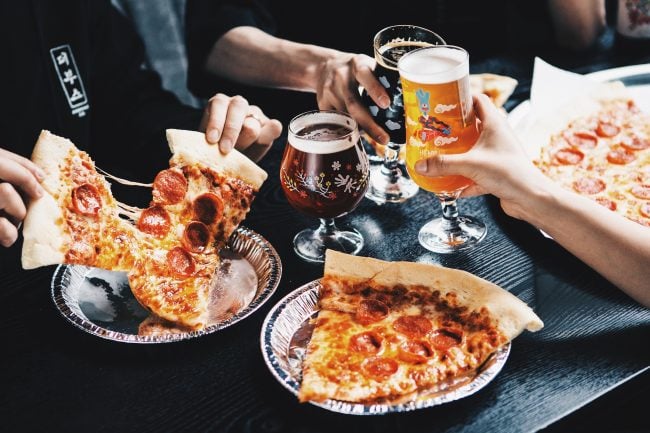
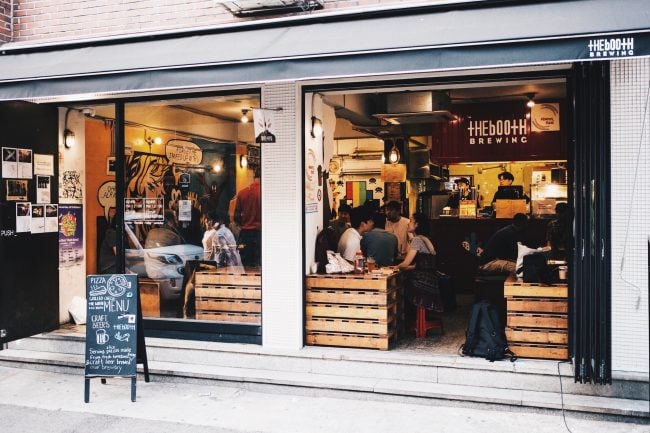
Trailblazer in the Korean craft beer industry, Craftworks Taphouse, has unfortunatelt closed down, but there are a few other hipper joints to have some beer. Magpie Brewshop and the Booth’s “hipster ale” are two more fantastic options for authentic craft beers. You can even take a brewing or tasting class at Magpie. California Kitchen & Craft Pub has an extensive list of local and international brews in the bottle and on tap if you’re interested in sampling a variety of beer.
How to get to Haebongchon – Noksapyeong Station (녹사평역) line 6 (Brown) – exit 2 and continue walking up the hill, veer left at the kimchi pots to get to the main strip at HBC.
Things to do in Hongdae and Sinchon
The north-eastern part of Seoul is home to all things artsy. If you want to make it in the art world in Korea, including architecture, then Hongik University is the top university of choice. The area, an amalgamation of Hongik and the university (daehakyo), is called Hongdae.
It’s a the best place to visit in Seoul to find graffiti-lined walls, students expressing themselves through arts of all forms and hipster cafes. Just like Itaewon, there are too many places to visit in Hongdae to fit in this post.
Shop at Hongdae Walking Street
Although you can come here at any time, Hongdae Street is best visited at or just after dusk and is therefore one of the obvious choice of things to do in Seoul at night.
There are two main shopping areas in Hongdae (other than the large department store called Y’Z Park at exit 8 Hongdae Station). Take exits 8 or 9 at Hongdae Station and push through the crowds until you get to the central hub called Hongdae Walking Street (in red below). This area is filled with restaurants, pubs, clothing stores of all kind and frequent performances.
If you cross the road you’ll find the still busy yet more boutique shopping lane called Hongdae Shopping Street. Here you’ll find indie clothing brands selling their wear. It’s an eclectic and electric vibe as you pass all the original stores and unique individuals.
If you’re visiting Seoul between March and November, and happen to be in Hongdae on a Saturday between 1-6pm you should definitely visit the HongDaeAp Freemarket. You will not find any major or international brands here as this market focuses solely on the entrepreneurial spirit of the local artists. You’ll find all sorts of local goodies for yourself or to take as a gift for others at home. The market is located at Hongik University Playground Park. For more information, check this facebook page.
Sing your heart out at Luxury Su Noraebang (karaoke)
Karaoke one of the top things to do in Seoul for a unique cultural experience – whether it’s with friends, family, or just to practice by yourself. Unlike the West, where you usually have to stand on a stage in front of a host of strangers, karaoke is a private affair in Korea to be had with friends.
The room is known as a noraebang (노래방) or “singing room” and is hired out for a set amount of time at a set price (i.e. you do not pay per person but rather per room). Noraebang come in all forms from the bare-bones couch and sound system with TV to the full-on deluxe experience with multiple screens, leather sofas and instruments.
A room can range anywhere between US$5-$20 for an hour depending on how luxe it is and in which district it is. If you sing well, you may be rewarded with additional time, you’ll know because the timer will spontaneously increase.
While most of the songs are K-pop or old school Korean “Trot” ballads, there are many foreign picks from Japanese and Chinese to Western standards. You can also purchase drinks and sometimes even snacks while you sing the night away.
There are plenty of noraebang in Seoul, but the most well-known is Luxury Su Noraebang (수 노래방) where you can sing to your favourite tunes looking out over an open glass window into the crowds of Hongdae. It’s also fairly close to gallery, theater and boutique store Sang Sang Madang. Check their gallery here to see what it’s all about.
Tip: Korean culture is far from stagnant, where the night progresses through several different places. If you spend the night partying with a Korean you’ll spend the night jumping from pre-drinks to dinner to club to noraebang to a cafe and beyond. You will usually end up at a noraebang when enough soju gives you the confidence to sing in front of strangers.
Eat a waffle with a sheep
Hongdae has lost of hipster cafes but perhaps the most interesting and unique things to do in Seoul features actual sheep! Thanks Nature Cafe is down some stairs just off the road leading to Hongik University. They serve a mean waffle and fairly good coffee. While you wait for your food you can frolic with your fluffy friend, even posing for a selfie.
Look out for graffiti
There is an entire alley dedicated to graffiti art in Hongdae, aptly named Hongdae Mural Street or Alley (홍대벽화거리) and enjoying this type of urban expression is one of the top things to do in Seoul because it tells a lot about the undercurrents and thinking of the local youth.
You will find smatterings of graffiti around the area, but this small alley is devoted solely to the artfrom. It’s very close to the entrance to Hongik University. See our map above for directions.
Party in Hongdae
The energy in Hongdae is electric, particularly on weekend nights, when the streets come alive and the clubs get packed to the brim. The park, close to the university becomes an outdoor party, where it’s not uncommon to find boys breakdancing, silent headphone parties or any multitudes of great spontaneous activities. This is not a tourist one of the Seoul tourist attractions but one of the best ways to experience local life.
As Hongdae is the mecca of nightlife in Seoul, there are a pantheon of club choices. Rock out at Funky Funky (FF), Convent Pub (Freebird lounge) or GOGOS, have a VIP experience at Club Vera, or show your swag at Hip Hop clubs Cream, Madholic or Lux. There’s even more clubs in Hongdae to dance until the subway opens like Mama Gorilla, Club M2, Cocoon, Aura and MWG. If you’re looking for the best area to party in Seoul, this is it. It goes without saying that Hongdae is top if list of things to do in Seoul at night.
Insider tip: While drinking in public is legal in Korea, and you can purchase alcohol from any convenience store, it is frowned upon. So while you can join in the festivities in a place like Hongdae Park, you should not continue the party in the subway.
Families should visit Hongdae/Sinchon area during the day, as it can become quite chaotic at night. There is no shortage of coffee shops, eateries, and boutique stores.
Stroll around Sinchon’s university area
Sinchon is the station directly after Hongdae. There are two famous universities very close to Sinchon. Established by Methodist missionaries in 1886, Ewha Womans University is the largest female education facility in the world. One of the stand out features of a visit is the Ewha Campus College (ECC).
This impressive structure, designed by French architect Dominique Perrault, is Korea’s largest environmentally friendly underground campus facility and is absolutely Instagram-ready. The shopping at Ewha Fashion Street, around the entrance to Ewha (the area being called Edae), is also quite abundant for some Seoul sightseeing.
The second educational institute you can visit is Yonsei University, one of the three top institutions in Korea (the other two being Seoul National University and Korea University, forming the acronym SKY). Established in 1885 and seen as possibly the most prestigious university in Korea, Yonsei also makes for a great tourist attraction in Seoul because of its architectural adventure, based on the ivy league exteriors of Harvard, Cambridge or Oxford.
How to get to Hongdae University Area – Hongdae Station (홍대입구역) line 2 (green) – take exit 8 and walk straight up the road toward Hongik University for most of the action.
How to get to Sinchon Area – Sinchon Station (신촌역) line 2 (green) exit 7 or 8 to get to Hongdae.
How to get to Ewha and Yonsei – Ewha Womans Univ. Station (이대역) line 2 (green) exit 2 to get to Fashion Street or Ewha; Sinchon Station on the Gyeongui Line (which is on a railway and not the metro, therefore different from line 2 mentioned above) to get to either of the universities; Sinchon Station exit 2 or 3 and then a 25 min walk to Yonsei (taking a taxi is recommended).
Create illusions at the Trickeye Museum
The Trickeye Museum, which also has branches in Hong Kong and Singapore, all started in Seoul. This franchise is an immersive experience into 3D illusions and AR effects with big wall paintings and installations. The original Seoul branch is located in Mapo and can be booked online here.
Learn about love at the Love Museum
In the same building as the Trickeye Museum is the only adult-themed museum in Seoul – Love Museum. It weirdly combines sexual imagery and trick-eye pictures for an sensually unique experience. You will get to explore the history of sex in Korea from the Joseon Dynasty to the contemporary world. And it goes without saying that the museum is for adults only. Get your tickets here.
Fulfill your Hallyu fantasies at MBC World
For those riding the Hallyu wave, MBC World is a must-visit theme park that has 3 activity: M Zone (with holographic concerts & VR technology), C Zone (for K-drama lovers), and B Zone (for all things K-pop). Dance with 2NE1 or Psy or be transported to your favorite MBC K-drama. Get your tickets online here.
Make your own skincare products at VIC’s Lab
Korea is well known as the cosmetic mecca of the world. Major brands like Skinfood, Missha and Sulwhasoo flood the street of Seoul and the typical Korean person’s beauty regime is extensive. So why not learn how to make your own skincare products with VIC’S LAB? This cutesy cosmetics store will teach you how to create toner, serum and lip balm. But beyond that, they’ll also give you tips on how to get your face glowing like a Kpopstar. Book your experience here.
Make designer rings in Hongdae
Here is a fun way to gain a new skill as well as getting the perfect souvenir for a loved one back home. At Hongdae Rings Village you will get to learn how to design and craft your own ring. Create a personalised gift for a loved one with friendly professionals and then splurge a little extra by embellishing your ring with jewels or other features. Design your own rings with this workshop in Hongdae.
Explore virtual reality at VRIGHT
If you love VR or have never stepped inside the world of virtual reality, then this is the place to visit. VRIGHT is a VR theme park in Sinchon near Konkuk University with three levels of interactive gaming goodness. The staff are also really helpful and speak great English, so traveling families can make this a pitstop if they’re near Hongik University or Ewha Woman’s University. Book your VR experience online here.
Best things to do in Myeongdong, in Central Seoul
Central Seoul is (another) shopping destination in Seoul and is fun for the whole family, if your family likes to walk, shop and embrace crowds that is. Whether it’s snowing or the sun is out, during the day or the night, Myeongdong will be packed. There are stores from just about any brand, as well as underground arcades and the usual luxury department stores.
Tip: There are guides walking around Myeongdong in red jackets and cowboy hats (not to be confused with Salvation Army troopers who also wear red). They speak several languages, including English, and are very friendly and willing to help. Grab a map from them or ask where the nearest toilet is or what the best restaurants are. They’re super helpful. They walk around, but are usually in the main cross section near Myeongdong Theater.
Fulfill all your skincare needs at Myeongdong Shopping Street
Shopping in Seoul is basically a national sport and lots of visitors come to the city just to shop. But walking around Myeongdong is one of the top things to do in Seoul, even if you’re not into shopping, as the people watching is fantastic.
You’ll find wide-eyed Japanese tourists dressed in cosplay, ice creams as long as your arm (32cm!), magical street food and just about every person snapping away on their cameras. If you’re lucky you’ll catch a cultural performance or Kpop group singing to the masses.
Most first-time visitors to Seoul will most likely arrive from Myeongdong Station exit 5 or 6 near the biggest Uniqlo store in Korea. It’s also a good introduction to the seemingly endless shops in the district. If you do end up purchasing too much near the entrance, it’s advisable to go back down into the subway and drop your items in the storage facilities near the ticket vending machines. You will be walking a lot.
Myeongdong has basically every big international and local brand you can imagine. Pop into any store that catches your attention to browse or buy. Myeongdong is also known to be skincare central, so this is the place to purchase any skincare products you need. Remember that you can try to get a deal in the skincare stores, so try ask for a discount especially if you’re buying in bulk.
Don’t just stick to the main roads, explore the alleyways and even the second, third or basement levels of buildings that seem to have nothing inside. You’ll be surprised at what you may find.
There are also department stores scattered around the area, like high-end Lotte Department Store or hip Noon Square. There are also a host of money changers and tax redemption booths. You can easily spend a full day here, but remember to budget, the sales and abundance of products can be enticing! If you’re wondering where to go in Seoul for shopping, this would be my first recommendation, over Dongdaemun, as it has more known brands and a multi-cultural vibe.
Myeongdong also has coffee shops, eateries and convenience stores spread out throughout the area, so you don’t need to worry about food. Although a bottle of water for hydration is recommended. And comfy shoes.
Insider tip: The money changers on the outskirts give more affordable rates. My favourite place to exchange cash is in the map. It’s basically close to the Avanuel and Lotte Department Stores. If you are across the road from and facing the department stores, you will turn left and take the slipway left into the alleyway. See our map above for more details.
Taste great street food at Myeongdong Night Market
Wondering what to do in Seoul if you are hungry? Head to Myeongdong. Food is one of the best attractions in Seoul and while there are eateries, cafes and street stalls everywhere some areas have them in higher numbers and allow you to compare and sample in smaller amounts.
There are always a few food street vendors around Myeongdong, but the best time to go is on Friday and Saturday nights where there are many more vendors trying to catch the weekend crowd. Try anything that tickles your taste buds, but be on the lookout for meat skewers, fried tteok (Korean rice cake) and mandu (dumplings) or odeng (fish cake) on a stick.
After a walking lunch, go grab a rose gelato at Milky Bee. There are several location scattered around Myeongdong to grab a taste of the beautiful and delicious creation.
You should also make your way to LaLa Mart, a Korean snack emporium located one block down from exit 8 Myeongdong station. You can purchase all your favourite Korean treats here and even try some new ones.
See a show at Myeongdong Theater or watch Nanta
Previously known as the National Theater of Korea (which is now at the base of Namsan in Jung-gu), Myeongdong Theater was once the cultural and artistic centre of Korea. After a lengthy 3-year renovation, it opened its doors once more in 2009. There are many performances carried out daily in several languages, check the schedule here to see what’s happening when you visit.
One of the most unusual and unique things to see in Seoul is the cultural non-verbal cuisine performance extravaganza Nanta. It is an explosive musical with food at the forefront. It combines traditional samul nori with music and comedy. Because there are no words it caters to a wide audience. It is preferable to book your ticket before you go. Book online here. It’s fun for everyone, young and old.
Following the trend and success of Nanta, another fun alternative and more contemporary show in Jongno called Bibap was created. The performance combines comedy, breakdancing, beatboxing and of course cooking, into another spectacular show. Kids love this show and when I was working in the area I often saw school kids waiting in line on a field trip to see the show. You can book the show in advance online here.
Visit the Roman Catholic Myeongdong Cathedral
A fantastic religious and architectural site in the area is the Myeongdong Cathedral, a beautiful church for the Archdiocese of Seoul and the birthplace of Catholicism in Korea. It is a spacious working church, which you can enter for free in between the scheduled mass. See the schedule online here.
Things to do in Namdaemun
One station after Myeongdong on the same line (Hoehyeon) is one of the top Seoul attractions for tourists: Namdaemun market.
Ride or hike to the top of Namsan (N Seoul Tower)
Once you are done shopping, head back to Myeongdong station, go to the opposite side of the road to exit 3 and follow the path to the right of the Pacific Hotel. After about a 10min walk you will reach the cable car that goes up to N Seoul Tower. It is fairly cheap, fast and usually runs all day from 10am to 11pm. A return ticket is around US$8. For the latest pricing, discounts, and bookings we recommend clicking here.
There are also free options to walk up to N Seoul Tower through a windy road that goes around the mountain or the steeper, but quicker set of stairs that lead to the top. The flat loop around the mountain is a fun and refreshing walk for families with babies or lovers looking for romance, especially in Spring when the cherry blossoms line the walking path.
Joggers, strollers and groups of locals and tourists love this circular walk as it is a nice escape from the bustle below. Look out for the public outdoor gyms at random intervals around the mountain if you’re a fitness junkie.
There are also eco-friendly public buses that run regularly up and down the mountain. For the full routes visit this website. At the top you will want to ascend N Seoul Tower, which provides a 360 panoramic view of the entire city. It’s a good option to go there at the start of your trip to understand the layout of the city a bit more. It’s also one of the top places to visit in Seoul and tourist attractions.
There are several options to book your ticket, either at the location or online, but we would highly recommend reserving a complete night tour of Seoul which takes you right up to the top of Namsan, among various other great places in Seoul. Book your tour online here.
The entrance to the observation deck can also be booked online by clicking here There are various combos to choose from beyond just the observation deck, like a meal at N Burger or checking out Hello Kitty Island.
How to get to Myeongdong shopping complex – Myeong-dong station (명동역) line 4 (light blue) – take exit 5 or 6 to get to the main shopping area. Exit 3 to get to the Namsan cable car.
Explore the lesser visited Namsangol Hanok Village
So you’ve visited Bukchon, or you went and it was absolutely packed with people. So where do you go to visit some of Seoul’s best traditional houses? Your answer is Namsangol Hanok Village.
The Village was opened in 1998 with 5 restored hanok houses, a pavilion, traditional garden and a performance arts stage. It also has a time capsule plaza, where a time capsule was buried in 1994, Seoul’s 600 Year Anniversary. Try to be around in 2394 when it’s scheduled to be reopened.
As it’s overshadowed by Namsan Mountain, it gives the Village a touch of nature and load of tranquility. It’s the perfect spot to take a leisurely stroll in hanbok. The Village is also educational as the houses and furniture are arranged to teach visitors what it was like living in hanok in the past, from aristocrats to peasants.
One of the houses, Yoon’s Tearoom named after the owner Yoon-ssi of Okin-dong, has been transformed into a tearoom where you can drink some traditional tea. There are also a wide variety of traditional programs from hanji (traditional Korean paper) to hangeul (Korean writing system) and even a herbal medicine experience. As well as performances and traditional games like yutnori (traditional board game).
Closed Mondays.
How to get to Namsangol Hanok Village: Chungmuro Station (충무로역) line 3 (orange) & 4 (light blue) exit 3 or 4. Walk along the road between oh!zemidong (Chungmuro Media Center) and Maeil Business Newspaper Building for roughly 150m.
Explore a traditional market at the Great South Gate (Namdaemun market)
This is probably the best place to go souvenir shopping in Seoul, unlike the traditional souvenirs sold at Insadong, Namdaemun has a wider variety at very cheap prices. Especially if you want to make bulk purchases. You can find anything here from jewelry to fashion to fresh produce.
Visit the camera market if you’re looking to purchase electronics and don’t have time to visit Yongsan Electronic Market. They have a wide selection there including new and vintage cameras at good prices. Make sure they can be operated in English. Take exit 5 at Hoehyeon station and walk all the way through the Namdaemun Market until you reach the main road.
One of the top things to do in Seoul for lovers of street food is to visit a pojangmacha (outdoor tented street food market). Navigate through the labyrinth of stalls and waves of tourists to the centre of the market and you’ll find some of the best street food in Korea.
Try the spicy tteokbokki (rice cake in chilli paste) paired with crunchy twigim (deep fried food) as a start. Wash it down with eomuk guk (fish cake soup) and possibly a bottle of soju if you’re feeling up to it.
How to get to Namdaemun market – Hoehyeon station (회현역) line 4 (light blue) for Namdaemun – take exit 5 and walk straight until you meet the entrance to Namdaemun market.
Best things to do in Gwangjin-gu, North-eastern Seoul
While the western side above the Han river does not have a lot of the most visited Seoul tourist attractions, there are some fantastic places to go if you want to experience Seoul like the locals.
See deer at Seoul Forest
One of the most beautiful green spaces in Seoul is the Ttukseom/Seoul Seup (forest) area. Not by any means a real forest, this man made eco-friendly area is a nice break from the chaos of the city centre. There are trees, bicycle rentals, rollerbladers, a skate park, sculptures and walking paths that lead up to and along the Han River.
And if that’s not enough, there are some really cute deer to check out. The street behind the twin towers at the back of the park is an up-and-coming trendy area with cafes, eateries, boutiques and bakeries.
How to get to Seoul Forest – Ttukseom Station (뚝섬역) line 2 (green), exit 8 or the Seoul Forest Station (서울숲역) on the Bundang line (yellow), exit 3 to get to Seoul Forest.
Taste gopjang (intestines) near Wangsimni and Hanyang
The area near Seoul Forest is a student area, but unlike Hongdae, it is a bit less artsy as the universities (Gonguk and Hanyang) are known for engineering and architecture based. The vibe is still great at both areas and it’s a fantastic way to experience local college life without the mass amounts of tourists.
Get off at Wangsimni station, near Hanyang to get a taste of gopjang (small intestines) if you’re into this delicious delicacy. Eating some intestines is definitely one of the most unusual things to do in Seoul. It is really chewy, but bursting with flavor. And just like any Korean restaurant, it comes with various side dishes. Remember to eat some chives with your gopchang as this will cut through the fatty flavor. Try Hwangso Gopchang (황소곱창) and Gopchang-Jo (곱창조) for two of the top restaurants in the area.
Hunting for sales at Enter 6 Mall
There is a large mall called Enter 6 right above Wangsimni station and another sister mall right across the road. They often hold events where you can find international brands dirt cheap. There is also a cinema, large golf driving range and a really nice way to experience “supermart” shopping at E-mart.
Insider tip: I would recommend getting out at Wangsimni station and exploring the area for an hour or so if you have the time, especially at exit 6 and beyond. I may be biased as I used to live here, but it really is a wonderful place to explore the culture out of the tourist belt. It’s a nice stop if you’re coming on the green line to or from Hongdae or Jamsil. It’s also where the green line emerges from under to over the ground, so the views, especially of the Han River are breathtaking.
How to get to Enter 6 and Hanyang University – Wangsimni Station (왕십리역) – Line 2 (green), Line 5 (purple), Gyeongui–Jungang Line (light blue), Bundang Line (yellow) – exit 6 for some culture or exit 12 for Enter 6 shopping mall.
Snap a selfie at Common Ground market
Getting off at Konkuk University Station (Kondae Ipgu) will bring you to a range of different opportunities to explore. There is a large Lotte Department store at exit 5, a sort of mini student Rodeo drive near exit 6 and a throng of bars and hipster eateries near exit 1.
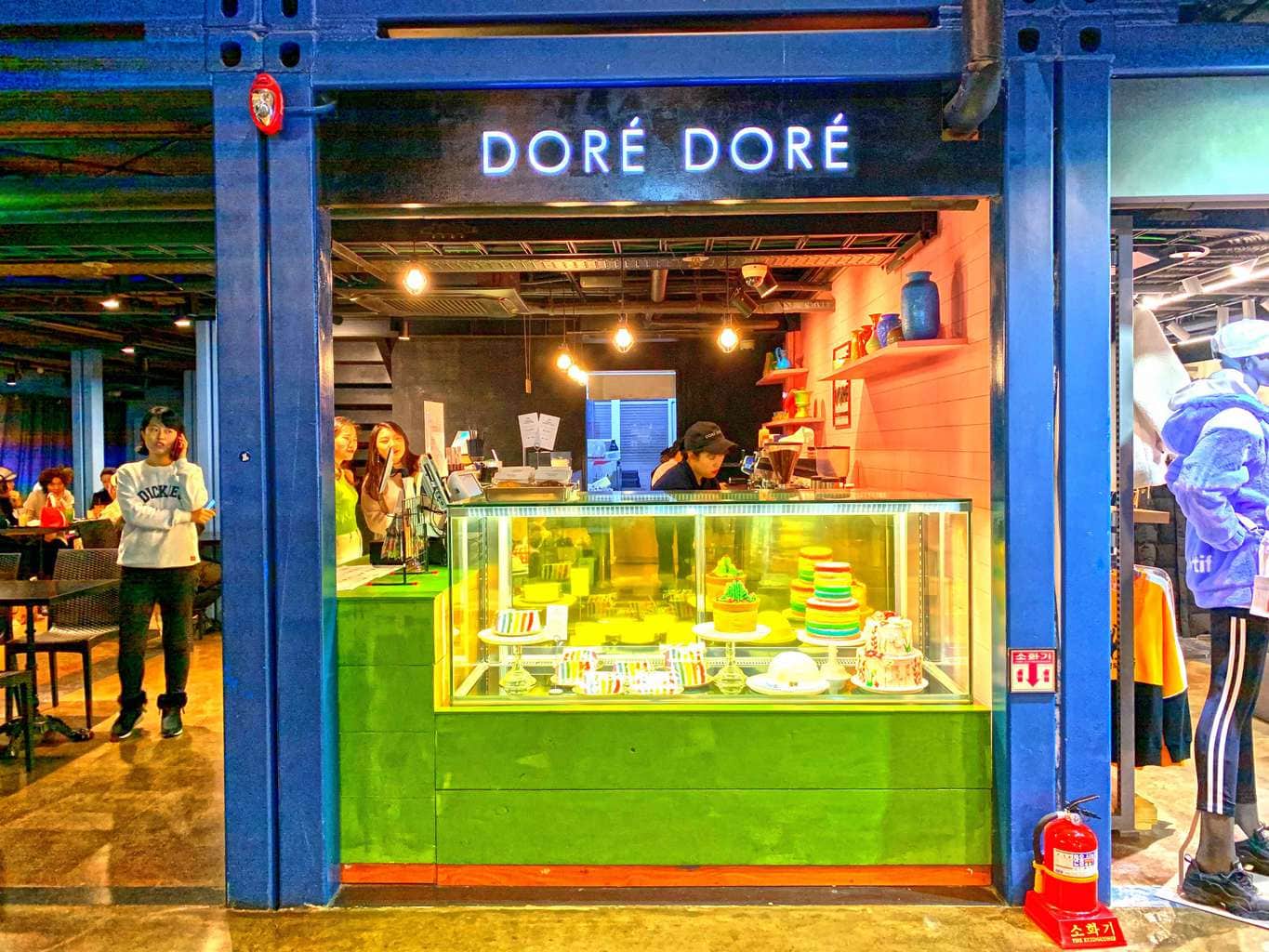
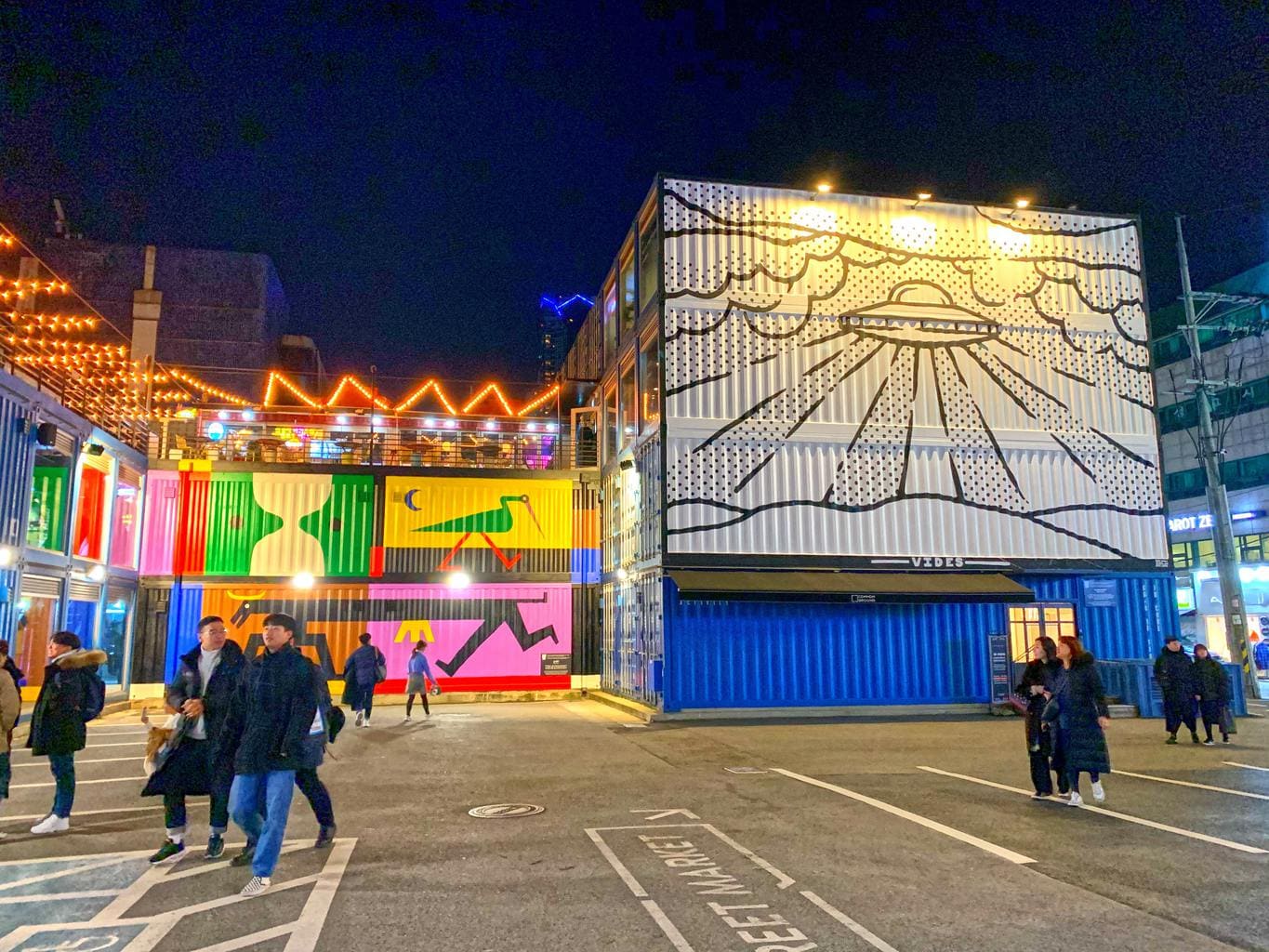
If you walk a few blocks from exit 6 you’ll stumble across one of the newest places to visit in Seoul, Common Ground, a complex made completely from blue shipping containers. It has a flea market atmosphere where you can find locally made boutique treats for the whole family and it is one of the most instagrammable spots in Seoul. Plan your insta-journey of this unique shopping complex by seeing more photos here.
Eat some lamb
Lamb lovers should definitely visit Lamb Skewer Street (양꼬치 거리 – Yang Kkochi Kori). Due to its smell, lamb is not a Korean’s first pick, but it is gaining popularity around Seoul and other bigger cities in Korea. Lamb Skewer Street is definitely the place to go for this cut of meat.
Take exit 5 and walk down the road. Instead of crossing the street to the Lotte Department Store. Turn right in 2 blocks and start your search out of numerous options. Maehwa Banjeom (매화반점) serves a signature lamb skewer, or yangkkochi, that is deliciously tasty.
How to get to Konkuk University Area – Konkuk University Station (건대입구역) line 2 (green) and 7 (olive green) – exit 5, Lotte Department store; exit 6 outdoor shopping and cafe area and Common Ground; exit 1 bars, clubs and eateries.
Experience Brooklyn in Seoul at gentrified Seongsu
The final stop you should look at exploring before crossing the Han River onto Jamsil and COEX is Seongsu. This is a bit off the generic tourist attraction path and onto one of the hippest places to go in Seoul.
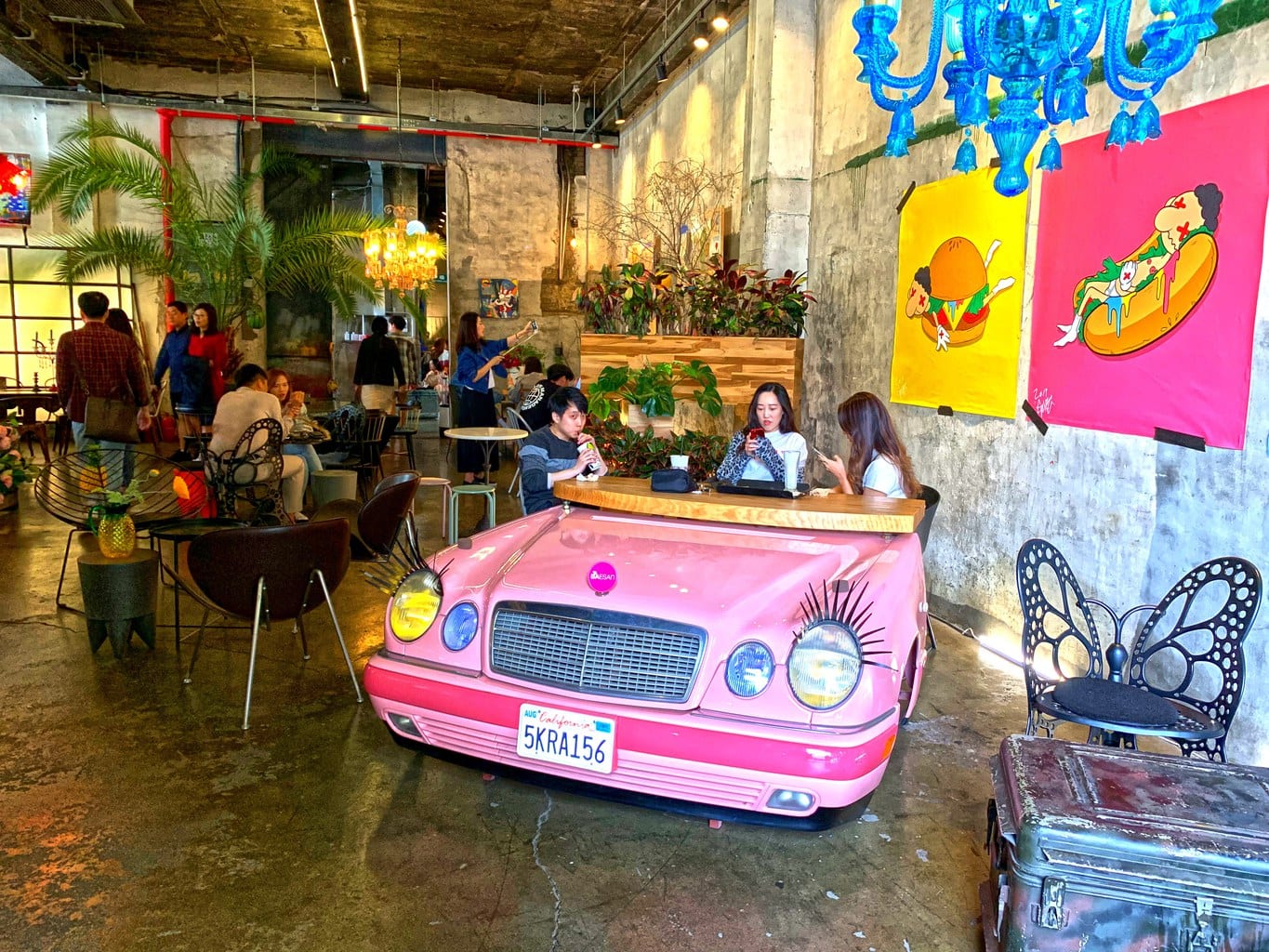
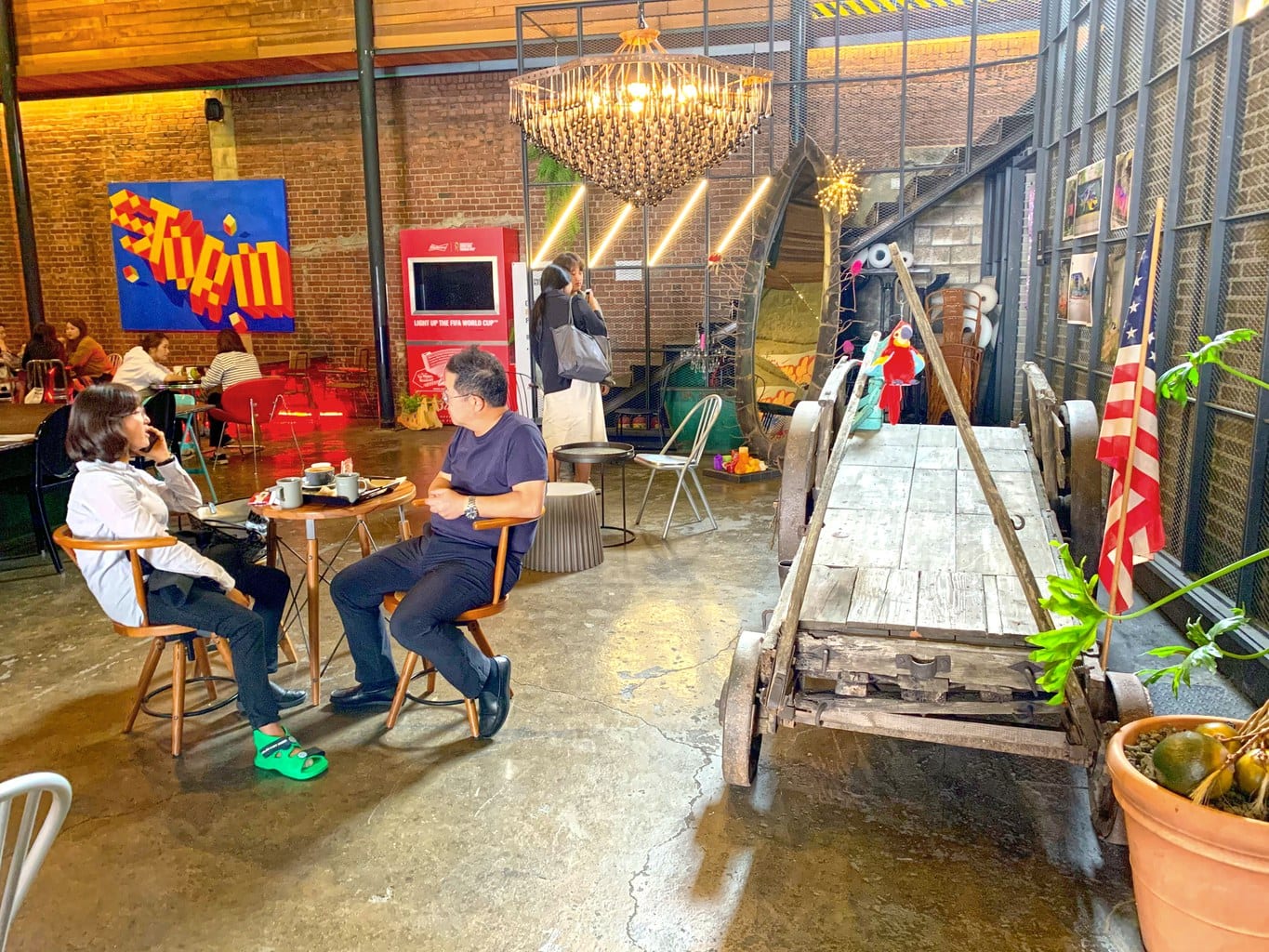
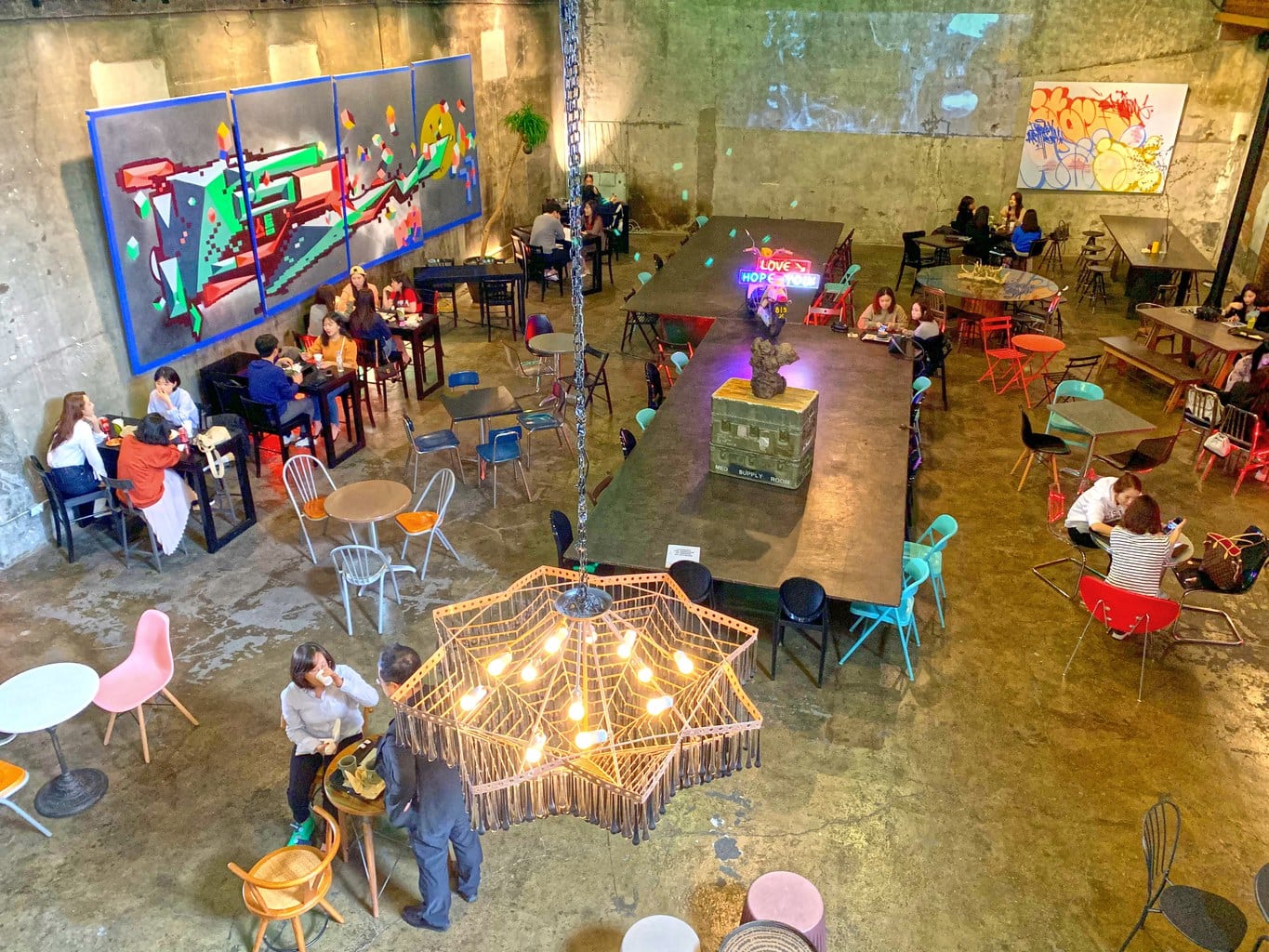
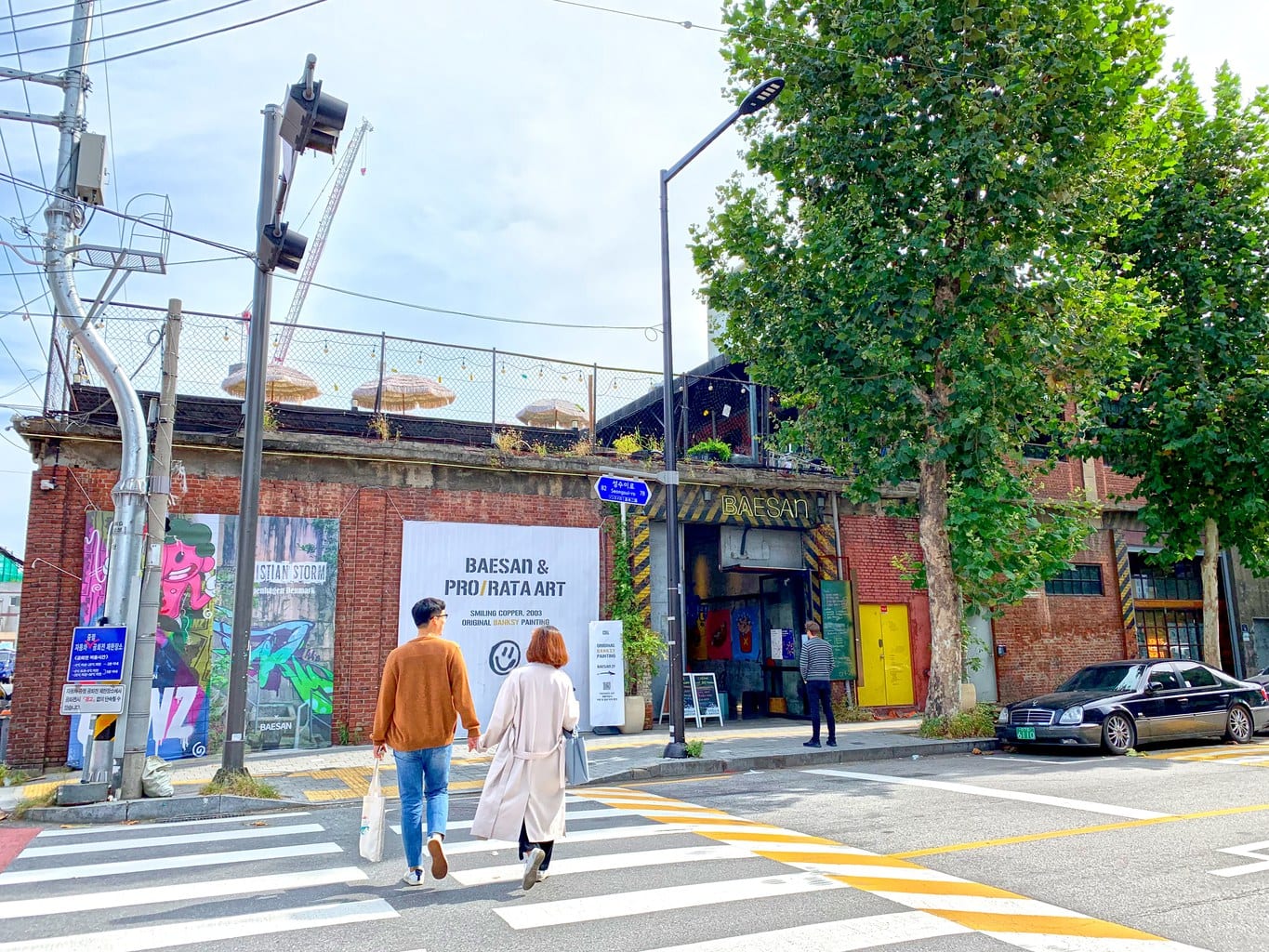
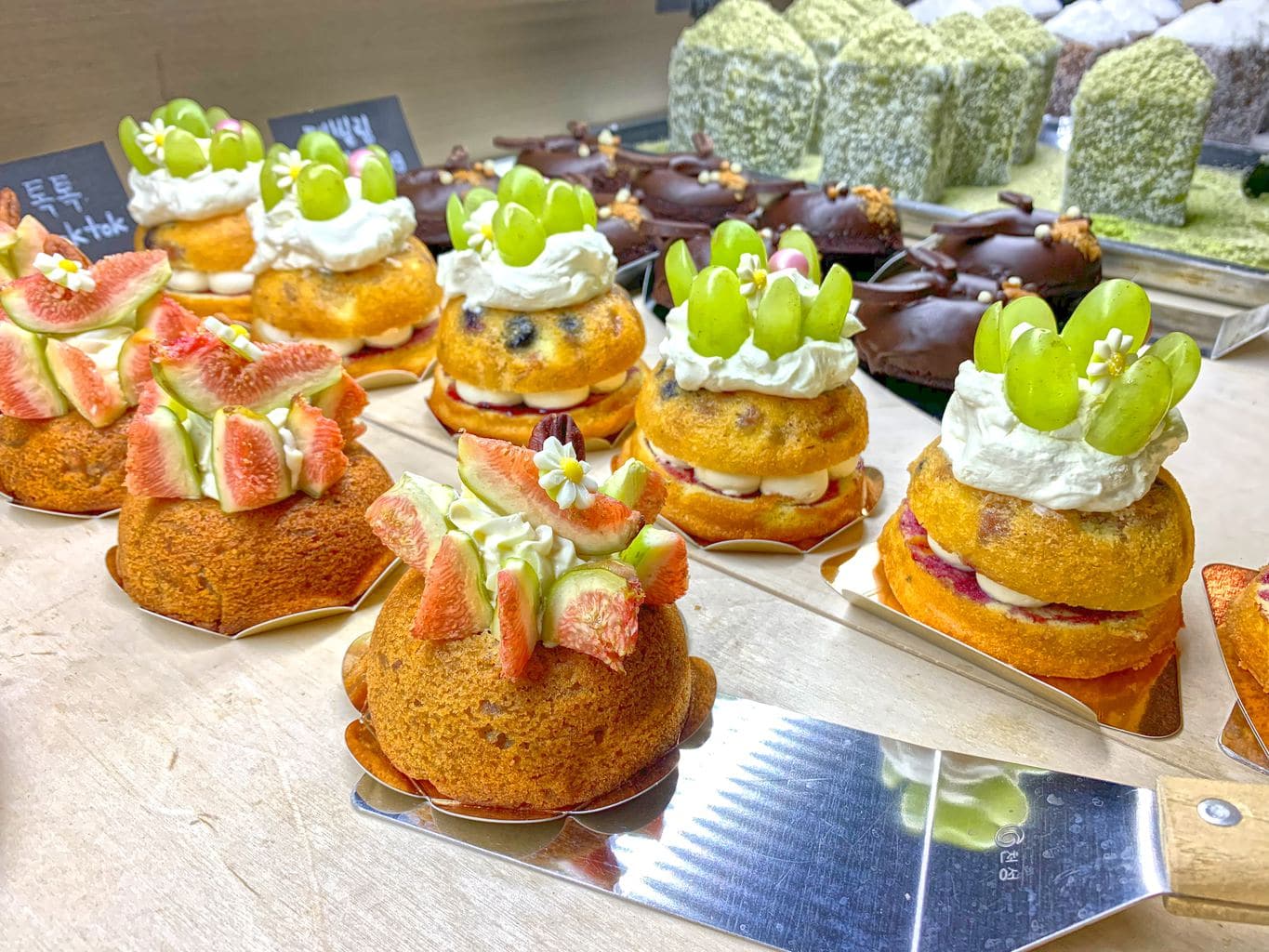
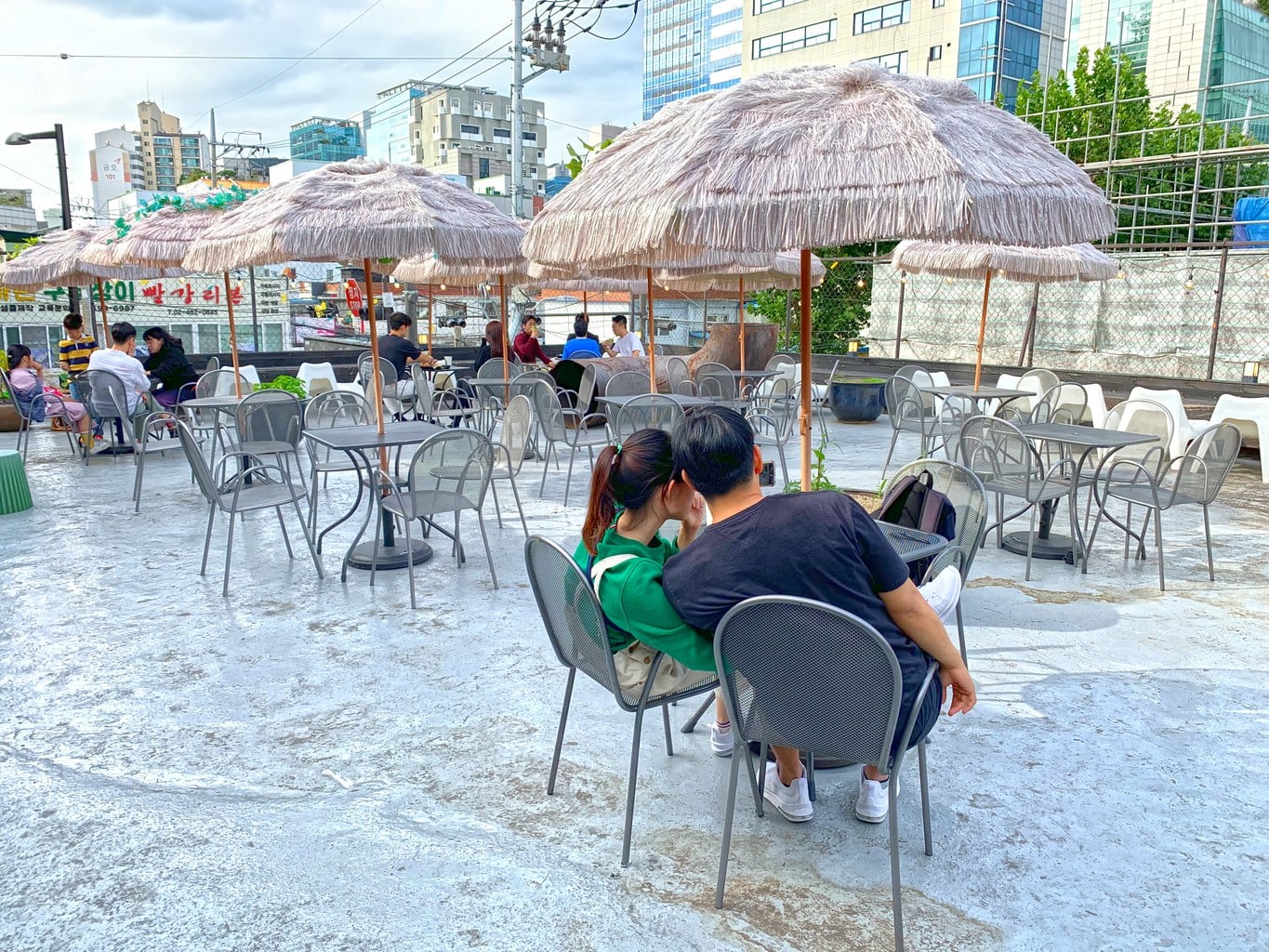
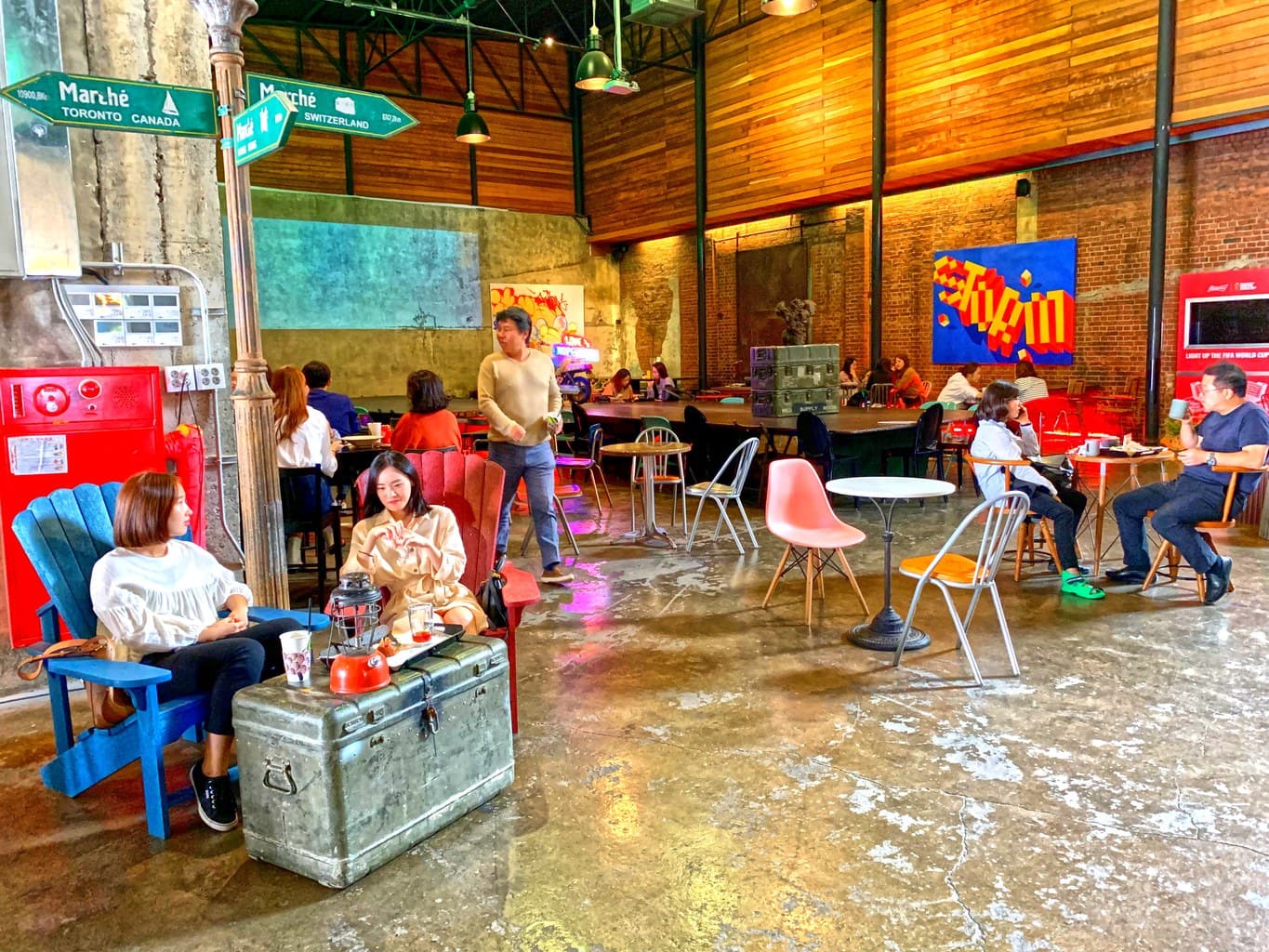
The area itself is nothing to write home about, but if you know where to go you will find some of the best gentrified warehouse-turned-cafes. Think industrial grunge meets hipster Brooklyn-esque.
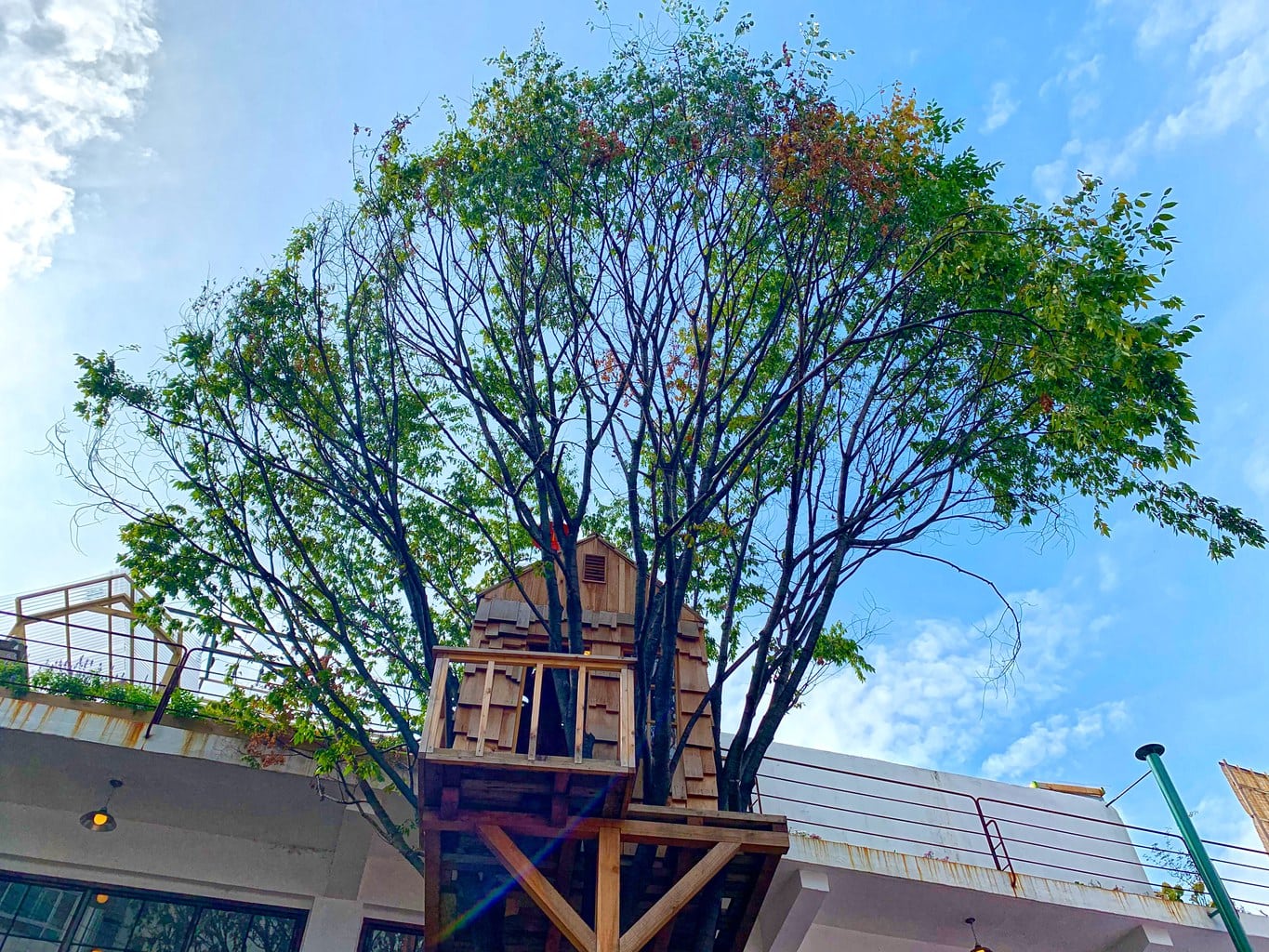
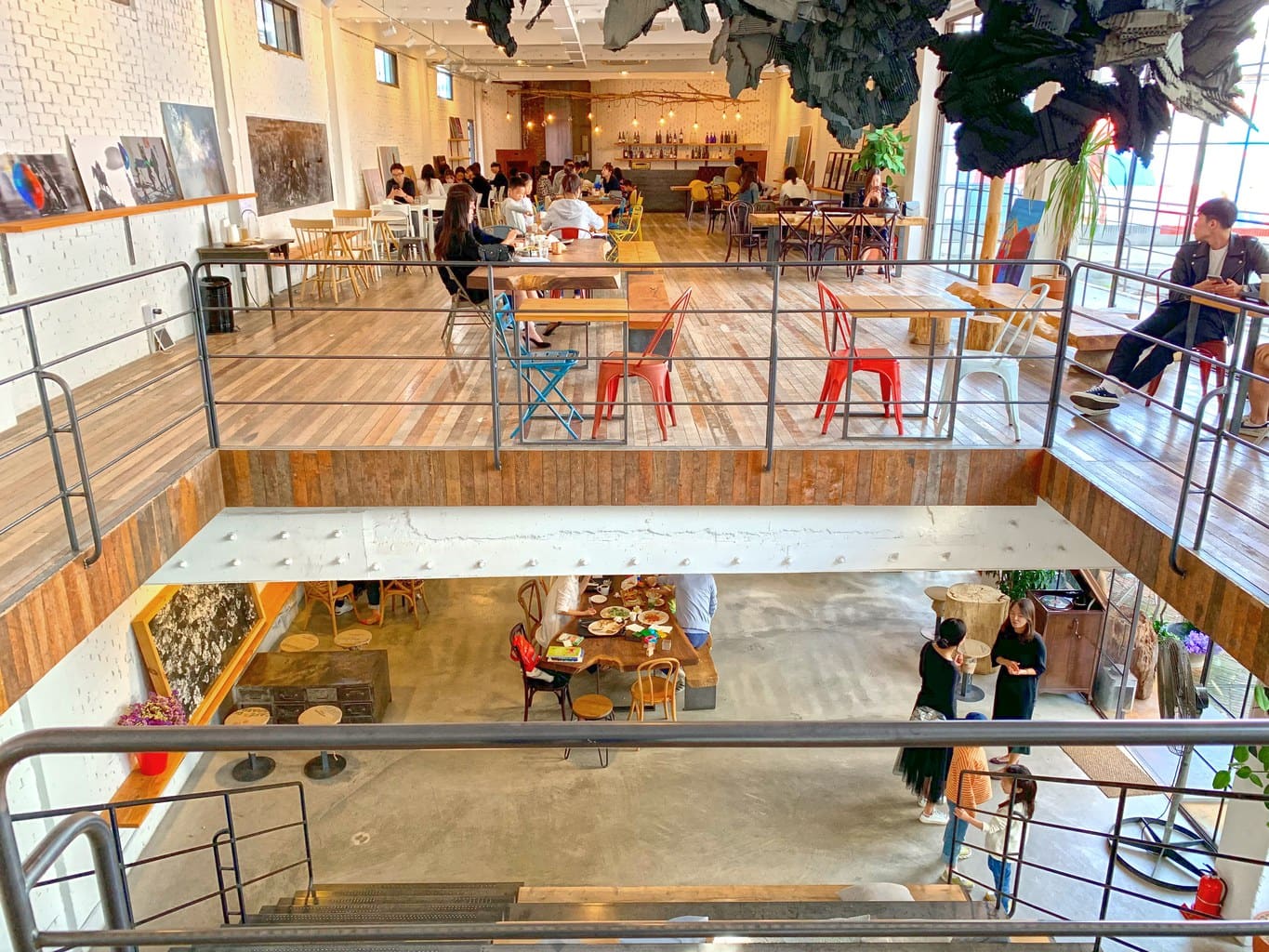
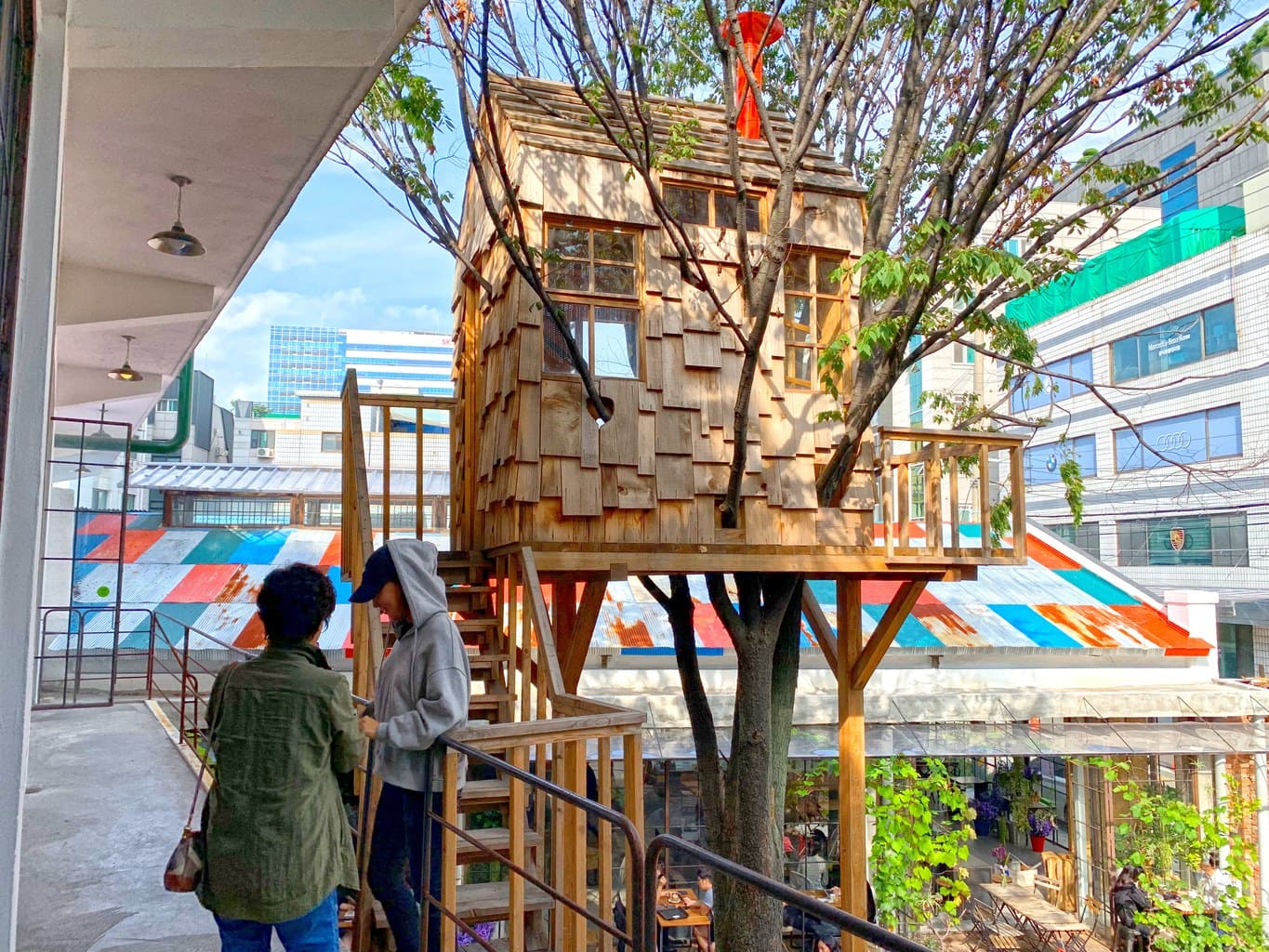
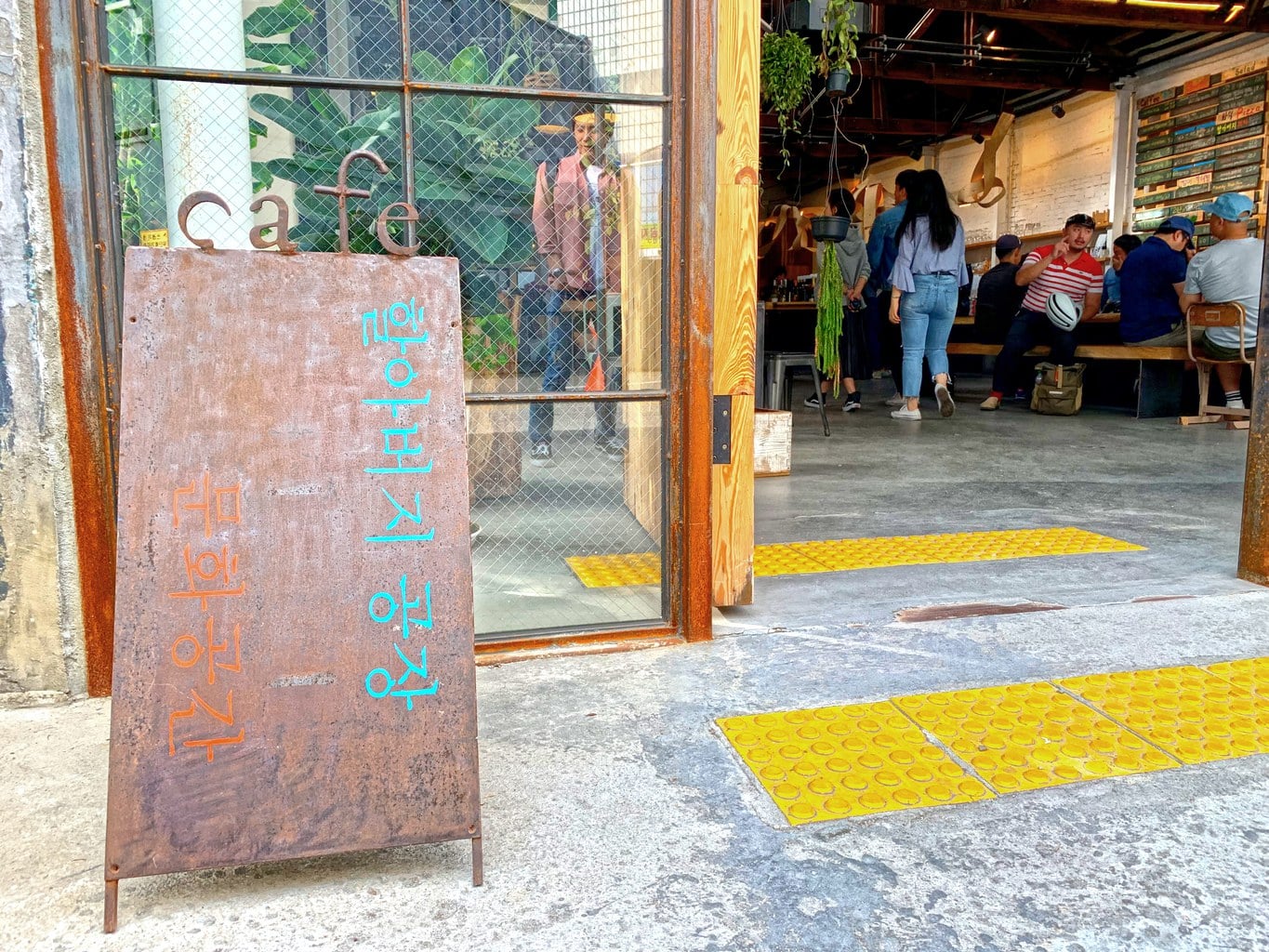
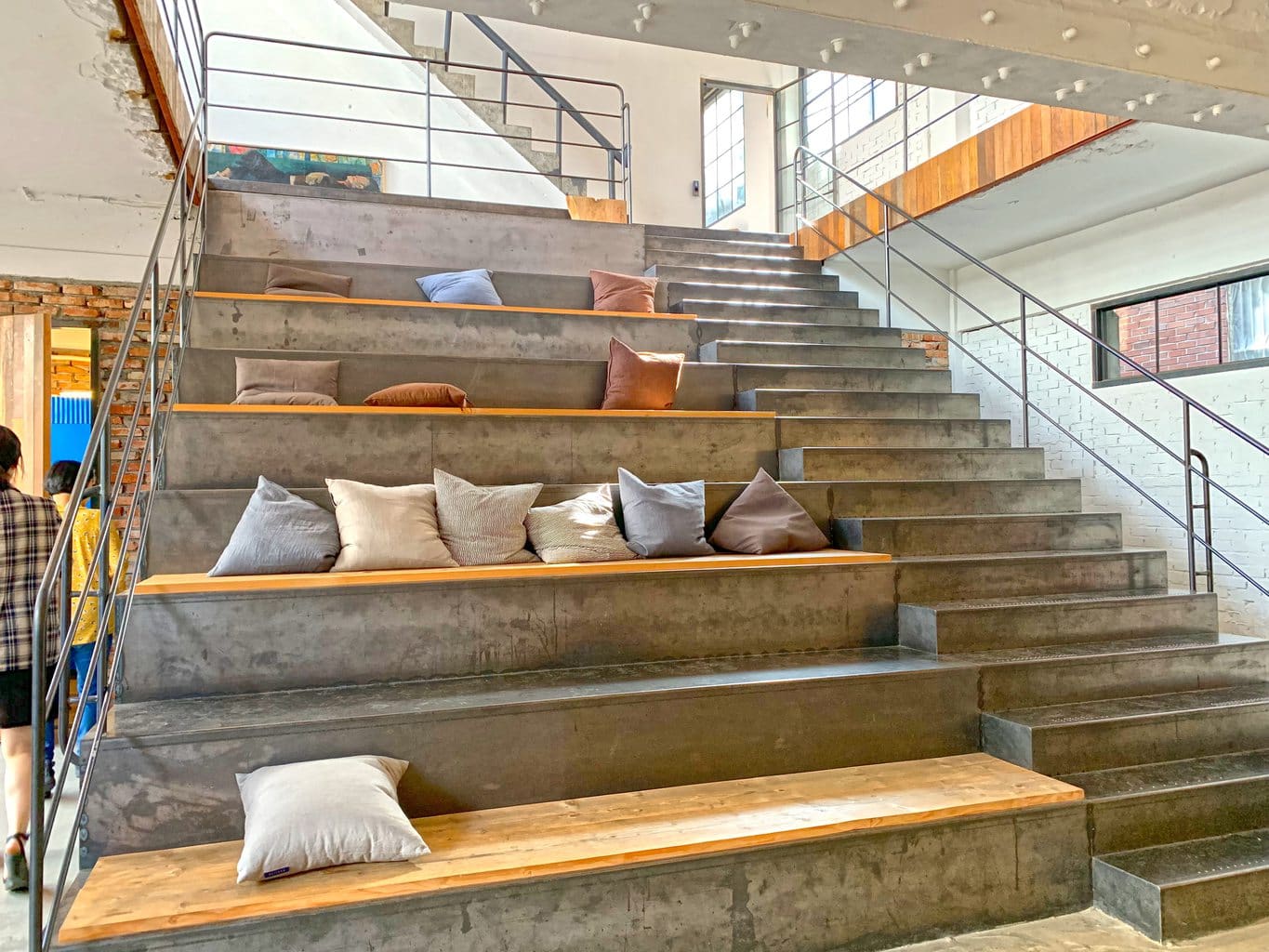
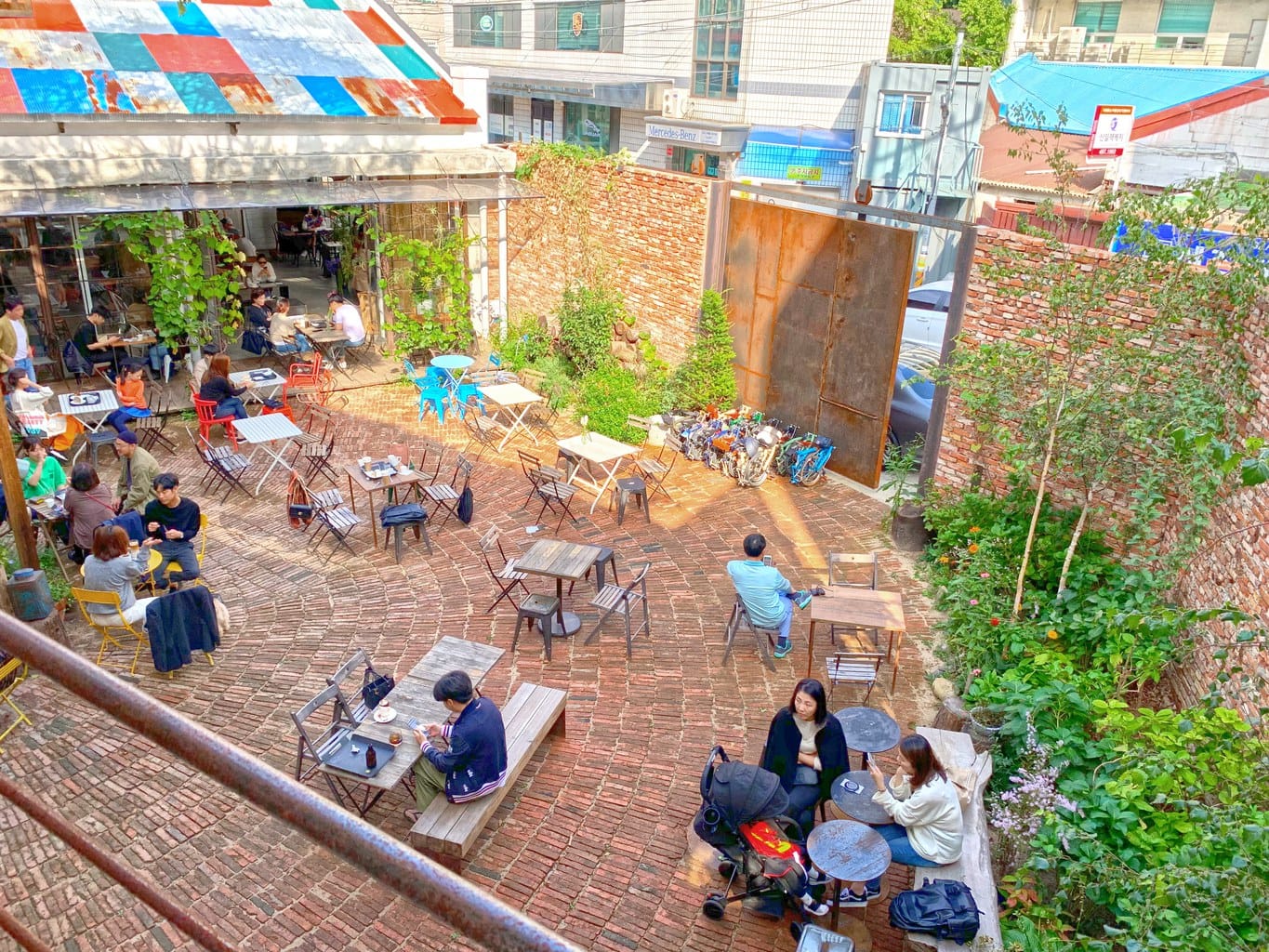
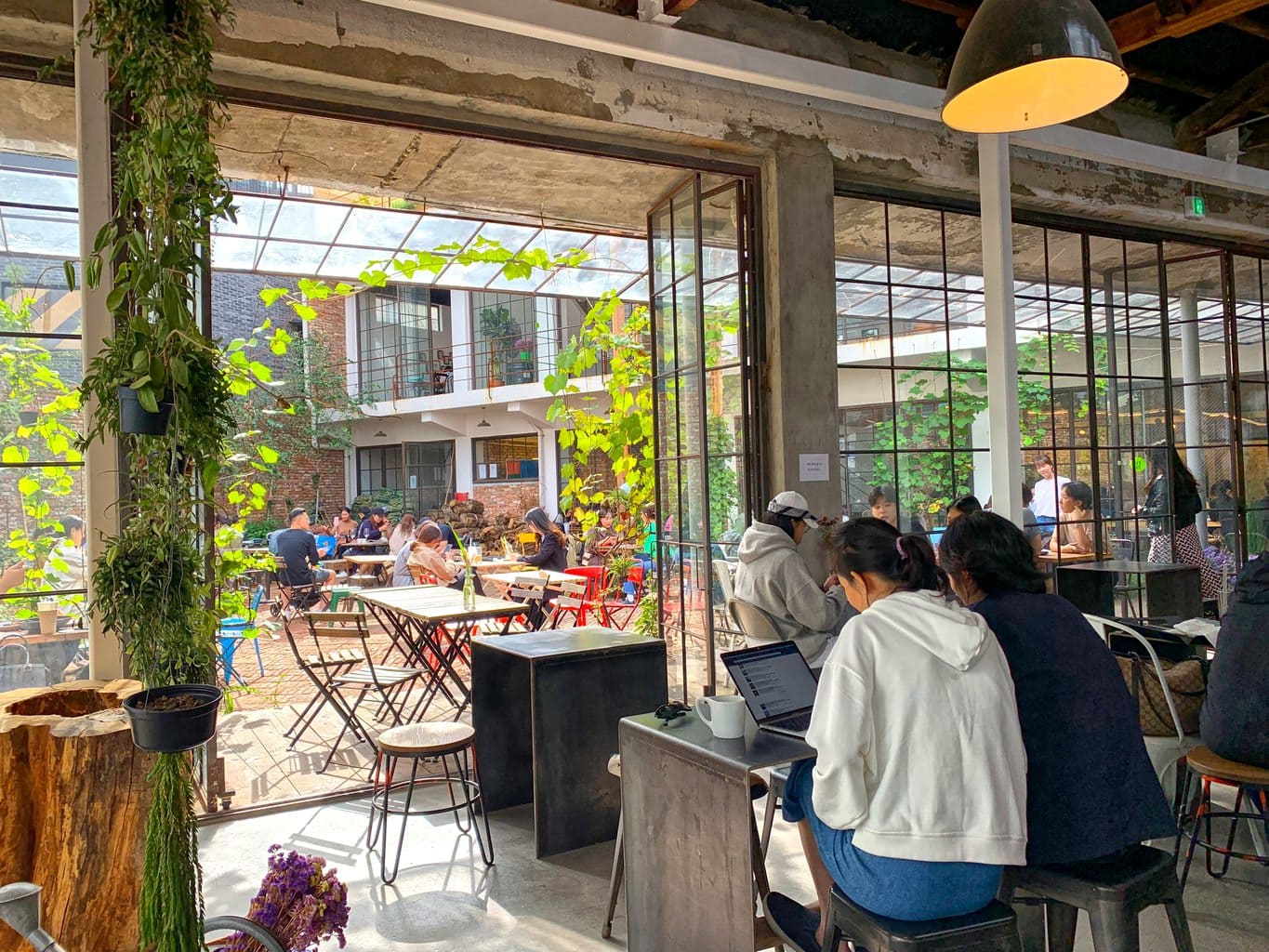
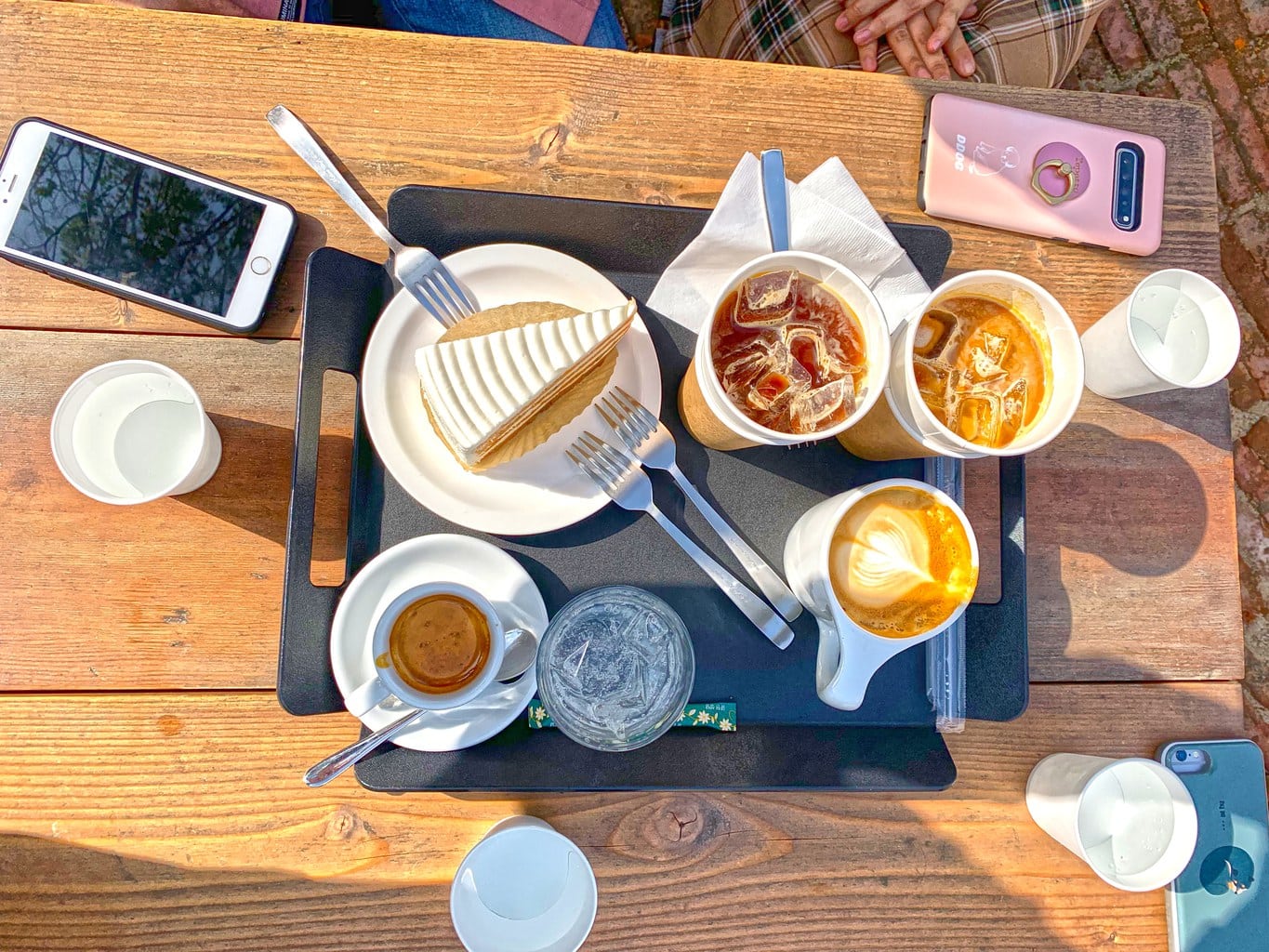
The specific coffee shops can be a bit difficult to find as the giant doors look like they guide you into a factory and are easy to miss, but check out my map above for some of the best selections and explore one of the least touristy parts of Seoul.
Try Cafe Onion, Daerim Changgo (대림창고), Baesan and Grandpa Factory (할아버지공장 카페에) for our top picks.
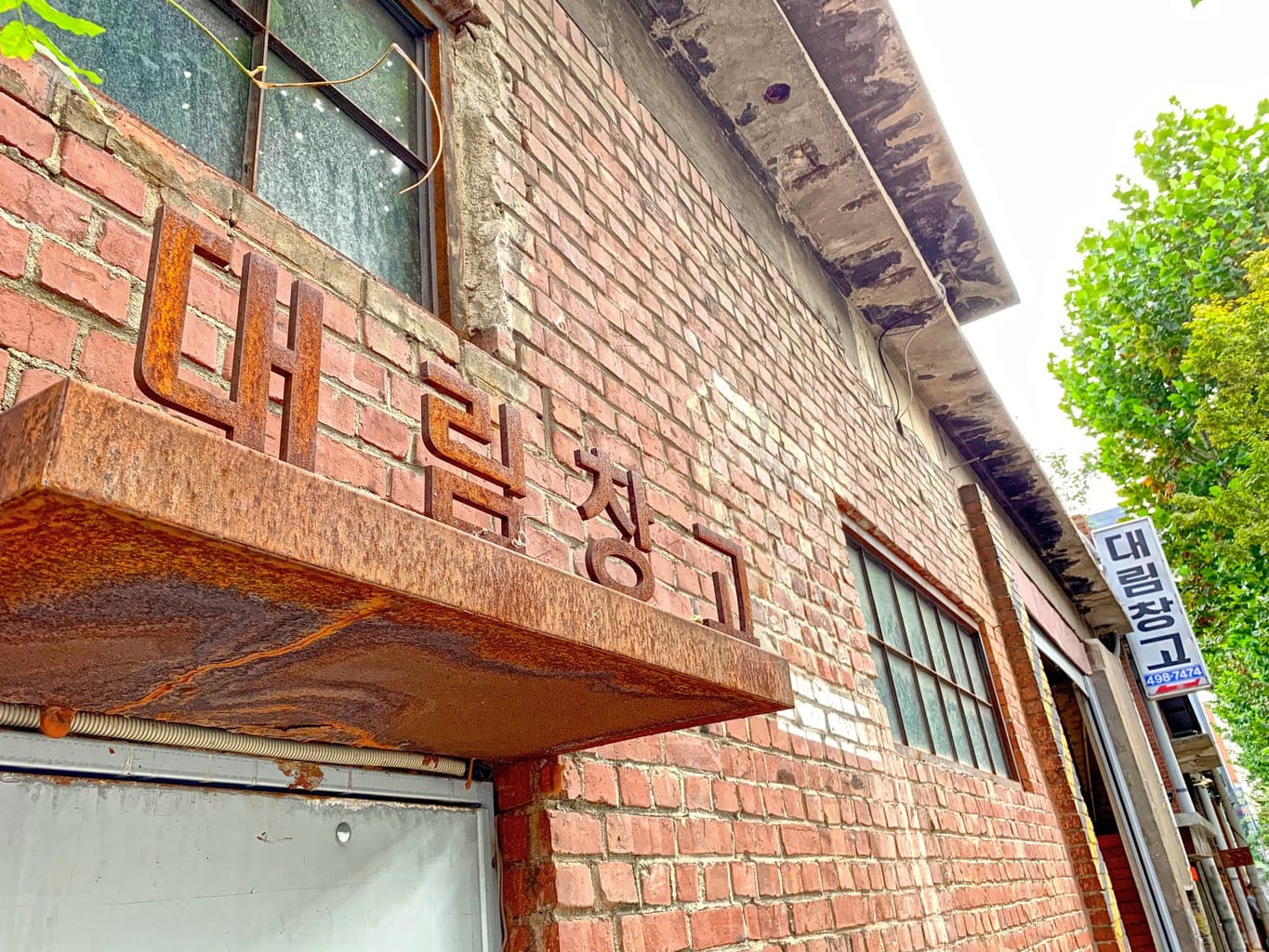
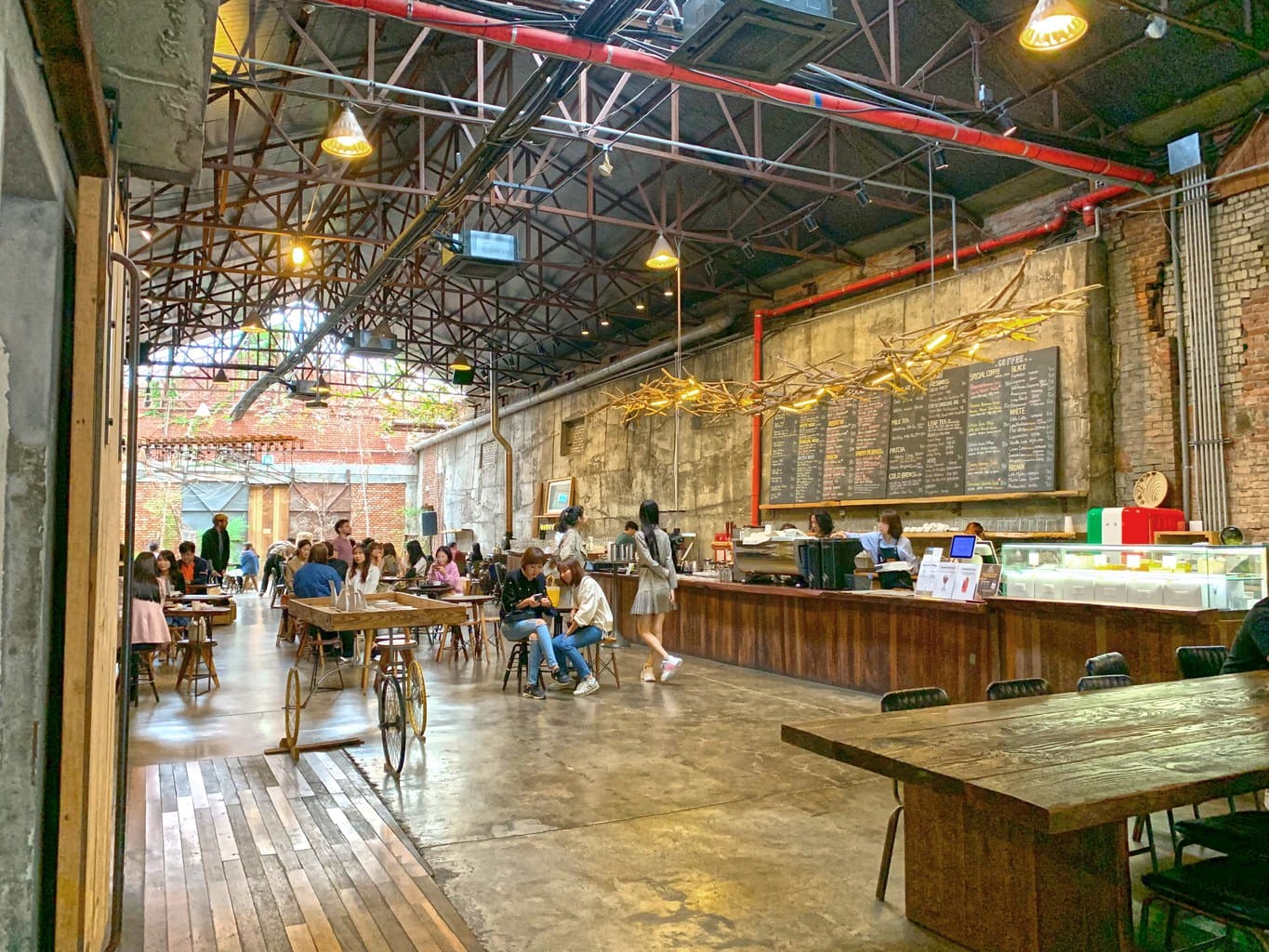
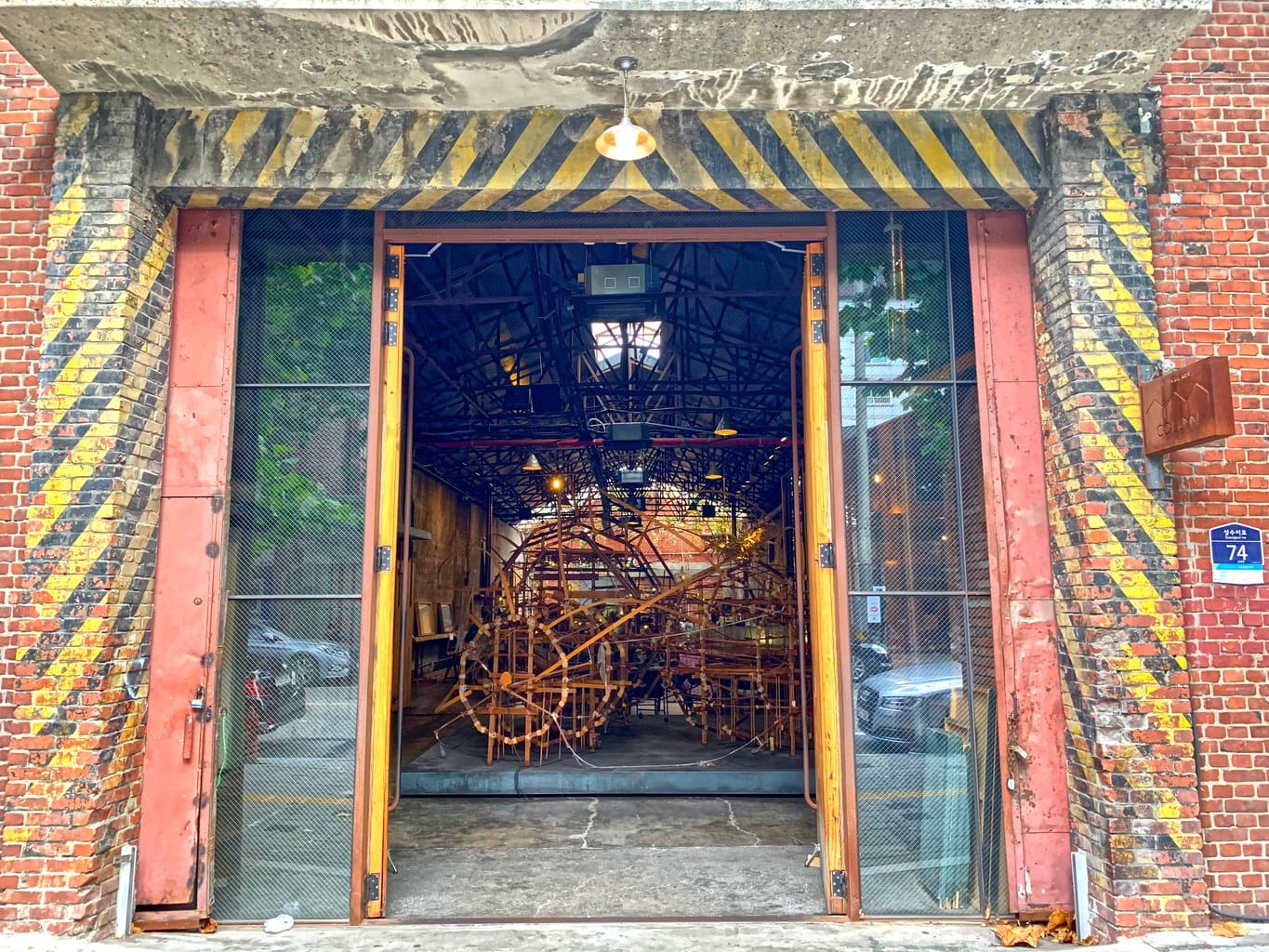
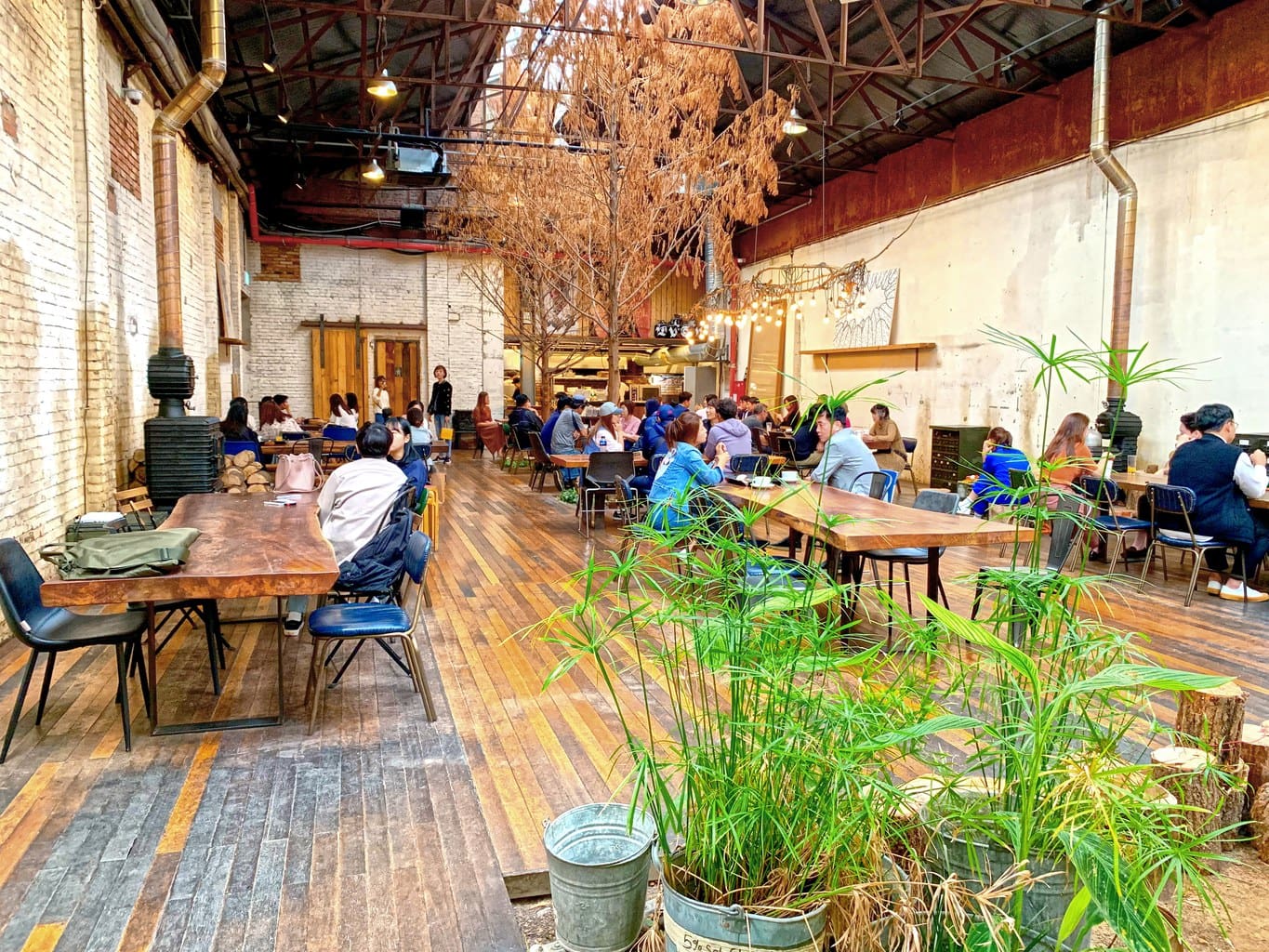
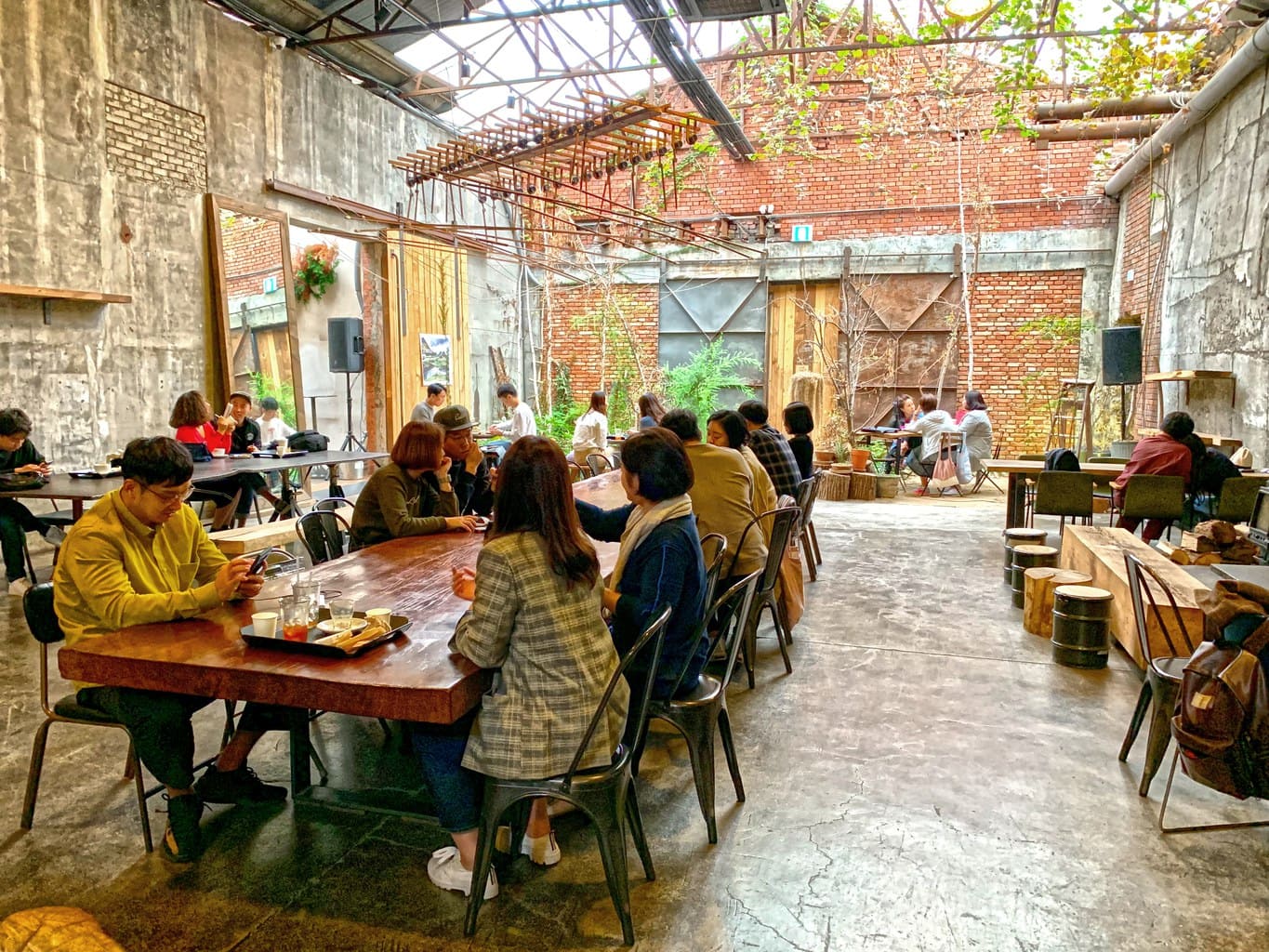
Get handmade shoes
Seongsu is also the top places to visit in Seoul to get handmade shoes. You can choose from over 200 different stores to get a one-of-a-kind pair of shoes made to fit. Just take exit 1 to start your bespoke shoe extravaganza journey. Read more here.
Insider tip: If you’re traveling on the green line, the train may suddenly stop at Seongsu station and all the passengers will get off. Don’t worry, it’s not an evacuation, it just means that the train tracks are splitting. The green line either continues onto Jamsil or goes to Sinseol-dong station. Just hop off with everyone else and take the next Jamsil-bound train if you’re heading in that direction. Listen for the announcement of Circular Line or (Neh Sonsoon Hwan or 내선순환).
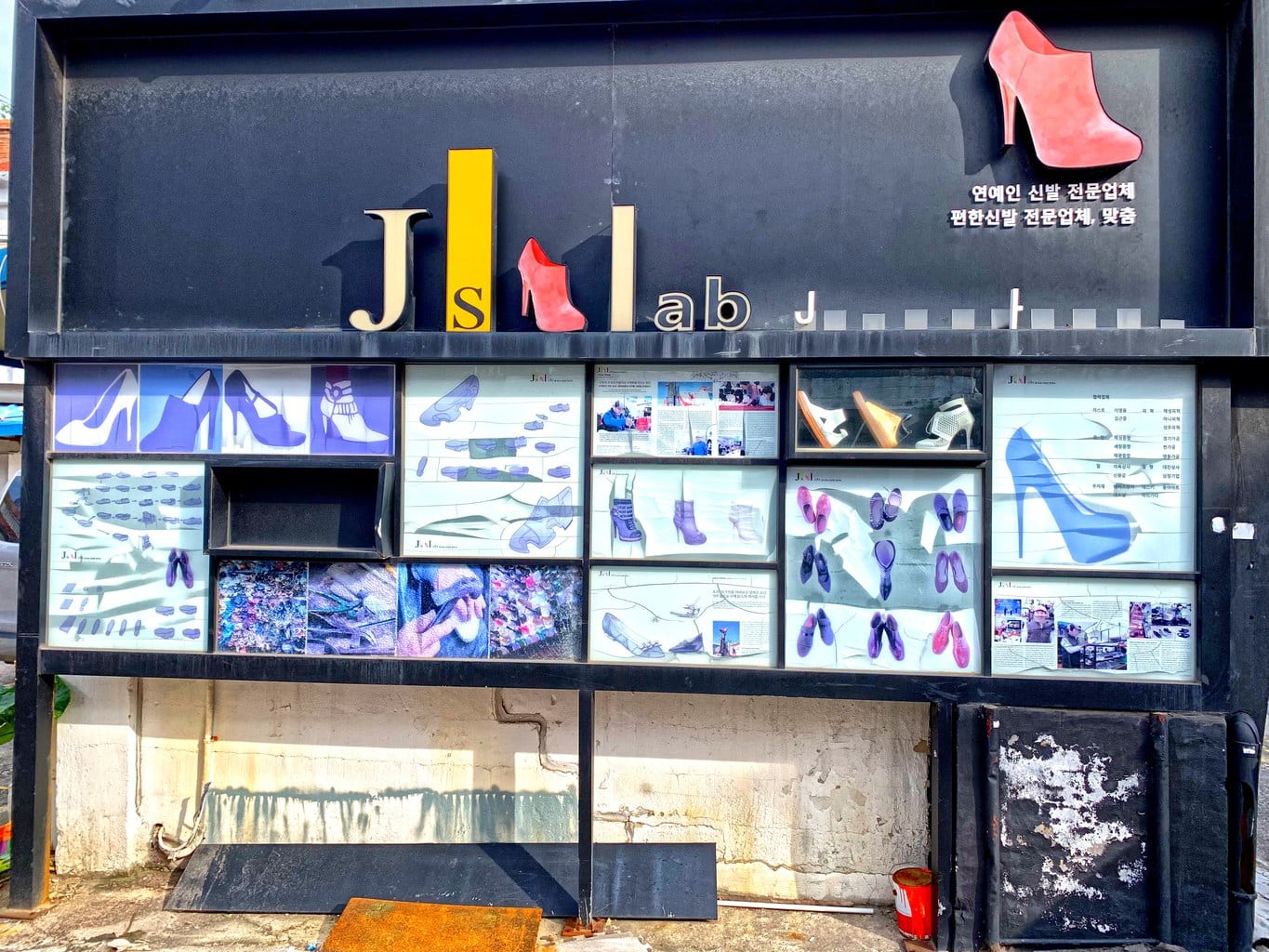
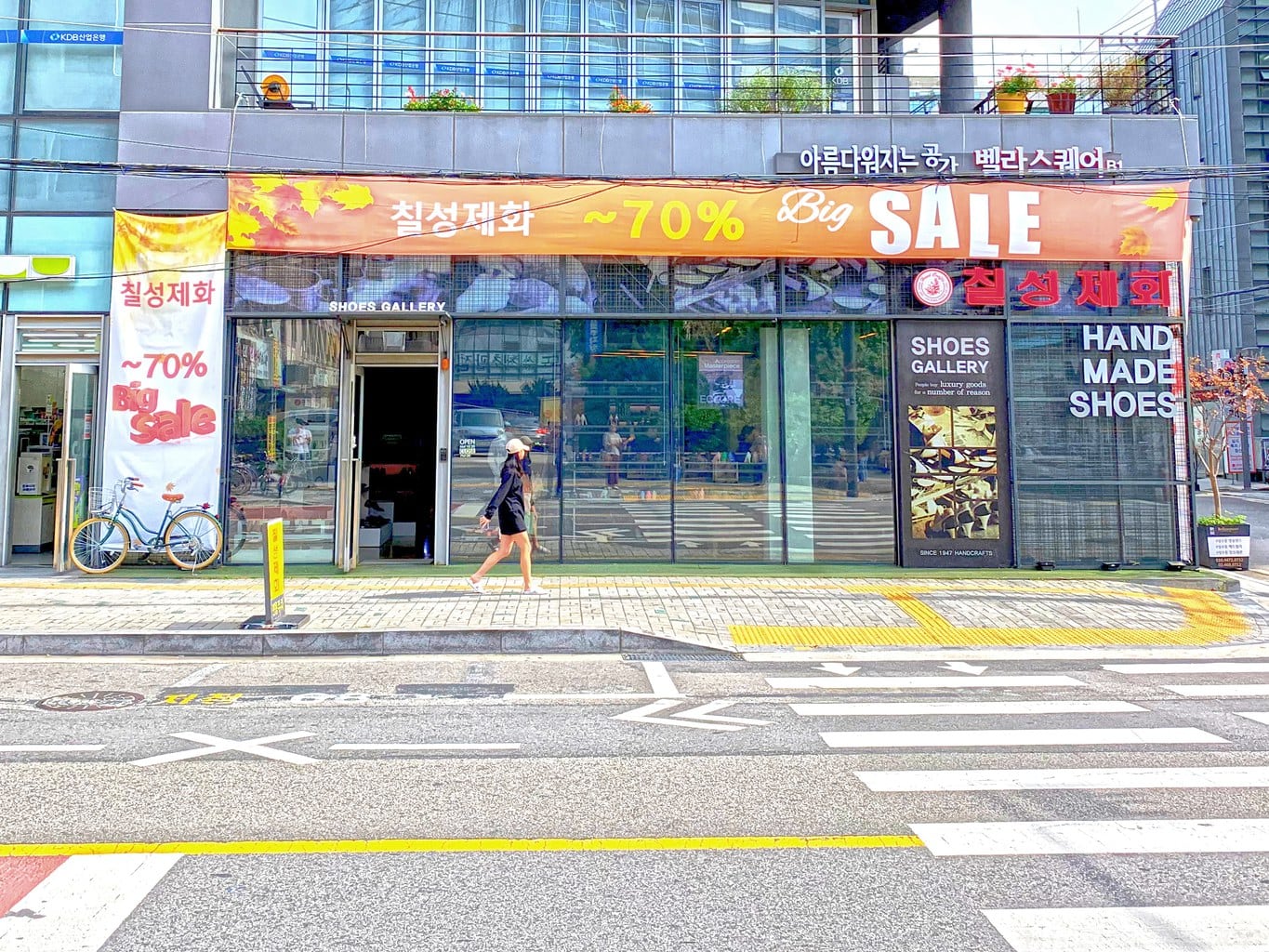
How to get to Seongsu Shoe Market – Seongsu Station (성수동역) line 2 (green) – exit 1 for Shoe Market; see the map for other areas of interest.
See Seoul from above
This one is for the hikers and adventurers out there whether you’re a solo traveler or a family that loves the outdoors. If you want a bird’s eye view of Seoul and want a more forresty experience than Namsan, then you should head to Maebong Mountain Park.
This is not to be confused with Maebong Peak at the top of Cheonggyesan Mountain near Songnam and Gwacheon. It takes a bit of navigation skills to get to, so don’t go if you’re in a rush. If you want to take it slow, you’ll be rewarded with loads of nature and panoramic views of Seoul and especially the Han River.
The route is circular and takes over an hour, but there are many different entrances and exits so plan your trip accordingly before you go, especially if you are choosing to go as a family.
How to get to Maebong Mountain Park: Oksu Station (옥수역) line 3 (orange) & Gyeongui–Jungang Line exit 5 or 6, then walk to the entry to the trail behind the Oksu Geukdong Apartments. You can also choose to take a taxi up the road in front of Seoul Bangsong High School for an alternate entrance.
Taste some fiery rice cakes
You may have heard about tteokbokki, the fiery street food made from tteok (rice cakes) and gochujang (chili paste), but did you know that you can try it from where the dish supposedly began?
As we wrote in our article on the best Korean Food the dish supposedly began in the 1950s when Ma Bok Lim was opening a Chinese restaurant in Sindang-dong and accidentally dropped the cooked tteok in the gochujang sauce and found it delicious.
So the area today is known as Sindang-dong Tteokbokki Town where there are numerous restaurants that offer all varieties, even pizza tteokbokki that has stringy cheese added! You can visit the original store called Maboknim Wonjo Halmeonijip Ttokbokki although there are so many options available, so just follows the crowds for the best selections.
How to get to Sindang-dong Tteokbokki Town: Sindang Station line 2 (green) or 6 (brown), exit 8. Go straight until you reach Jungbu Fire Station and turn left, there is a large sign welcoming you.
Things to do in Seoul south of the river (Gangnam, Songpa and Seocho)
Upon entering the area south of the river, especially if you’re walking across the Han River, you’ll instantly notice the flash and extravagance. The most affluent area is to the east with Gangnam, Songpa and Seocho making up the most prime real estate in Seoul.
You will most likely not be traveling to the central or west of southern Seoul unless you are on business in Yeouido (financial centre of Seoul), visiting the National Assembly or traveling back to the airport (both Gimpo in Seoul or Incheon). Hikers will also venture out to the southern tips of Seoul to scale Gwanaksan mountain or visit historic Gwaneumsa Temple.
Things to do in Gangnam
Gangnam was made famous to the world by Psy’s song and is filled with chichi and pretentious boutique cafes, beautiful people dressed to impress and one of Korea’s most beloved theme parks, Lotte World. The area is great for sightseeing, whether you’re a hipster or a family on vacation. Buildings are newer, streets are wider and the area is generally cleaner.
Find out what Gangnam style is all about at Gangnam Station
Gangnam is one of the most popular places to visit in Seoul. The area is a major tourist attraction after the popular song and is filled with plenty a tourist. But knowing where to go exactly beyond the main road is not so obvious. So let me guide you to the best things to do in Gangnam.
Your experience of the infamous Gangnam should start in the centre of the business hub. The road between Gangnam and Sinnonhyeon stations is the perfect start to your Gangnam journey. The road itself is only about 5 blocks in length, but will keep you busy for hours. If you’re traveling on the green line, get out at Gangnam station and take either exit 10 or 11. There is also underground shopping at the station.
Taking either of these exits will get you to the main road with shopping galore and cafes to satisfy your coffee cravings. The major difference between the left and right side of the road is stated below. So read on to find out more things to do in Gangnam from shopping to eating to bar hopping.
You should start your evening on the north side at Exit 11. This area on the hill is packed with swanky eateries and cafes to match. You’ll find more artisanal coffee shops and restaurants on the hill, a break from the chains on the main road. The food is a mix of local and international with options ranging from craft burgers to delicious Korean options.
At exit 10, on the south side, will get you to the party side of Gangnam. There are bars and “hofs” (beer houses) like Brauhaus or Woodstock and a few clubs. Dress up and feel like a celebrity while partying it up with the beautiful people portrayed in the Gangnam style music video.
Warning: While it is not the standard, some bars in Gangnam do scam unsuspecting foreigners. Please beware of “scams” in some of these bars, where scalpers offer you cheap alcohol at a “premium table”. Yet you end up being forced to pay excessive amounts, i.e. a table is equal to a bottle of premium alcohol plus food. You will not be able to leave until the bill is settled. A good idea is to follow the Westerners to the more popular pubs or go with a Korean friend who knows what he or she is doing. Foreigners are often turned away from clubs in Gangnam for no reason, particularly if you are over 30 years old. So just be cautious before planning your party.
How to get to Gangnam Main Area – Gangnam Station (강남역) line 2 (green) and Shinbundang line (red) exits 10 for the south side or 11 for the north side OR Sinnonhyeon Station (신논현역) line 9 (gold) exit 6 for the south side, 7 for Kyobo and 5 for the north side.
Have a complete spa day at Sulwhasoo
For those looking for a more personalised and intimate spa experience than a jjimjilbang, there are many premium offerings in Seoul. Sulwhasoo, one of Korea’s top beauty brands provides some unique experiences at their flagship store in Gangnam. From a 90-minute Body Recharging Treatment to the Intense Ginseng Journey, which is an anti-aging, there is something for everyone in a quiet and cosy atmosphere to escape frantic Gangnam.
There are even options to dress up in hanbok (traditional Korean dress) and take part in a tea ceremony for that extra bit of zen. It is advisable to book your ticket well in advance as this is one of the top things to do in Gangnam and places are limited. Trust us, you won’t be let down here.
Book your Sulwhasoo spa day here.
Go book shopping at Kyobo
Book lovers will need to take exit 7 at Sinnonhyeon station to visit the massive Kyobo bookstore in the basement of the Kyobo tower. The store has a wide range of international language books, it’s Korea’s own version of Japanese book mecca Kinokuniya. But the best part is that there is a long table to sit at and read to your heart’s content. There are occasionally K-pop group signings at the lower level Hot Tracks, a large stationary and curious store. See more of what Kyobo has to offer here.
Spend the big bucks at Gangnam’s luxury shopping malls
As mentioned several times before, eating and shopping are some of the best things to do in Seoul and Gangnam epitomises that for the luxury and glamorous crowd.
Gangnam is all about the flashy malls and the shopping centers with all the international brands, bright lights, spacious department stores and plenty of opportunities to max out your credit card. Check out the home-grown glamorous Galleria department store, top-notch Hyundai Department store or Apgujeong Rodeo street for some serious shopping.
Get your plastic surgery done at Apgujeong
Apgujeong is the next stop on your Gangnam itinerary. It’s the surgery mecca of Seoul, so expect to see many faces covered in masks, heavy sunglasses and baseball caps. Try to spot the “before and after” posters advertising plastic surgery in the subway. If you ever wanted to get some plastic surgery done Seoul is one of the best places in the world.
Plastic surgery in Korea is not the great taboo that Westerners see it as. It’s not uncommon to get your child breast enhancement, nose jobs or double eyelid surgery (known as blepharoplasty) after passing the SATs. South Korea has the highest per capita rate of cosmetic surgery in the world where one in three South Korean women between 19 and 29 have undergone surgery.
Trend it out at Garosugil
Beyond the flash malls there is trendy Garosugil in Sinsa-dong. This is one of the things to do in Gangnam for those seeking art cafes, amazing restaurants and a mix of boutique, local and international fashion brands.
Don’t stick to the main road and have fun exploring the boutique stores and cafes by taking the back roads on either side. Remember your way as you can easily lose direction in this labyrinth of coolness.
How to get to Garosugil – Sinsa station (신사역) line 3 (orange) exit 8 – walk for about 3 blocks and turn left before the mostly glass building, J Tower.
Have a picnic near Sebitseom
If you’re in Gangnam and want to get away from the skyscrapers and small roads with crowded streets, I would highly suggest taking a stroll along the Han River and visiting Sebitseom. Seom in Korean means “island” and there are a few along the Han River, but none as spectacular as Sebitseom.
Sebitseom is actually made up of 3 connected islands with facilities and another open air theater on the mainland, each dedicated to a different activity. The open air theater with a ridiculously large TV screen that shines like the sun at night is called Yevit. There are occasionally events where meals or snacks are served while you watch TV. Otherwise you can just sit and watch at your leisure.
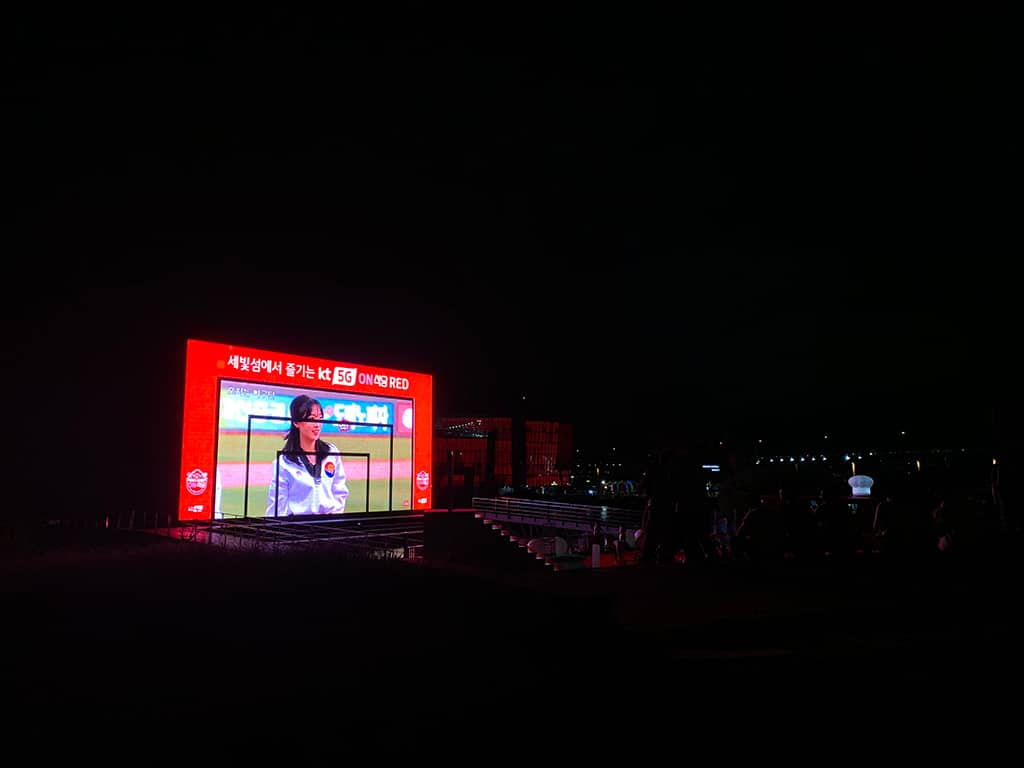
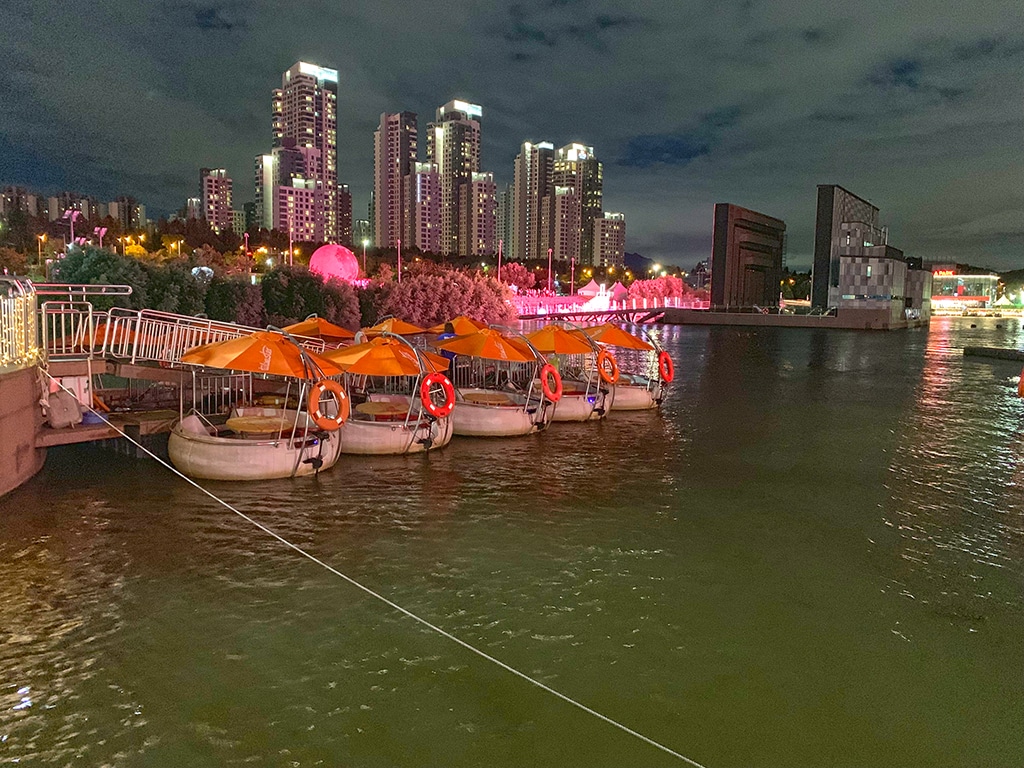
The largest complex is called Gavit and was created as a MICE (meetings, incentives, conferences and exhibitions) space along the Han River, basically a floating convention centre. There is also a cafe, an Italian restaurant and a beer garden-cum-restaurant. There are also floating tables with rubber tubes if you want to chow down on the water in an intimate setting.
Chavit is the next island over and caters particularly for hungry tummies. There is a buffet-style restaurant here with over 160 different dishes to choose from. Solvit is the smallest of the lot and is more for culture lovers where exhibitions are held.
While there are many events held at Sebit, their English website is not particularly helpful and the last event scheduled was from 2014. It’s best to visit the Korean language version of the site here and then use Google translate if you’re using Chrome browser. This is always up to date and will allow you to plan if there are any activities or events.
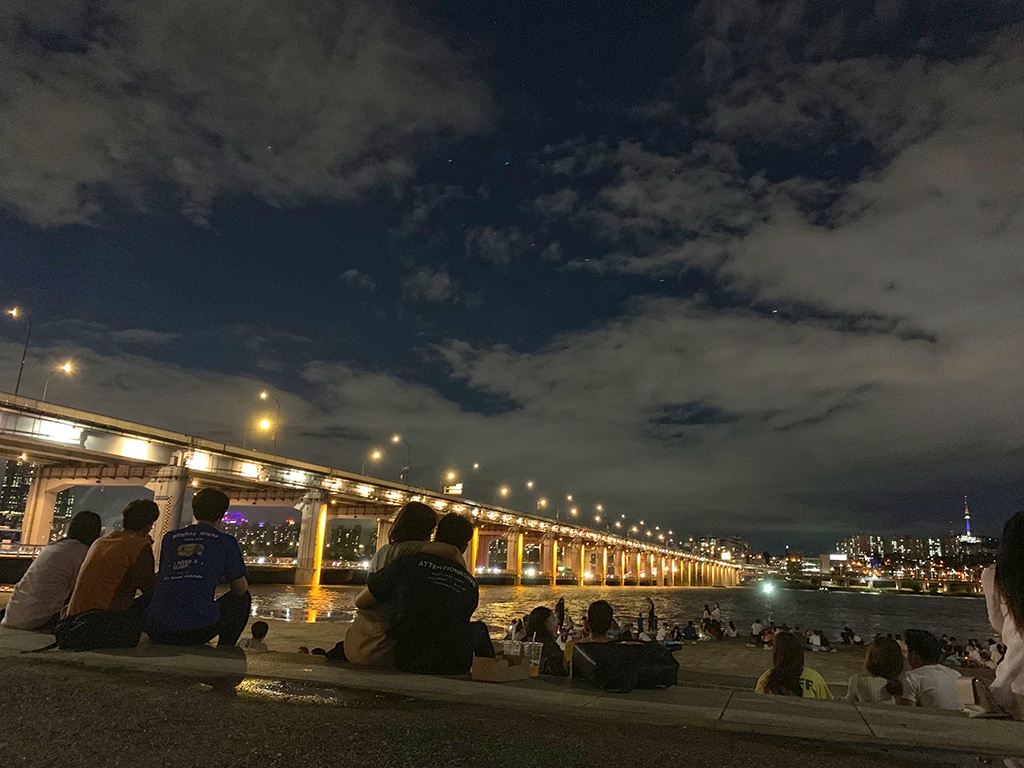
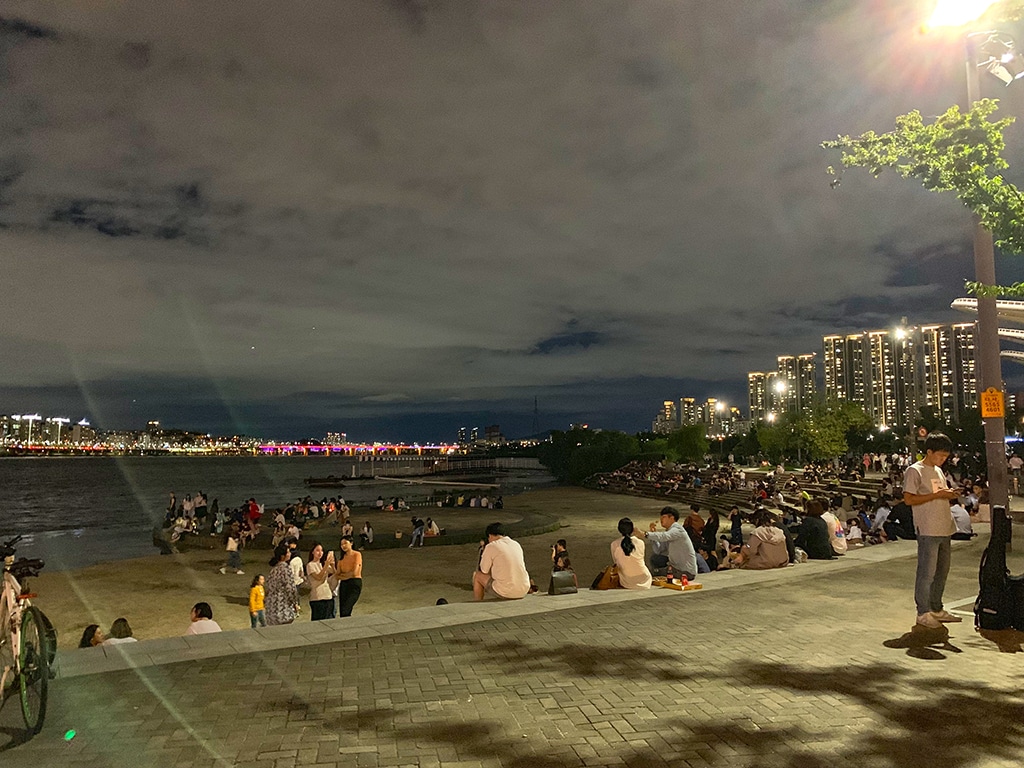
Tip: If you love picnics, then there is a great green space just after the Banpo Bridge if you’re walking away from Sebit. There’s even a little beach, but I would’t suggest swimming in the water or suntanning due to pollution and cultural norms. The green area is fantastic though and their is a convenience store and chicken takeaway restaurant if you didn’t bring a snack.
Visit all your favorite Kpop companies in Cheongdam
Hallyu (Korean Wave) is the term used to describe the sudden interest in Korean culture throughout the globe. It encompasses K-pop, K-drama, and general fashion trends stemming from the country.
Those riding the Korean Wave will need to pop into the Cheongdam area, which is locally portrayed in the media as “luxury town”. K-pop fans can visit some of the biggest names in Hallyu management like S.M. Entertainment, JYP Entertainment, Cube Entertainment, and J. Tune Entertainment. You never know, you may bump into the members of Twice, Miss A or 2PM.
Real Hallyu fans can enjoy a complete Seoul Hallyu Kpop Tour which will take you to most of the places mentioned above, like SM and JYP, and beyond like one of BTS’s favorite restaurants in the city.
There are also some great Kpop dance classes that you can join in. This one at Fanxy studio is for beginners and is very highly rated and it’s right in the centre of Gangnam!
One last Kpop experience that you can have to complete your Hallyu adventure is to visit a recording studio and record your own Kpop song! Click here to book your session now.
How to get to Cheongdam – This will vary depending on where you wish to visit as there are several stations in the Cheongdam area.
Be a kid again at Figure Museum W
Live out your kidult fantasies as you pose next to your favorite Avenger or peruse a selection of Gundam and anime action figures. The small building actually has several floors of displays to explore from OnePiece to Dragonball Z to entire Marvel and DC universes. The Museum is in Cheongdam so you can visit here along with Apgujeong and Gangnam. Book tickets online here.
Relax in silence at AHC Spa
Top Korean cosmetics company, AHC also has a spa in Gangnam that provides long massages that are pure bliss. Give your muscles a proper holiday after all the walking and sightseeing and choose from a Whole Body Massage, Facial Massage, V Line Massage, or a Lymph Body and Facial Spa.
Not only will you get the most relaxing massage, you’ll also get a 20min pre-massage special bath! You’ll definitely feel re-energised and invigorated to continue your exploration.
Book your spa day at AHC for a discounted price on Klook.
Shop at the world’s largest underground mall, Starfield COEX
Travel further south in Gangnam district and you’ll end up at the biggest underground shopping mall in the world, Starfield COEX.
There is a lot to do here other than shopping and you can explore the mall for hours. The Hyundai Department Store’s food court is large and has so many delicious choices to snack on. There is also a fantastic aquarium to keep the kids busy. COEX is also an international business hub with many conferences and exhibitions being held frequently.

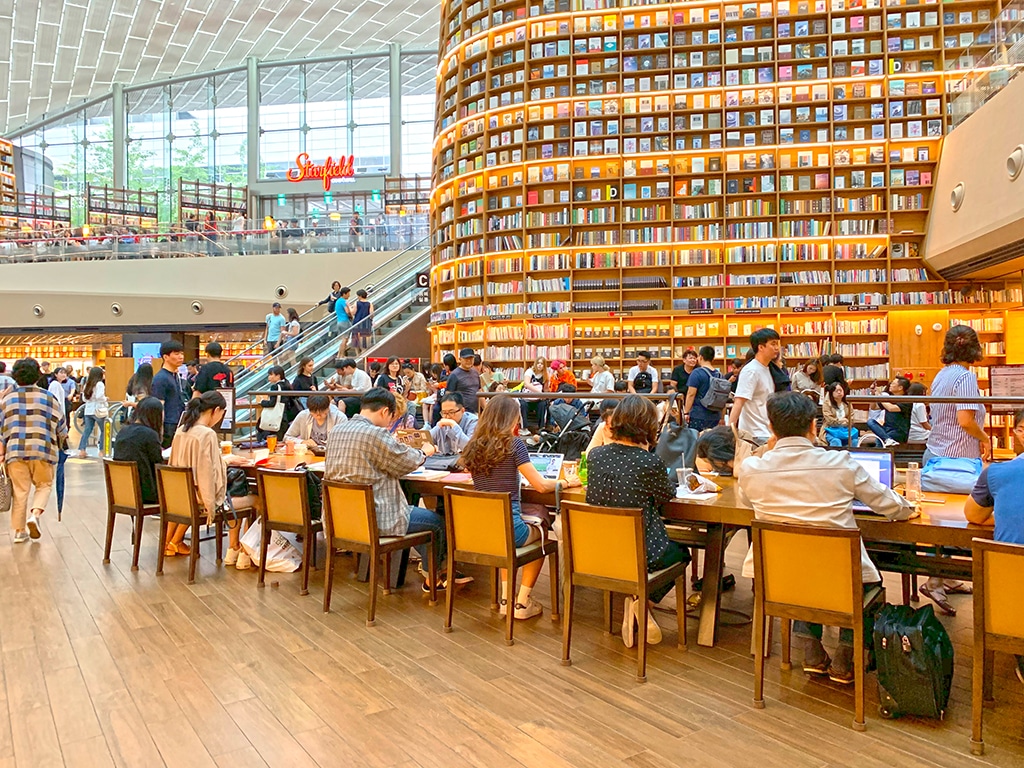
Top Tip: Digital nomads need to get to Starfield COEX as the main library area doubles as a giant work space. Log onto the free internet and sit at one of the desks with charging points for a full on working space of your own. Get there early as spaces can fill up quite quickly. There are two convenience stores and bathrooms on the top level as well.
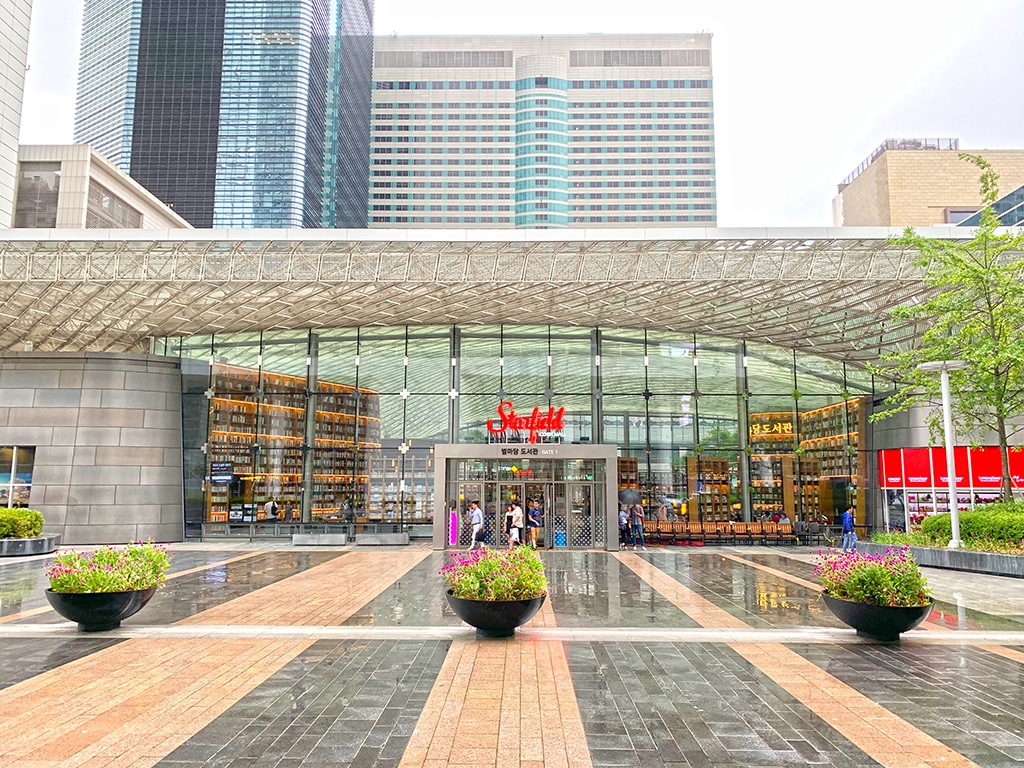
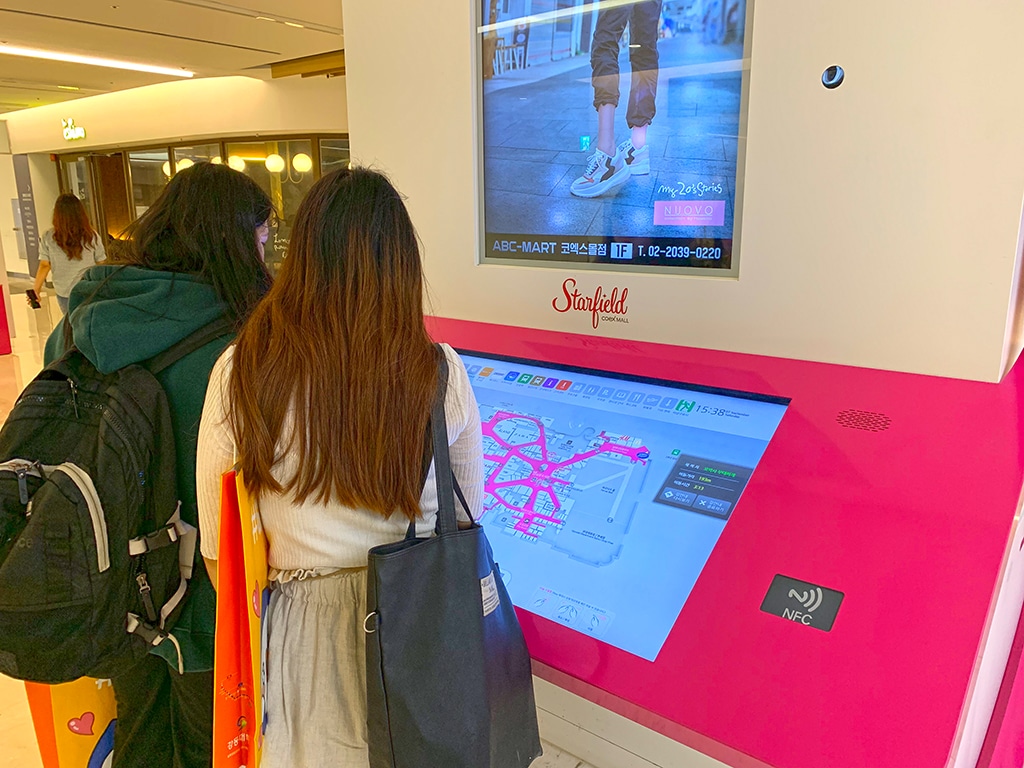
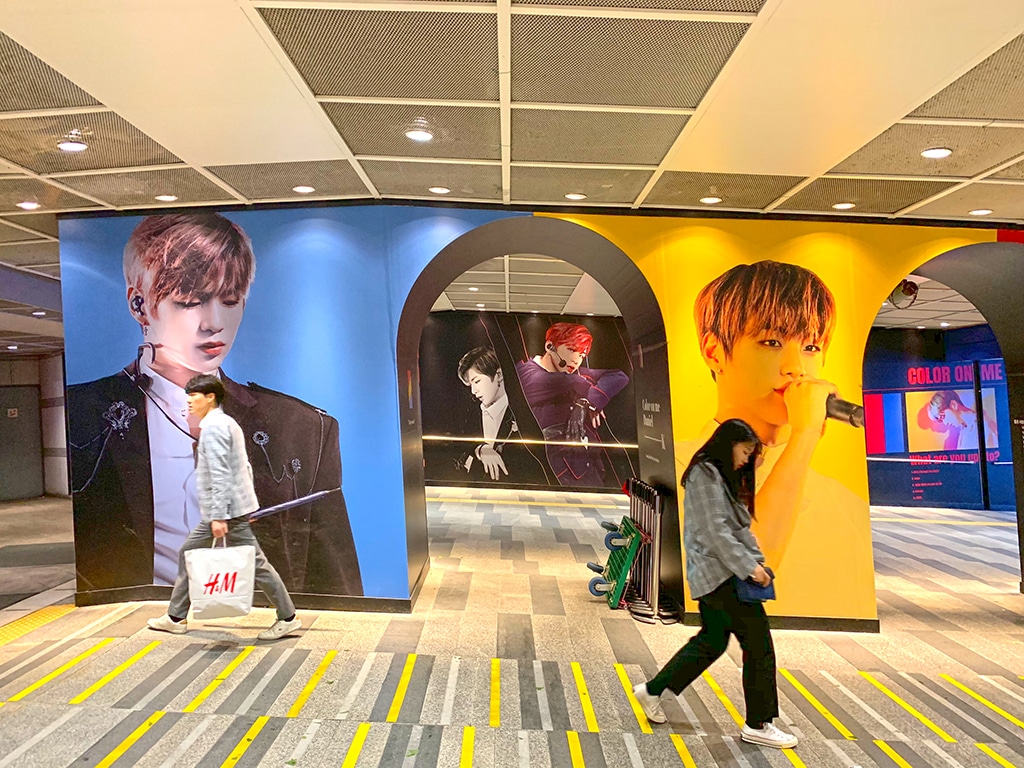
Insider Travel Tip: As this area is an international business hub, you should make use of the Airport Terminal (CALT) if you’re staying near COEX. The great thing about CALT is that you can check in your luggage and get your plane seat assigned before actually going to the airport. You can also catch the airport bus limousine from here. Airlines are limited so it’s best to check on their website to see if your airline is valid.
WATCH A VIRTUAL K-POP SHOW
K-pop fans should try and get to SMTOWN Theatre in COEX Arteum to experience popular virtual hologram concerts from bands such as EXO, Super junior and Red Velvet. While you won’t watch the stars perform live, the show is a sensory overload and it will feel as if you are actually watching the concert live. You can book your ticket online here.
There is also an Aquarium in COEX that is a great way to pass some time for families with bored kids. You can book your tickets online here.
Enjoy a baseball game (and chow on some chimek)
Another one of the top things to do in Seoul for entertainment and fun is to see a baseball game. Root for the Doosan Bears, LG Twins or Nexus Heroes while you admire the acrobatic cheerleaders and brilliant baseball players.
If you’re lucky enough to see the Busan Seagulls play, you will be in for a treat. The fans are diehard. A baseball game is also the place to try your first chimek (a mix of chicken and mekju, which is beer in Korean). You can savor the famed BBQ chicken while not only watching the game, but also the people.
The best time and place to watch is after a visit to COEX at the very next station Sports Complex Subway Station (line 2, exit 7) at Jamsil Baseball Stadium. Tickets will set you back anywhere between US$4-$70 depending on the seat, day, age and teams playing. If you can’t get help purchasing a ticket online, get to the stadium about an hour before and purchase directly, often at reduced prices.
Take part in a Templestay at Bongeunsa
Temple stays are a unique cultural experience to be had by the spiritual traveler. If you are interested in Zen (Seon in Korean), mindfulness or Buddhist life in general, you can take a day or three to live life as a Buddhist practitioner in one of the oldest temples in Korea.
Bongeun Temple, right next to COEX is one of the handful of temples in Seoul that allows this extraordinary adventure. You will learn to meditate in the Seon style, bow 108 times, chant mantras and eat a purely vegan diet as you look deep inside yourself.
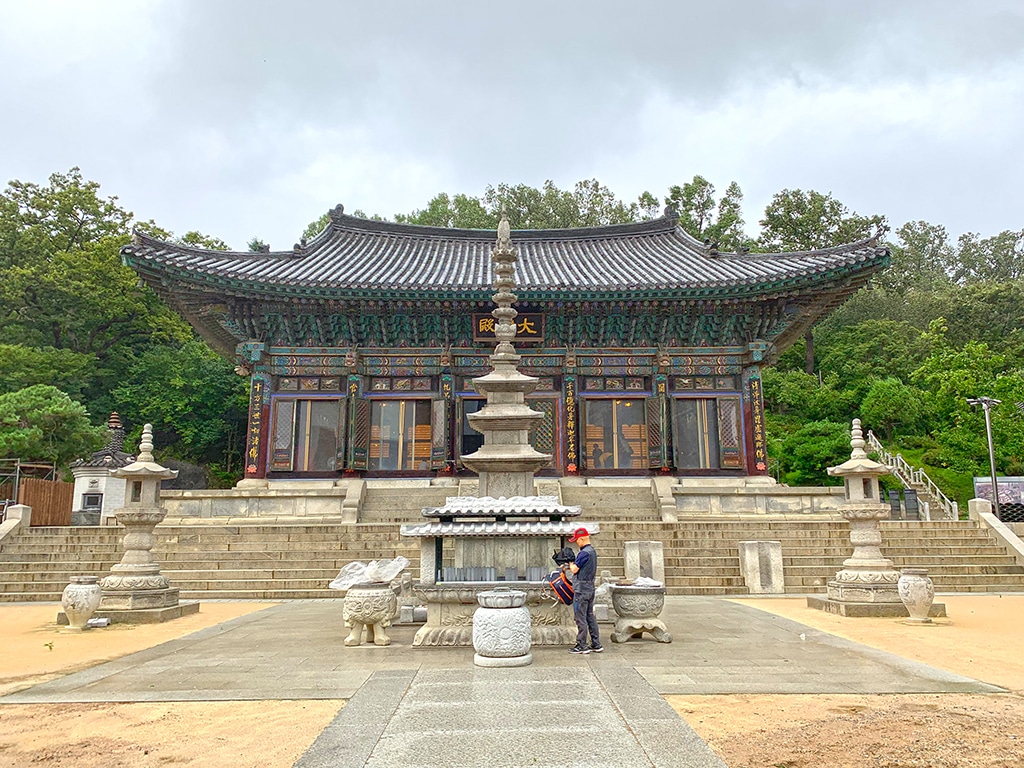
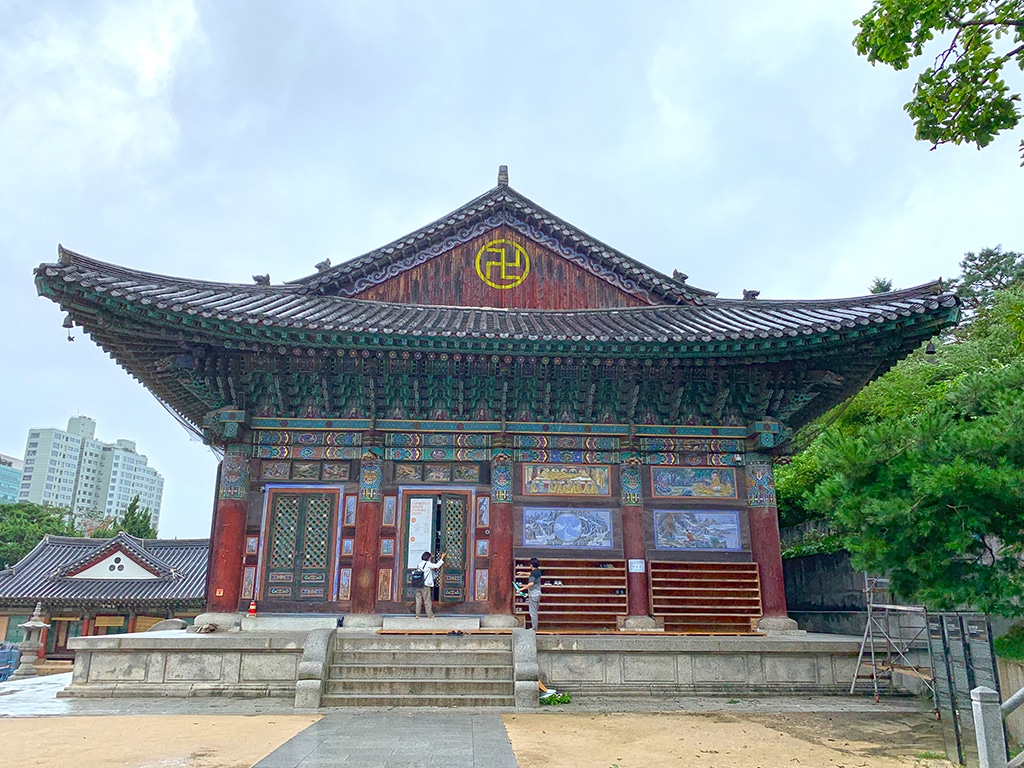
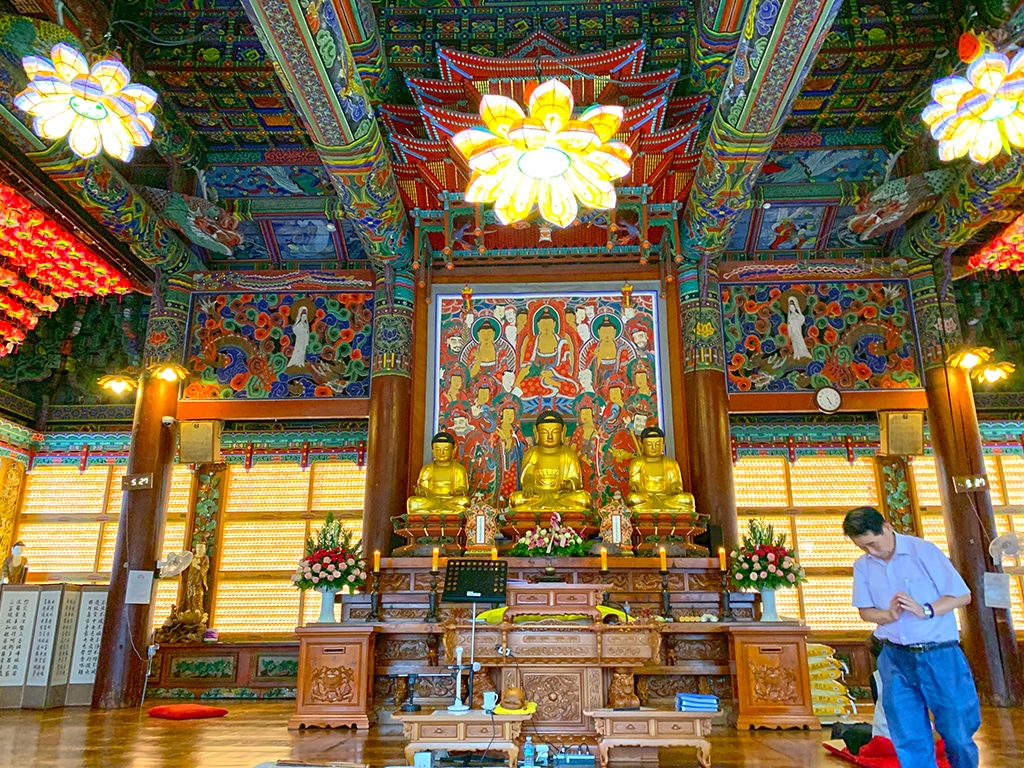
Bongeun Temple is also a fantastic cultural stop if you’re in the COEX area and are tired of shopping and looking for something more meaningful to round off your journey. The temple can be seen from above from the rooms at the Intercontinental Hotel COEX.
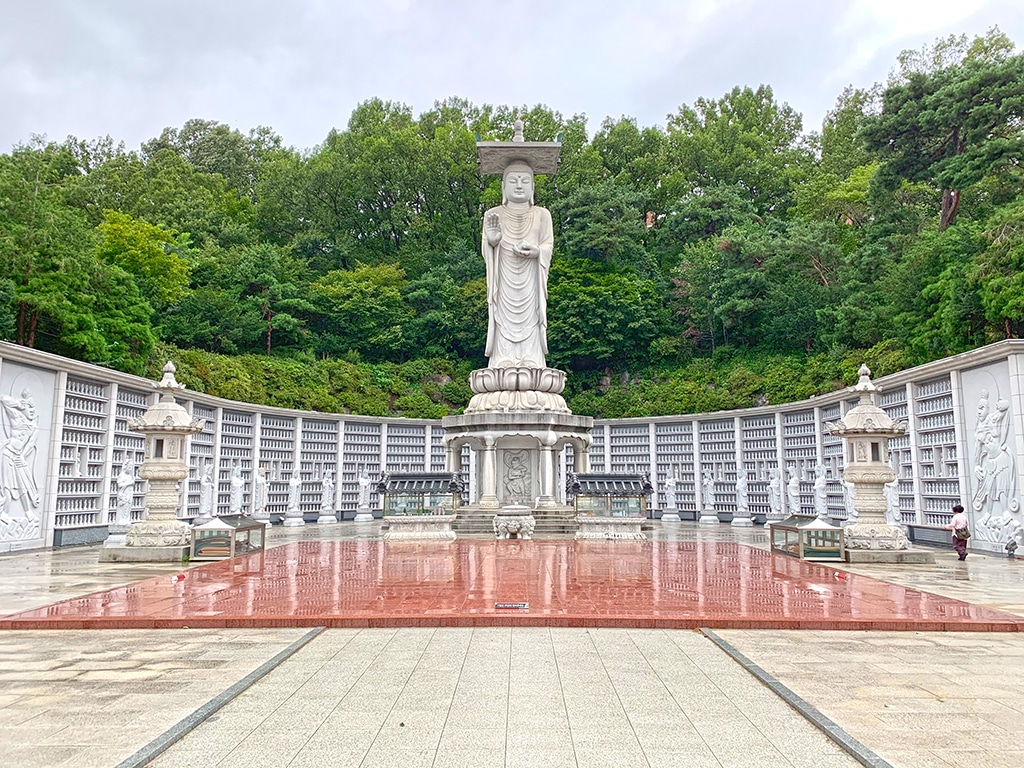
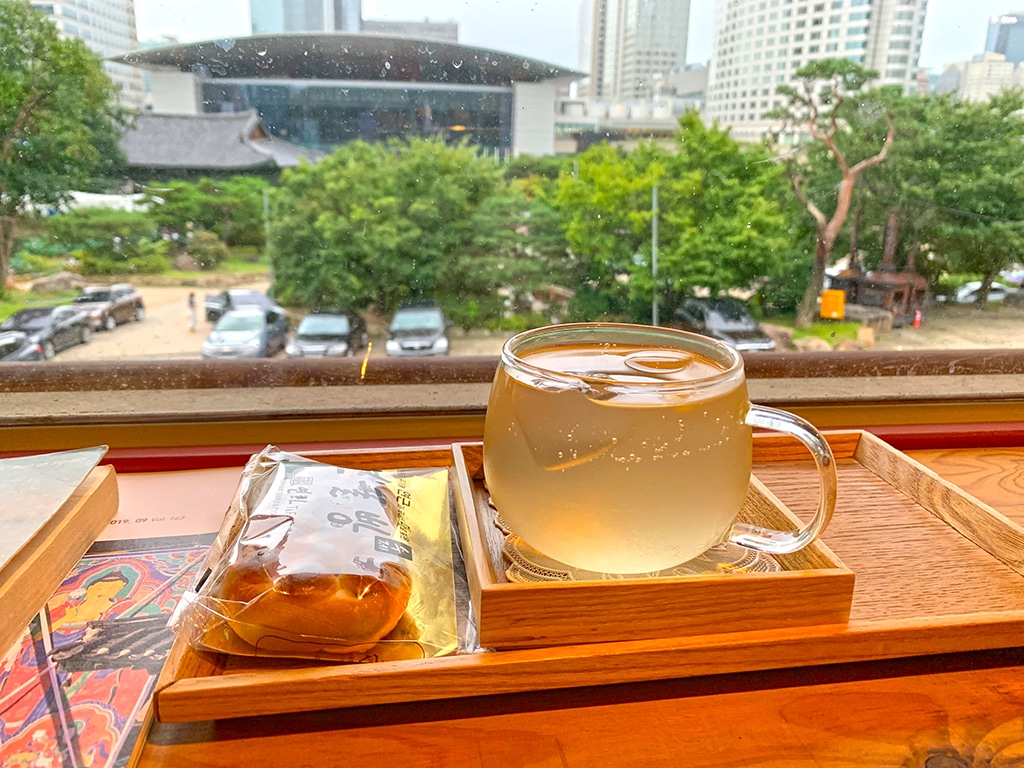
To organise a templestay or to find out more information, visit this site. There are over 30 temples to choose from throughout Korea. So if you would like a quieter experience in a more rural temple, you can opt for that. Read more about Bongeun on their website.
How to get to Starfield COEX Mall and Bongeun Temple – Samseong Station (삼성역) line 2 (green) exit 5 or 6 (near the Grand Intercontinental Hotel and Trade Tower) OR Bongeunsa station (봉은사역) line 9 (gold) exit 7 (near the Intercontinental Hotel and the COEX Aquarium); Take exit 1 at Bongeunsa station to get to Bongeun Temple. Bongeun can also be reached with a 5min walk from the COEX Trade Tower after passing the Gangnam Style hands statue. Go have a zen-like rest in the teahouse after all that walking in the mall.
Best things to do in Songpa-gu and Jamsil
If you are wondering what to do in Seoul with kids Jamsil is every traveling family’s dream and has all the family-friendly things to do in Seoul. There are two famous landmarks here that everyone should stop at on their first visit to Seoul; Lotte World and Olympic Park.
Take a ride at Korea’s very own Disneyland (Lotte World)
The Lotte World Complex includes Lotte Department Store, Lotte World, Lotte World Mall, Seokchon Lake (in blue) and is one of the most famous tourist attractions in Seoul.
Lotte World is Korea’s very own Disney World, with racoons replacing mice and some of the funnest rides you will ever go on. There are indoor roller coasters, giant swings that turn while being flung over the lake and the dreaded Gyro Drop, a 70 meter fall at 100km/h. You will scream with excitement.
For the best experience, which means skipping the queue and getting a discount, book your ticket online by clicking here.
Glide on an indoor ice rink
There is also an ice rink within the Lotte World complex, but can be entered separately without purchasing a ticket to the theme park. You can get in and hire skates for around US$16.
Shop till you drop at Lotte Department Store
Before entering Lotte World there is a large Lotte Department Store which starts at the subway, goes underground and then rises to several storeys high. It was the main shopping centre for those visiting Lotte World before Lotte World Mall was constructed. While you can shop duty free here and find some great deals, you’ll probably just pass through on your way to Lotte World.
Lotte World Mall is probably a better option to stroll around in as its more aesthetically pleasing and trendy, but you may find some great deals here, particularly in the event halls on floors 9 and 7. Take the escalator up if you have some time and see if anything that catches your eye. Here’s the floor guide.
There is also a Kidzania branch in Lotte Department Store, which can be a good stop over for traveling parents. If you’re a parent and never heard of Kidzania before, check out their website to see what they’re all about. It’s a place to keep your kids happy for hours on end.
Take a romantic stroll around Seokchon Lake
Just outside Lotte World is a wonderful Lake to take a stroll around. This is one of the most romantic things to do in Seoul. It’s quite a nice green space for couples to take a walk or to people watch. Listen to and watch Gyro Swing riders fly over Seokchon Lake (Seokchon Hosoo – 석촌호수) or check out the joggers doing their rounds and working out at the public gym.
Scrape the sky at Lotte World Tower & Mall (5th tallest building in the world)
Across Lotte World there is the recent Lotte World Tower & Mall. Making the already large Lotte World Department Store (across the road) look jaded and small, this 123 floor structure, standing at 555m is Lotte’s symbol of wealth and prosperity. It’s actually the fifth largest building in the world and one of the most impressive tourist attractions in Seoul. Here is their website for more info.
You can take a trip up to the observation deck and skywalk or visit the galleries, cafés, and luxury Lotte Hotel World. The mall is also massive in its own right and divided into a duty free luxury brand wing and the main mall with themed restaurants on the fourth floor and other international brands throughout the mall.
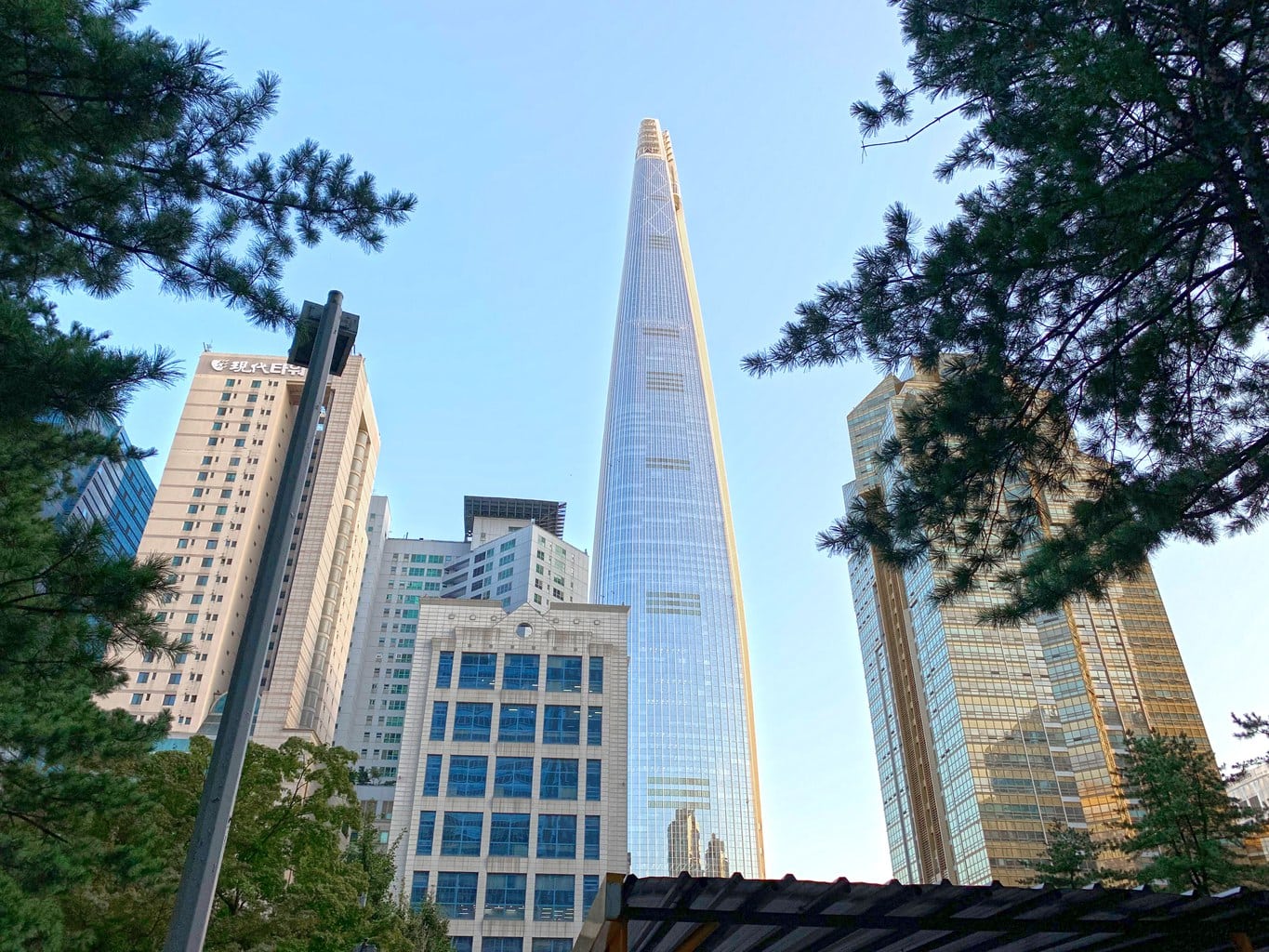
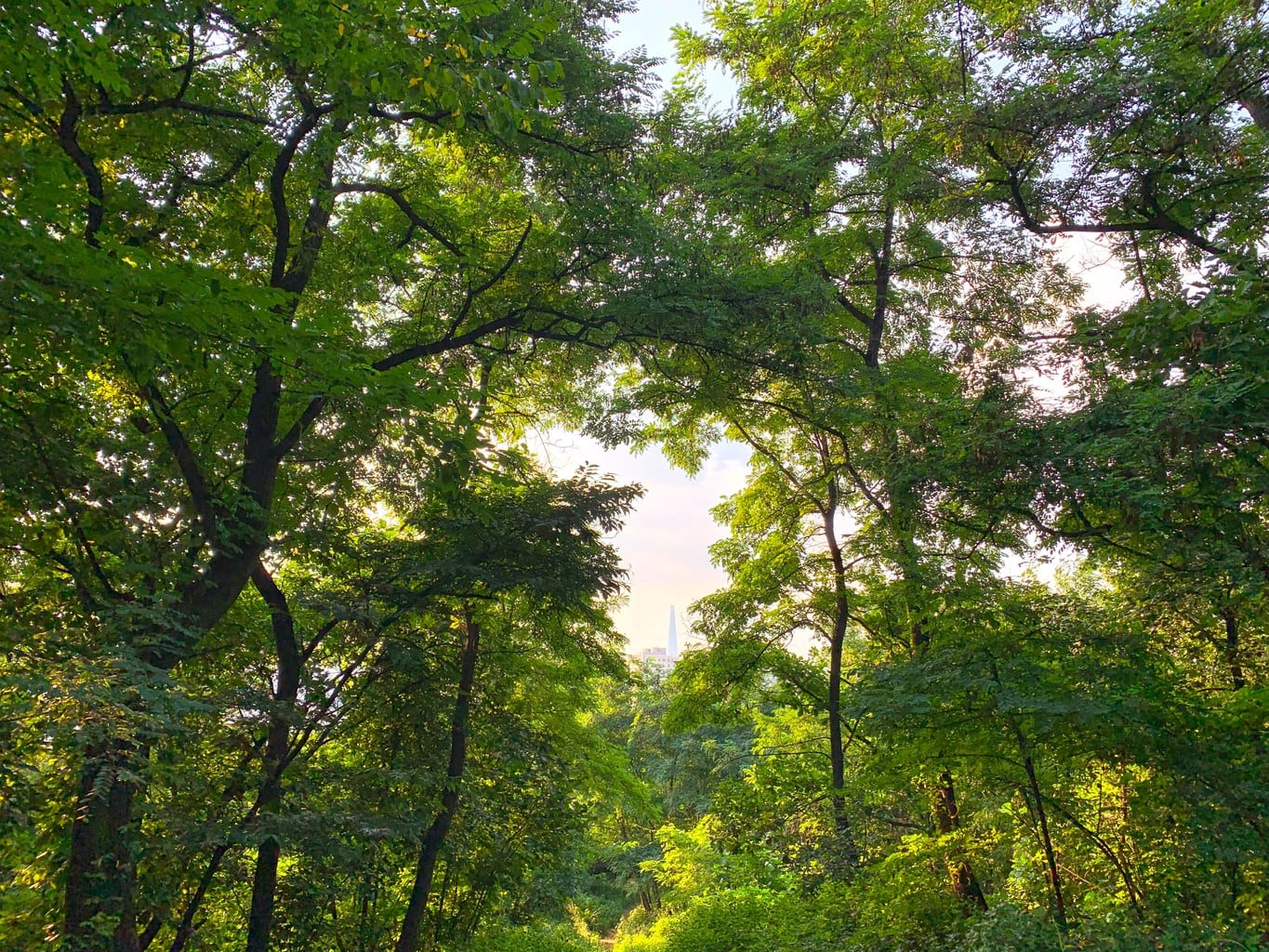
The theme is high-end and luxury, although the prices will be generally the same as Lotte Department store across the road. There is a luxury brand wing though, where items have the usual sky high price tag. There is also an aquarium to entertain the kids.
How to get to Lotte World Area – Jamsil station (잠실역) line 2 (green) and line 8 (pink) exit 3 or 4 to Lotte World and Lotte Department Store; exit 1 or 2 to Lotte World Tower & Mall; exit 2 or 3 to Seokchon Lake.
There is also the fairly new Jamsil Underground Bus Transfer Centre (opened in 2016), which has many buses going throughout Seoul and beyond. You can plan ahead as all buses have arrival times, which are highly reliable. Just note that some buses are busier than others and there may be a lengthy queue, so go a little before to be safe.
Ride a tandem bike around Olympic Park
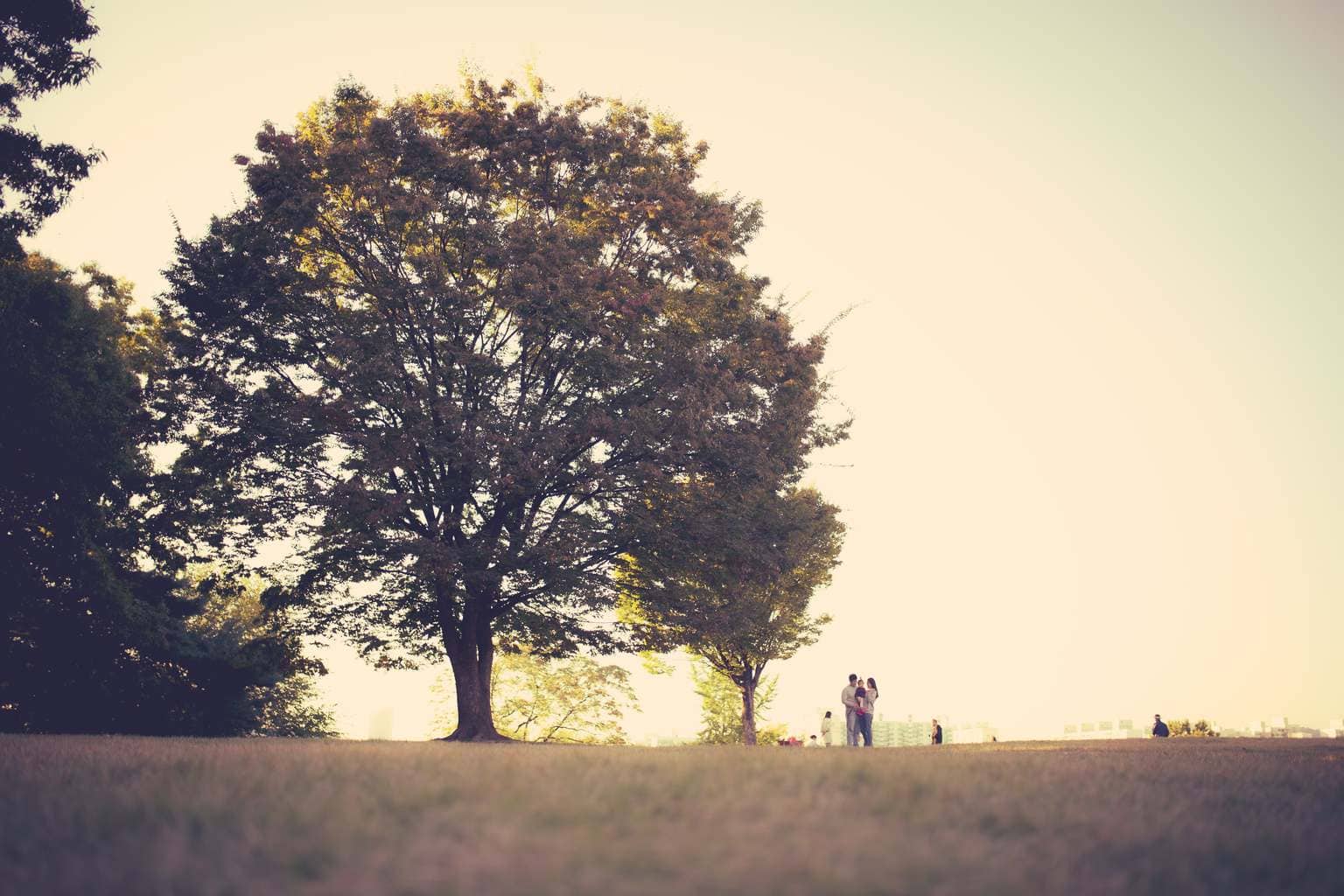
More unique things to do in Seoul include exploring the Olympic Park complex. Near the very end of the pink line (Mongchontoseong Station near the World Peace Gate), and one stop from Jamsil station is the sprawling Olympic Park or as the locals call it Olpark. It is a fantastic green space that is well maintained and spacious.
There are walking paths that loop around the large lawn where you can see families having picnics and lovers gazing at the city scape. The Seoul Olympic Museum of Art (SOMA) is a fun museum for any art enthusiast with outdoor artwork on display for the public as well. The towering sports domes are a great reminder of the 1988 Olympic Games. Concerts are also held all year round in these arenas.
The Peace Gate area is filled with rollerbladers and bike riders of all ages. And you can even hire a tandem bike and cycle your way around the park while sitting next to your better half. You can hire different bike sizes near Mongchongtoseong Station next to the northern part of Peace Gate (평화문).
Hire either 2 or 4 wheeled bikes that seat 2 to 6 people. A 4-wheel bike will cost you about $10 for 30 minutes and $15 for an hour. A normal bike is cheaper at around $4.
While Olympic Park is nice enough to visit at any time of the year, it is highly recommended to visit in the warmer months. As it is in an open area, the winter winds can make the visit unpleasant, especially after dark. The foliage at the Flower Garden is also better in Spring of course.
How to get to Olympic Park World Peace Gate entrance – Mongchontoseong Station (몽촌토성역) line 8 (pink) exit 1
How to get to Olympic Park Sports Centre – Olympic Park Station (올림픽공원역) line 5 (purple) exit 3.
Best things to do in Seocho-gu
The central and west areas below the Han River are usually not frequented by first-time tourists but they are home to a lot of the best things to do in Seoul.
This is also the financial heart of the city, so if you’re in finance, you’ll most likely be making a stop here. While there are better sites to explore if your time is limited, this area of Seoul is beautiful with activities for the entire family.
Explore Royal Tombs of the Joseon Dynasty
History buffs will want to visit UNESCO site the Royal Tombs of the Joseon Dynasty, also known as Seonjeongneung (a combination of Seolleung and Jeongneung). It’s a beautiful ode to Korea’s ancestors with large green spaces that make up the domed burial grounds and a tranquil setting for travelers to do some deep pondering.
Culture vultures thinking about what to do in Seoul should definitely consider this attraction as it’s usually one that visitors skip so you are going to see far less visitors than in other parts of the crowded city.
The tombs were built over five centuries between 1408 and 1966 and honor the memory and achievements of the ancestors. The area itself is a collection of 40 tombs spread out over 18 locations. Among the mounds and royal tombs there is also a shrine, shed, royal kitchen and guards’ house. It is a perfect display of the 5,000 year royal tomb architecture in Korea.
How to get to Seonjeongneung – Seolleung Station (선릉역) line 2 (green) and the Bundang line (yellow) exit 8 OR Seonjeongneung Station (선정릉역) line 9 (gold) and Bundang line (yellow) exit 3.
Wander through Seoul Arts Center
Seoul Arts Center is a large, multilevel exhibition space that houses everything from contemporary to calligraphy art and is one of the top Seoul attractions for art lovers.
You can explore any one of the five main buildings, where there is an Opera House with three auditoriums, a Music Hall with two concert halls, the Hangaram Art Museum, the Hangaram Design Museum and the Seoul Calligraphy Art Museum. It is home to the Korea National Ballet and National Opera among others. See here for more details.
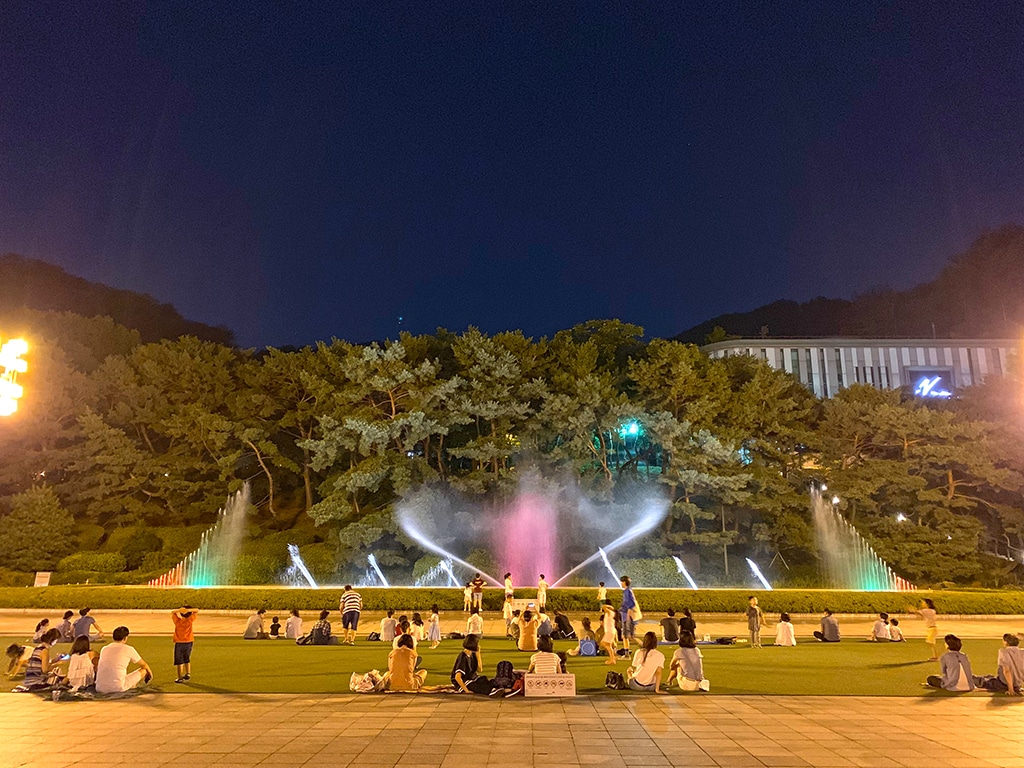
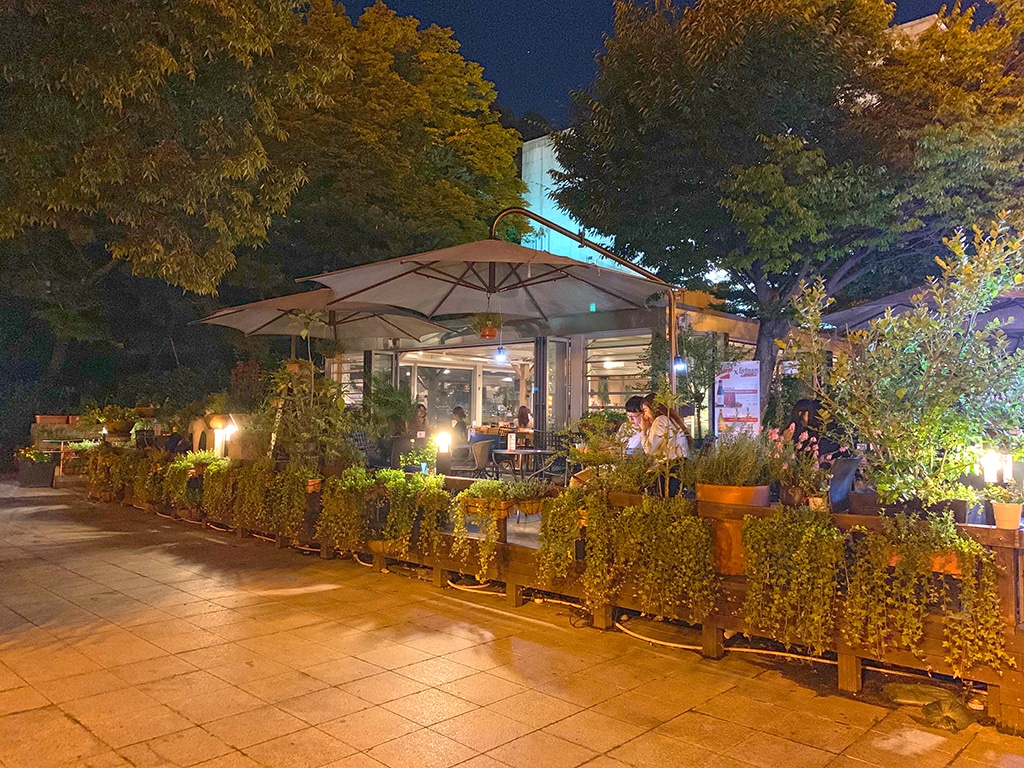
There’s also a fun hiking trail behind the Seoul Arts Center up Mt. Umyeonsan (우면산) where you can find a small temple called Daeseungsa (대승사) that also offers a templestay.
Tip: And if you want to escape the crowds and look at some art in a newly opened hidden space, visit Seoripul Gallery which is a tiny gallery in the underground pass from across the street near Coffee Bean and Tea Leaf. Koreans really know how to make every nook and cranny useful.
How to get to Seoul Arts Centre – Nambu Bus Terminal station (남부터미널역) line 3 (orange) exit 5, then first left and walk for about 10 minutes.
Things to do in Seoul’s southwest area
There are a few places to visit in Seoul in the southwest. As the financial centre, it’s mostly for those visiting on business. So this section is more for people who will be visiting the area for business and would like to pass an hour or two before their meeting.
Visit the Wall Street of Korea
One of the most interesting things to do in Seoul for those in Finance is visiting The Wall Street of Seoul, located in Yeouido, a tiny island on the west side of southern Seoul.
The previously largest building in Seoul, the 63 Building, has an exhibition area and cafe on the top floor called 63 Sky Art (US$13 for adults).
Aqua Planet 63 is also a fun day excursion for the entire family, admission fees here. You can also get discounted rates for a combo of both the observation deck and Aqua Planet by booking online here.
Frolic at Yeouido Hangang Park
Apart from being the financial centre, there is a very nice park (Yeouido Park) to check out along the banks of the Han River.
This video that went viral a few years back of a dancing skateboarder was shot in Yeouido Hangang Park, where you’ll notice the 63 building in the background.
How to get to 63 building – There are many options to get there, but the quickest is most likely from Saetgang Station (샛강역) line 9 (gold) with a free shuttle bus at exit 1 or buses 5633 and 5534 from exit 3. Or take a 1km stroll. After taking exit 3, make a u-turn and walk down Yeouidong-ro (여의동로) until you reach a split in the road, take 63-ro (63로) and you’ll finally arrive at the building.
How to get to Yeouido Park – Yeouinaru Station (여의나루역) line 5 (purple) exit 1 – Walk 10 minutes towards SBS TV Station OR Yeouido Station (여의도역) line 5 (purple) and line 9 (gold) Exit 3 – Walk 5 minutes towards the National Assembly building. Walk toward the Han River to find the ferry. Or look at our map.
Feel like you’re in France without leaving Seoul
When the French School of Seoul (Lycée français de Séoul) moved from Hannam-dong to Seocho-gu in 1985, it undoubtedly drew a lot of French people to the area. With this mass move of French families to the area, so the French neighborhood began to establish itself.
Many other international families also started to move into what is now called Seorae Village creating a cosmopolitan atmosphere with multinational families. Its location is super convenient as it’s really close to the Han River, Hangang River Park and Gangnam, so you can easily pop in for a croissant on your travels.
Due to its location in Gangnam, you can expect it to be quite modern and fancy. And of course, there are many charming European cafes to visit and soak in the atmosphere, pretending you’re strolling along the Champs-Élysées.
Even the chain Paris Croissant is a little different in Seorae Village Cafe Street, where the French patissier gets the wheat imported from Paris and breads are baked fresh daily. But don’t expect a massive spread with millions of French eateries, the emphasis should be on “little” in “Little France”. Come for half an hour in the morning for a fresh croissant if you want to escape the crowds.
If you’re up for it, Sebitseom on the Han River is about a 30min walk away. It’s a pretty, clean, safe and direct walk. You can even pop into Newcore Outlet and Kim’s Club if you’re up for a 10min detour to grab some sales.
How to get to Seorae Village: Express Bus Terminal Station (고속터미널역) line 3 (orange), 7 (olive green) & 9 (gold) exit 5. Cross the pedestrian overpass and walk into the alley. It should take no less than 10min.
Pet a rabbit at Montmartre Park
So what else can you do when visiting the French Village? Why not pop into Montmartre Park, a once wild forest that has been transformed into public park. While the park is super tiny and there are many better ones to visit in Seoul, this is a special one due to the furry friends that inhabit it.
Go grab a bottle of vino, a charcuterie and cheese platter and a mat from one of the stores in the French village and come picnic among the pine trees. You’re bound to pump into a few of the cutest little bunnies.
Hint: The bunnies like to forage among the trees away from the more open areas where the dogs are being walked. So head there to increase your chances of saying hi to Peter, Bugs and Roger.
How to get to Montmartre Park: Seocho Station (서초역) line 2 (green) exit 6. Walk straight for about 10mins and you will see the entrance to the park on your left. It is a bit of a climb to reach the top, but nothing too difficult.
Have an immersive Hallyu VR experience at KBS
If you want to combine VR with your Hallyu obsession, you can even have a KBS VR experience. Join the cast of your favorite KBS TV show or sit in the crowd of a K-pop concert, well, virtually of course. You can book your ticket online here.
Things to do in beyond the Gangnam Greater area
While there is little to do tourist-wise south of Gangnam, as it is mainly residential or mountainous, there are still a few Seoul attractions that may not be as popular, but are really great to experience local and off-the-beaten-path Seoul.
Cruise the Han River
Taking a cruise along the Han River provides a unique perspective of the city at a slower pace. While there are several docking points, the main ones are at Yeouido and Jamsil. Take the quicker Story Cruise (40mins) or Moonlight Cruise if you’re in a hurry or the longer Hangang River Tour Cruise/Music Cruise (90mins) for the full experience.
You can hop off at any of the stops on the longer cruise, but for the shorter ones, the ferry will return to the point of departure. Book in advance here to avoid disappointment.
For the most interactive experience on the Han River, you can combine a cruise with a performance and bakery lesson all in one. Pang is a show that was adapted from the Korean drama “King of Baking, Kim Takgu”, also known as “Bread, Love and Dreams”. It’s a mix of song, dance, drumming, and of course, baking where you get to munch of your pang (bread) after the show and fresh out the oven. Book your ticket online here.
Hike Gwanaksan and visit Gwaneumsa Temple
Apart from traversing Bukhansan or Namhansanseong in nearby Gyeonggi Province, you may want to scale Gwanaksan and visit Gwaneumsa Temple, a lesser known path for tourists. The rocky peaks of the 629m mountain will provide with a dose of Asian splendor.
This is one of the prettiest things to do in Seoul during Spring and you’ll get the most extraordinary cherry blossom surprise. See how to get there below.
How to get to Gwanaksan – Gwacheon Station (과천역) line 2 (light blue) exit 2. After ascending the escalator and exiting go straight to the second crosswalk on the left and cross the street. Walk to the next intersection where you will see a brown saying Gwanaksan 1km. Follow the signs (or the numerous Koreans in hiking attire) until you reach the entrance.
Visit a UNESCO-listed village and hike Namhansanseong
While not in Seoul but in Gyeonggi province, we highly recommend making a day visit to UNESCO-listed Namhansanseong in Gyeonggi-do for another beautiful attraction in Seoul. We have added it here to follow the hiking theme.
It really is a beautiful hike and Namhansanseong village is a wonderful little place to get lost in food and culture. Try the acorn jelly (도토리묵 – Dotorimuk), handmade tofu or soft tofu stew (순두부 찌개, sundubu-jjigae) and a bottle of makgeolli at Namhansanseong village after your hike.
Other things to do in Seoul, South Korea
You can’t leave Seoul without exploring some of the rich cultural aspects that makes Korea such a distinctive place. Try one of the following experiences in Seoul to complete your Korean journey.
Spend the day at a jjimjilbang (bathhouse) or have a 3am massage
There are a few very Korean activities that you should not miss before heading home and one of them is to hit the bathhouse, a must-see attraction in Seoul. Yet this is no ordinary Finnish sauna or Japanese onsen, the Koreans do things a bit differently.
Bathhouses in Korea are called jjimjilbang (찜질방) translated as heated room, and are places to cleanse the body and invigorate the mind.
They range from minimalist onsen style hot springs to the more elaborate versions like the completely crazy Dragon Hill Spa, filled with a variety of “spa zones” from the traditional charcoal kiln to the more opulent crystal sun salt room. There is even a sport complex, bodycare facilities, a cinema and games room and even an ice room. You can reserve your ticket to Dragon Hill here.
The place is open 24h and is filled to the brim in the middle of the night with local young couples laying in the common resting rooms cuddling, friends playing in the arcade or entire families eating. It is one of the most typical Korean things to do in Korea and an attraction in itself. And why not have a massage at 3am after all the shopping! You will be given a pajama-looking uniform to wear for the duration of your stay there.
There are usually noraebang (karaoke) rooms and unisex resting areas with TVs where couples and families, after the men and women have separated for their baths, return to have some relaxing family time.
All jjimjilbang have lockers with a key or keypad system so you can store your valuables with peace of mind. Expect people to walk around fully naked in the changing rooms. Save the hassle and time of getting a ticket in person by booking online before your visit here.
If you would prefer to visit other jjimjilbang in Seoul there are many options no matter which part of the city you are visiting. But for ease of access and convenience you can book your experience online. Get an amazing Myeongdong Mud Bath or have a women-only experience in Myeongdong
.
Treat yourself to a spa day
There are also lesser known brands providing quality spa services if you can’t splash out the cash for Sulwhasoo. Try The Belle Spa at the Plaza Hotel Seoul that has three different types of therapy available from facial to traditional bronze instruments. Or try The Belle Spa Experience
at Dongdaemun Hyundai City Outlet, down the road, that provide their signature Aroma Herbal Ball Care treatment which will have you smelling all kinds of great!
Take part in a Korean workshop
The best thing to do in Seoul if you’re a culture vulture is to take part in a workshop that can only be done in the country. The activities below are particularly good if it’s raining or absolutely freezing or boiling outside. These skills are also great to take home with you.
You can learn how to create perfume to complete your beauty experience. G.N perfume studio will guide in how to create your own perfume from a choice of 150 perfume bases and 20 natural flavors. Classes are in English, Japanese and Chinese and of course, you will get to take your unique fragrance home with you. Book your experience online here.
If you’re into clothing and accessories then why not spend an hour or two learning some useful skills. You can learn to dye your own Korean fabrics with this course, create your own tote bags and t-shirts here
or create some jewelry using the Korean alphabet here
.
If you’re hands on then you could possible take part in a traditional Korean pottery class here, or satisfy your tummy and sweet tooth by creating some delicious Korean dessert here
. If you’ve seen the show Nanta and always wanted to learn how to drum like the musicians, you can do so here
.
See a uniquely Korean show
You might not know it, but Korea loves the theater. All the major Broadway shows and operas have made their way into Korea, and have been adapted for an English speaking audience. There are many theaters around Seoul that cater for anything from opera to ballet, classical music to modern dance.
There are also some uniquely Korean shows where, after the success of Nanta mentioned above, they have mixed all types of theatrics with a specifically Korean edge. One show that follows in Nanta’s footsteps include Chef, which is an update to the largely successful Bibap and is a mix of breakdancing and bibimbap. More info and tickets are here.
The Painters is a spectacular mix of mime, music, comedy and dance where performers use art as a means of expression. This means that they use different art techniques to create a work of art in front of your very eyes. You can book your tickets here. There’s even a show about firemen
which combines acrobatics and stunts and is surprisingly entertaining!
Theater goers who want more of a cultural experience should try to watch a traditional music (gugak) performance. The Saturday Performance of Korean Music and Dance is a highly-rated show at the National Gugak Centre, which is joined to the Seoul Arts Centre, so it’s the perfect place to get a massive cultural fix. There is also a gugak performance in Jung-gu, Seoul Centre, called Sun & Moon
if you can’t make it to below the Han River. It’s at Kyunghang Art Hill (경향아트힐) which is in walking distance to all the major tourist sites like Myeongdong and Insadong, so it’s also a great addition to your central Seoul journey.
Continuing with cultural shows, you can learn a bit of history and culture while watching “The Palace: Tale of Jang Noksu'” at the Jeongdong Theater which is minutes away from Gwanghwamun. The tale follows the story of Jang Noksu who is known as Joseon’s dangerous Cinderella. There is art, dance and performance that will blow you away. Book your tickets here.
While all the shows mentioned previously rely on music or mime and have minimal dialogue, you may want something more dramatic. There are even shows Seoul in the Korean language that anyone can watch thanks to technology. Only You is an uplifting tale about love, told through the story of a couple who have been married for 37 years.
Finding Mr. Destiny is a musical that follows Ji-woo as she tries to find her first love Kim Jong-wook who she met years ago on a train to India. Love in the Rain
is also a musical, but this time about the reconciliation of two long-lost brothers. These shows come with subtitles on a tablet so you can follow the story just like you do when you watch your favorite Kdrama.
Explore the buzzing Noryangjin Fish Market
Visiting a market is one of the top things to do in Seoul to experience culture like a local. Noryangjin Fish Market, like the name suggests sells fish and seafood of all kinds. Even though restaurateurs and the public come here to purchase fresh seafood in bulk, you can also sit down and have a bite to eat.
The top pick includes Korean style sashimi, known as hwe or sliced raw fish. It is not the usual salmon or tuna varieties found in western sushi restaurants. It comes in large quantities with side dishes and usually a broth made with the leftovers. You can even have live octopus “sashimi” (산낙지, san nakji) if that’s your poison.
The process you will follow is to select your food from any one of the vendors. Choose what you want to eat and negotiate a price after the item has been weighed. Then head over to one of the restaurants on the second and basement floors to have the fish prepared for you. You will have to pay separately for preparation.
The market is open all day long with an auction being held at 3am for the best catches of the day.
Chomp away at Garak Wholesale Food Market
Garak Wholesale Food Market is like Noryangjin, except that it sells much more than just fish. It is a sort of wholesale farmer’s market where you can find fresh produce of all kinds. For fresh fish, it is the less touristy option with prices usually being lower than Noryangjin.
You can also find some good meat at great prices here. As it is more for locals, it’s a good idea to bring a Korean friend along to haggle down the prices.
How to get to Noryangjin station (노량진역) lines 1 (dark blue) and 9 (gold) exit 1.
How to get to Garak Market Station (가락시장역) lines 3 (orange) and 8 (pink) exit 1 or 2 – walk for a few hundred meters behind the large building and gigantic statue of the man planting seeds.
Visit an animal cafe
Just like Tokyo, Seoul has its fair share of animal cafes. While having one’s own pet is on the rise in Seoul (almost no one had a dog when I first moved here in 2009), there are still plenty of cute spaces to say hi to animals of all kinds.
We mentioned Thanks Nature Cafe in Hongdae as a separate activity if you wanted to pet a sheep, but did you know there are racoon cafes?
Here is a list of some of the best animal cafes in Seoul you can visit on your trip. While there are meerkat cafes and the like, we don’t like to advertise these kinds of places as we have heard some negative reviews. And while we will try to keep this list updated, please remember that cafes often have a short life span in Seoul, so it is advisable to check that they are still functioning before you visit:
- Bau House small & big dog cafe
- Blind Alley racoon cafe
- Goyangi Noriteo cat cafe
- Koopet amphibians and reptiles
- Godabang cat cafe (beware, their Insta account is almost too cute!)
Go on a wine train
Wine, in Korea? Yup, wine is fast becoming a much sought-after alcohol in the country. The winemaking is still fairly new in Korea, there is a designated area in the middle of the country called Yeongdong, where it is growing in popularity.
Your journey begins at Seoul Station, where you’re whisked away on a 2.5hr train journey to the middle of the country at a place called Chateau Mani. The train ride is by no means boring as there is a constant flow of wine and food with a side of vibrant entertainment. It’s also a great way to see the beautiful countryside.
There is also an English-speaking cart and Korean-speaking cart, so make sure you book the right one.
The vines are grown on what was originally a persimmon plantation. The warmer temperatures combined with the nutrient-rich soil actually produce some great grapes in a number of different varietals.
And once you get to the winery, there are great opportunities for some Insta shots as well as a wine foot spa (only in Korea). Start with immersing your feet in the bubbling warm rose, then move on through to the muscat and then dip them into the cab.
Contact Chateau Mani on their website here to book a train ride.
Play screen golf
Whether you love golf or don’t care for it, this is one of the funnest activities in Seoul to pass an hour or two. It’s sort of the same concept as a noraebang (singing room) except you trade your mic for a golf club.
You hire a room with a large screen where you can whack a ball into. The speed and force of the ball is measured once it hits the screen. It’s a super fun thing to do in Seoul or anywhere in Korea with a bunch of friends, especially after a beer or two, which are served in the room.
Take a stroll along the Han River
If you have a few hours to pass, it is highly recommend to take a stroll along the Han River.
Whether you are with kids, solo or with your better half, walking along the river conjures up a feeling of romance and calm as you peer into the vast space that is a nice break from the towering buildings and mountains.
You can start anywhere and walk to anywhere to pass the time and people watch. Apart from Seoul Forest and Yeouido park mentioned above, there are plenty of places to stop at, both north and south of the river, including Sebit floating island, the parks in the Sangam area near World Cup Stadium in Mapo (like Hanuel (Sky) Park) and the outdoor activity areas at Ttukseom station (including water sports, swimming pools in summer, rubber tubing in winter and skate parks).
Strolling along the calm waters is one of my favorite places to visit in Seoul.
If you do decide to go and are on a tight schedule, have an escape plan and understand where your nearest subway stations will be, as you may end up very far from one (although there are taxis and buses everywhere if you do get lost). If you don’t have a plan, go get lost a bit, stroll into Gyeonggi-do, make a new friend.
There are buses everywhere, it is extremely safe and there are convenience stores even along the river. In fact South Korea is a pretty safe country in general, no matter where you visit.
Take part in a food tour in Seoul
You can stay in Seoul your entire life and never come close to eating at all the restaurants. It seems at times that there are as many eateries as there are people and eating is one of the most popular attractions in Seoul. Eating is therefore not really about going to a specific restaurant, but rather about trying all the different food options there are.
While there are internationally famous restaurants, they are not necessarily the best options. The tastiest food often comes from following the crowds. If the restaurant is busy or there is a long queue, the food is most likely good because Koreans are very particular about taste and it is a very on-trend culture.
Restaurants in Seoul are also often clustered together over the space of a few blocks. Find these areas and take a look around. If there’s something that looks interesting and busy, pop in.
Combine a market tour with a cooking class near Anguk from an experienced Korean chef here. Vegetarians and vegans rejoice in a Vegan and Vegetarian Market Food Guided Tour in Seoul. Book online here
. Or just learn to make kimchi and tteokbokkie from a veteran cook here
.
Take a Korean cooking class
If you’d like to take the taste of Korea home with you, it is highly recommended to take a Korean cooking class, or even just a kimchi making class. Try OME Cooking Lab as they are one of the top cooking schools for foreigners and provide several courses depending on your preferences. You can try their traditional food cooking course which is combined with a visit to Gyeongdong Market, known for its traditional medicinal produce.
This course provides an insight into the tradition and culture of Korean food detailed, step-by-step instructions from an English-speaking guide who is also a professional Korean chef. This course can be booked online here.
One final course you should look at attending if you love the infamous Korean spiced fermented cabbage is taking a kimchi course through Seoul Kimchi Academy. You will also learn some interesting cultural facts about the Korean staple and you’ll get to try on hanbok for some IG #OOTD shots. This course can also be booked online here.
Go on a tour and with a local
The best way to learn about a country that you may not learn on your own is to visit with a local. If you can’t befriend a Korean, your next best option is to book a tour. There are plenty of tours available online from this 4 hour tour of all the most famous sites and areas (including shopping of course) of Seoul with a Korean buddy to a bicycle tour
that is probably best in Spring or Fall.
Do it at a slower pace with a walking tour of all the most beautiful sights and historical landmarks of Seoul like Changdeokgung Palace and Insadong to Gyeongbokgung Palace and Gwanghwamun. Book it online here.
If you’re a younger traveler and looking for something a bit more on the fun side why not join a pub crawl in party central Hongdae and multicultural Itaewon. Play some beer pong and find out all about somek (soju+beer) on this vibrant experience of Korean nightlife. Book online pub crawl.
Best time to visit Seoul
Seoul has four very distinct seasons. Fall and Spring come and go in a flash, but are definitely the best times to visit due to the milder temperatures and beauty of the changing foliage.
In Spring you’ll get the cherry blossoms along with the blooming flowers and greenery all over the city. Spring is officially between March and May.
One of the most beautiful things to do in Seoul during Autumn is to watch the changing of the leaves on the mountains, it’s also the perfect time for travelers expecting to hike.
While Autumn is officially between September and November, the temperature does change quickly and drastically. You could be wearing shorts in the beginning of October and a goose down jacket by the end of the month.
Although these are the best times to visit, they can be more crowded with prices for hotels increasing.
Summer and Winter temperatures visit extremes between 35 above and as low as 20 below 0 (celsius). Summer is also known to be the rainy season with harsh downpours amid humid temperatures. It is recommended to make a trip to Jeju, Busan or one of the many different islands in summer.
Winter is great for skiing and snowboarding, but you will have to venture out of Seoul for this. Christmas in Seoul is quite magical though, with a feeling of romance, love and, well, sales.
Insider tip: Avoid the Harvest Festival Chuseok (in September/October) and Lunar New Year Seollal (January/February) as the entire country is on holiday and trains/buses to different cities become almost impossible to find and many businesses are closed.
Where to stay in Seoul
We have written an extensive article on the best places to stay in Seoul. Check it out here and get all the information on the most luxurious places to stay in Seoul including a more in depth description of how the city is laid out.
Check out this list of our top luxury hotels in Seoul first:
Hotel District Price More photos and availability
Four Seasons Jongno-gu US$290 Booking.com | Agoda
JW Marriott Dongdaemun Seoul Square Jongno-gu US$225 Booking.com | Agoda
JW Marriott Dongdaemun Seoul Square Jongno-gu US$380 Booking.com | Agoda
The Shilla Jung-gu US$240 Booking.com | Agoda
Lotte Hotel Seoul Jung-gu US$180 Booking.com | Agoda
The Westin Chosun Jung-gu US$274 Booking.com | Agoda
The Plaza - Autograph Collection Jung-gu US$250 Booking.com | Agoda
Millennium Hilton Seoul Jung-gu US$230 Booking.com | Agoda
Banyan Tree Club & Spa Seoul Jung-gu US$550 Booking.com | Agoda
Grand Ambassador Seoul associated with Pullman Jung-gu US$165 Booking.com | Agoda
L'Escape Hotel Jung-gu US$200 Booking.com | Agoda
Lotte Hotel Seoul Executive Tower Jung-gu US$325 Booking.com
| Agoda
Novotel Ambassador Seoul Dongdaemun Hotels & Residences Jung-gu US$190 Booking.com | Agoda
Intercontinental COEX Gangnam-gu US$164 Booking.com | Agoda
Park Hyatt Gangnam-gu US$345 Booking.com | Agoda
Imperial Palace Seoul Gangnam-gu US$390 Booking.com | Agoda
Le Meridien Seoul Gangnam-gu US$260 Booking.com | Agoda
Lotte World Hotel Songpa-gu US$140 Booking.com | Agoda
Signiel Seoul Songpa-gu US$415 Booking.com | Agoda
JW Marriott Hotel Seoul Seocho-gu US$285 Booking.com | Agoda
Vista Walkerhill Seoul Gwangjin-gu US$260 Booking.com | Agoda
GLAD Hotel Yeongdeungpo-gu (Yeouido) US$90 Booking.com | Agoda
The Conrad Yeongdeungpo-gu (Yeouido) US$190 Booking.com | Agoda
Grand Hyatt Yongsan-gu US$225 Booking.com | Agoda
Grand Mercure Ambassador Hotel and Residences Seoul Yongsan Yongsan-gu US$220 Booking.com | Agoda
ibis Styles Ambassador Seoul Yongsan Yongsan-gu US$140 Booking.com | Agoda
Novotel Suites Ambassador Seoul Yongsan Yongsan-gu US$175 Booking.com | Agoda
RYSE Hotel - Autograph Collection Marriott Mapo-gu US$209 Booking.com | Agoda
Walkerhill Douglas House Gwangjin-gu US$275 Booking.com | Agoda
Courtyard by Marriott Seoul Botanic Park Gangseo-gu US$145 Booking.com | Agoda
How to get around Seoul
The public transportation system in Seoul is one of the top in the world. Transportation is efficient, cost-effective, clean and runs regularly. For convenience, the Seoul Metro is your best option. While it may take quicker by bus, some of the buses (especially the city or Maeul bus) only have information in Korean, so it is a bit easier to get lost.
Seoul Subway App: Download the Seoul subway app on iTunes or Google Play which is constantly being updated and times your trip. Pick your departure and destination stations and it will tell you exactly how long your ride will take, the best route, how many stops and transfers, and which cart and door you should stand at to transfer quickest. Keep in mind that the transfer carts will be the fullest as everyone is rushing in Seoul. So anything to save a minute, even if that means crowding around a door when other carts are unoccupied. The app also has the Busan Subway map on it. A map of the Seoul subway system can be found here.
i Tour Seoul App: We have not officially tested this new app thoroughly, but it seems to be quite helpful for tourists with top ten lists, integrated TripAdvisor ratings, maps and other info like transportation. Get it on iTunes or Google Play.
Useful Korean phrases
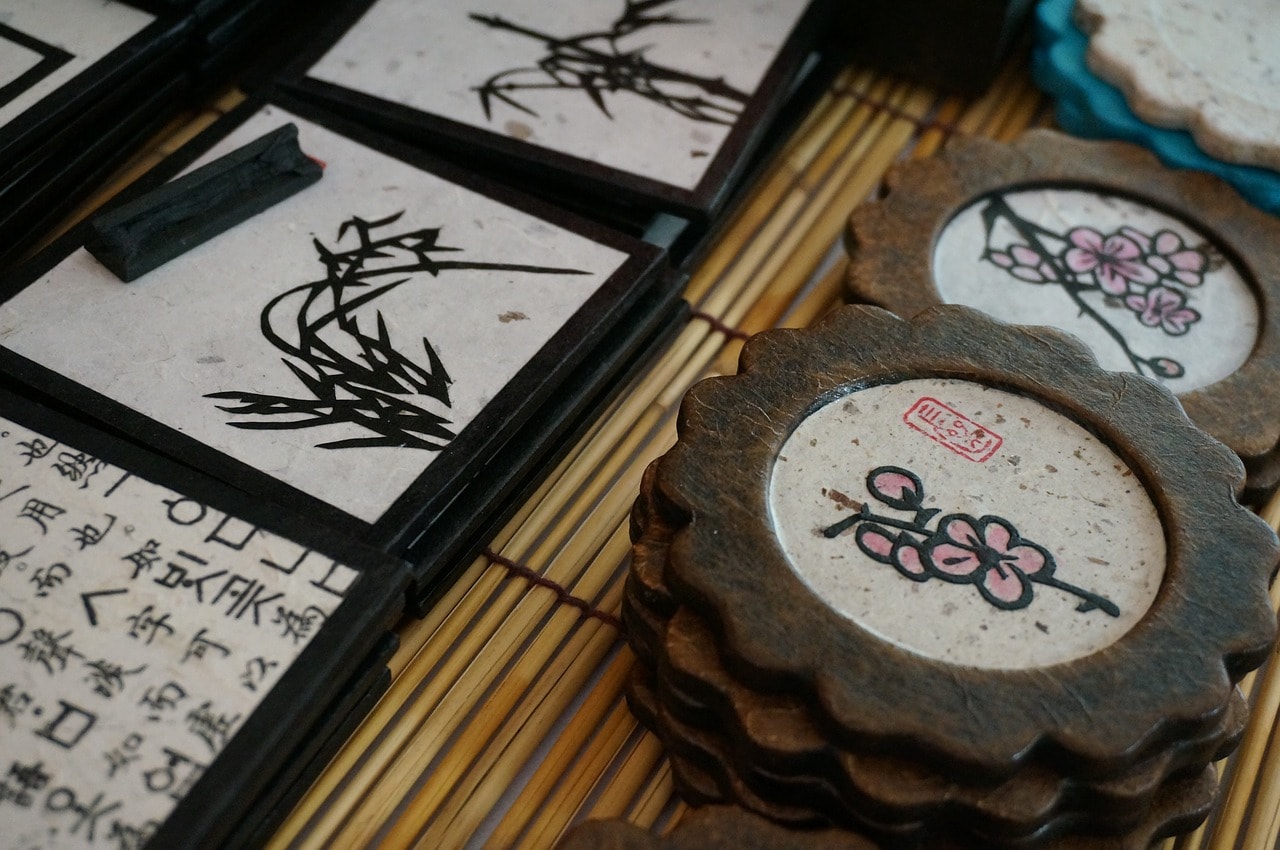
Hello (to someone older than you or in business – formal): Annyeong haseyo | 안녕하세요
Hello (same age or younger – informal): Annyeong | 안녕
Thank you: Kamsahamnida | 감사합니다
Yes: Ne | 네, although you may here the more informal Ye | 예
No: Aniyo | 아니요
Goodbye (to person leaving): Annyeonghi gaseyo | 안녕히 가세요 – literally “go in peace”
Goodbye (to person staying): Annyeonghi gyeseyo | 안녕히 계세요 – literally “stay in peace”
Goodbye (informal): Annyeong | 안녕
Excuse me (getting attention): Sillyehamnida | 실례합니다
I’m sorry (i.e. bumping into someone): Chwesonghamnida | 죄송합니다
Is there someone here who speaks English?: Yeogi-e yeong-eoreul hasineun bun gyesimnikka? | 여기에 영어를 하시는 분 계십니까?
Where is…?: … Eodiyeyo? | 어디예요?
Toilet/bathroom: Hwajangshil | 화장실
Is there a bathroom: Hwajangshil isseoyo? | 화장실 있어요?
Left/Right: Whenchog/Oluenchog 왼쪽/오른쪽
Help!: Dowajullaeyo! | 도와줄래요
Cheers!: Geonbae! | 건배 or Jan | 짠 (the clinking sound of the glassin s)
Welcome: Eoseo oseyo | 어서 오세요 – when coming into a store
Give me: Juseyo | 주세요, which can be combined with anything, i.e. Give me beer is mekju juseyo, give me 1,000 won is cheon won juseyo.
More please: Doh juseyo | 더주세요
Discount: Kaka juseyo | 깎아 주세요
1,000 Won: Cheon won
10,000 Won: Man won
100,000 Won: Ship man won
1,000,000 Won: Baek man won
In a restaurant: If you go to a restaurant and want the waiter’s attention, just shout “chogiyo!” | 저기요. It is not considered rude, but rather a way of getting the person’s attention. It means something like “over here!”. There is also usually a little button that you can press to call a server.
Subway and station: The subway in general is known as jihachul (지하철) and a specific station is yeok (역). So Gangnam Station is Gangnam Yeok (강남역).
Other things to know about travel in Seoul
Here are few more things that will help with your trip and visiting all the best things to do in Seoul.
Getting from the airport into the city
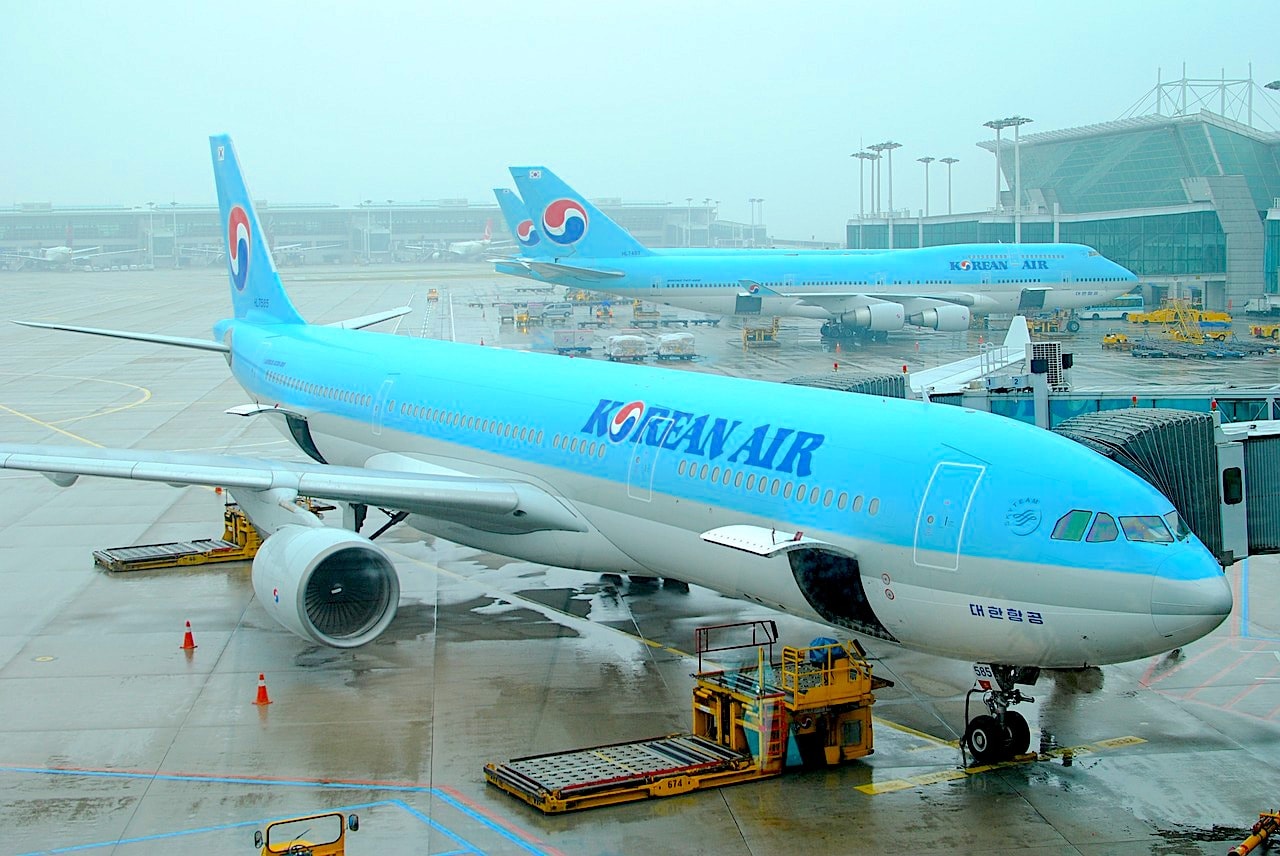
Landing in a new place where locals don’t speak your language can be daunting. And many people might think that taking a taxi is the most convenient and stress-free of getting from the airport to the hotel. While this may be true in some countries, Seoul is quite different and the taxi from the airport can cost upwards of $200 each way.
Taxis are great when moving around the city, but when the preferred transport from the airport is to take a bus, known as an airport limousine. The name is suited as it is a comfortable ride in large business class reclining airplane seating.
The bus also has its own lane occasionally, so it can drive right through the traffic, another major issue with any trip from Seoul to the airport and once which you should not underestimate. Even if you have the money to pay for a taxi, the bus will ensure you do not miss the plane, trust us on this one.
Also, most buses have wifi, but you will need a local sim card to log on as you will need to fill in a username and password. If you do need wifi on the ride, talk to a sales clerk or someone at information before the ride. Rides are usually between $15-$30 depending on where your final stop will be.
The bus also stops at or near all the major hotels. So you can always combine the bus ride with the metro or a taxi. Chat to the friendly, albeit shy information clerks to find out exactly which bus to catch. And don’t worry, when you arrive at your destination, the bus driver will announce it (in Korean) on the microphone, so you can sleep in peace.
You could also choose to take the train/subway all the way to your destination, but this is not advised if you are carrying heavy luggage, as transfers between some subway lines can be very long and confusing. Rush hour anywhere in the centre of Seoul and Gangnam is to be avoided if you are carrying luggage.
Book your KAL Limousine Bus ticket to several different area online here. If you do need additional privacy, hire a private driver from Incheon to Seoul and back here
, or even a luxury personalised transport here
.
And when you’re leaving Seoul you can book a space at one of the Incheon International Airport’s lounges which includes the Matina Lounge, the Sky Hub Lounge, the SPC Lounge and others. For more information and to make a reservation, click this link.
Visas
Many countries can enter South Korea without having to first obtain a visa. Depending on your country, the visa can be anywhere between 30 and 90 days. Canadian citizens can stay for a total of 180 days. Please check this updated list before going.
Here is one thing you should know about extending your visa from 30 to 90 days. I found out the hard way that while this is true, it cannot be done within the country after arrival unless it is a dire situation, like sickness in the family. Even then it is a long process that requires much documentation.
I was denied even though my wife’s grandmother was in hospital for an operation and we had all the supporting documents. I hopped over to Taiwan and entered again on a 30 day visa.
If you think you will need additional time in South Korea, visit the embassy in your home country to apply for an extension with supporting documentation.
Internet connectivity
South Korea, and in extension Seoul, has the fastest internet in the world. Not only is it the fastest, it is omnipresent throughout the city and even in the subways. The Wifi on the public transportation usually requires that you are part of a network like Olleh, SK, or KT. You will need sign-in credentials in order to connect.
While you can always pop into a coffee shop for free internet, it is recommended that you purchase a SIM card or pocket Wifi if you will need constant internet. KT is a great option and you can reserve your pocket Wifi with unlimited data online here. You can choose different packages for trips of varying lengths with 1, 5, 10 and 30 day options. The SIM is easy to collect from Incheon on arrival.
Currency and money exchange in Seoul
The currency of South Korea is the Won (KRW / ₩) where ₩1,000 is equal to about US$1. While cash is always a good idea to have, especially in markets, most places take credit card. The best place to exchange money is in Myeong-dong. See the section above on Myeong-dong or the map for directions to the money changers with the best rates. Exchange rates at the airport are very high. Banks are another place to exchange money in Seoul that offer competitive rates.
There are also ATMs throughout the city, but only select ATMs take international credit cards. You will have to look out for the “Global Services” sign and the Visa/Mastercard logos. The major banks like KEB Hanabank, Shinhan and Citibank will usually have services in English and Chinese with touch screen technology.
Like any international, make sure to let your bank know your travel dates and destination so that they do not freeze your card.
Ultra Fine Dust (미세먼지/Misae Monjee)
There is an increasing environmental issue in Seoul known a ultra fine dust which isa form of air pollution of fine particals caused by mostly exhaust fumes from internal-combustion engines, smoke from factory chimneys etc. This comes both from inside Korea as well as externally from smog blowing in from China and is aggravated by yellow dust from the Mongolian desert.
Winter sees a particular increase in fine dust and the government issues warnings when is exceeds a certain threshold. Inhaling the dust which may contain heavy metals is no doubt bad for the health and can enter the respiratory system resulting in respiratory diseases, stroke and cardiovascular diseases.
It is therefore imperative to follow the ultra fine dust warnings and to purchase a mask if you need to travel outdoors. You can buy a mask from any pharmacy, which are all around the city and are as ubiquitous as convenience stores.
Discover Seoul Pass
To get the best out of Seoul as a tourist, you should consider purchasing a Discover Seoul Pass. They now have both a physical card version and a mobile app option. Register online for the pass, select a pickup location and 24h, 48h and 72h options and then pick it up either from Incheon International Airport or Myeongdong’s Tourist Information Center. Credit card and Paypal is accepted. Purchase your pass here which also offers an additional discount on the Pass.
The app offers free entry to many tourist hotspots, up to 75% off on select destinations and has a built in T-Money function. This is a must purchase if you’re planning on visiting the top Seoul attractions. Prices are 24h (₩39,900), 48h (₩55,000) and 72h (₩70,000).
Don’t forget to Pin this article for your trip to #Seoul!
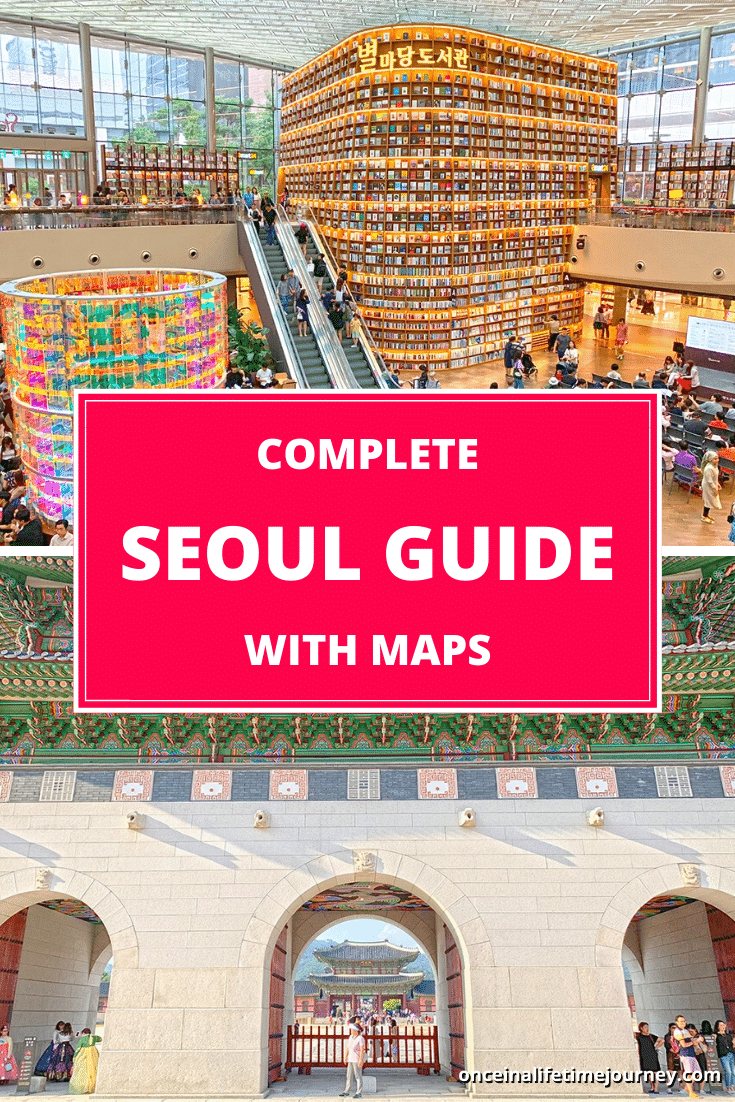
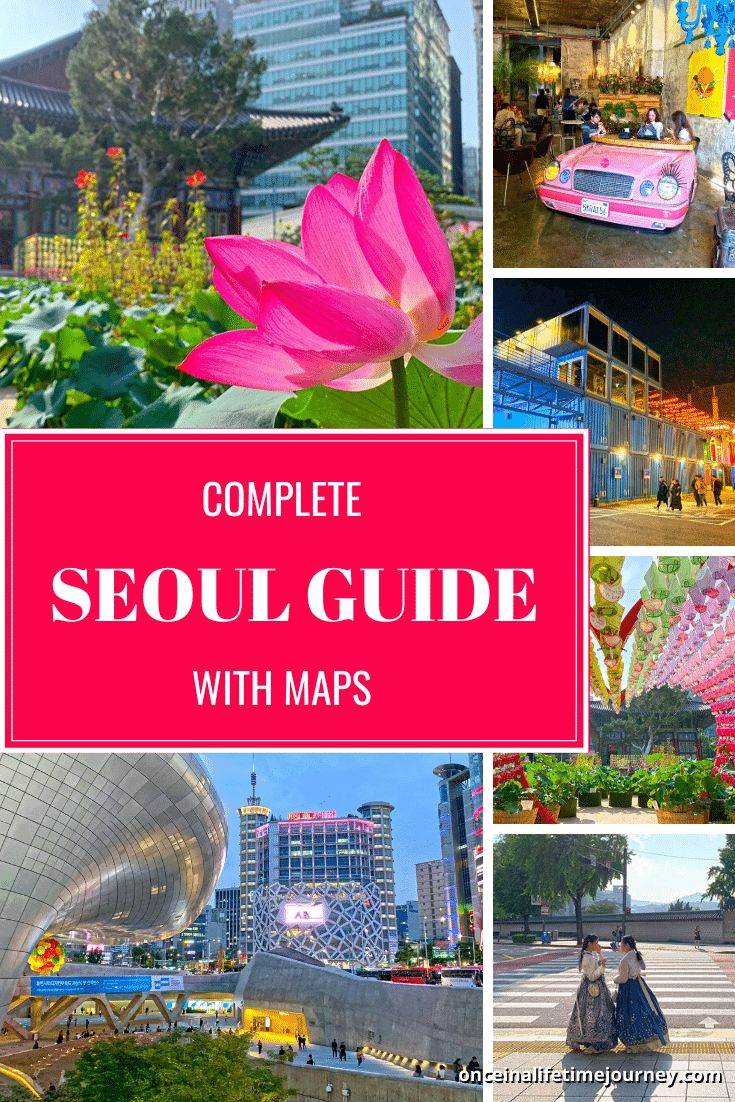
- Check if you need a visa, get help processing it at iVisa.
- Never ever leave without travel insurance. Get affordable coverage from World Nomads or long term insurance from Safety Wing.
- I find all of my flights on KAYAK. Check their Deals section too.
- Search for all your transportation between destinations on the trusted travel booking platform Bookaway.
- I book all my day trips and tours via GetYourGuide, they are the best and their tours are refundable up to 24h in advance.
- Get USD35 off your first booking with Airbnb.
- Compare hotels EVERYWHERE at HotelsCombined and book with Booking.com.
- Compare car rental prices at Rentalcars.com

